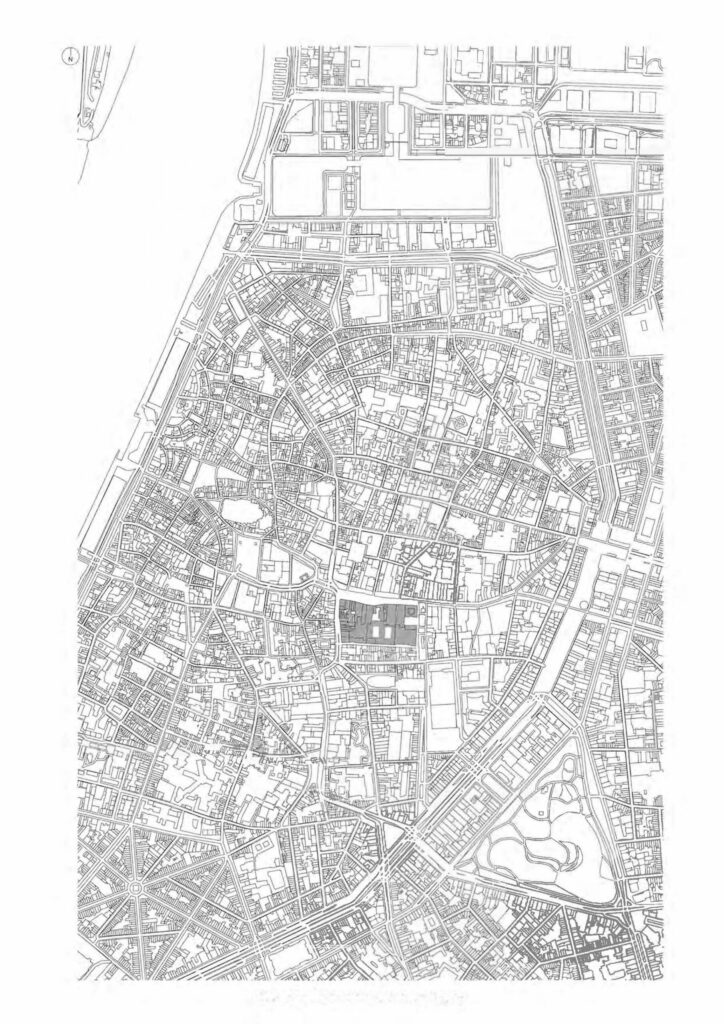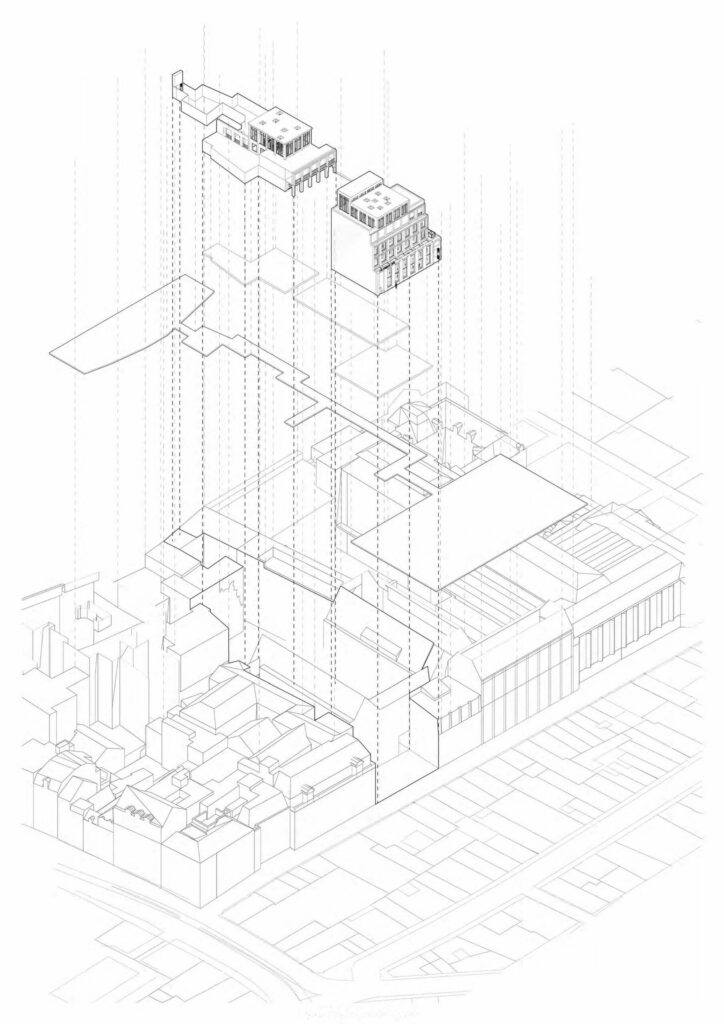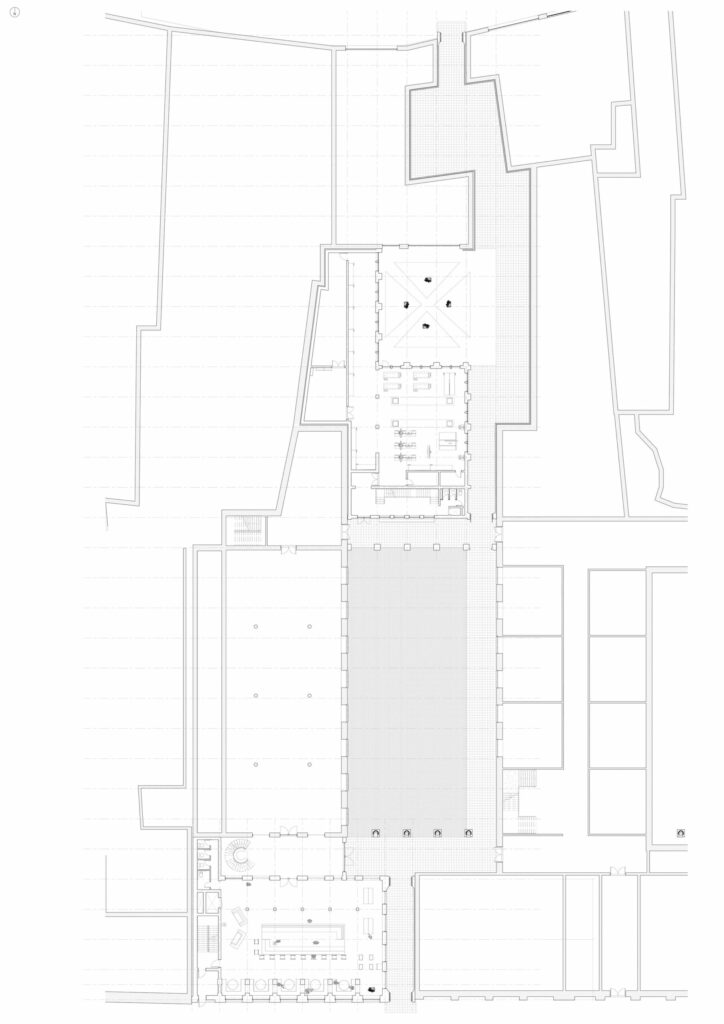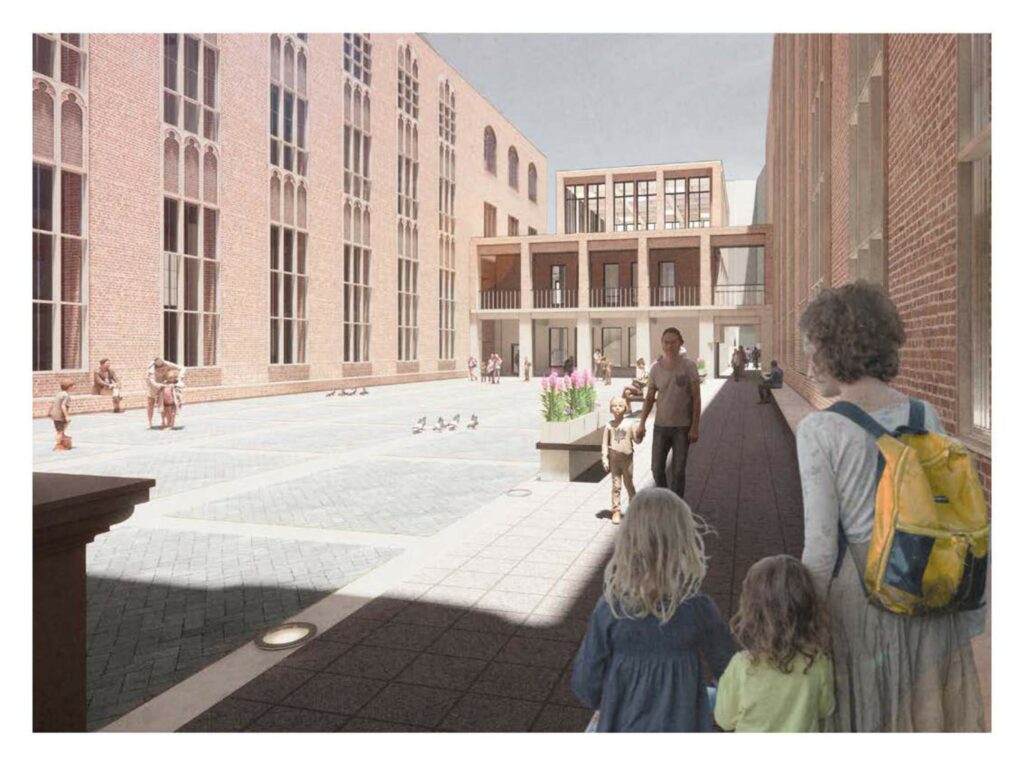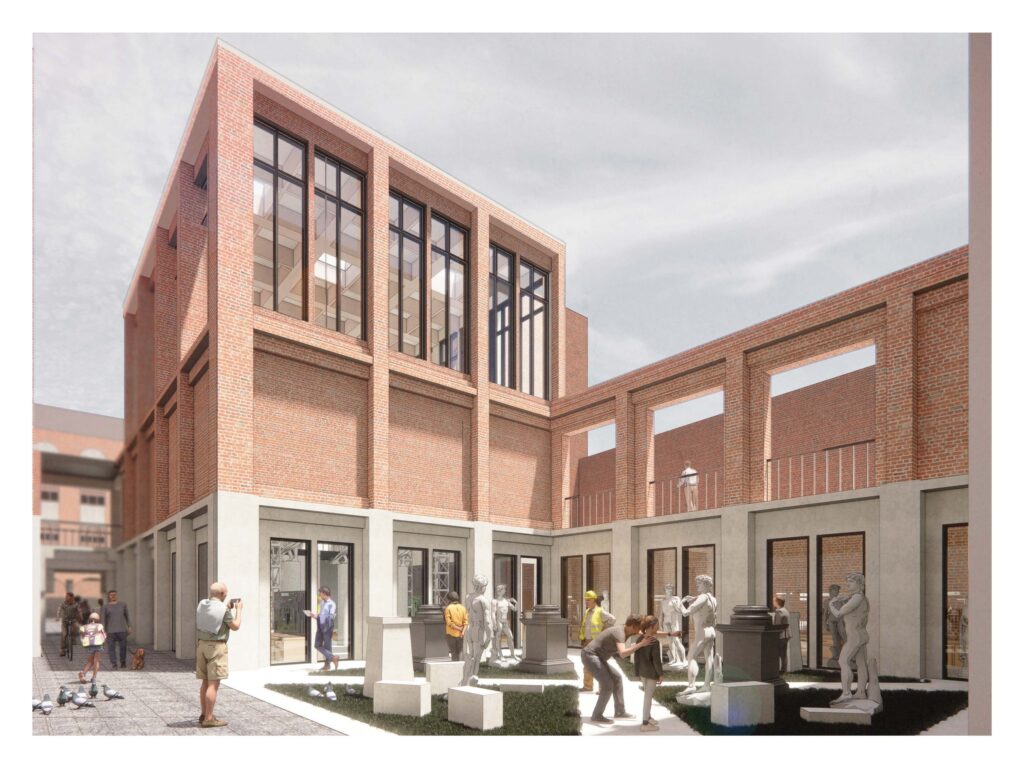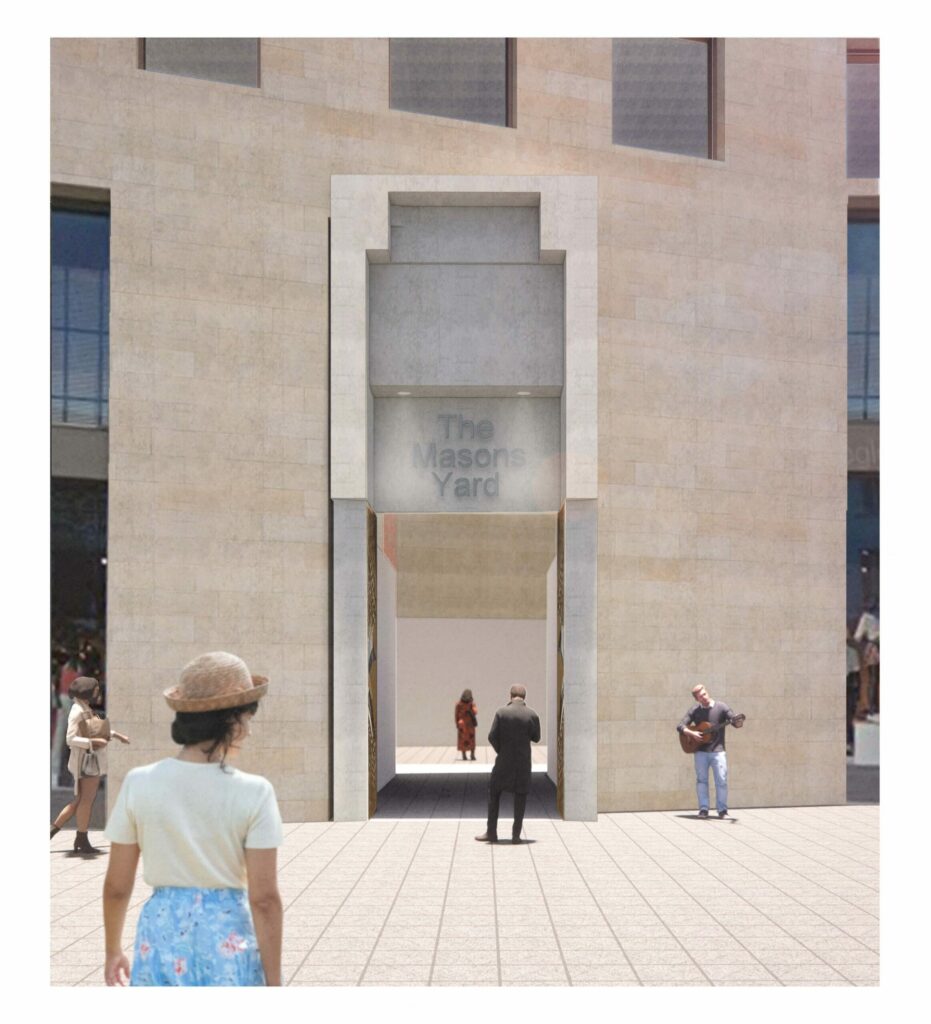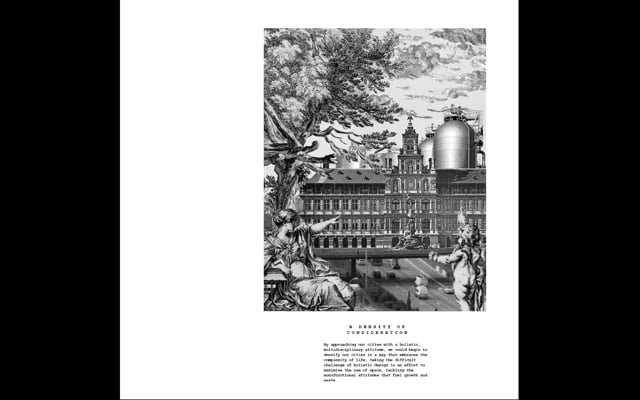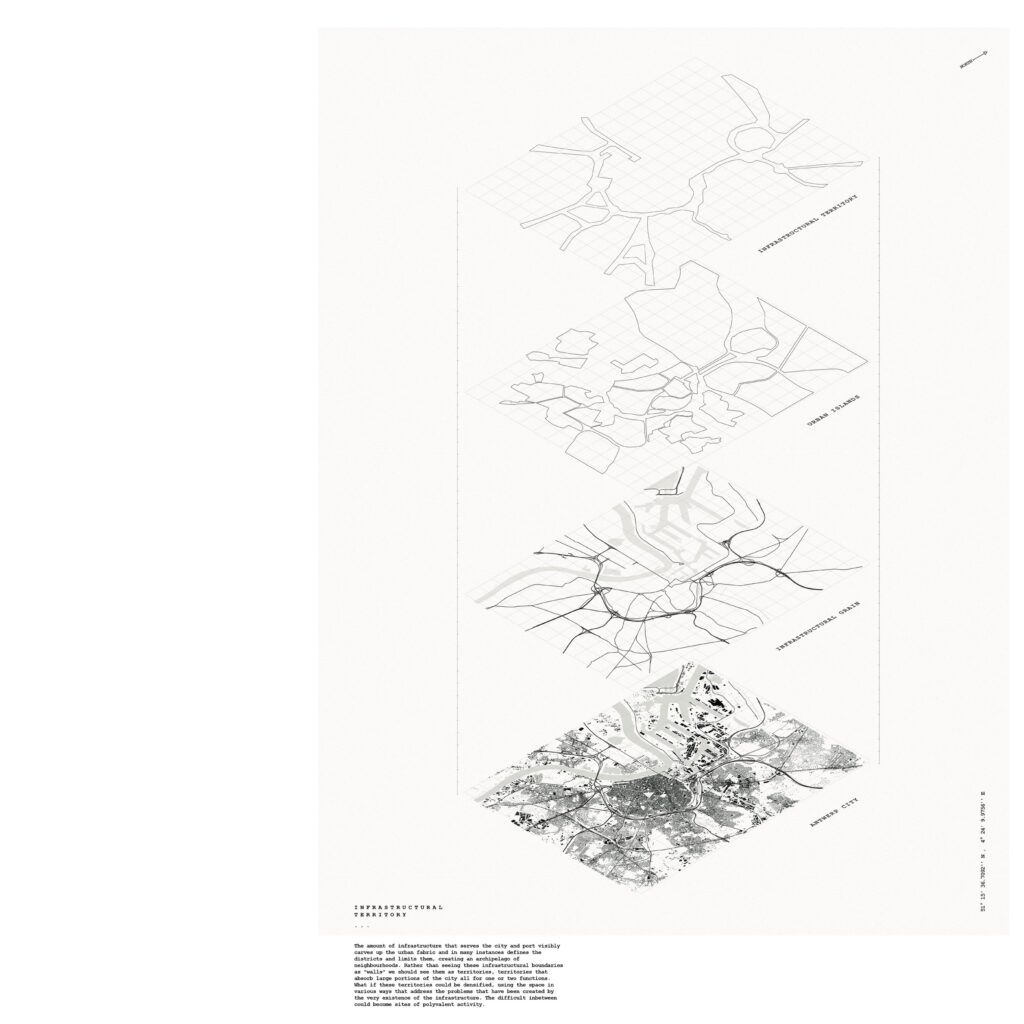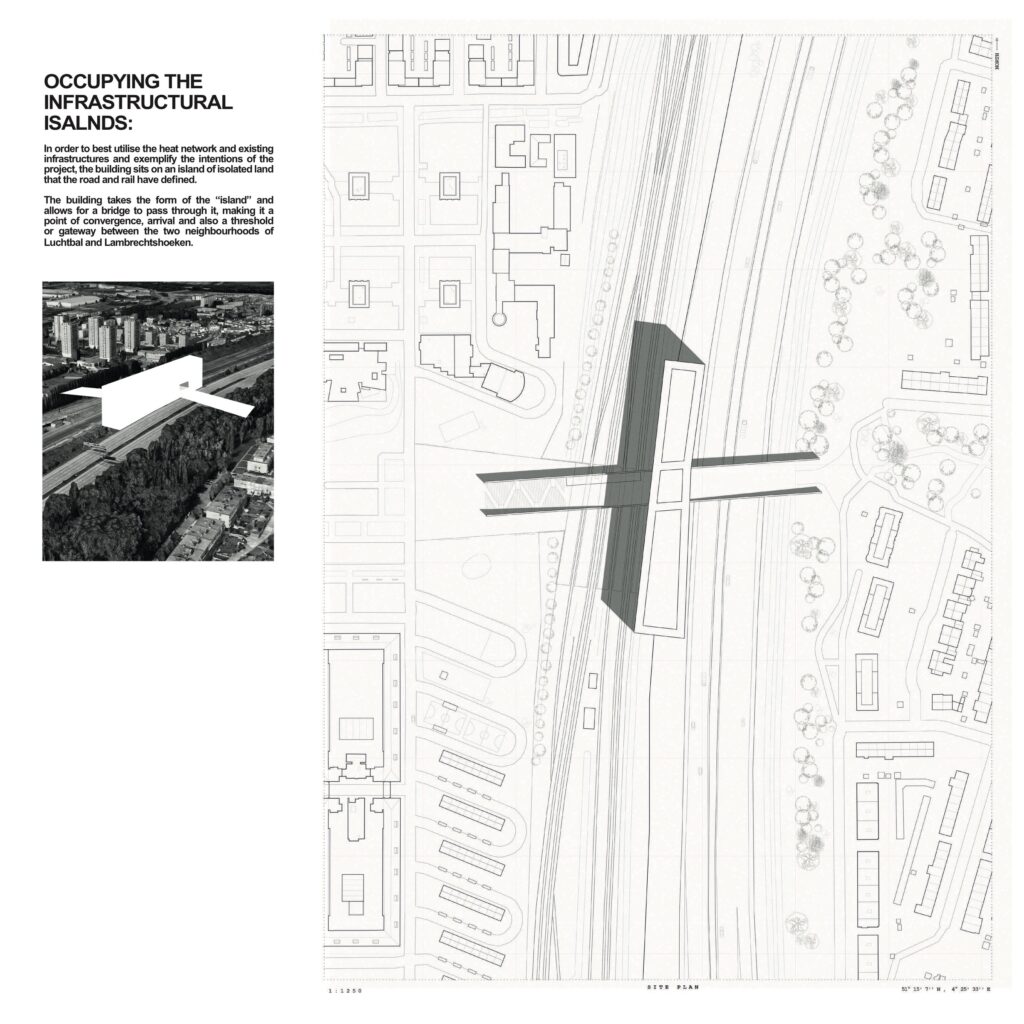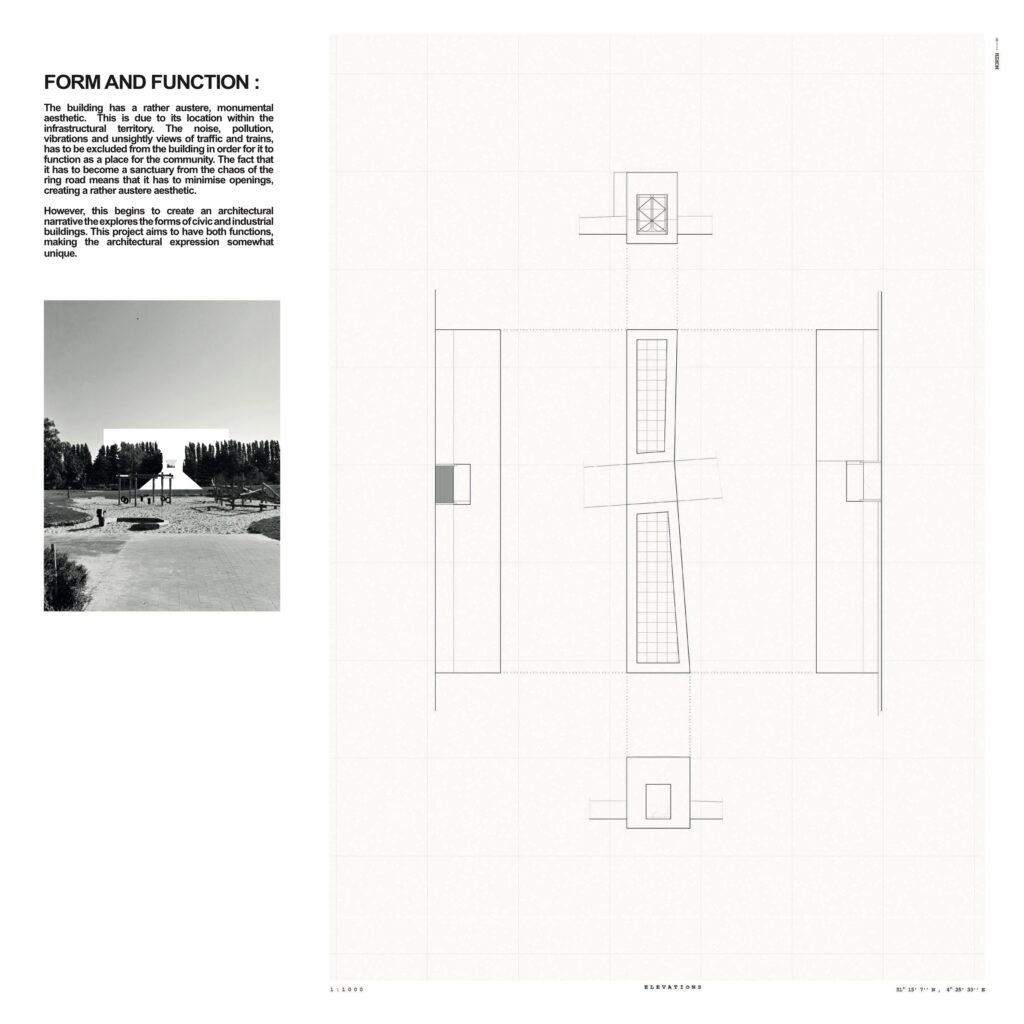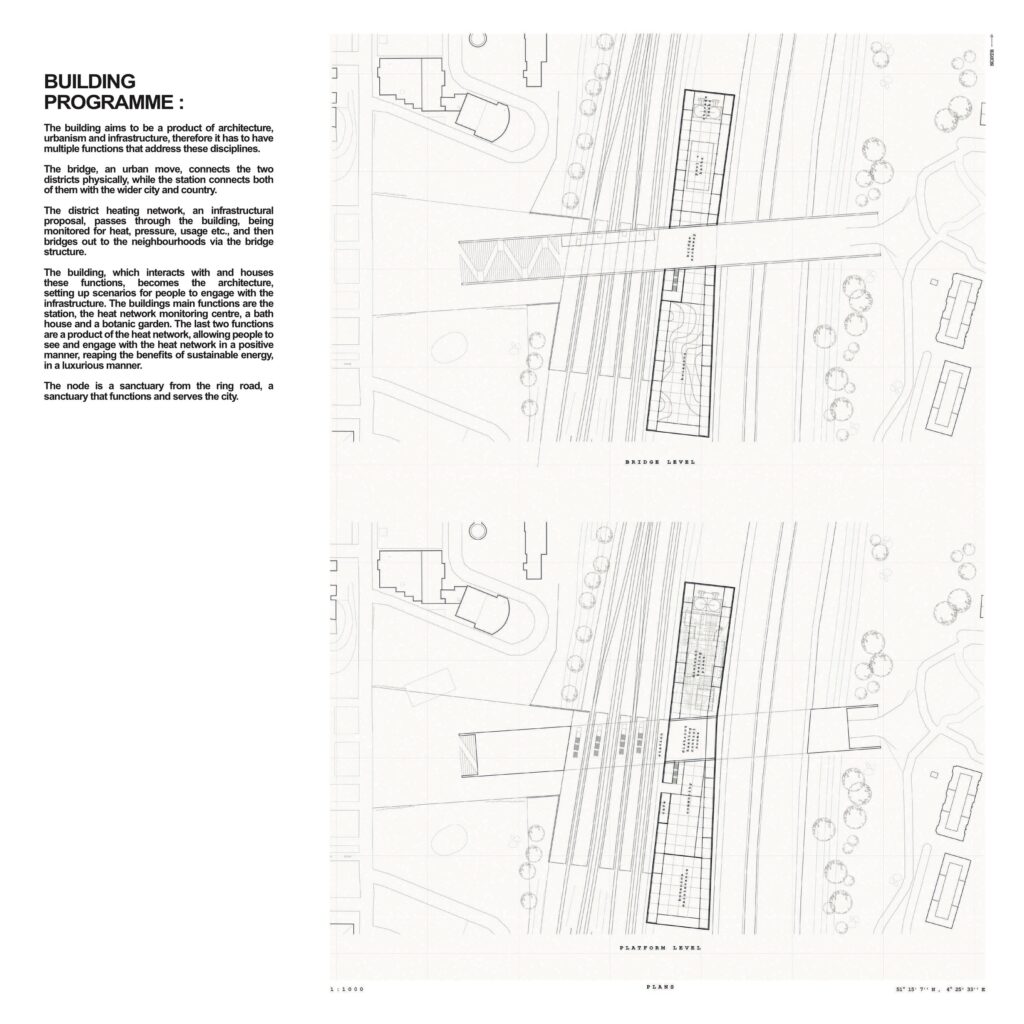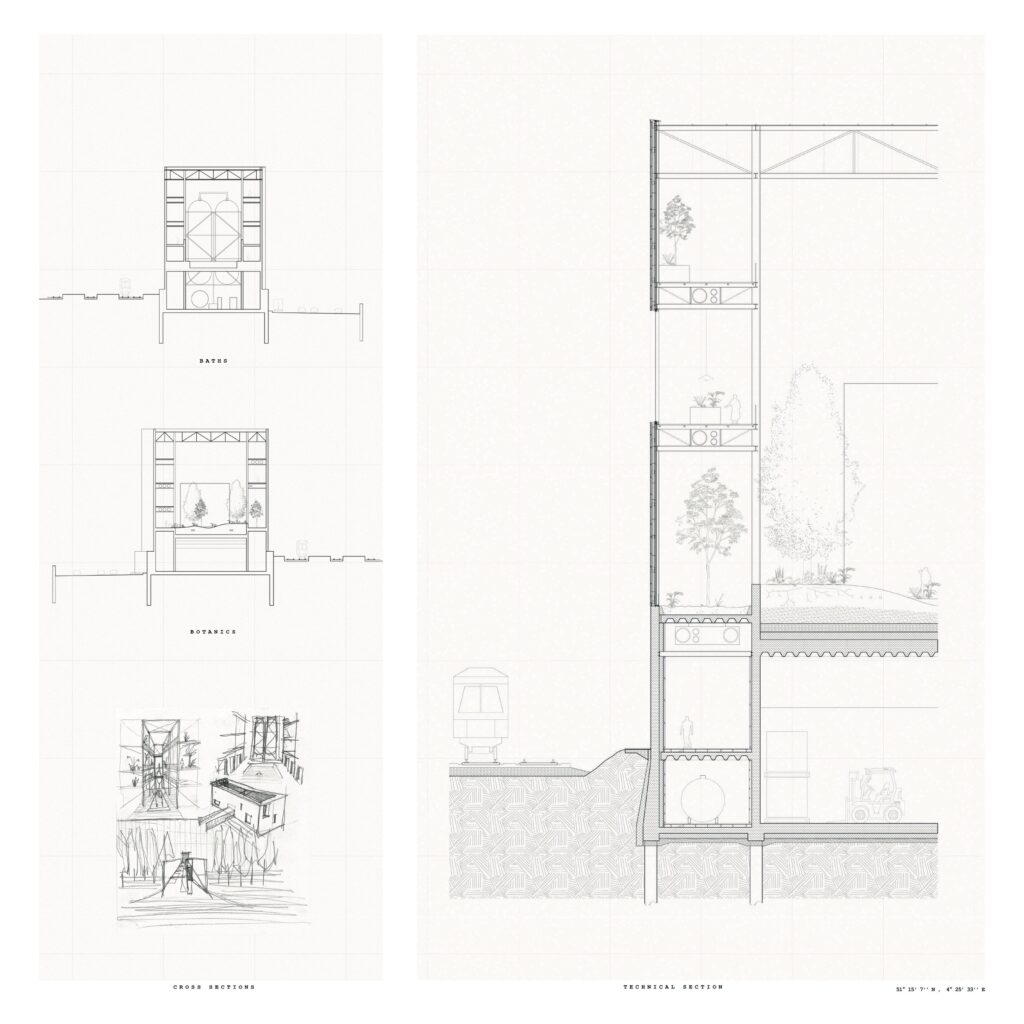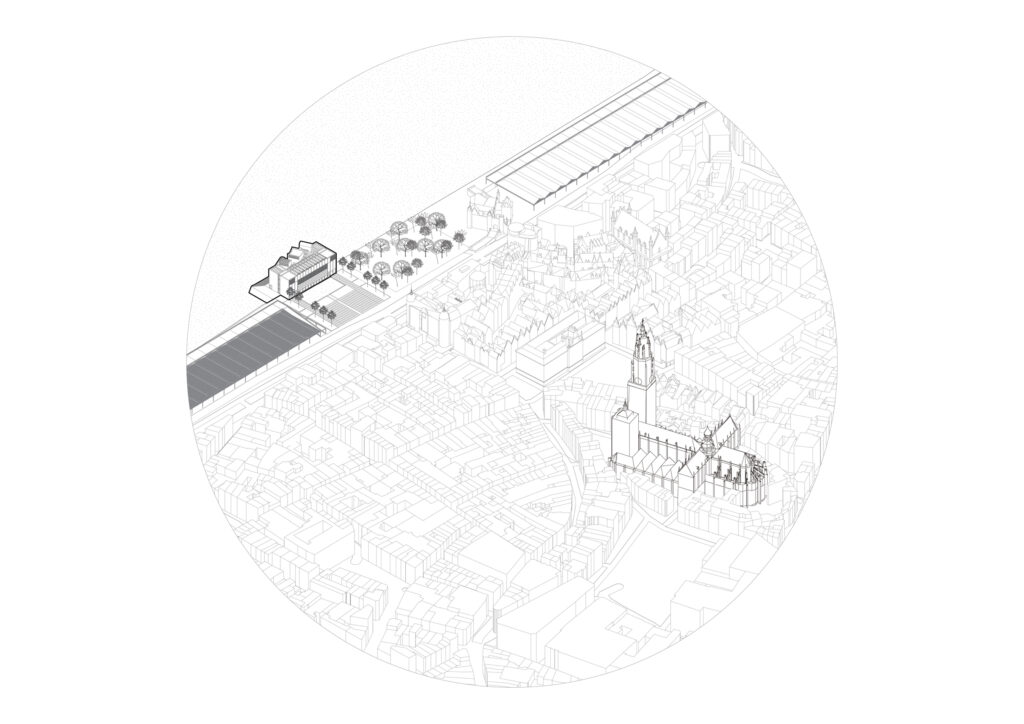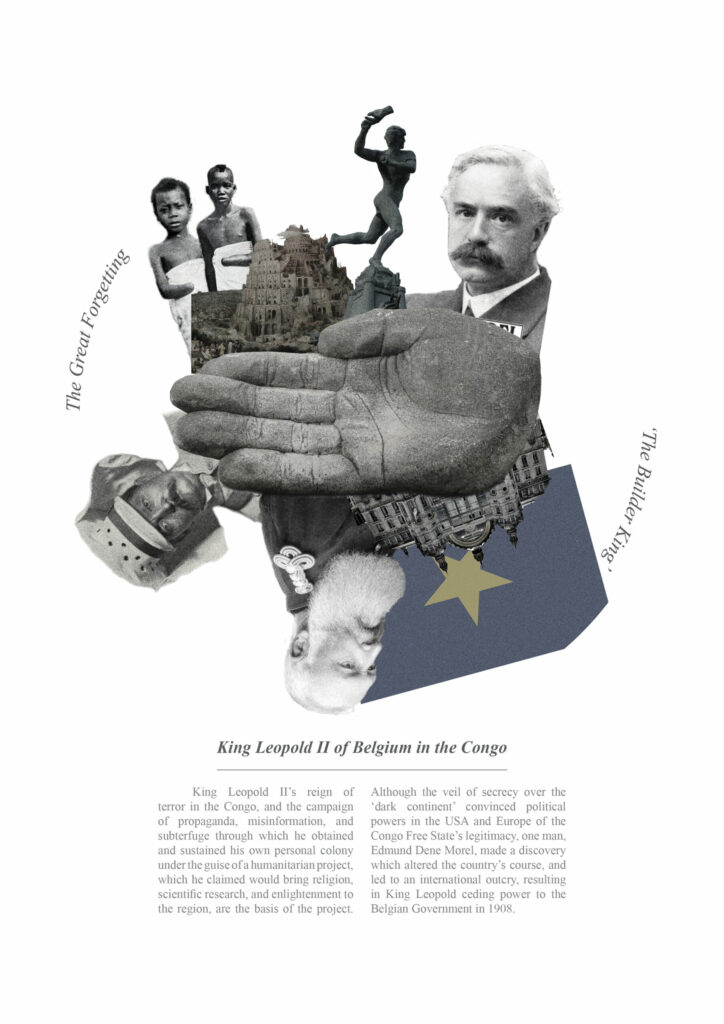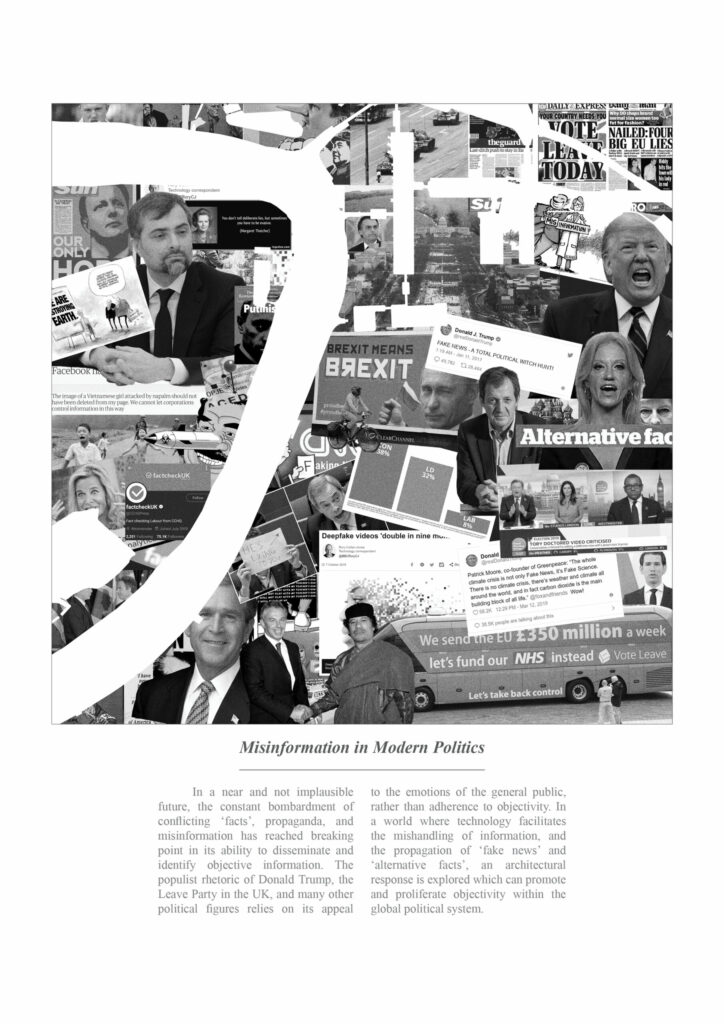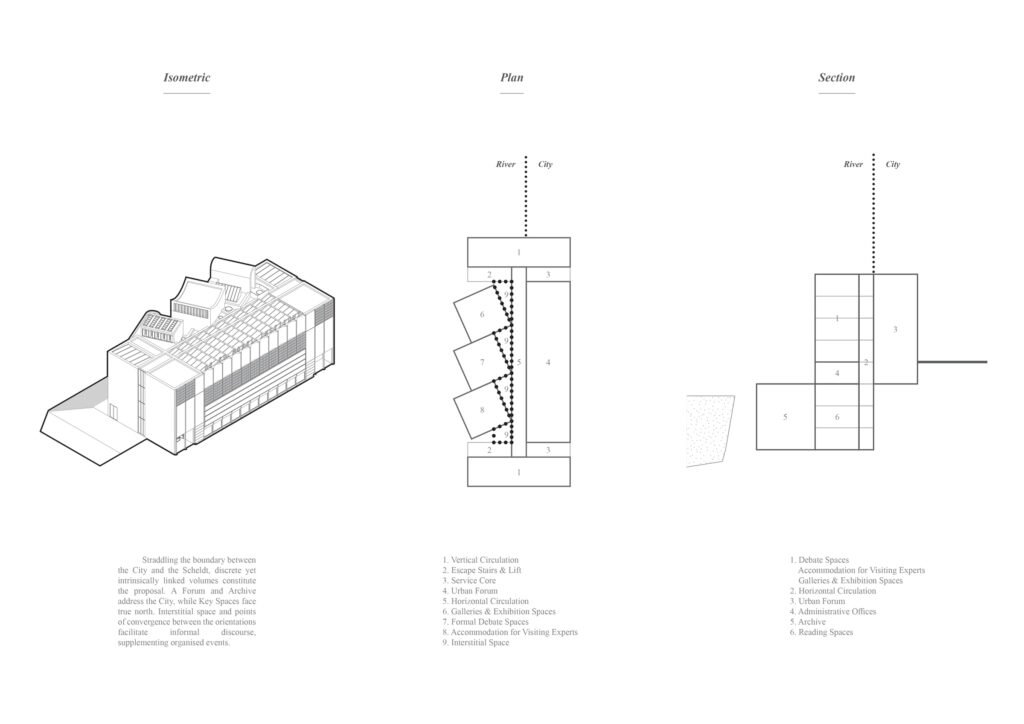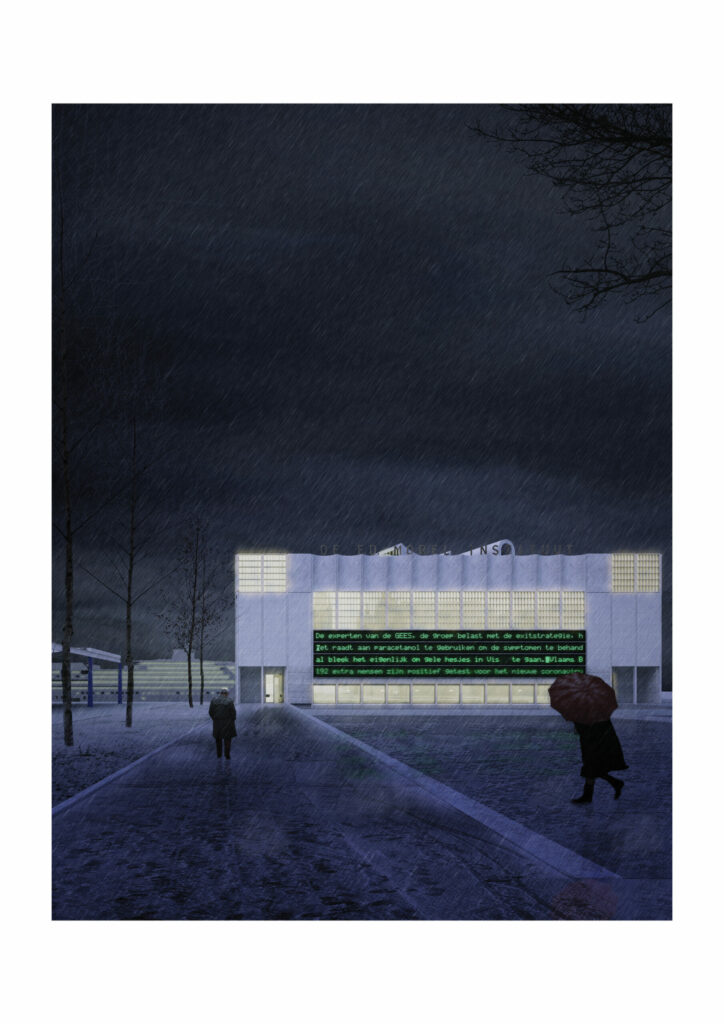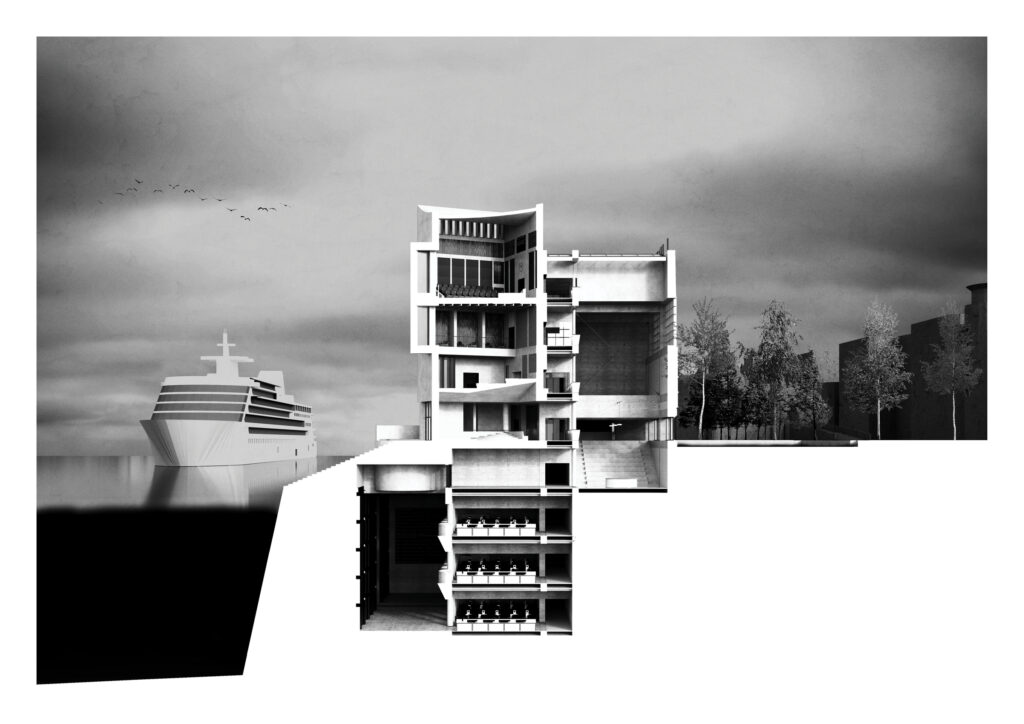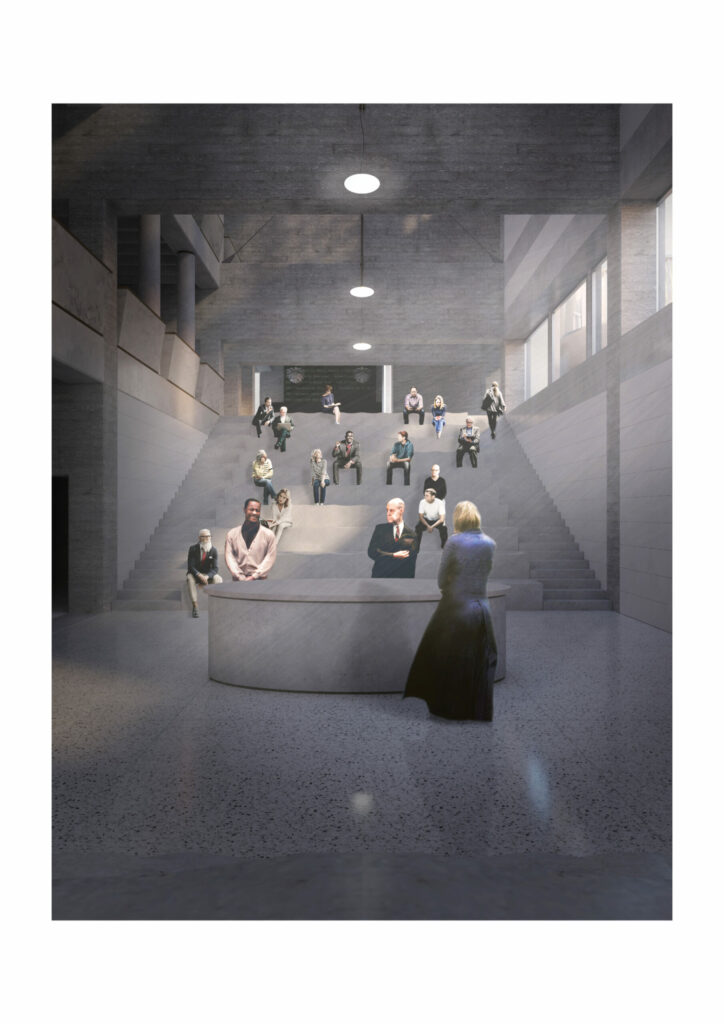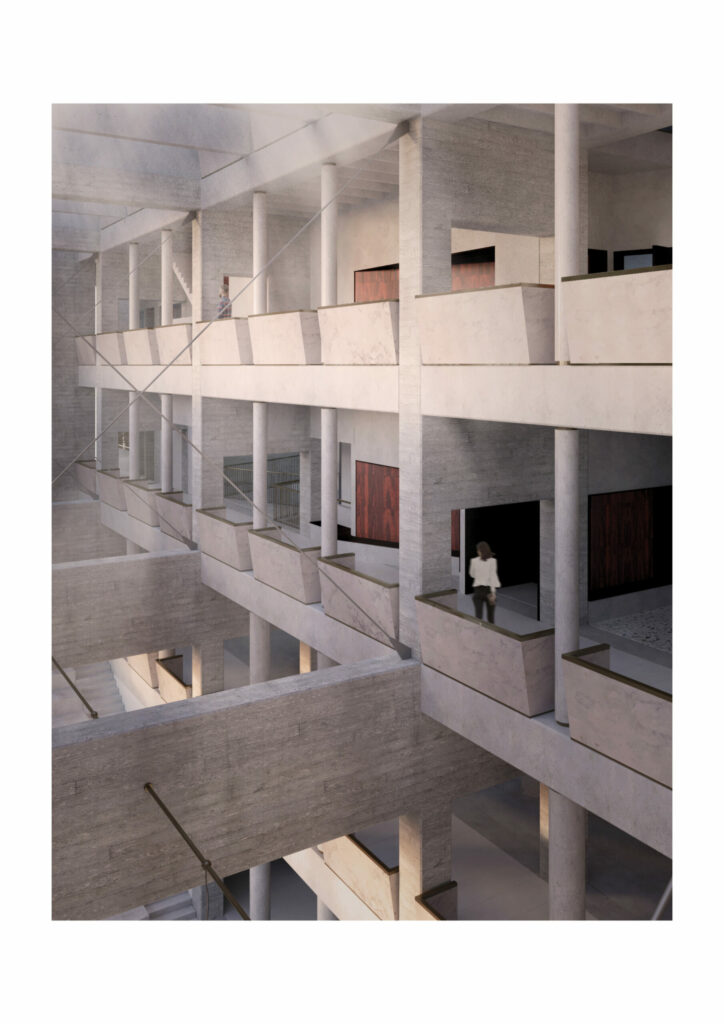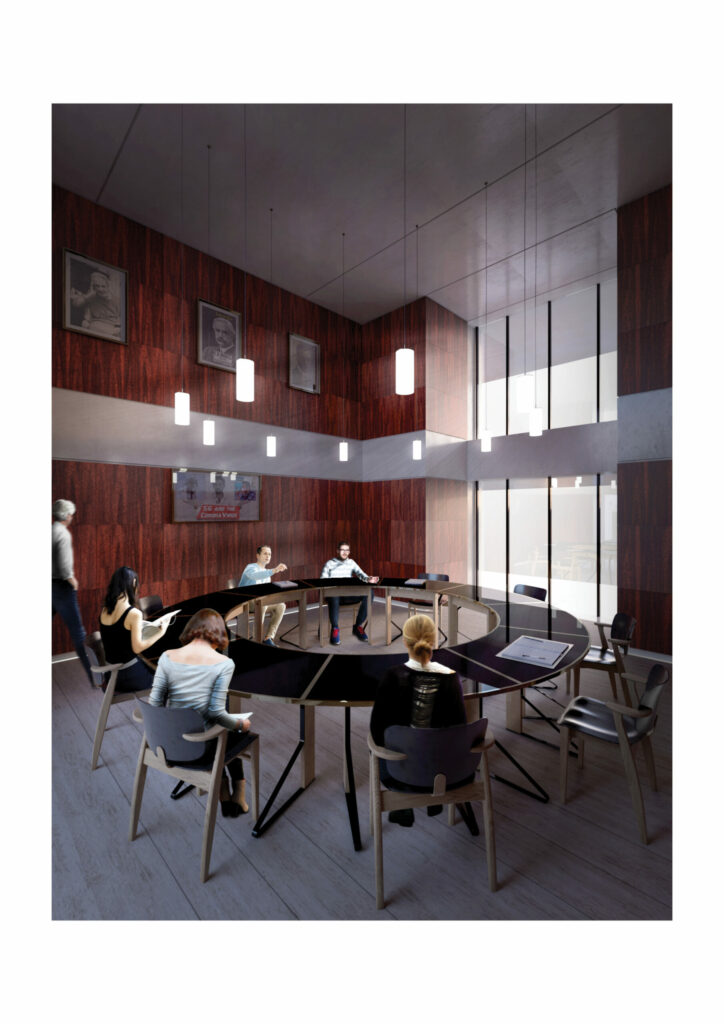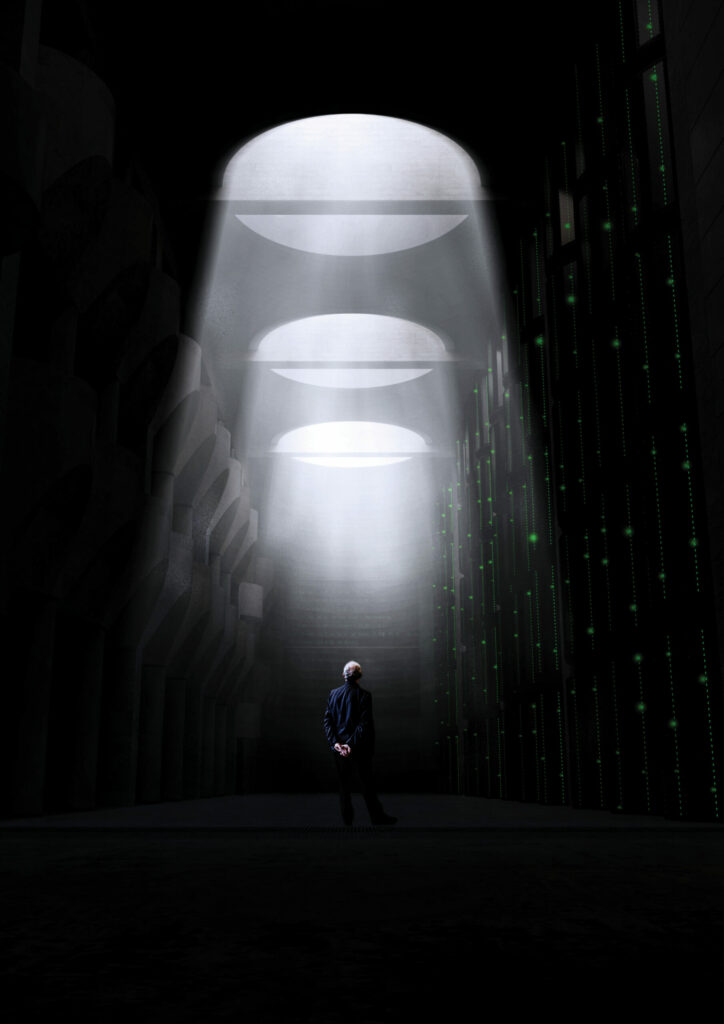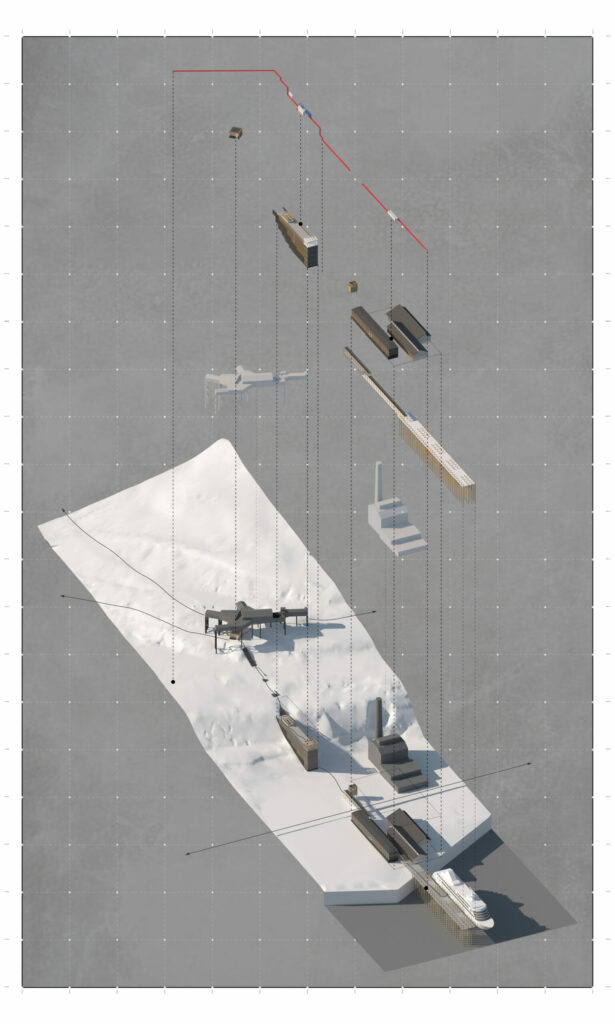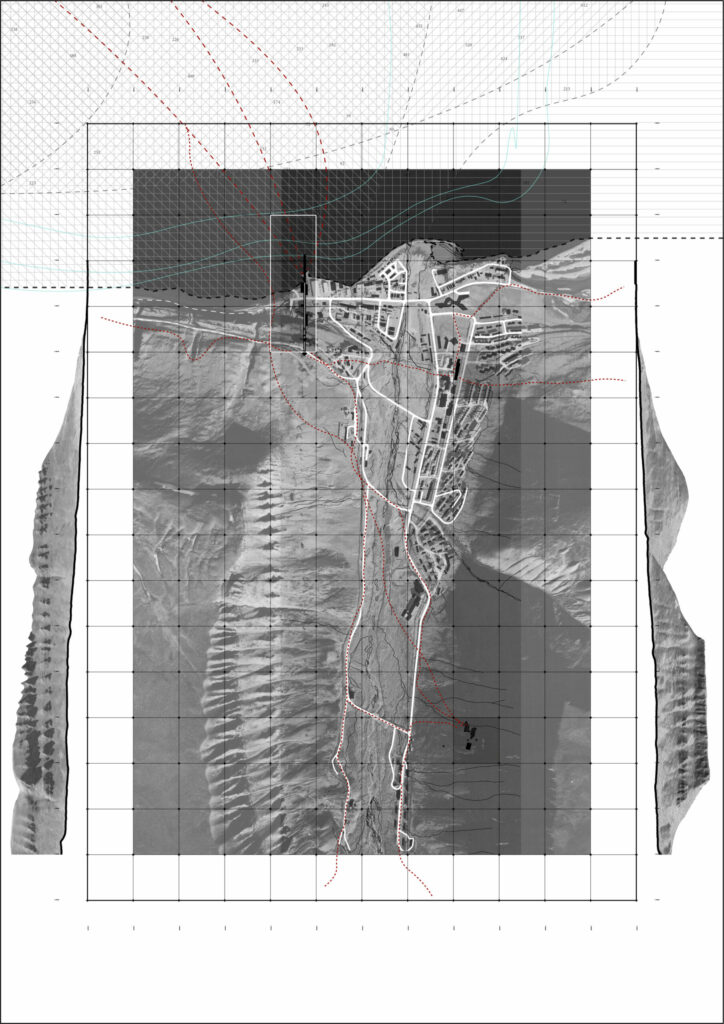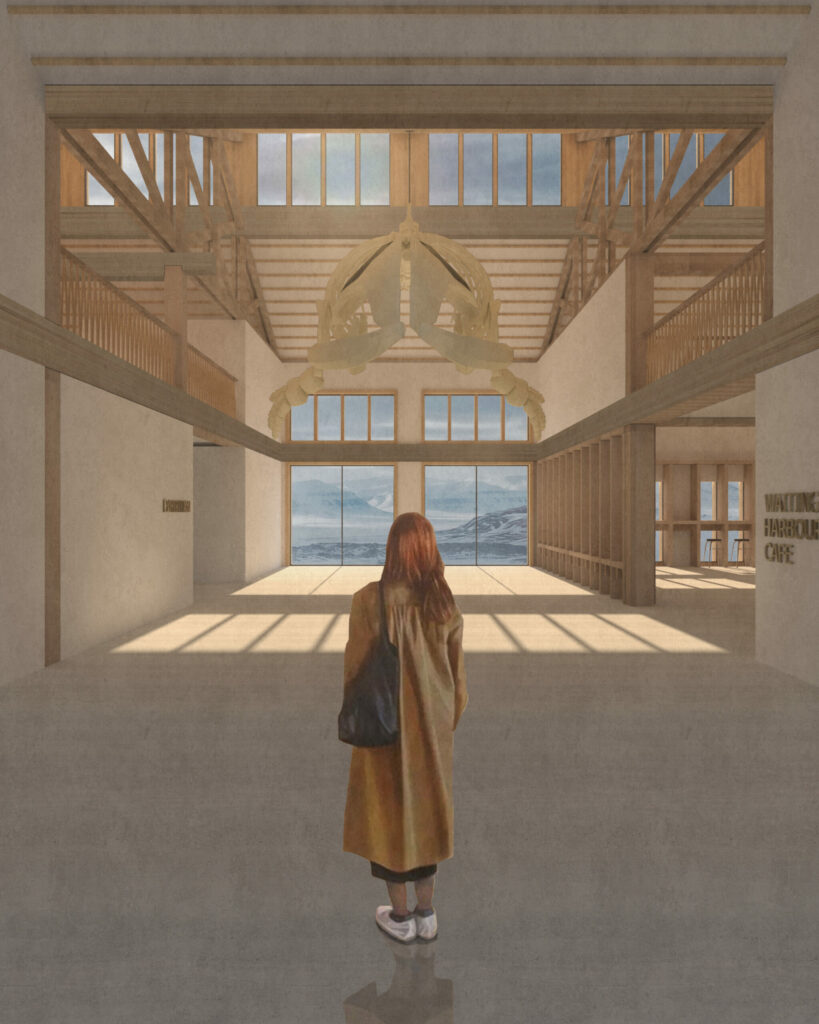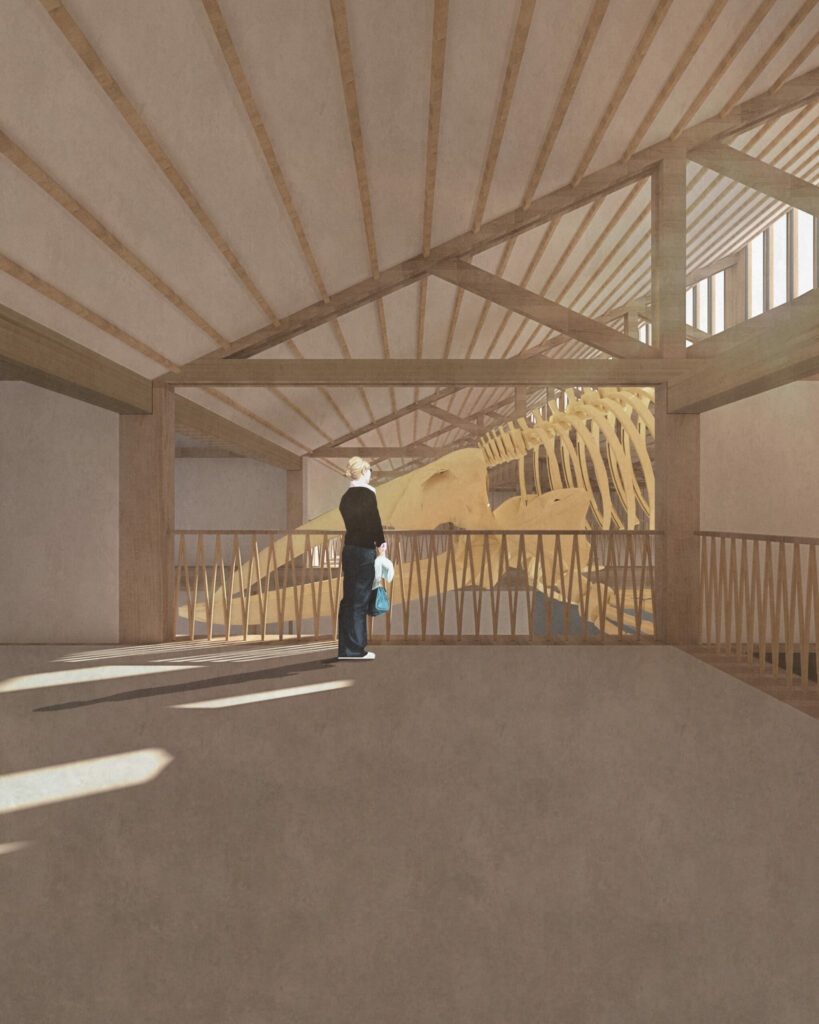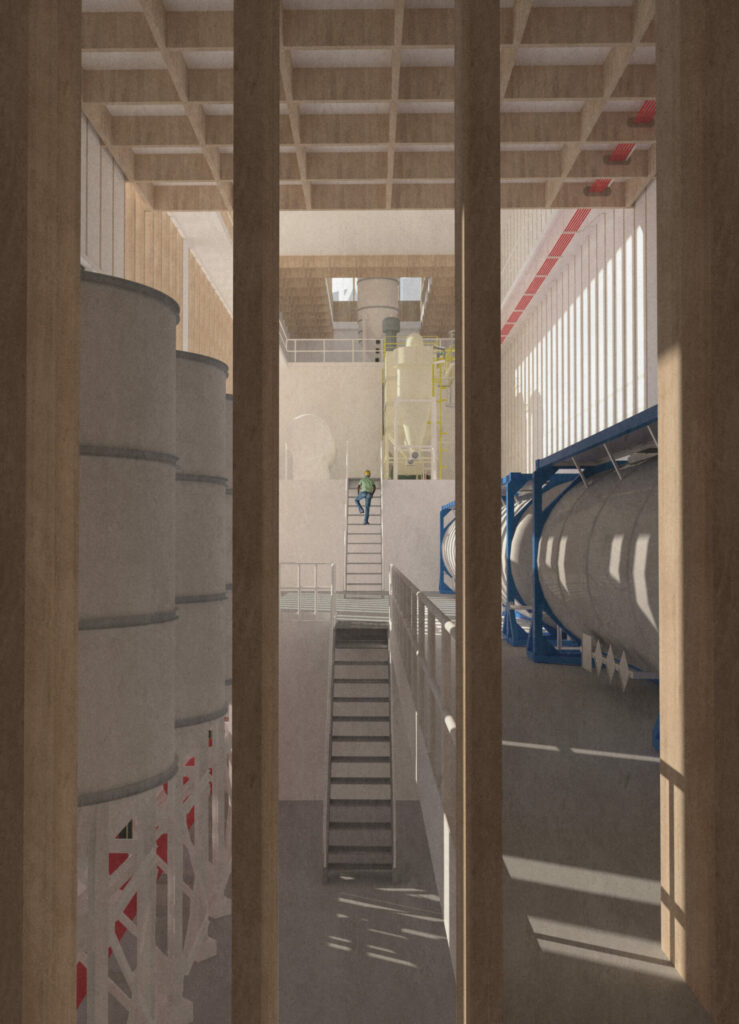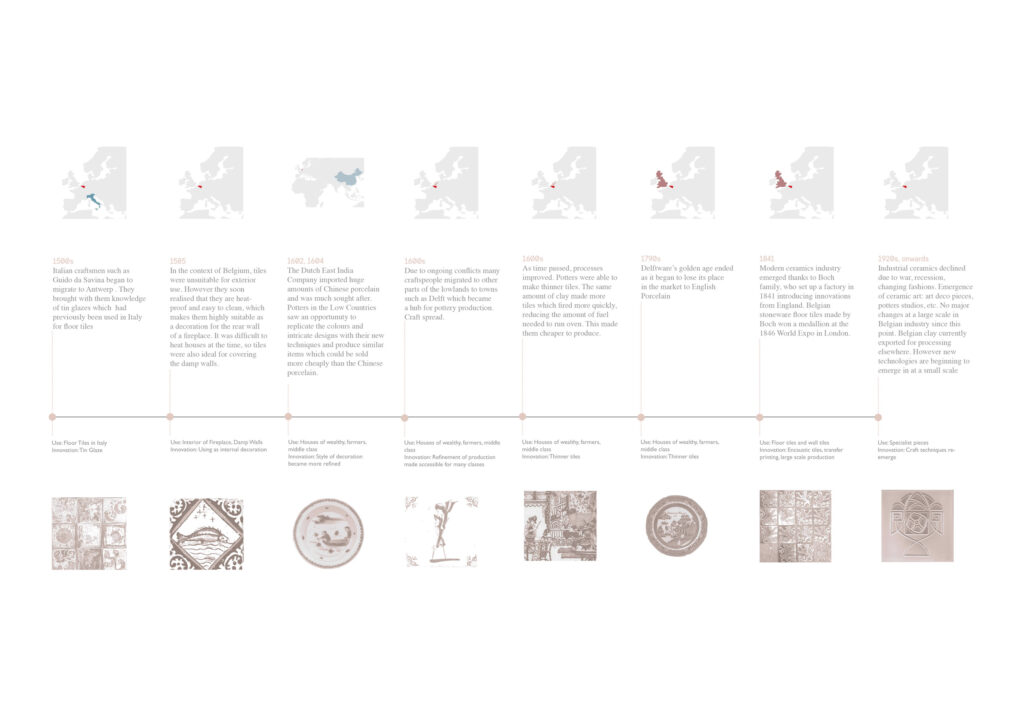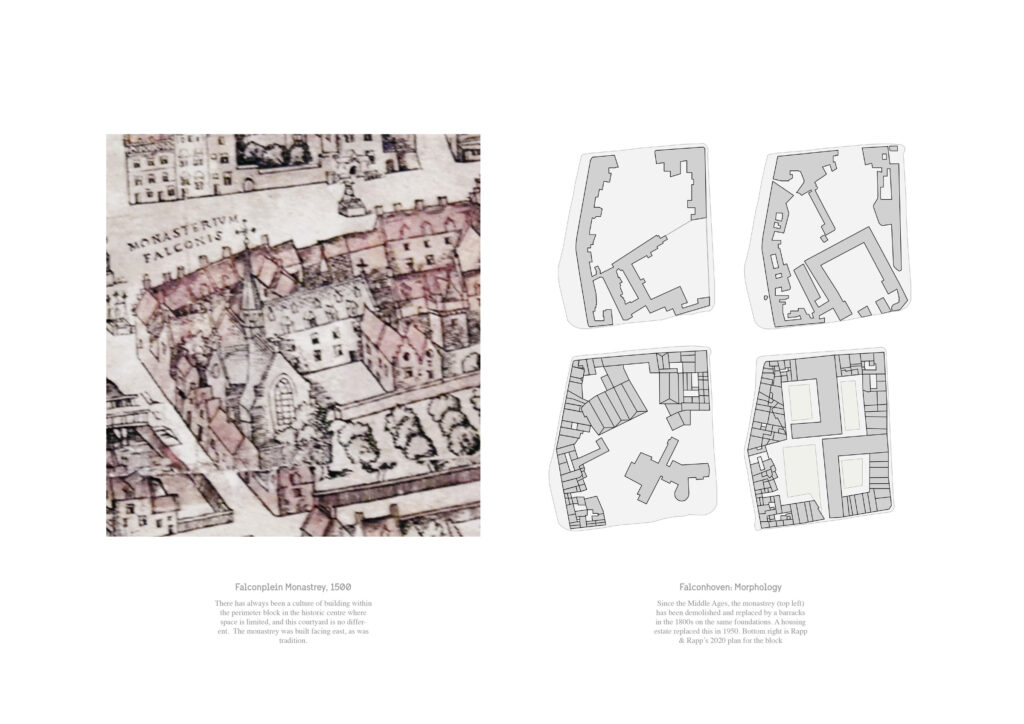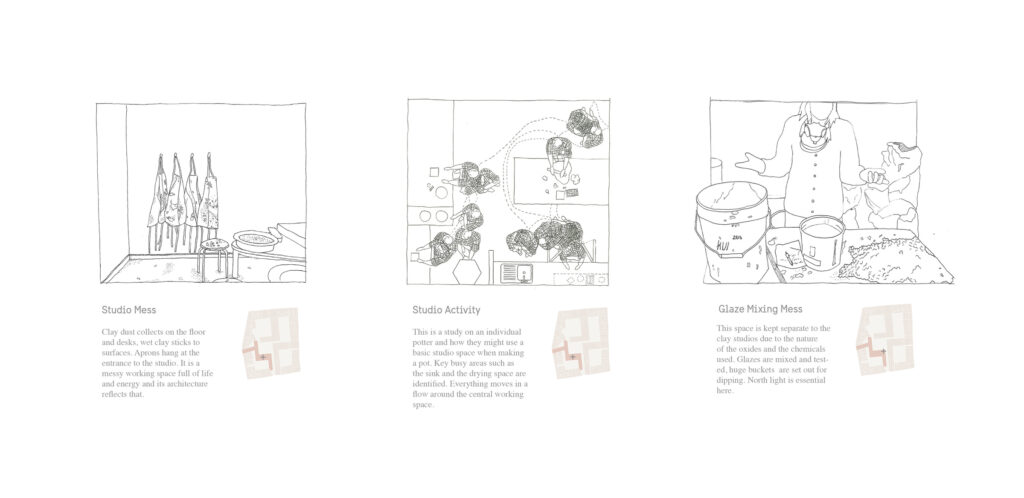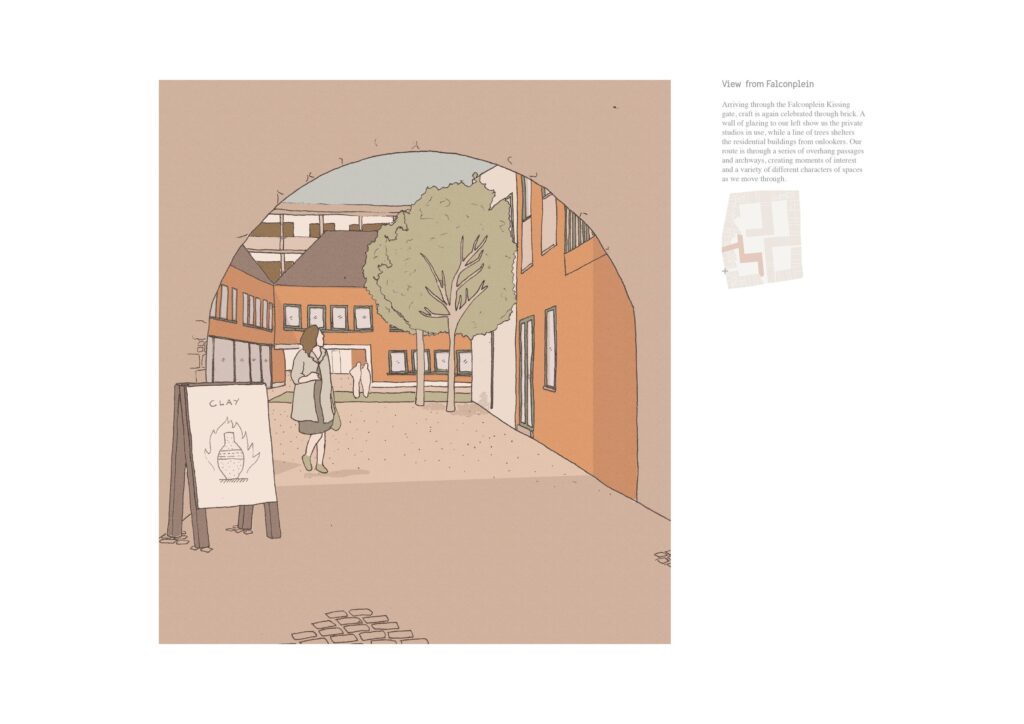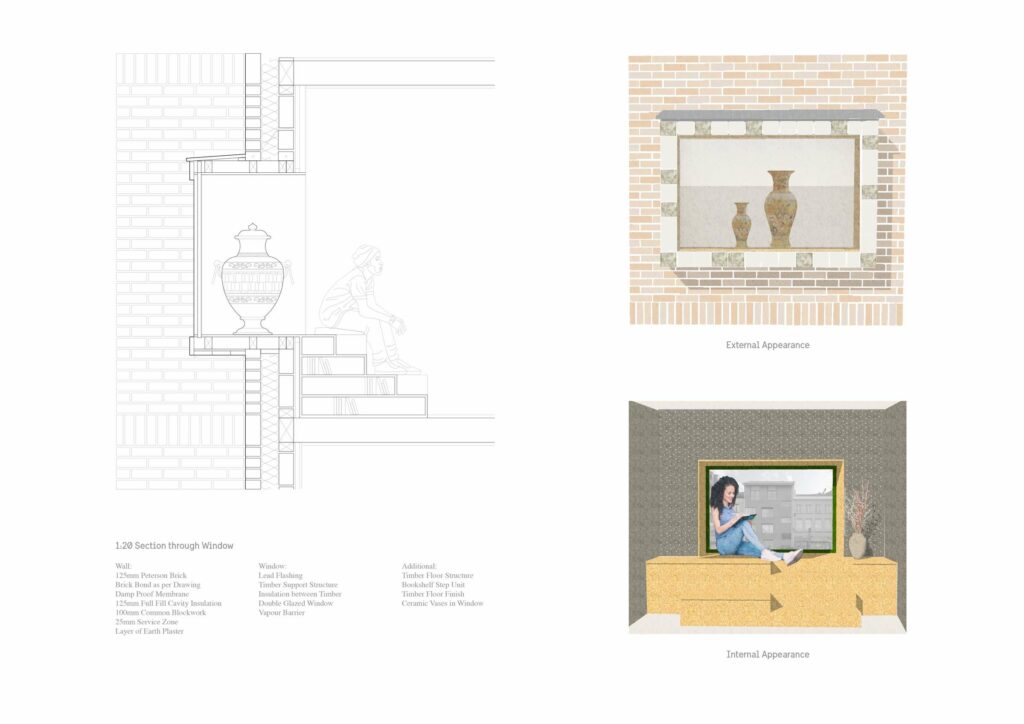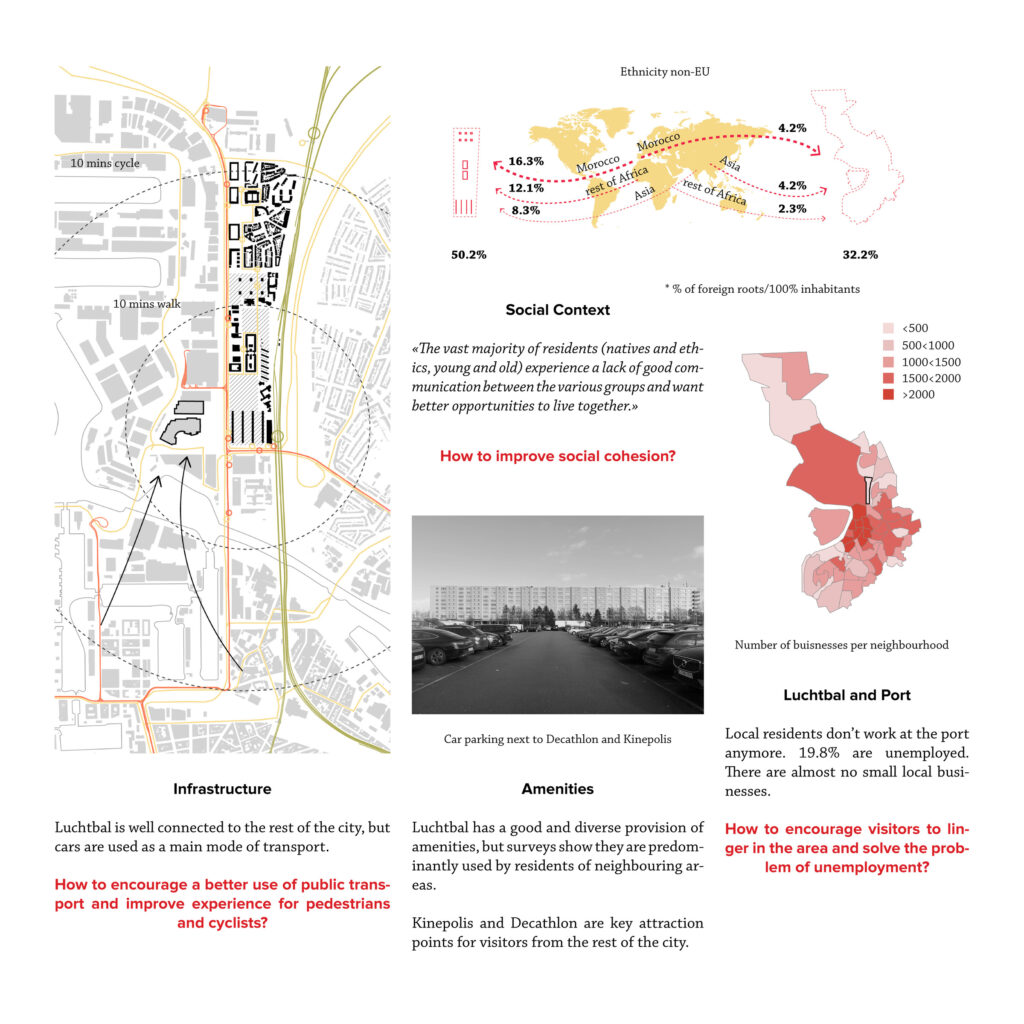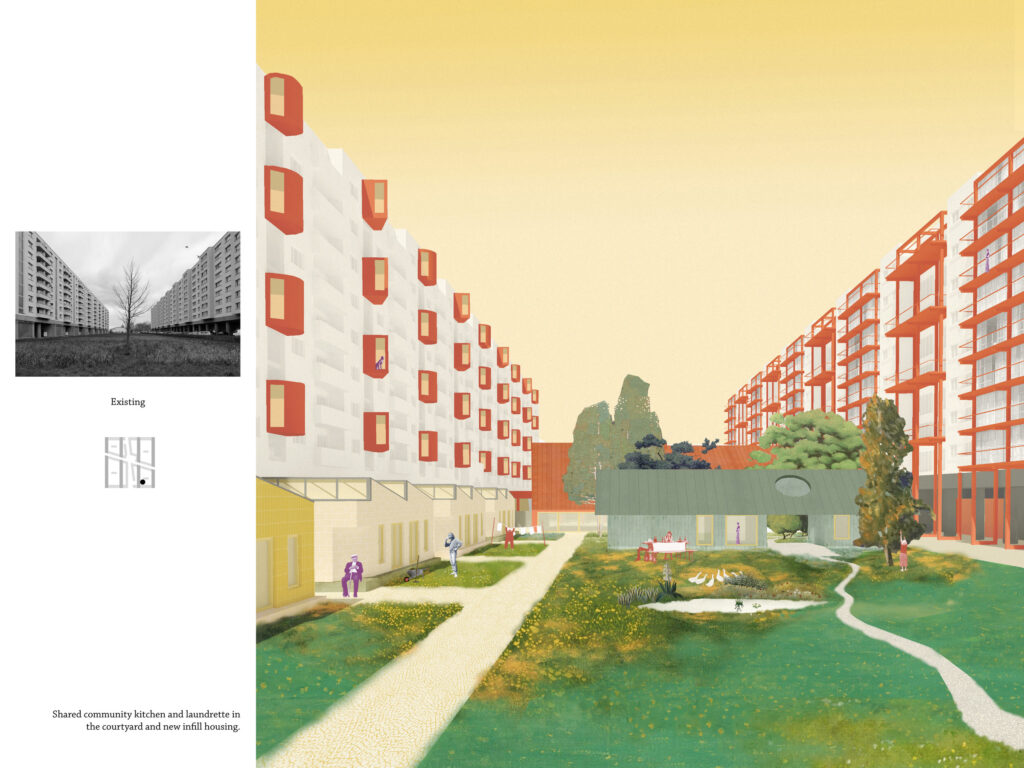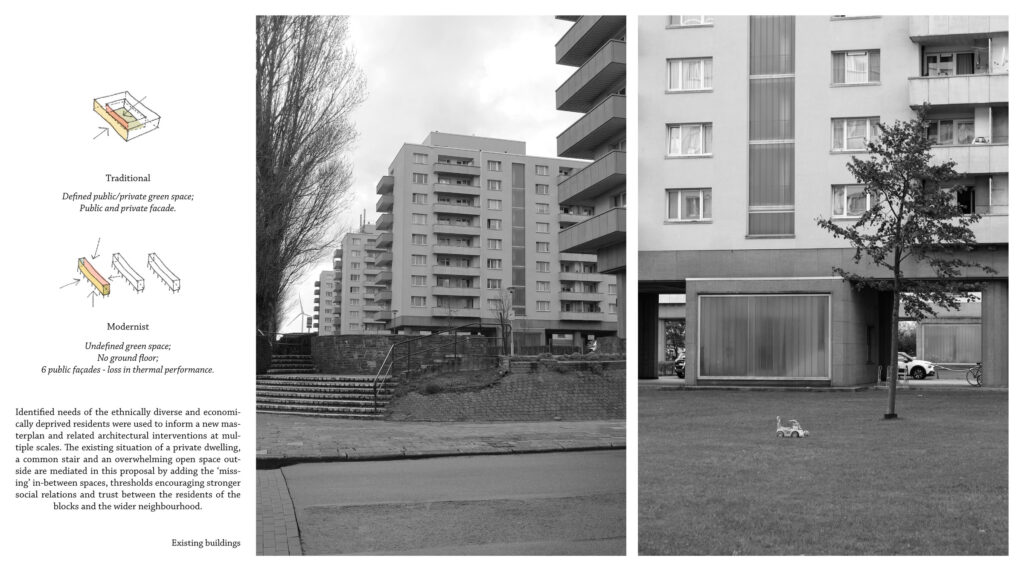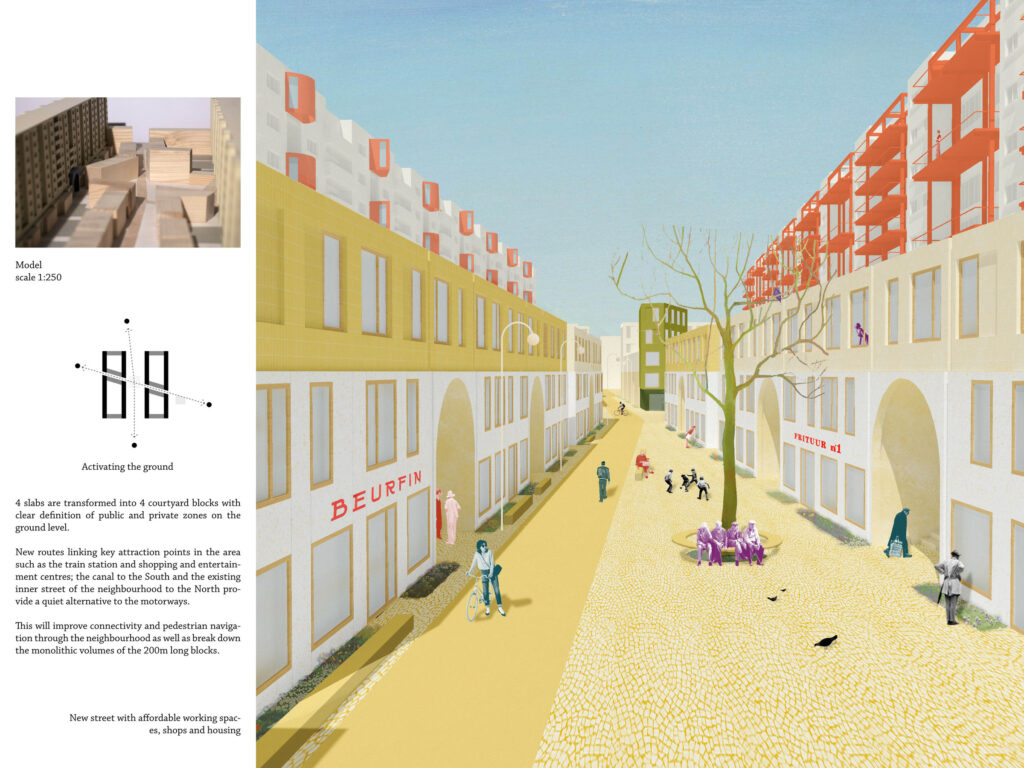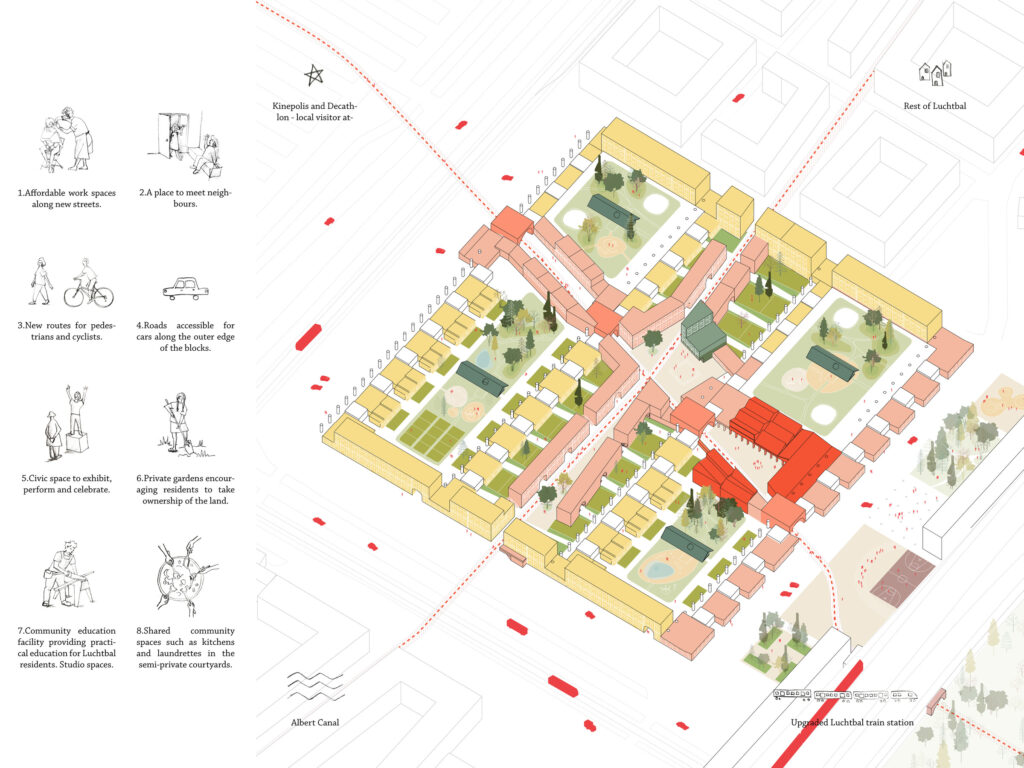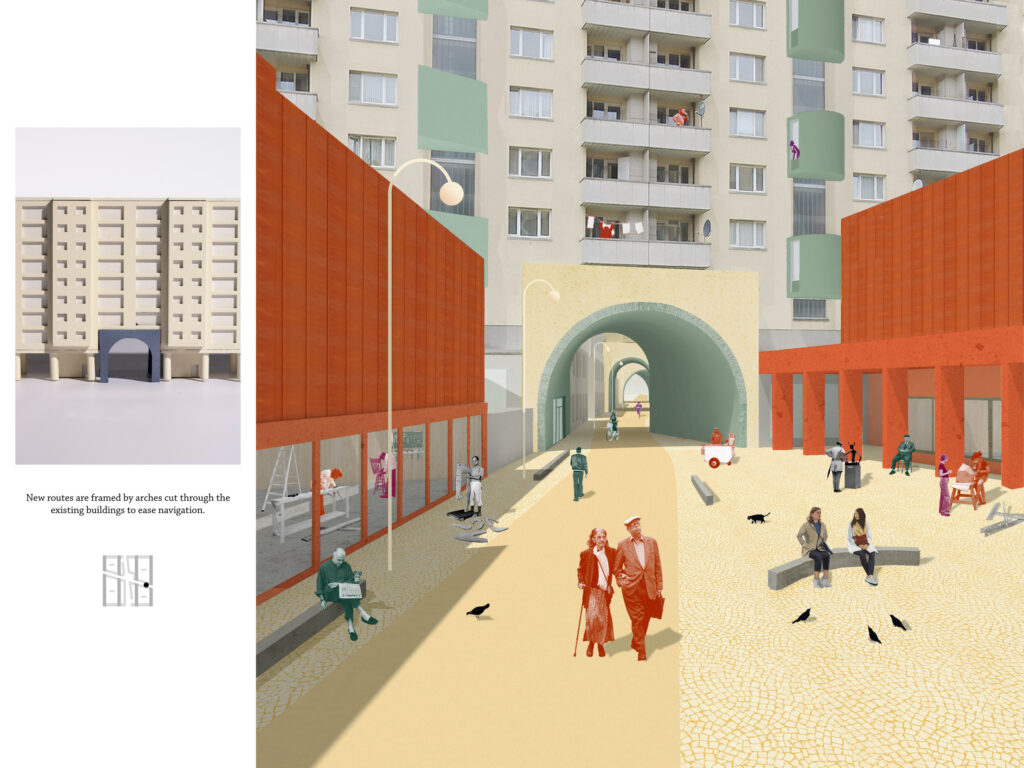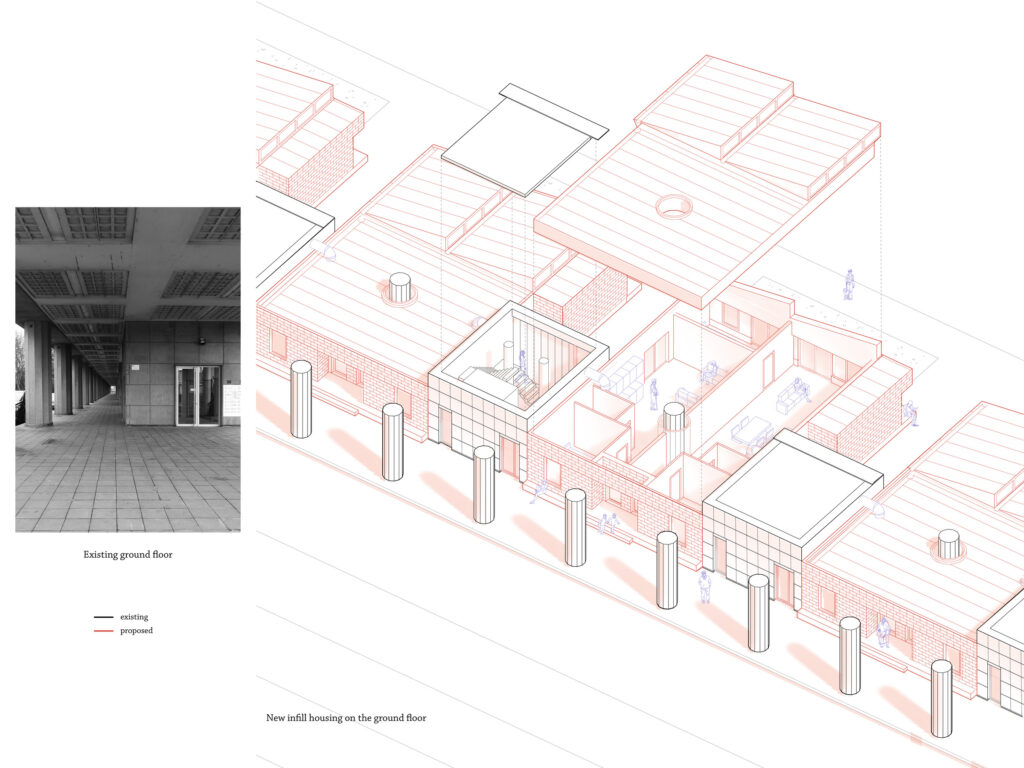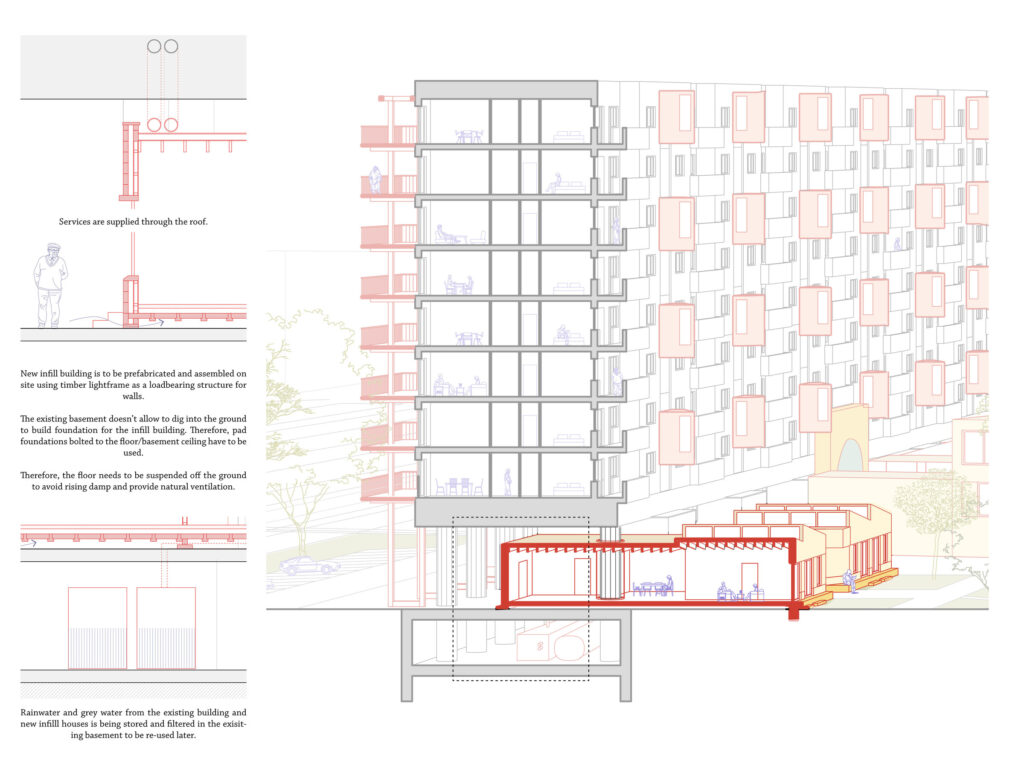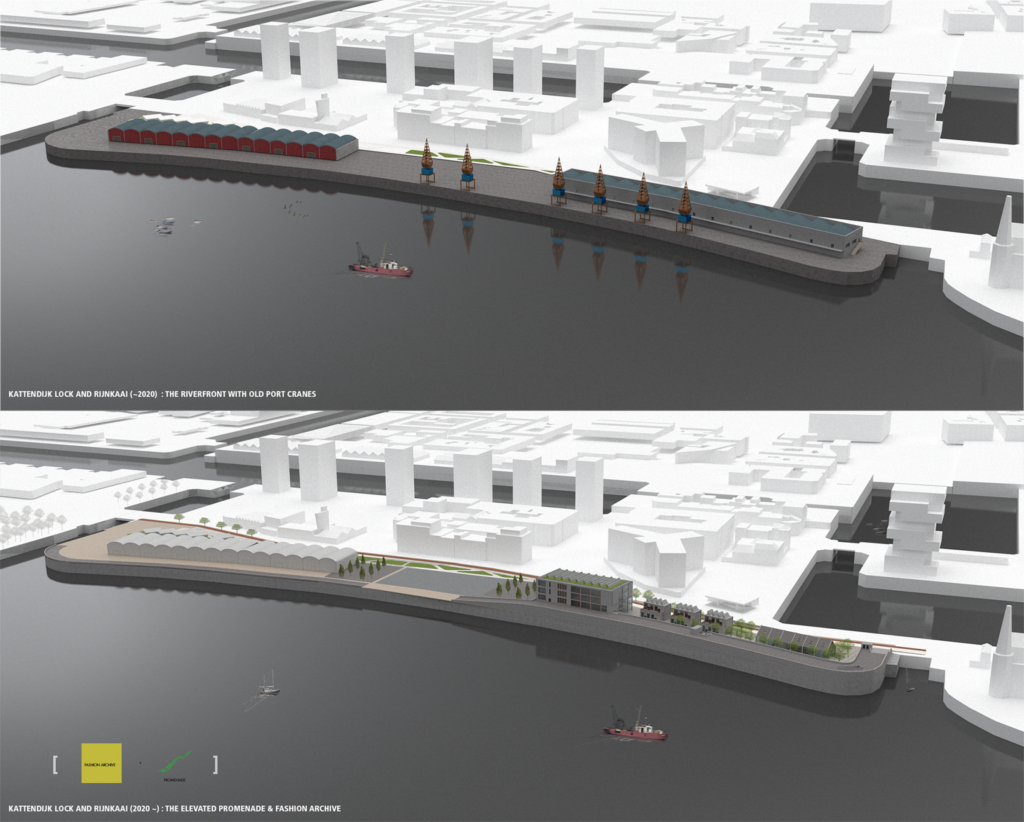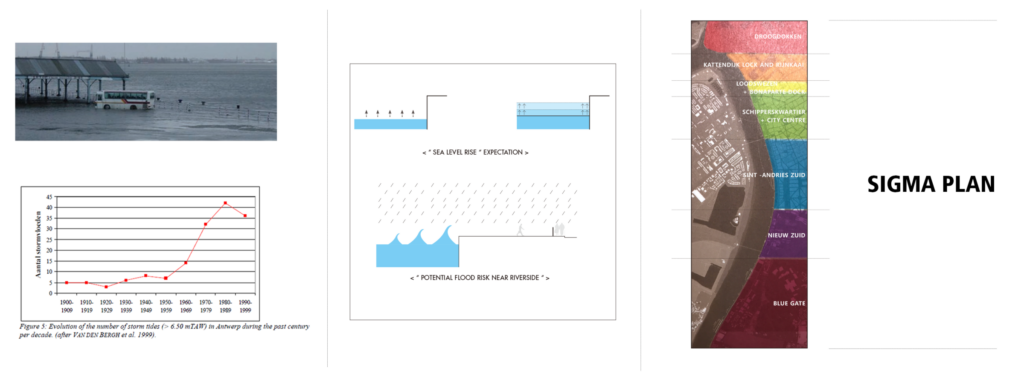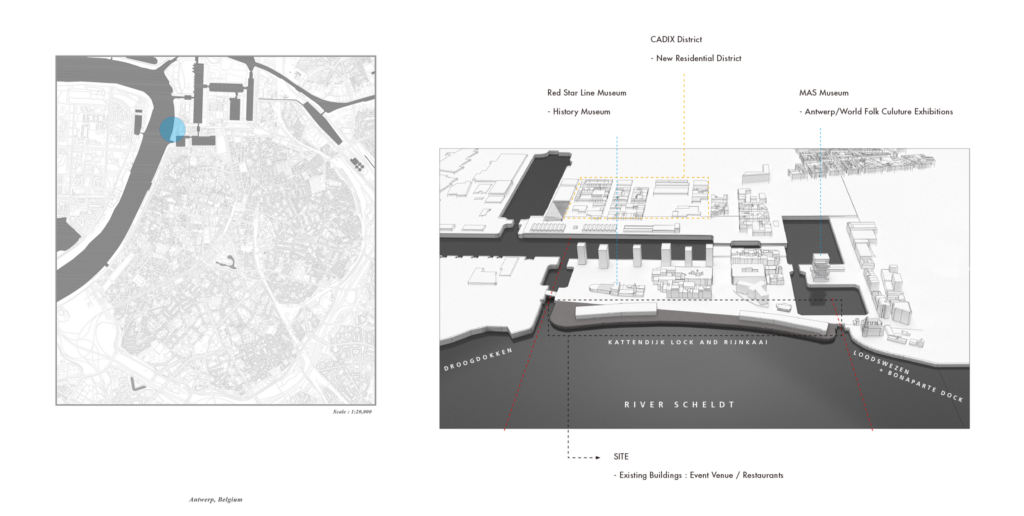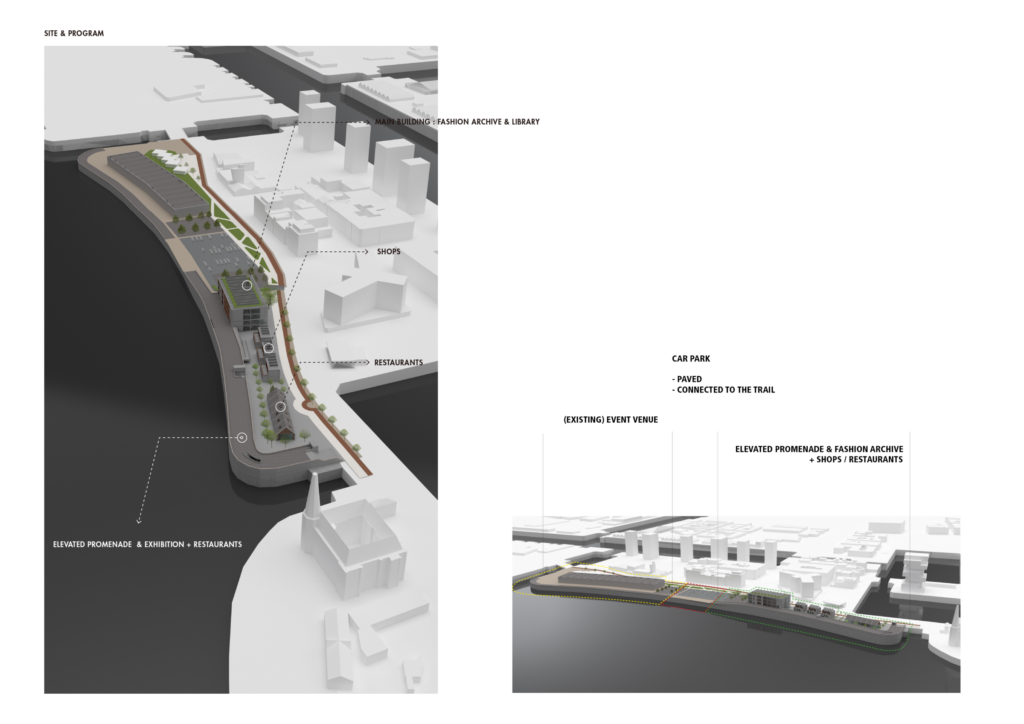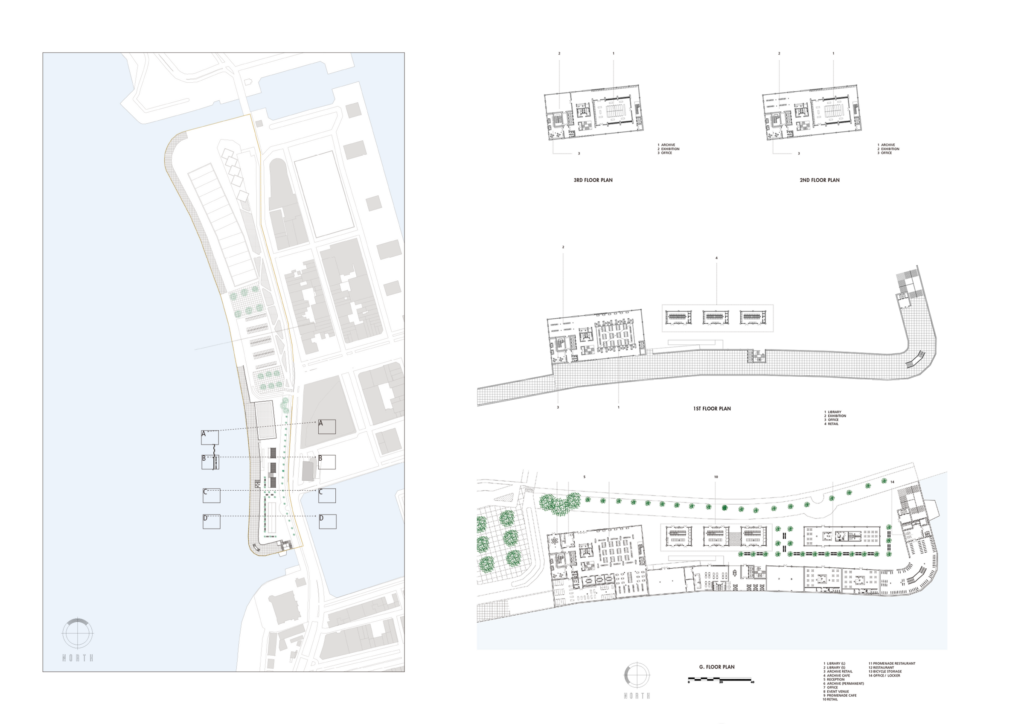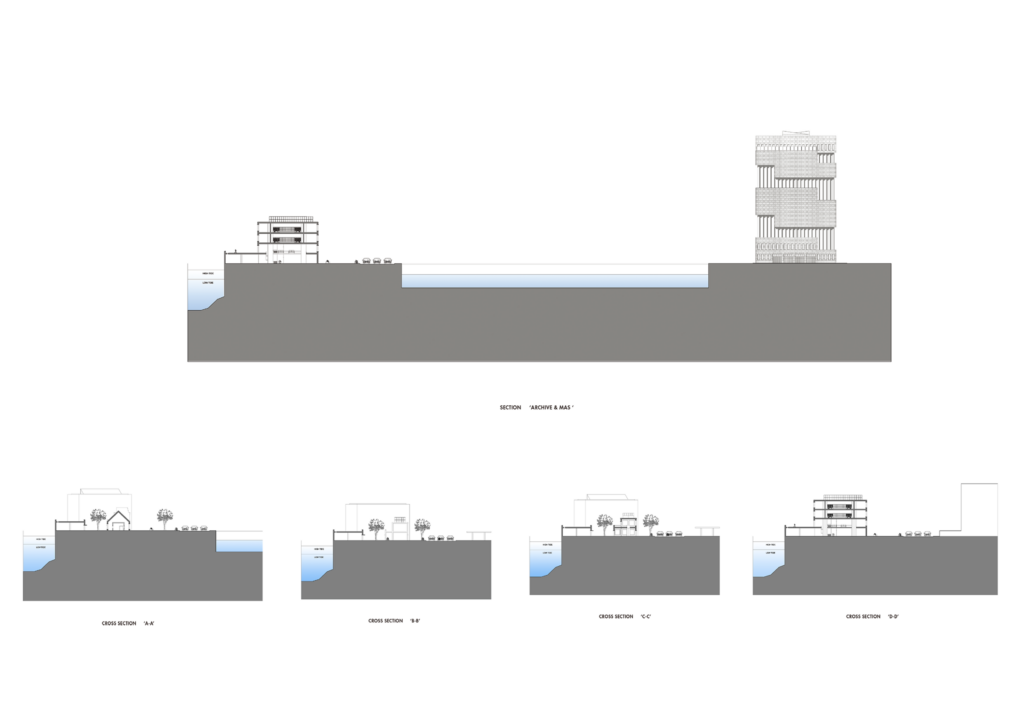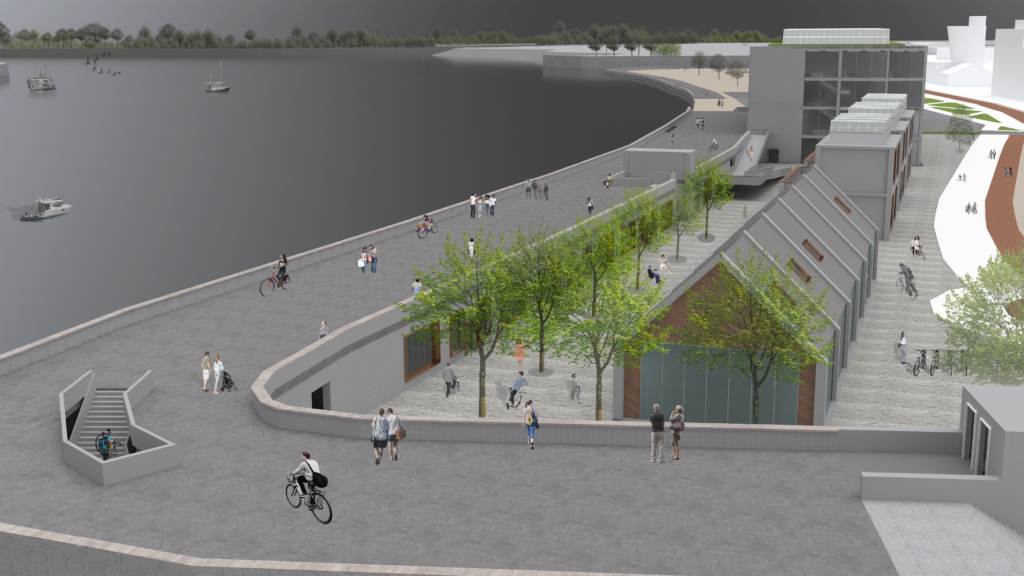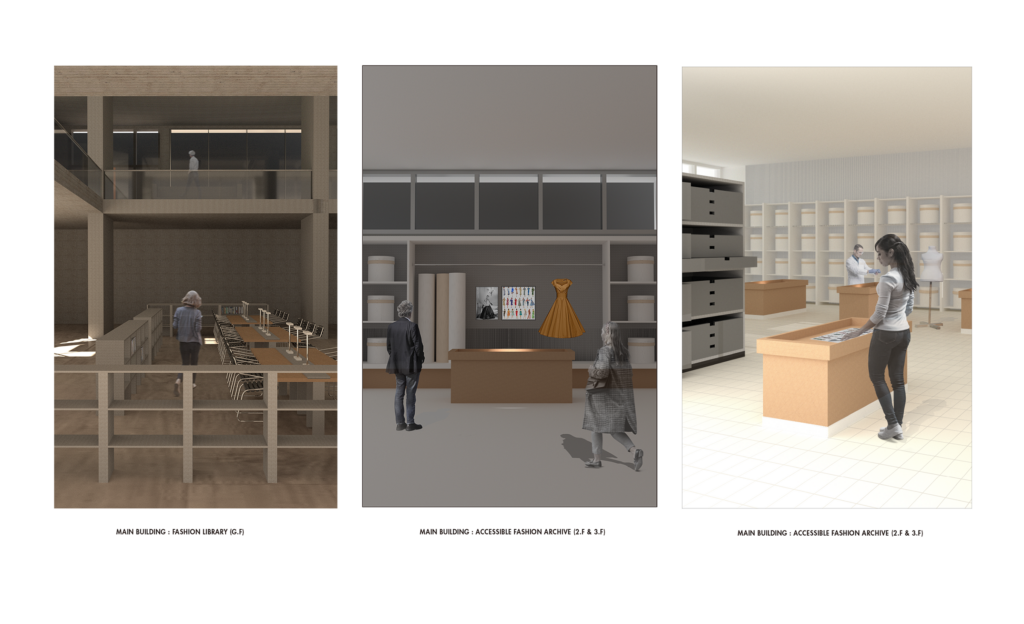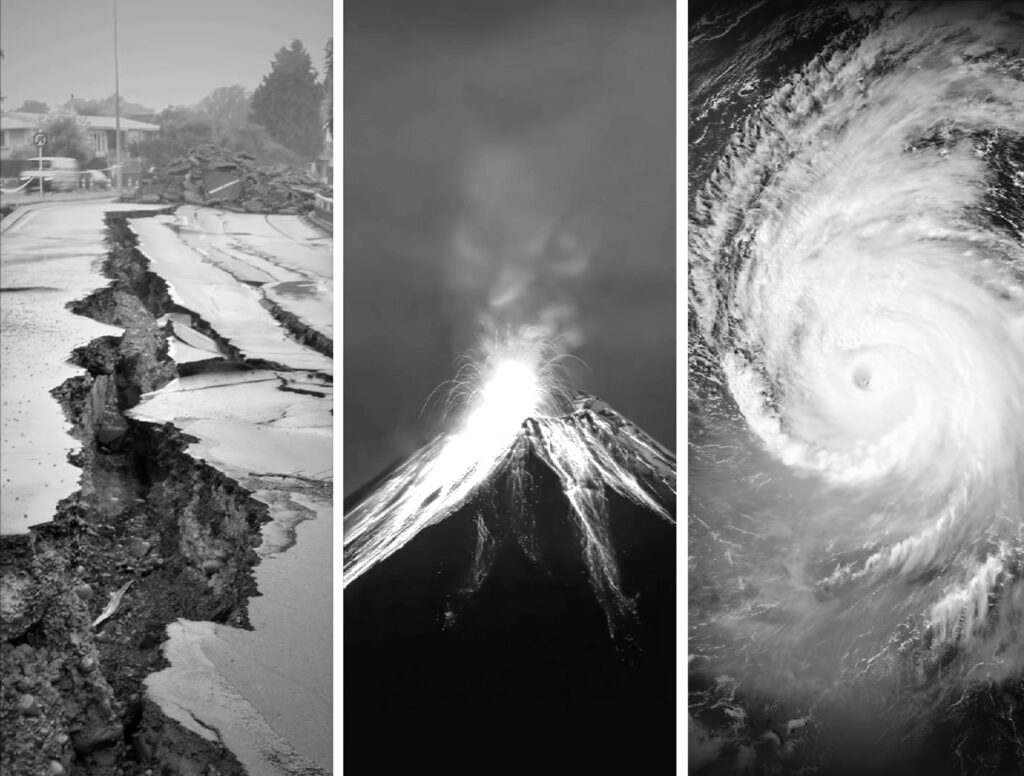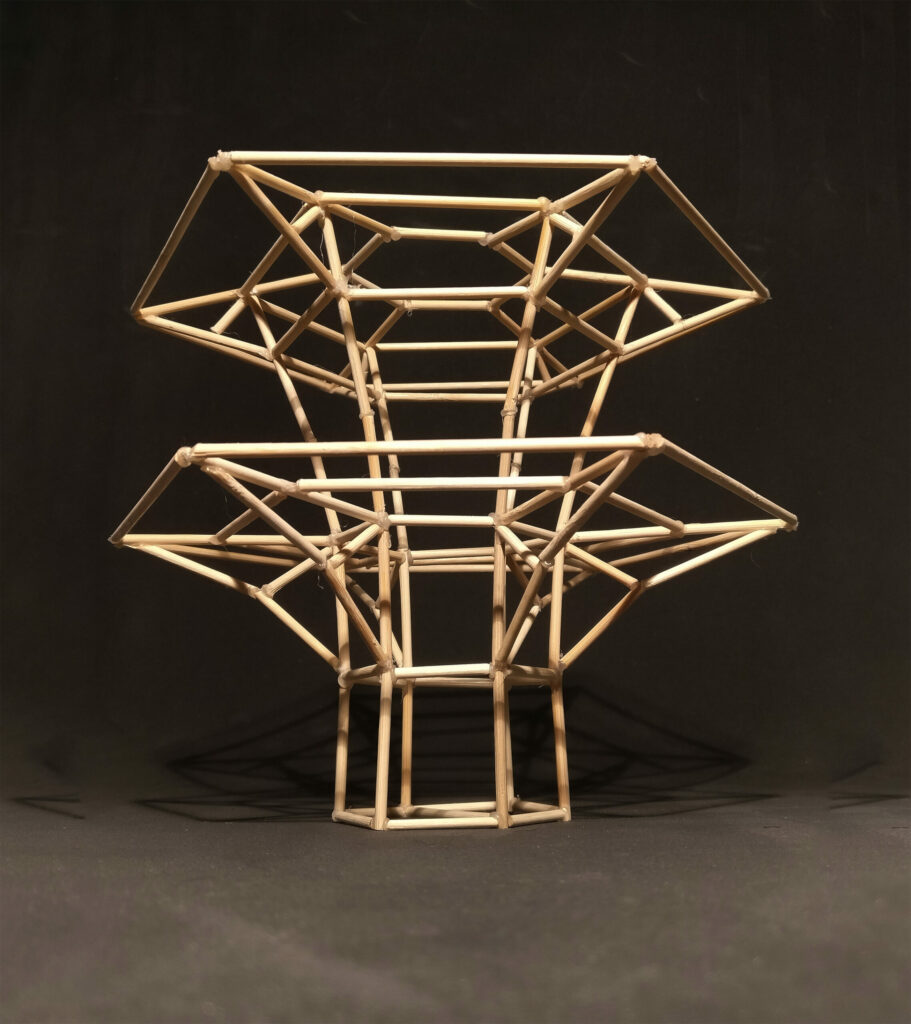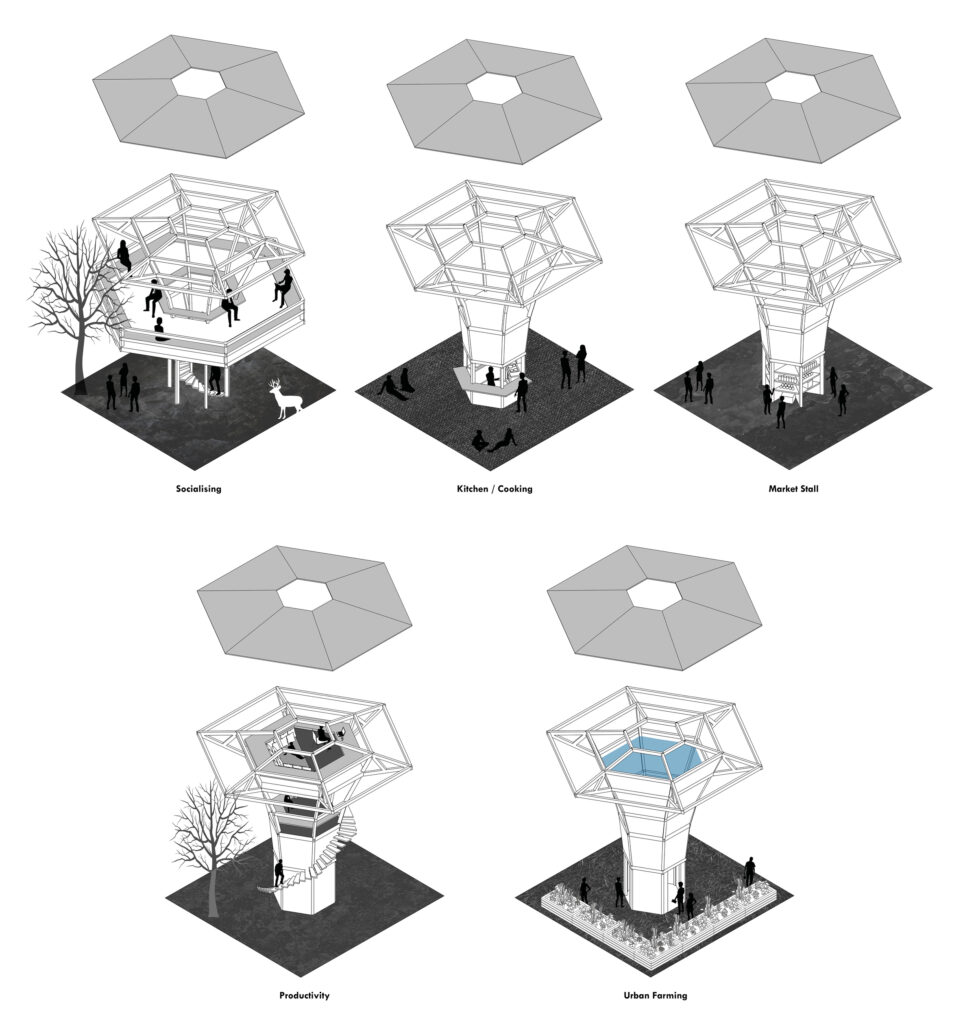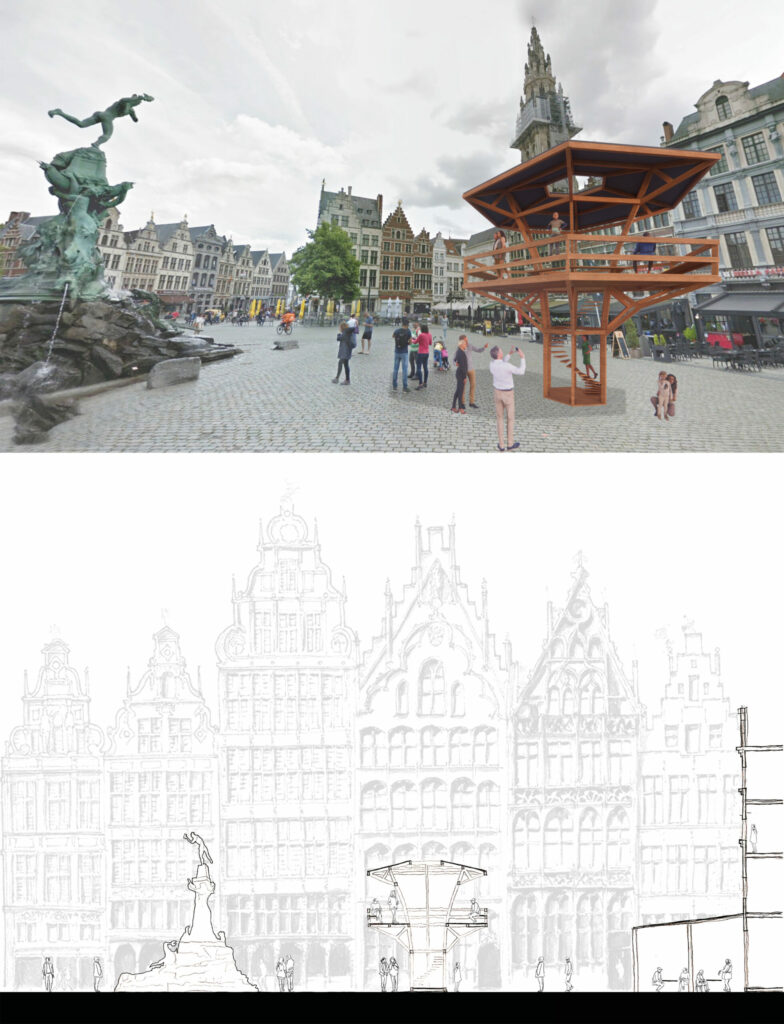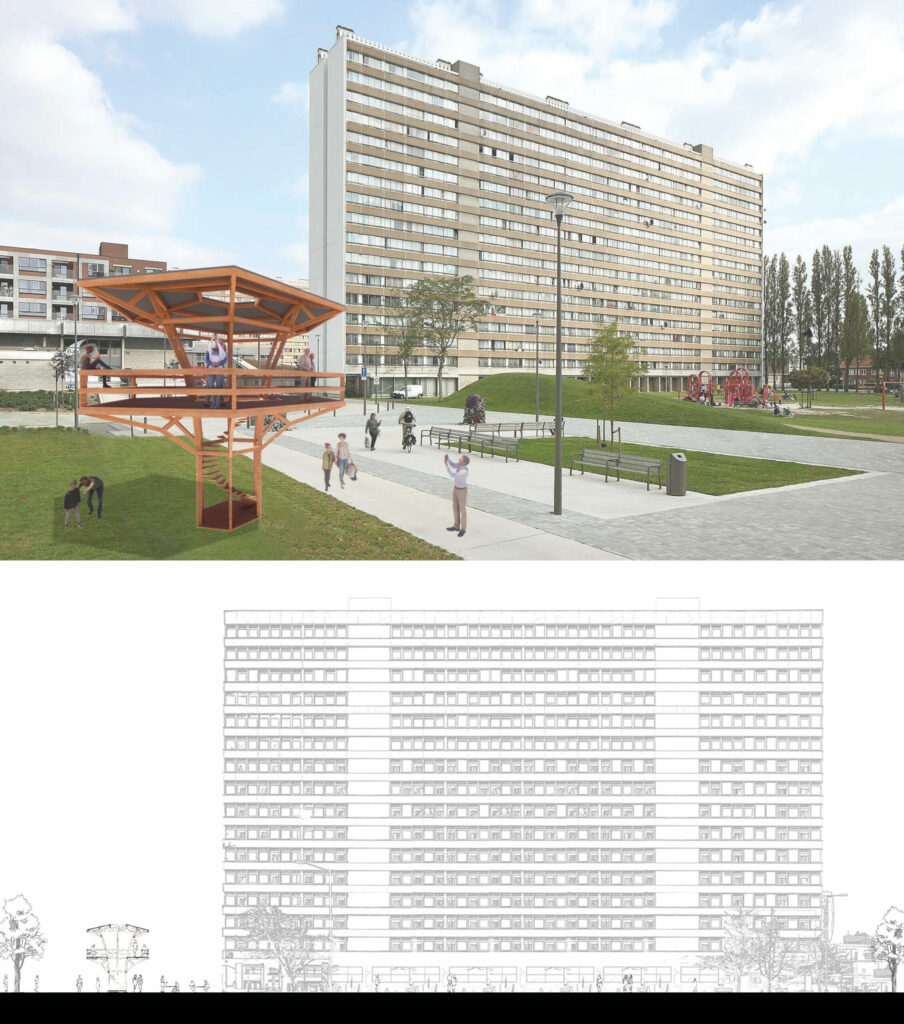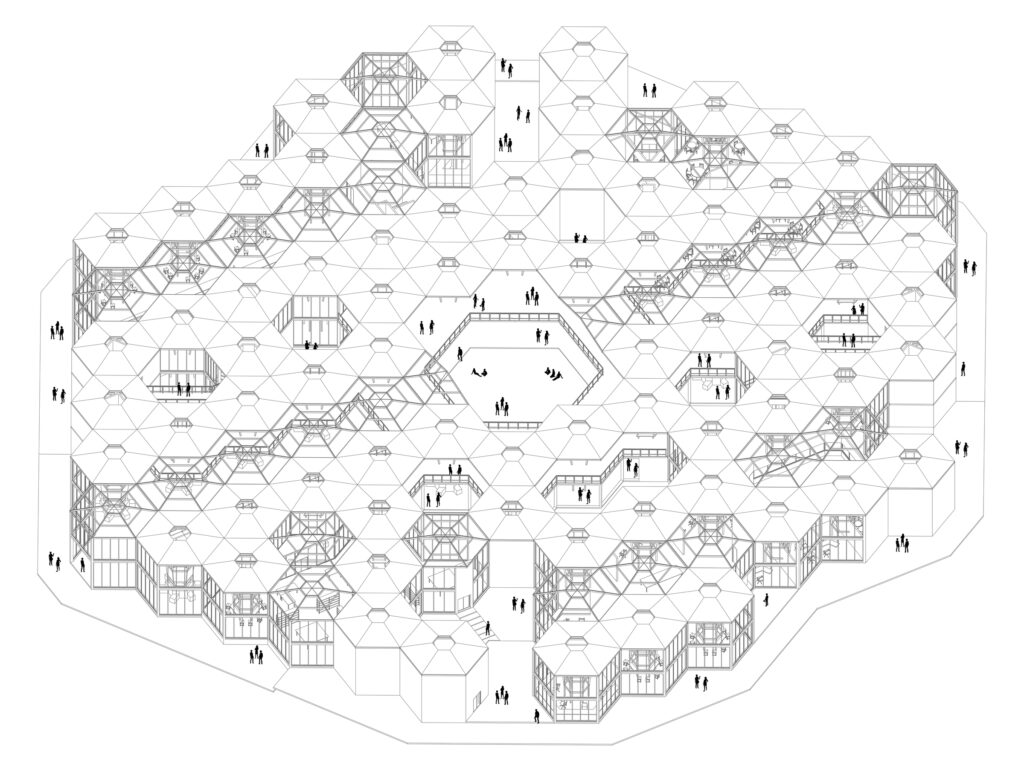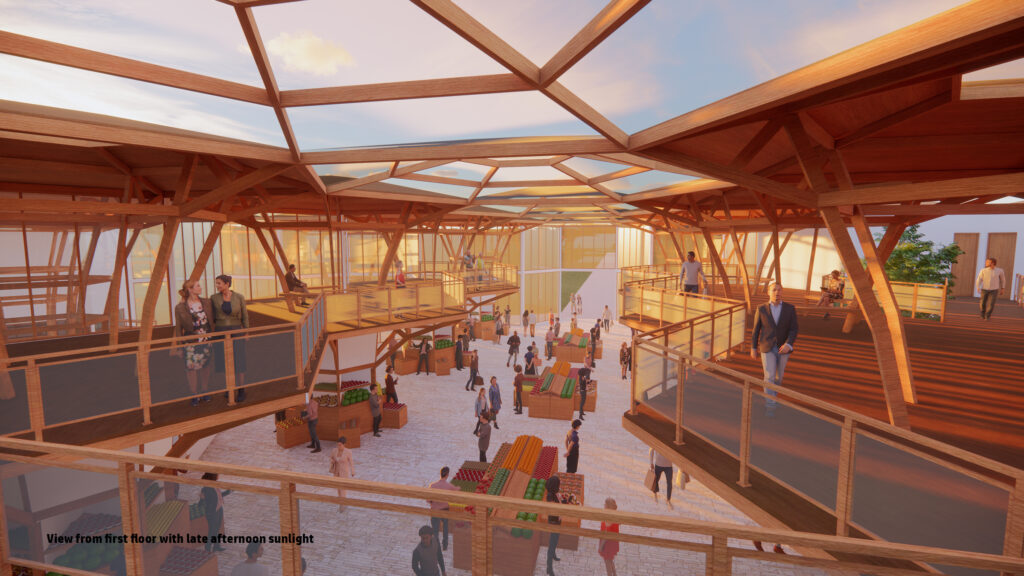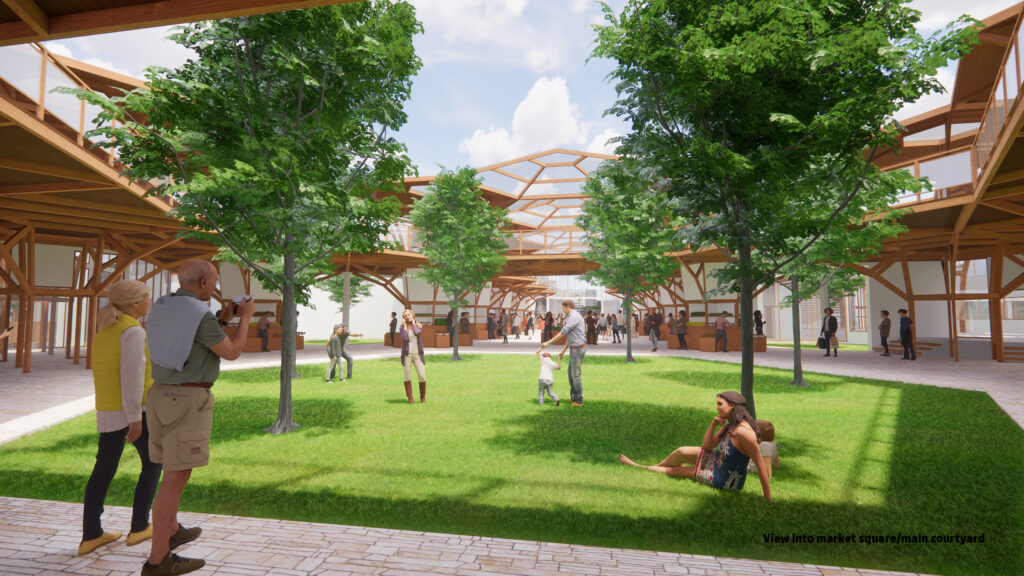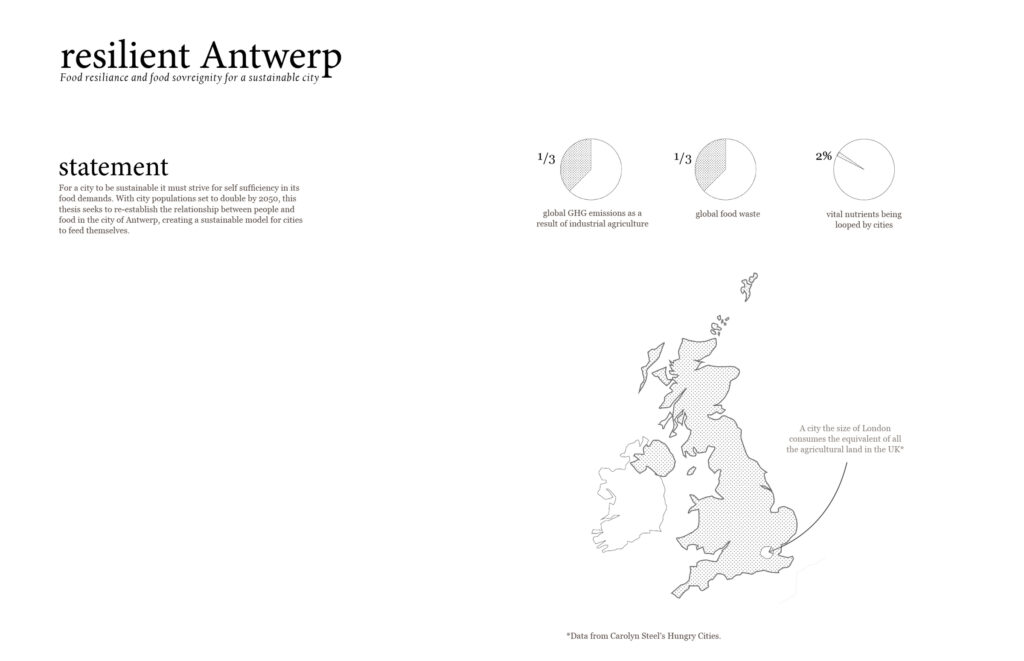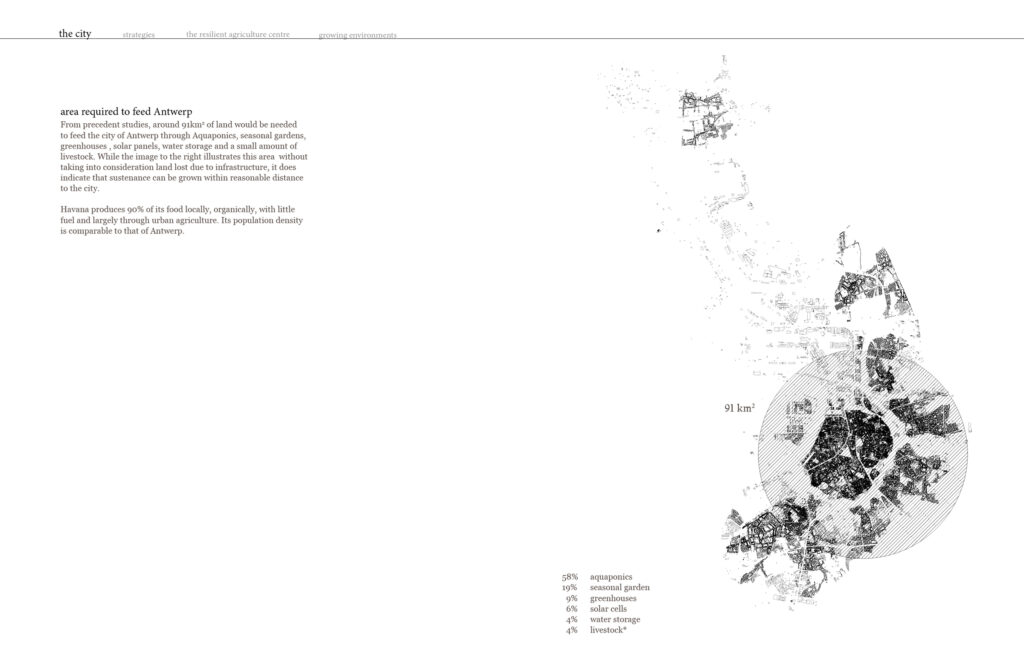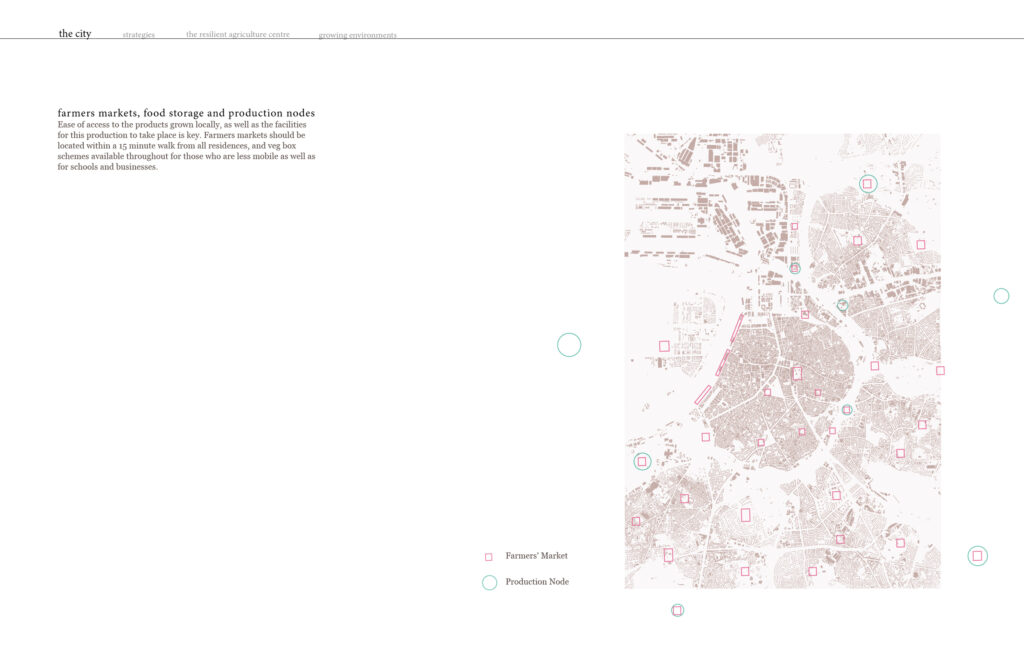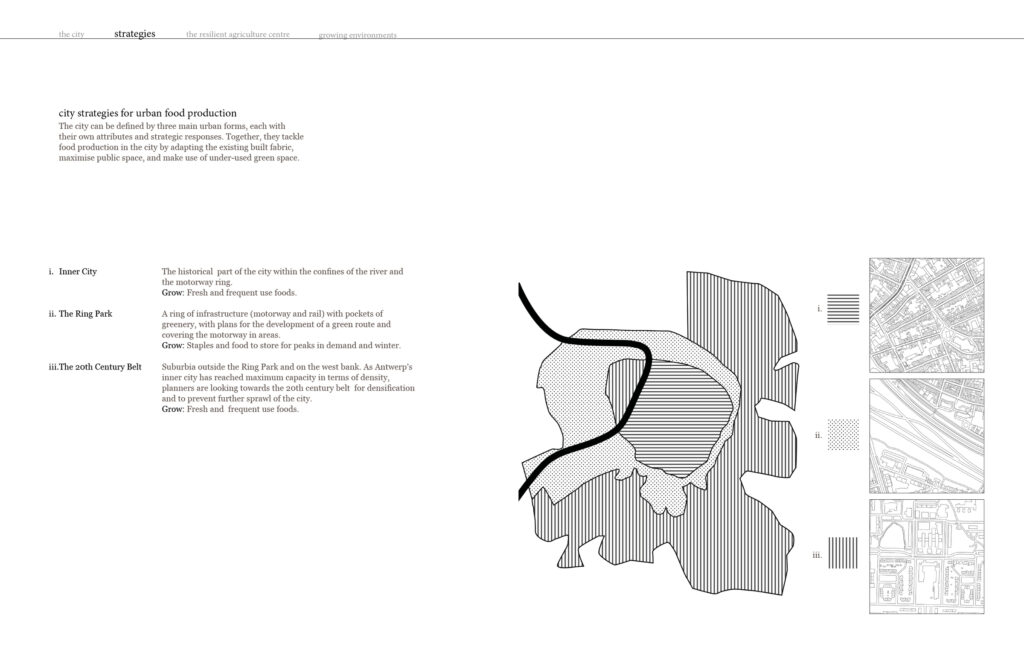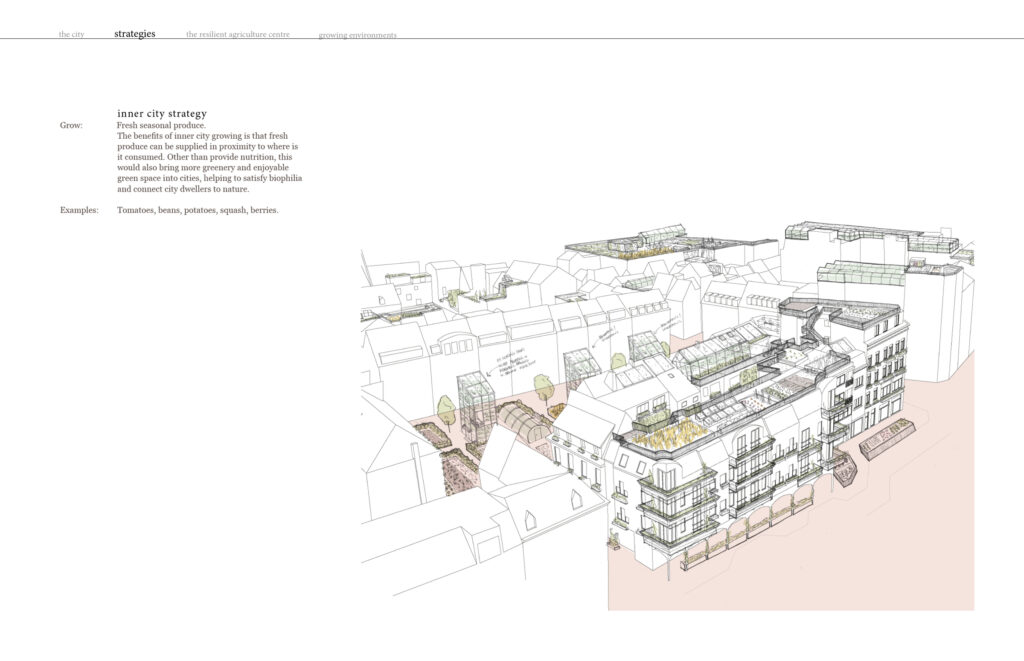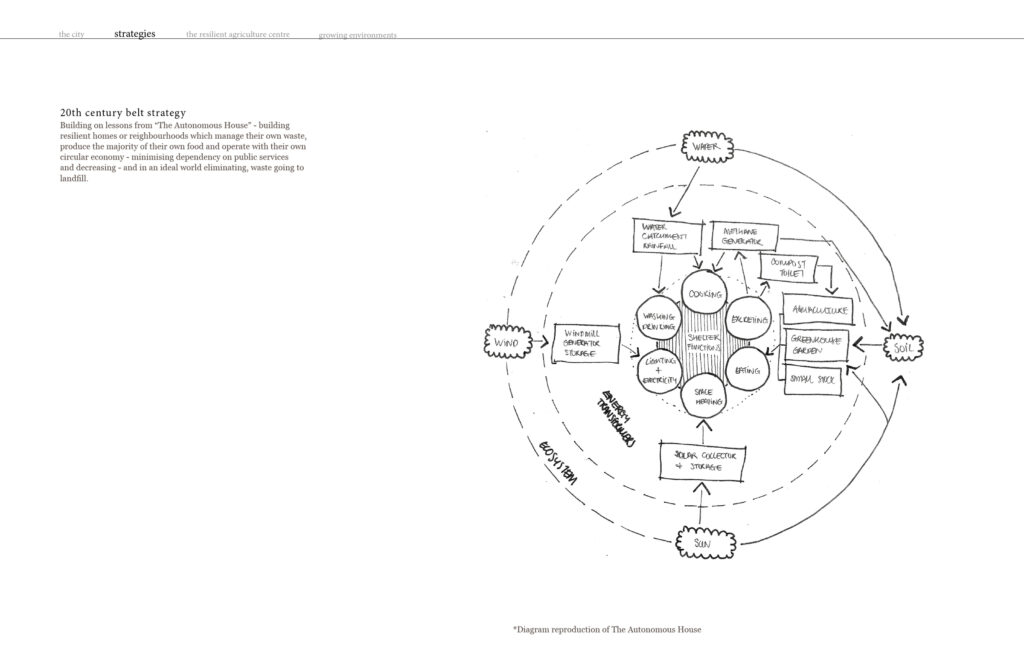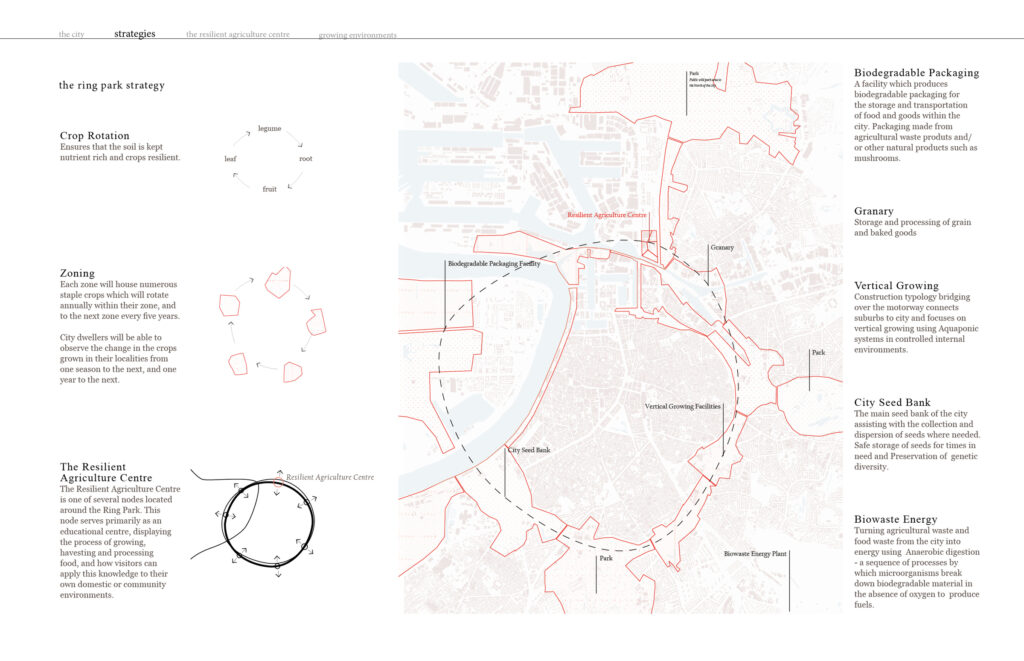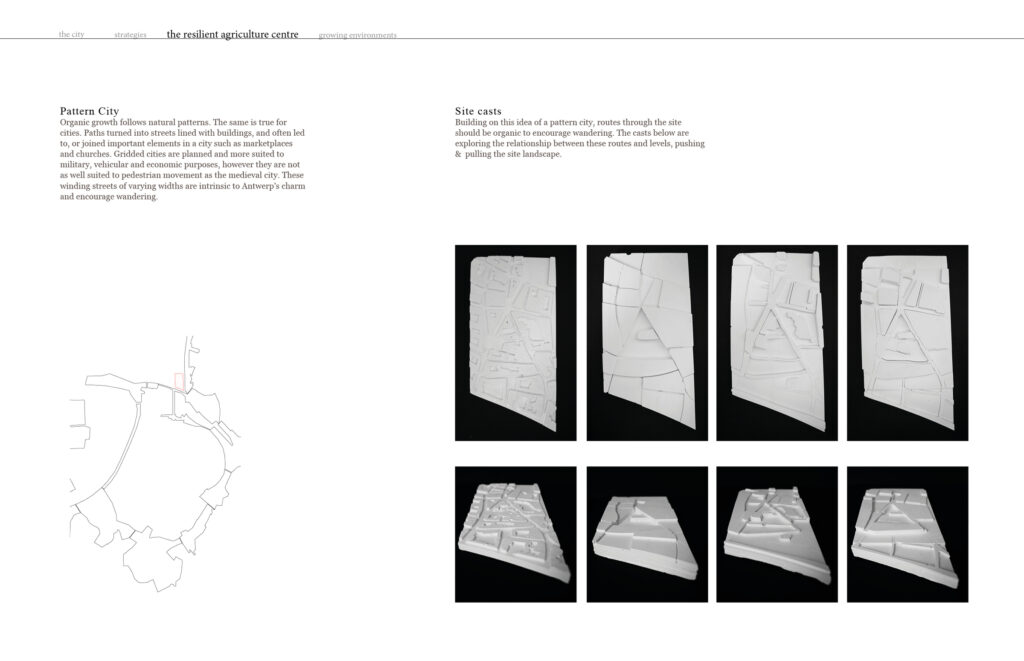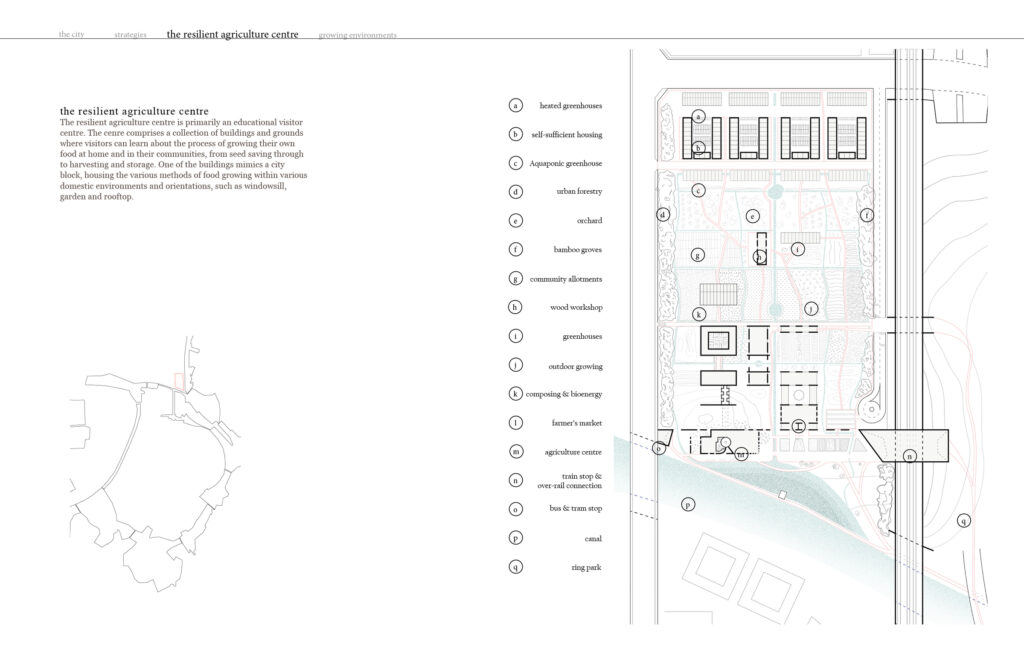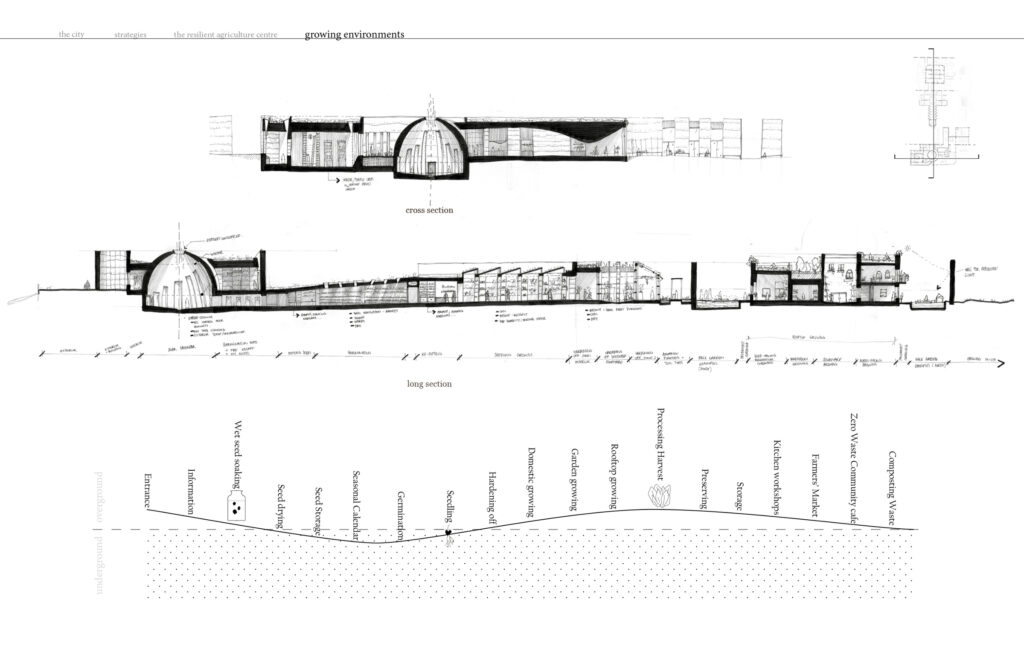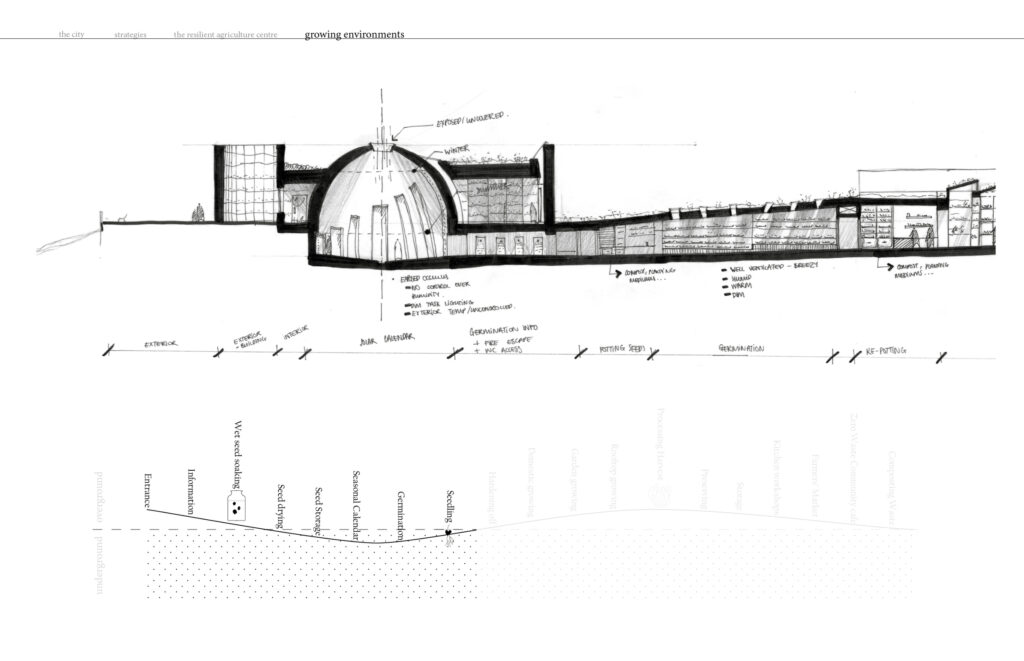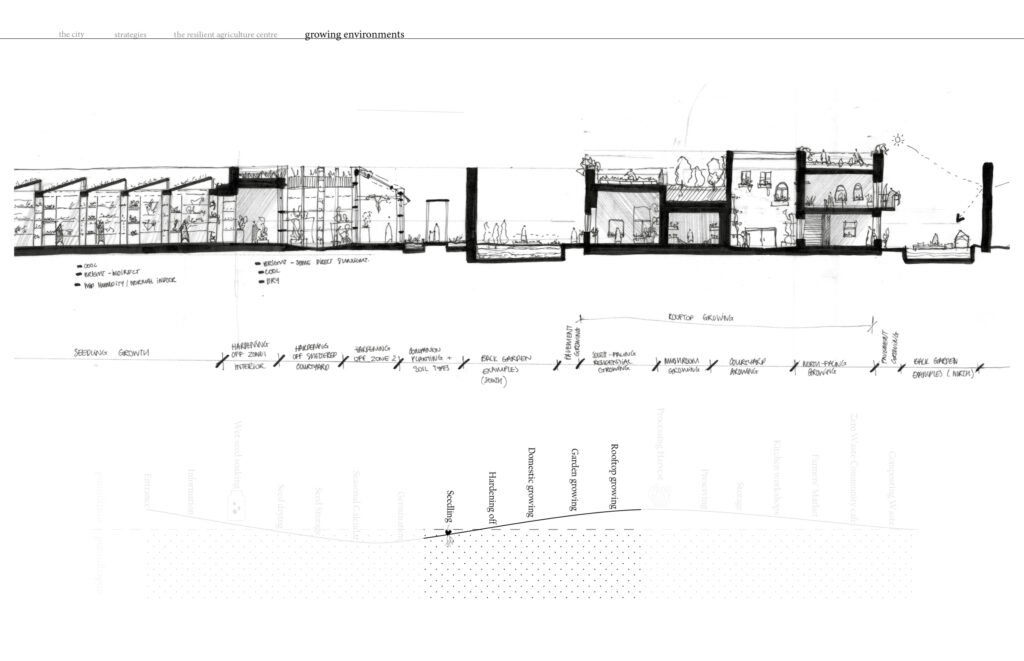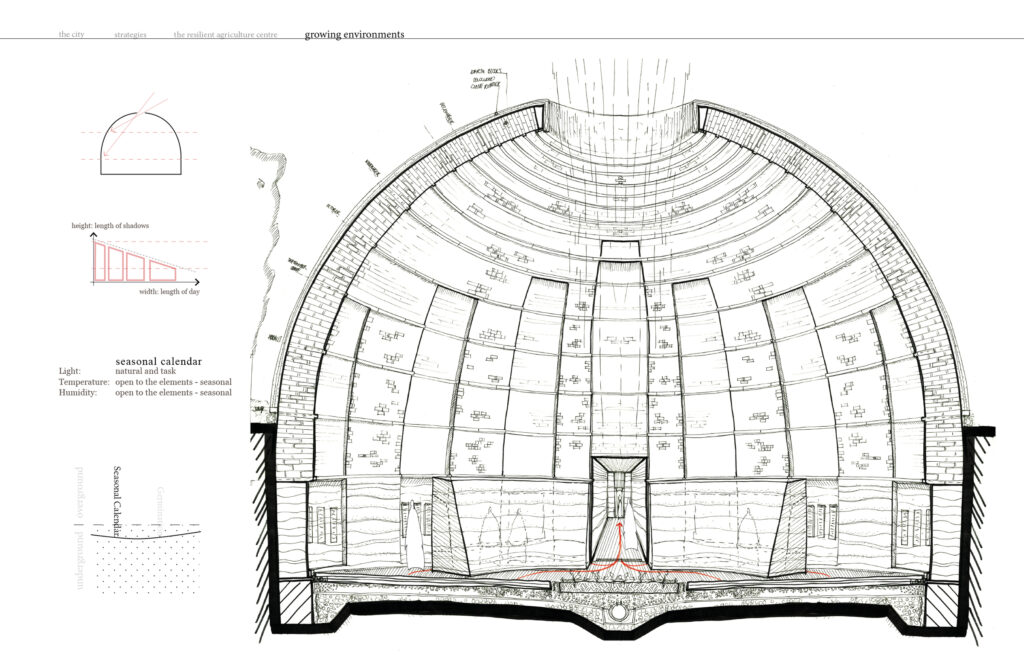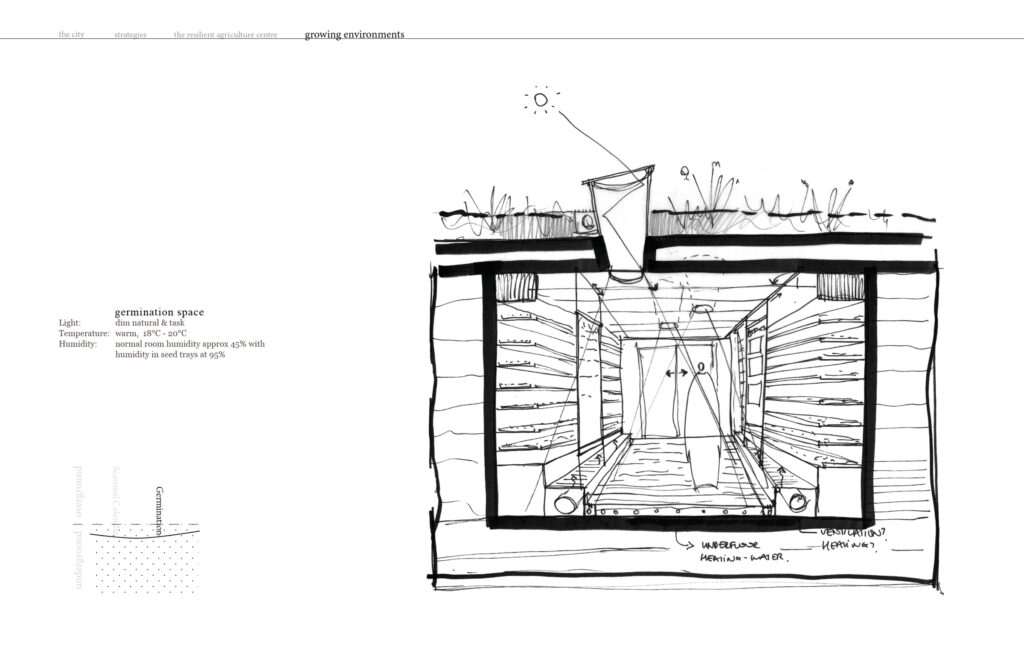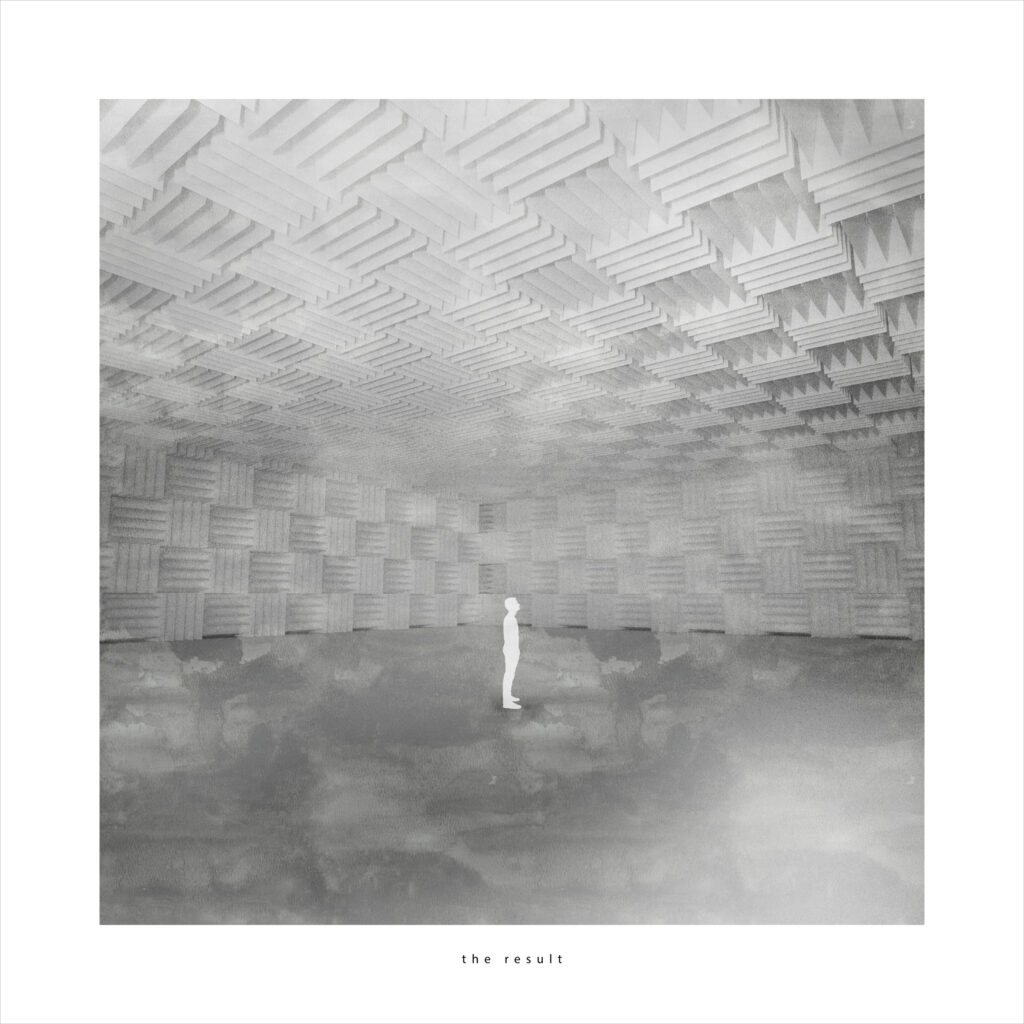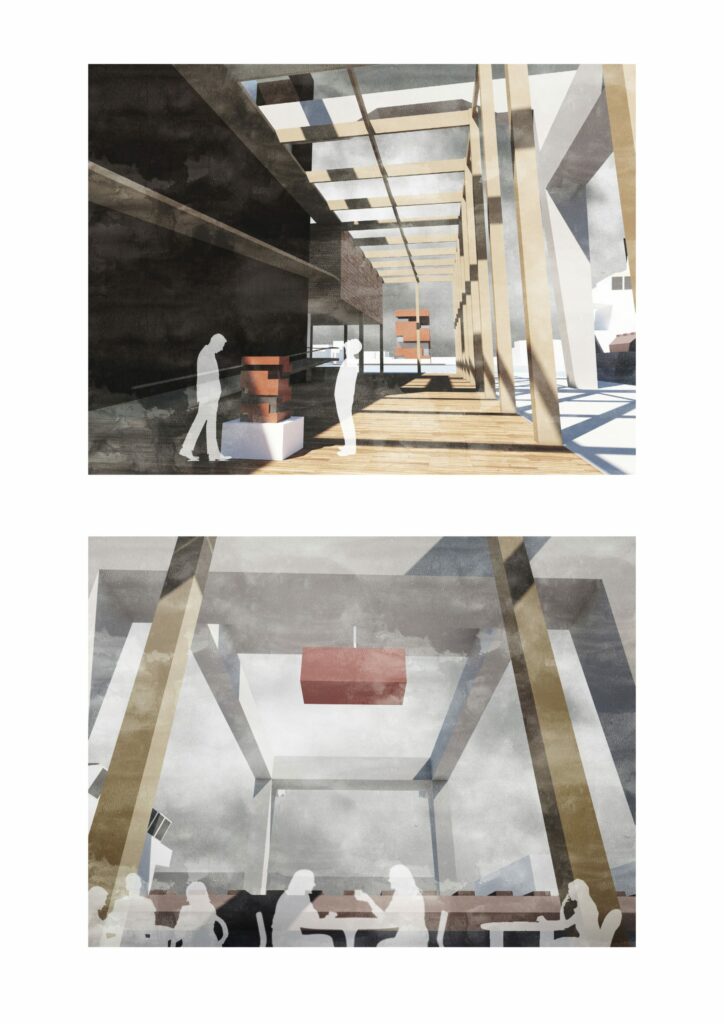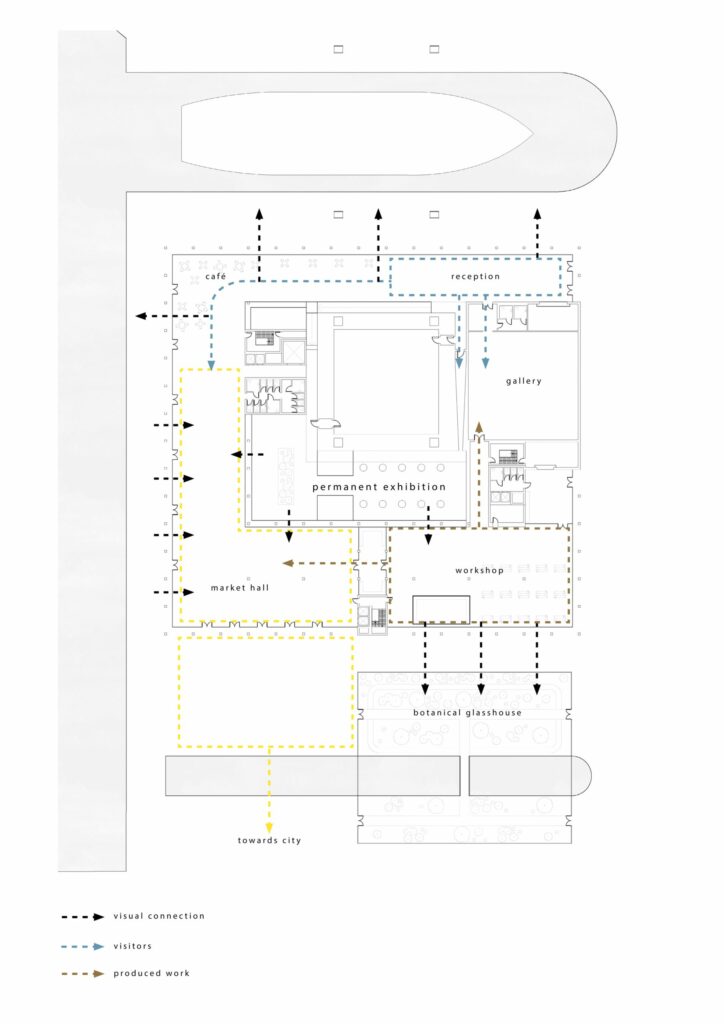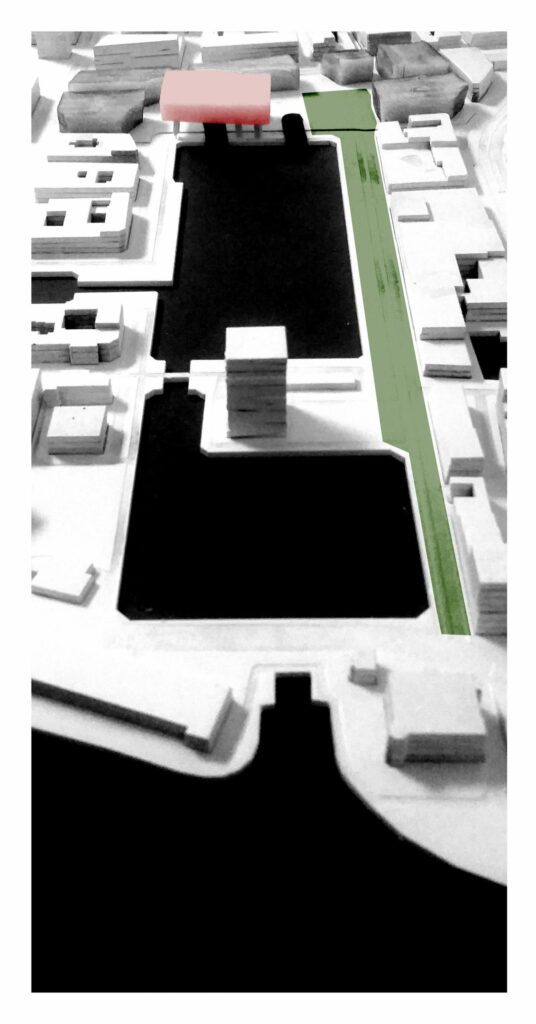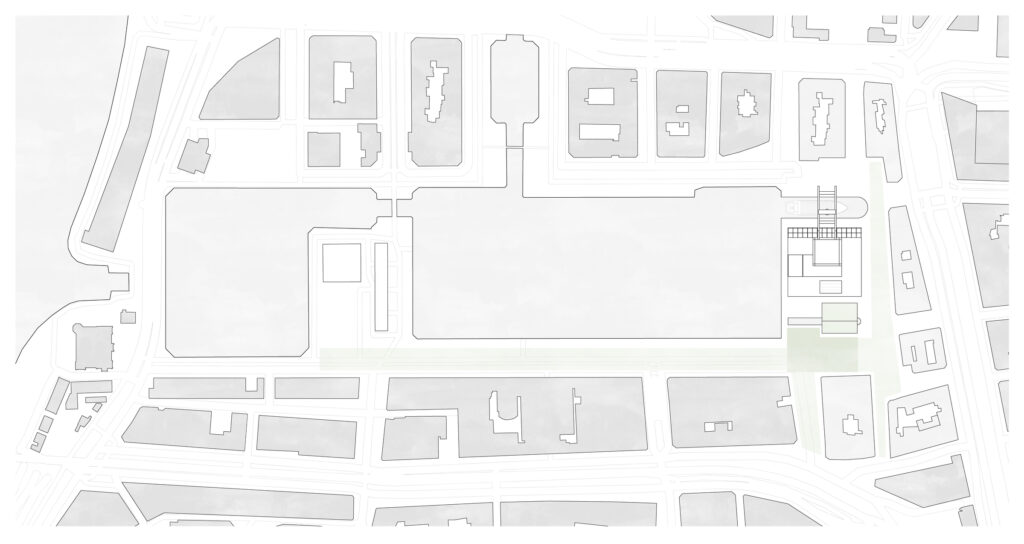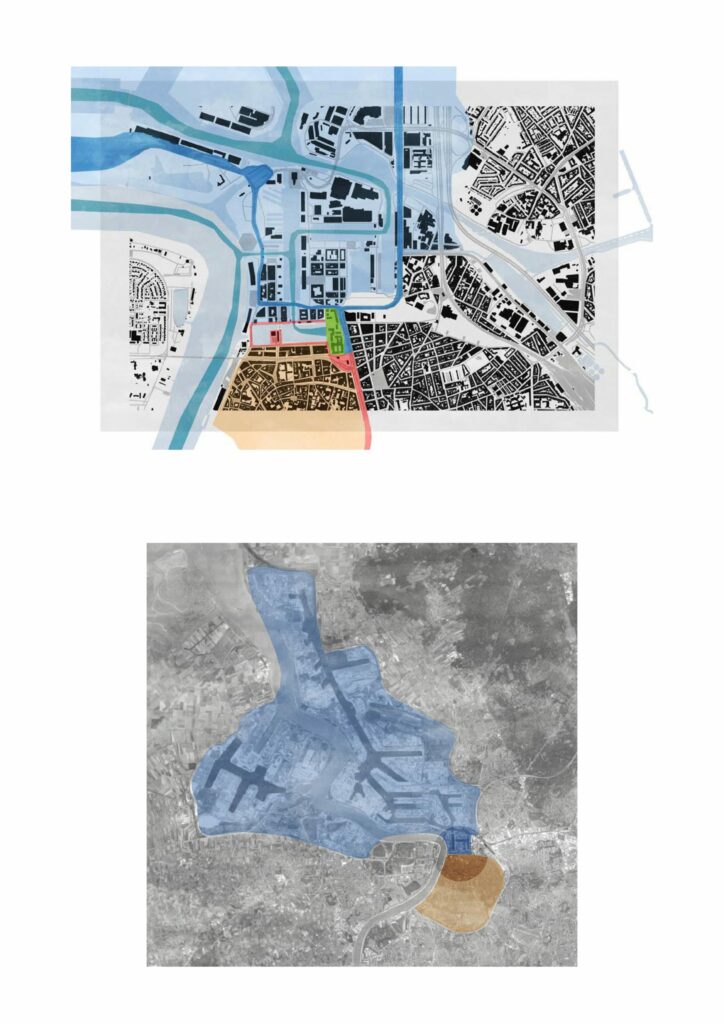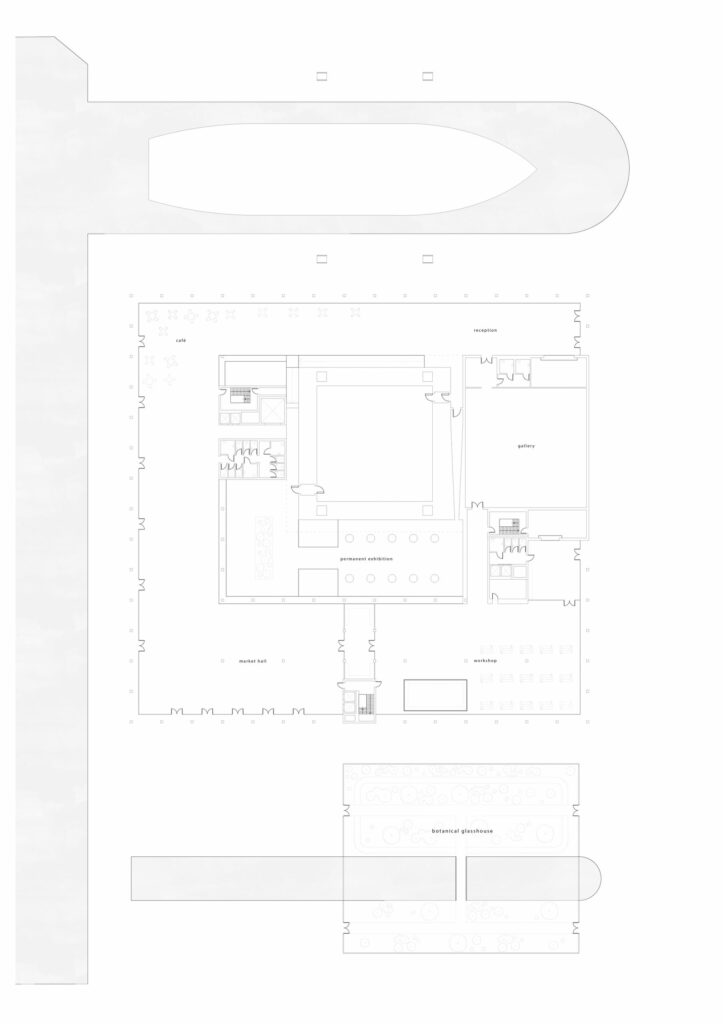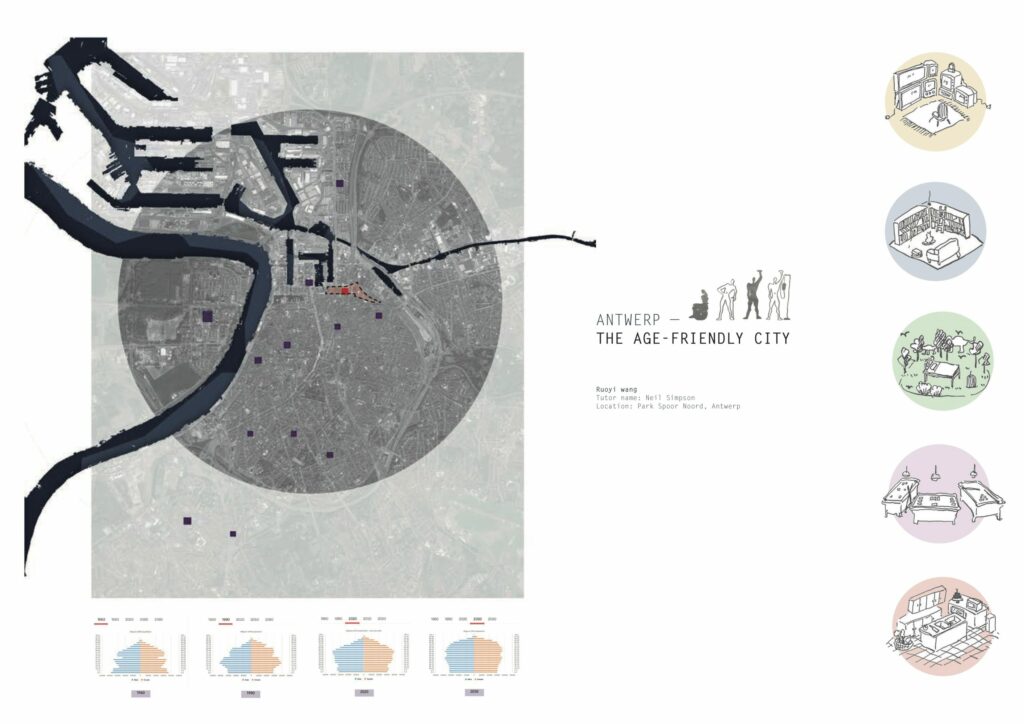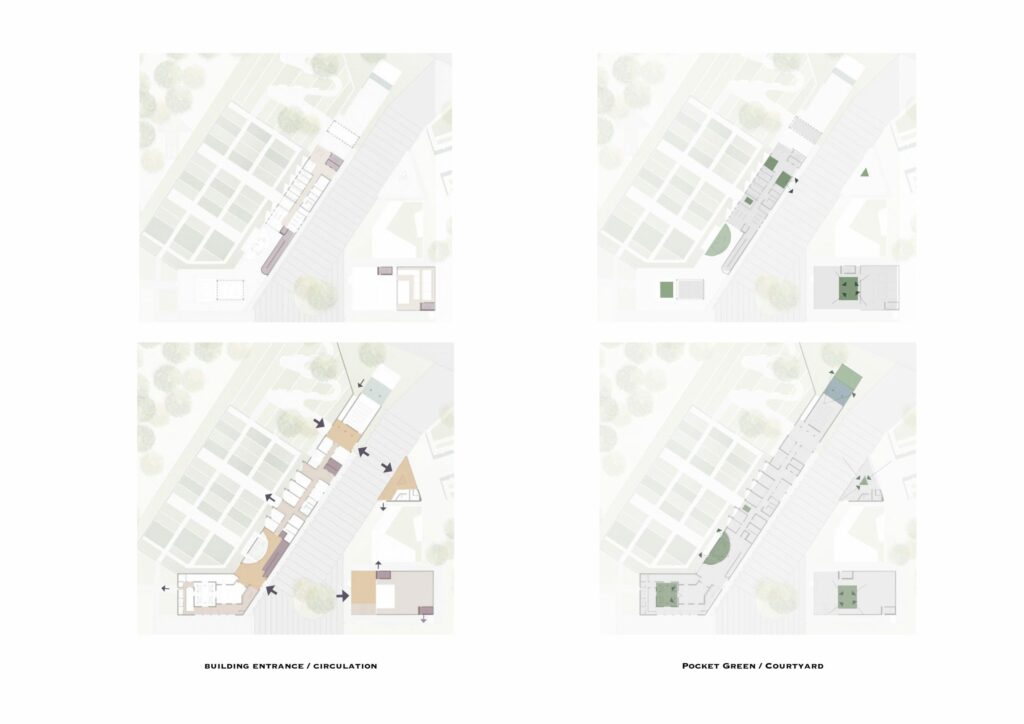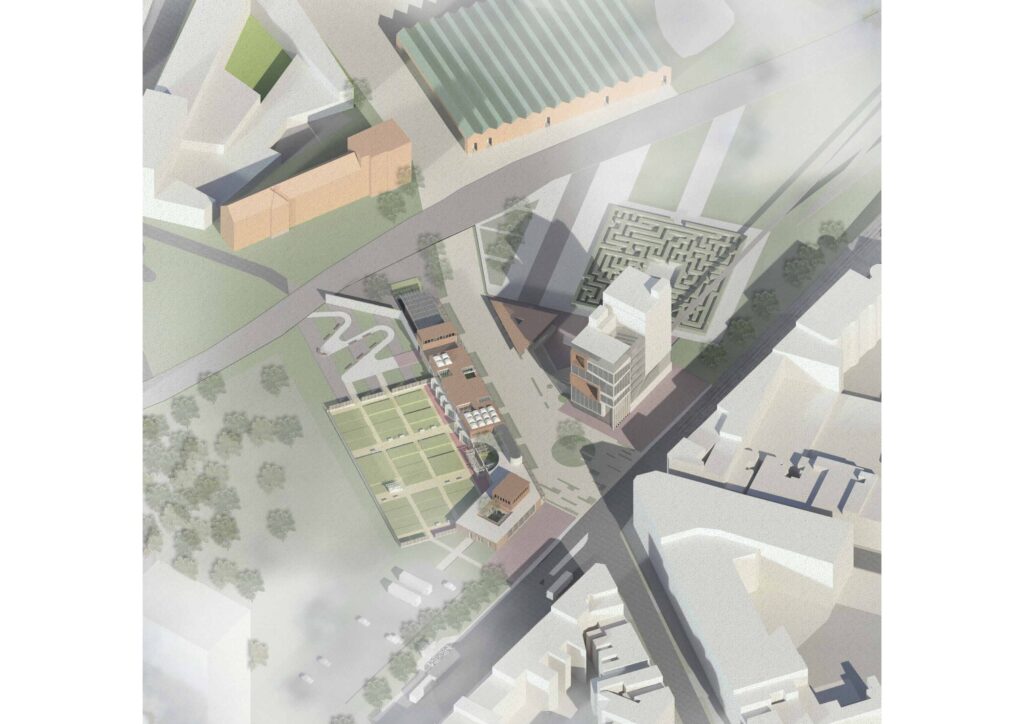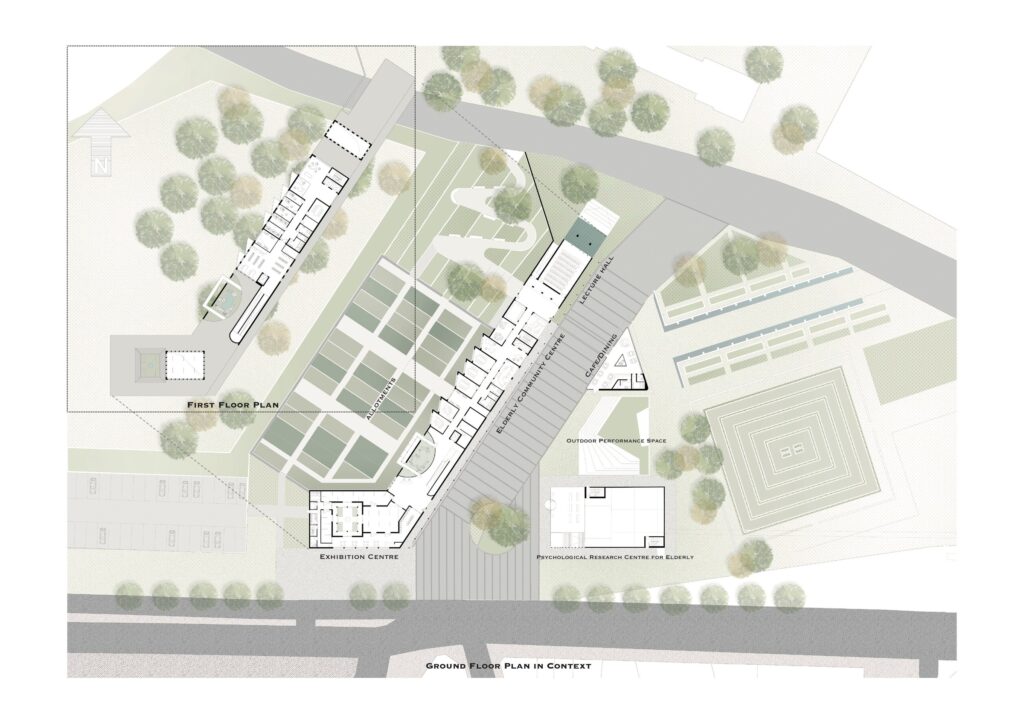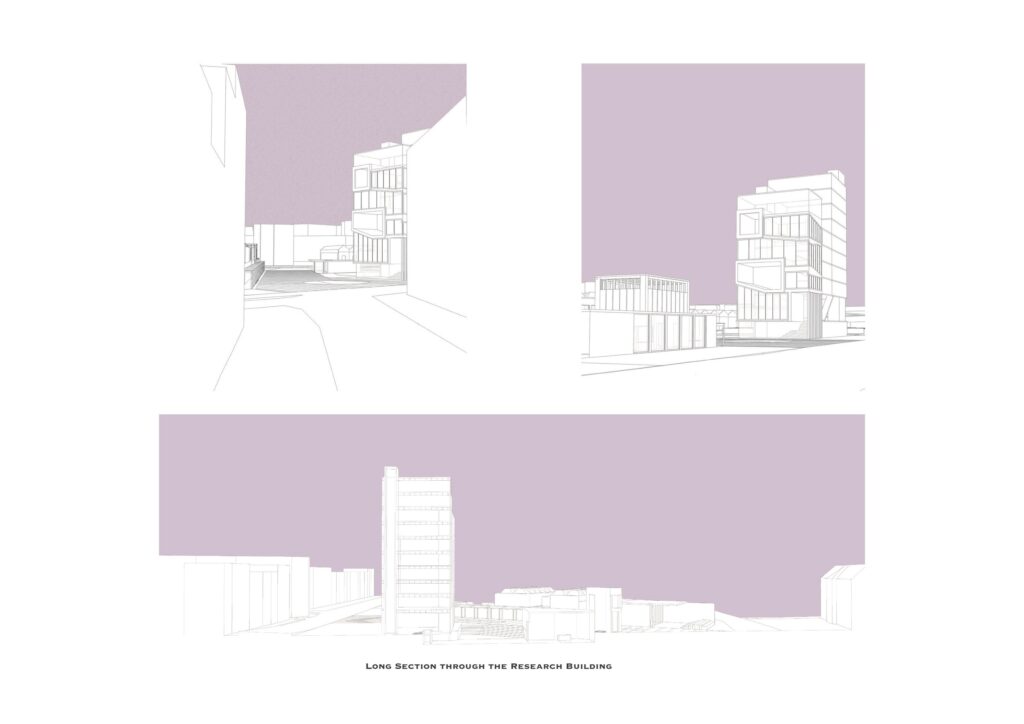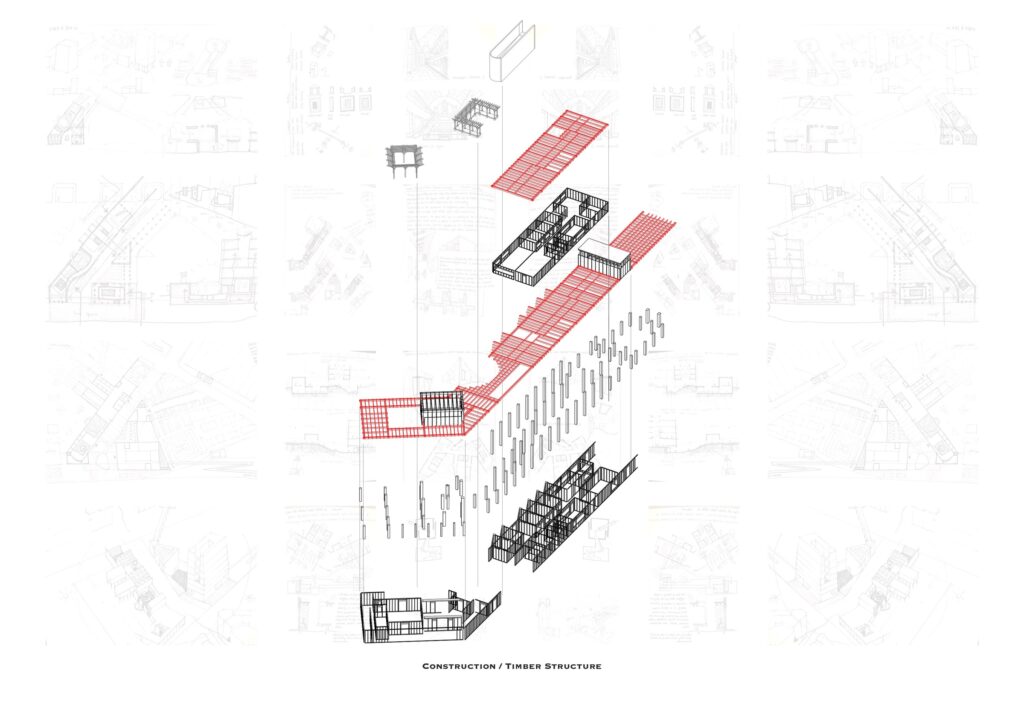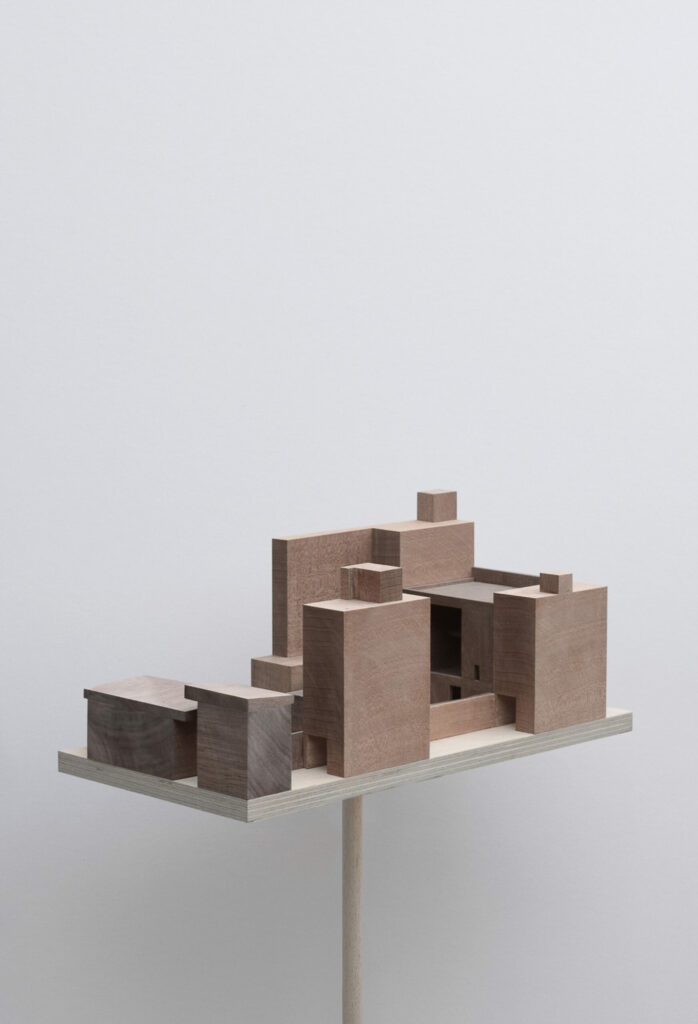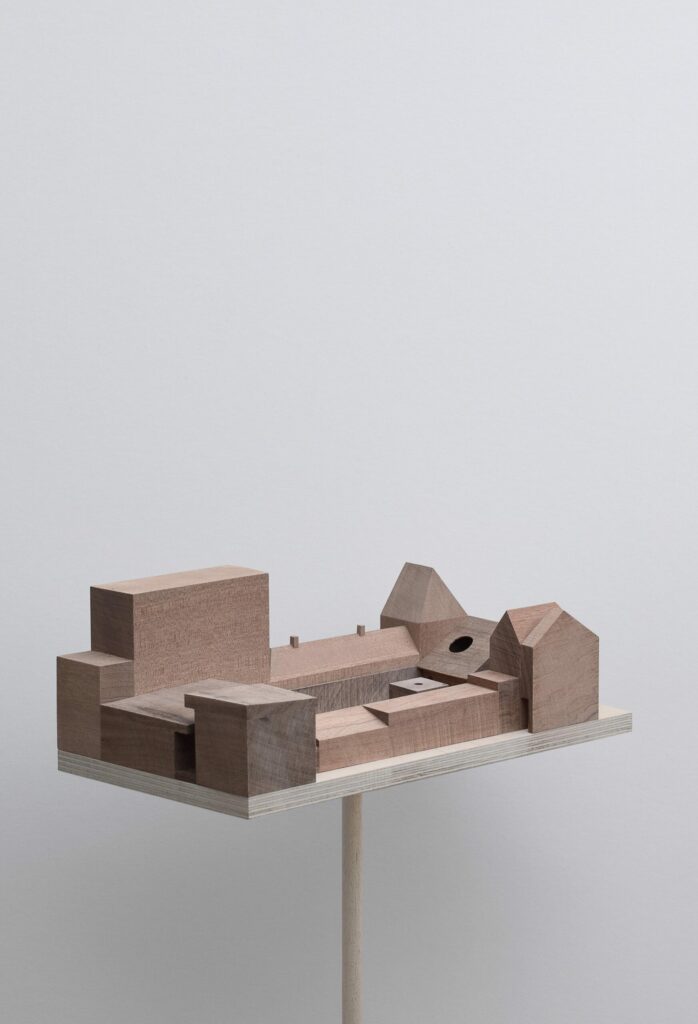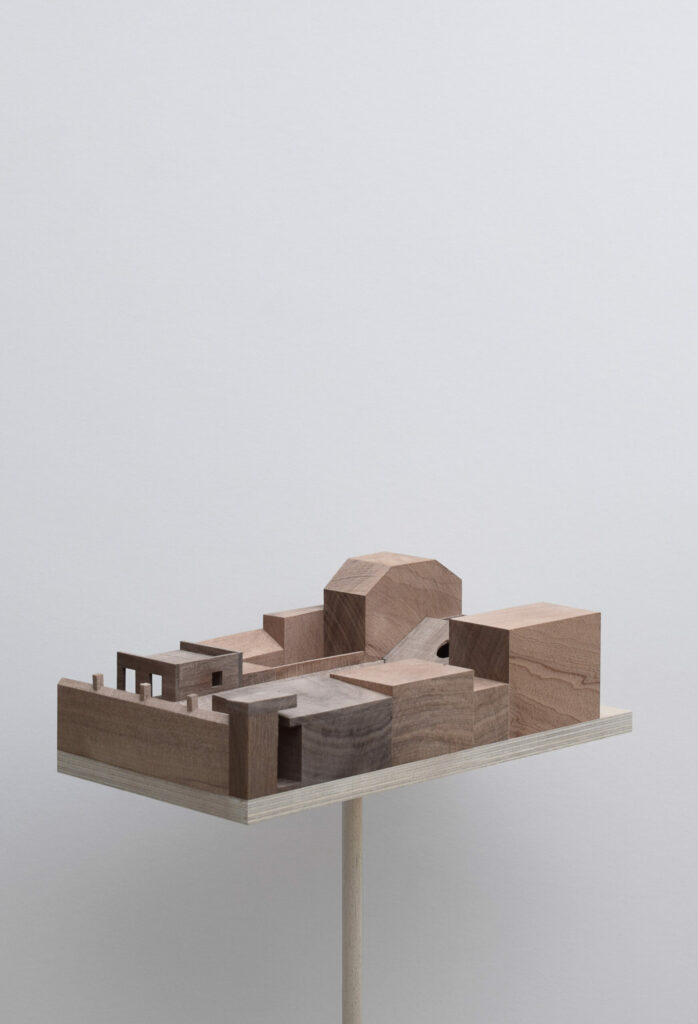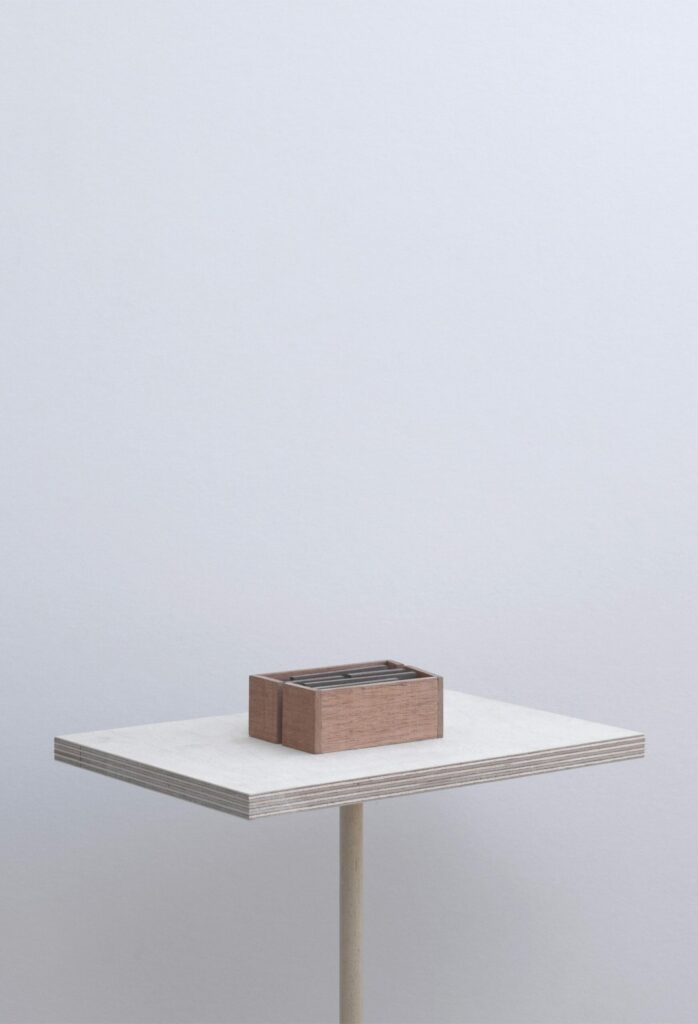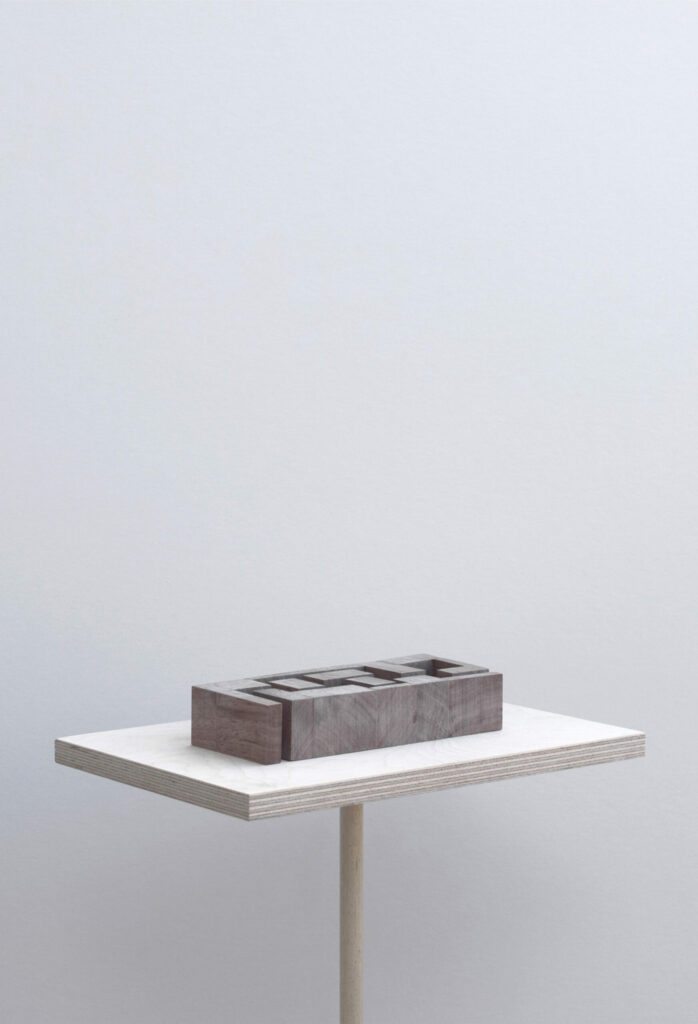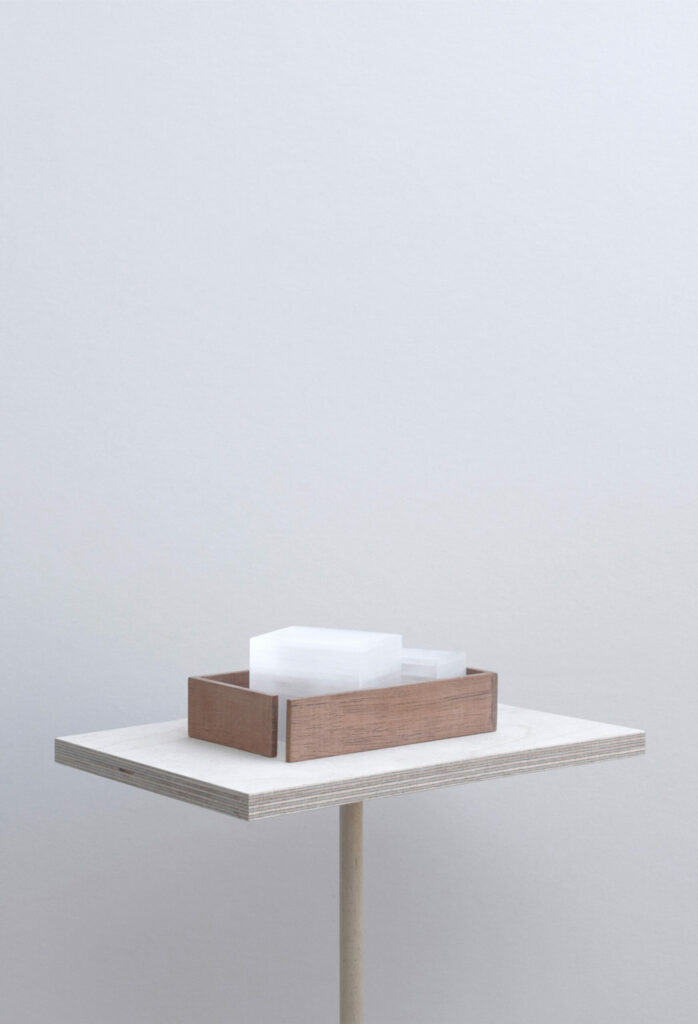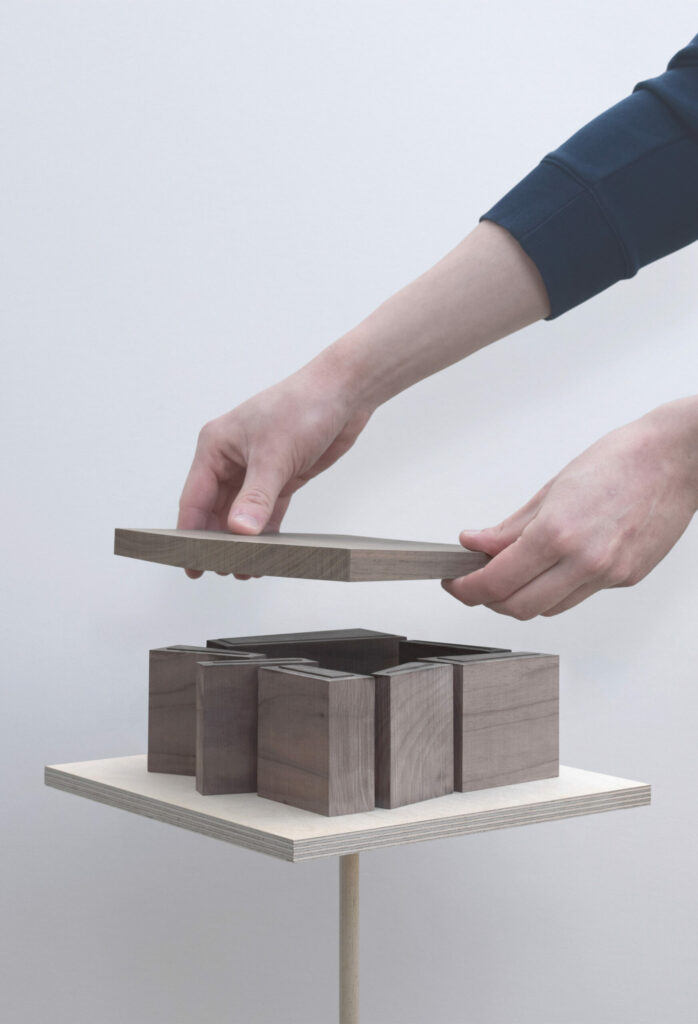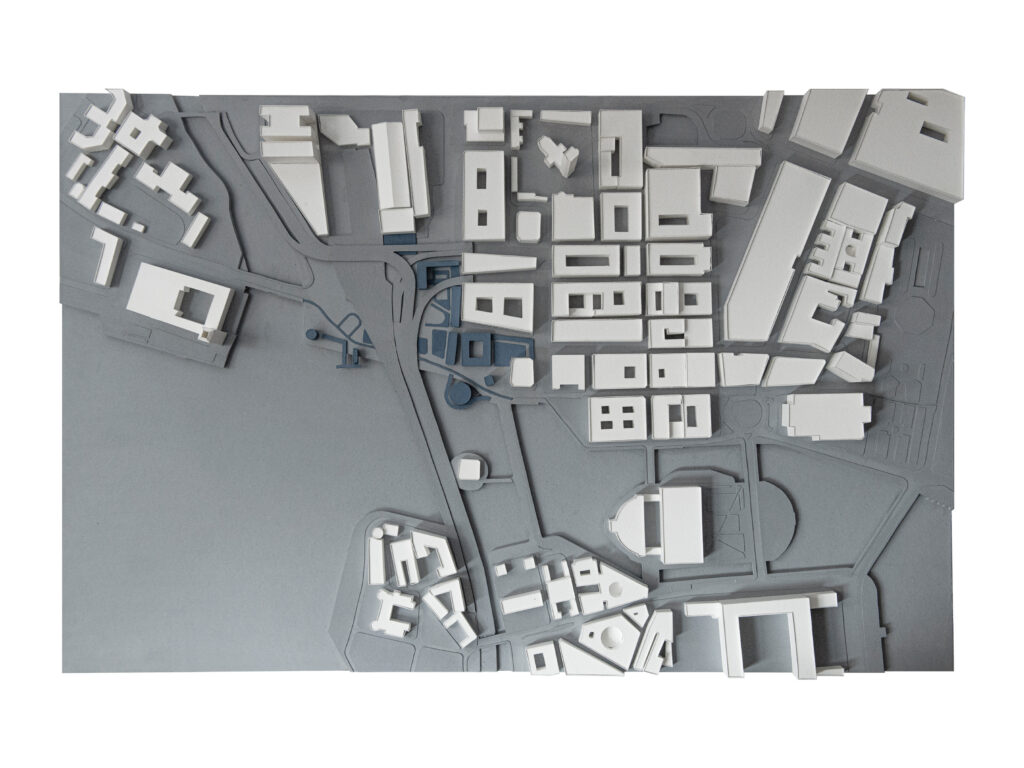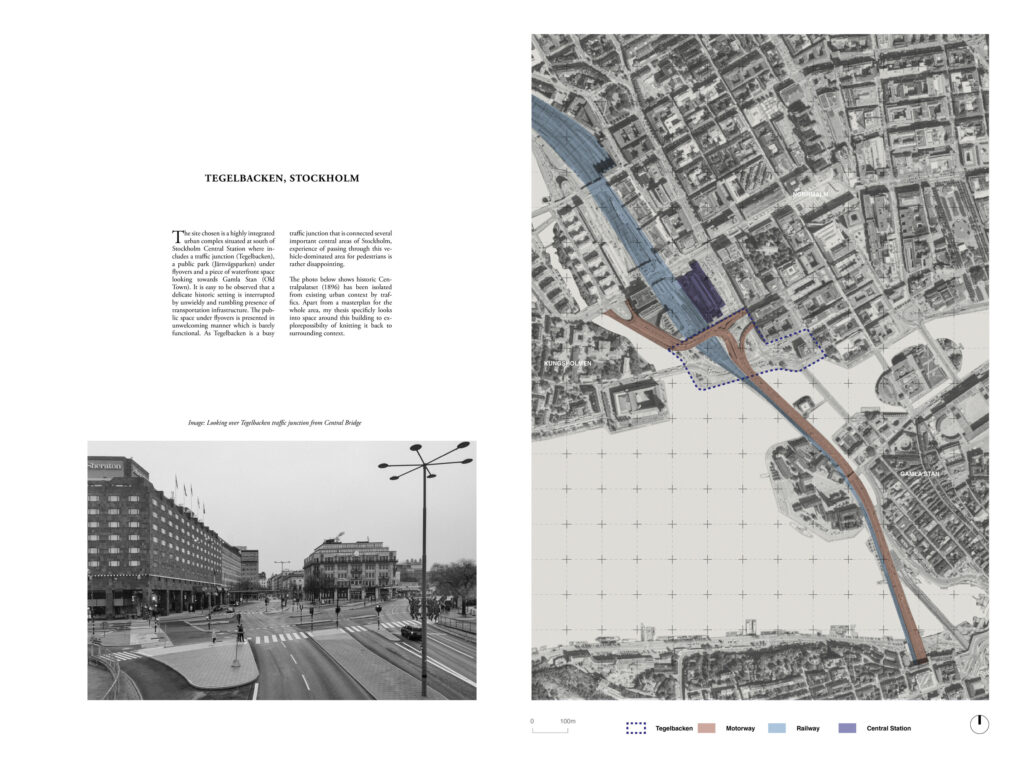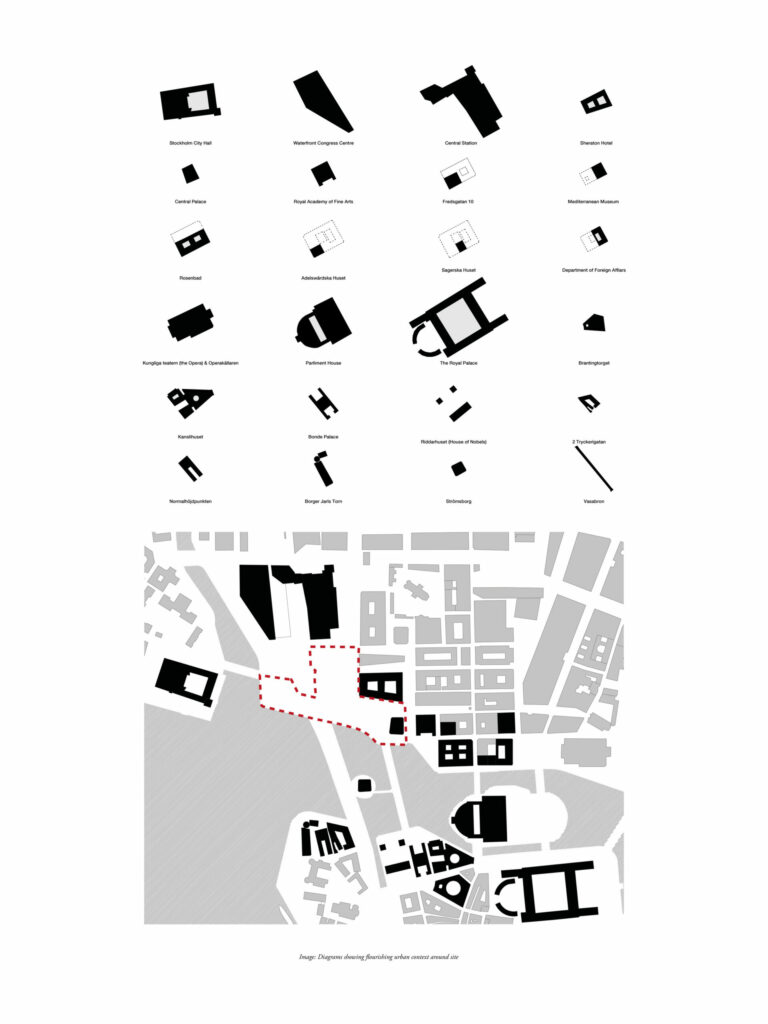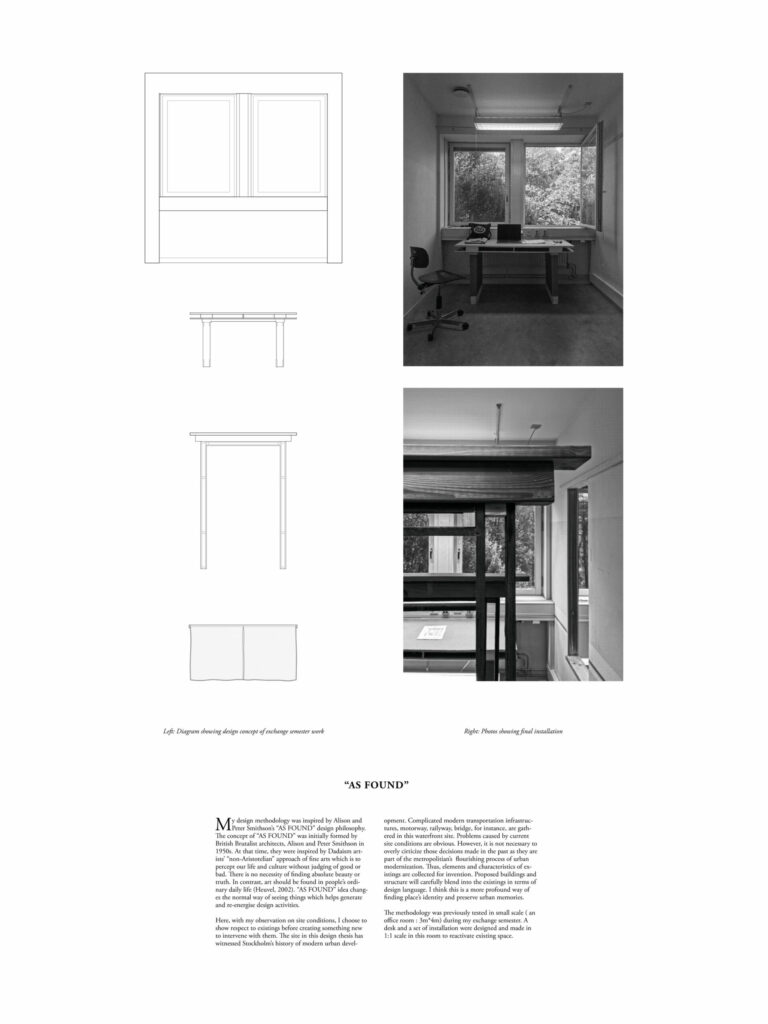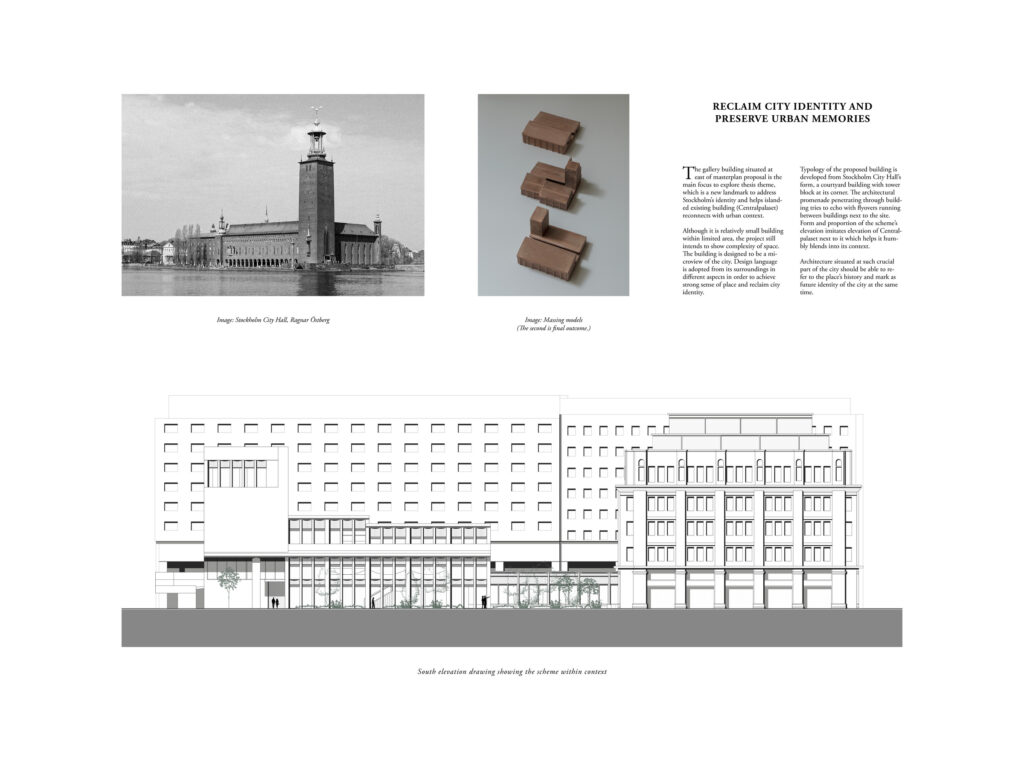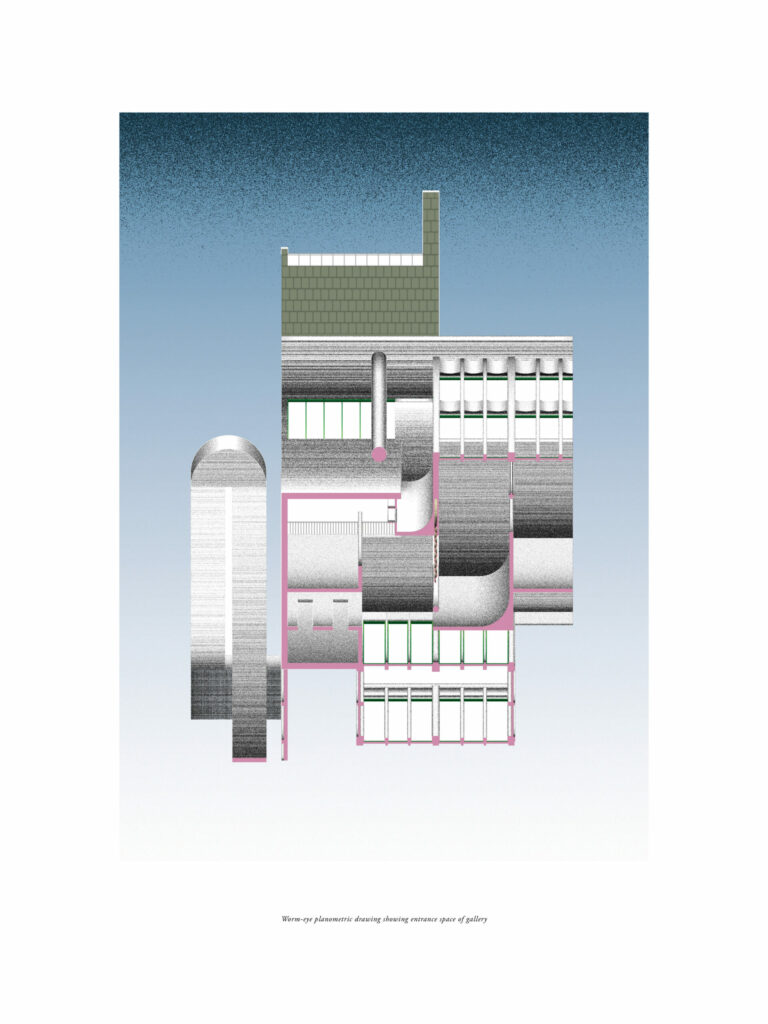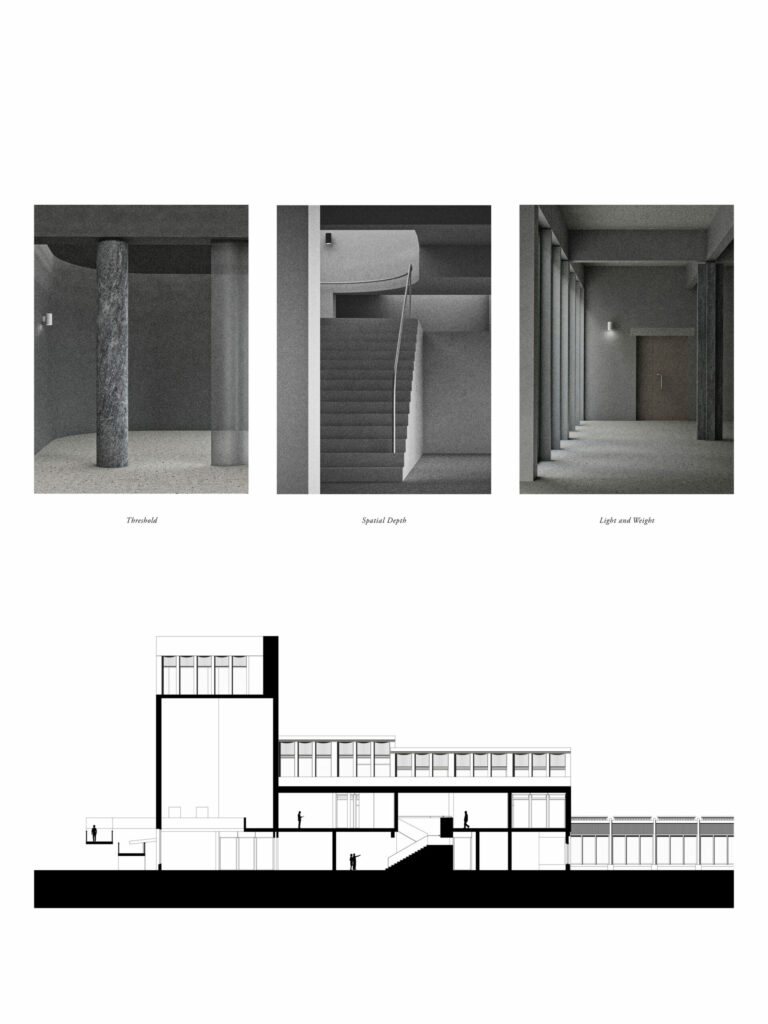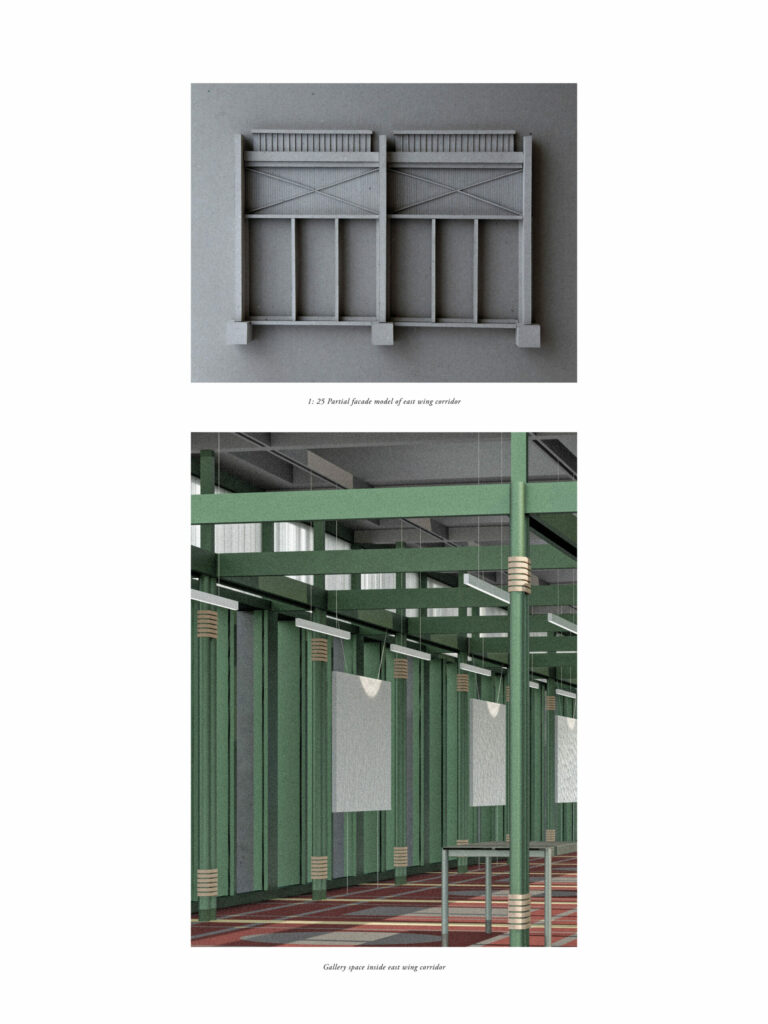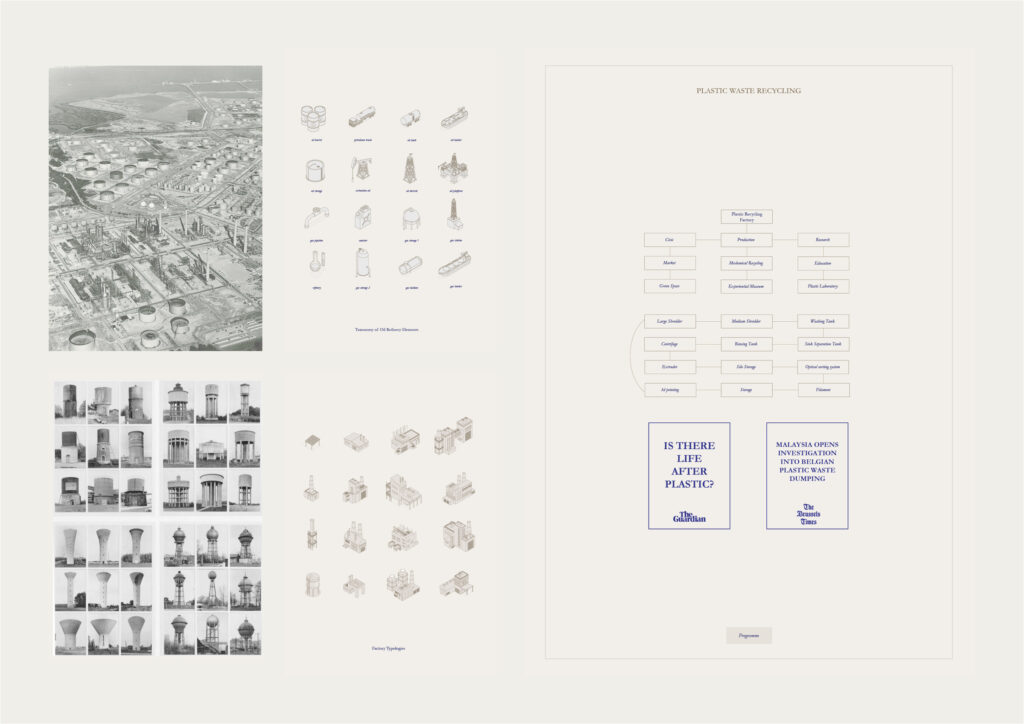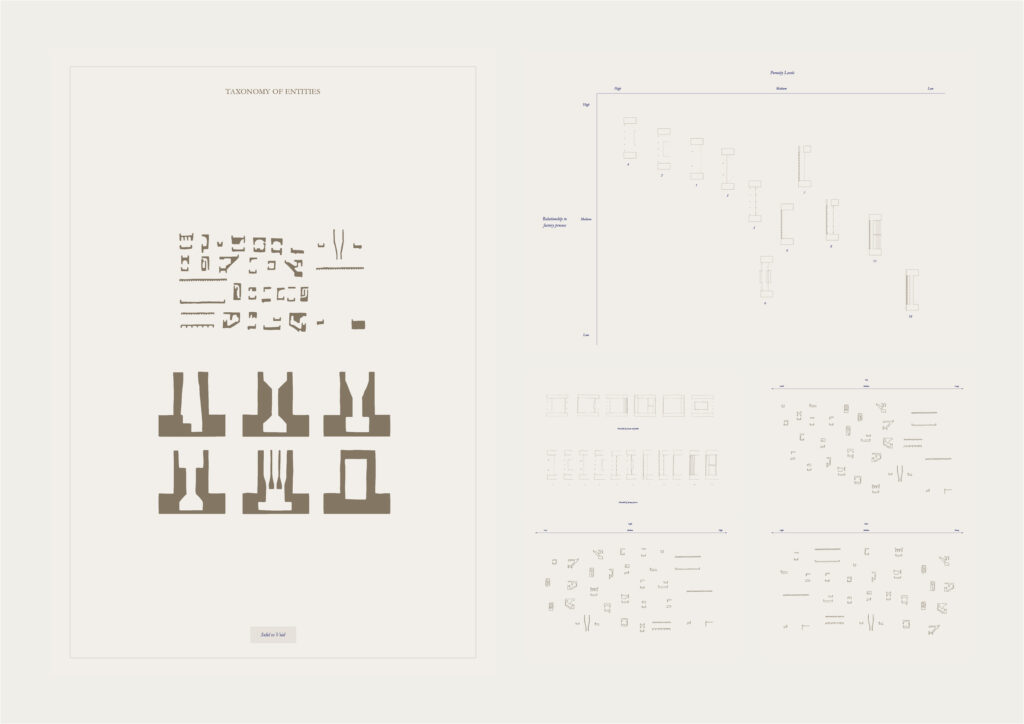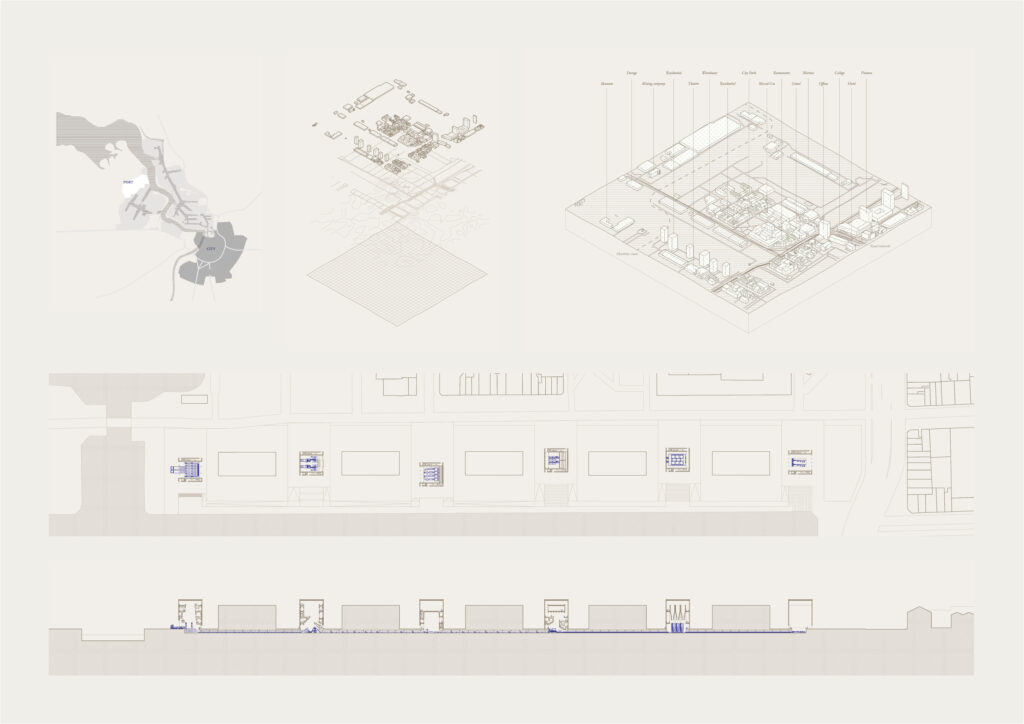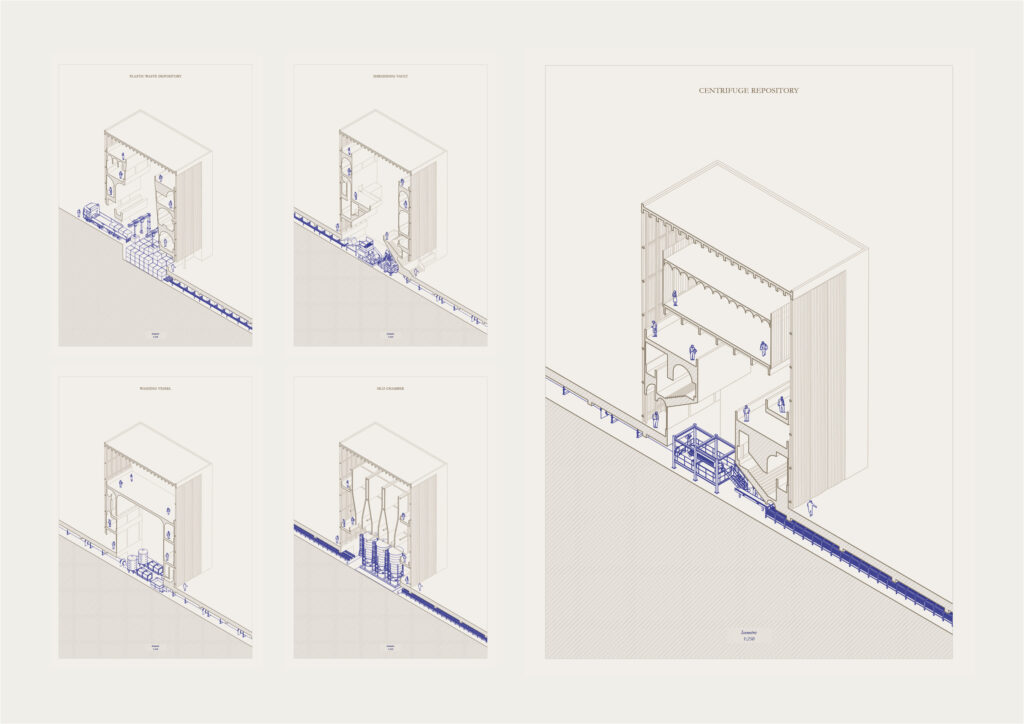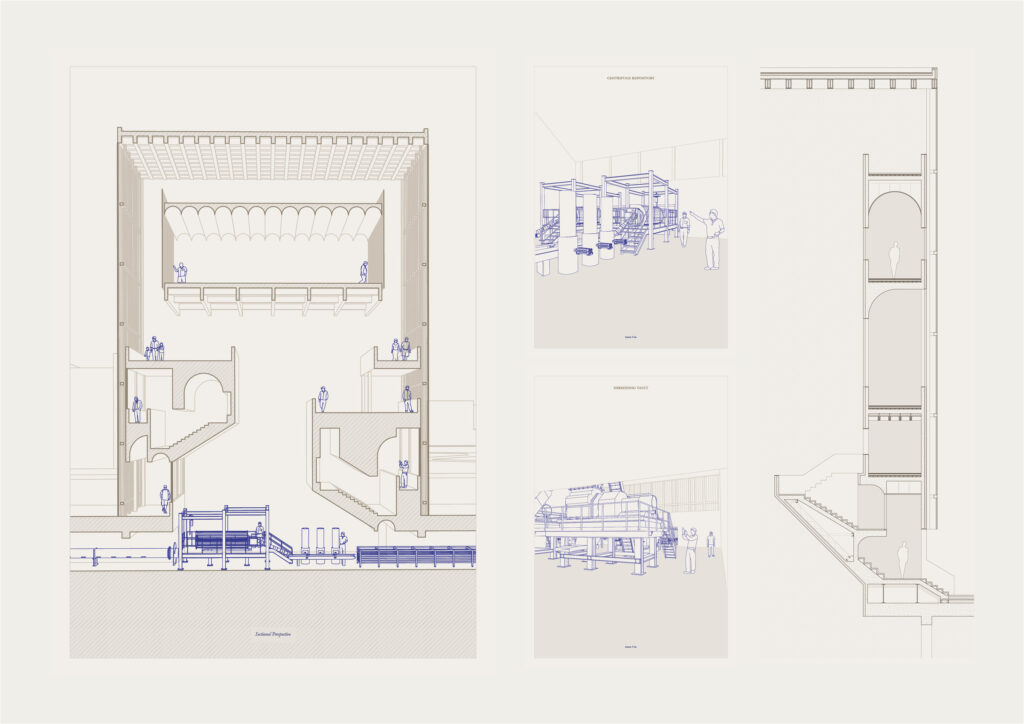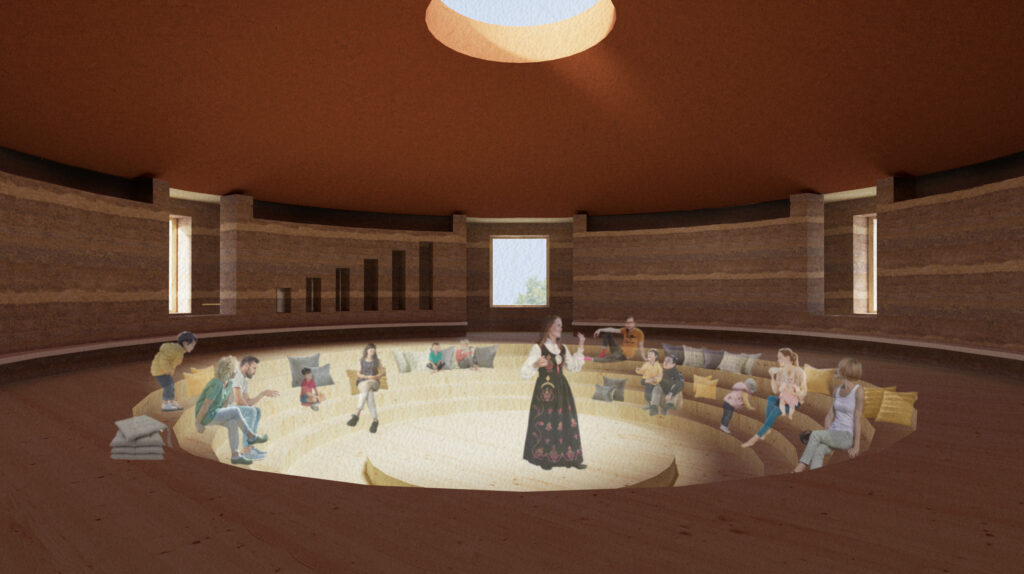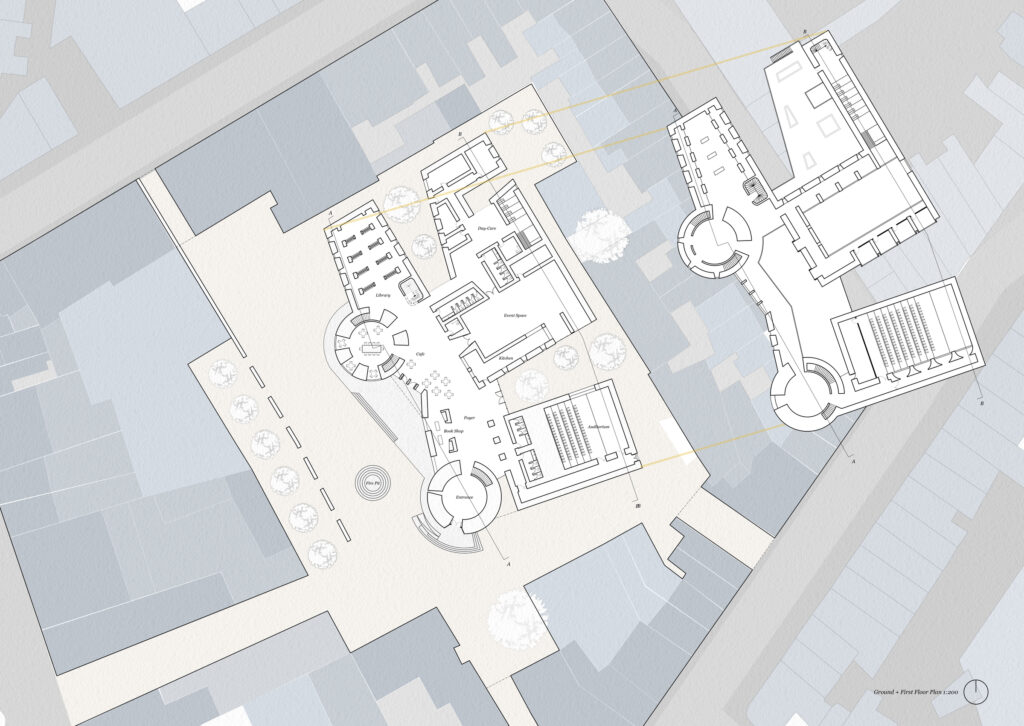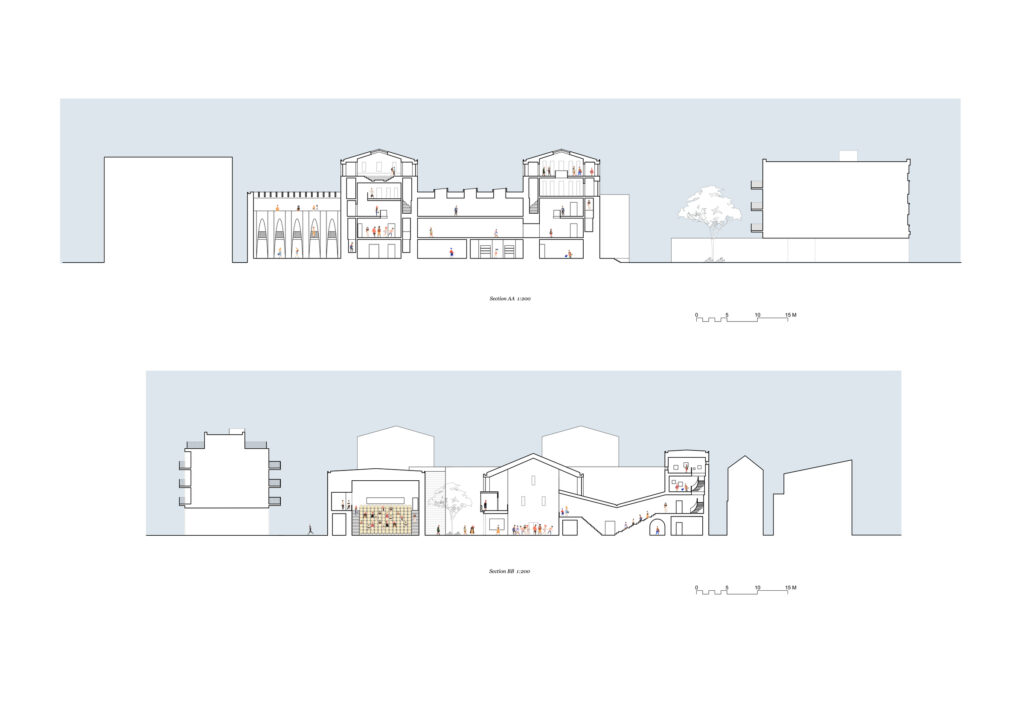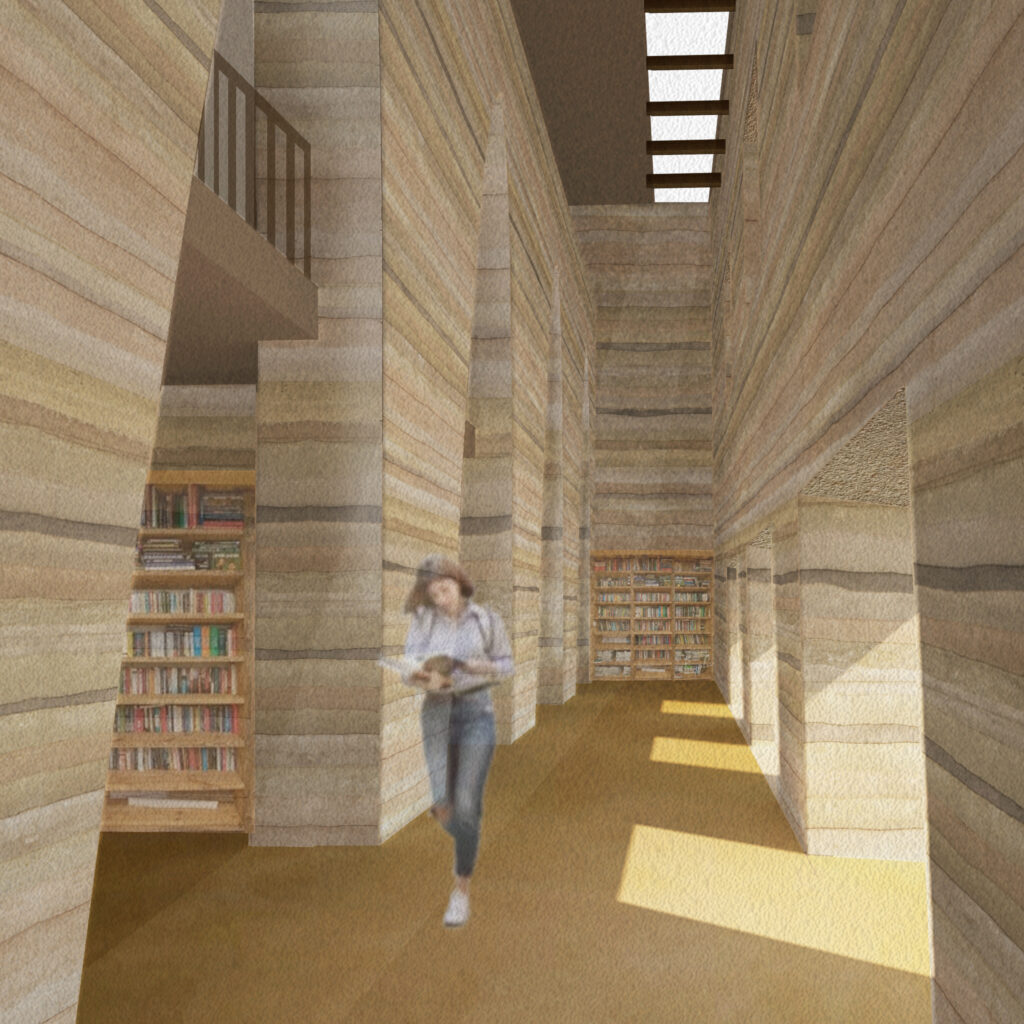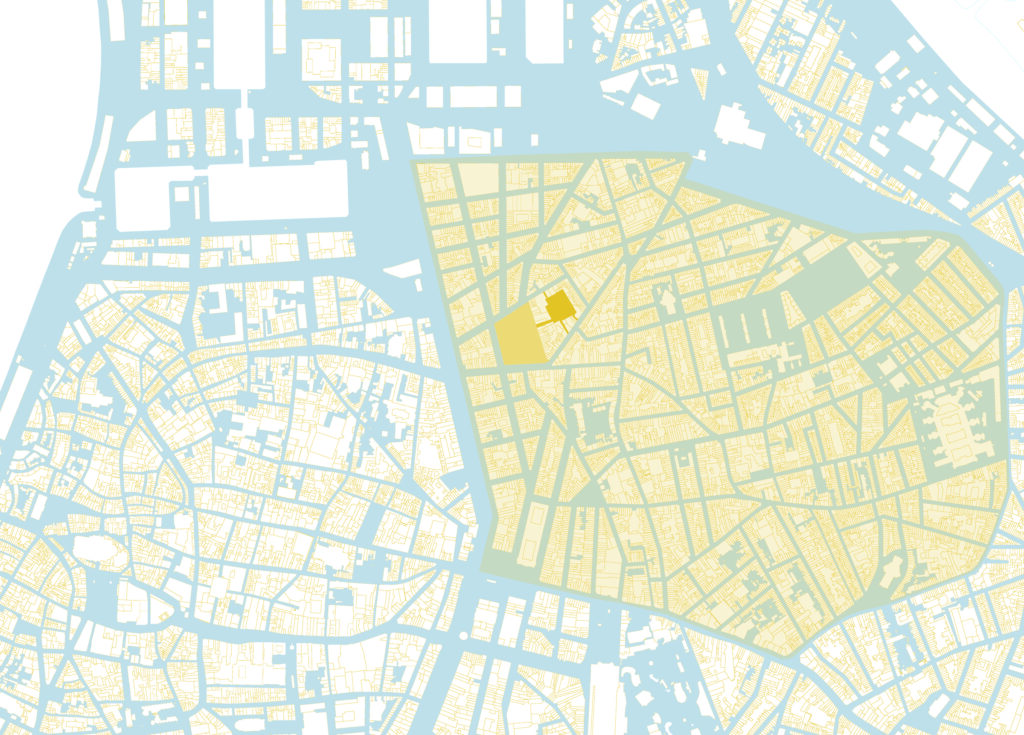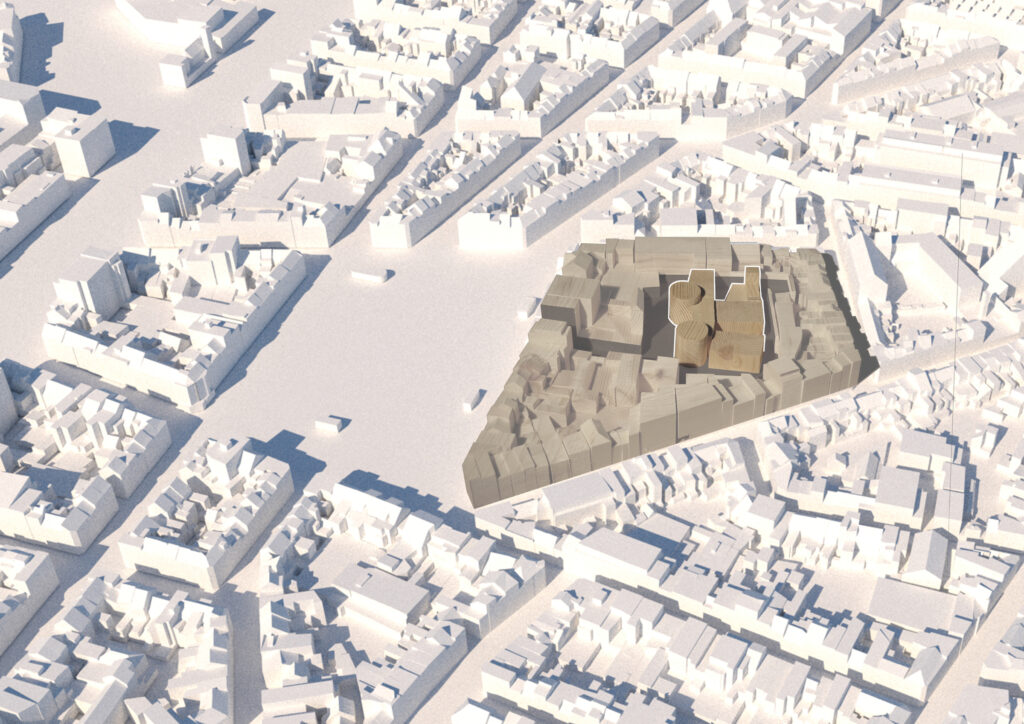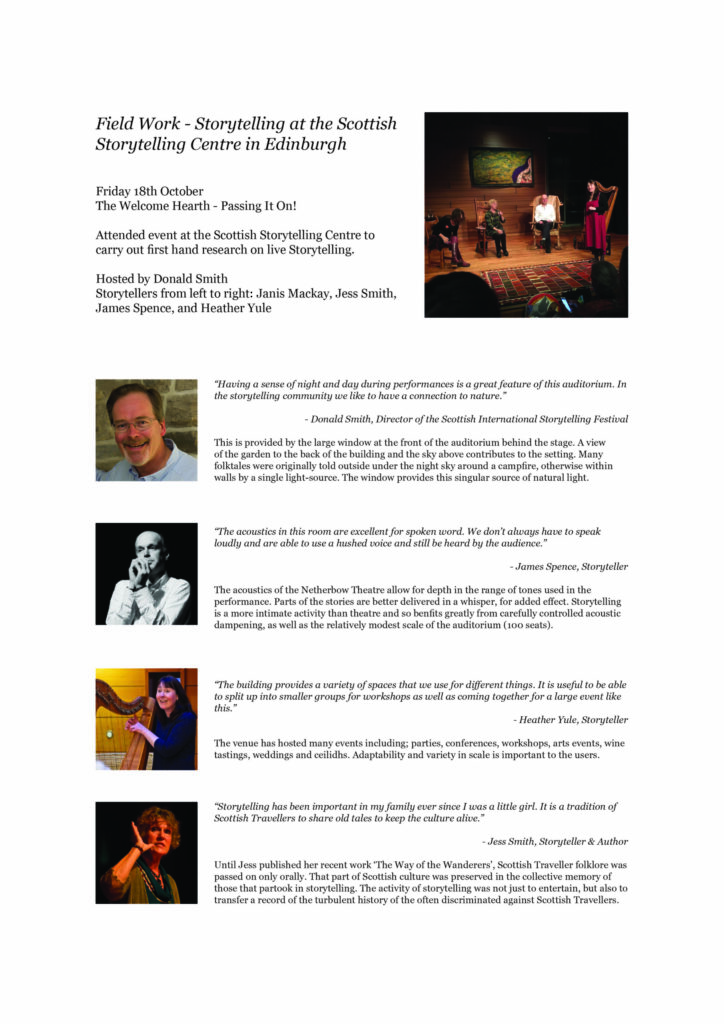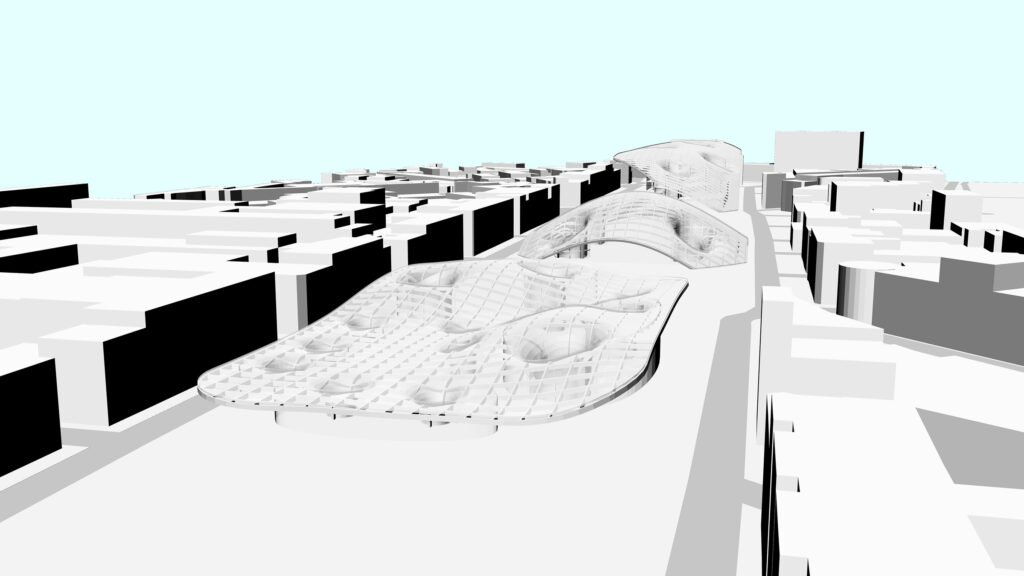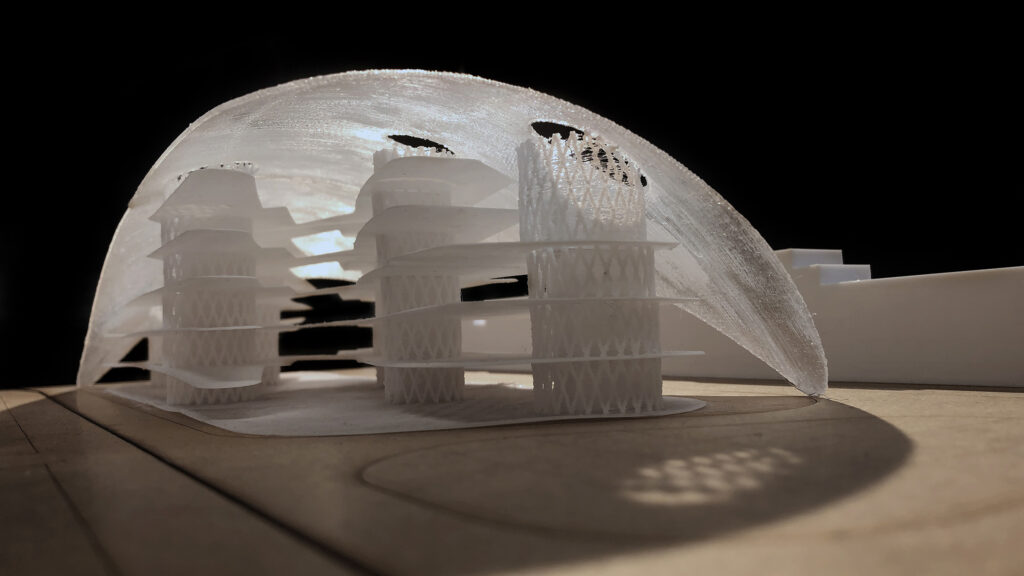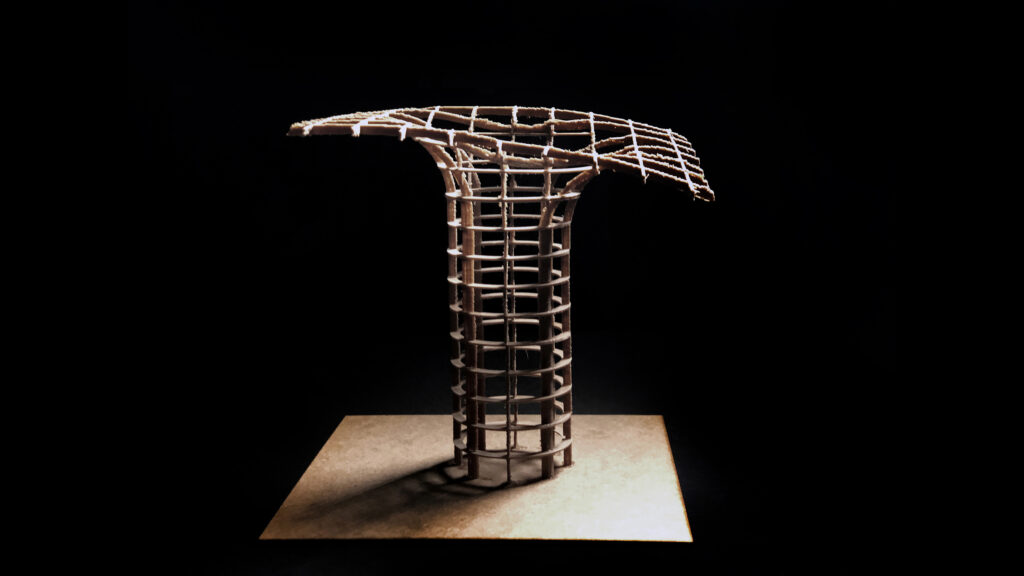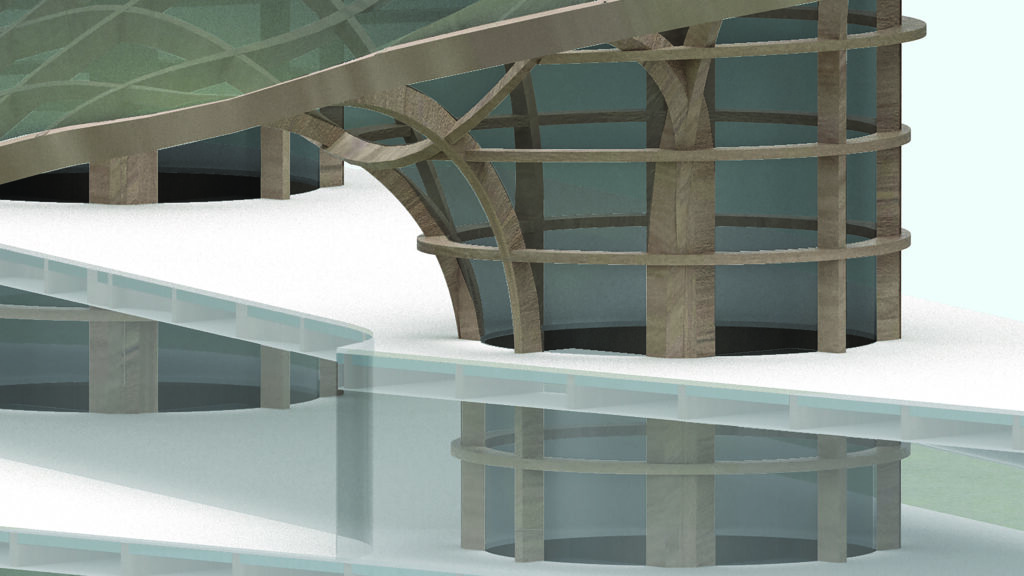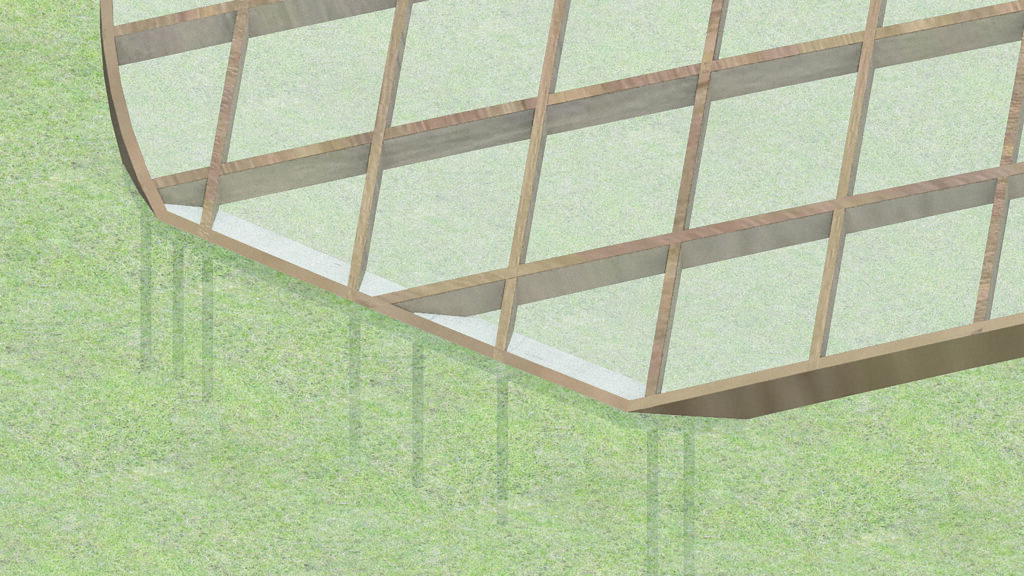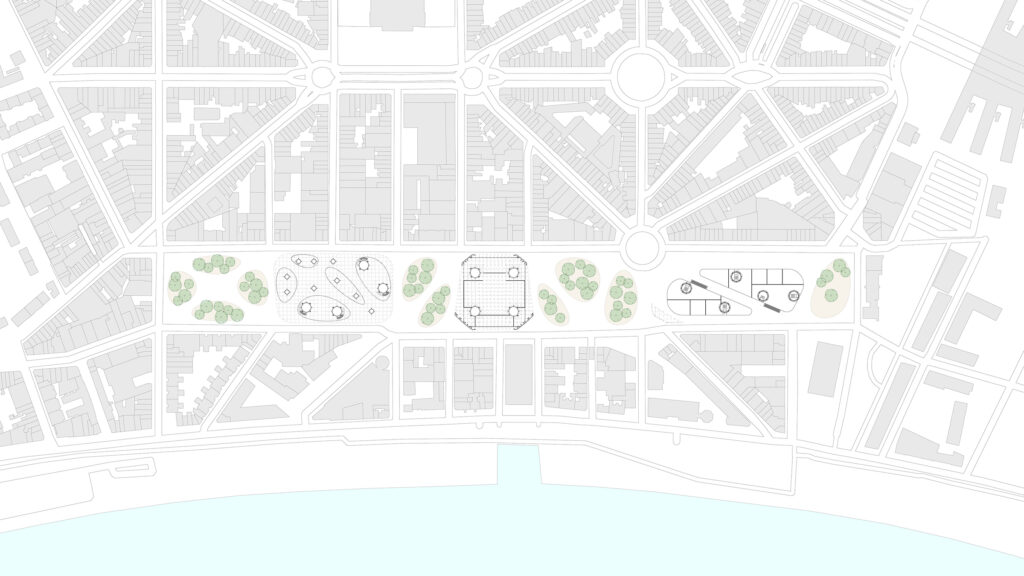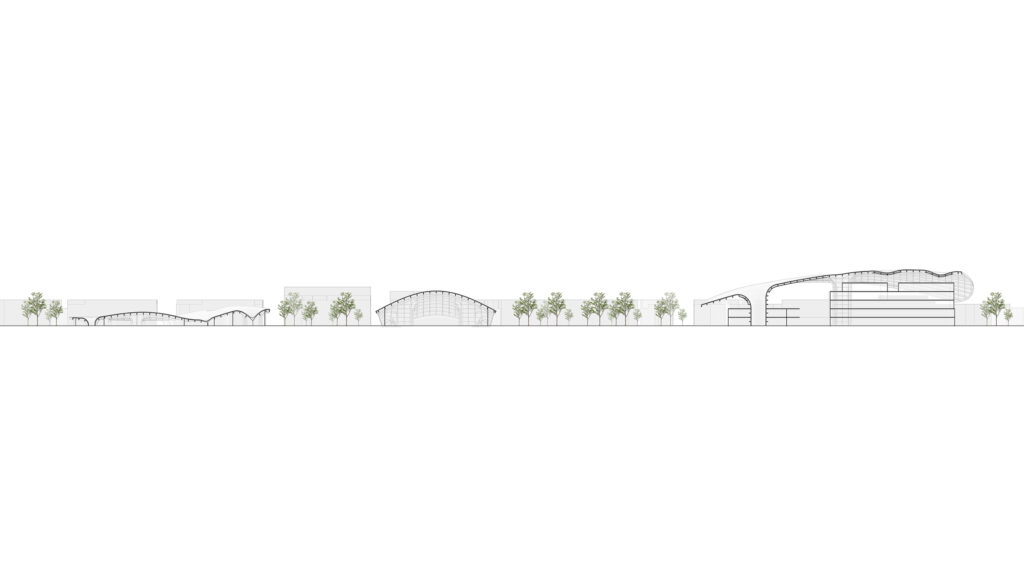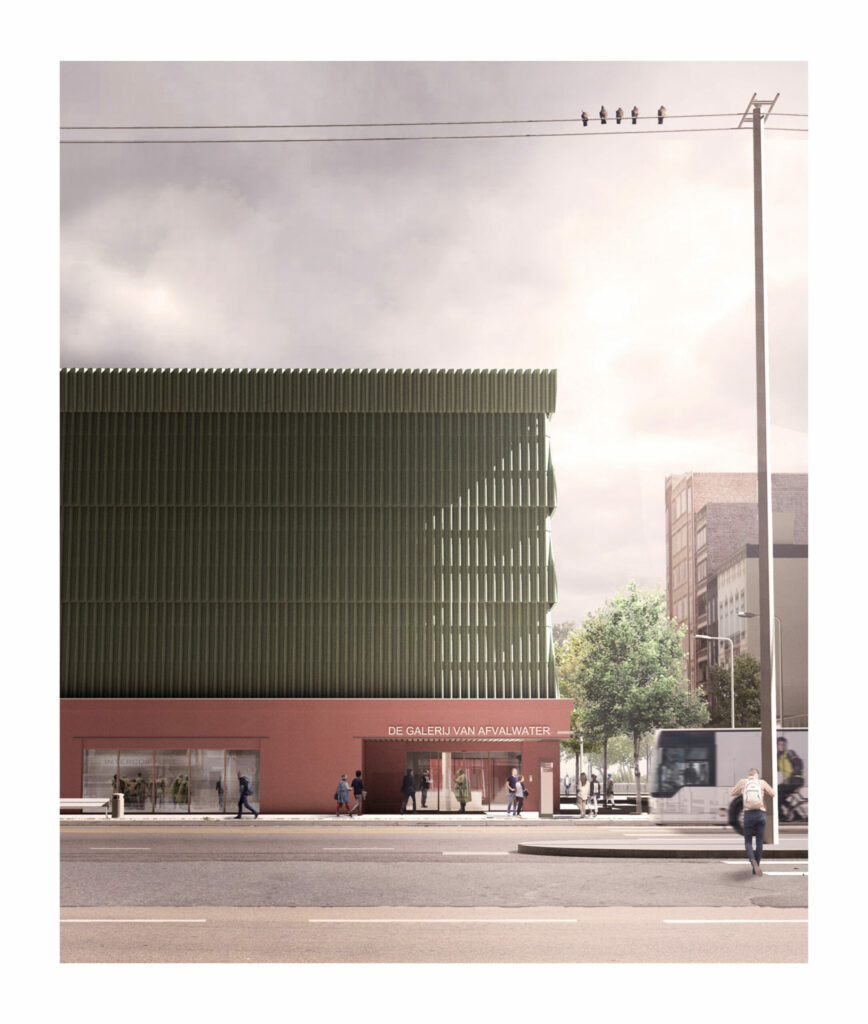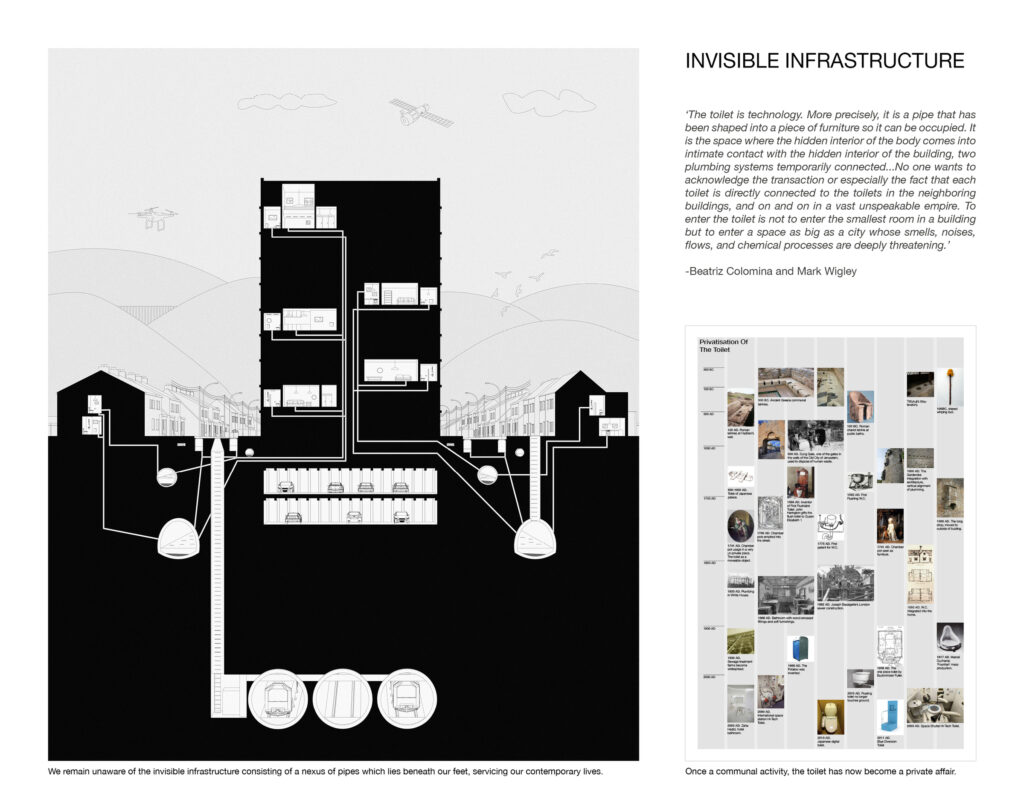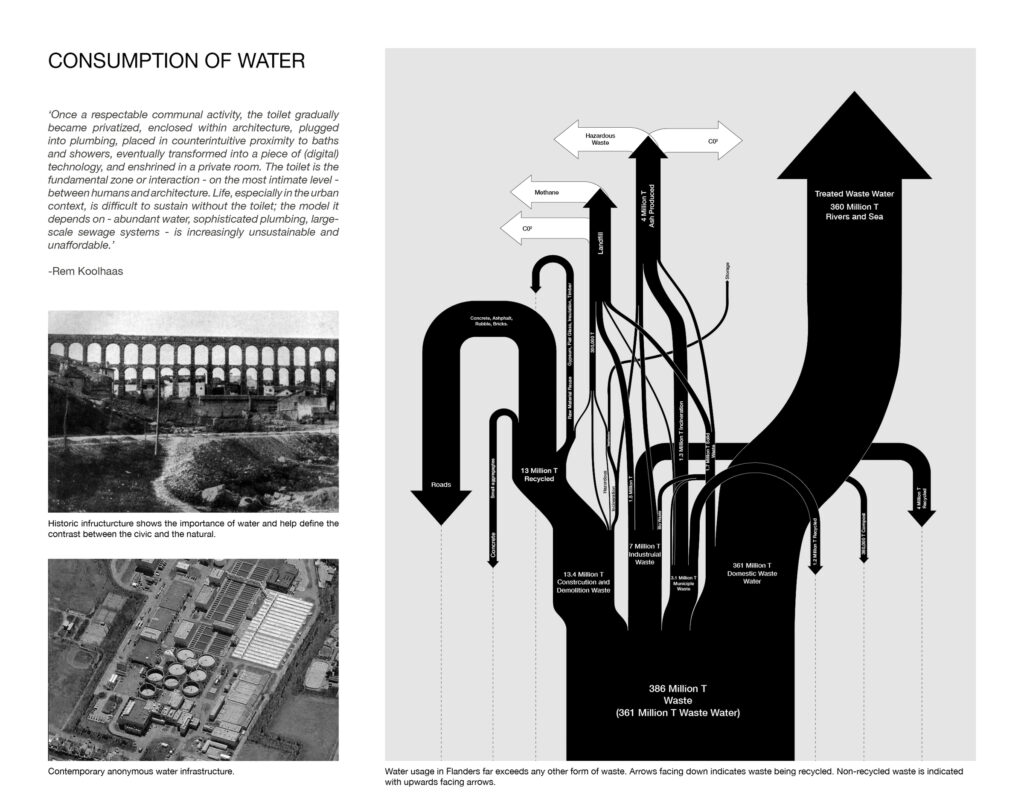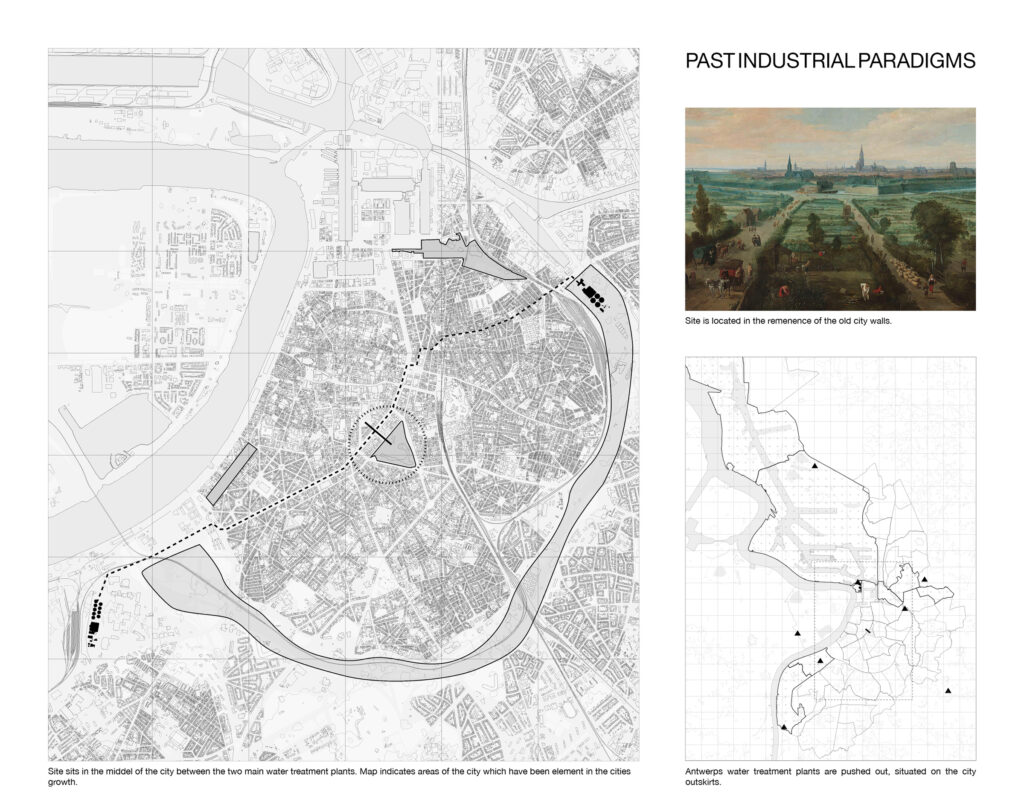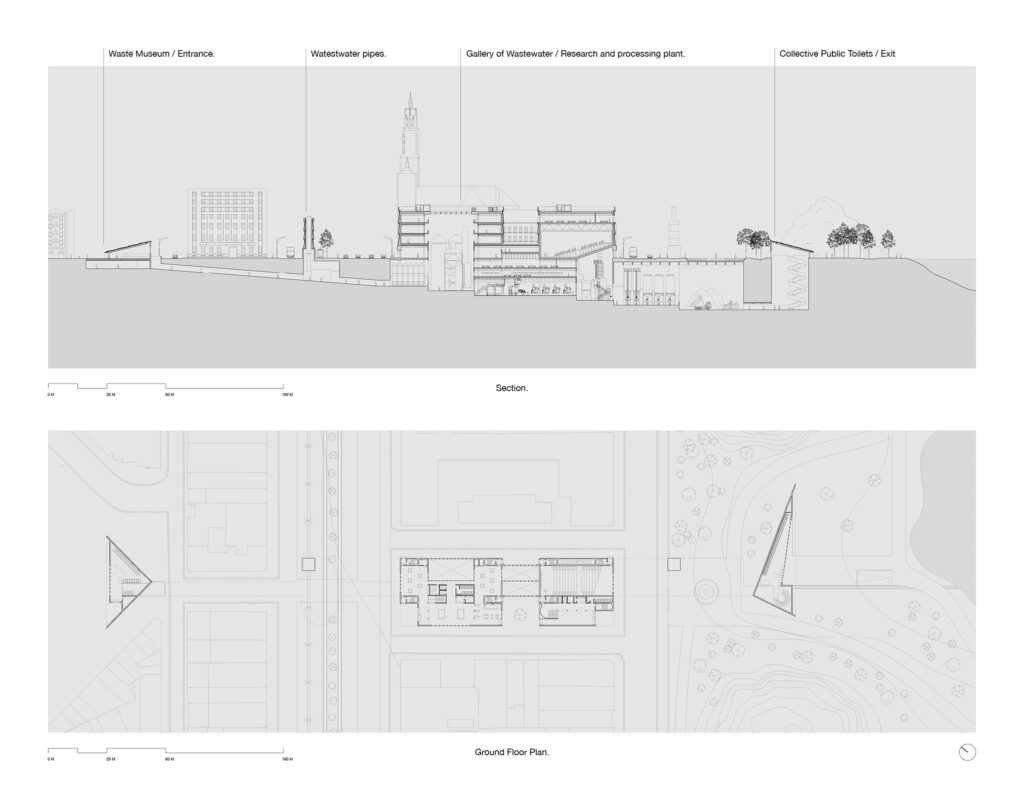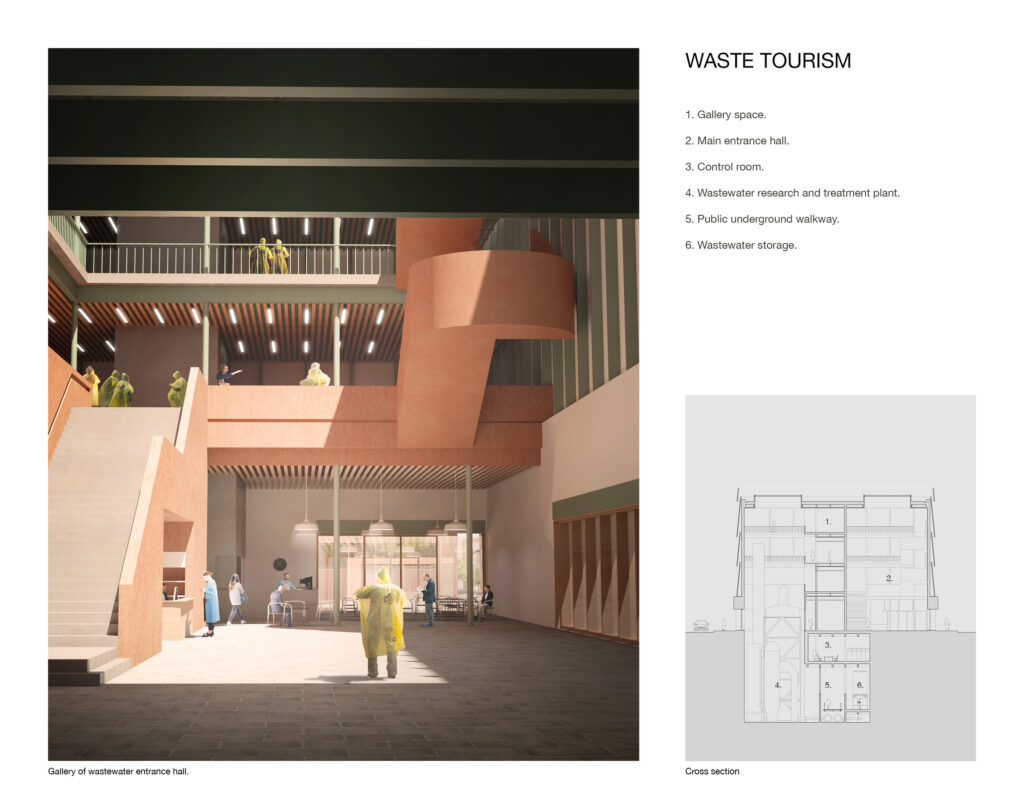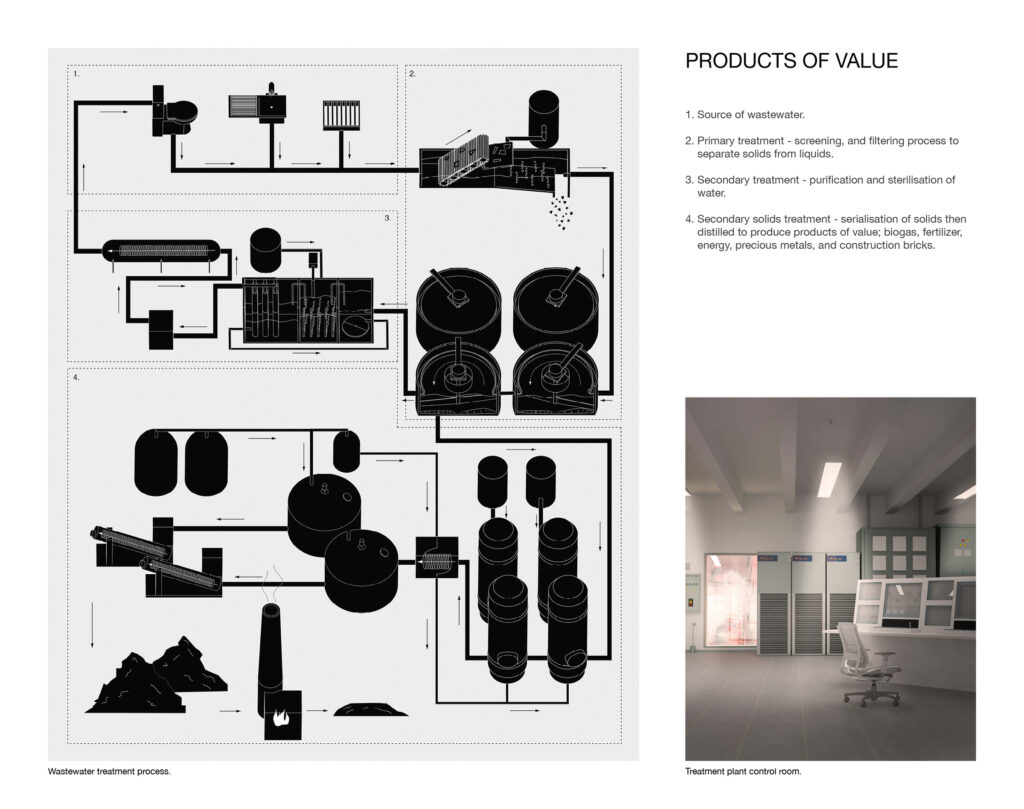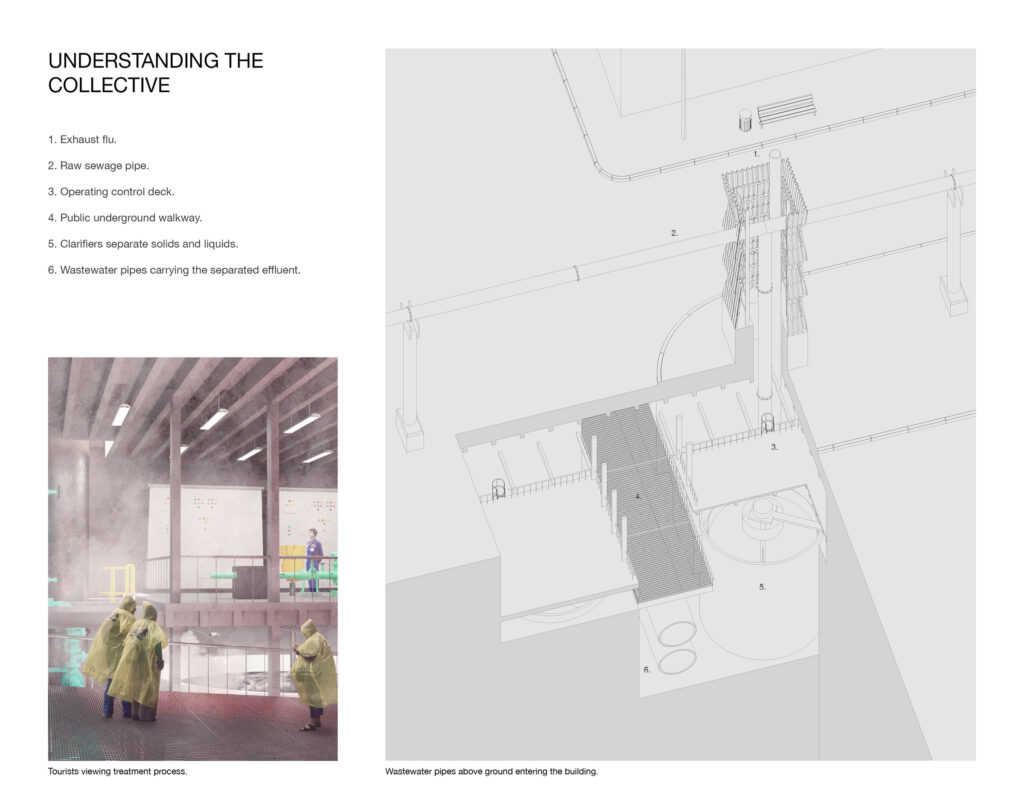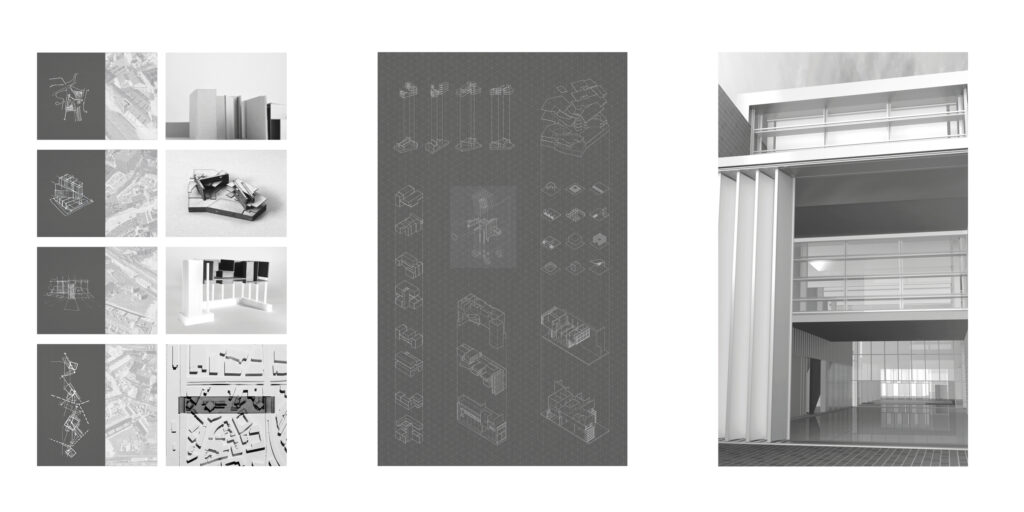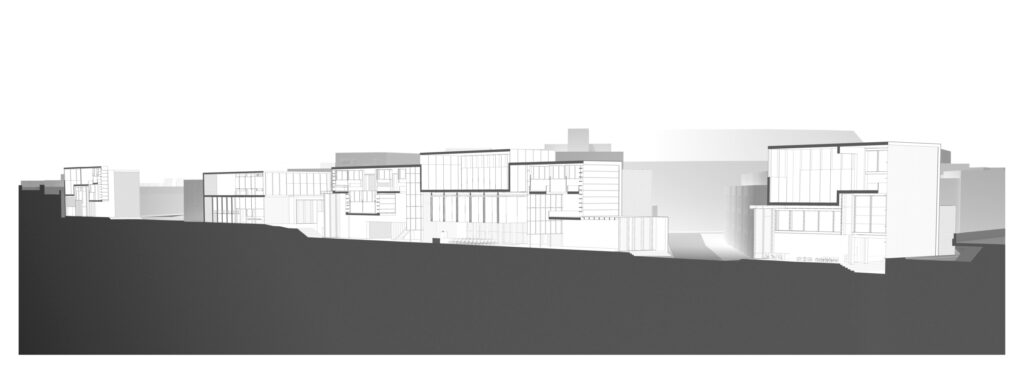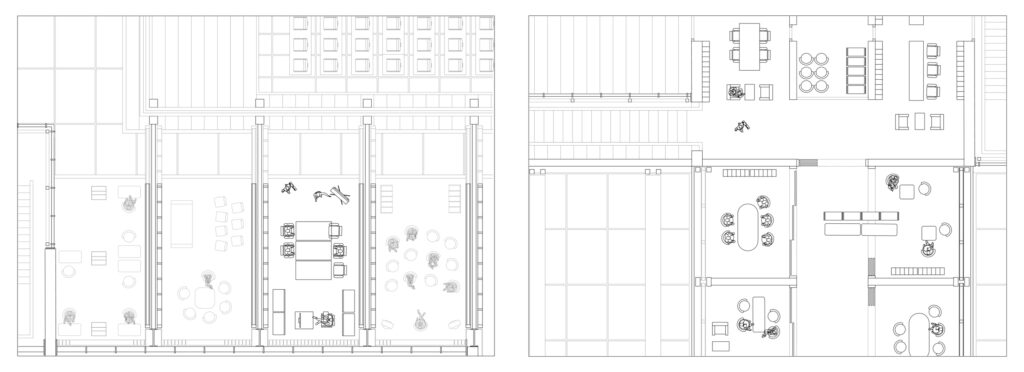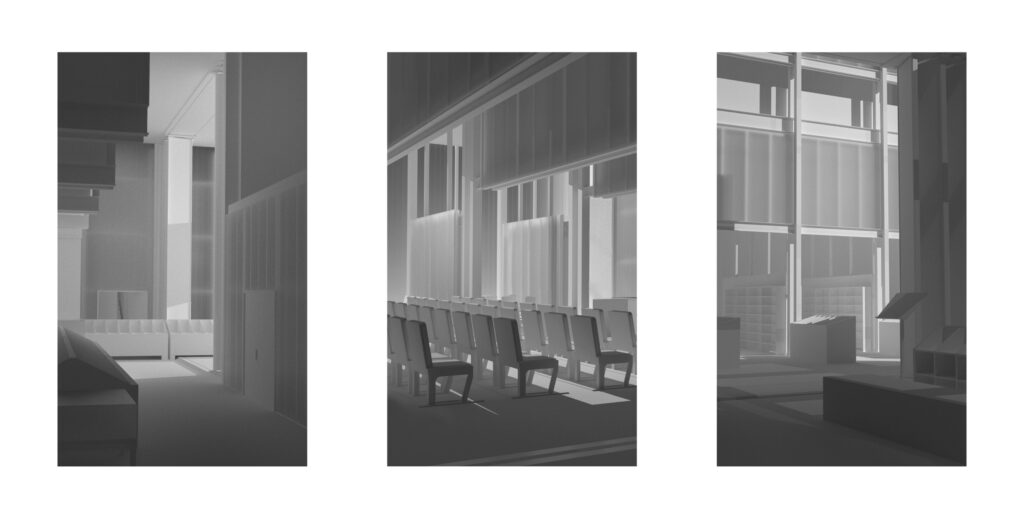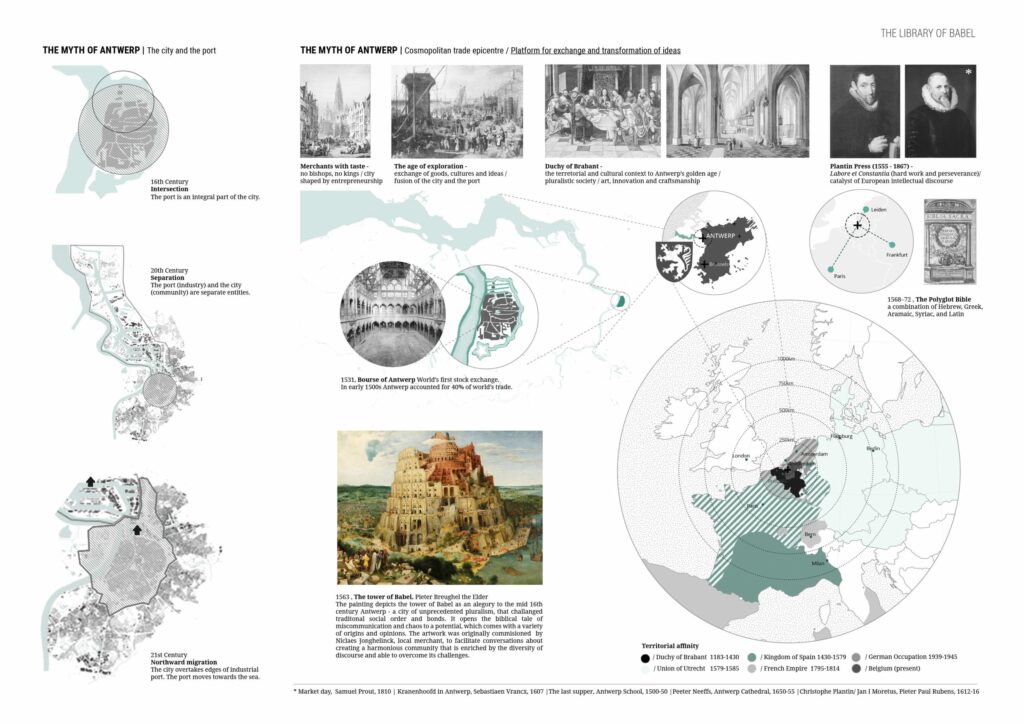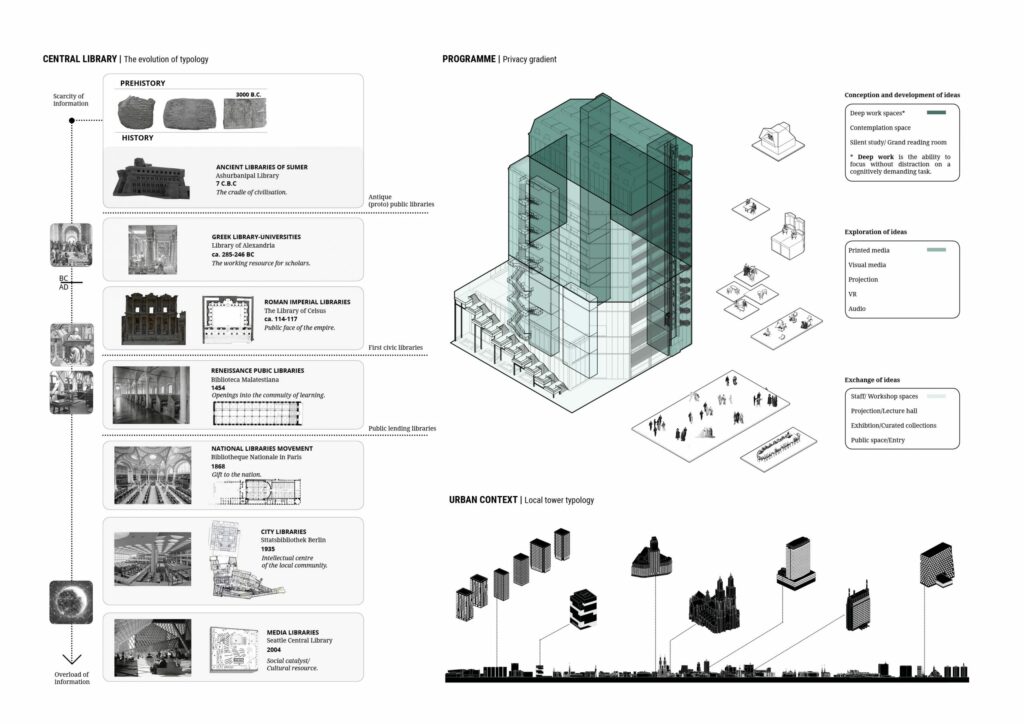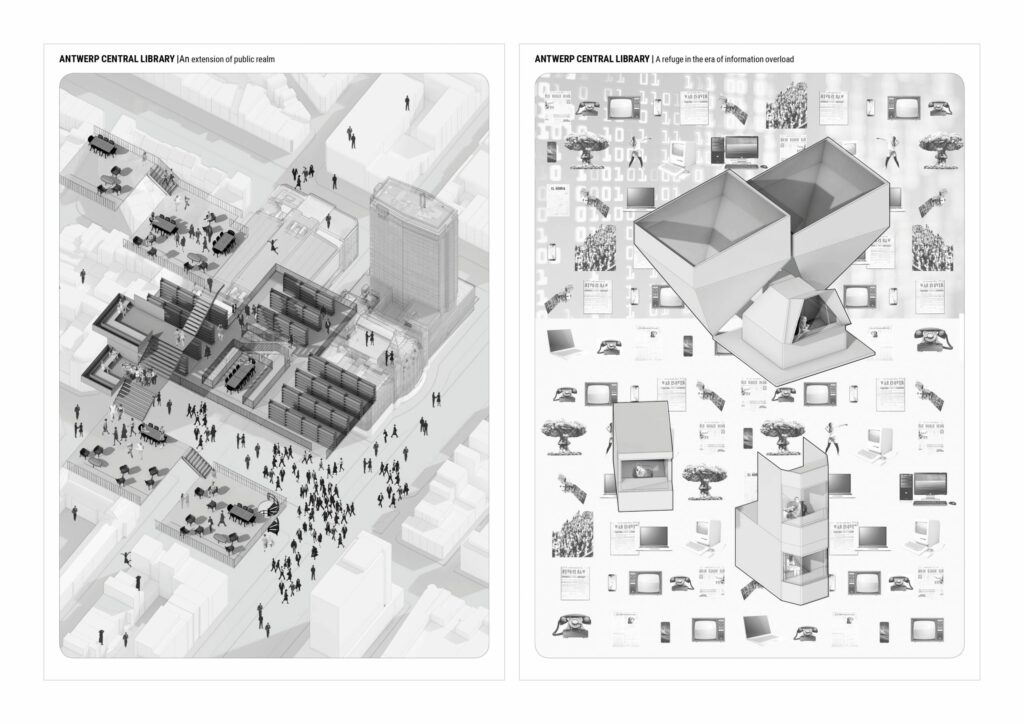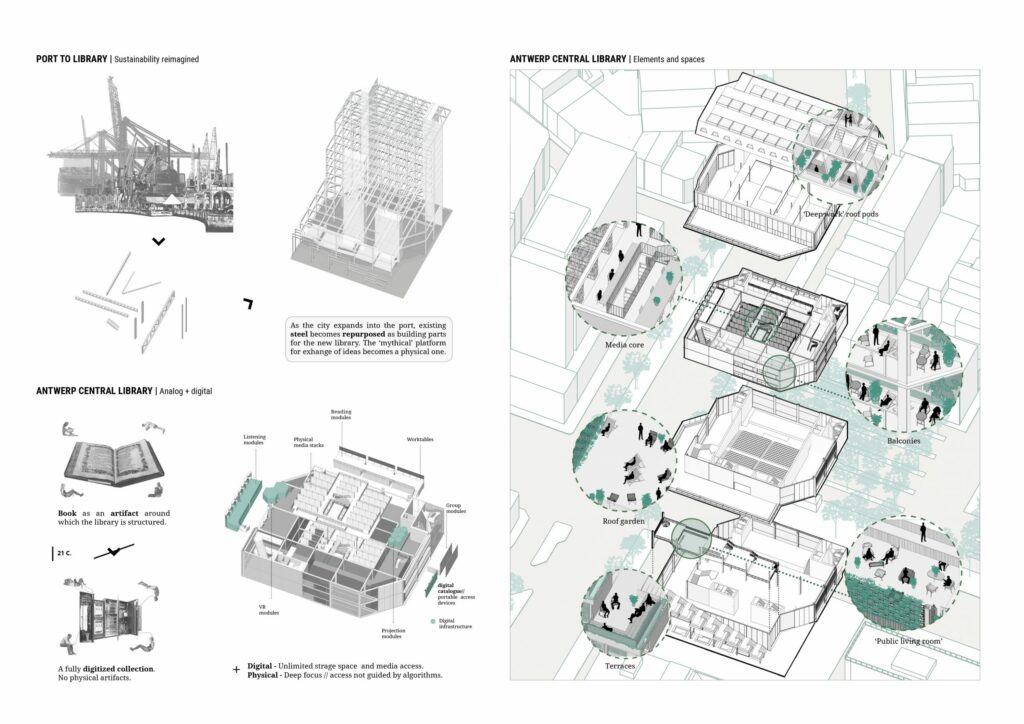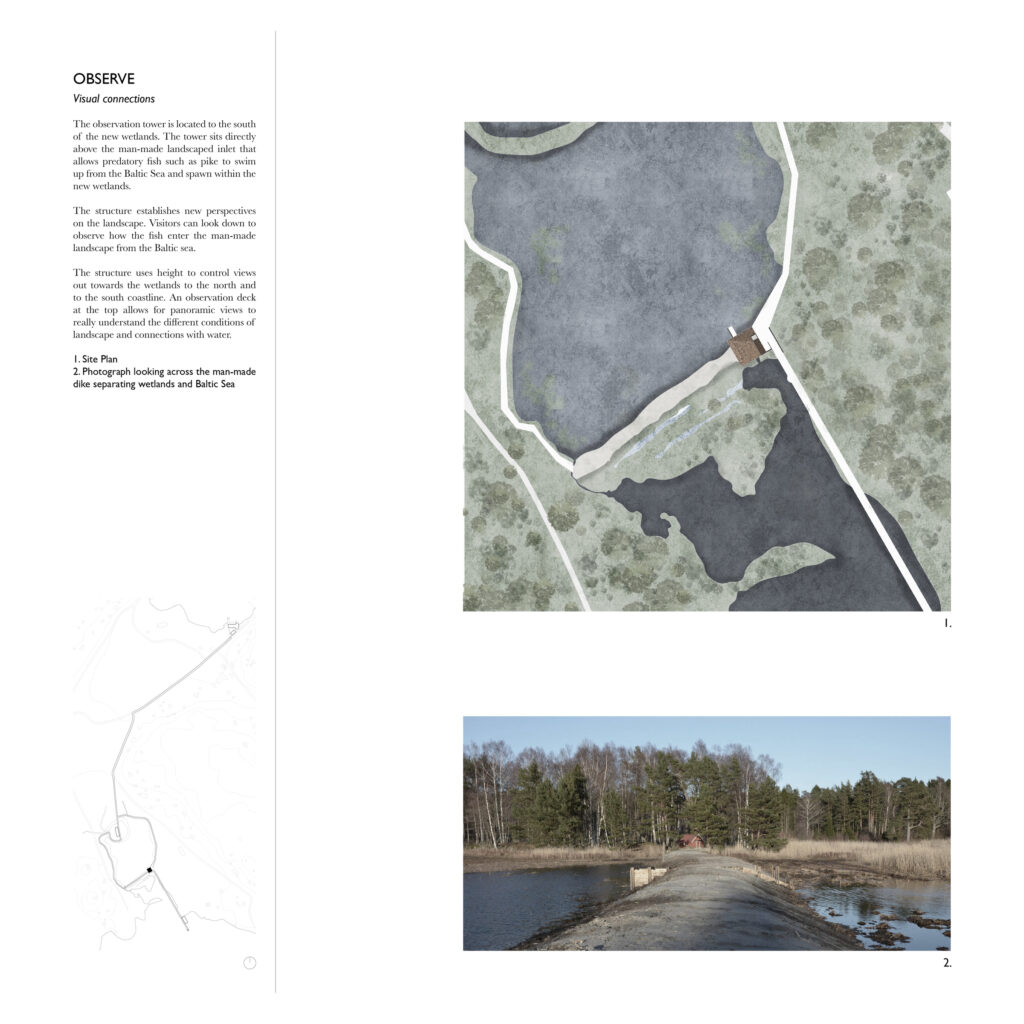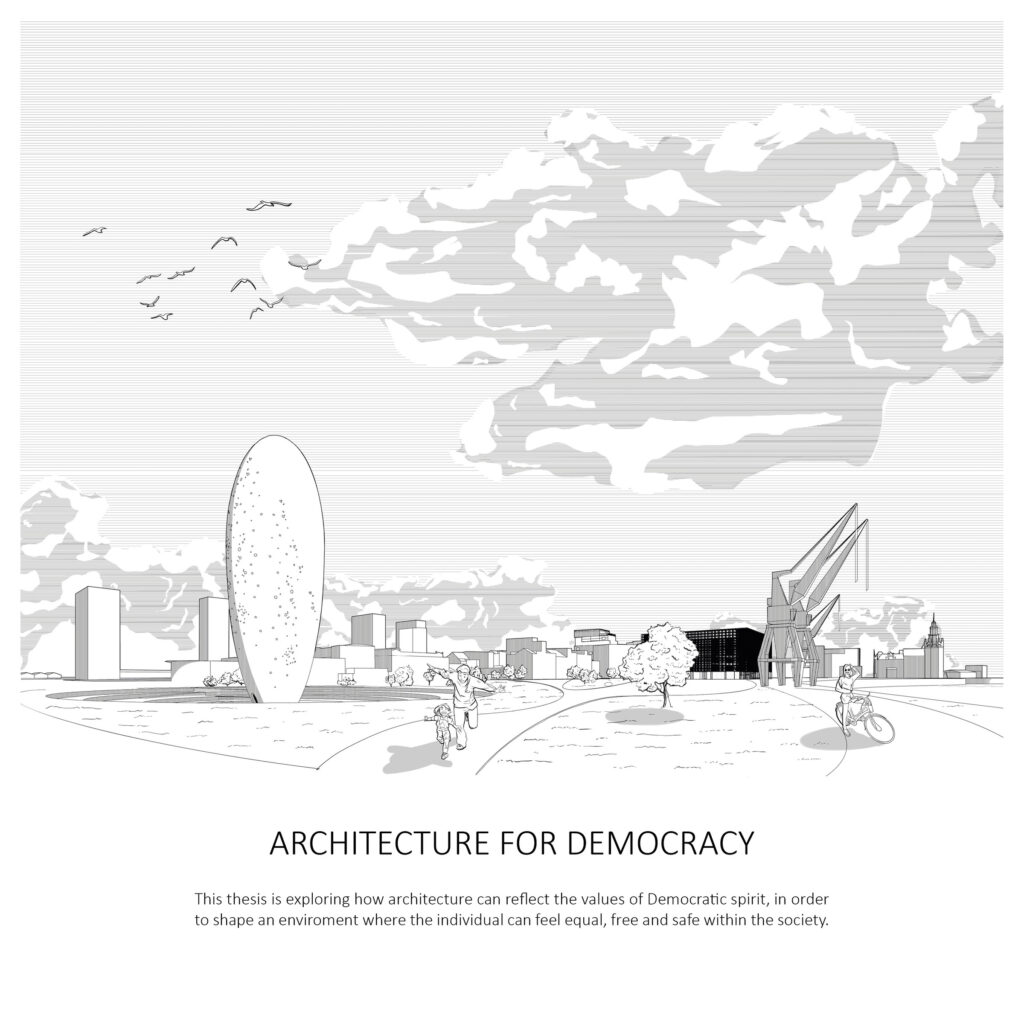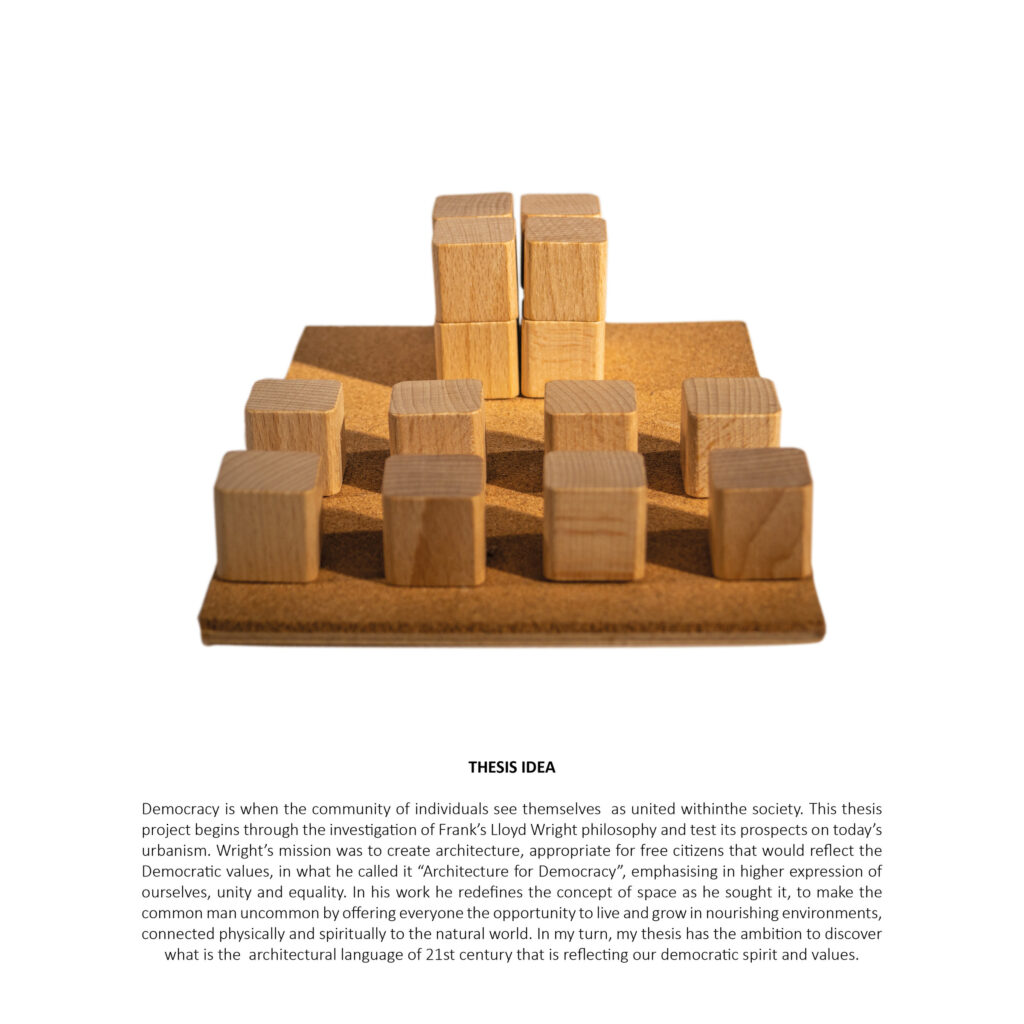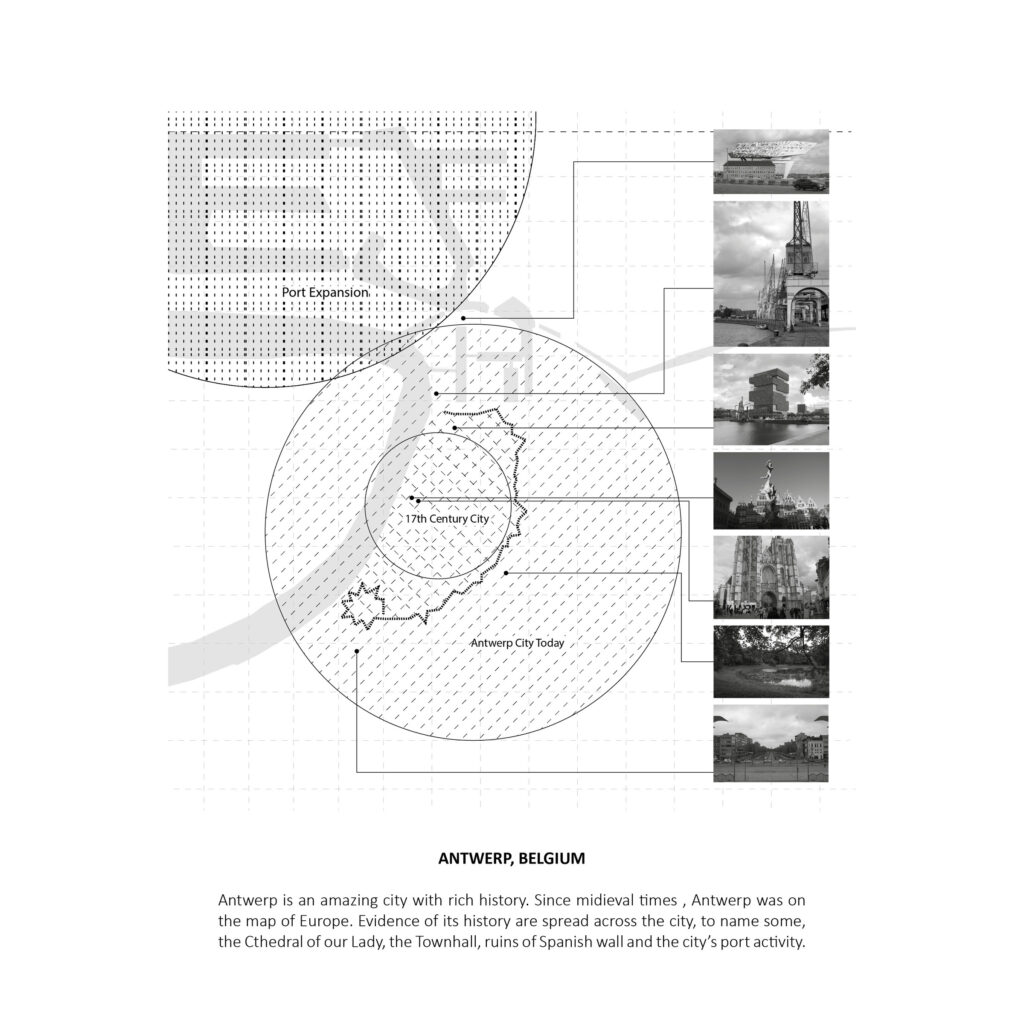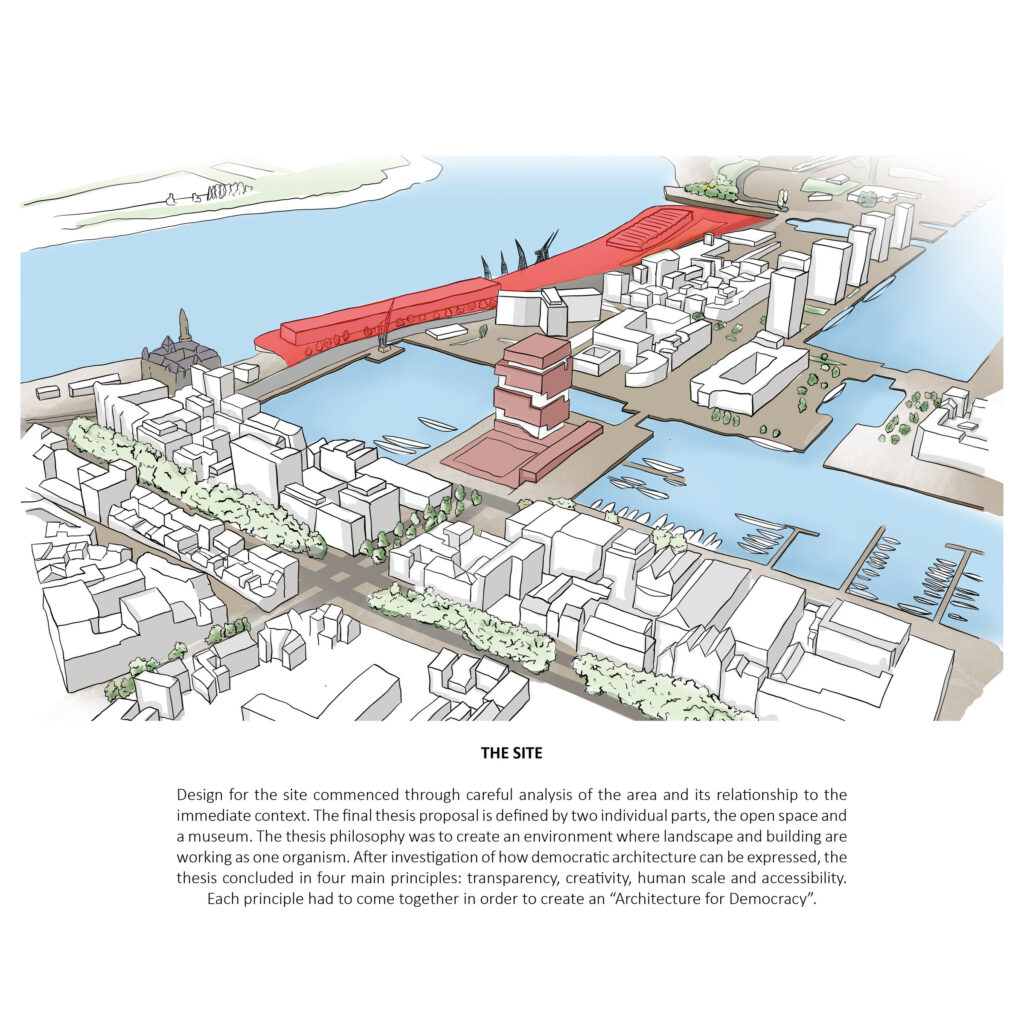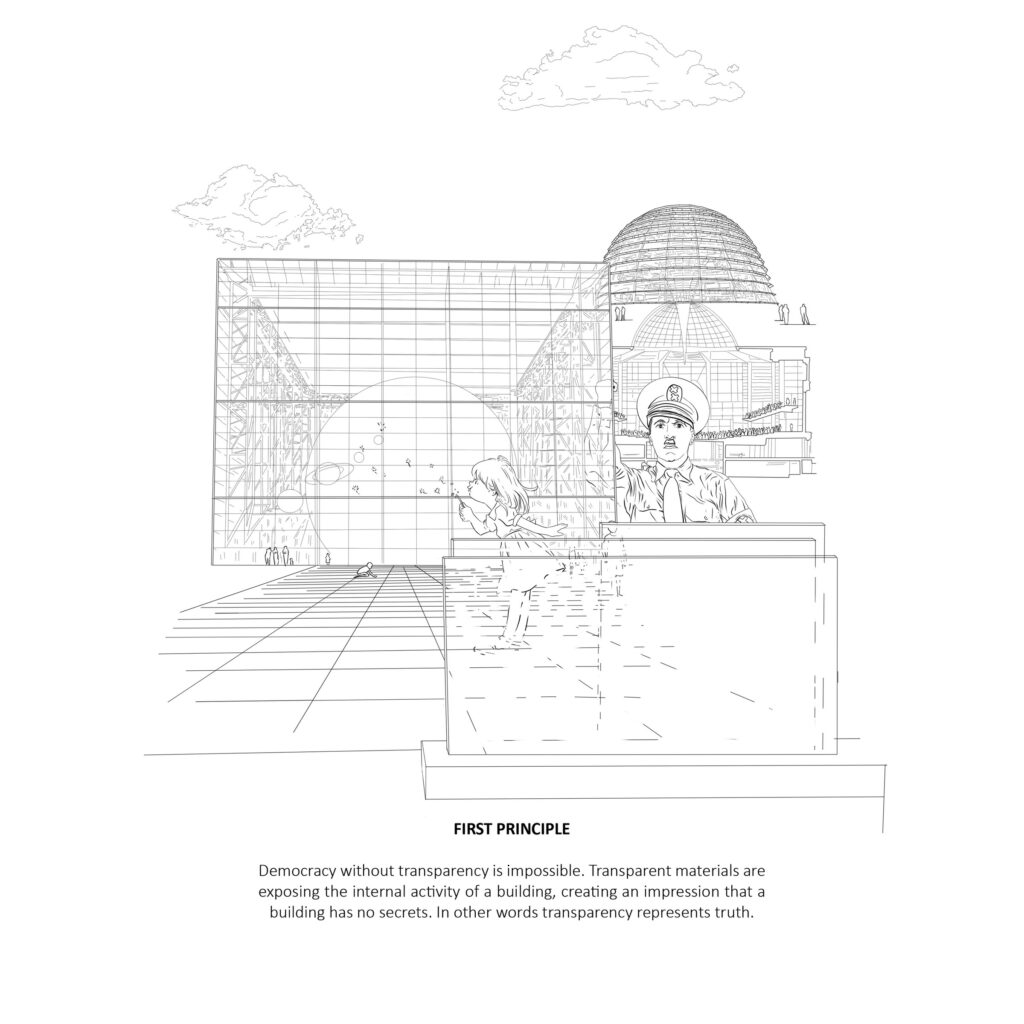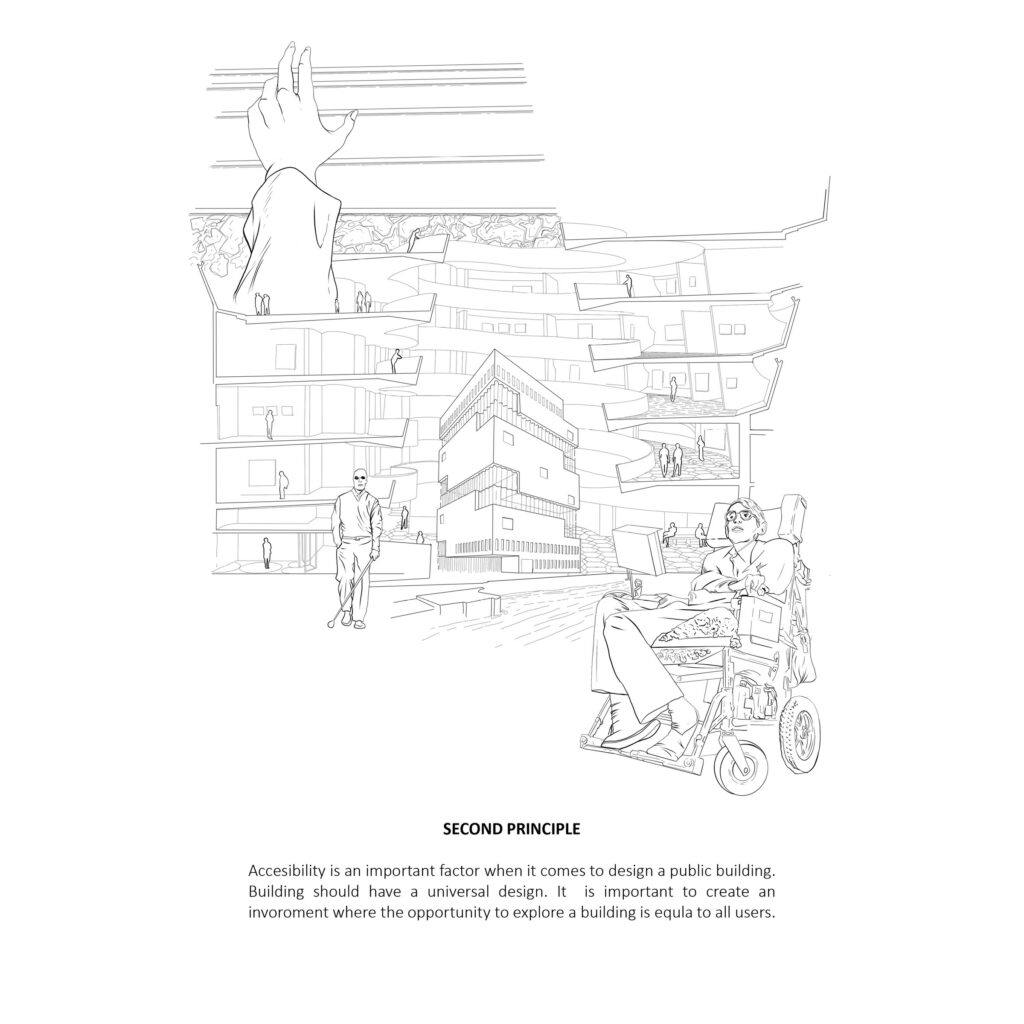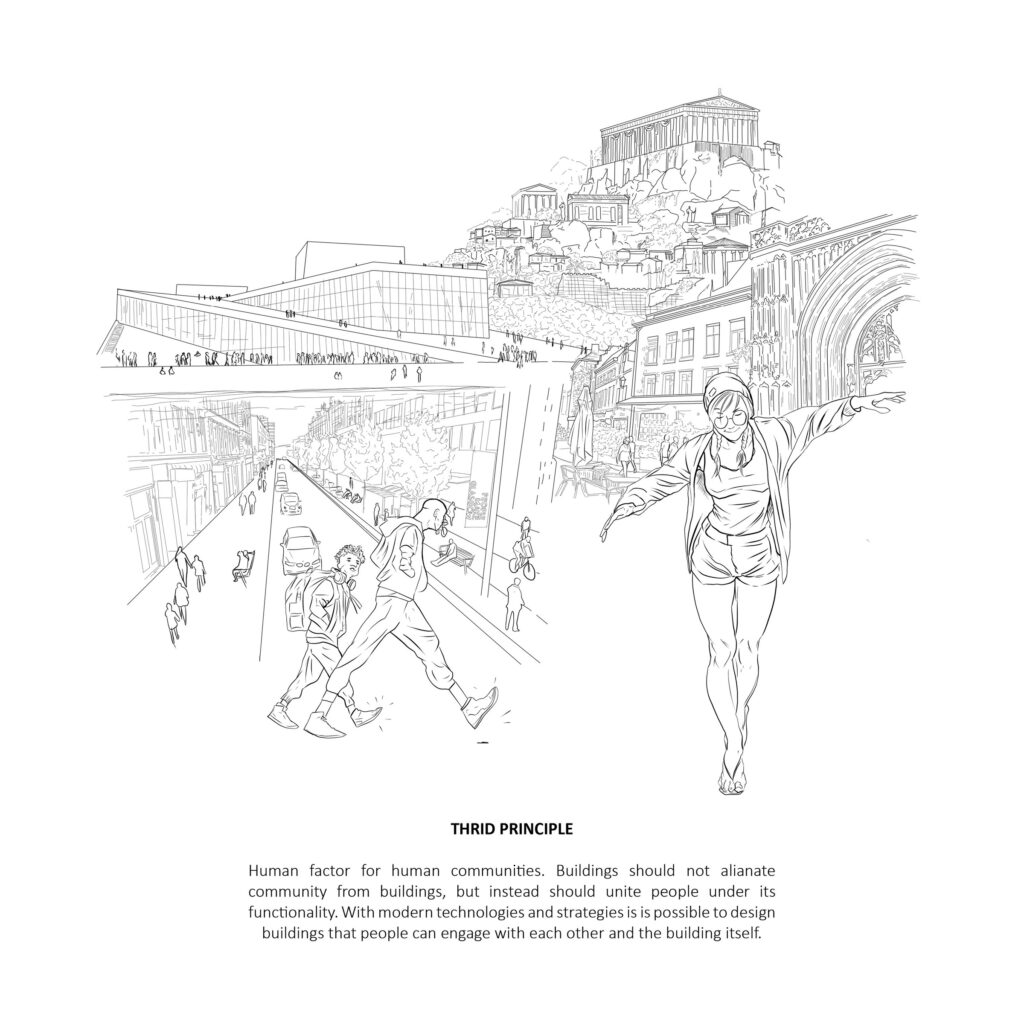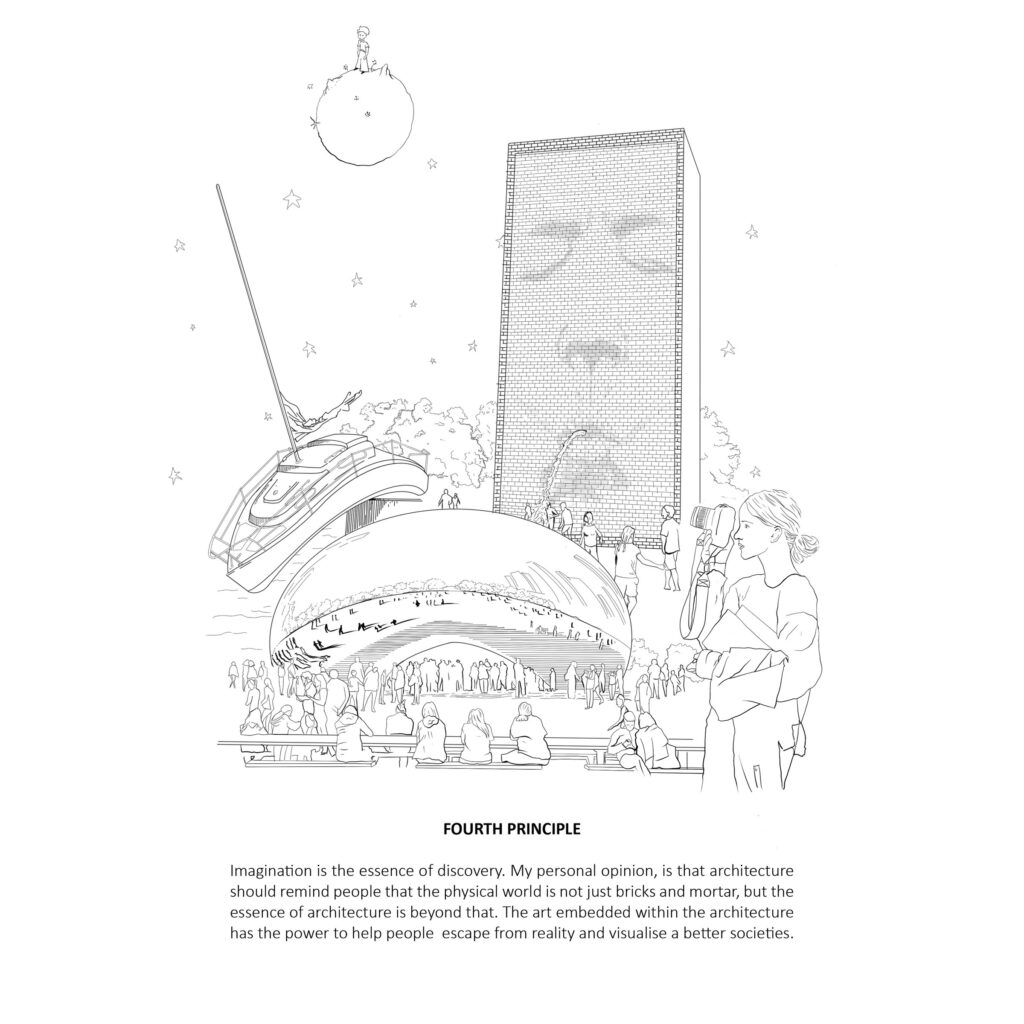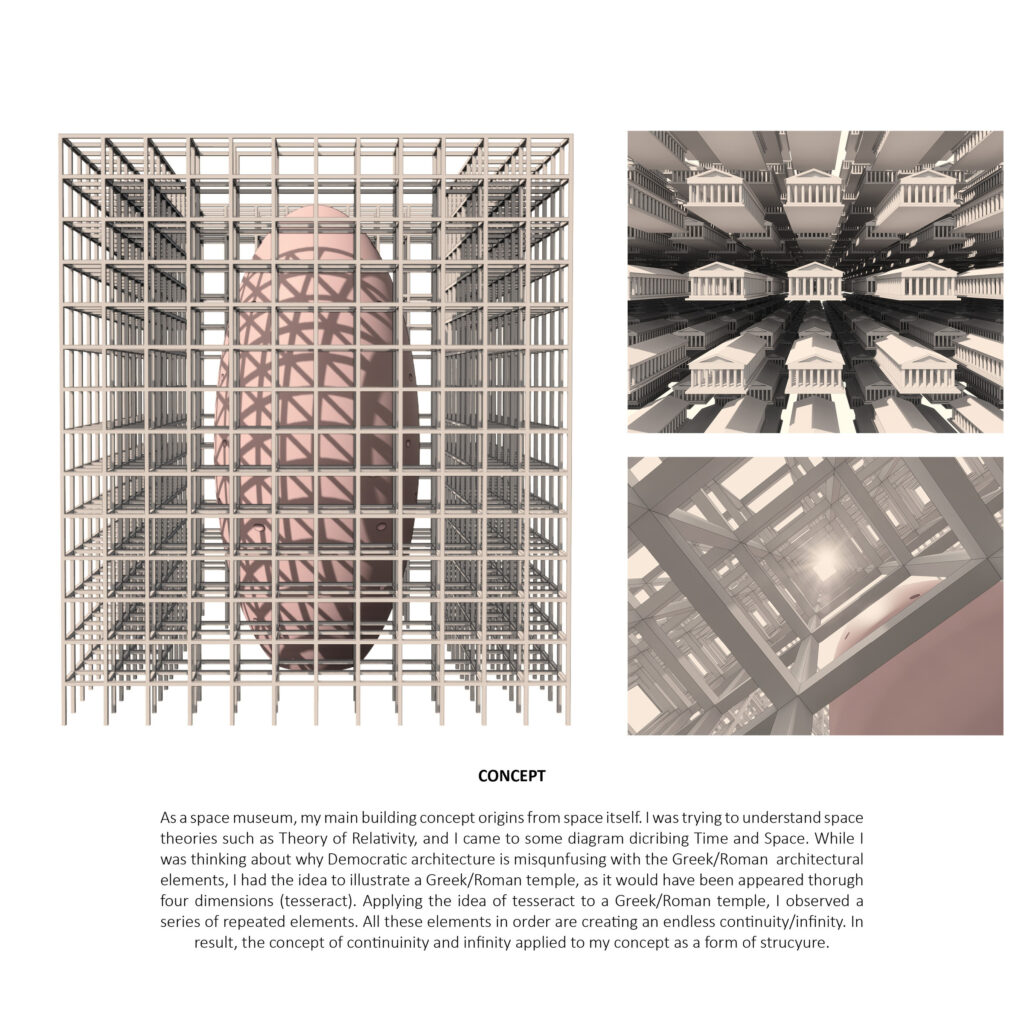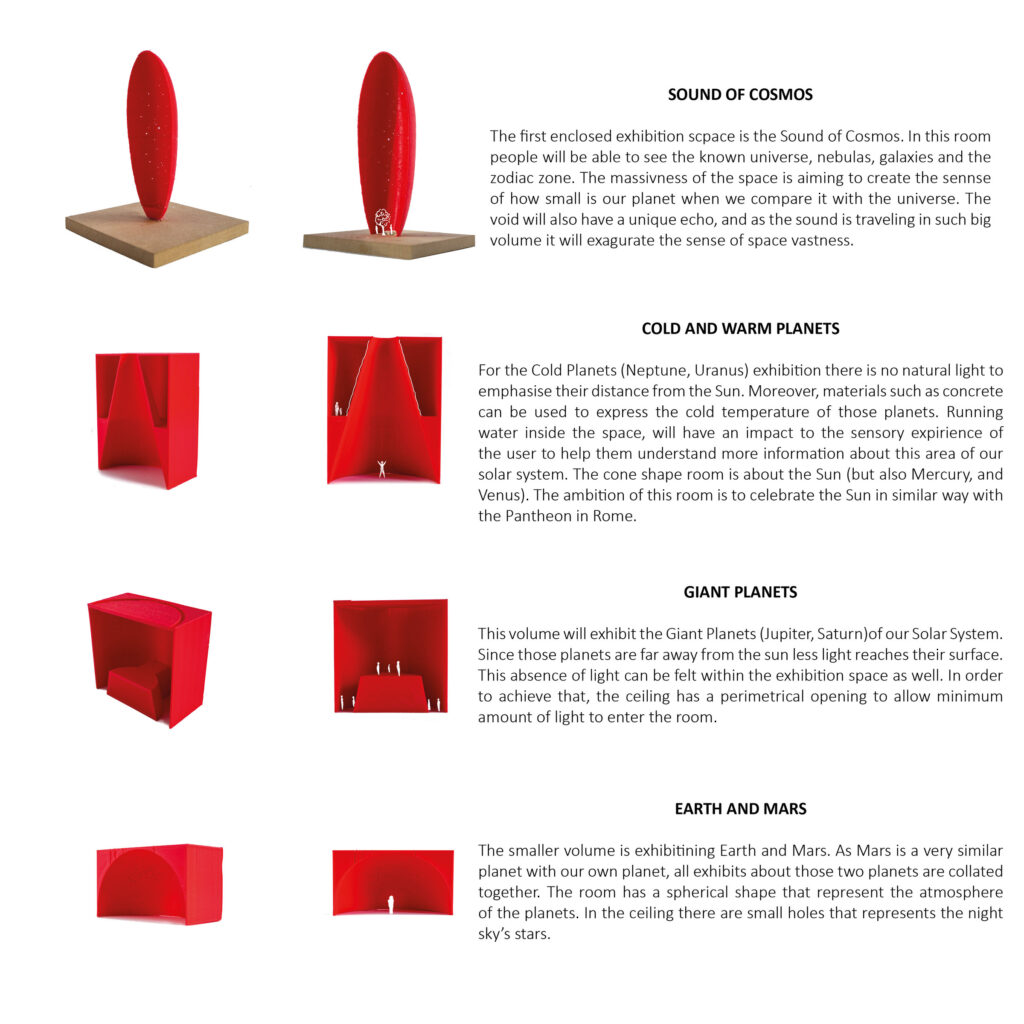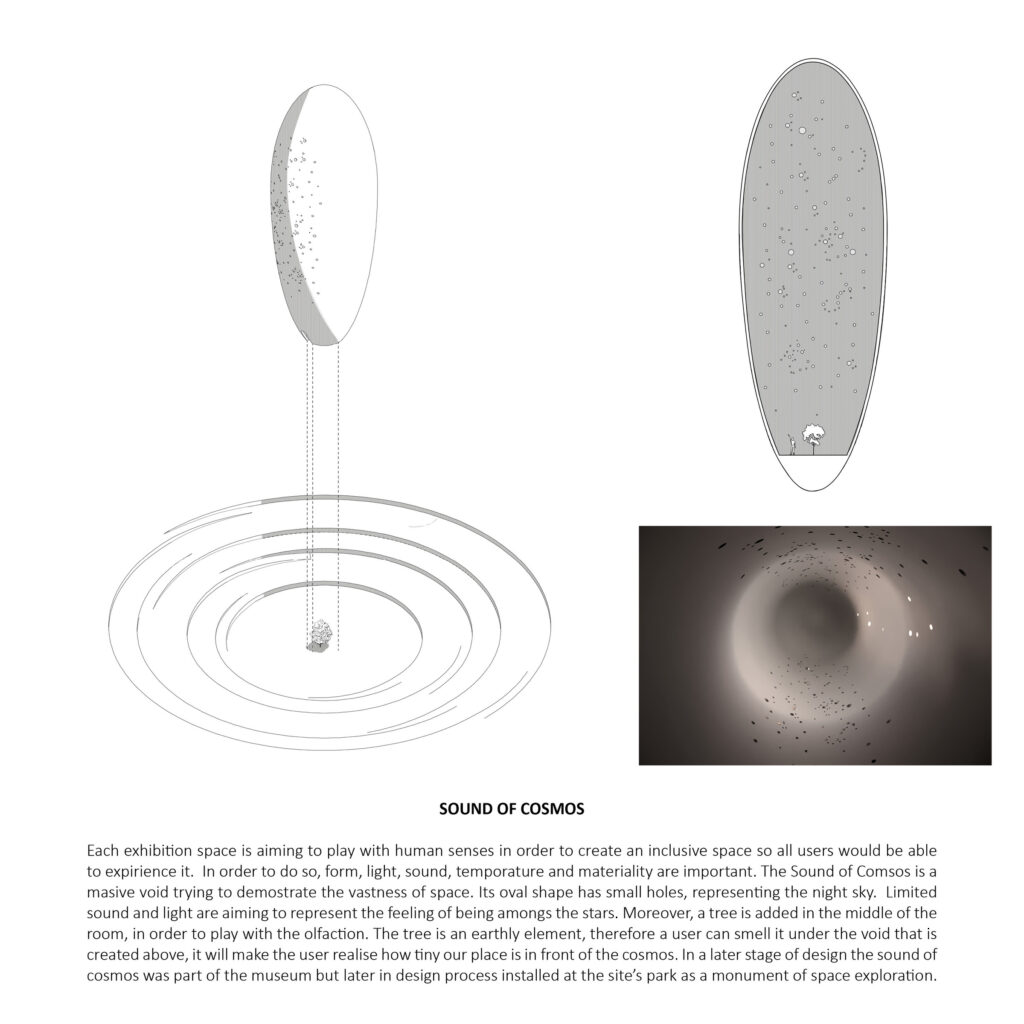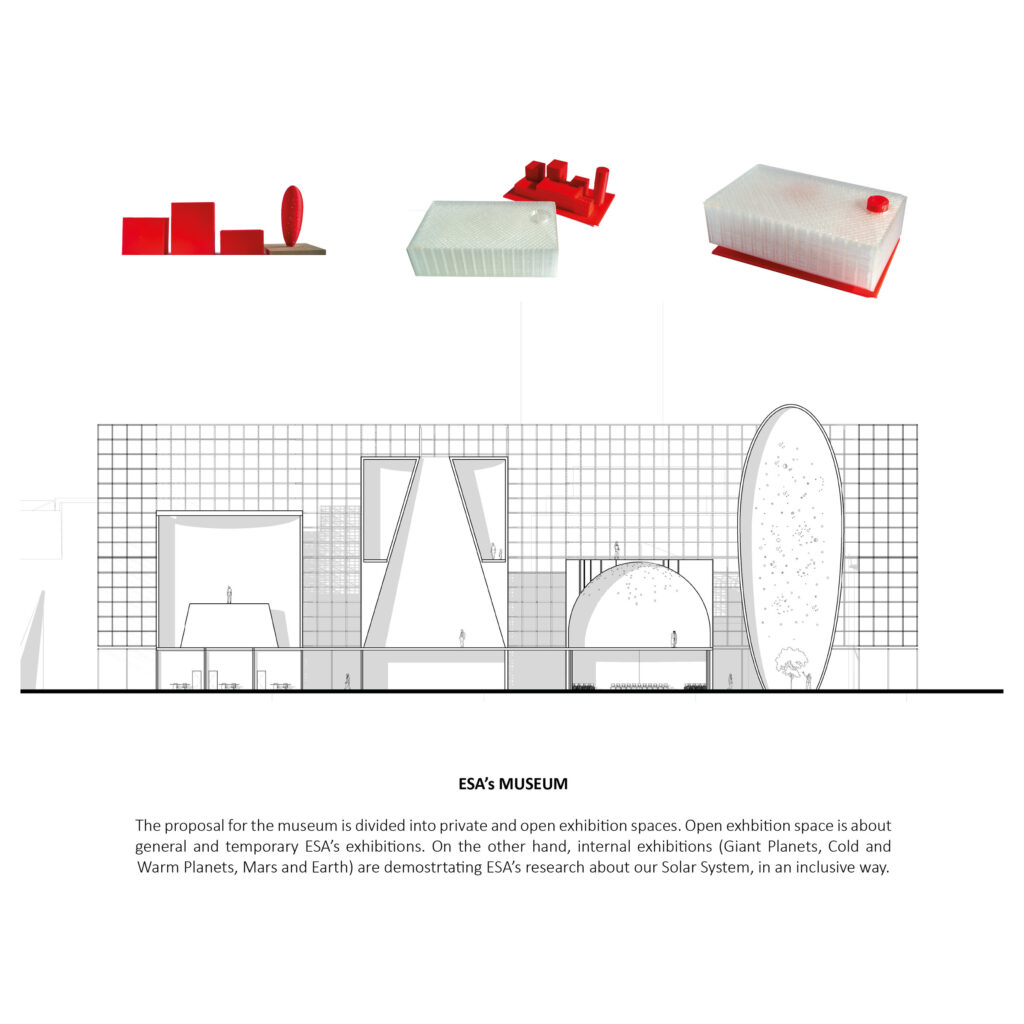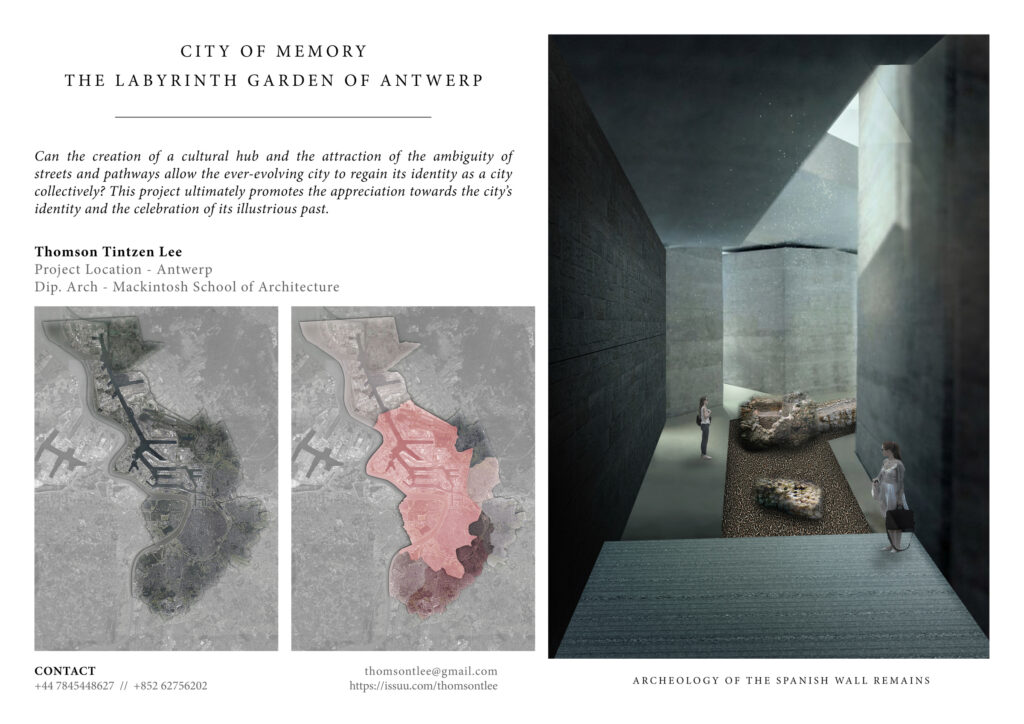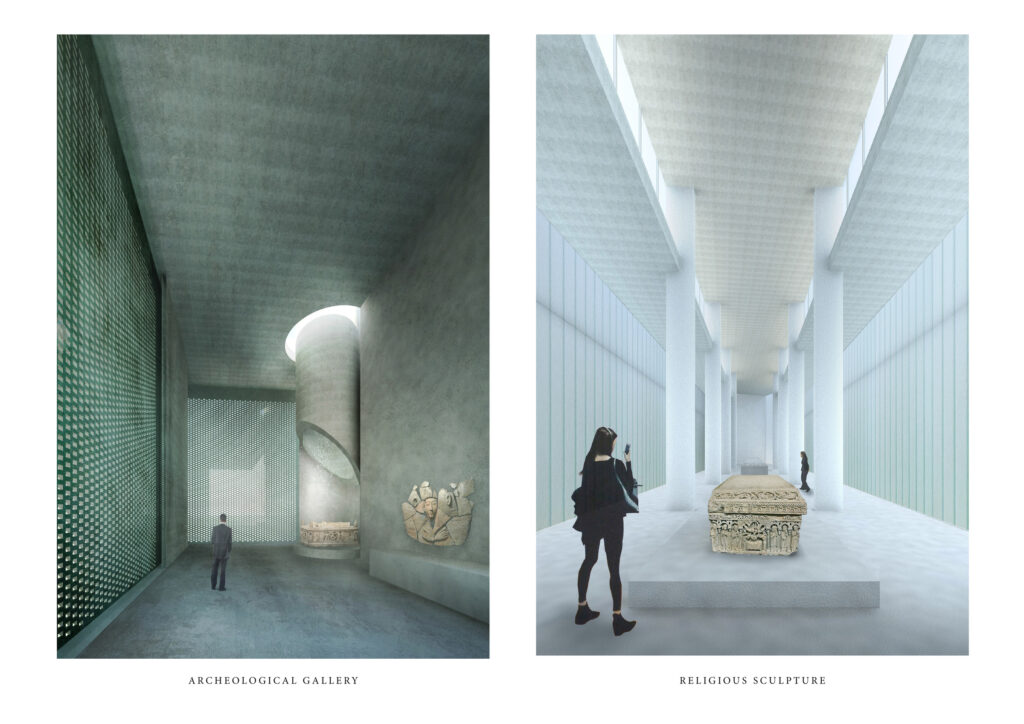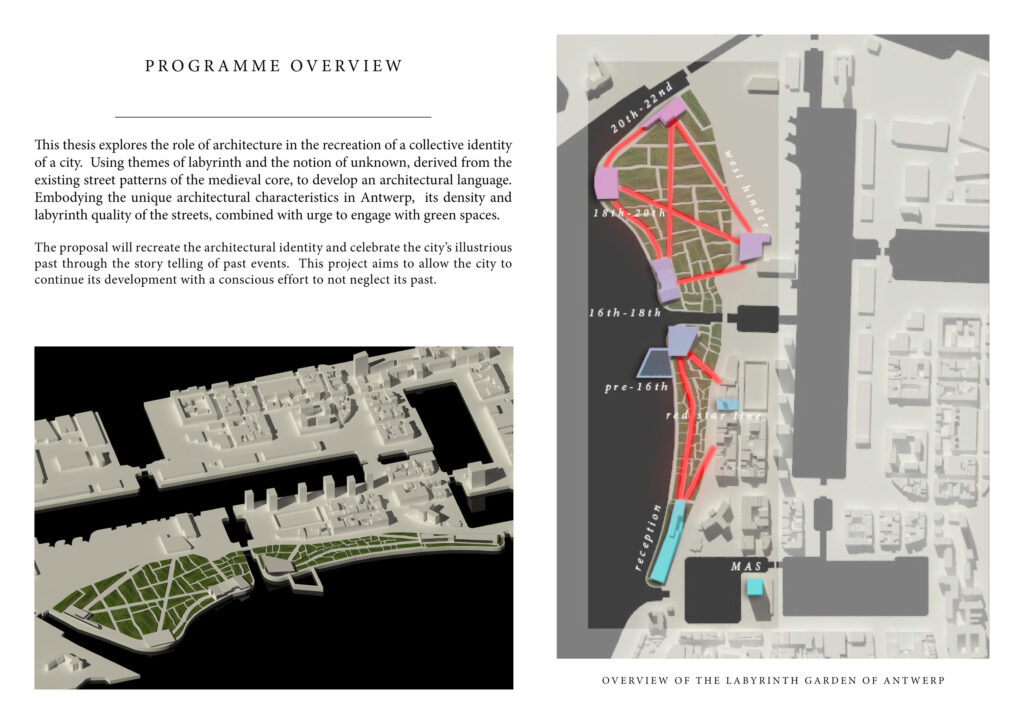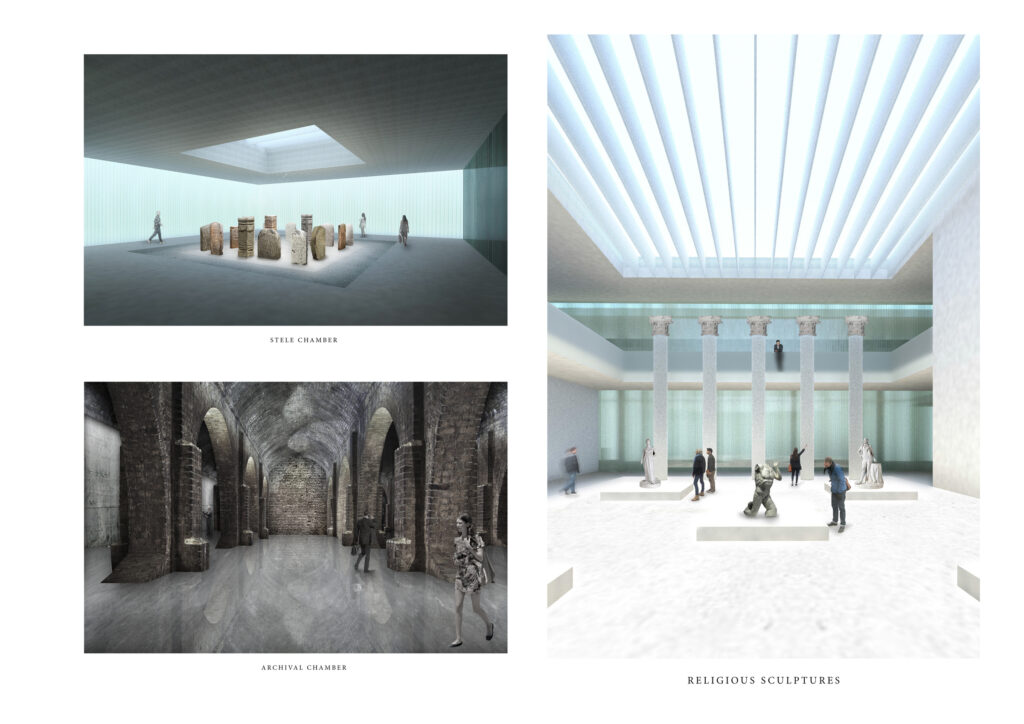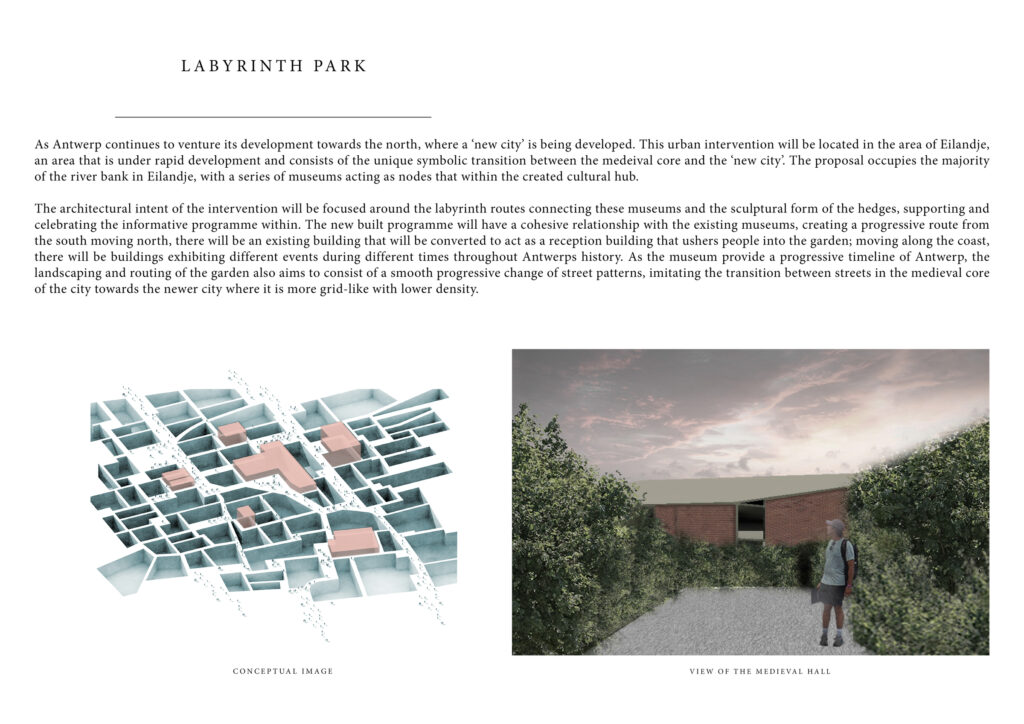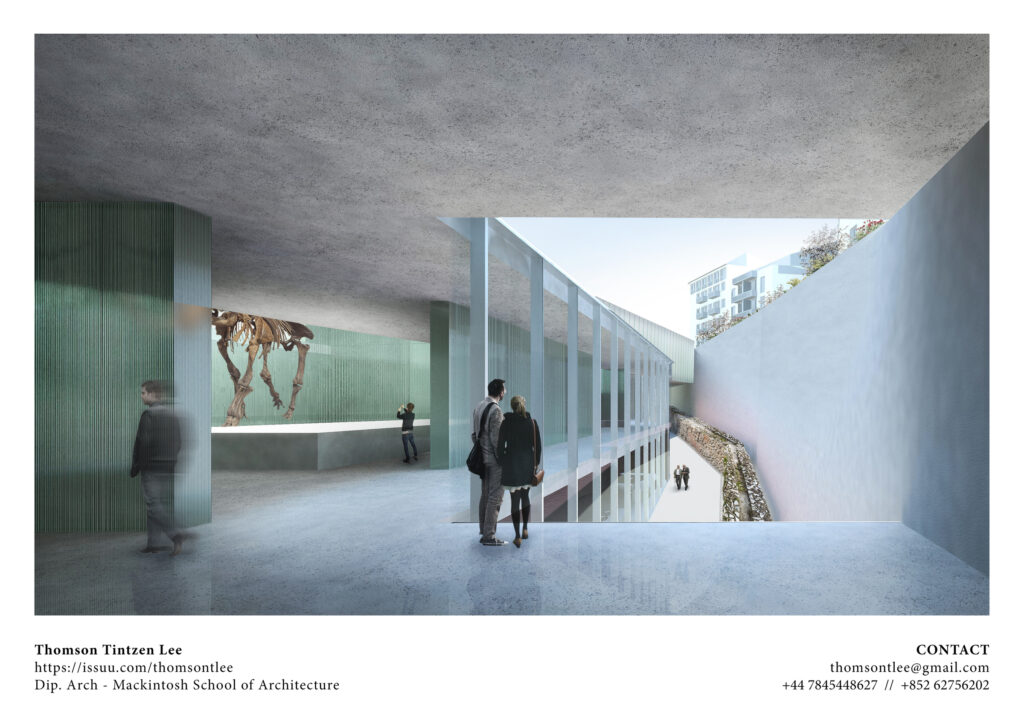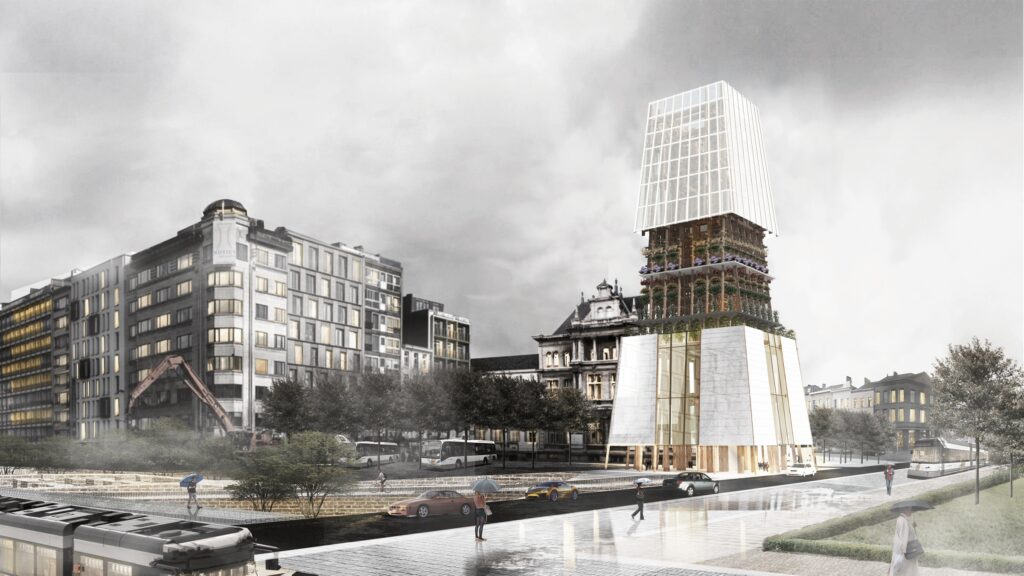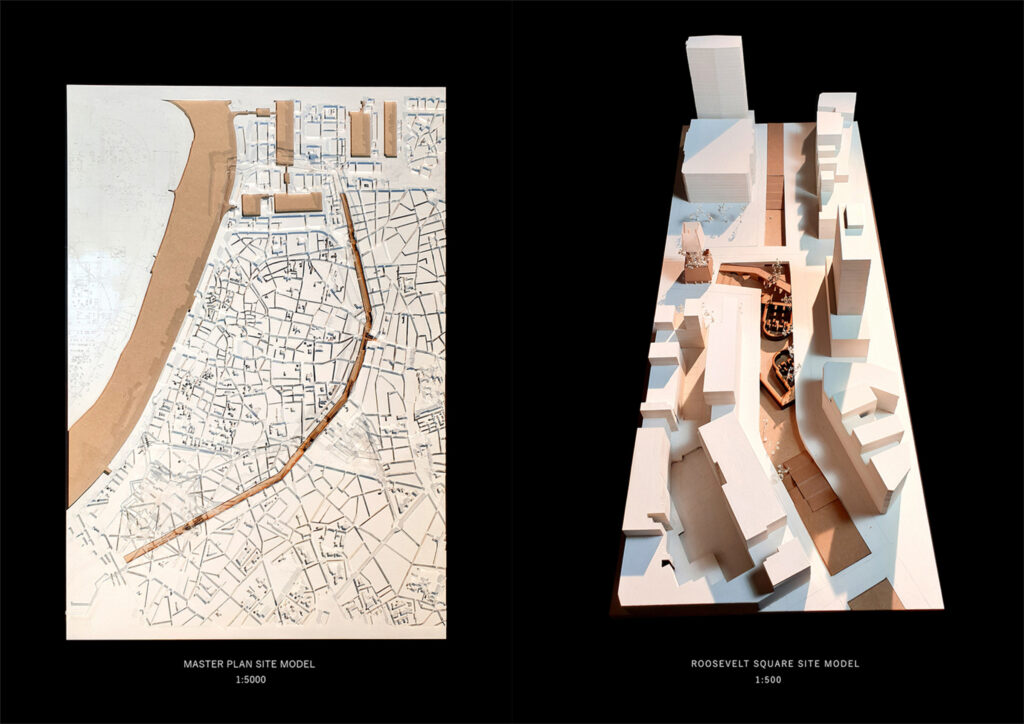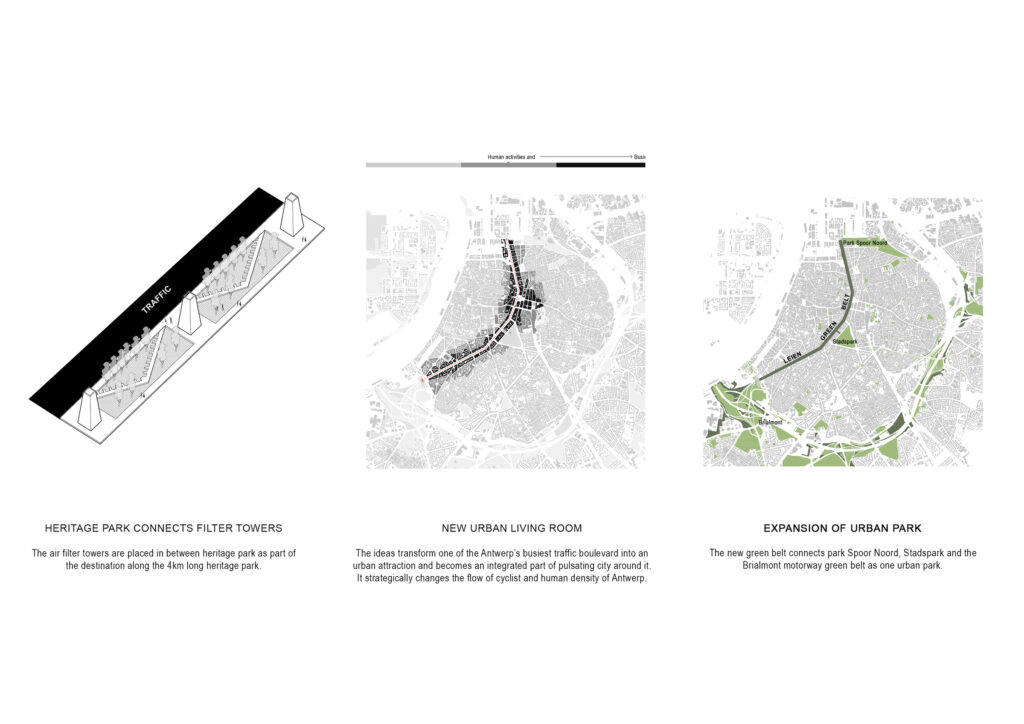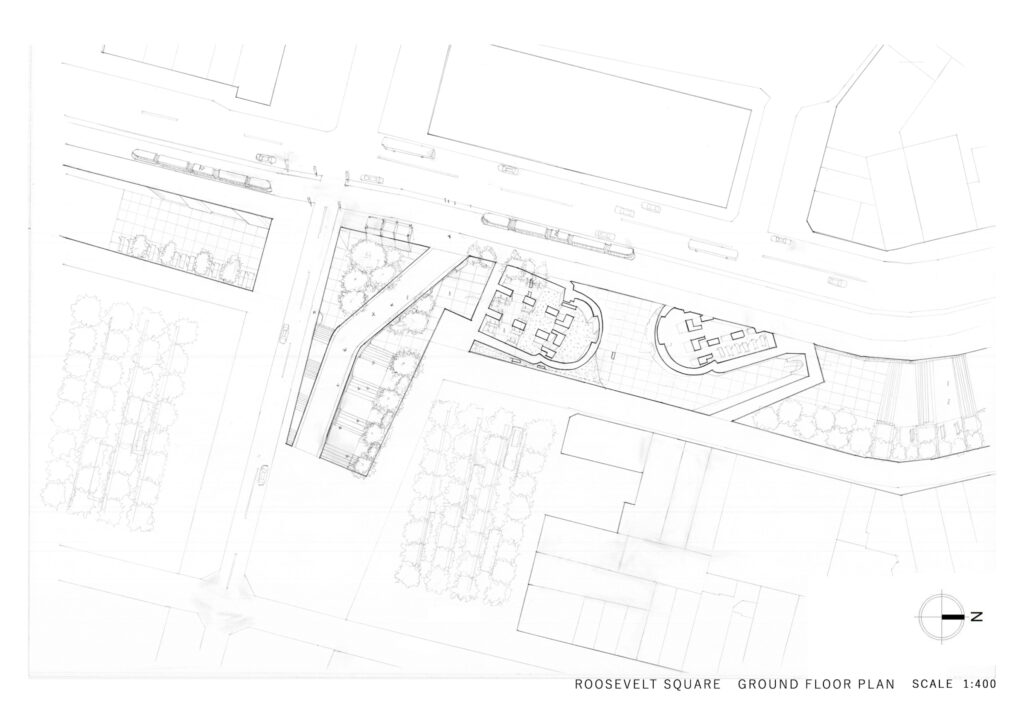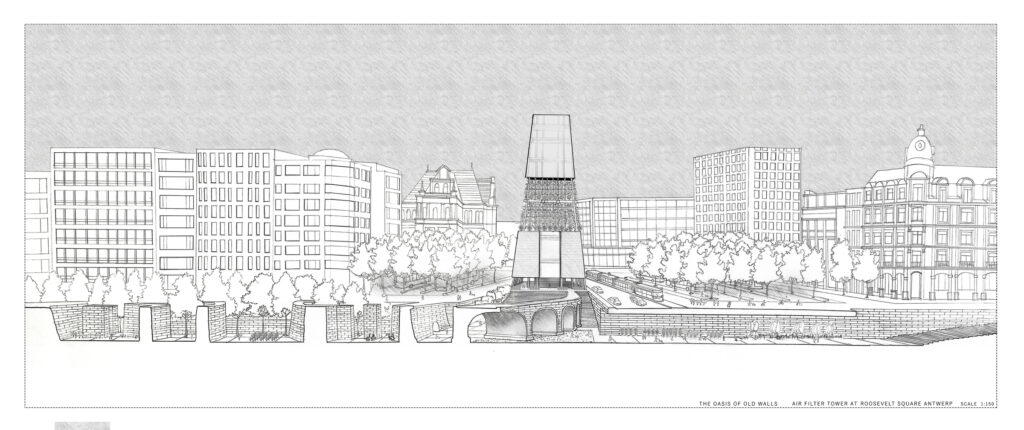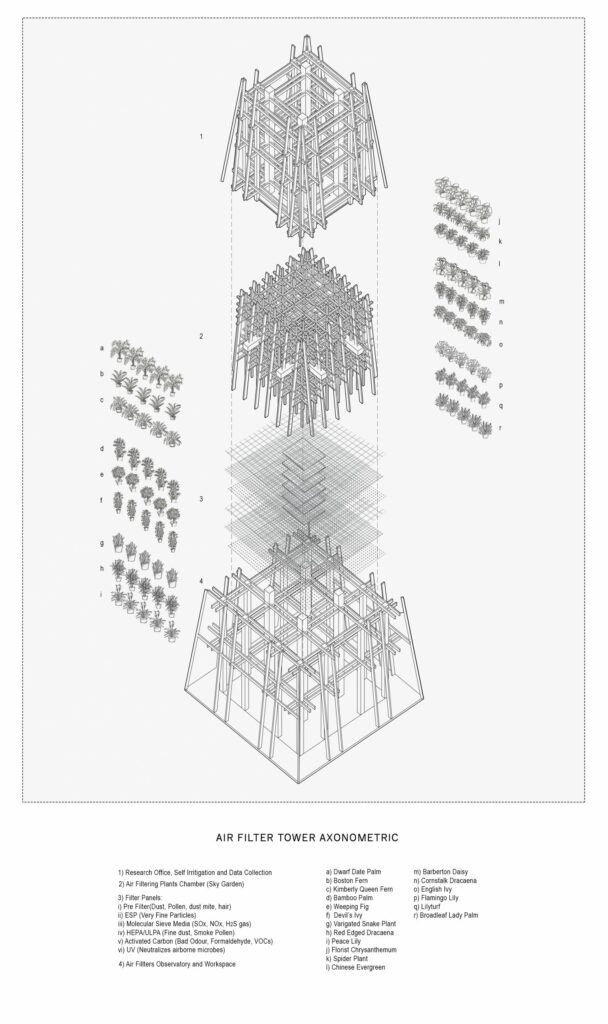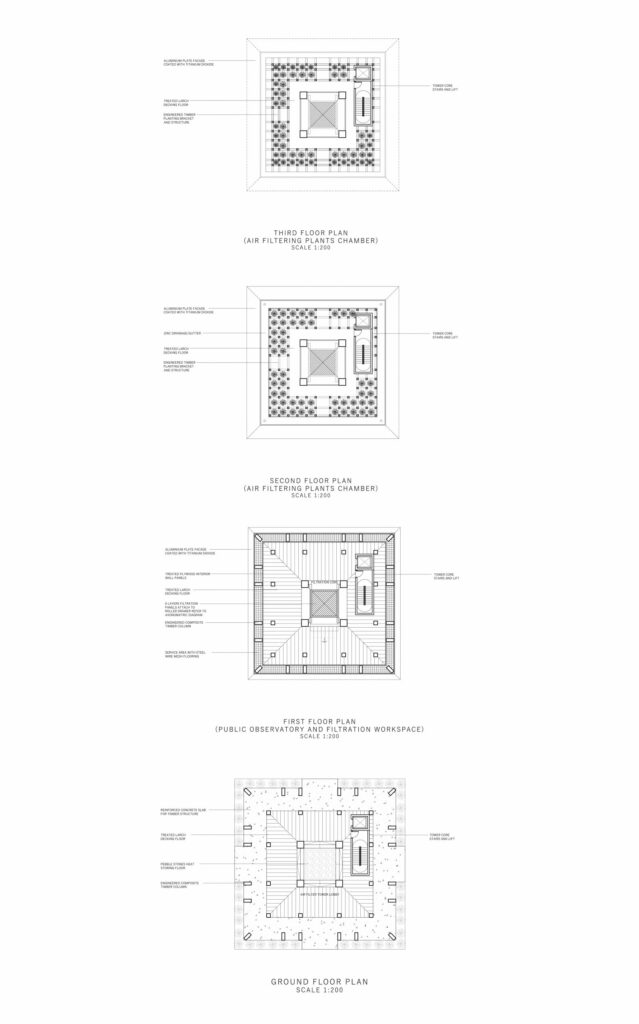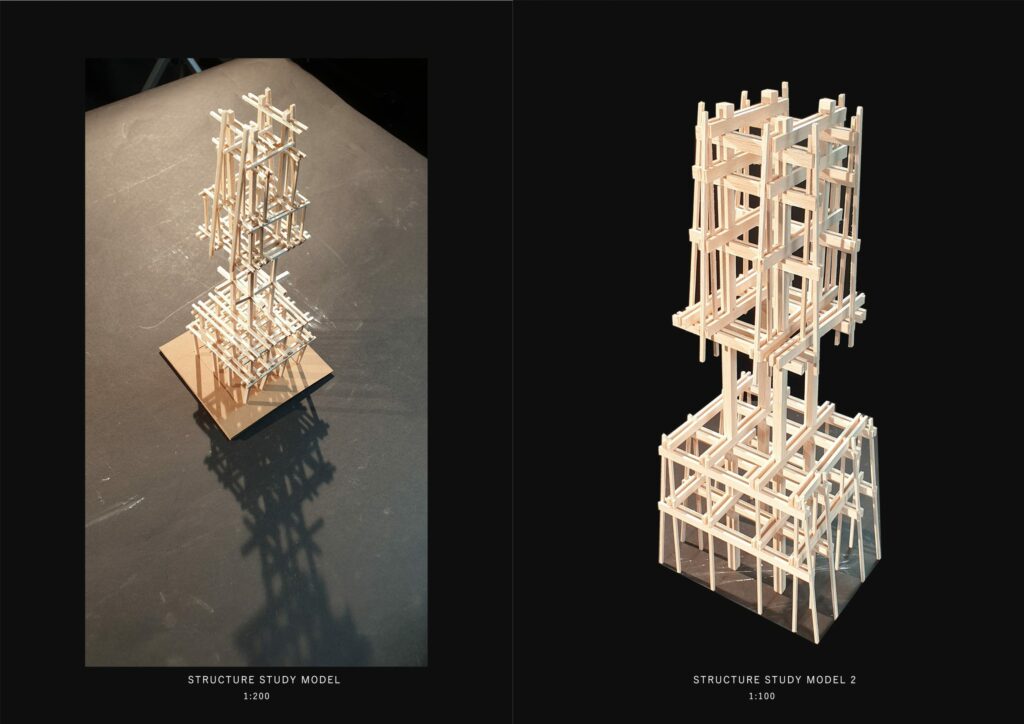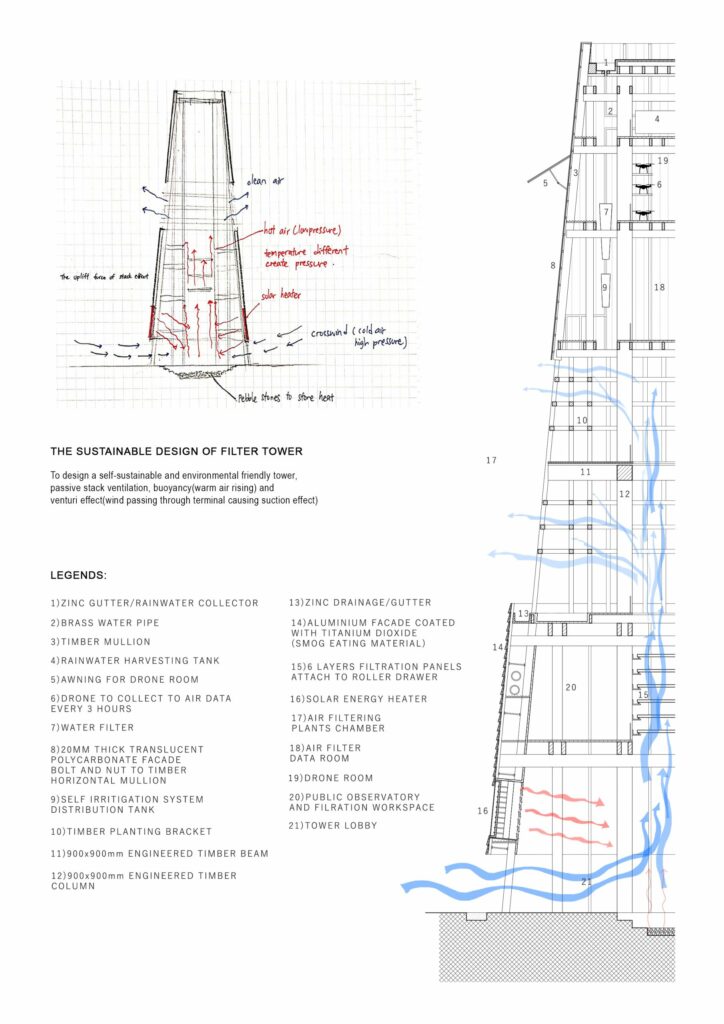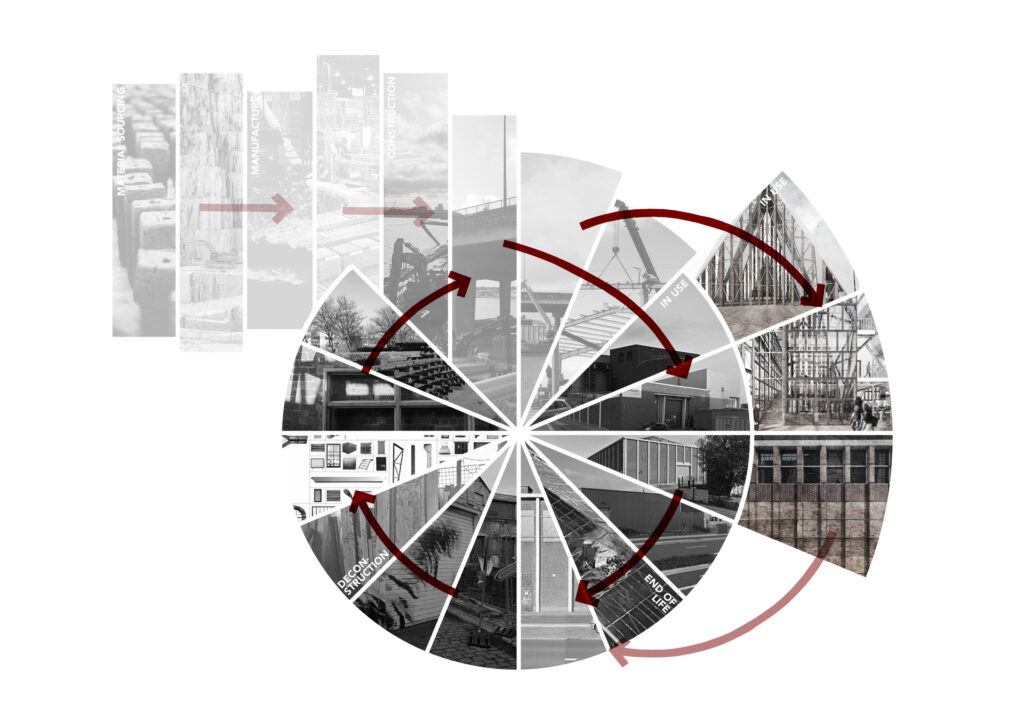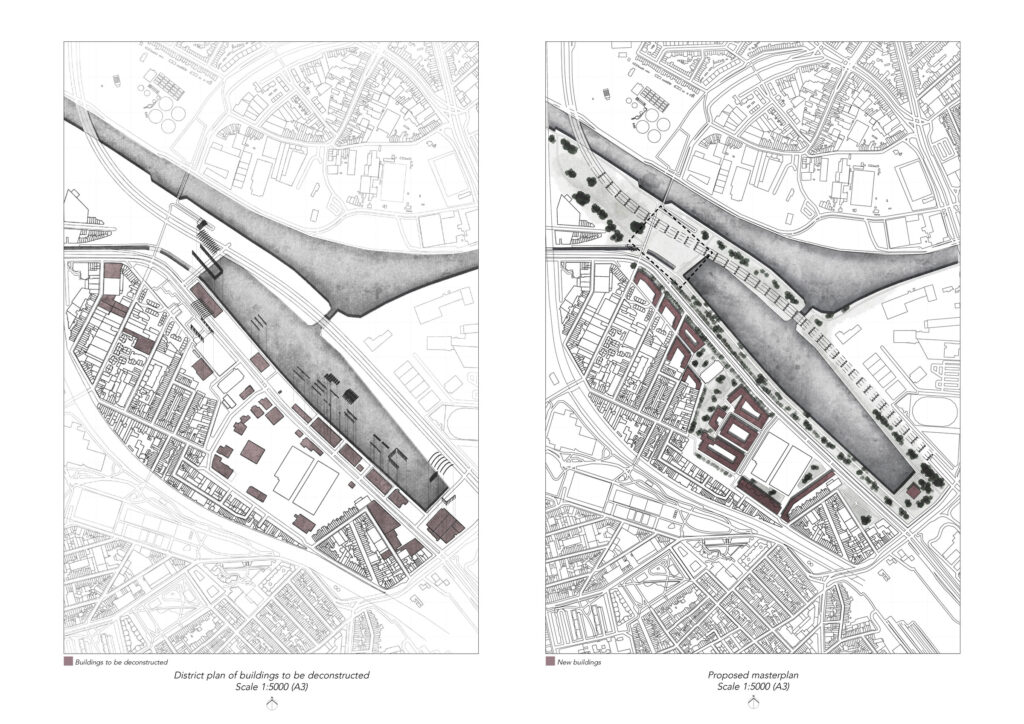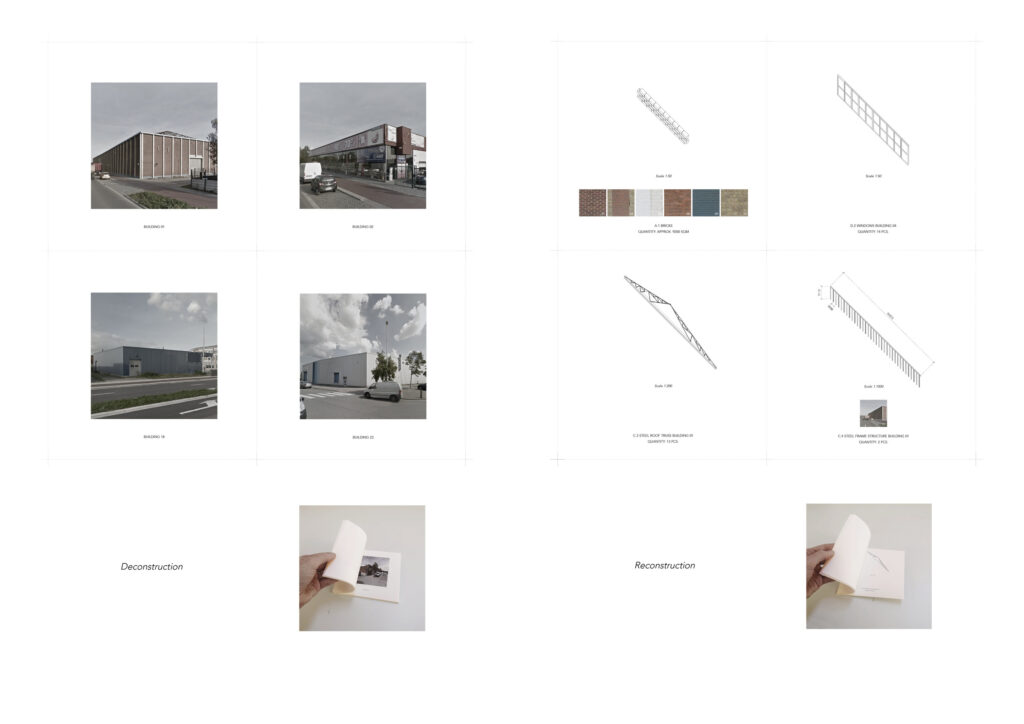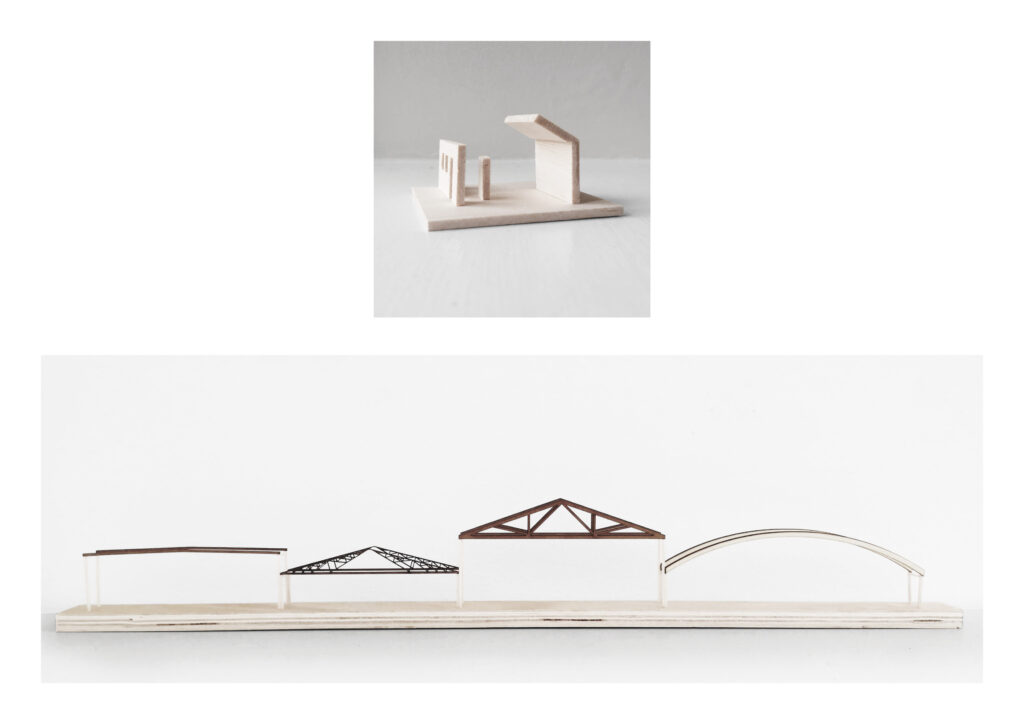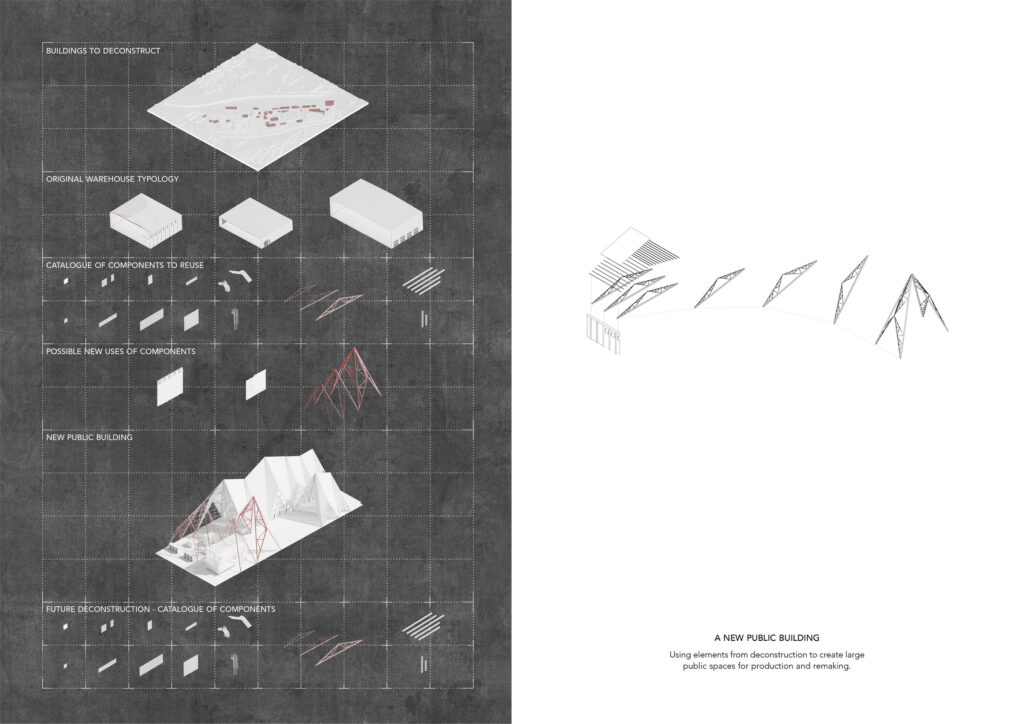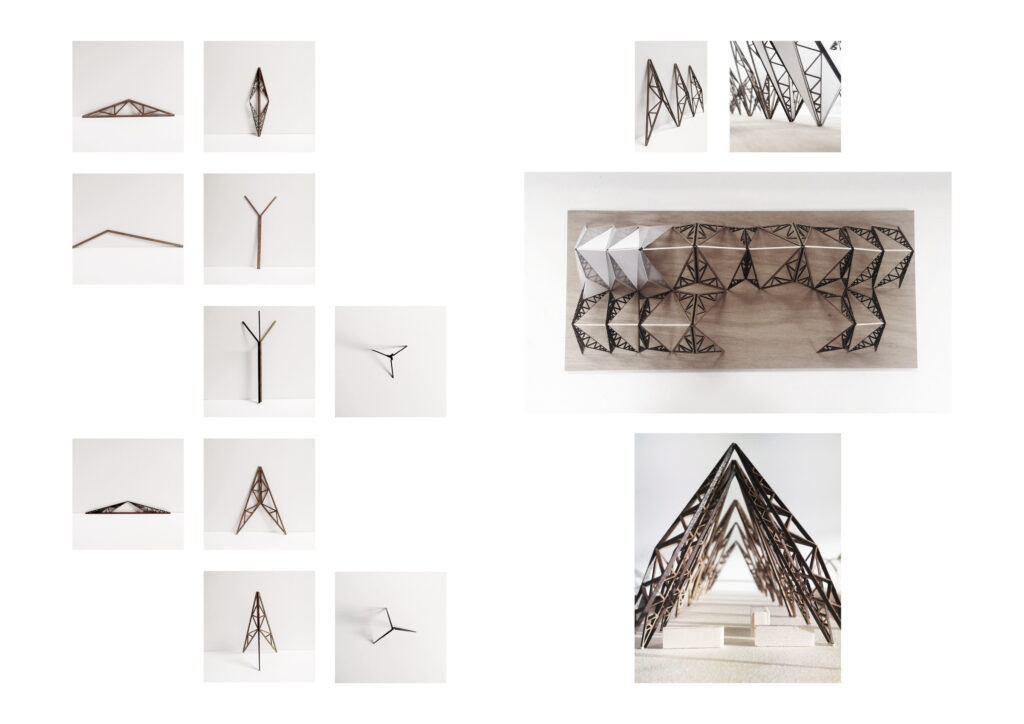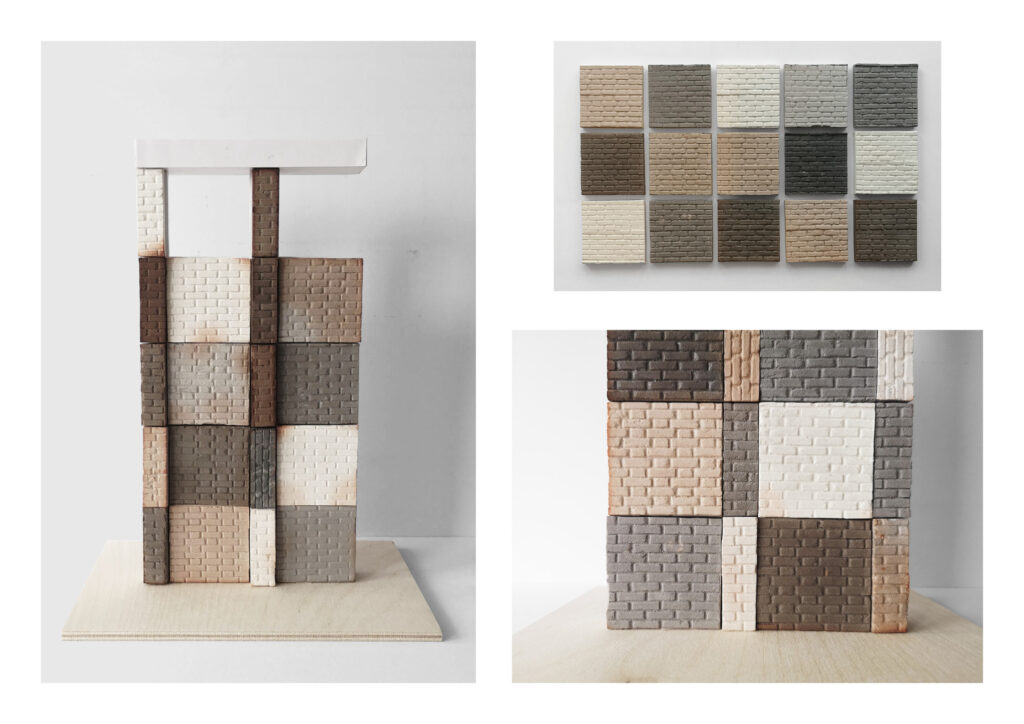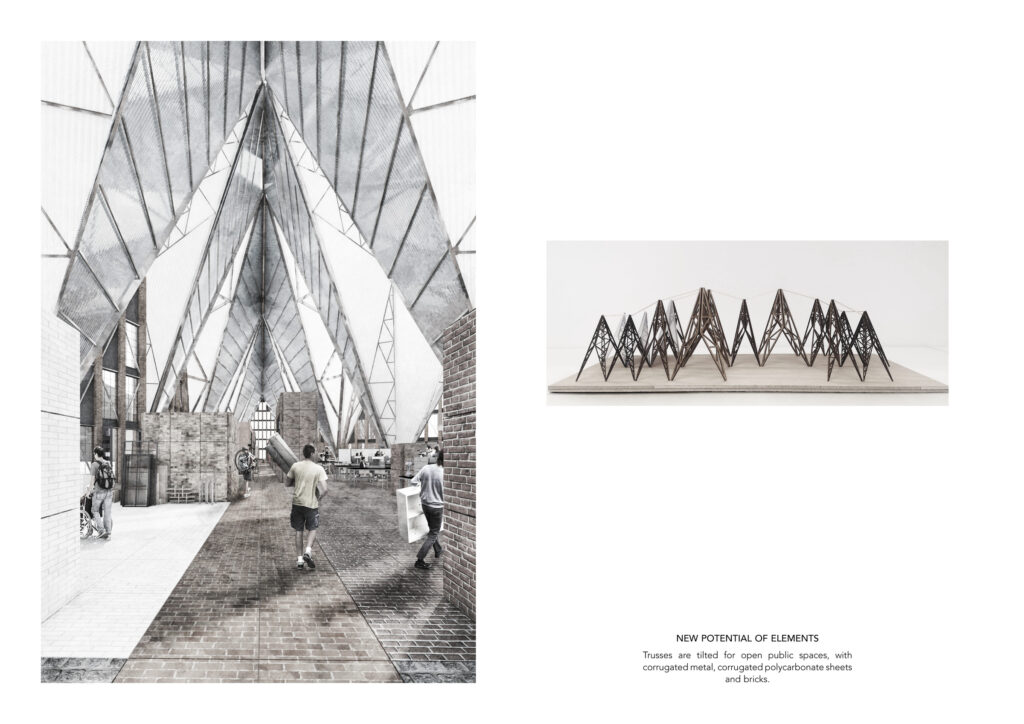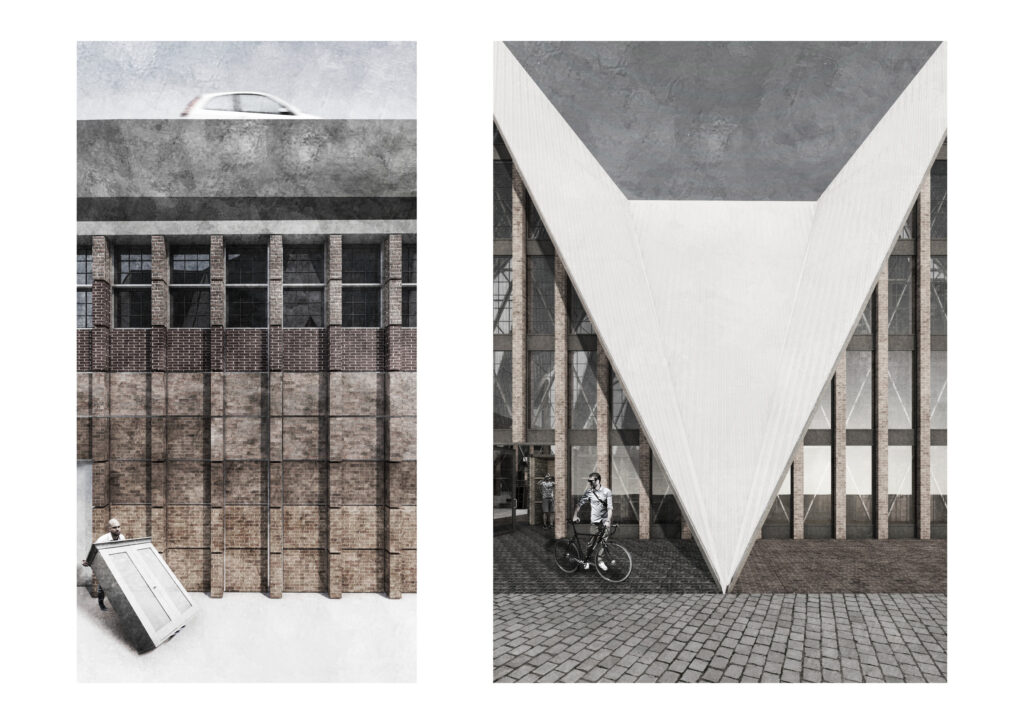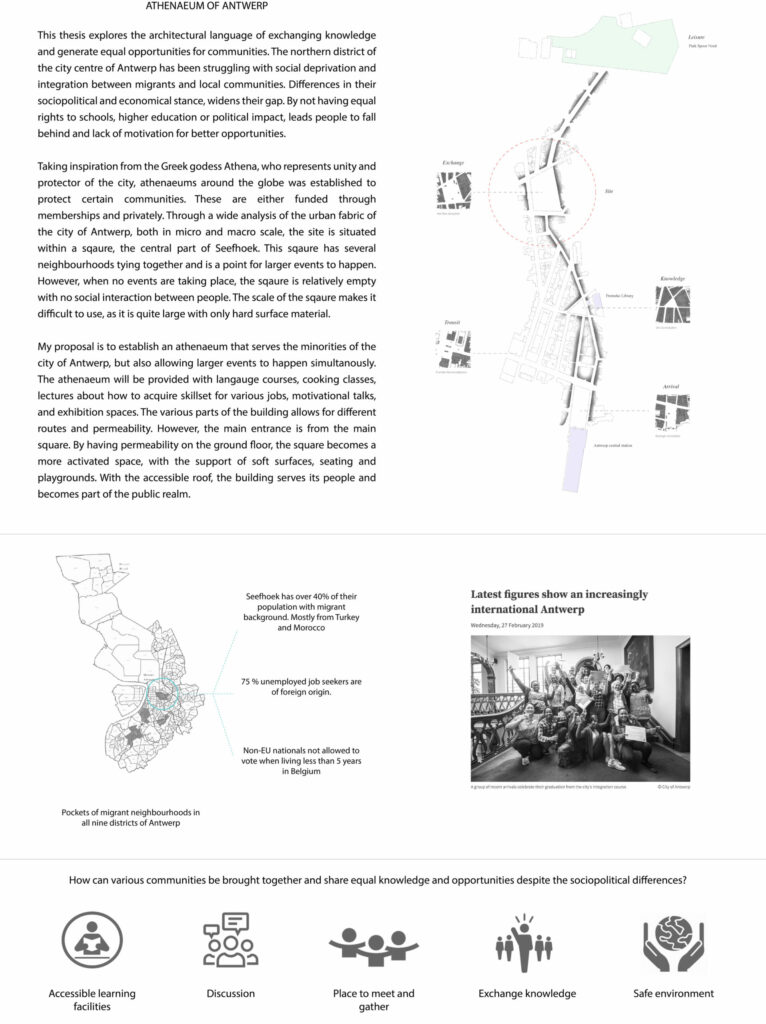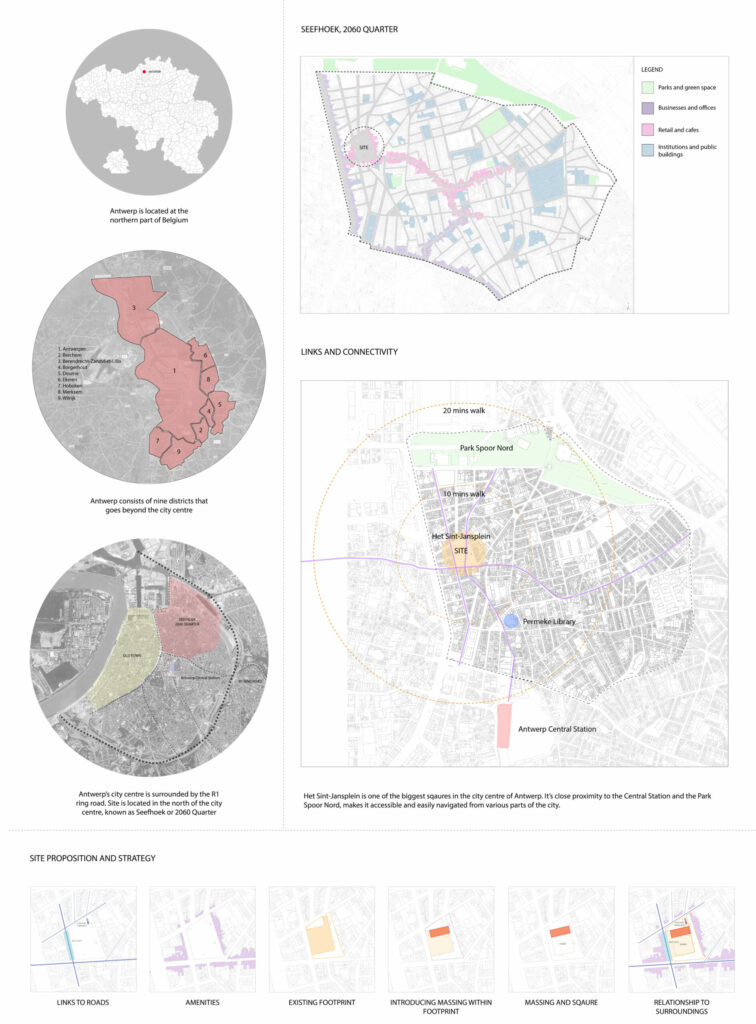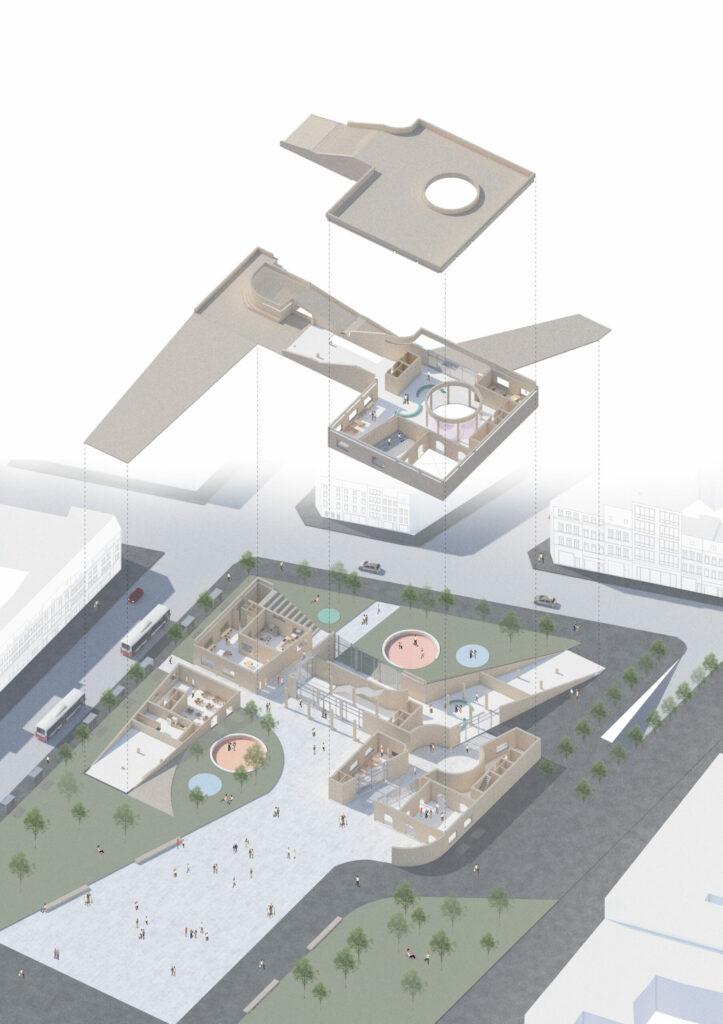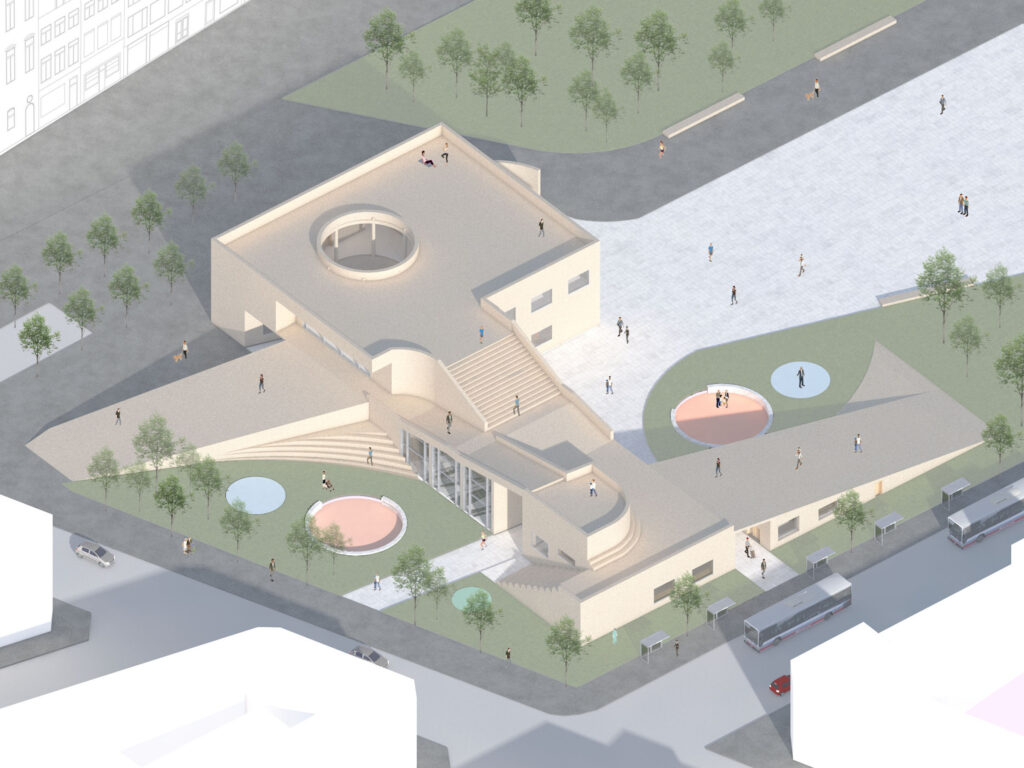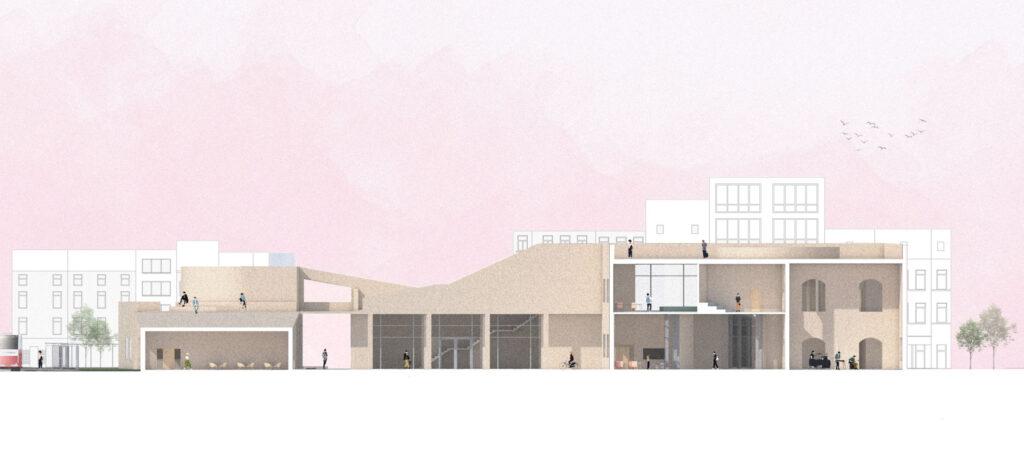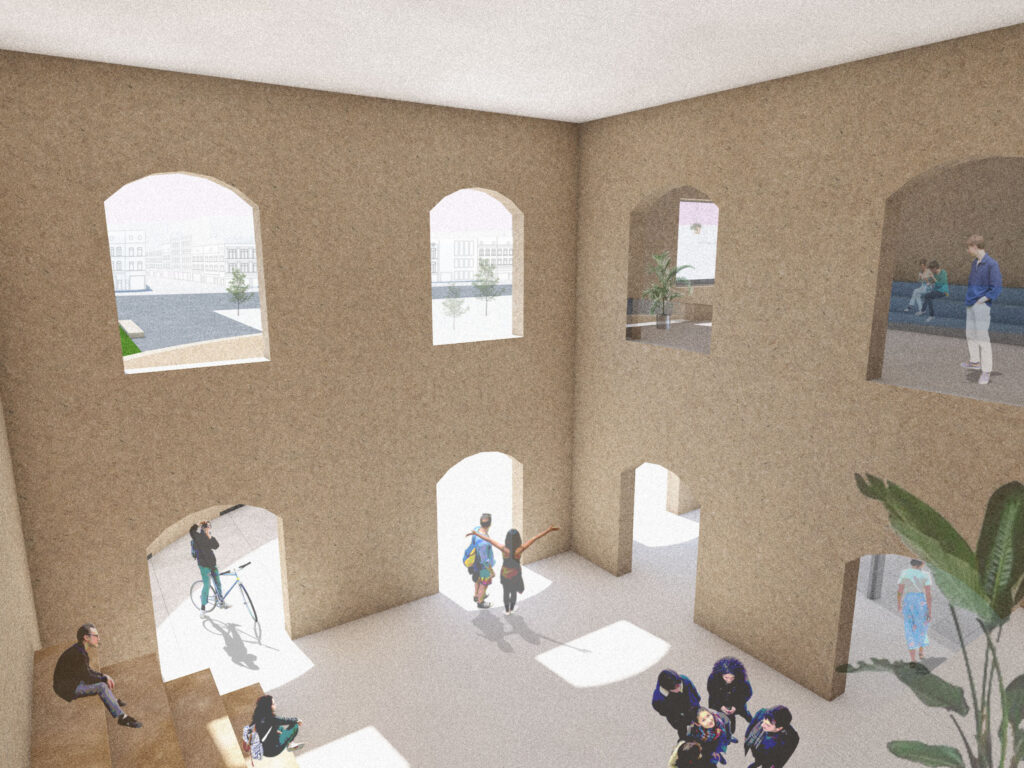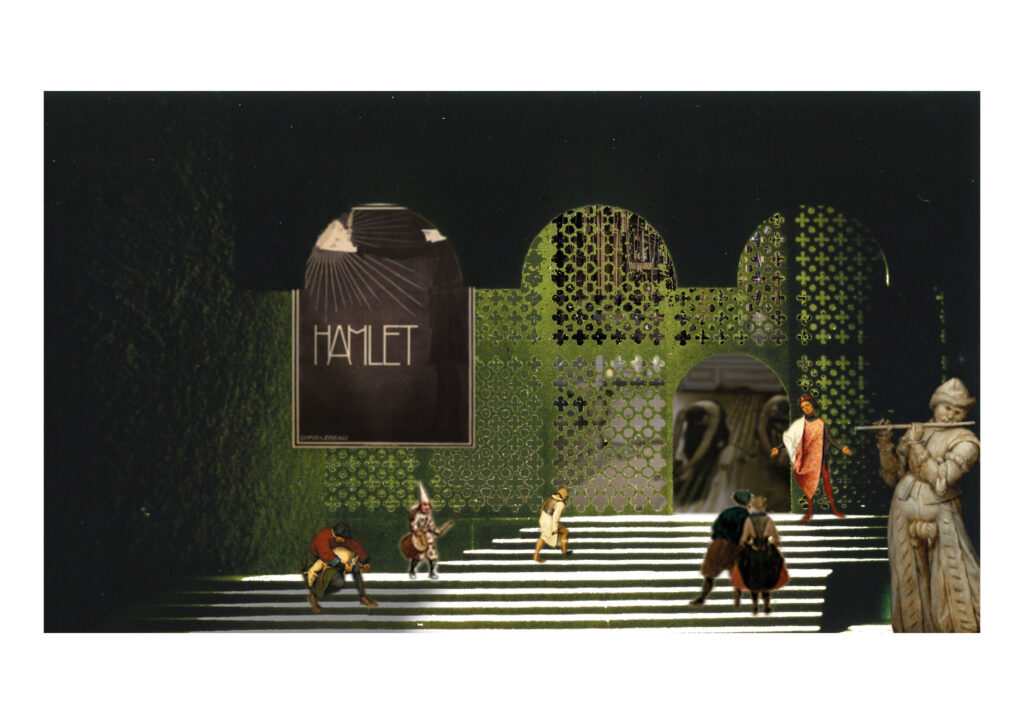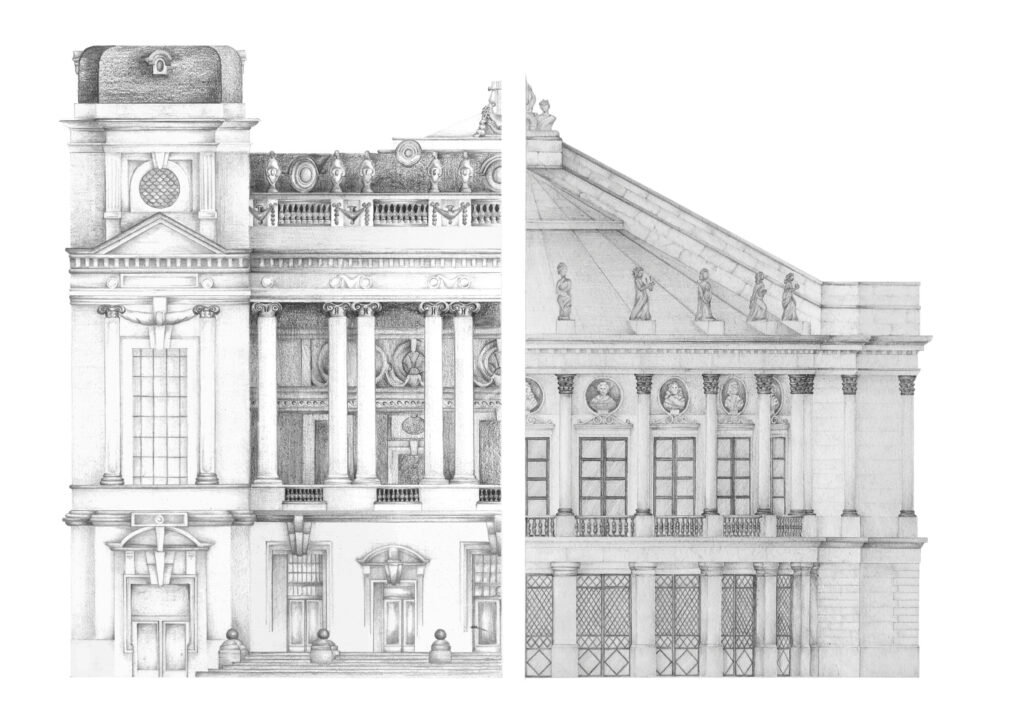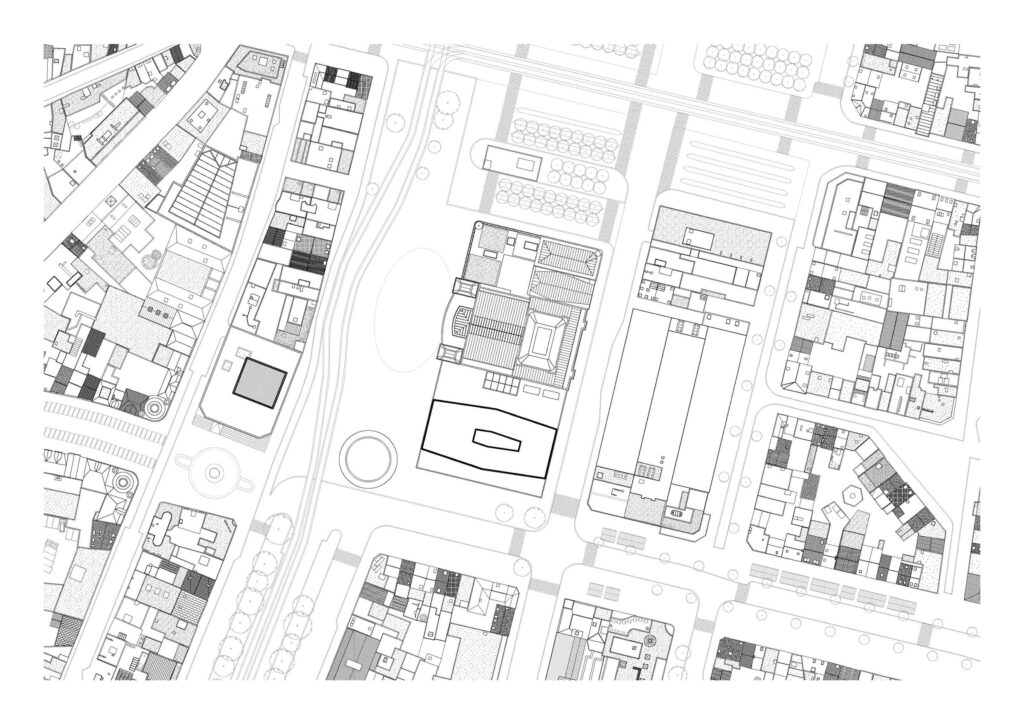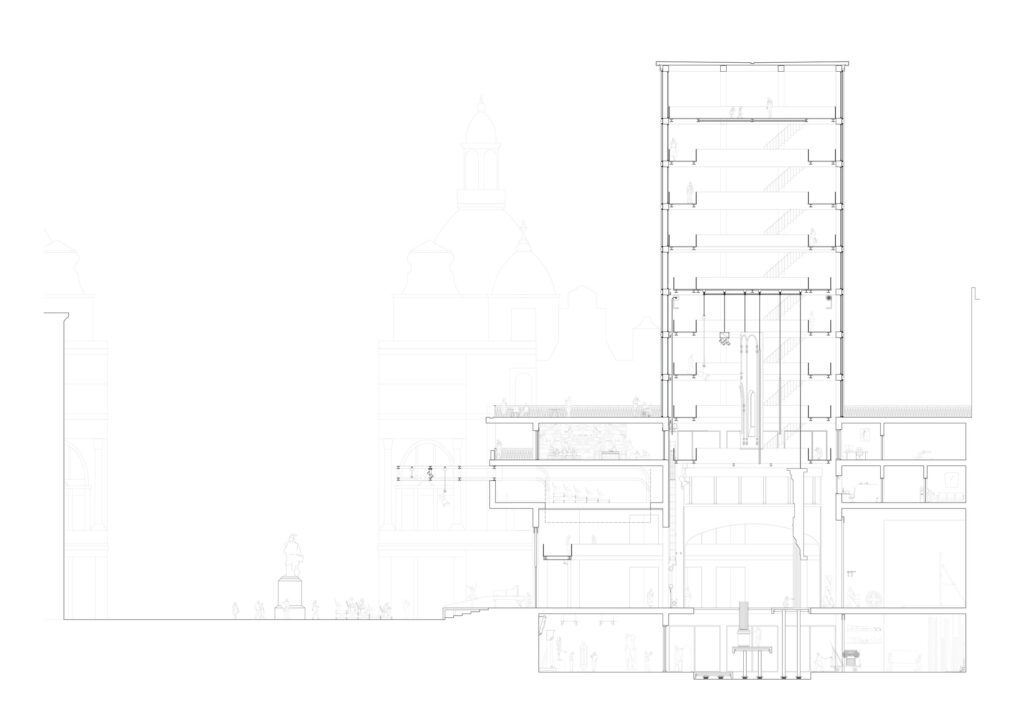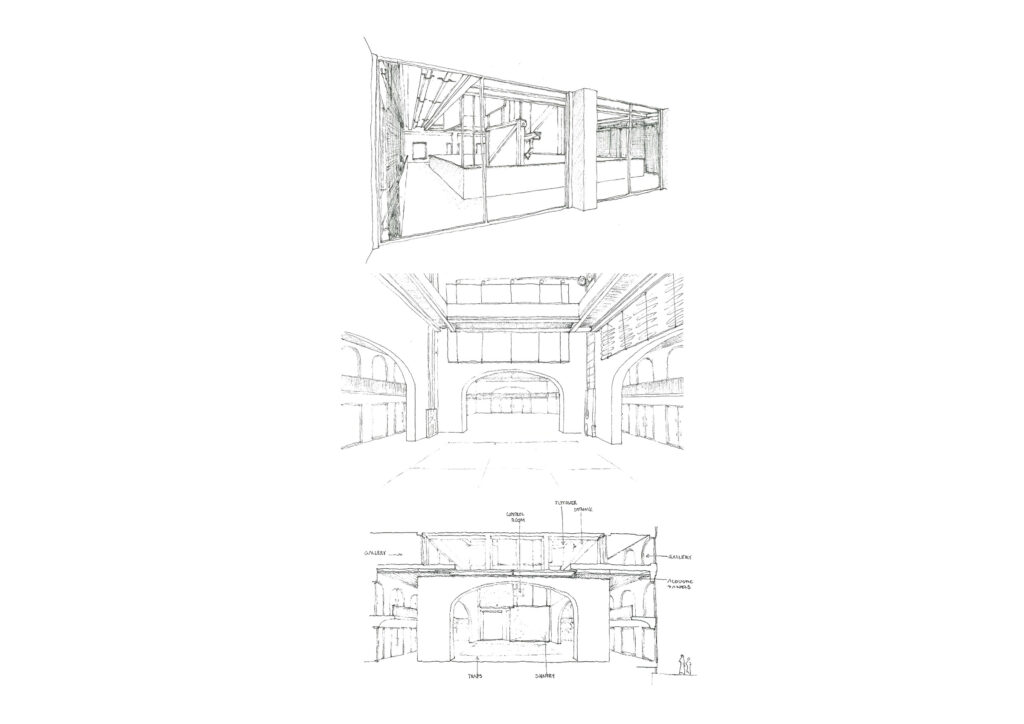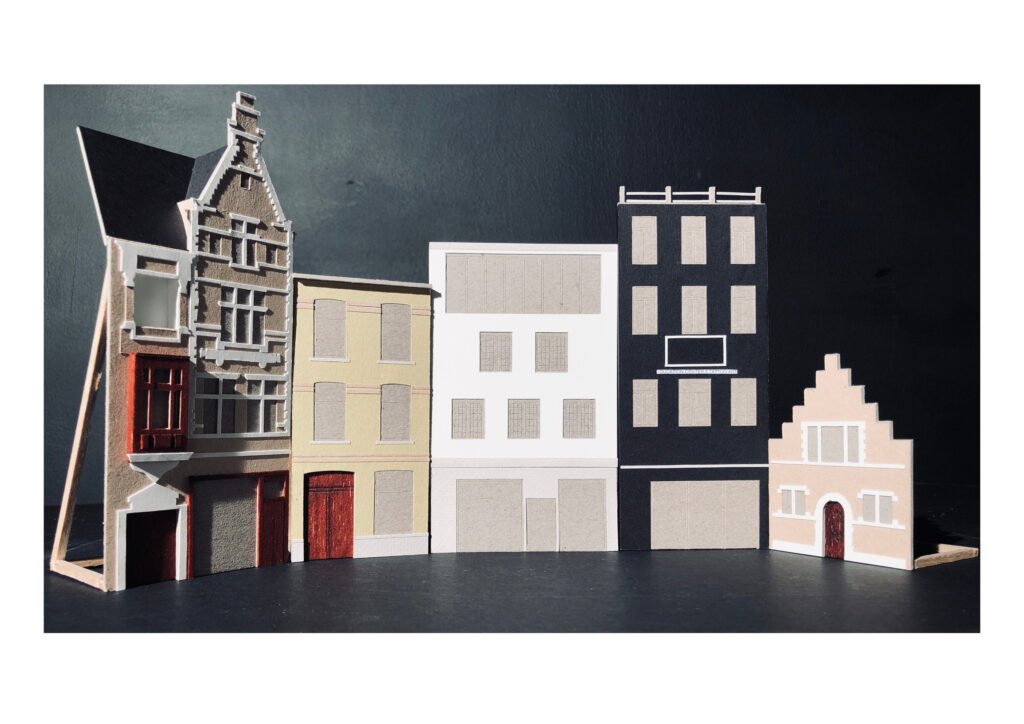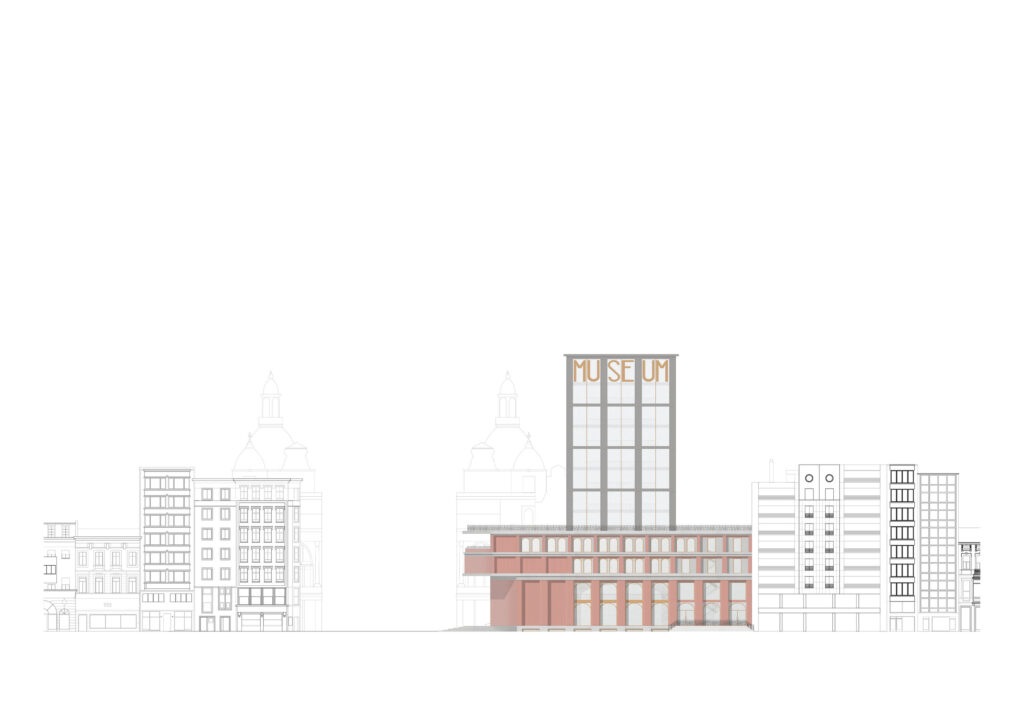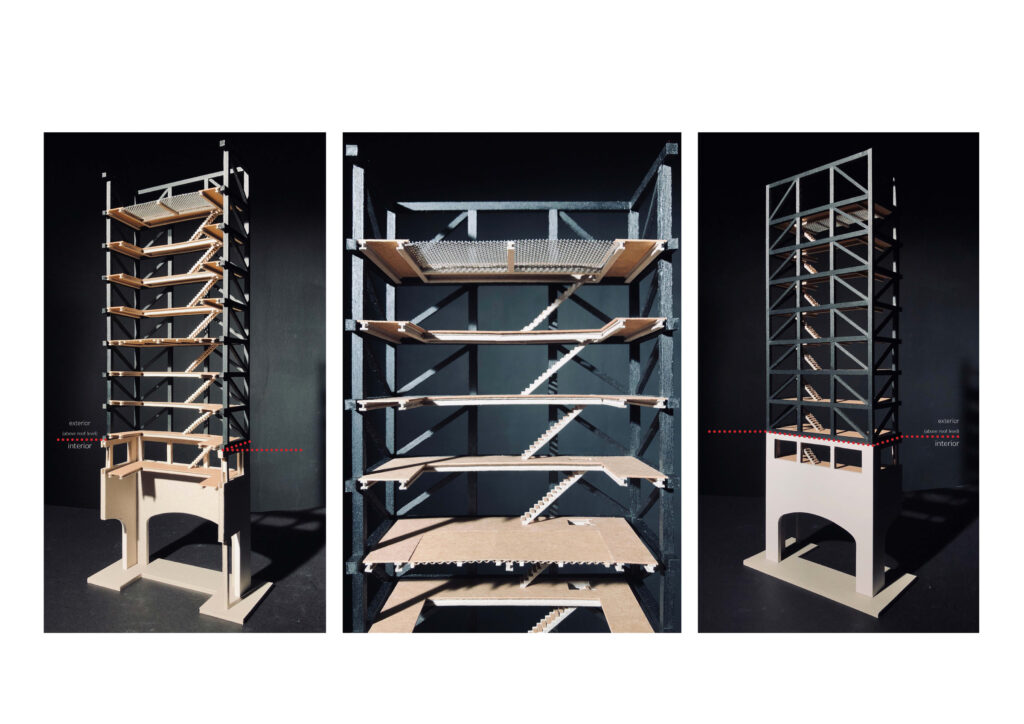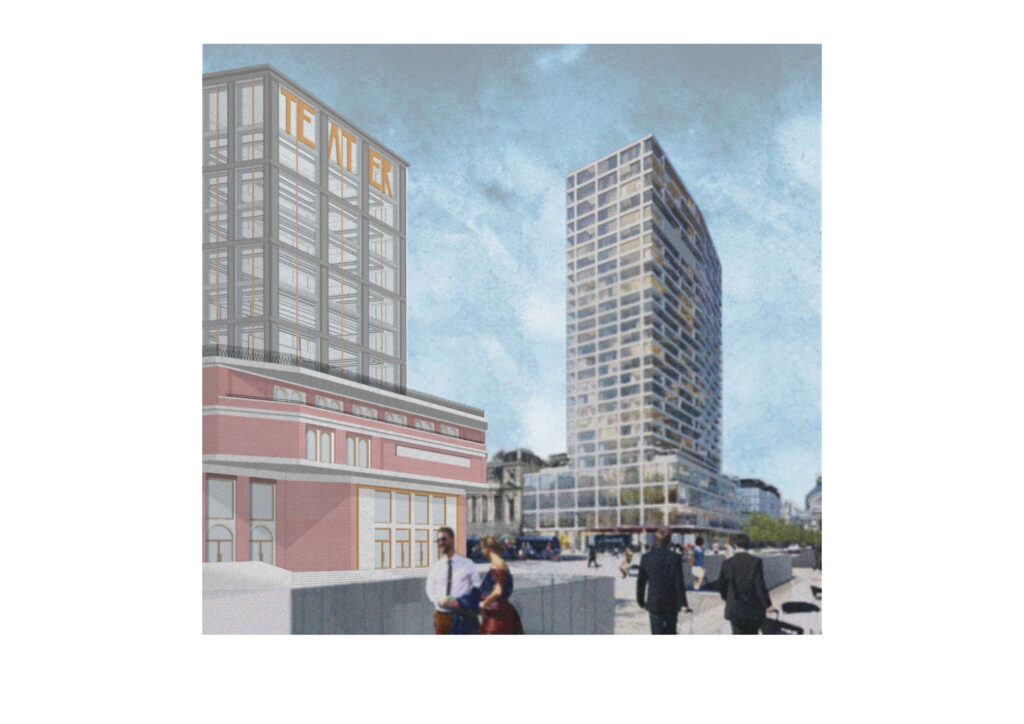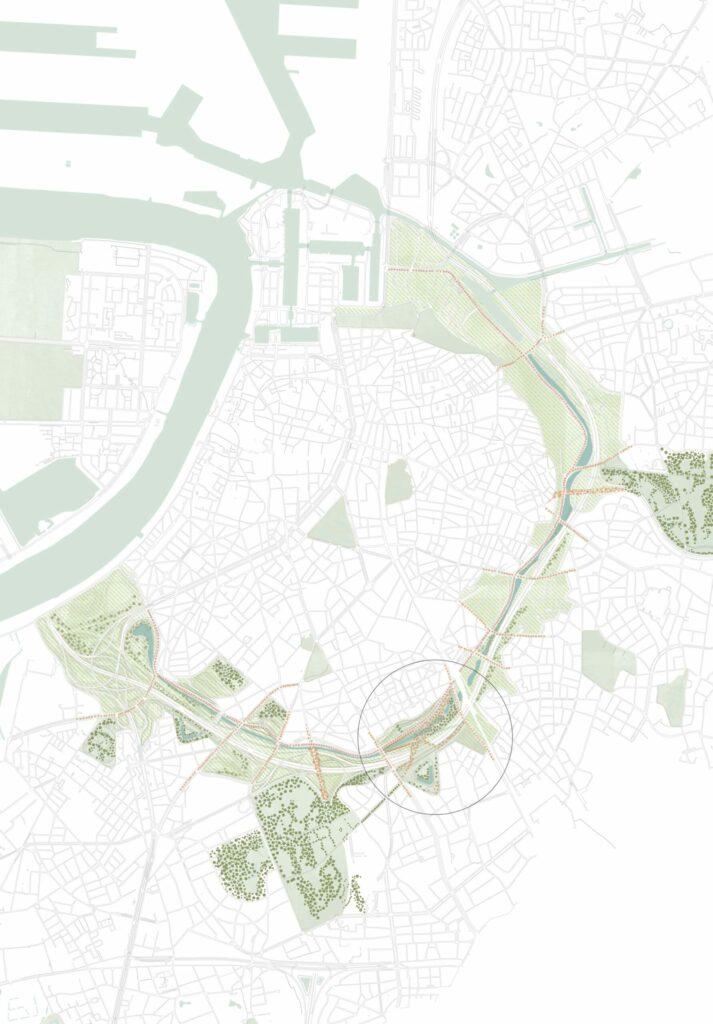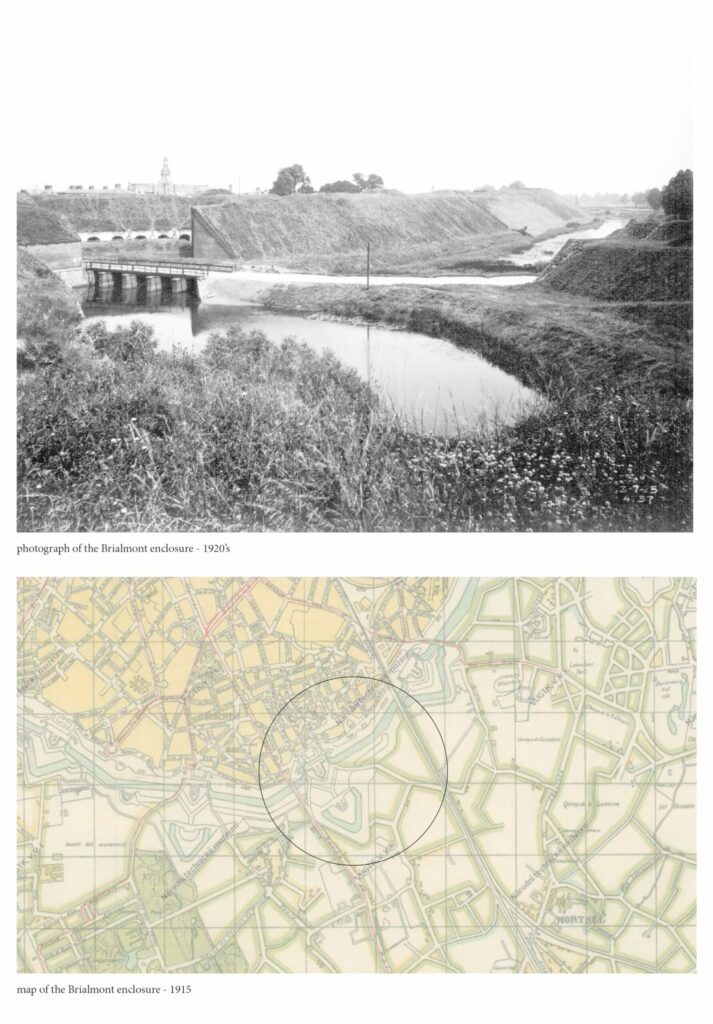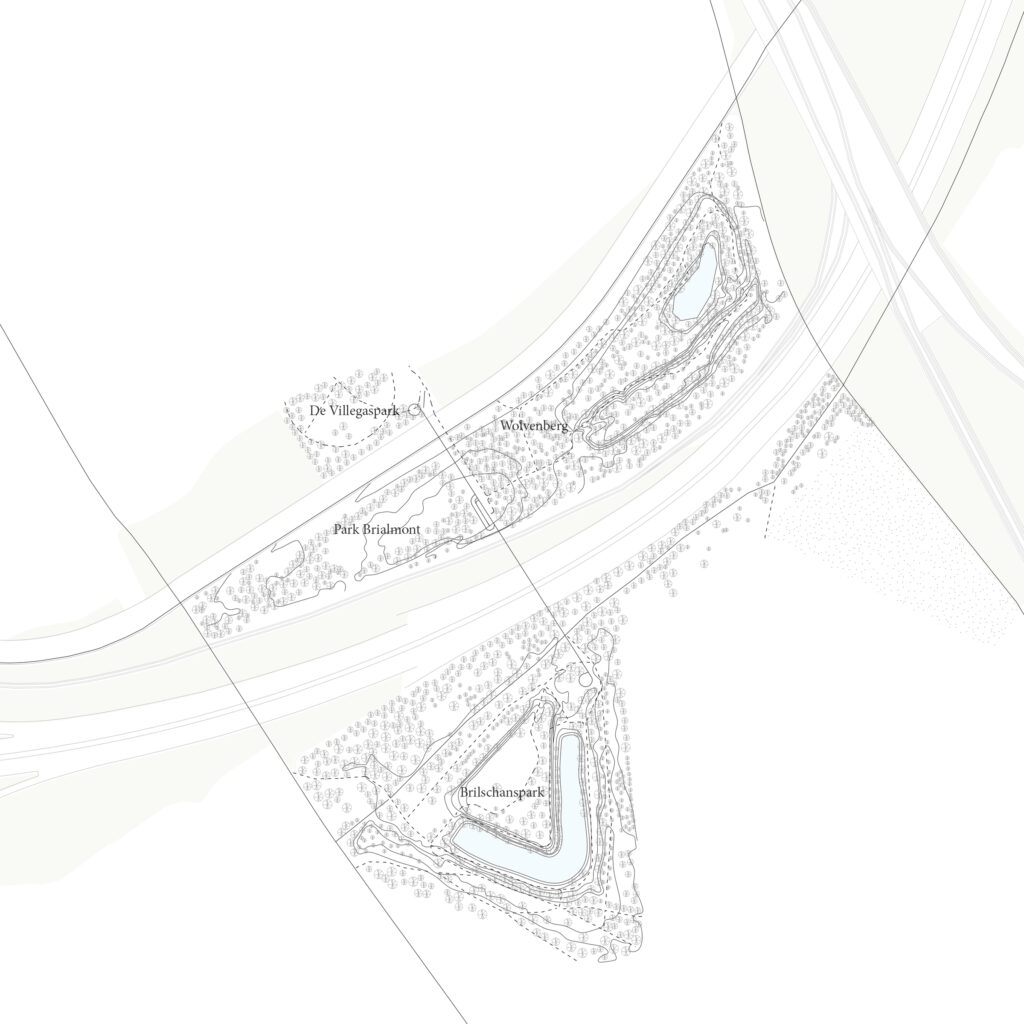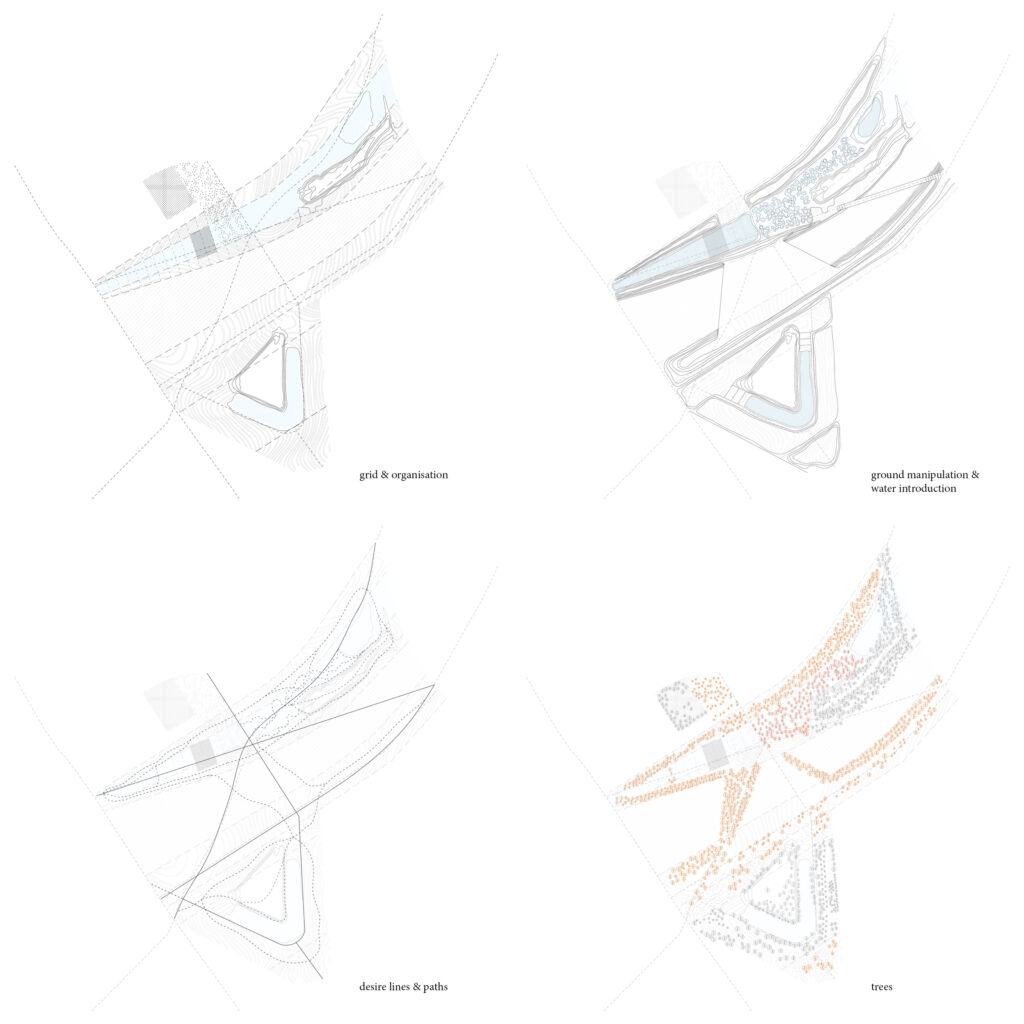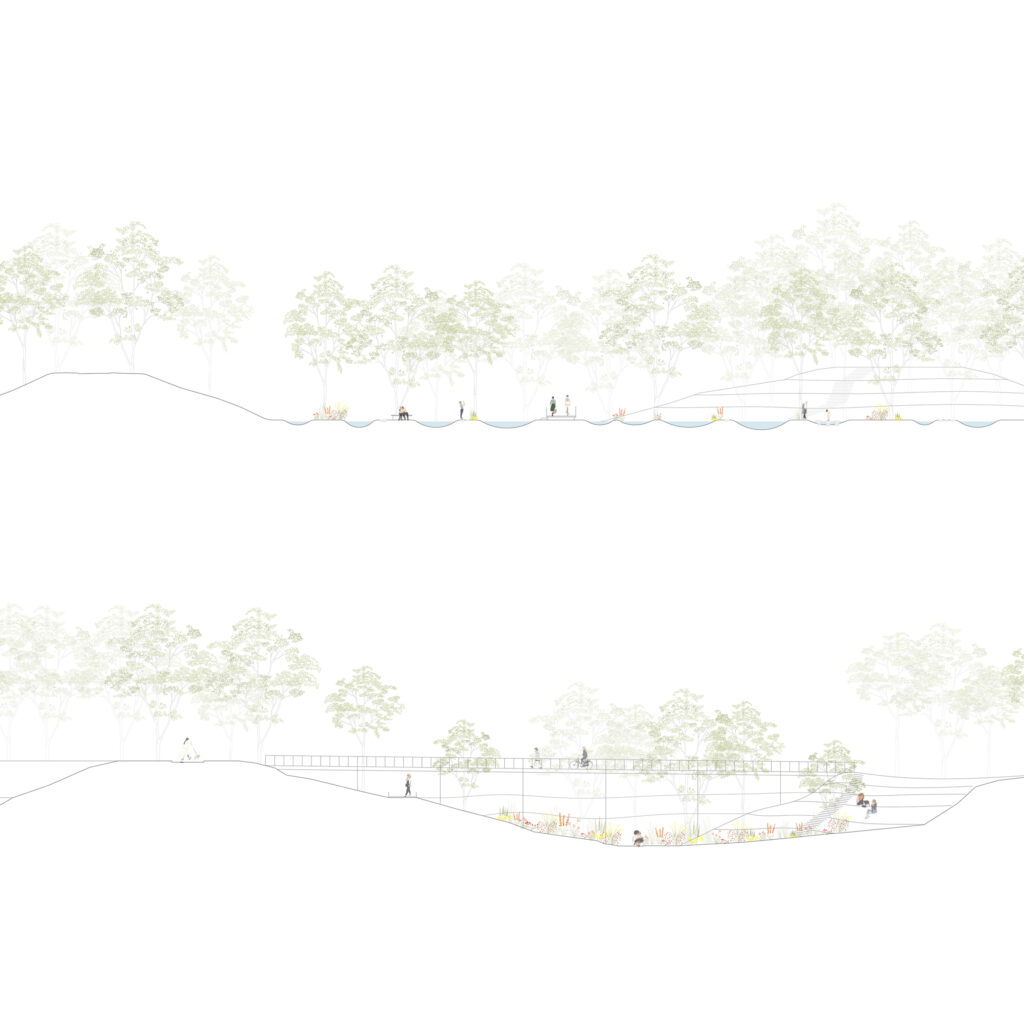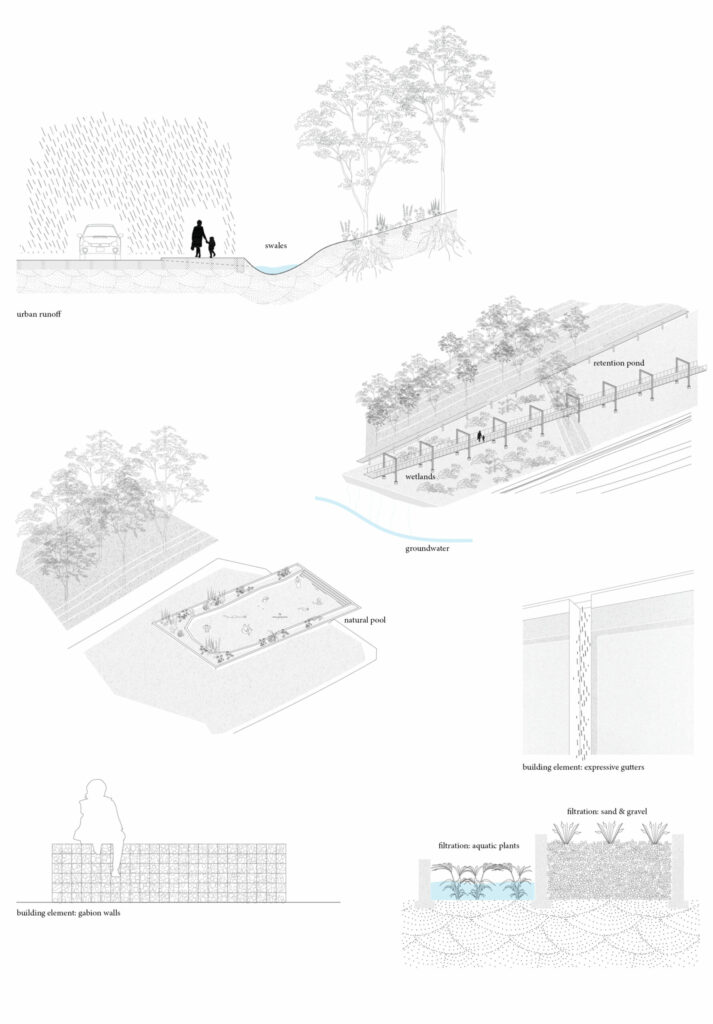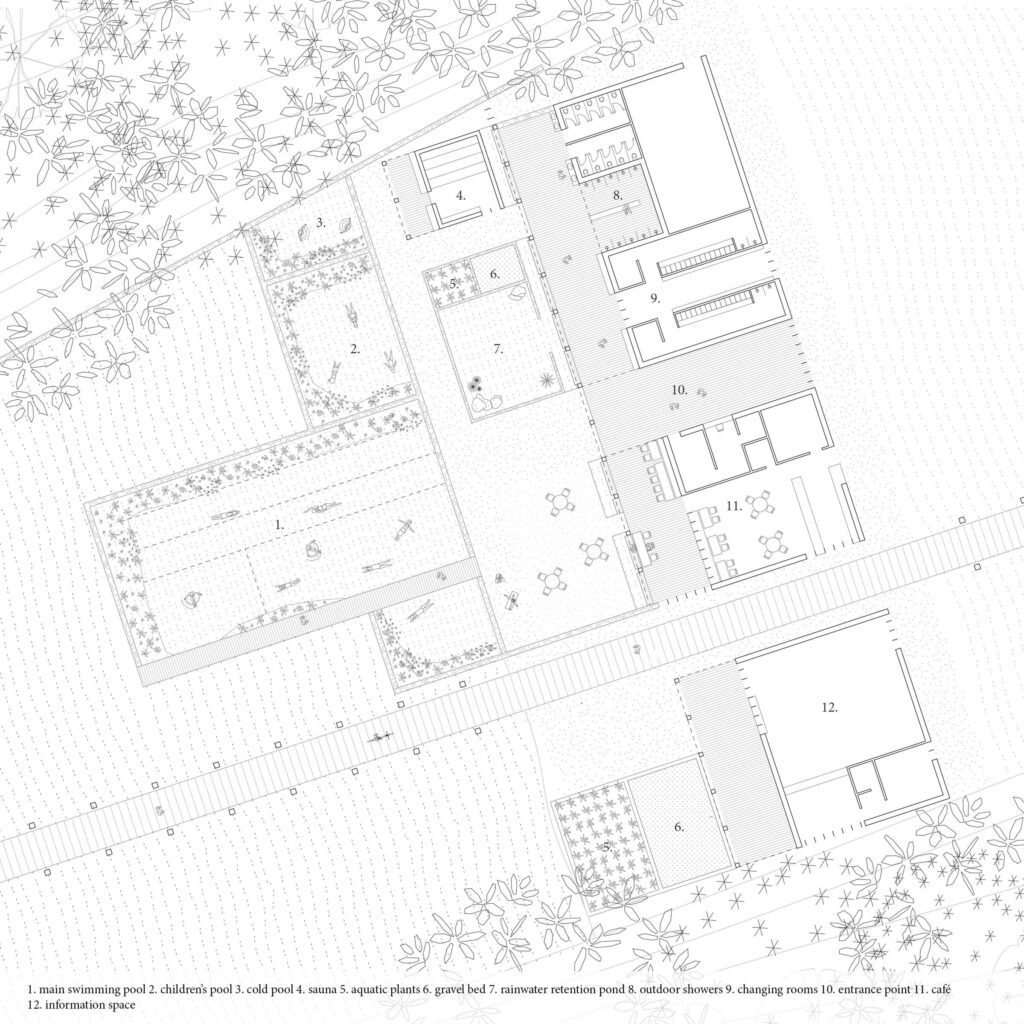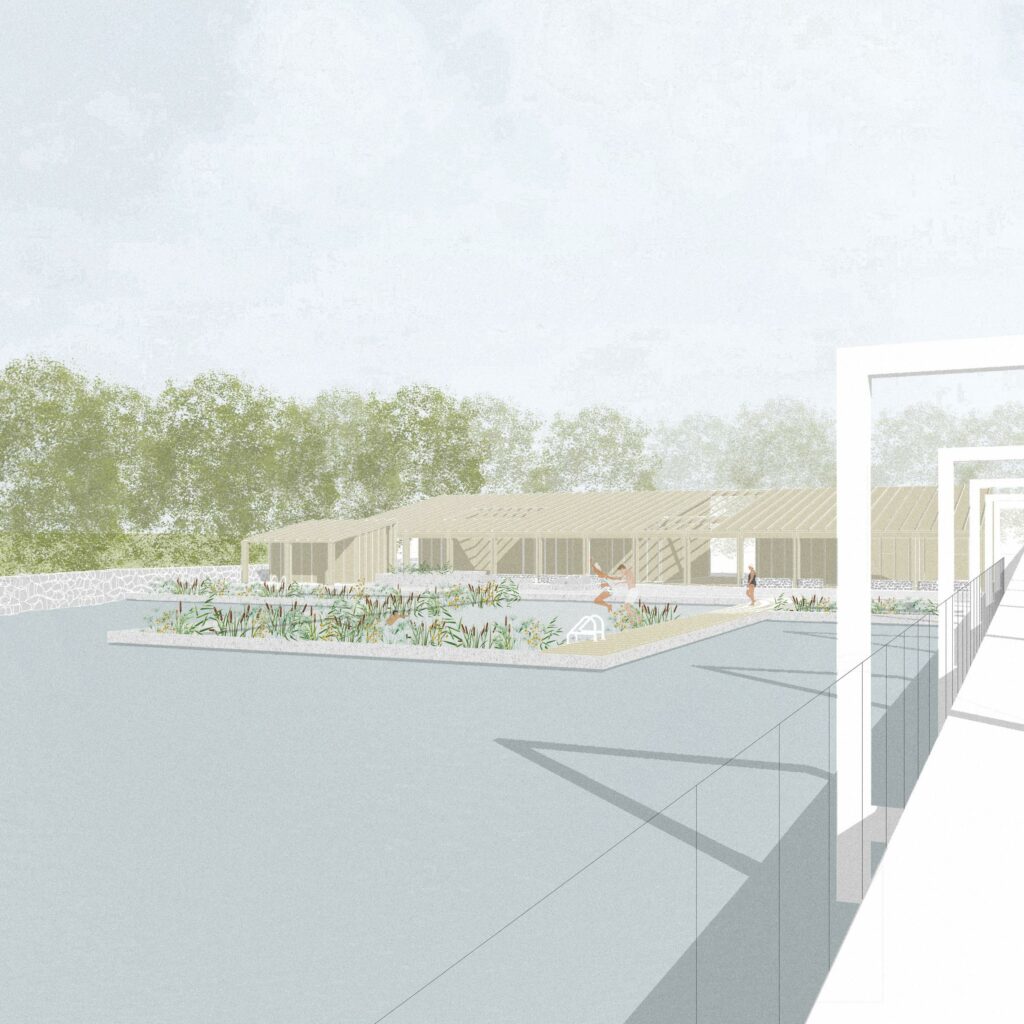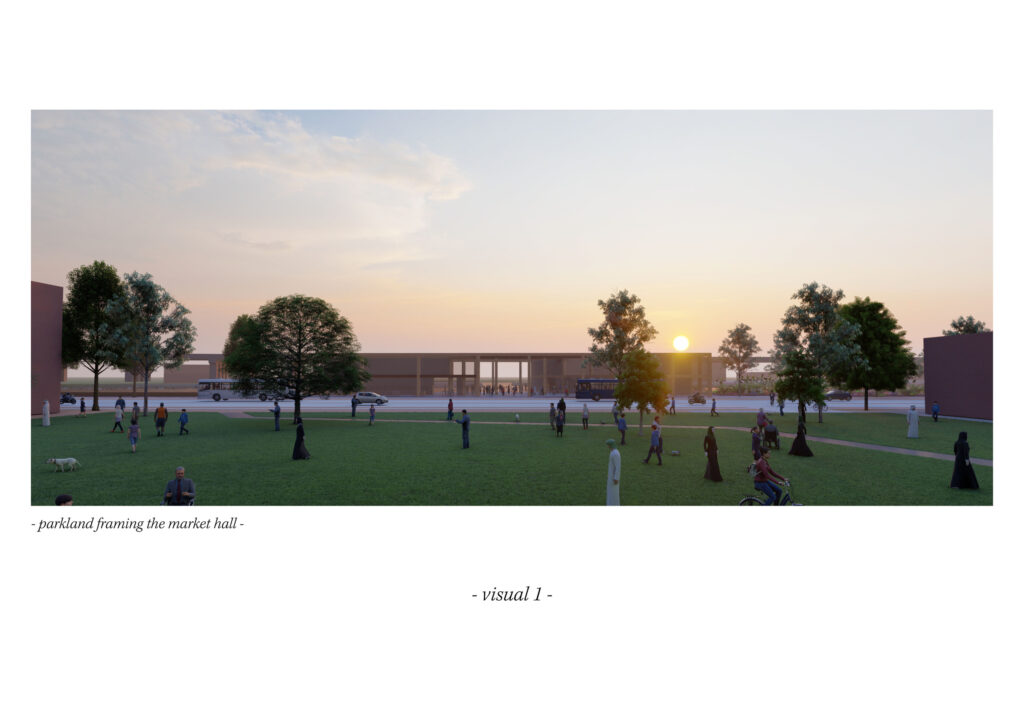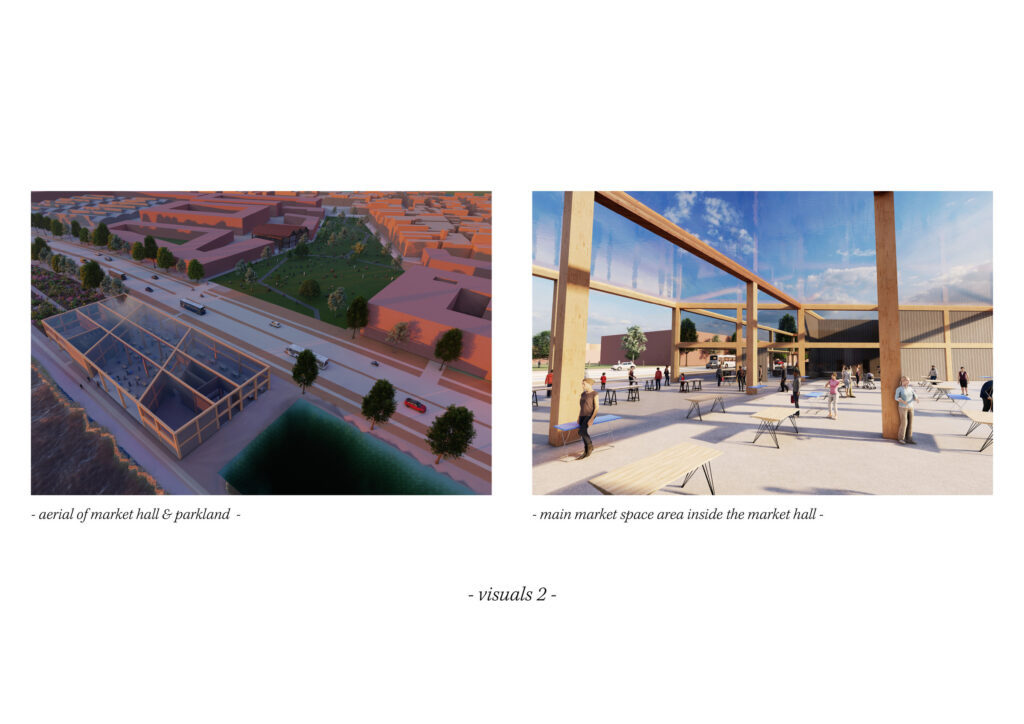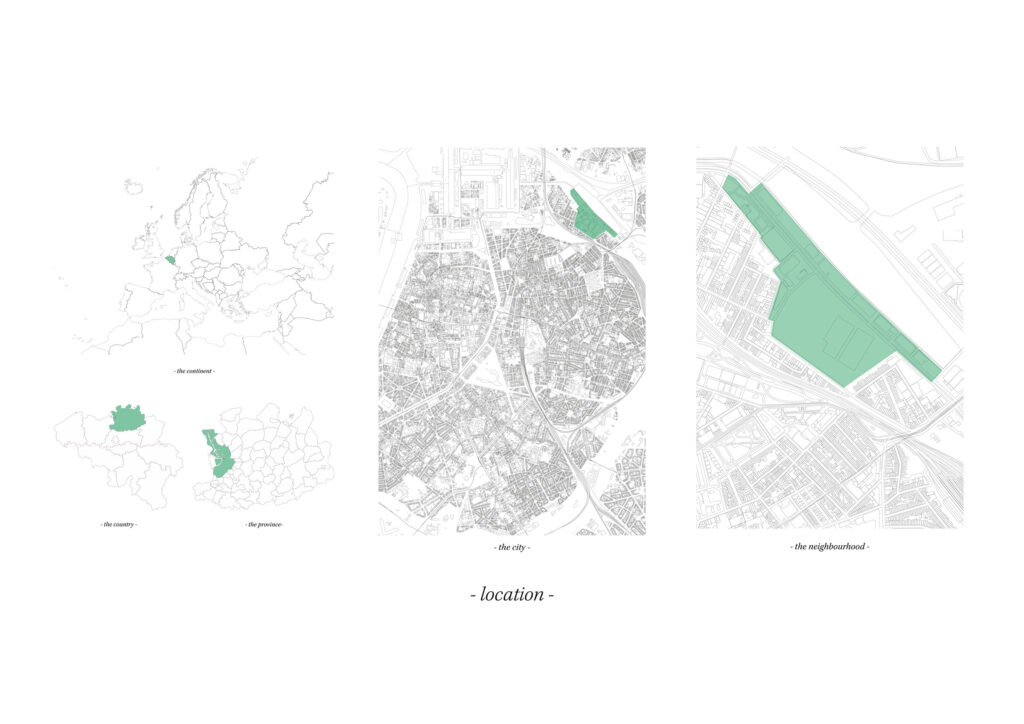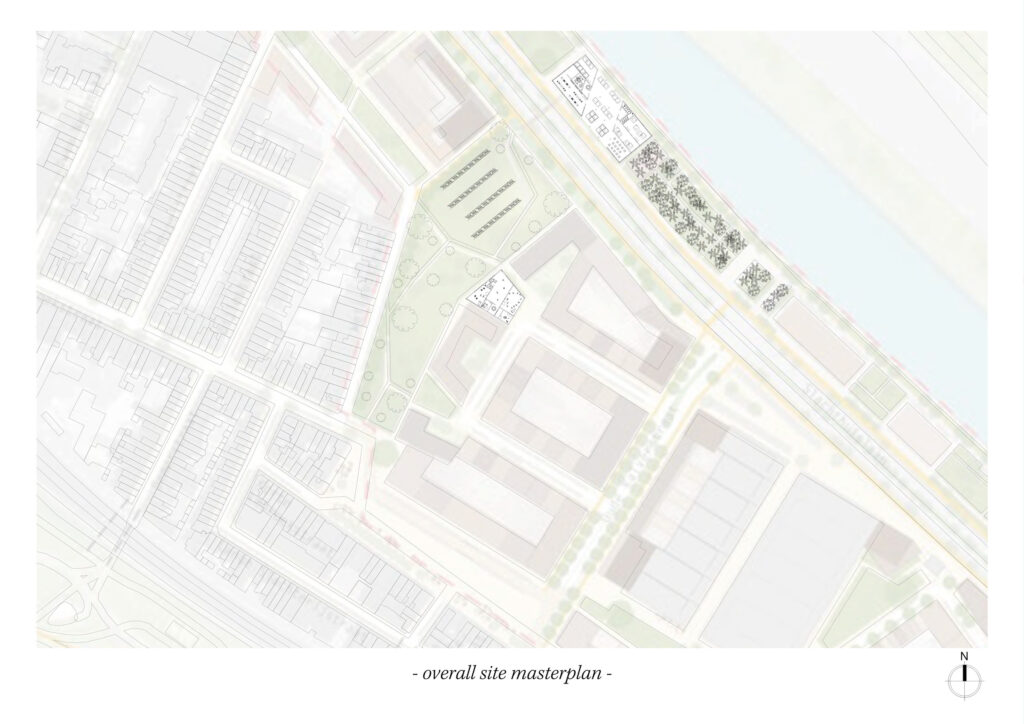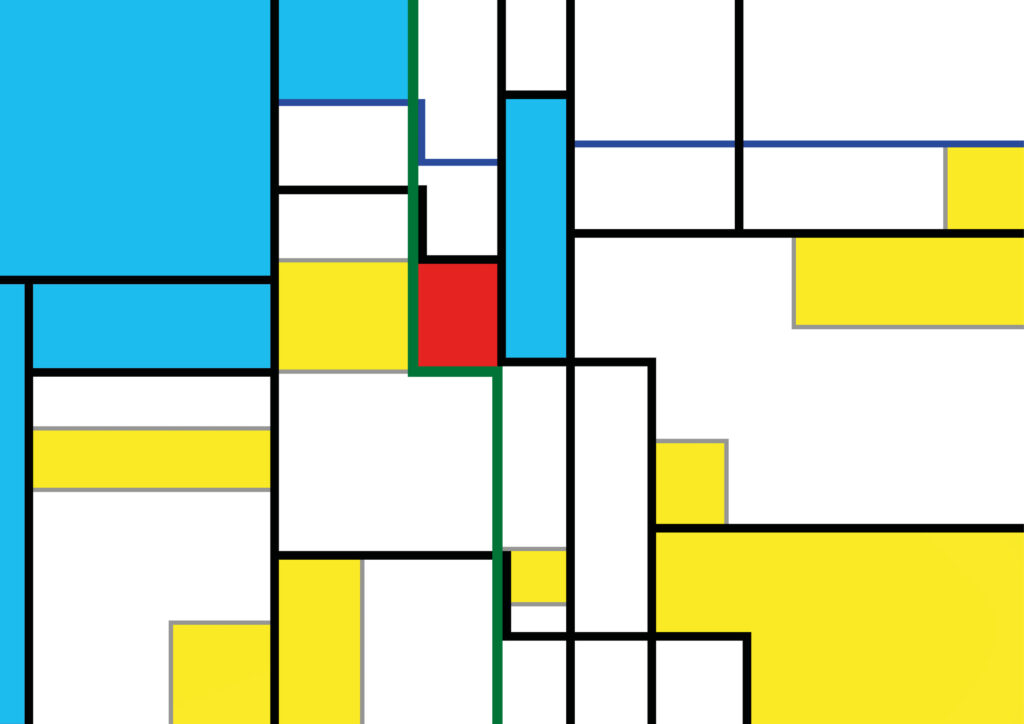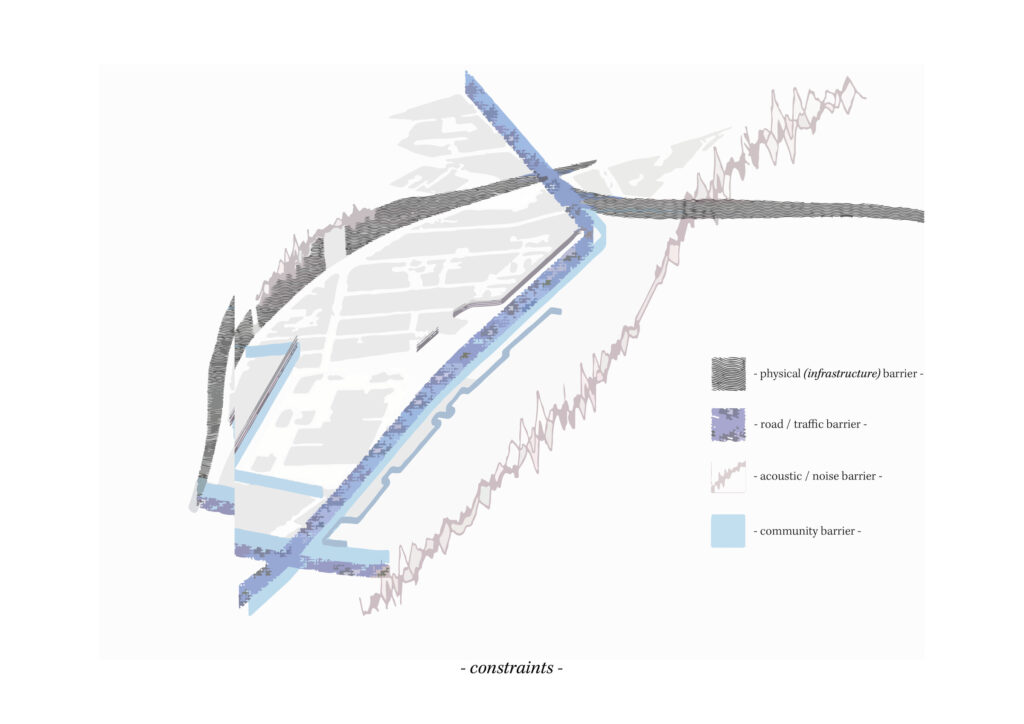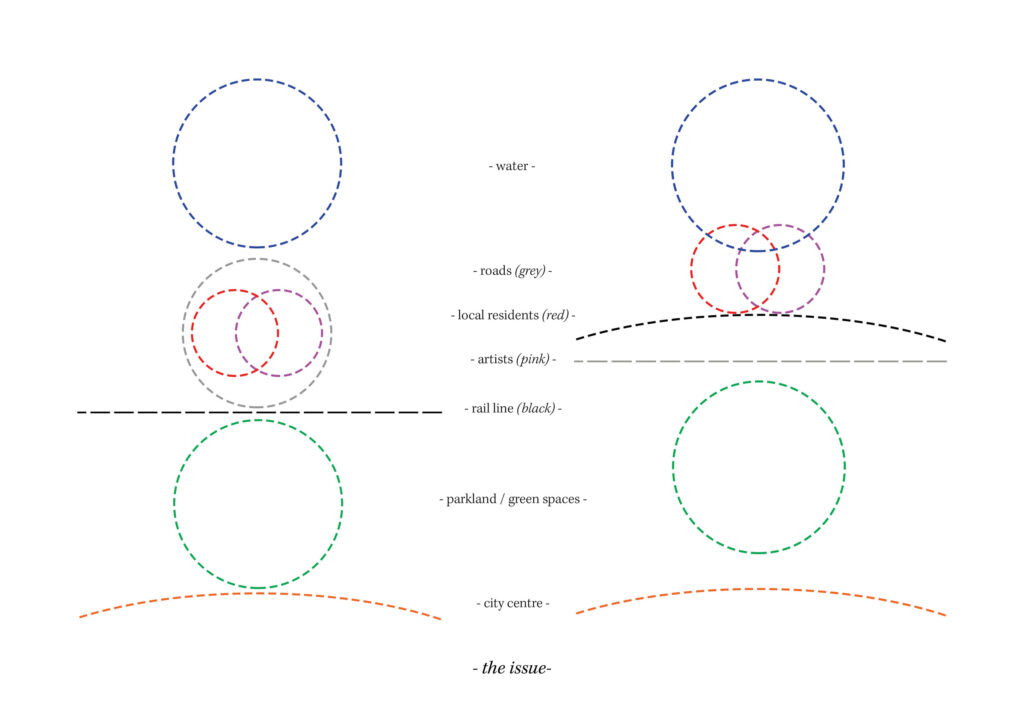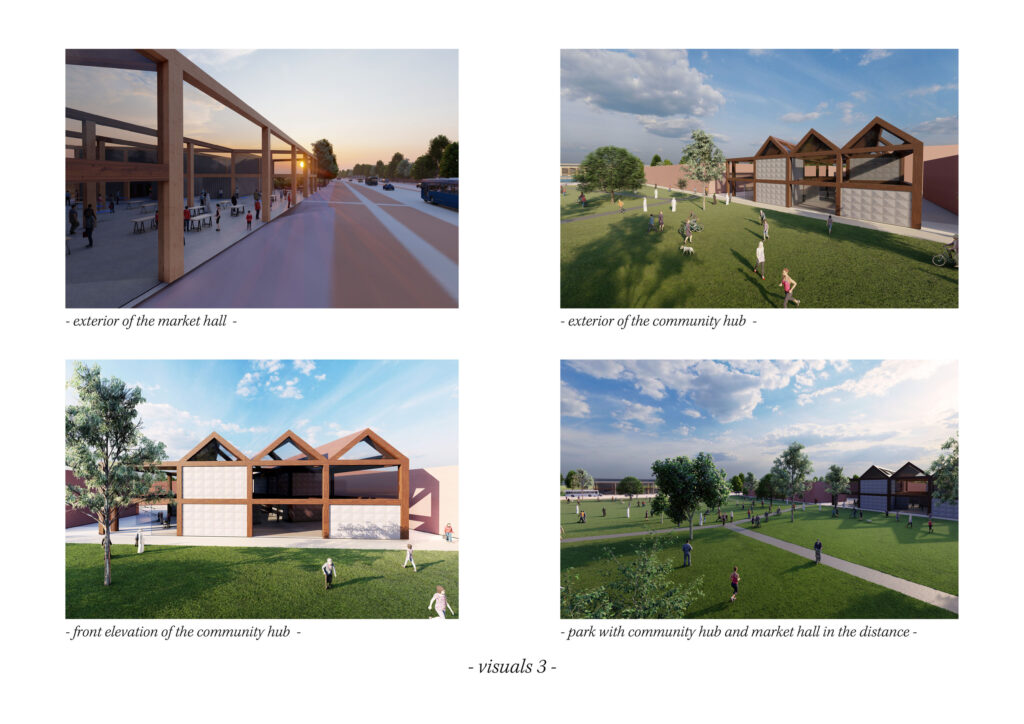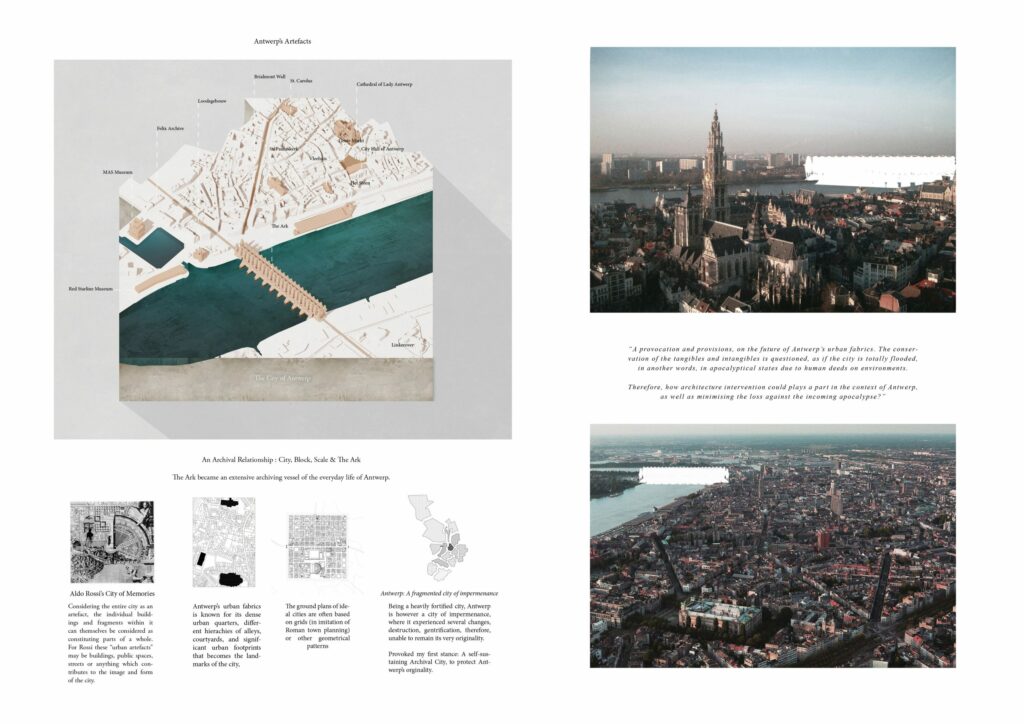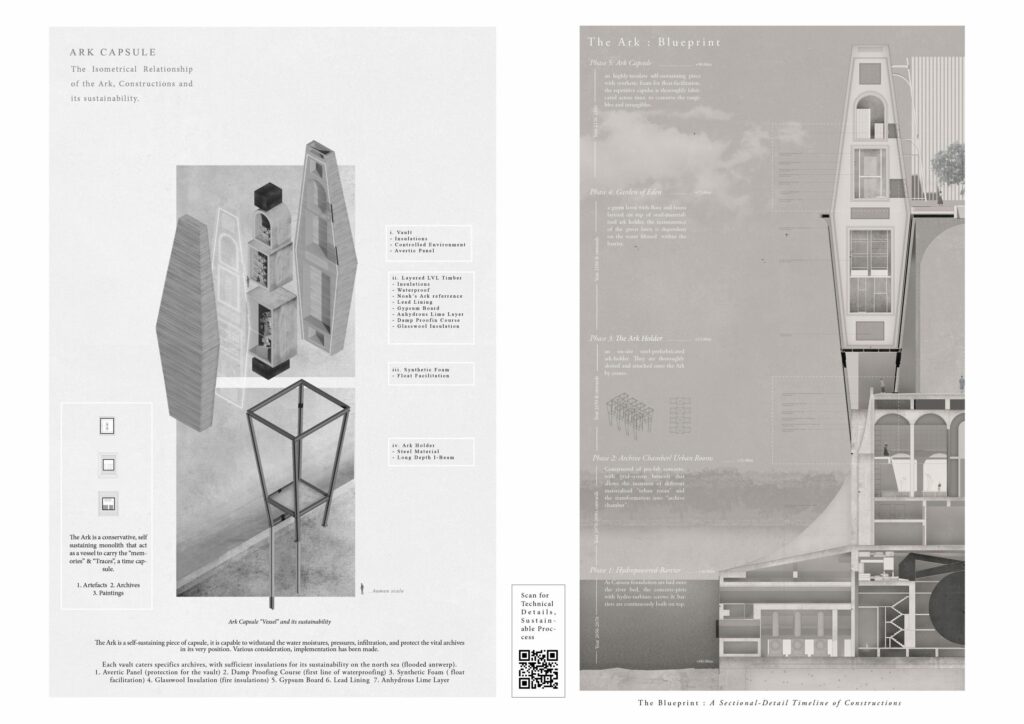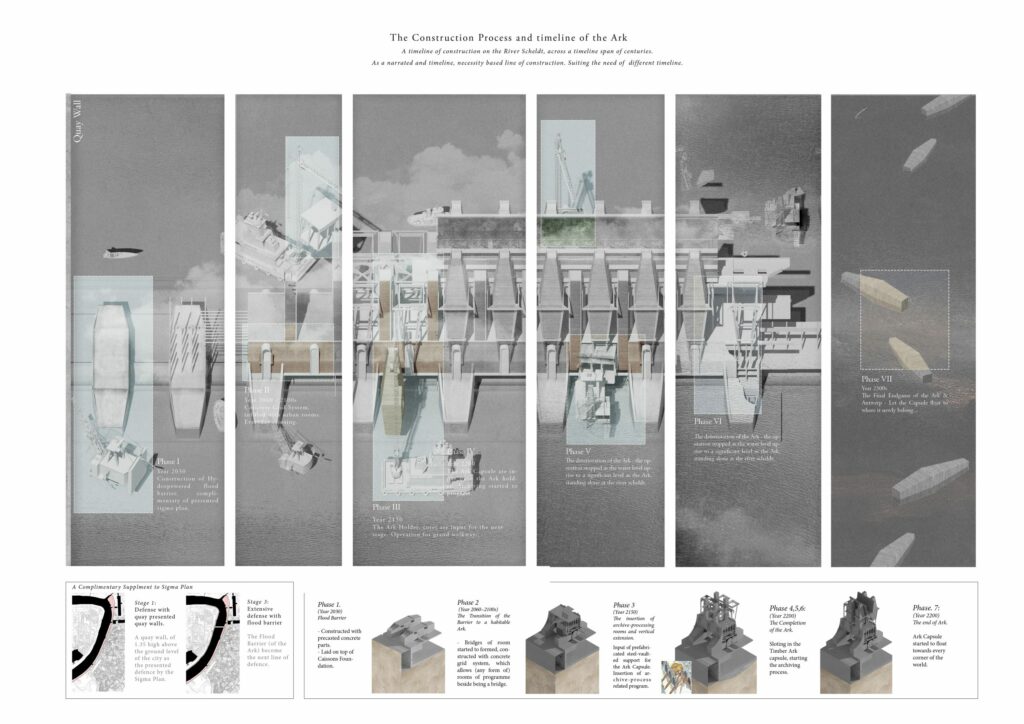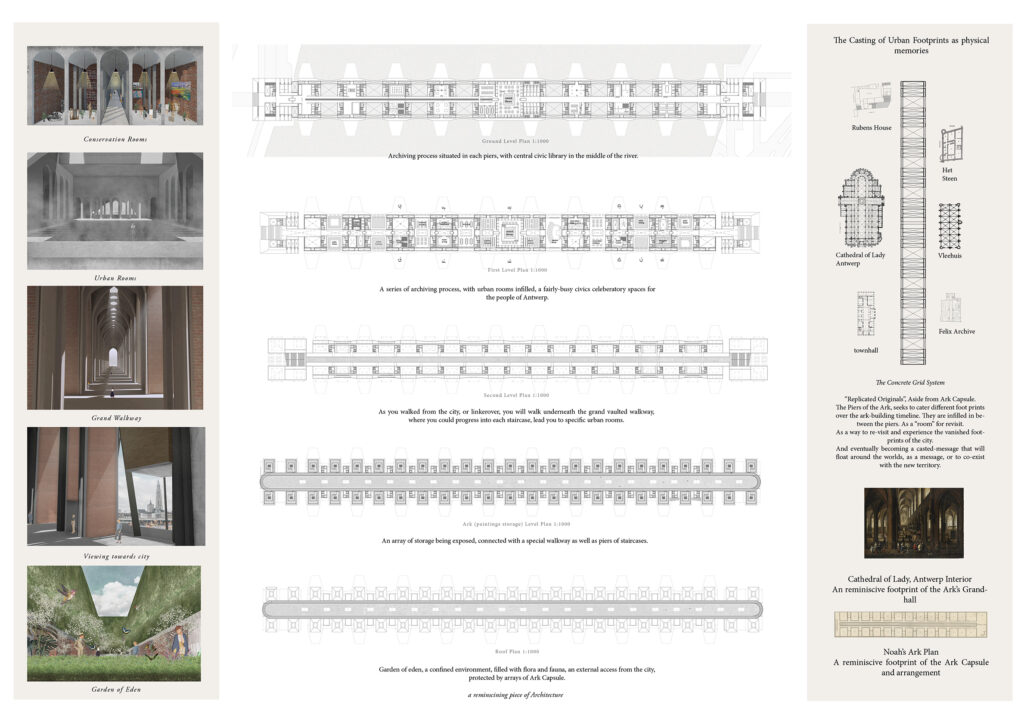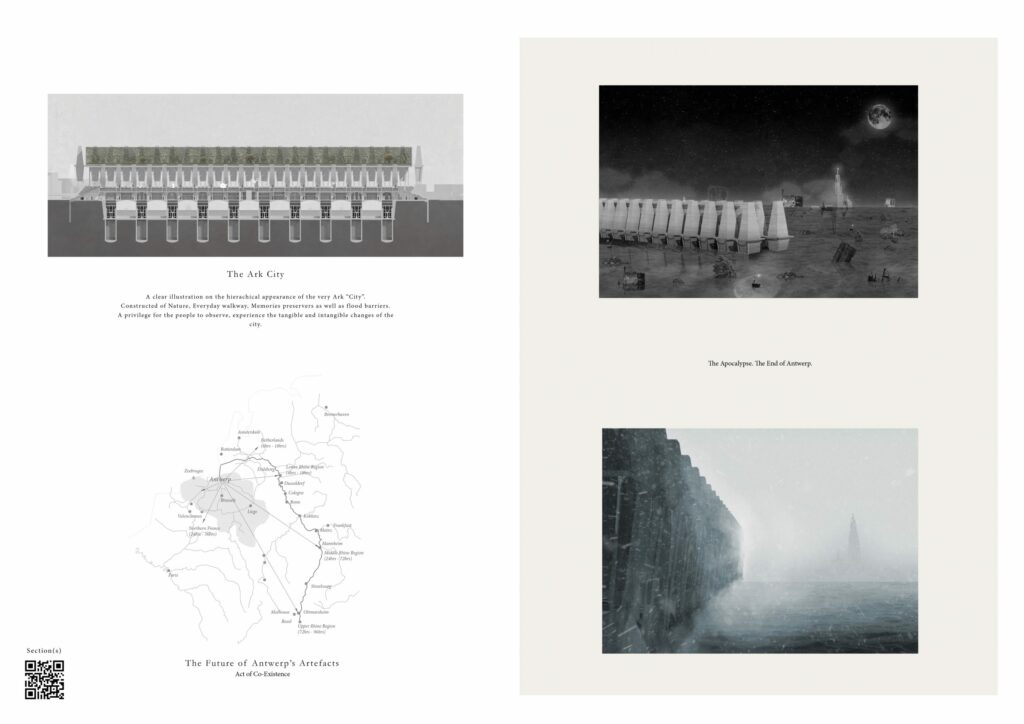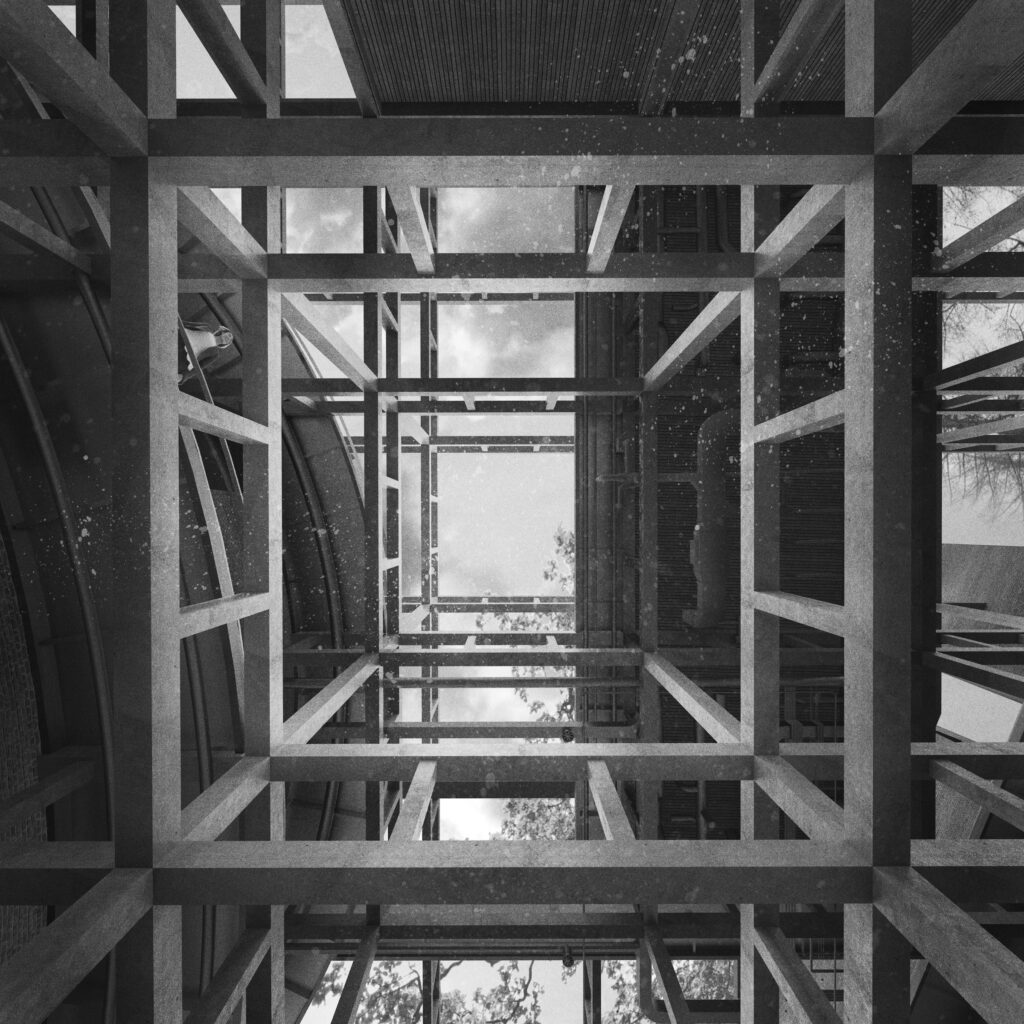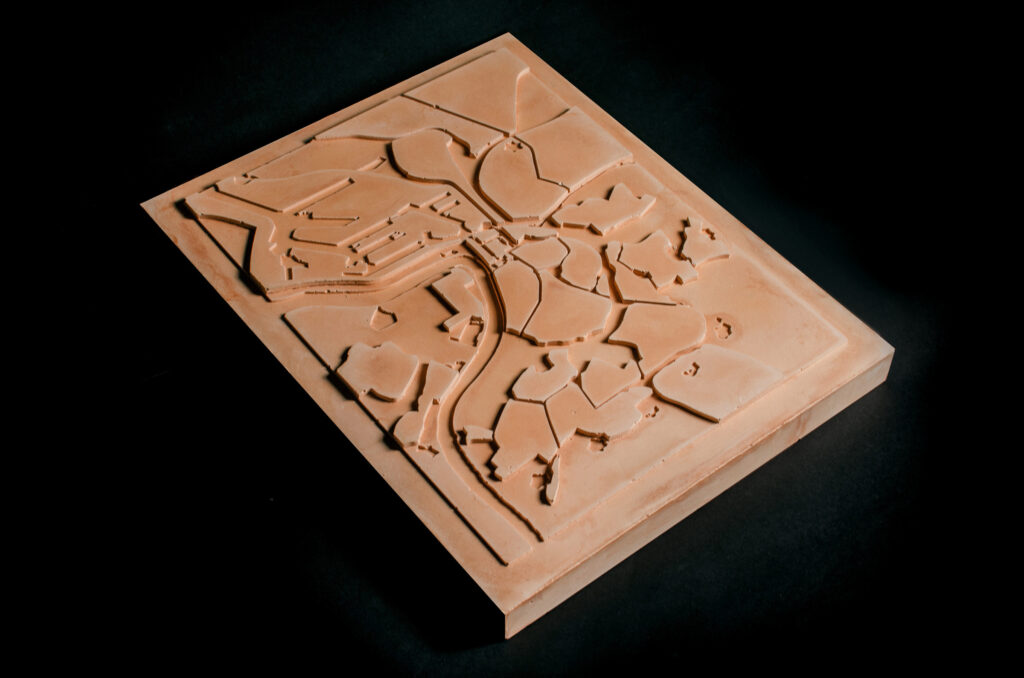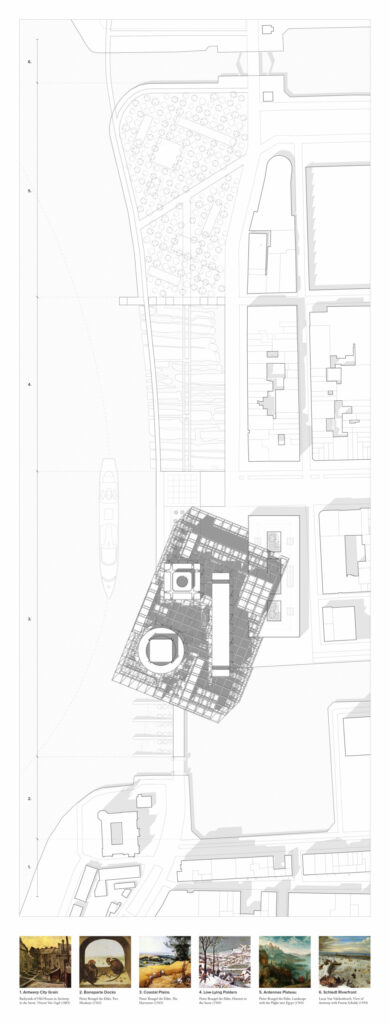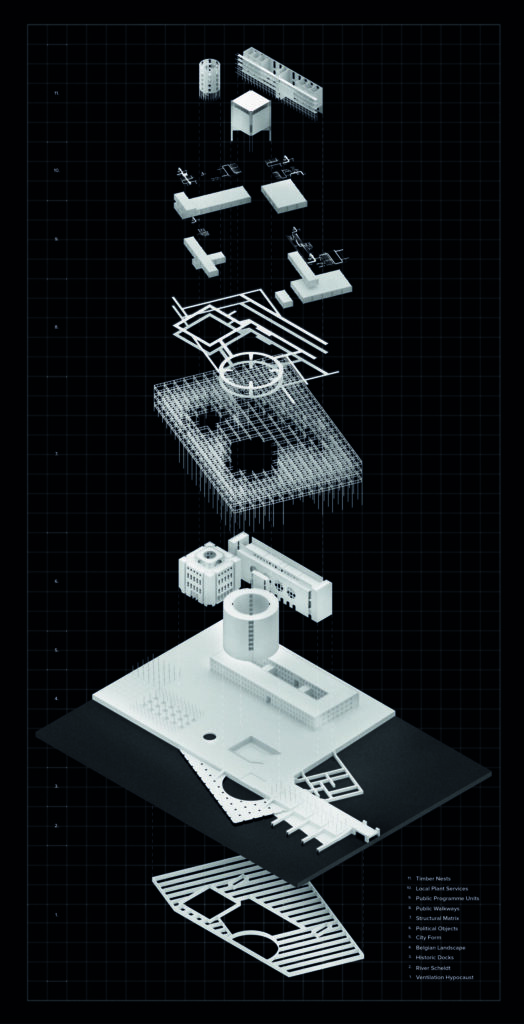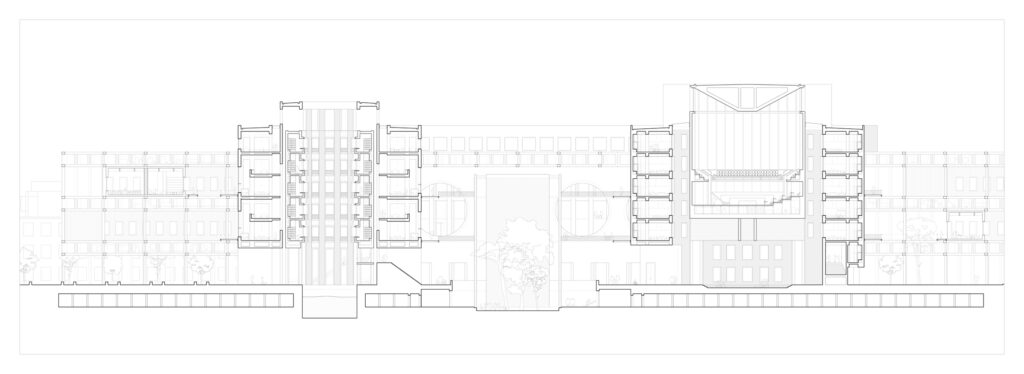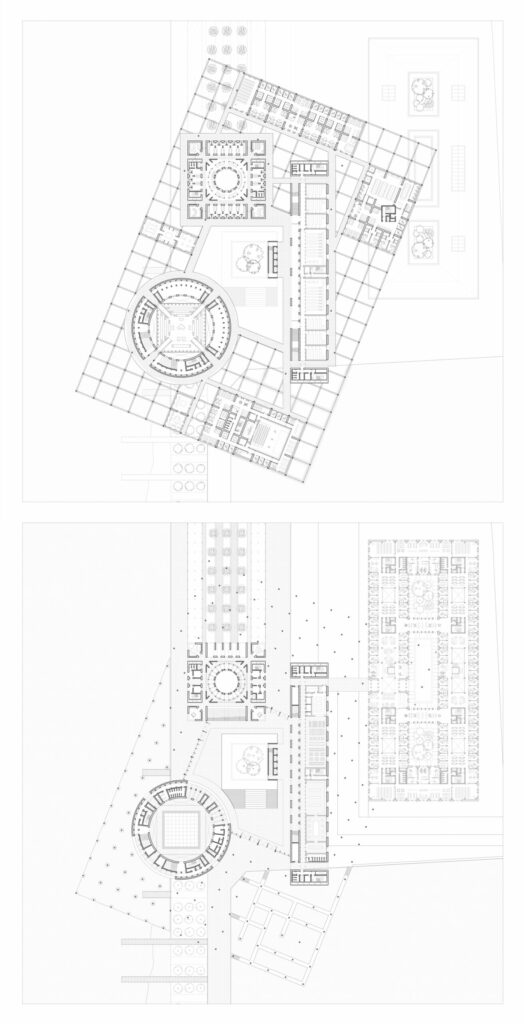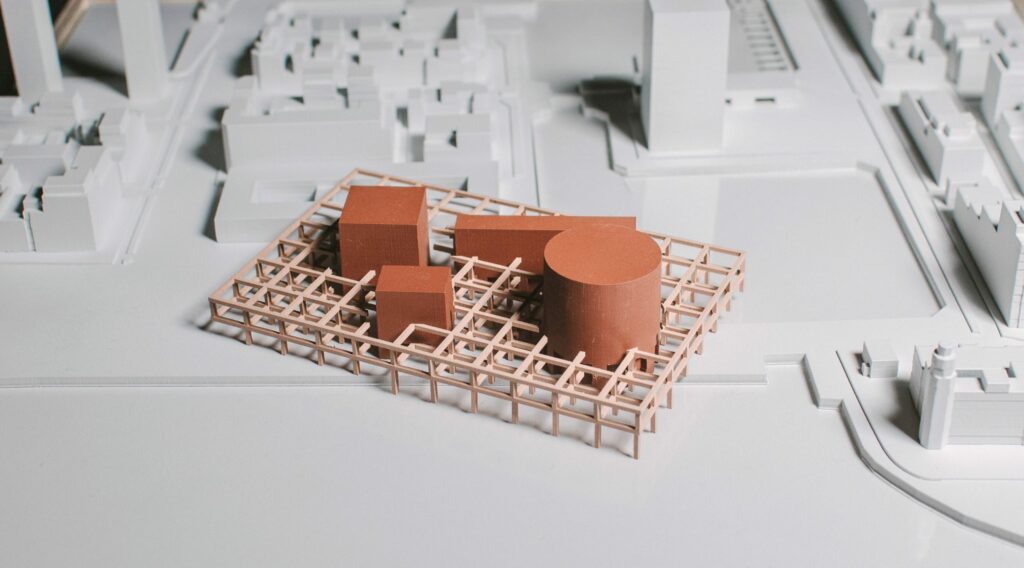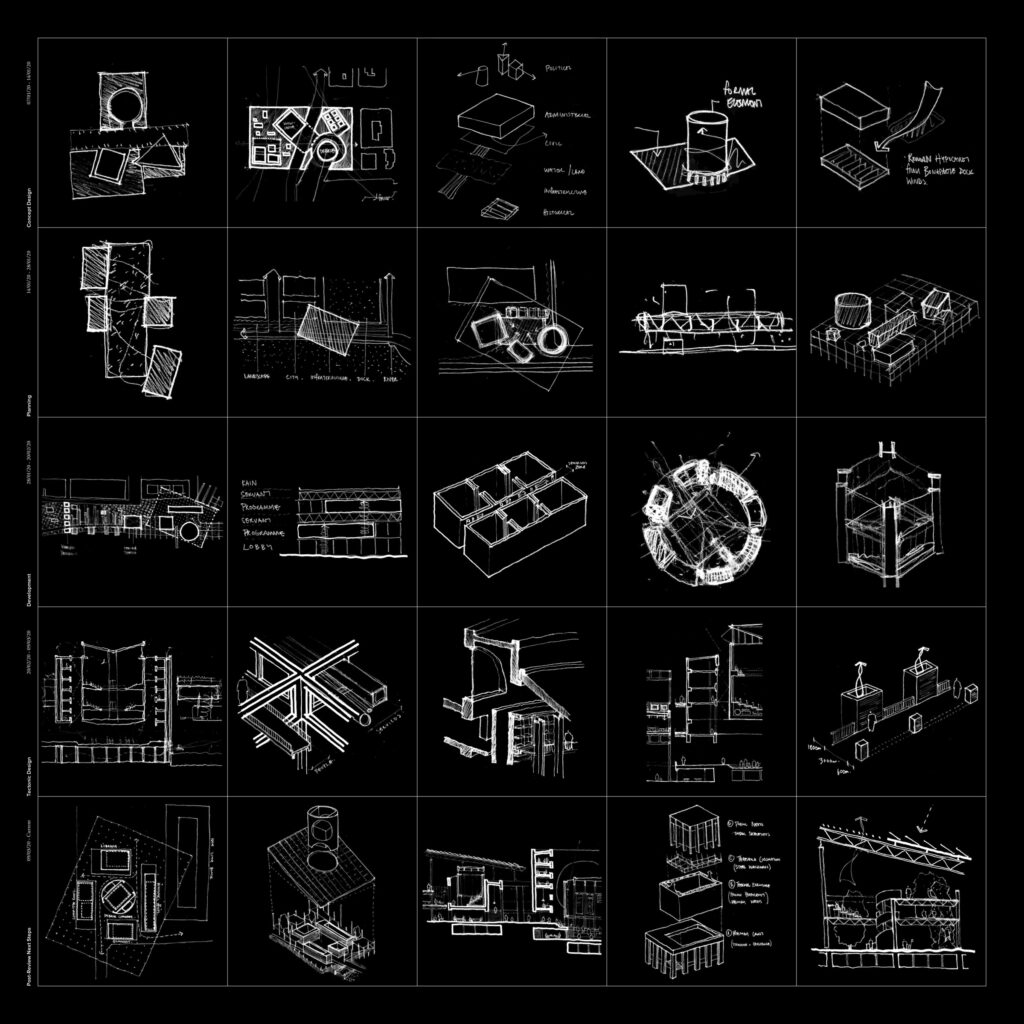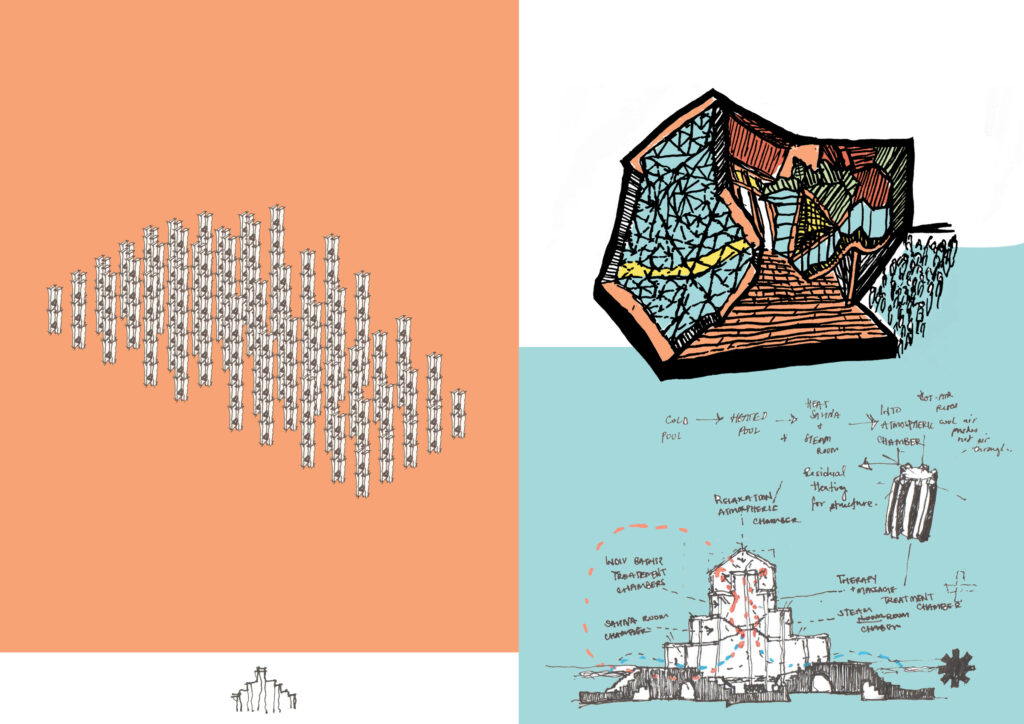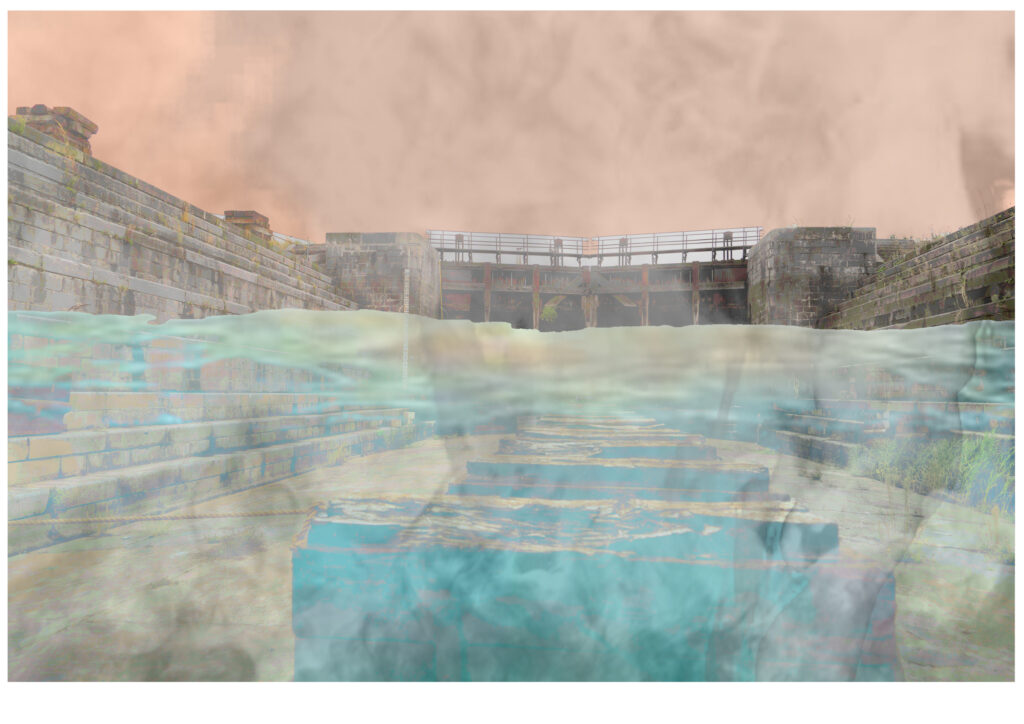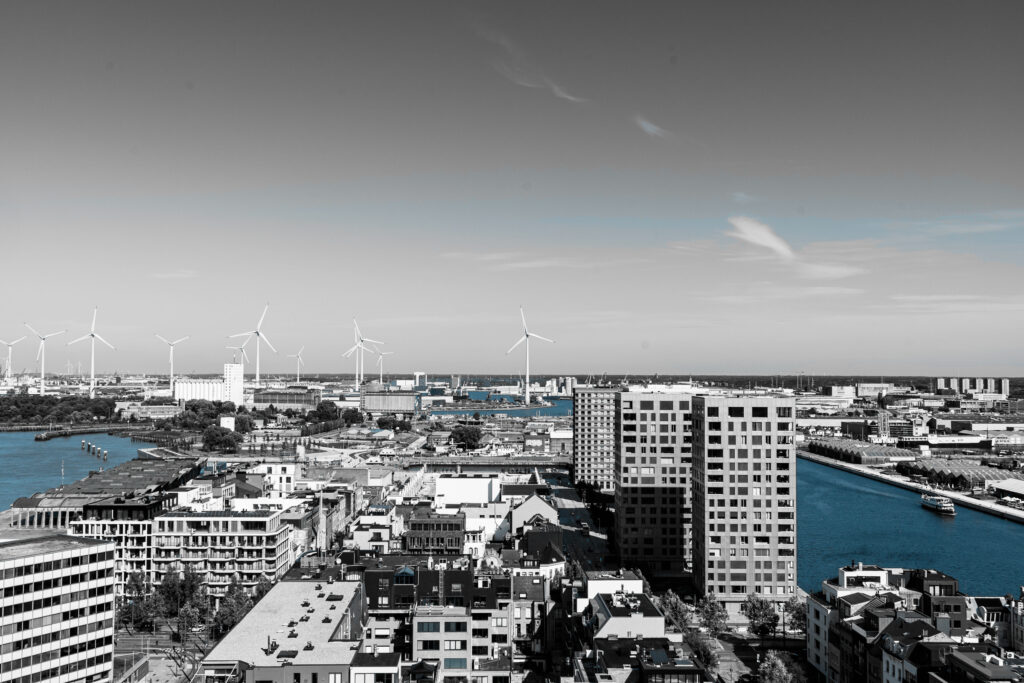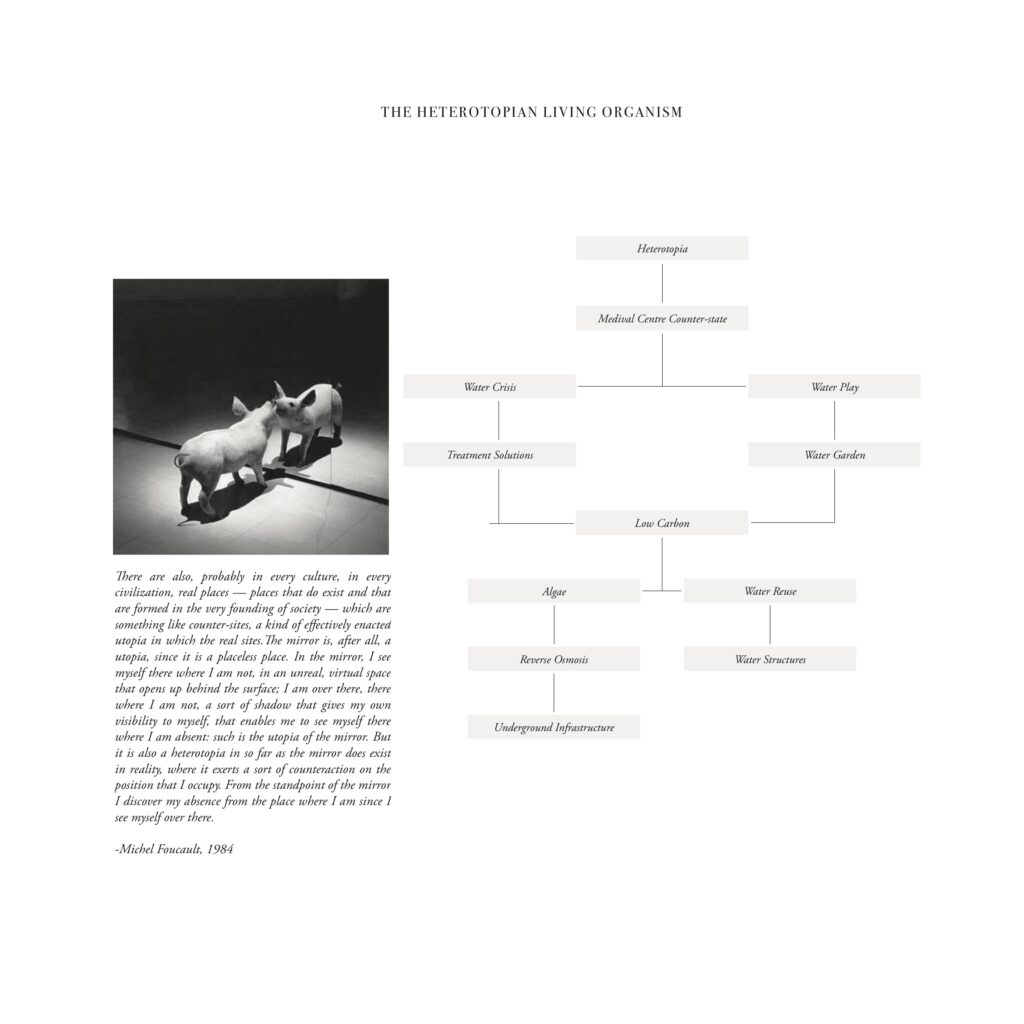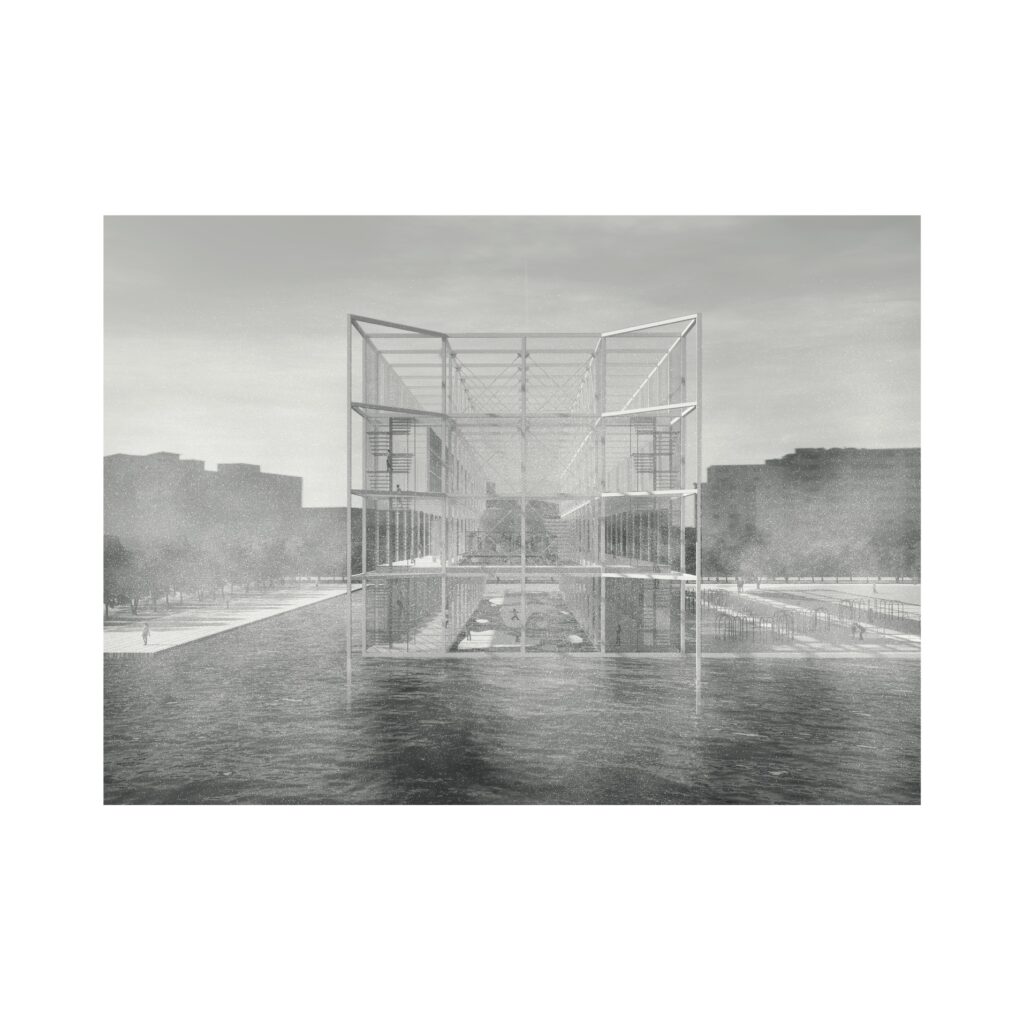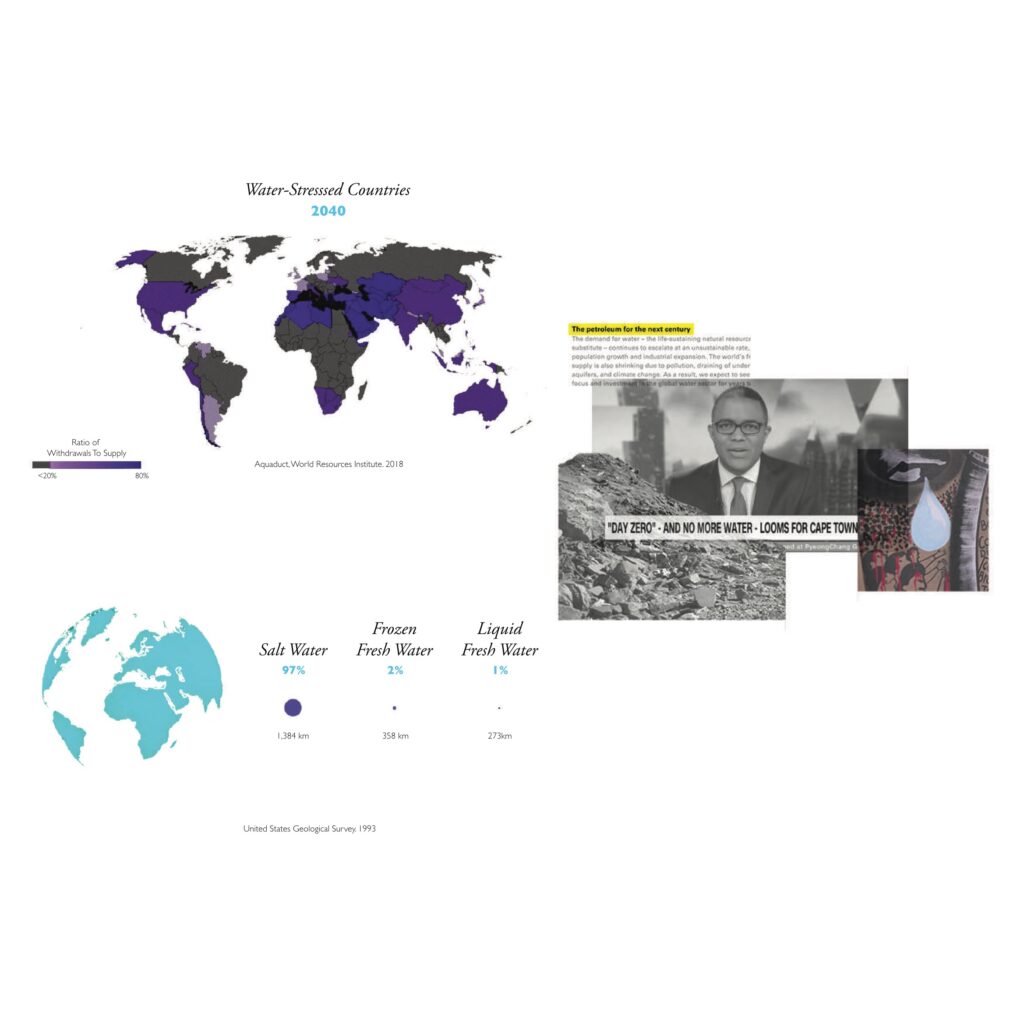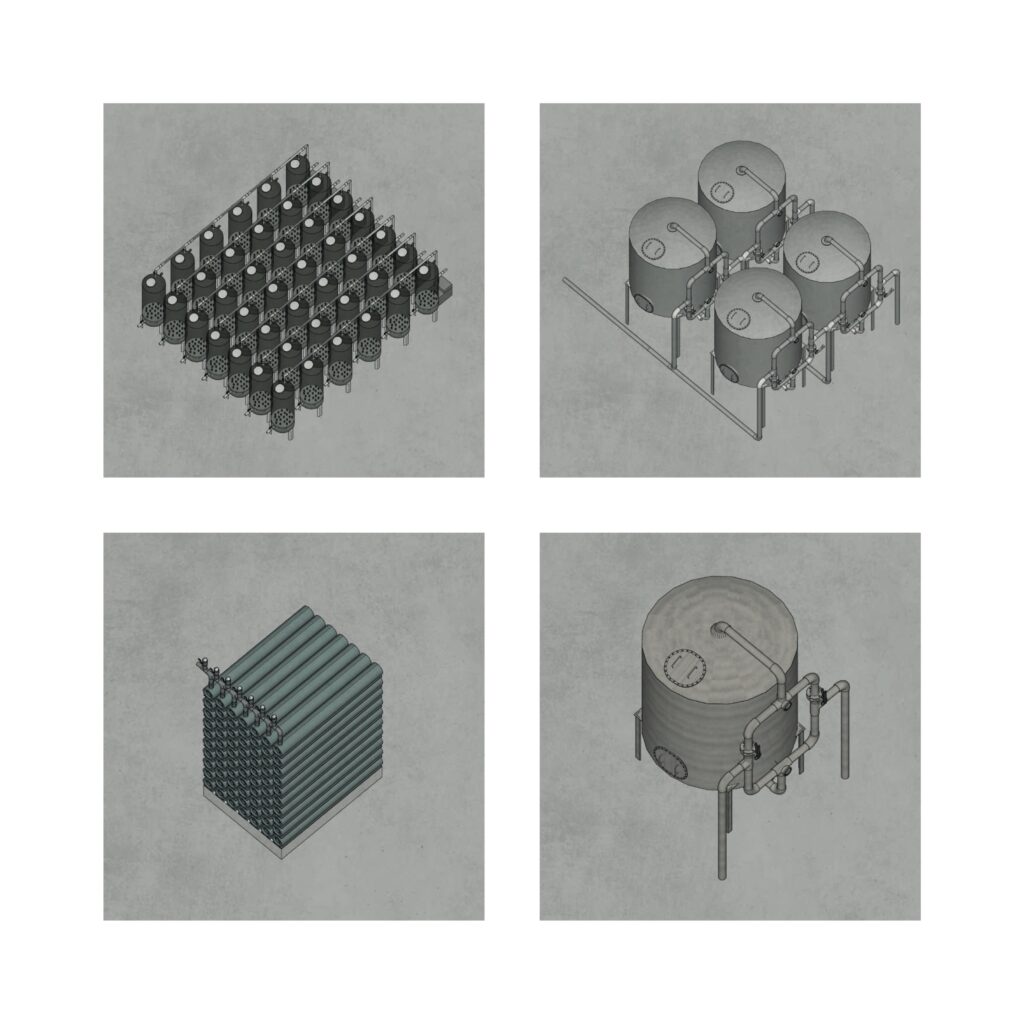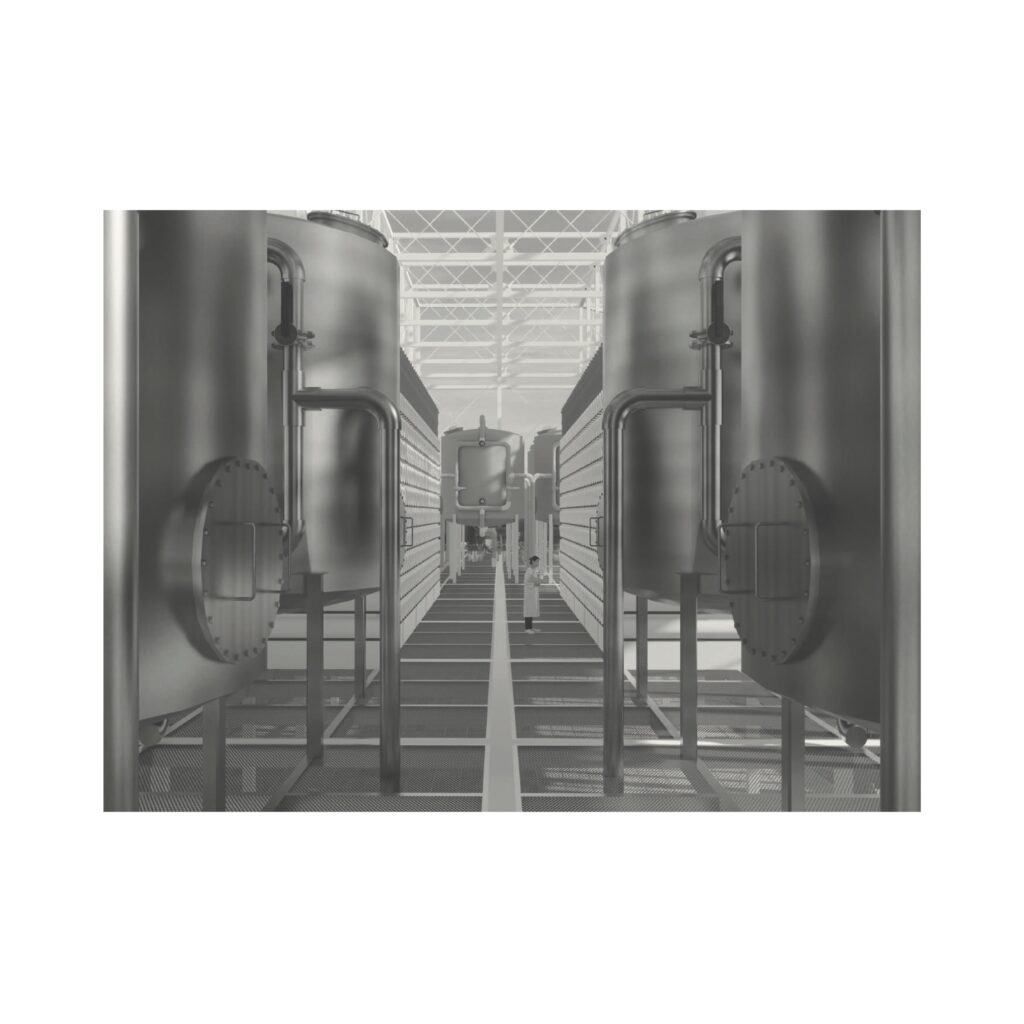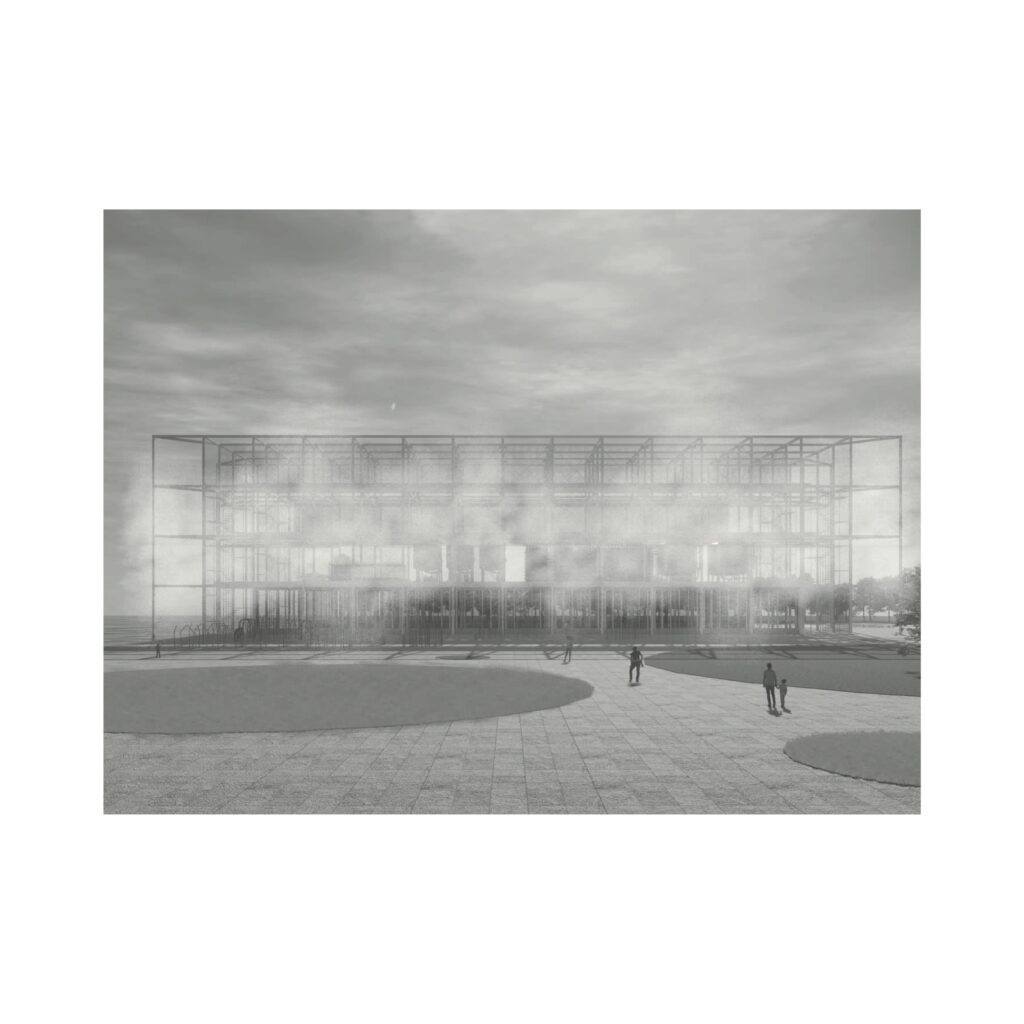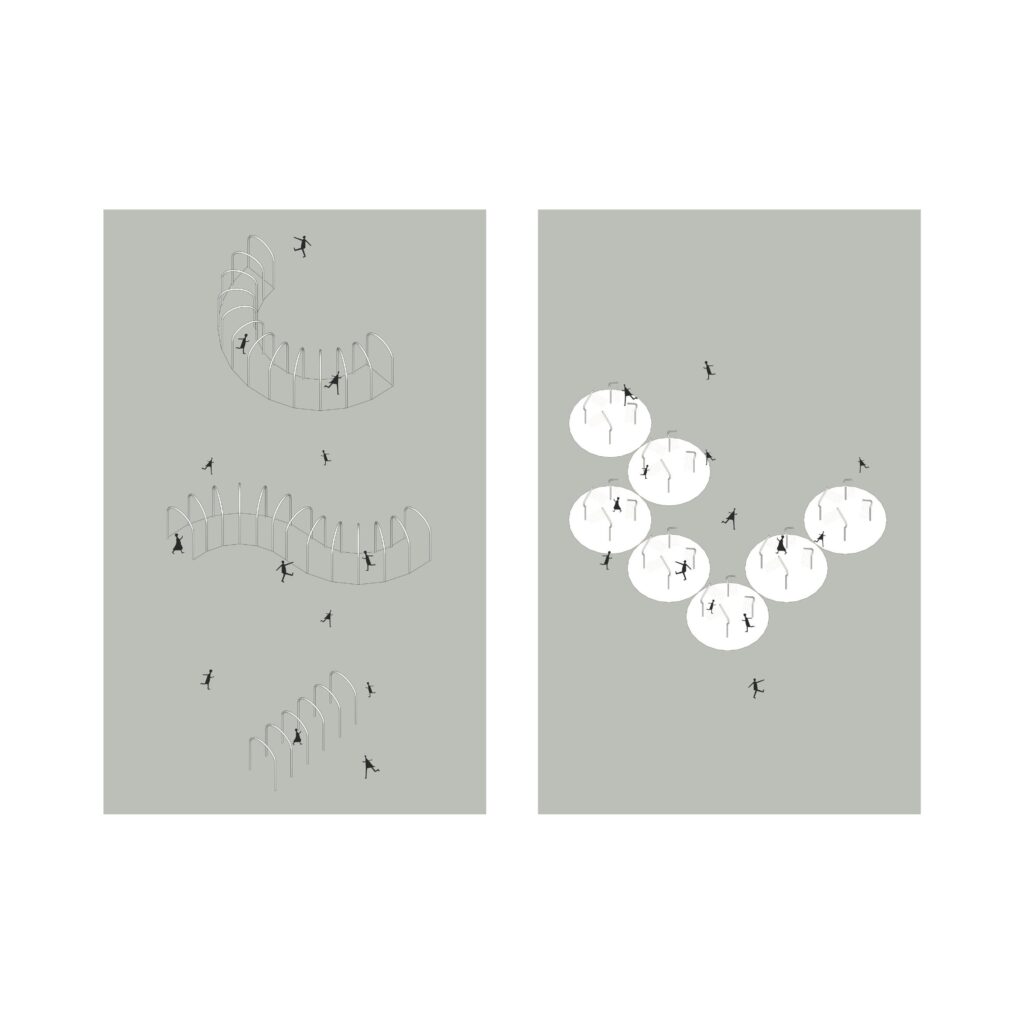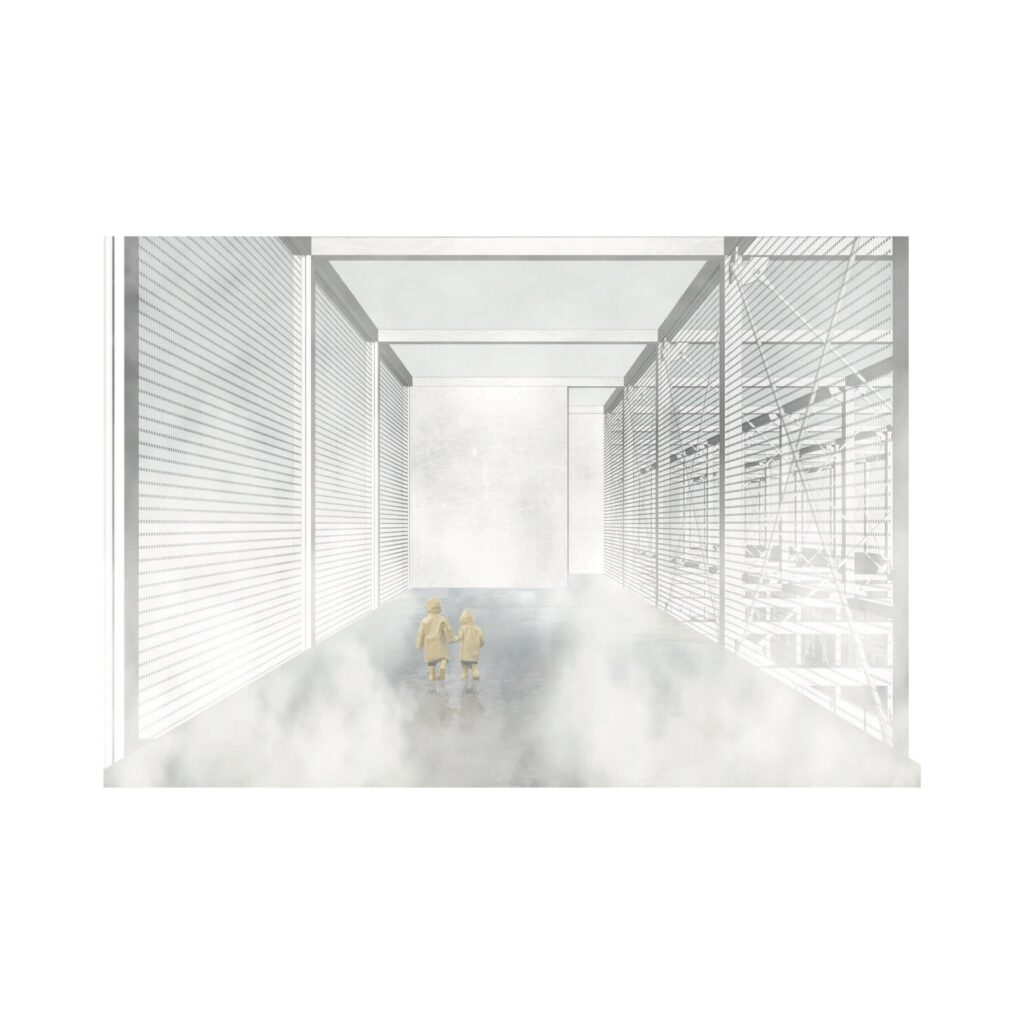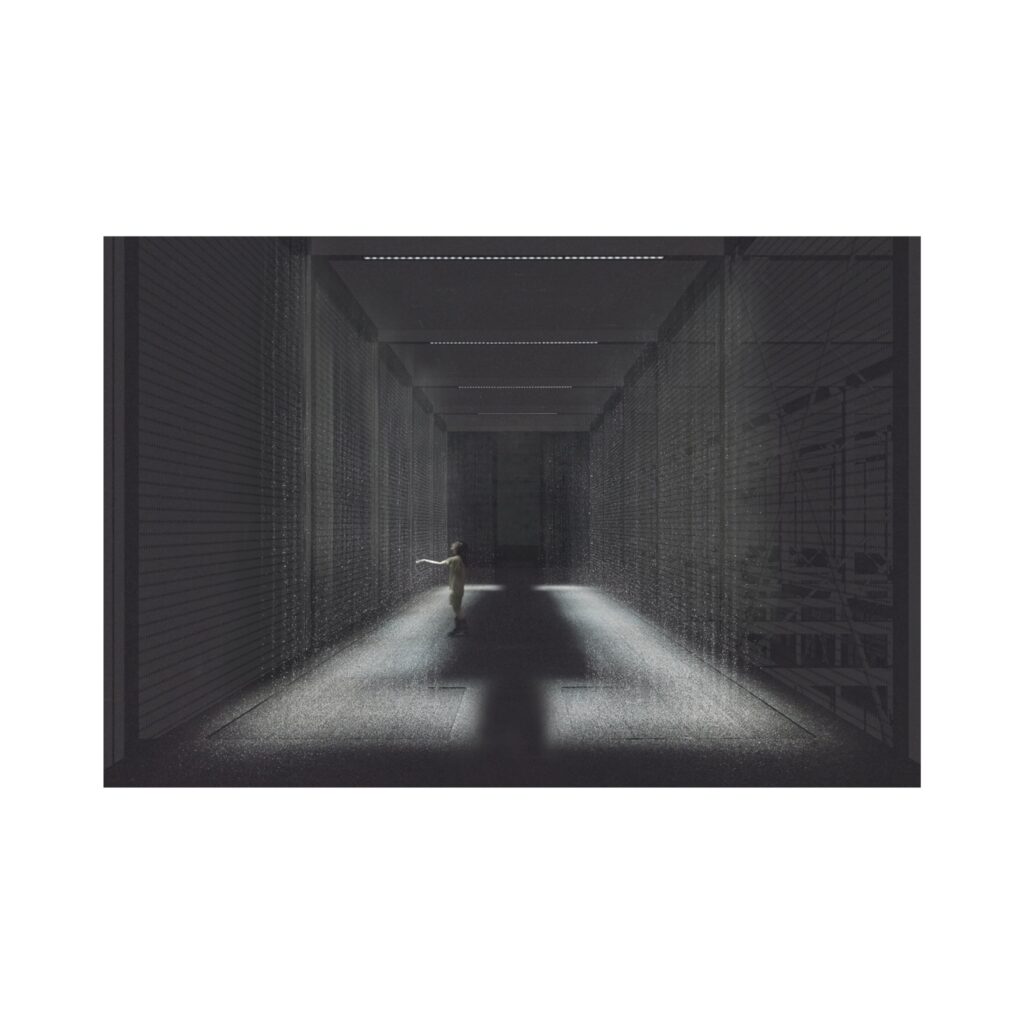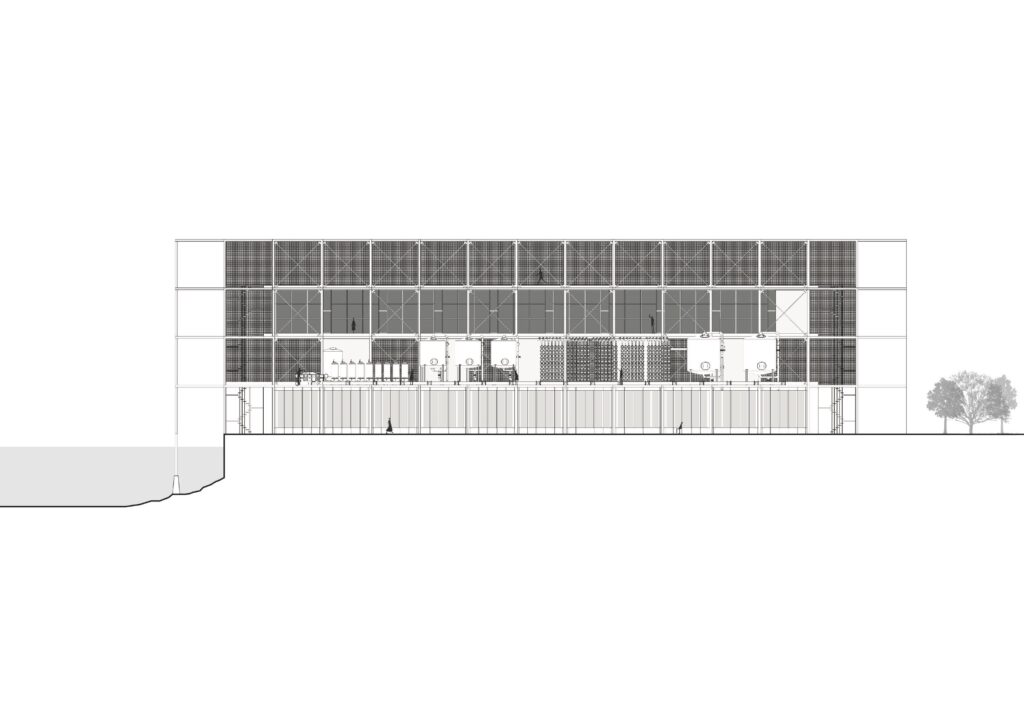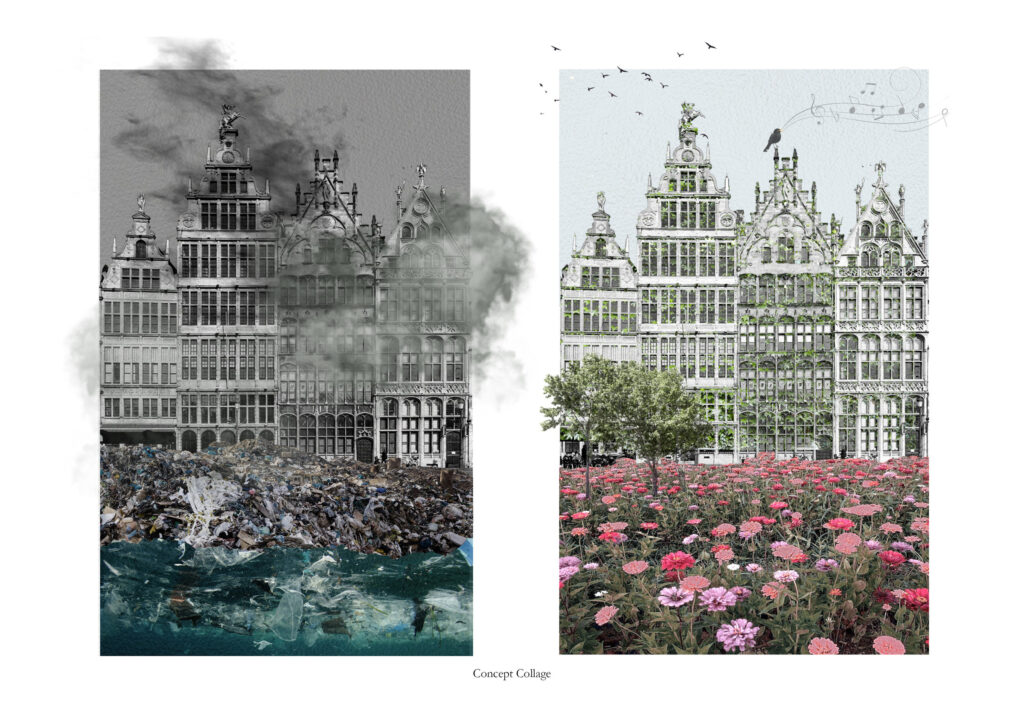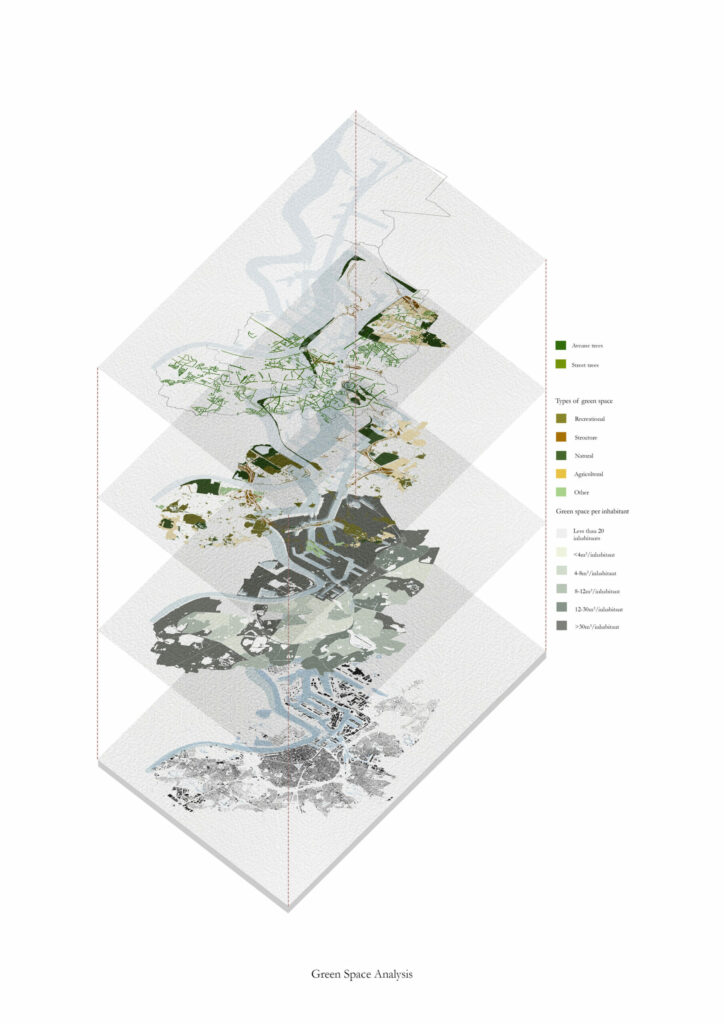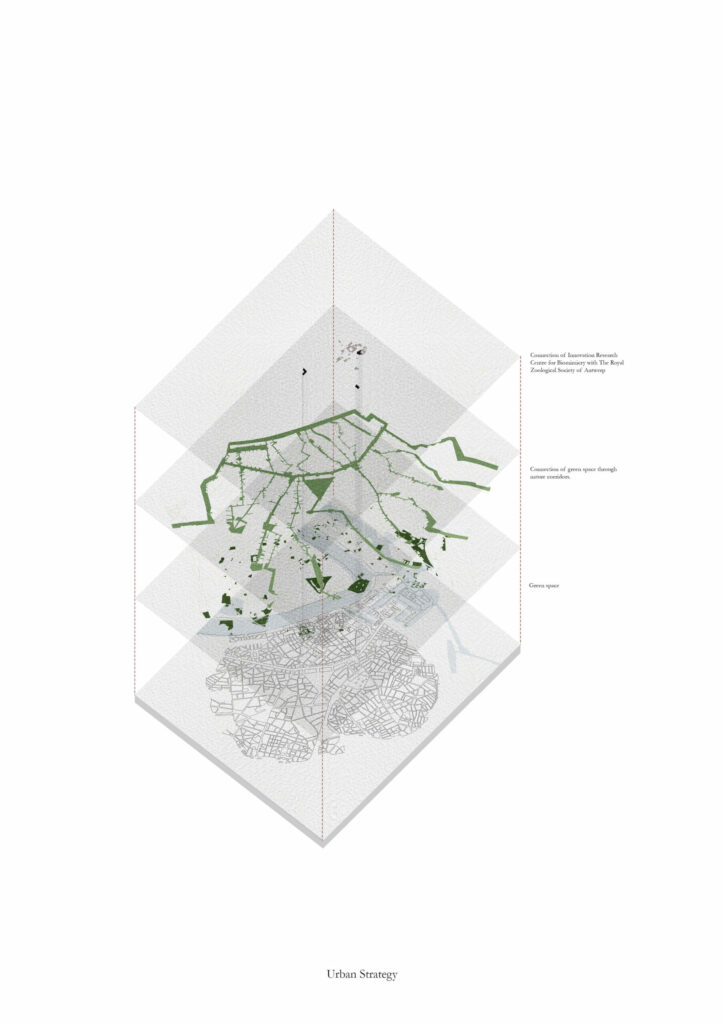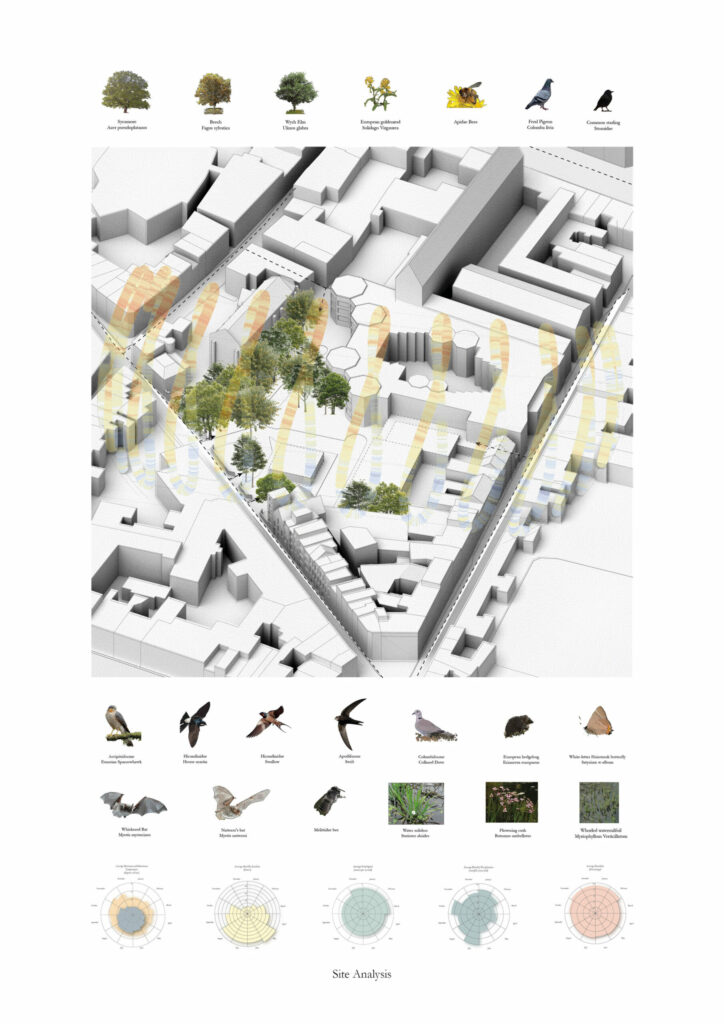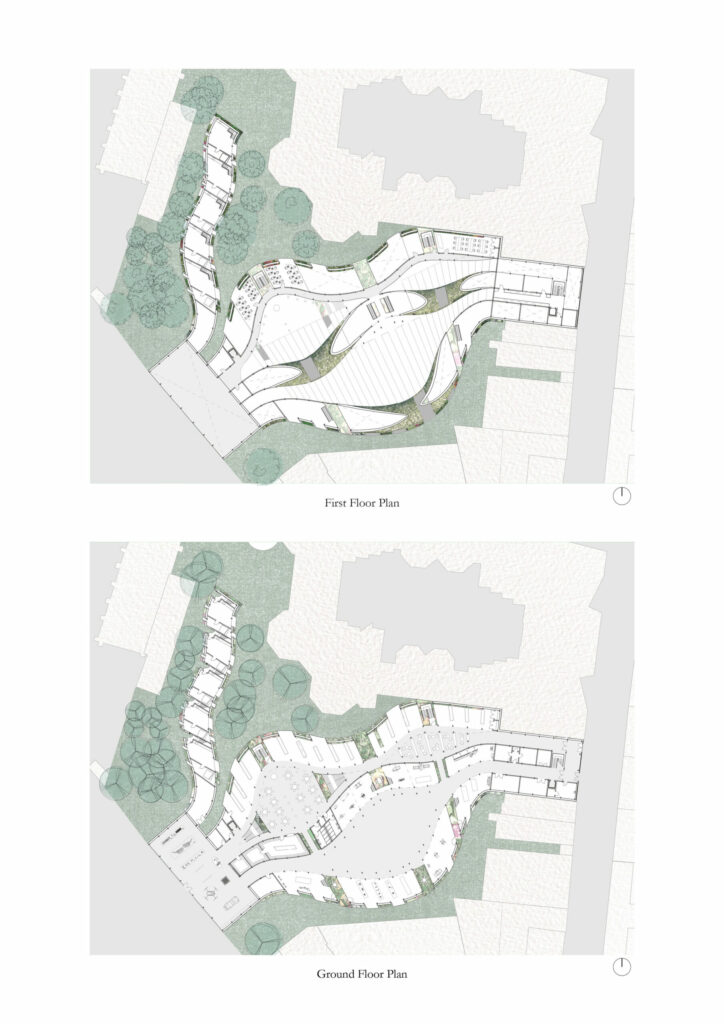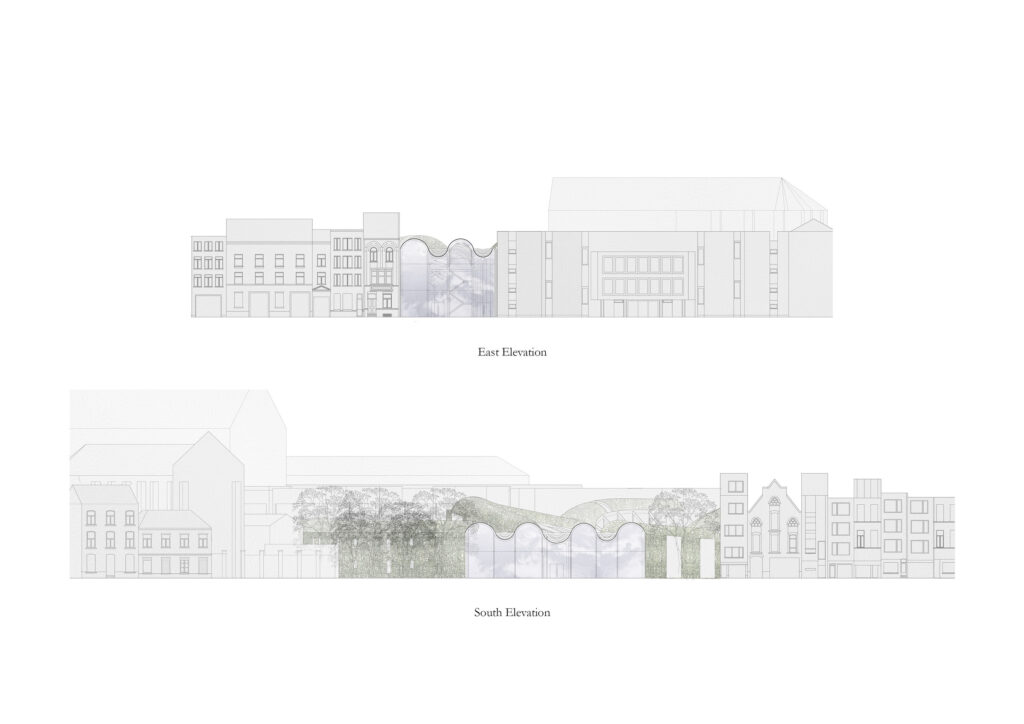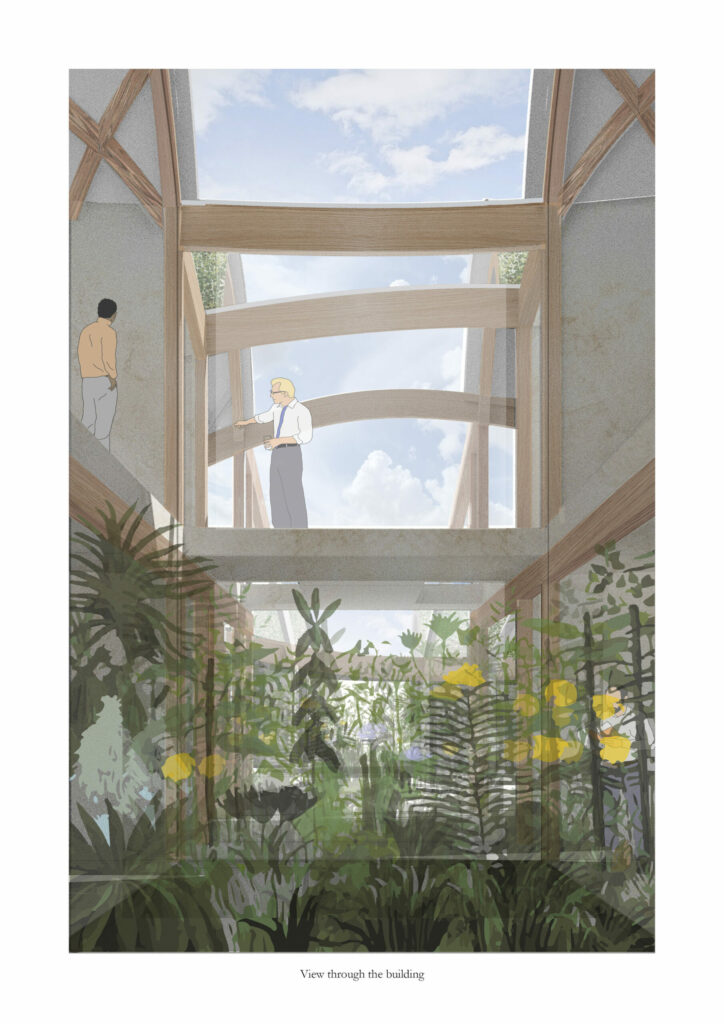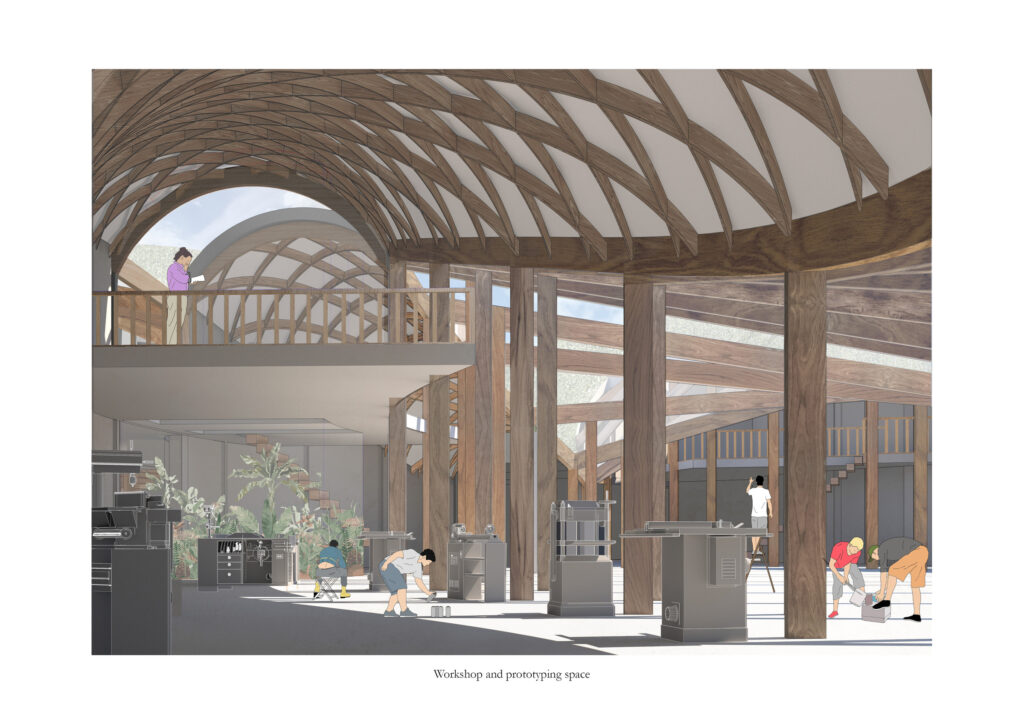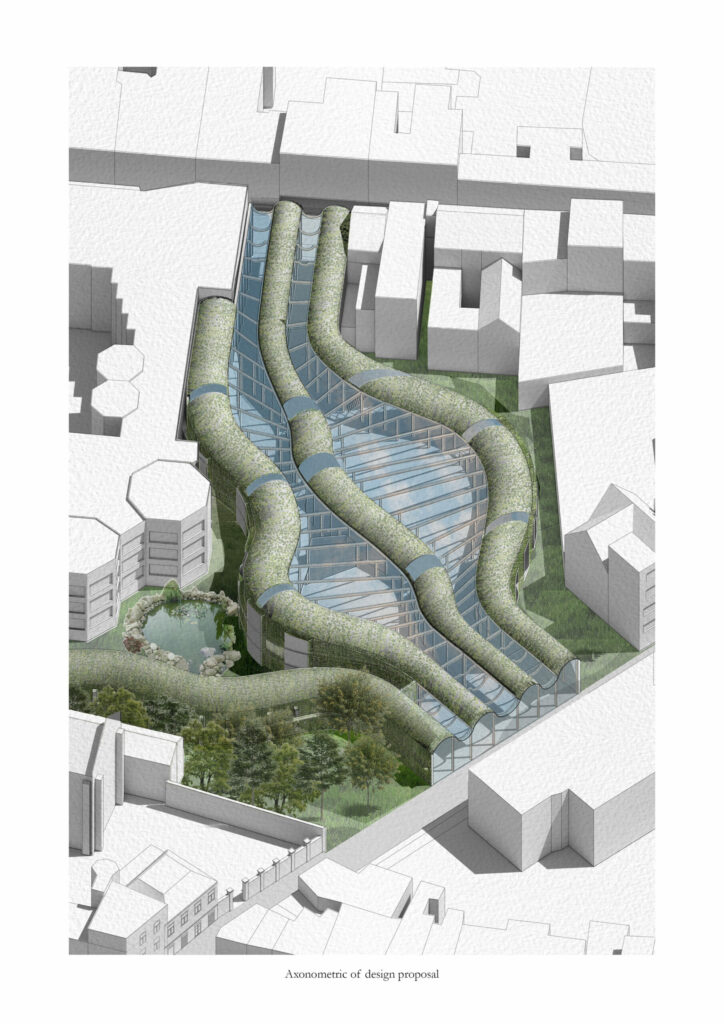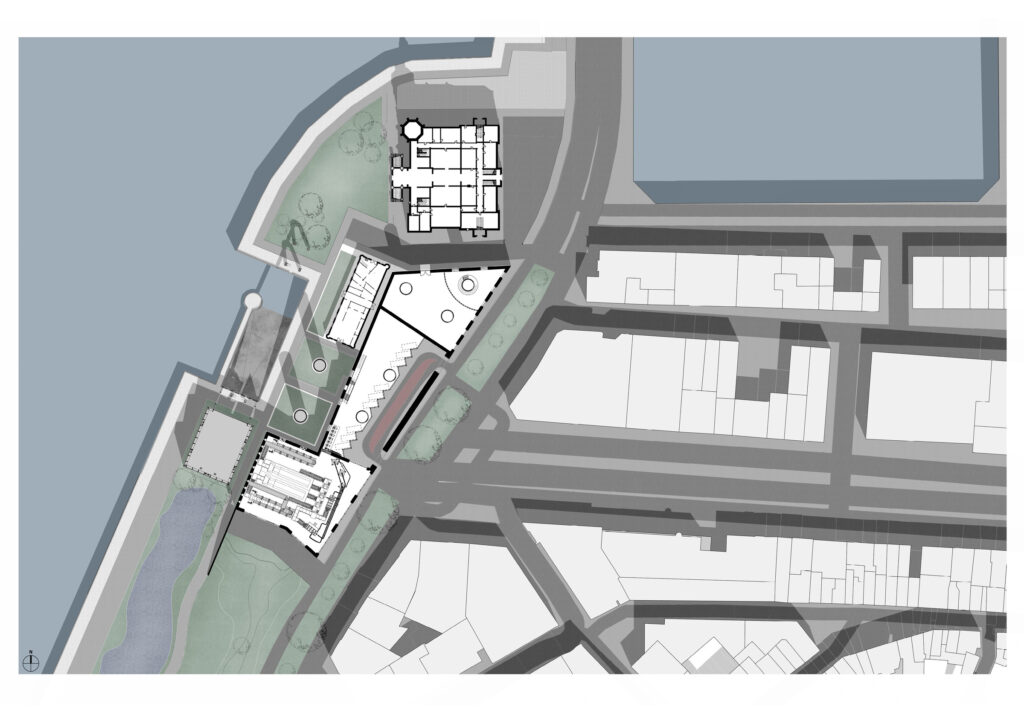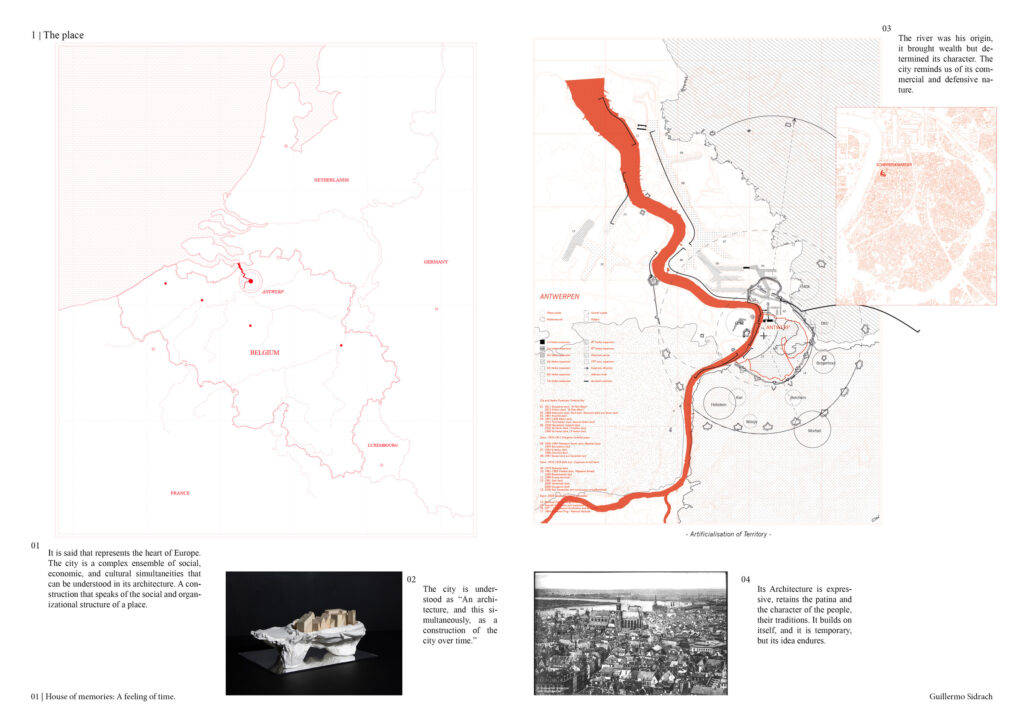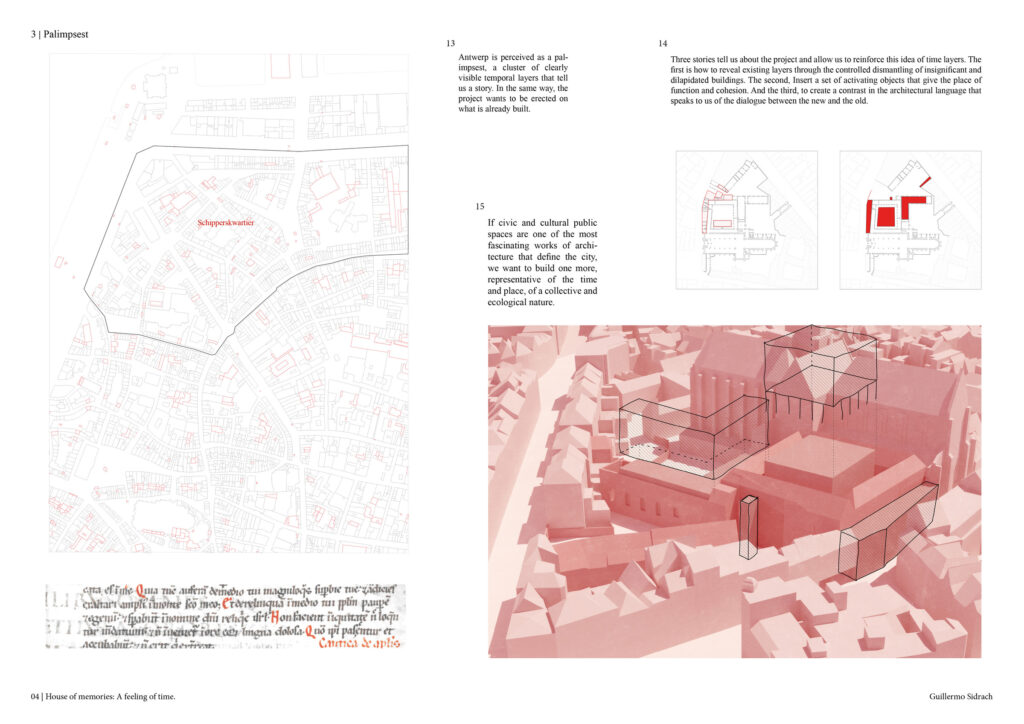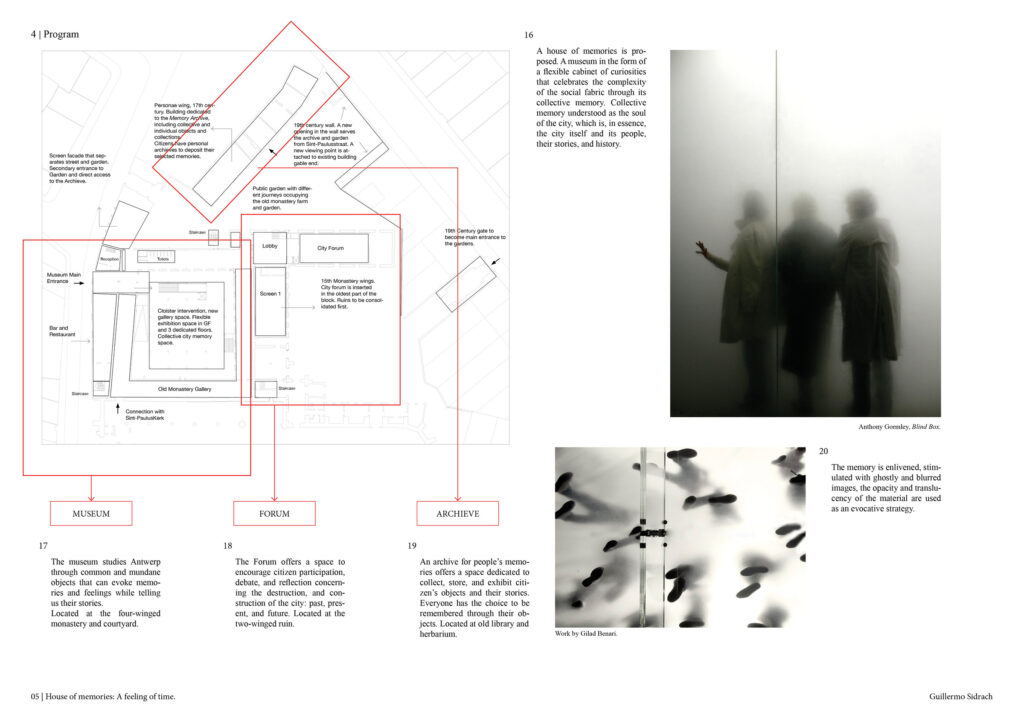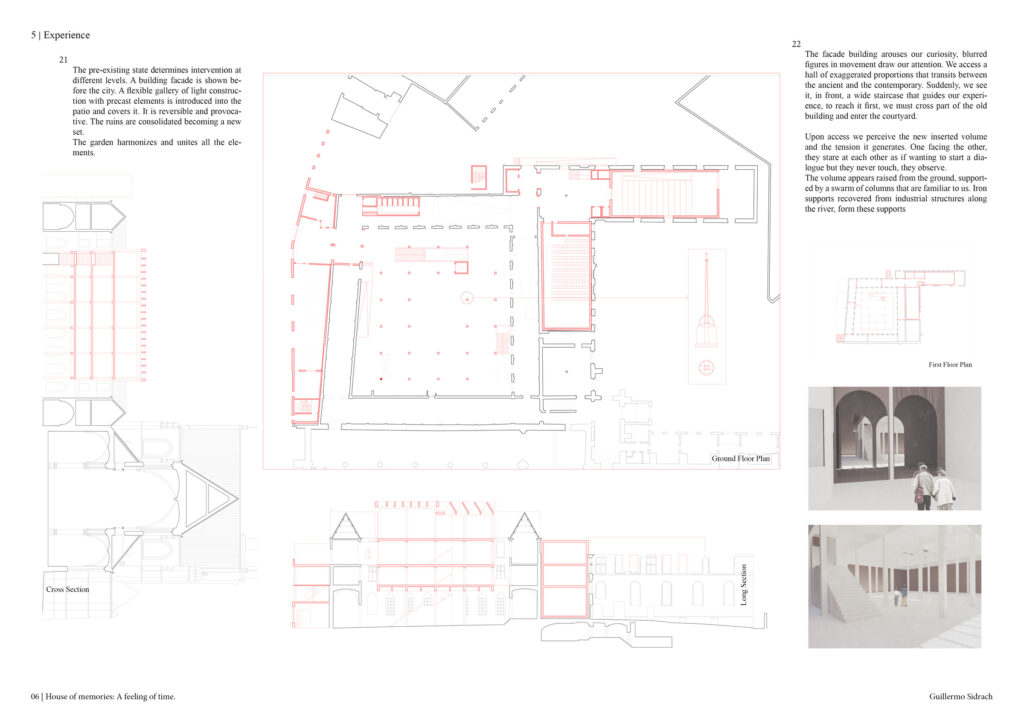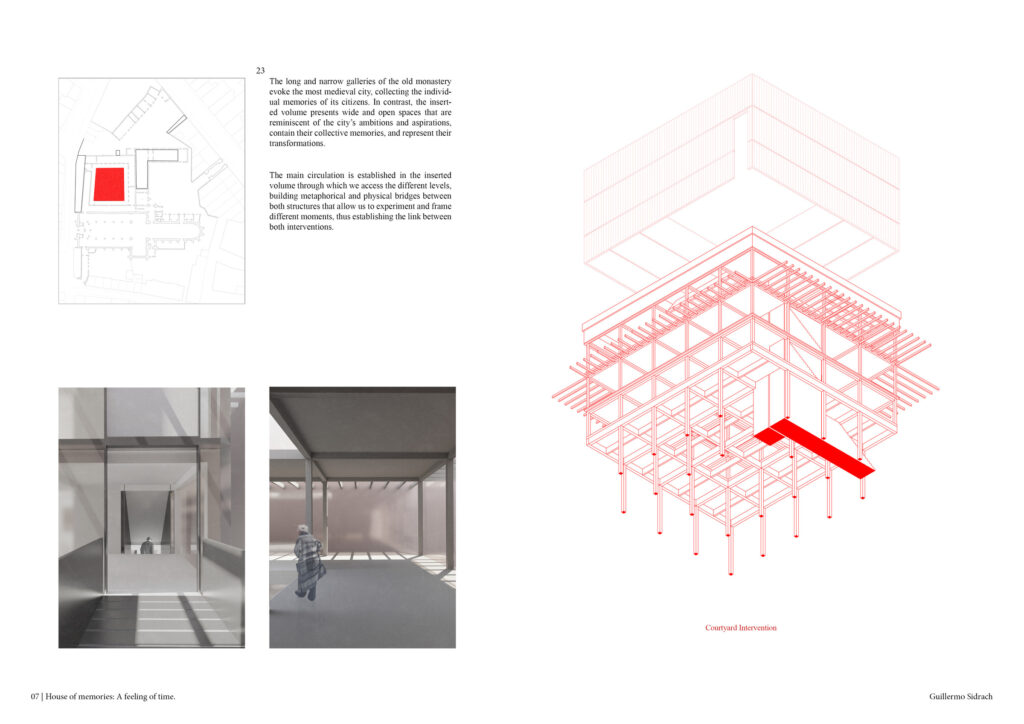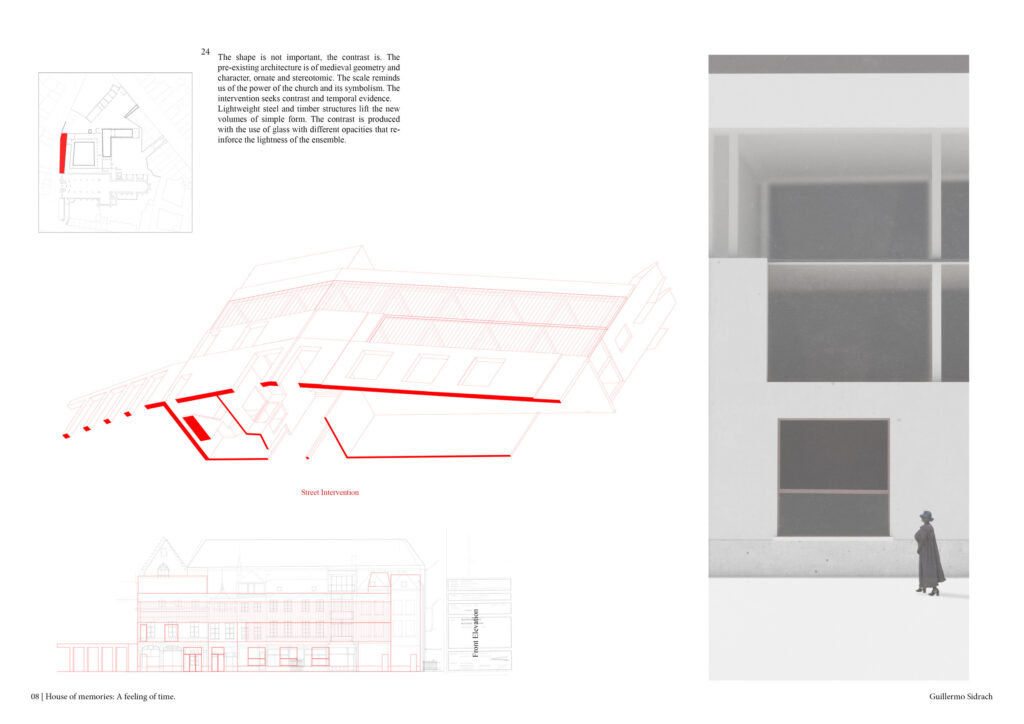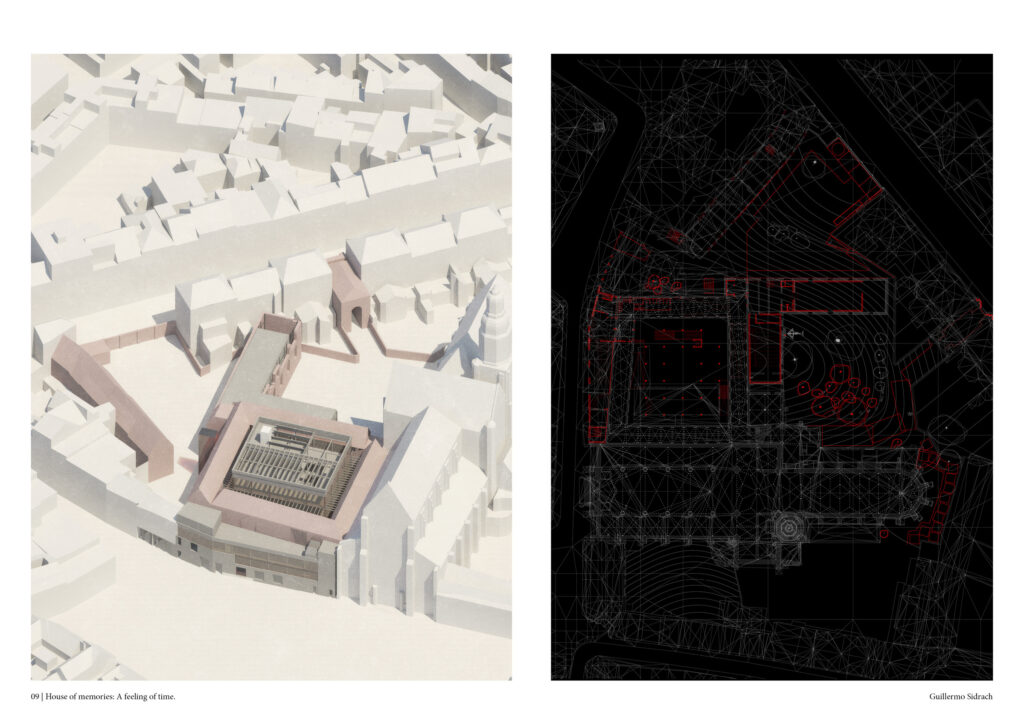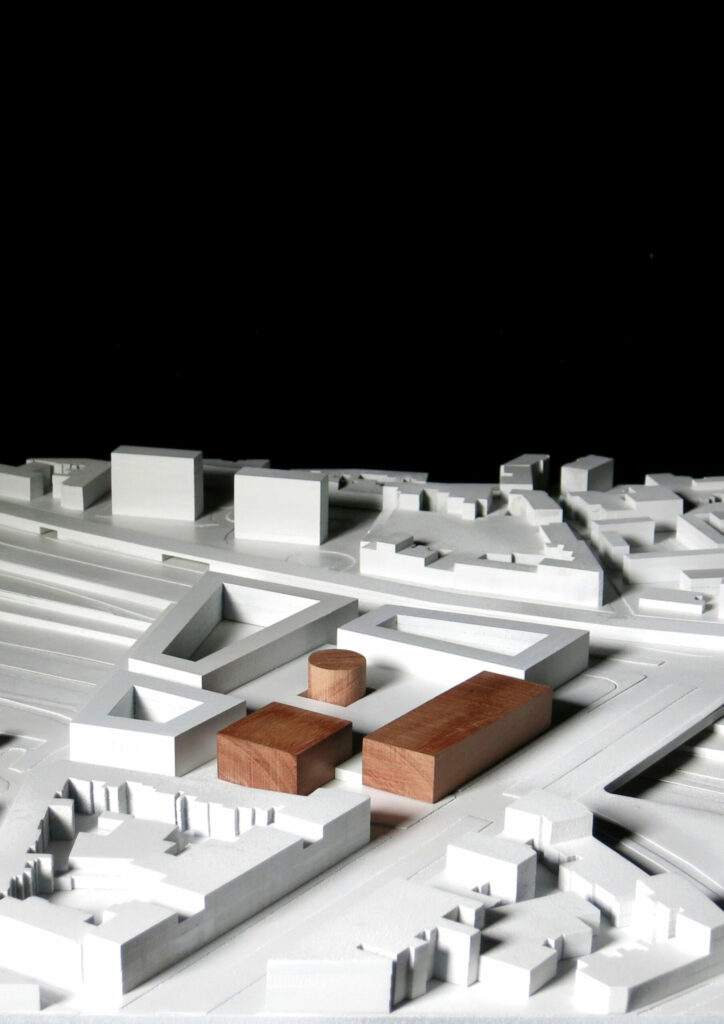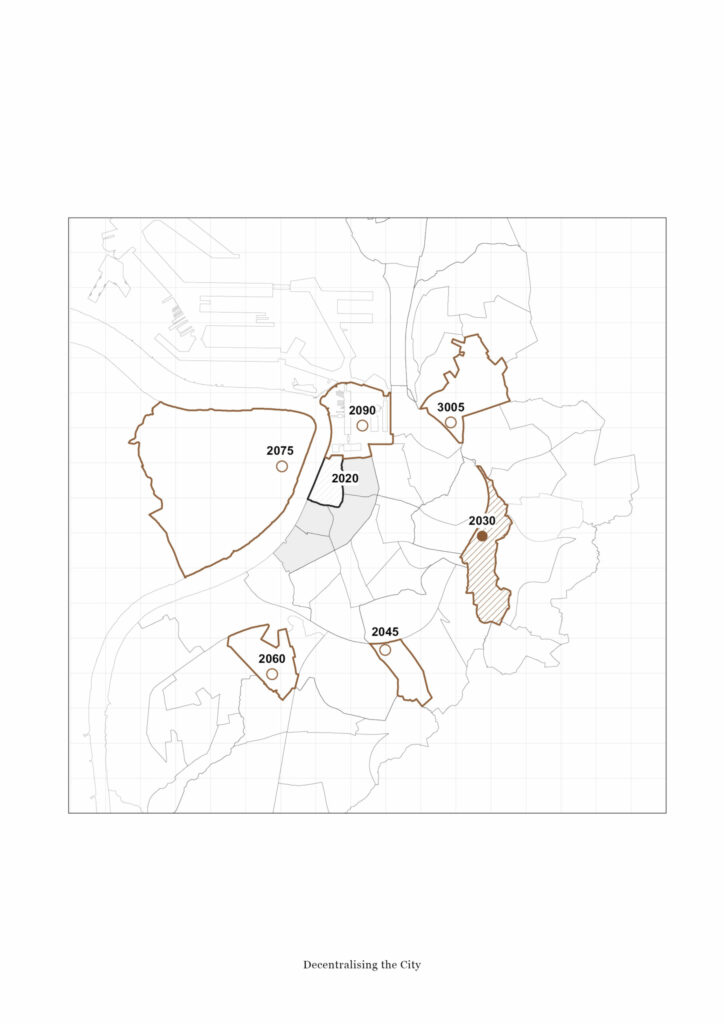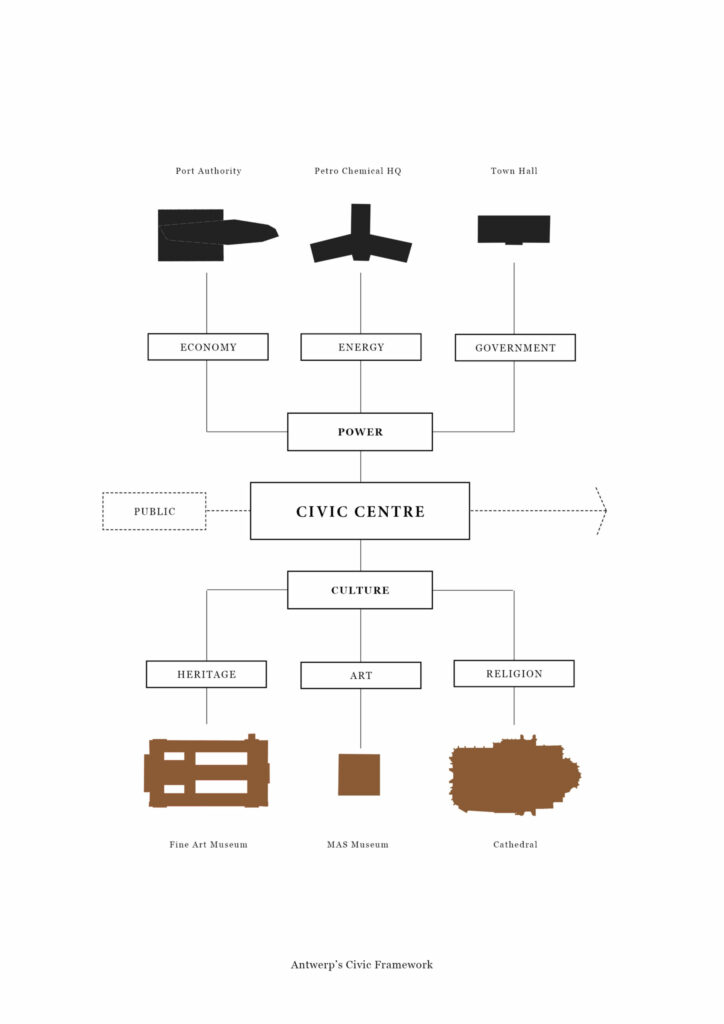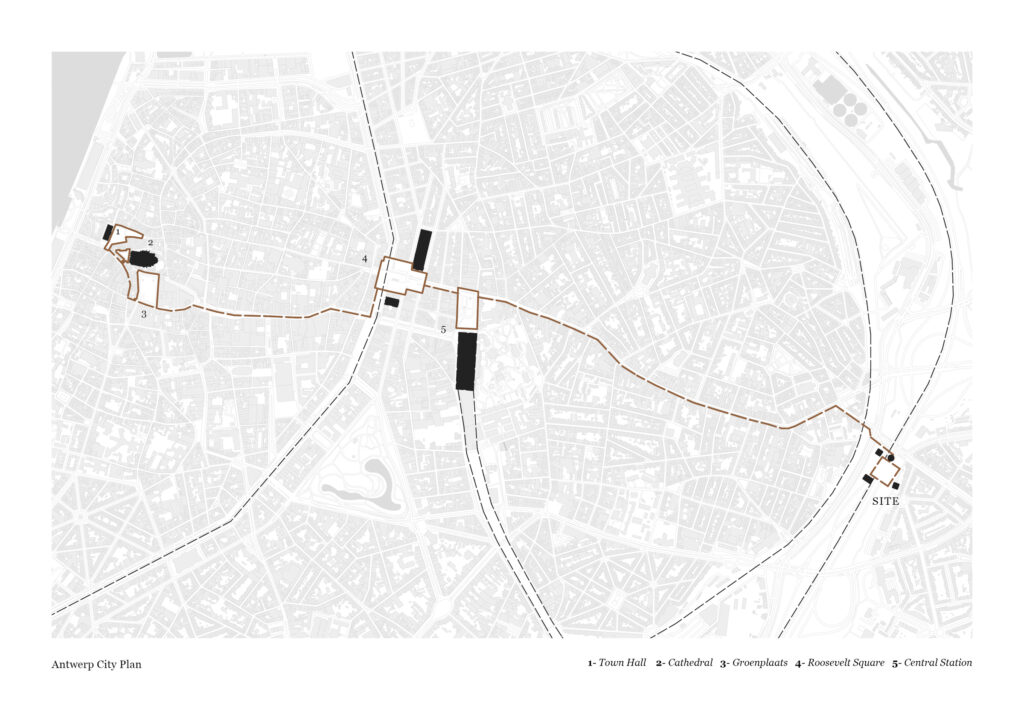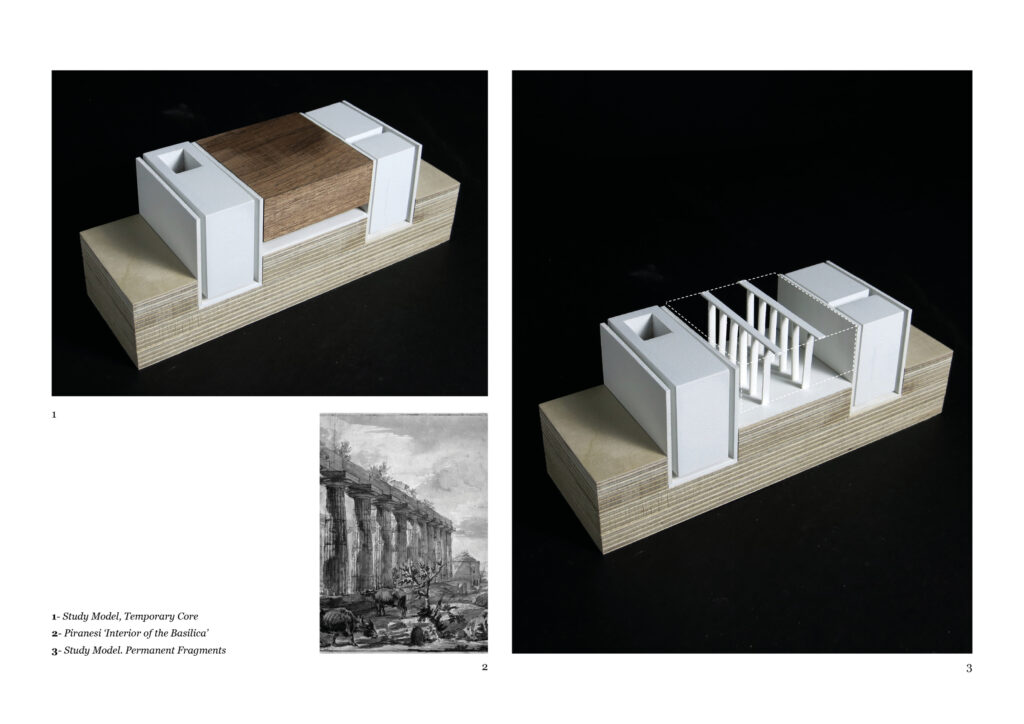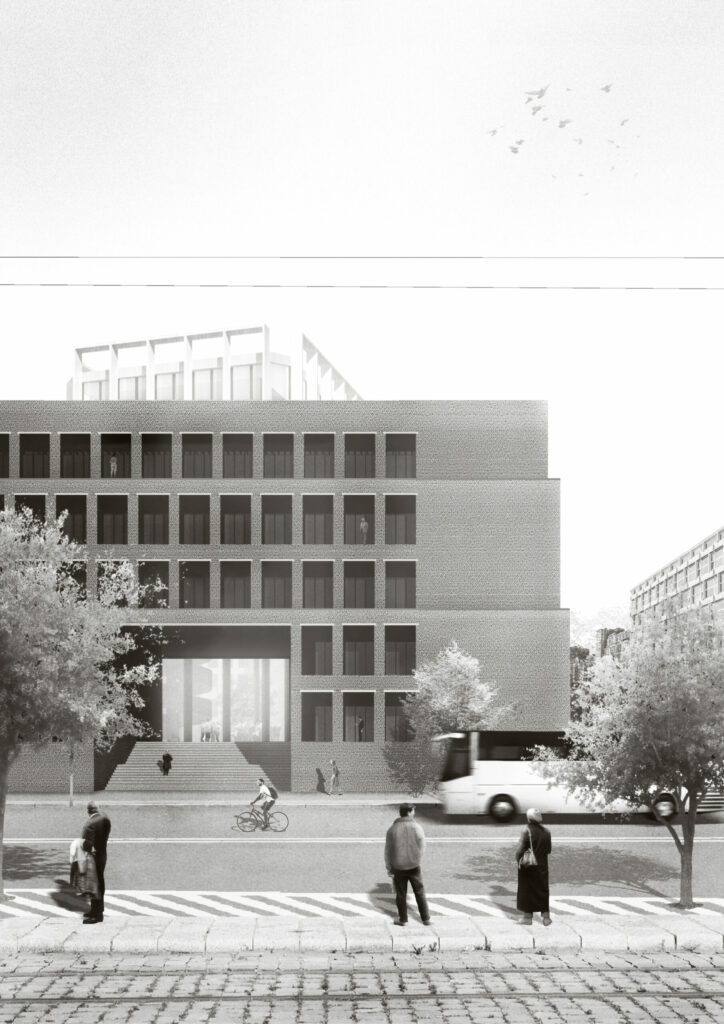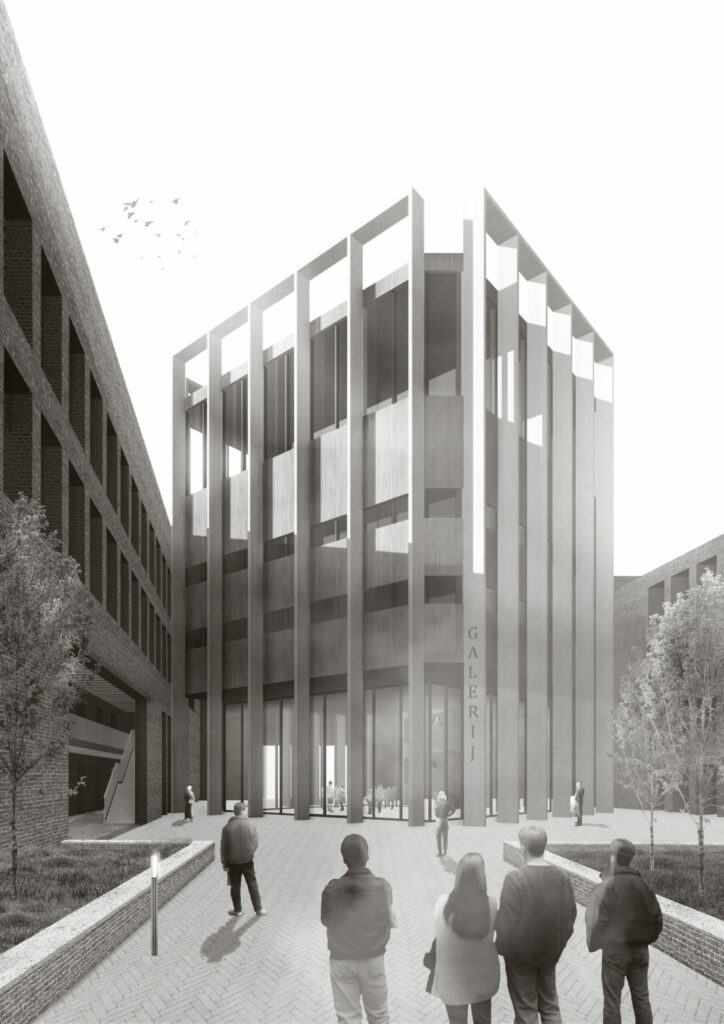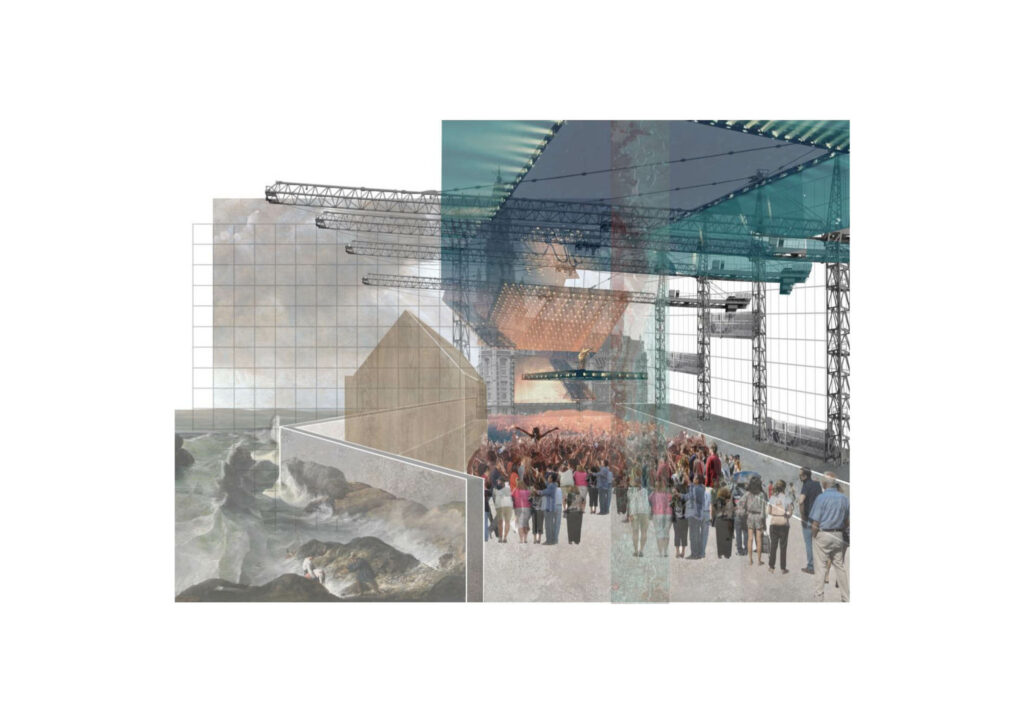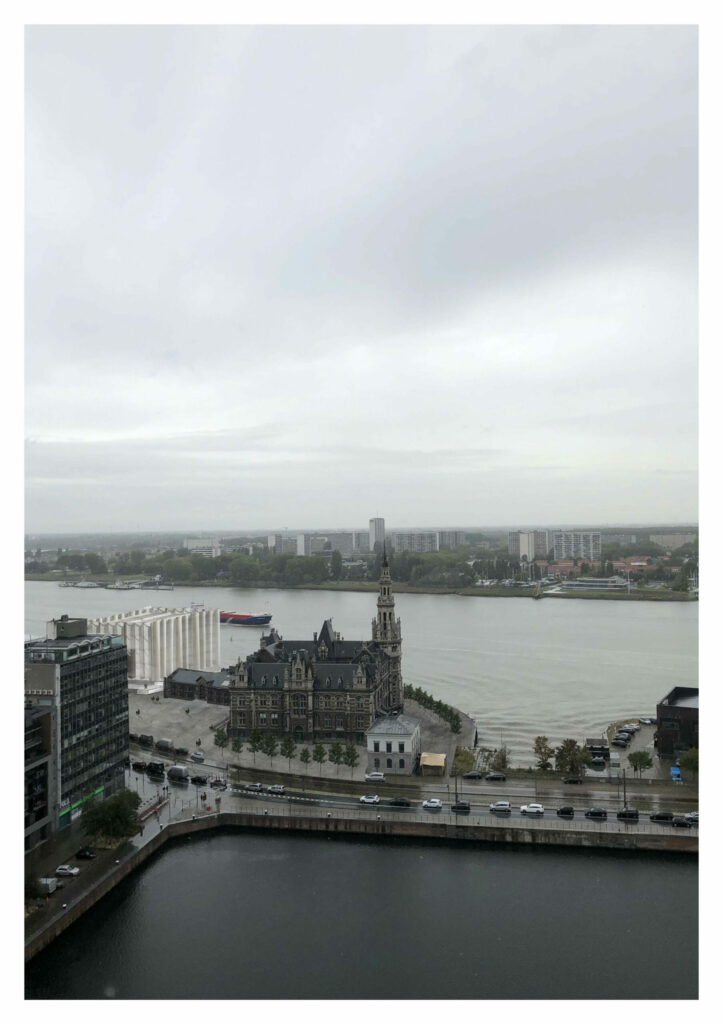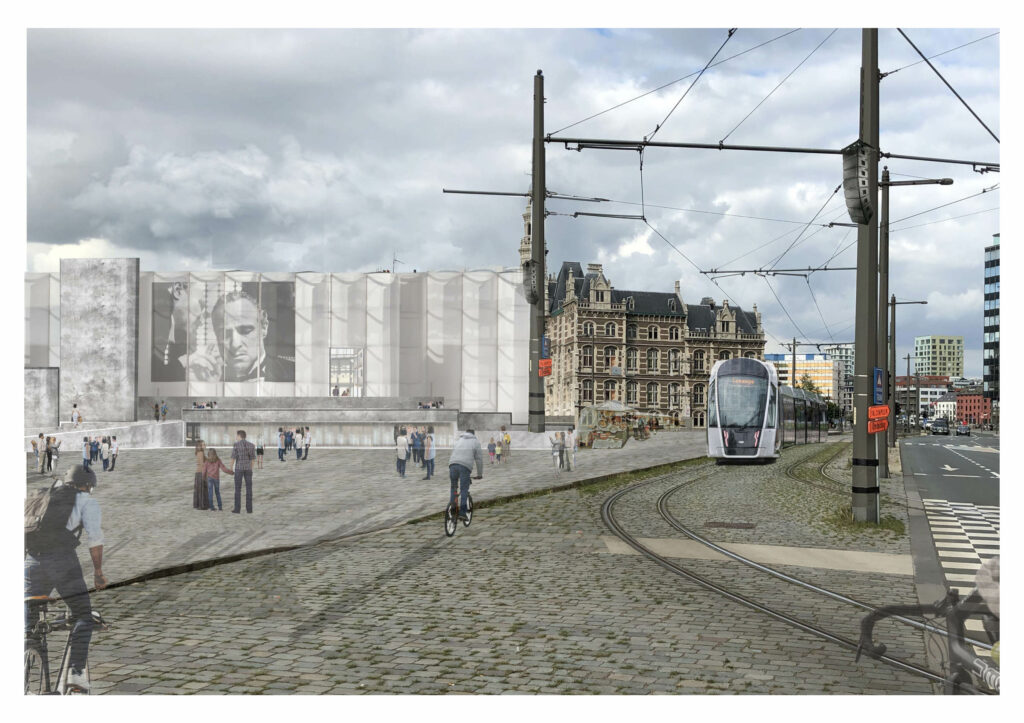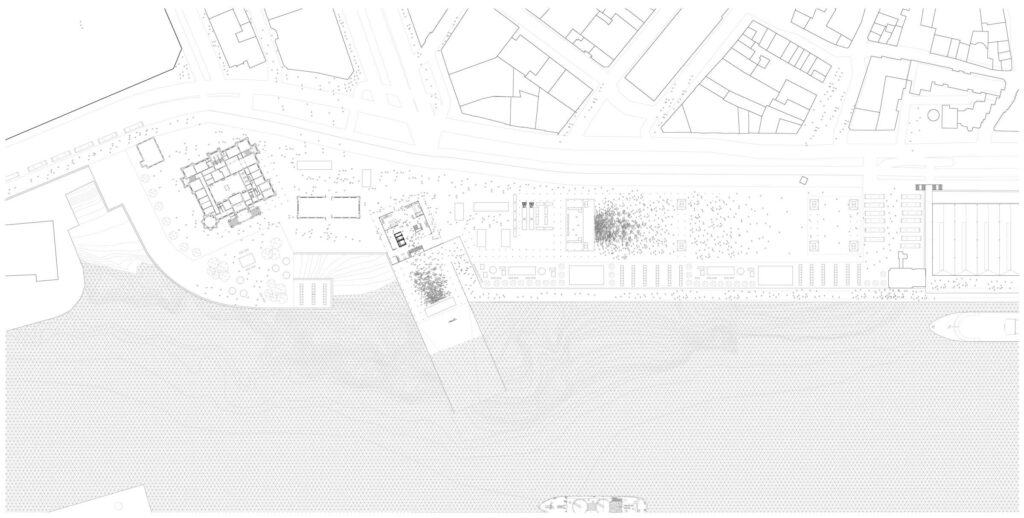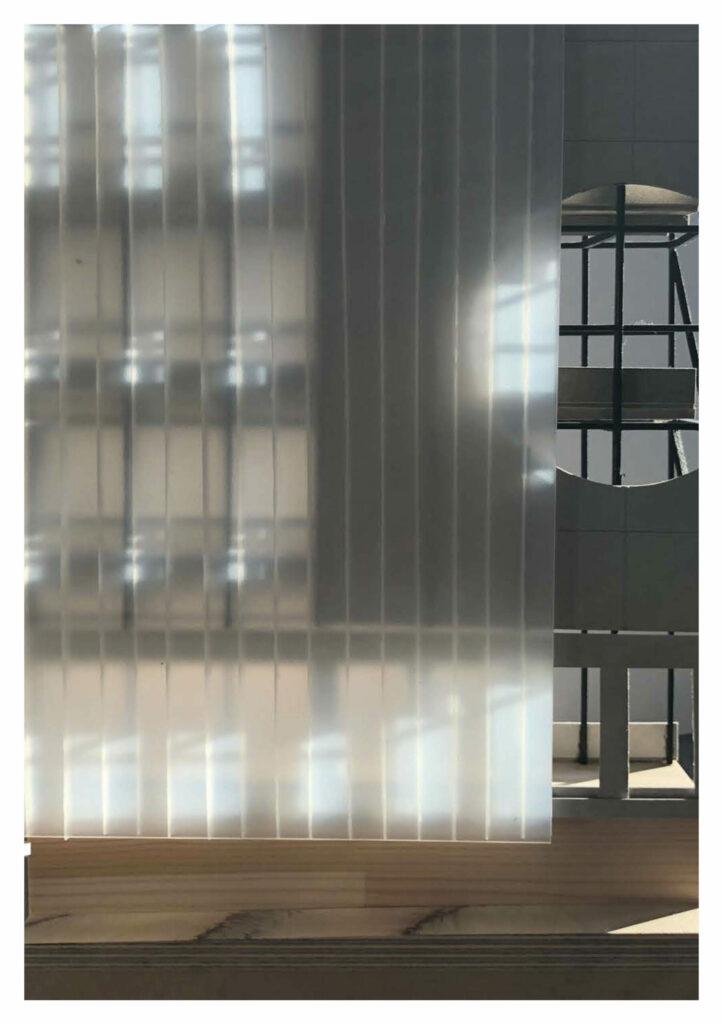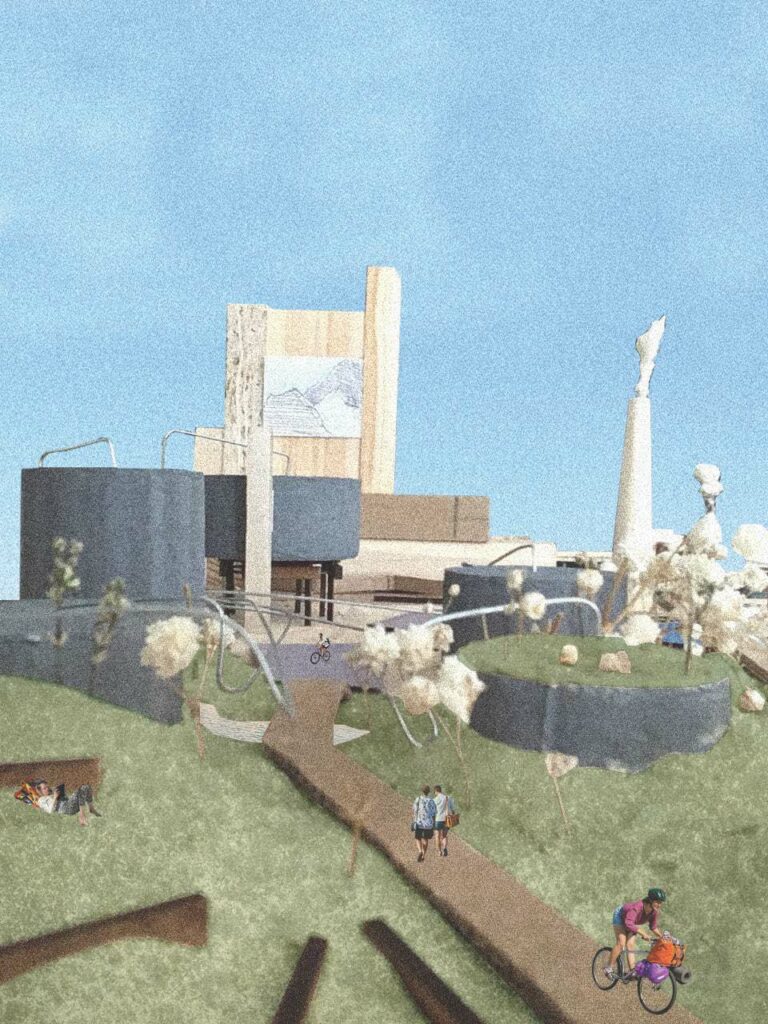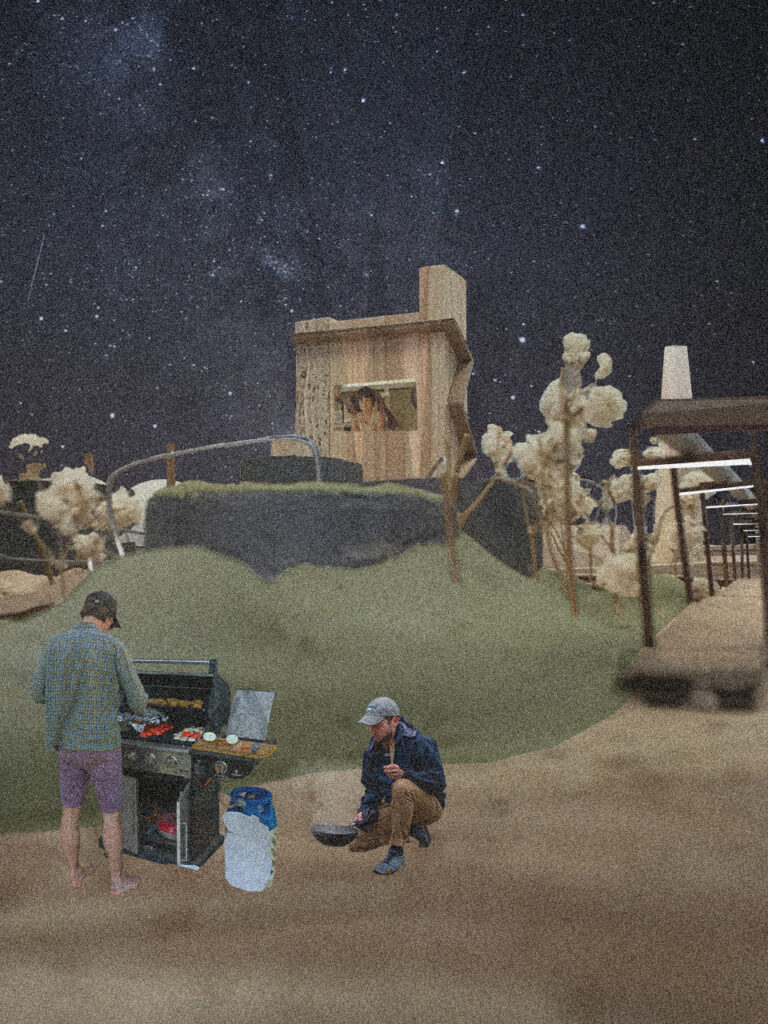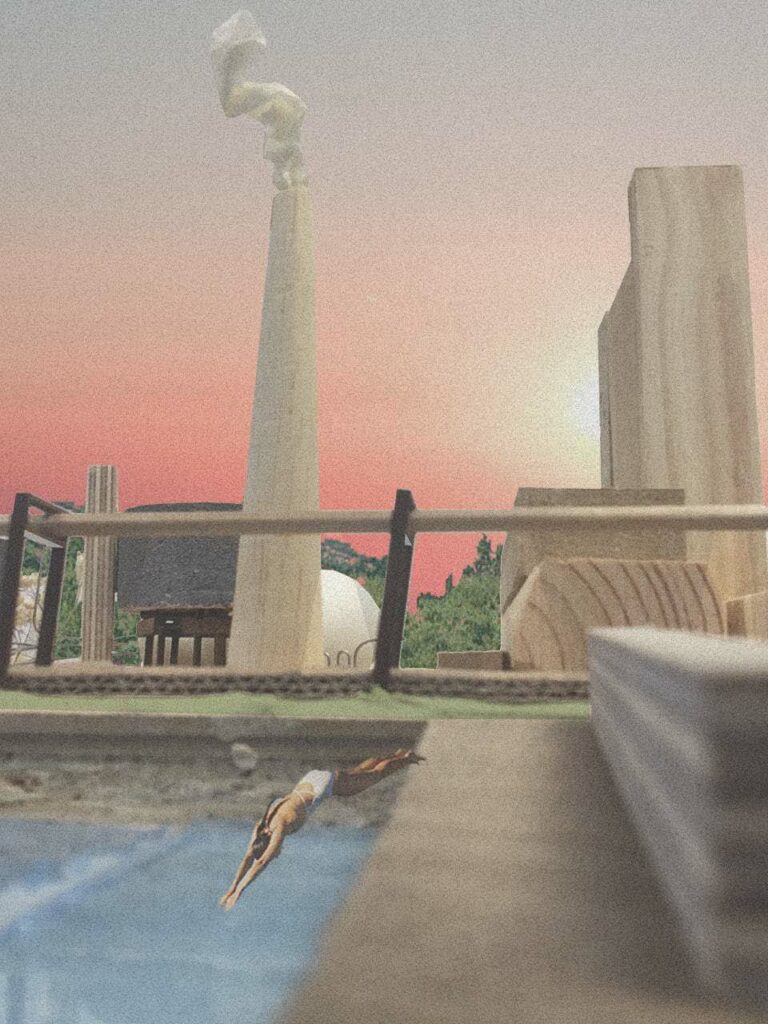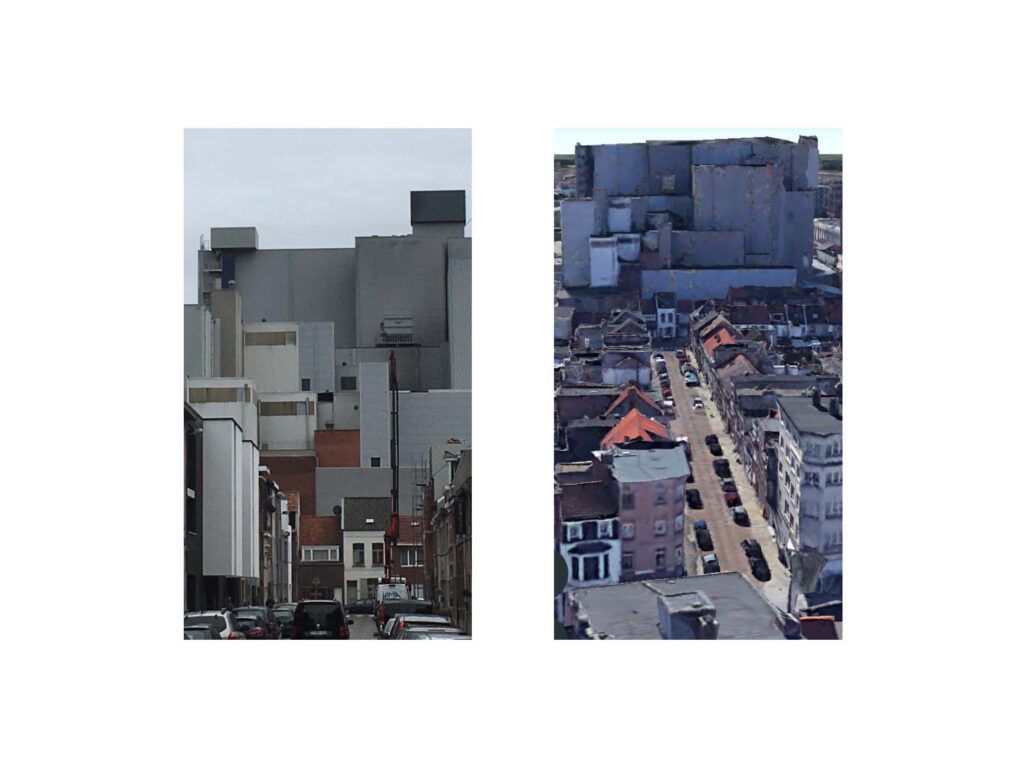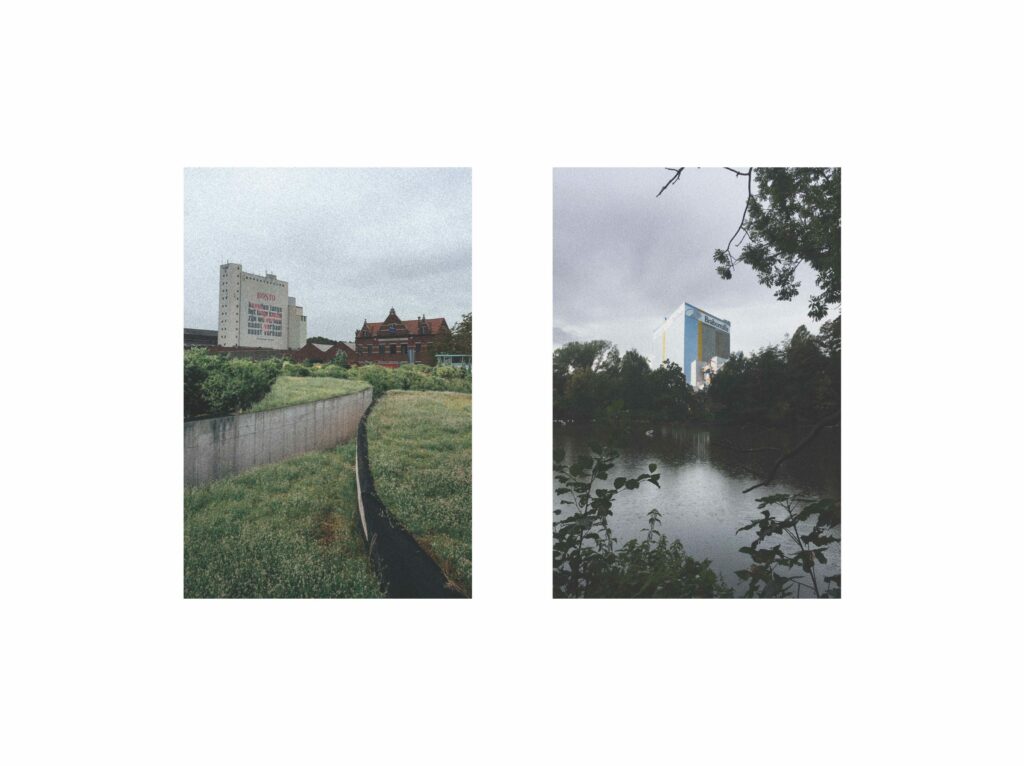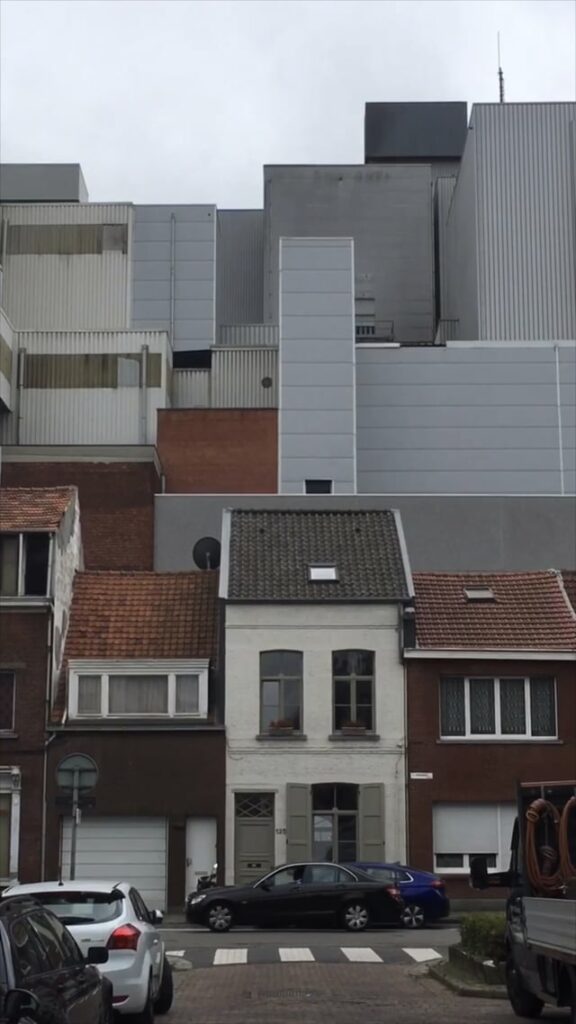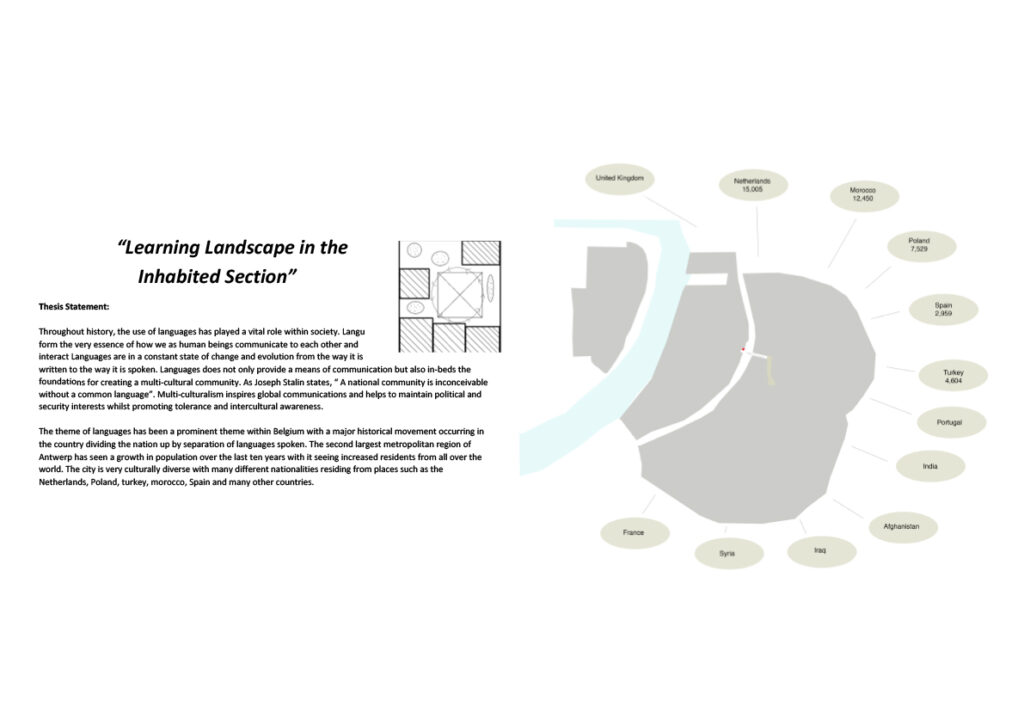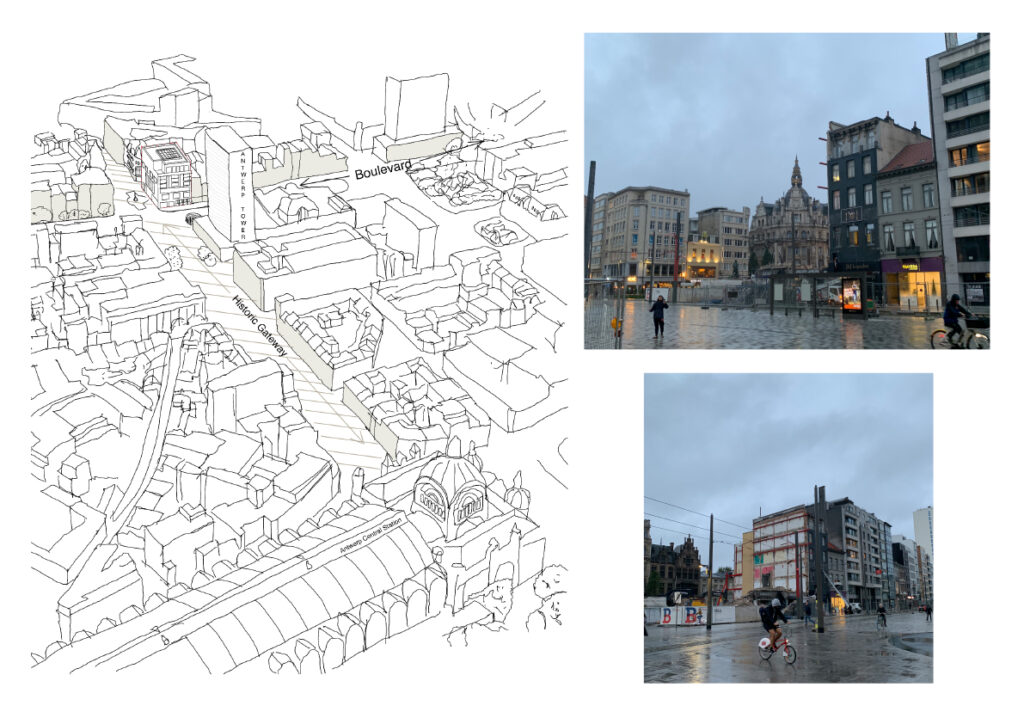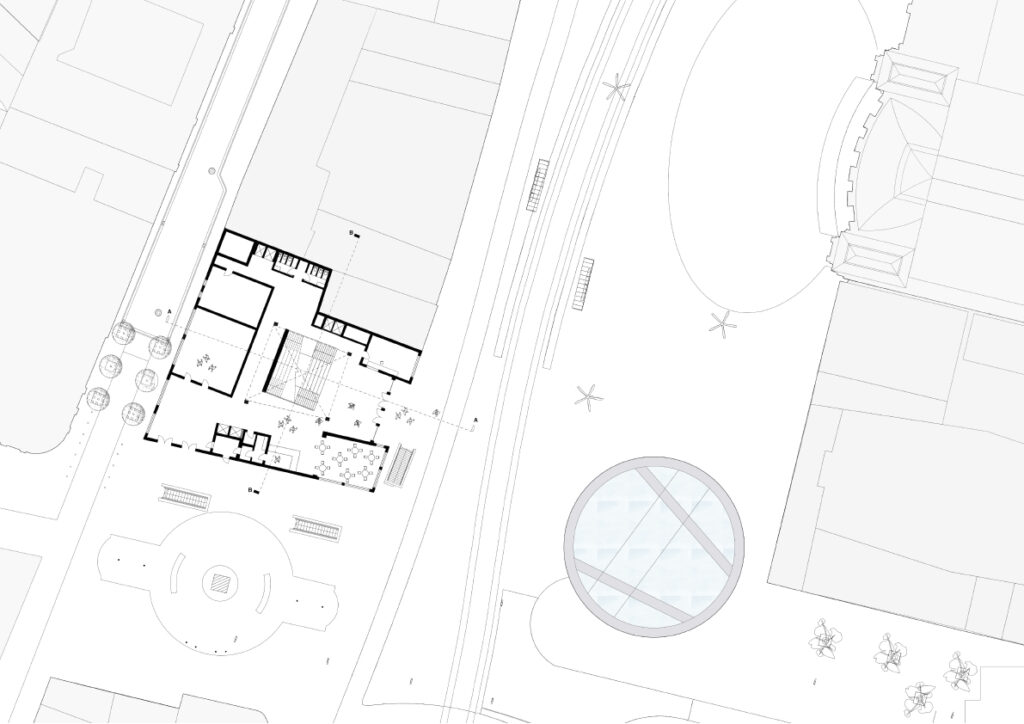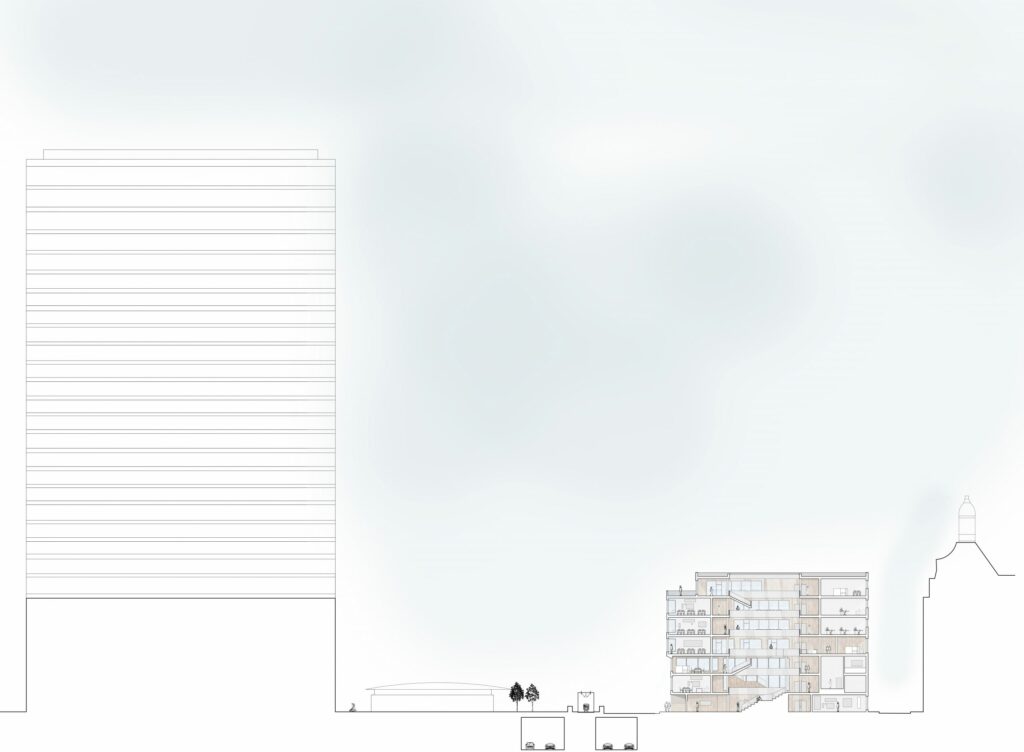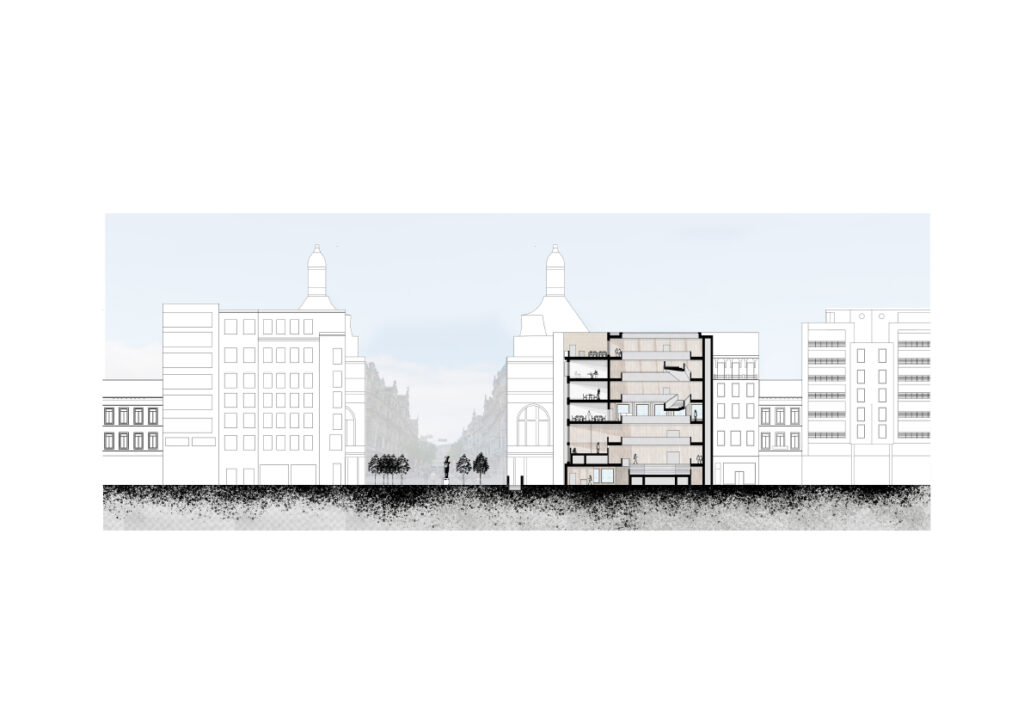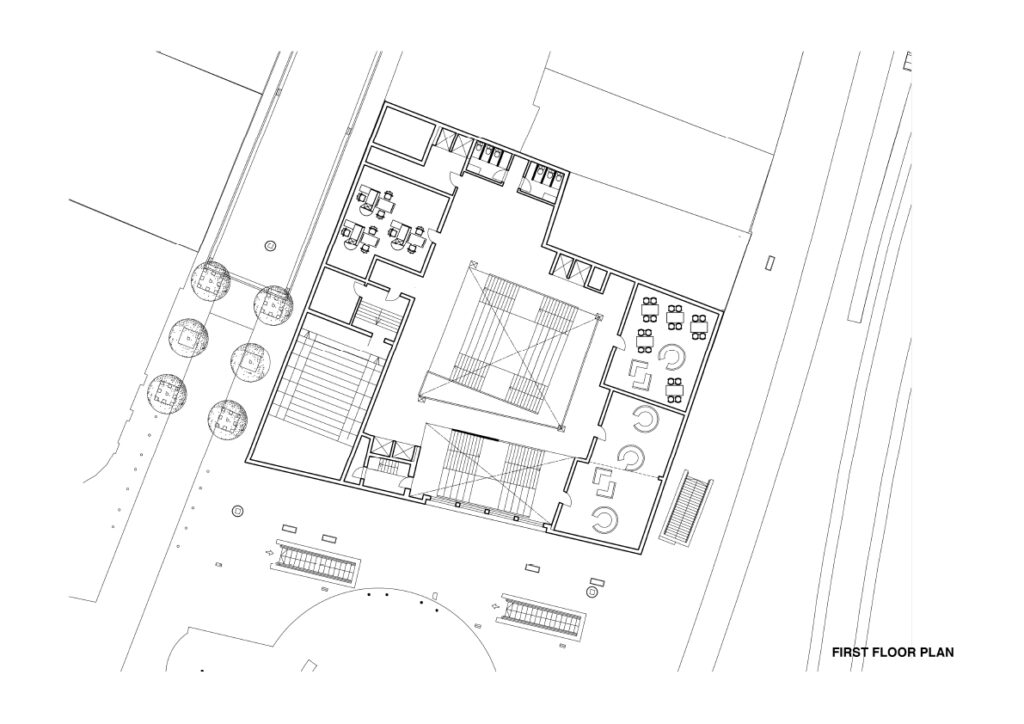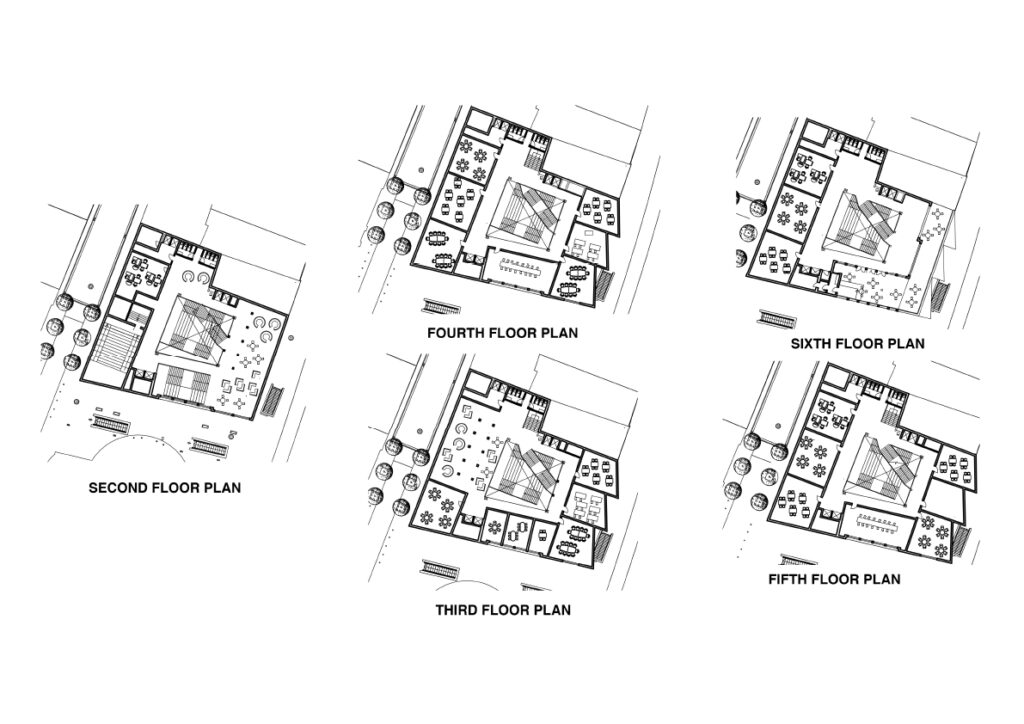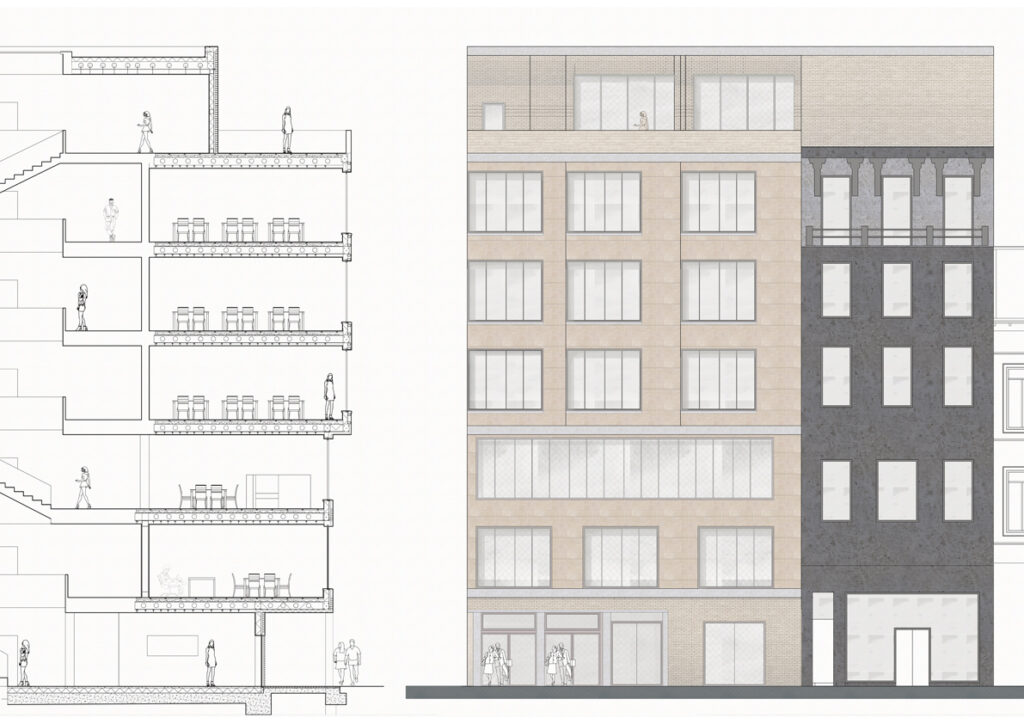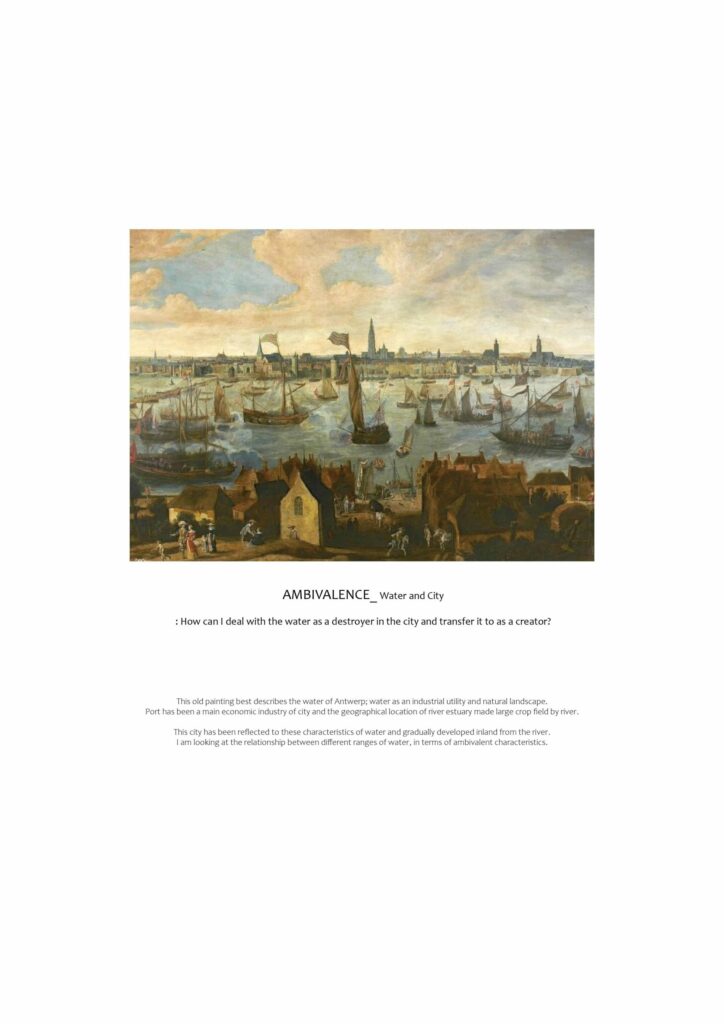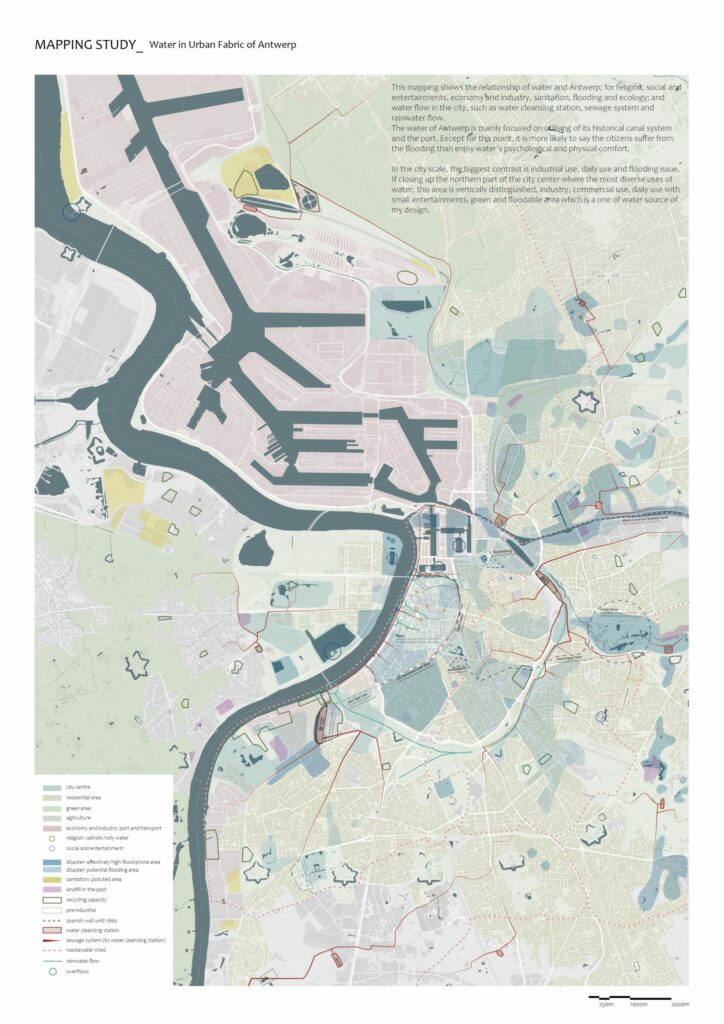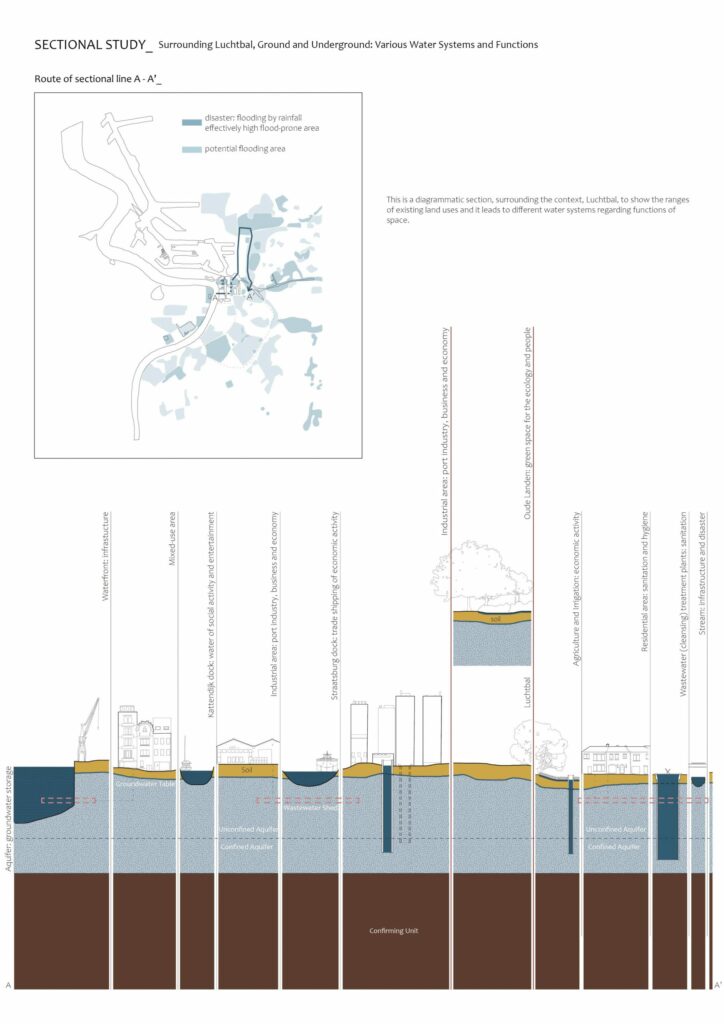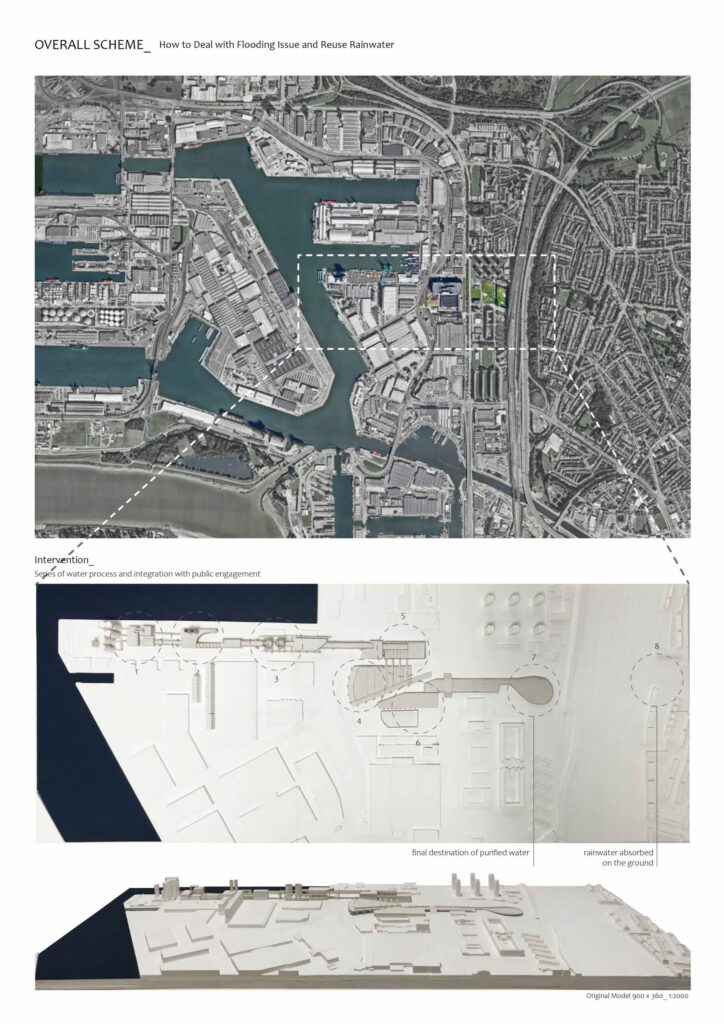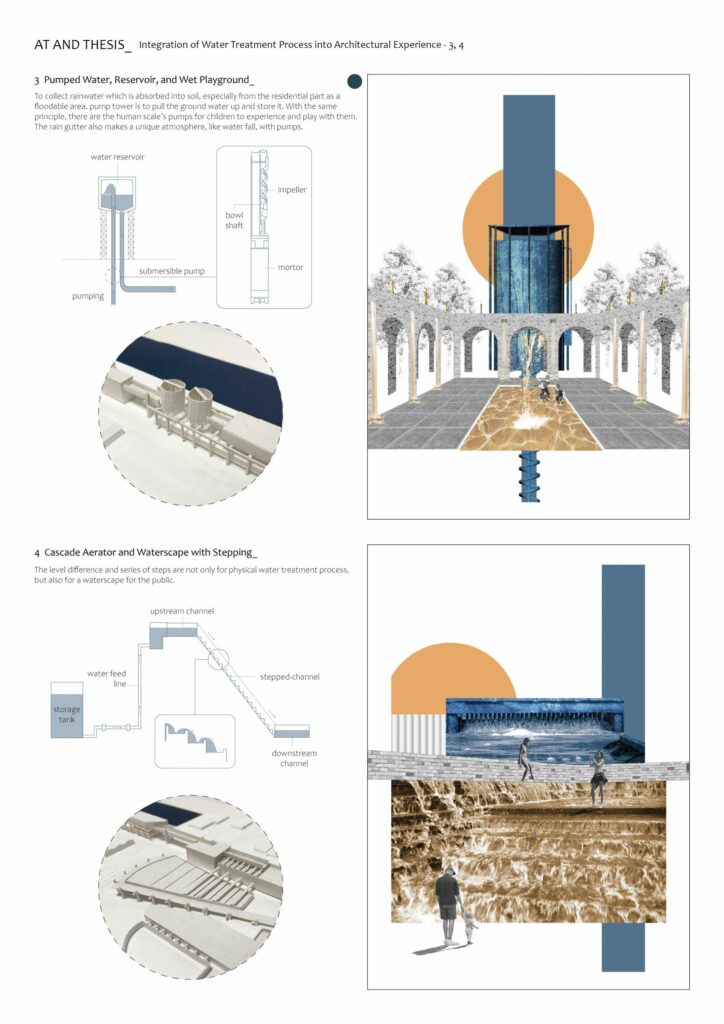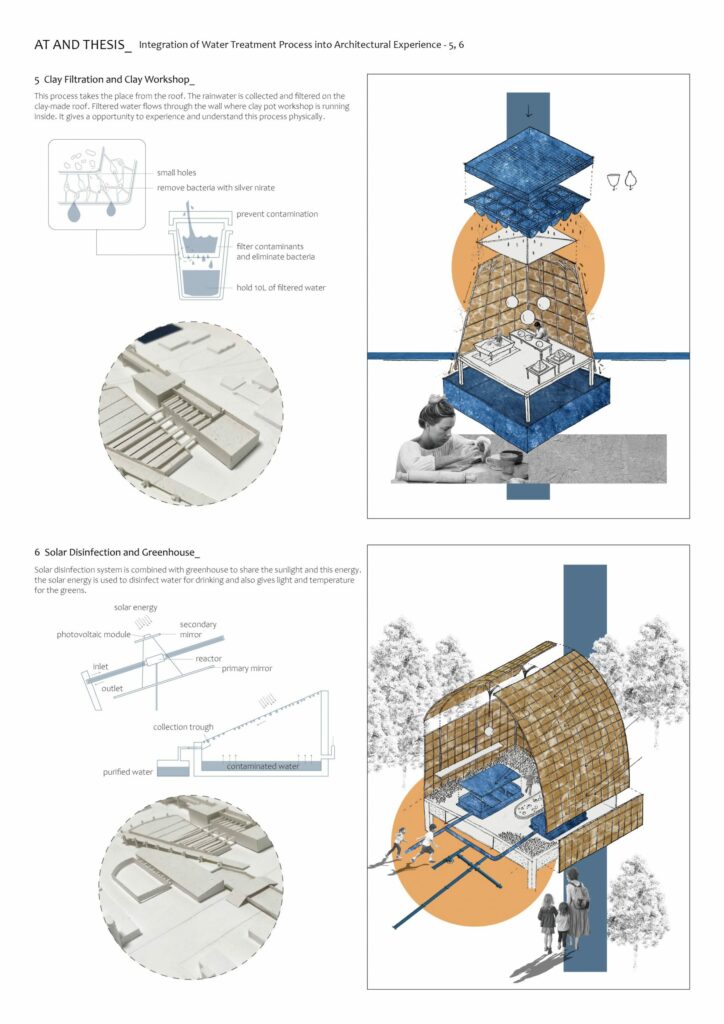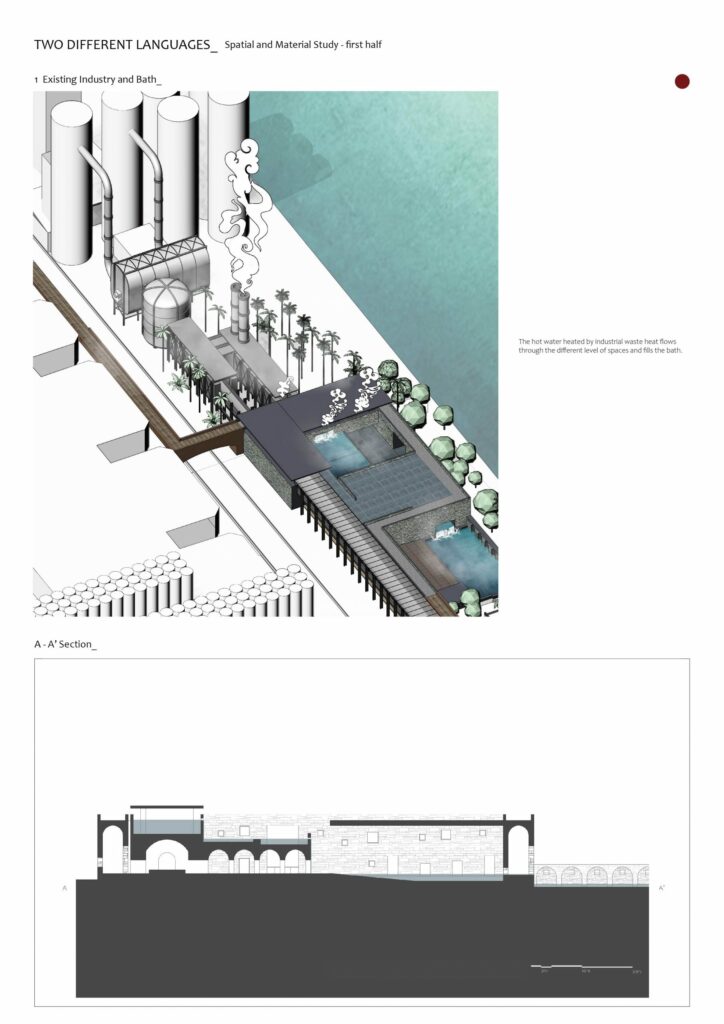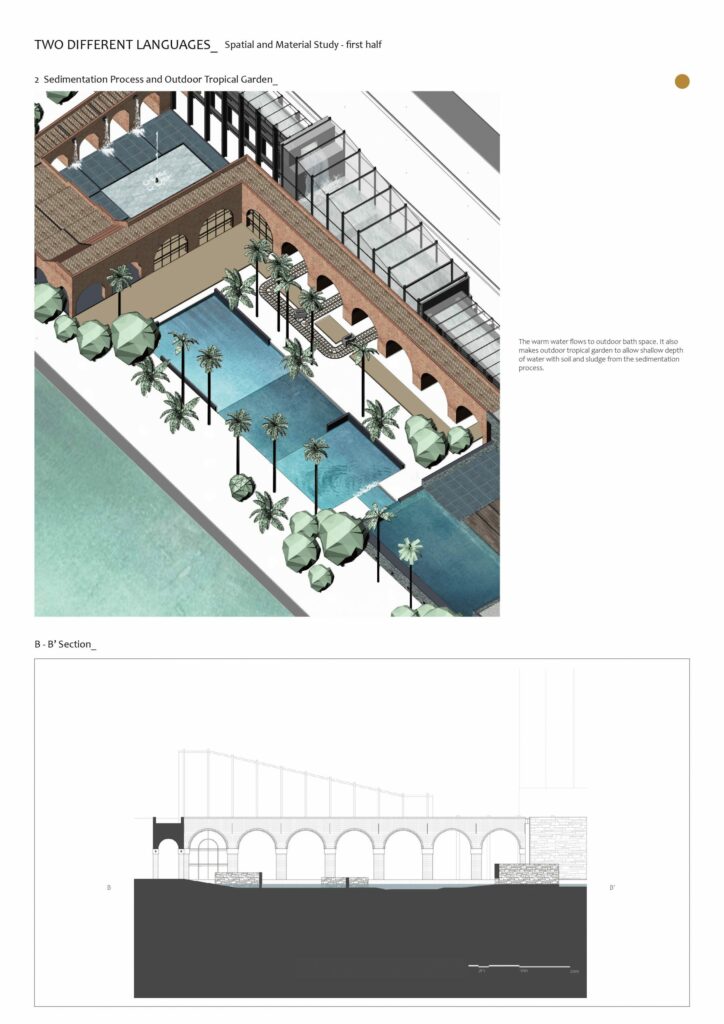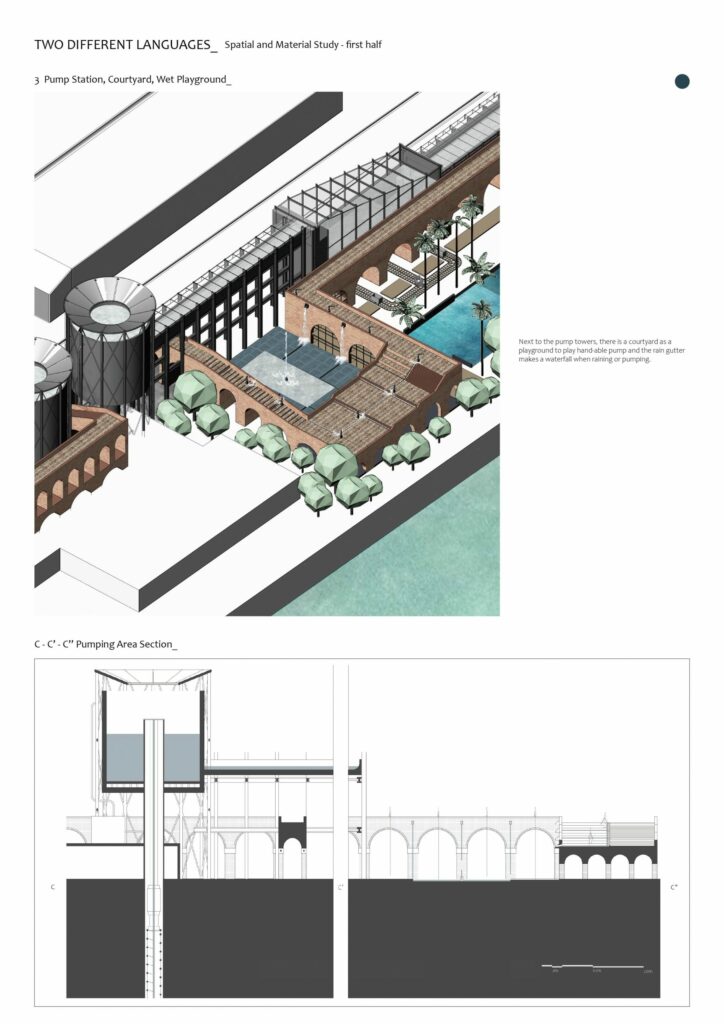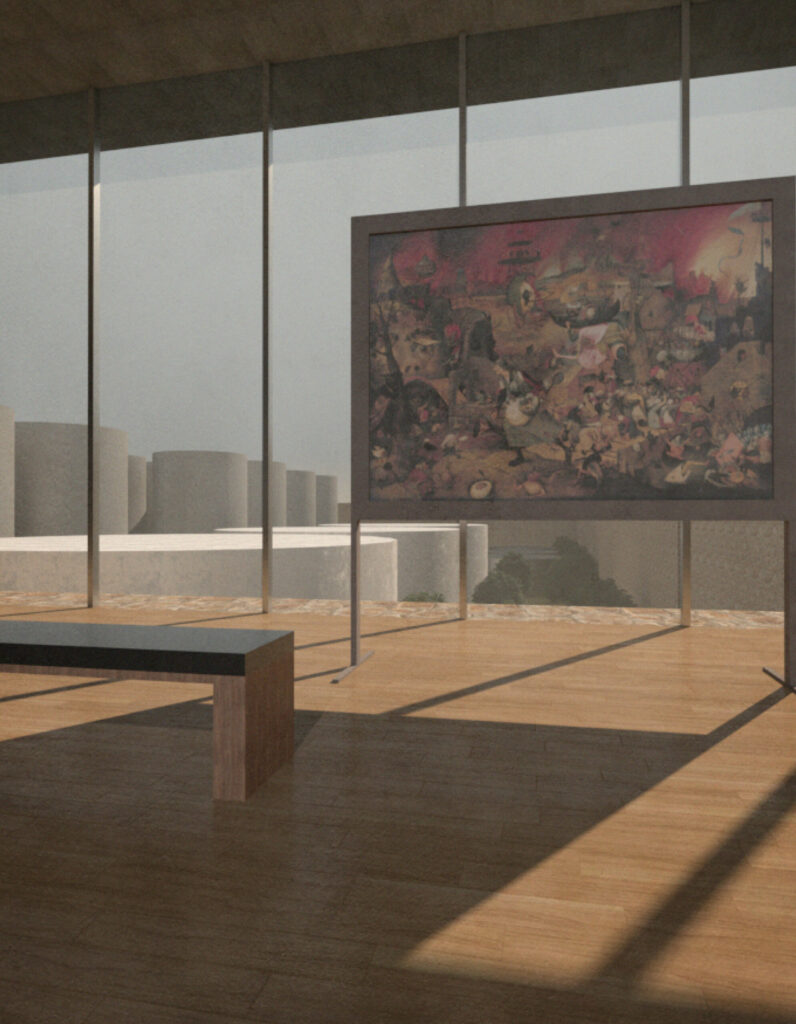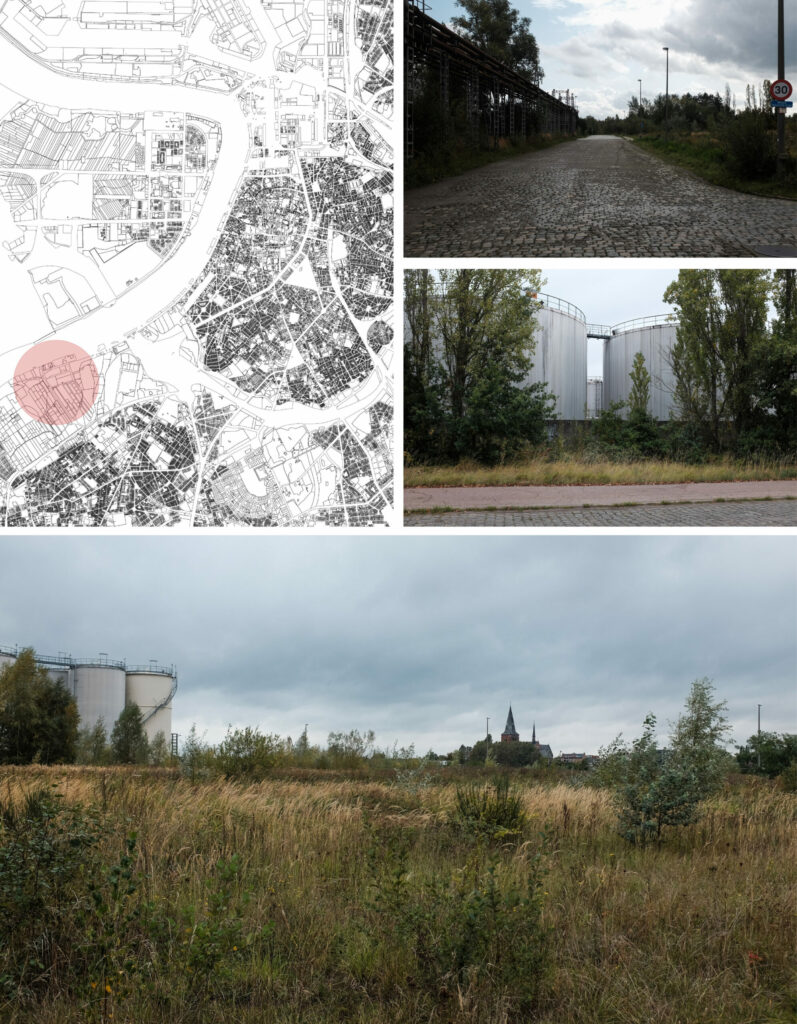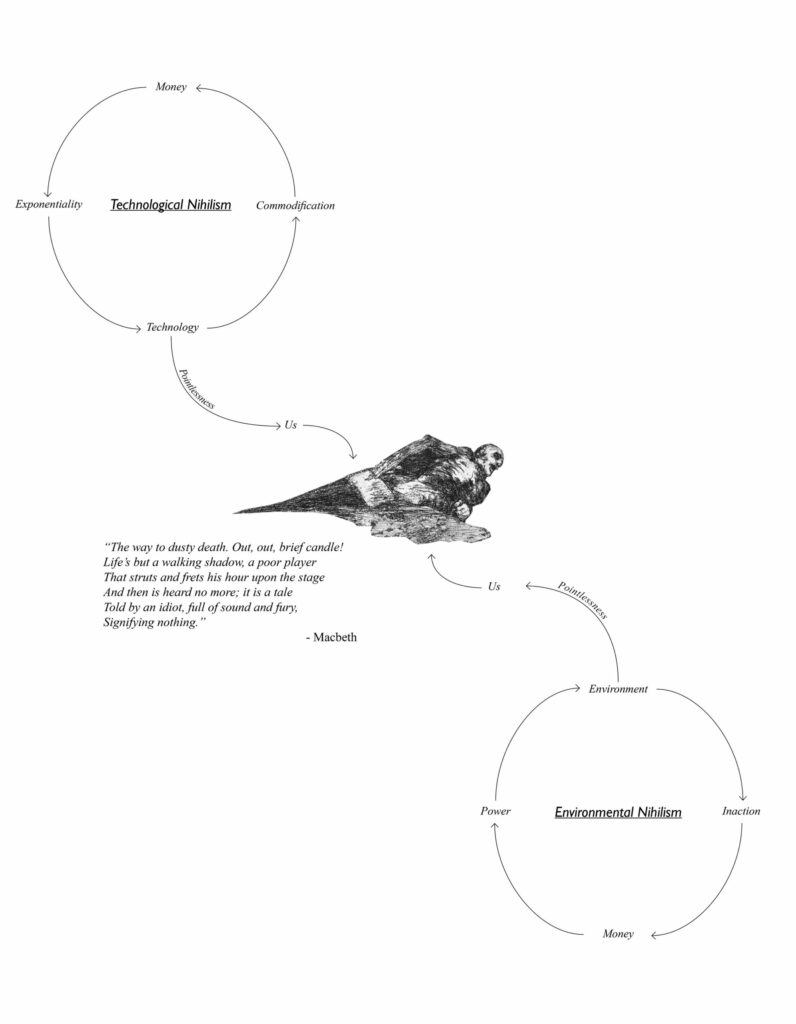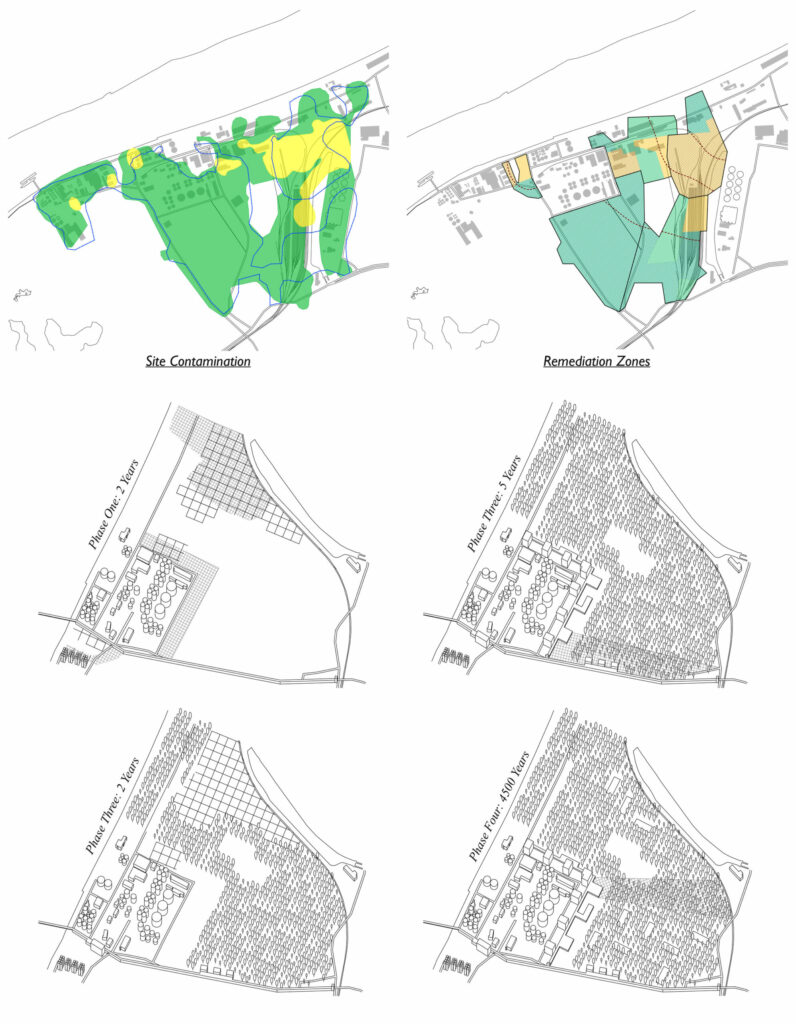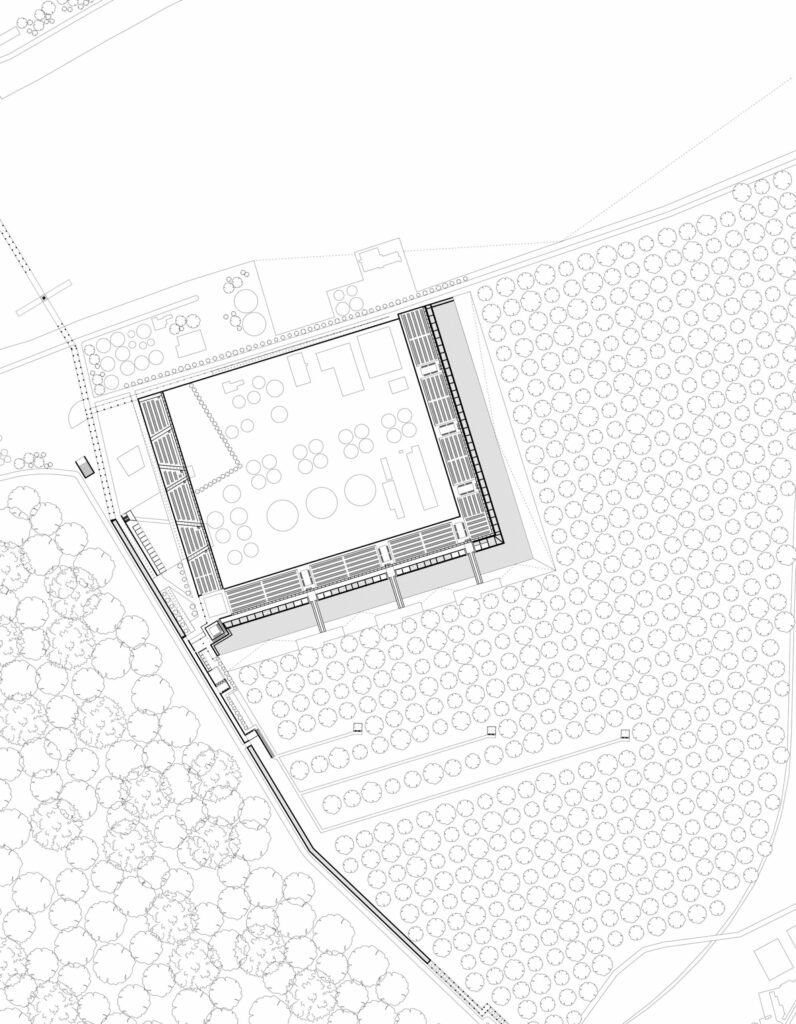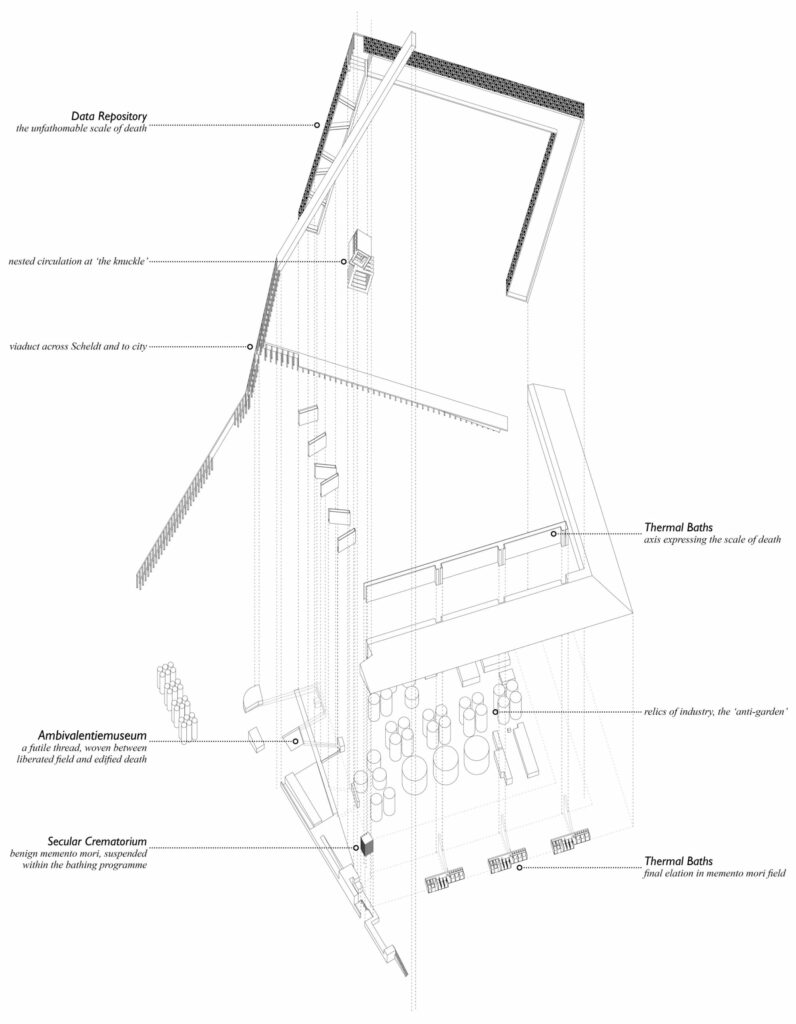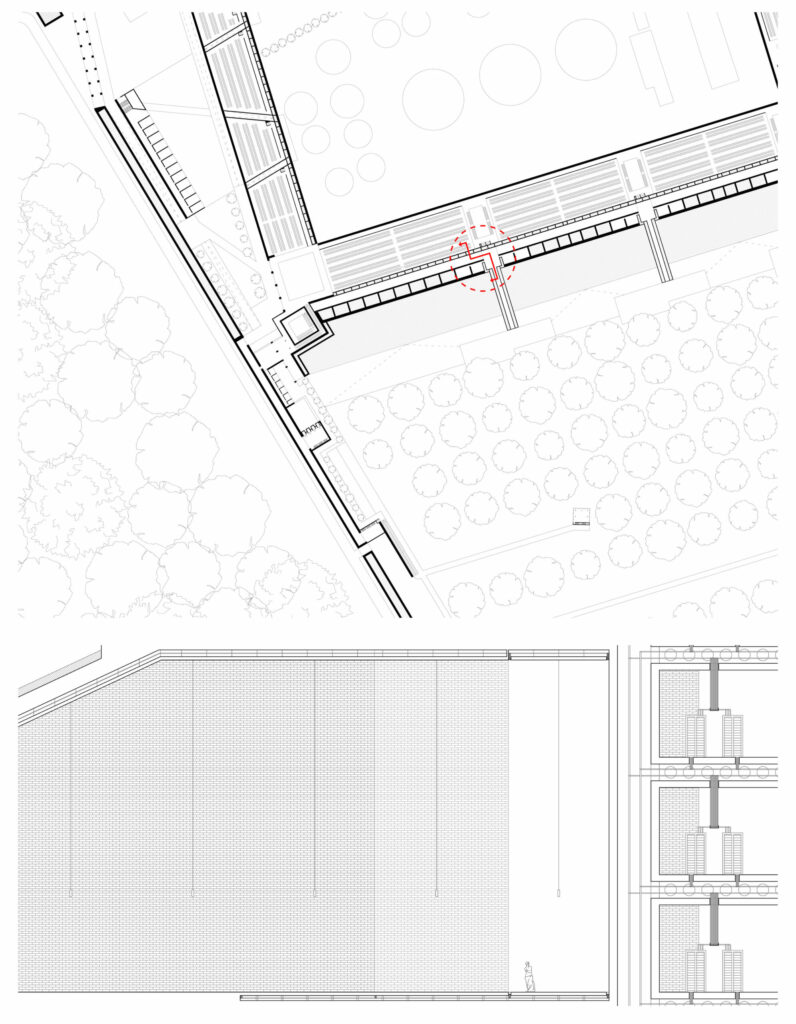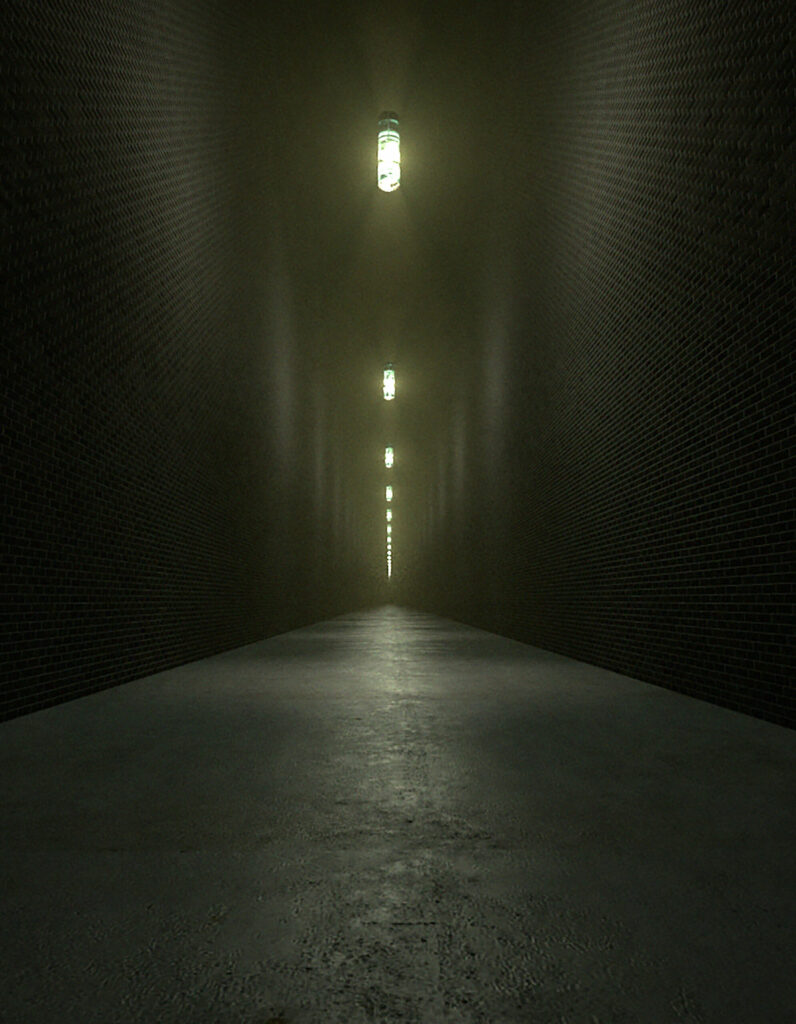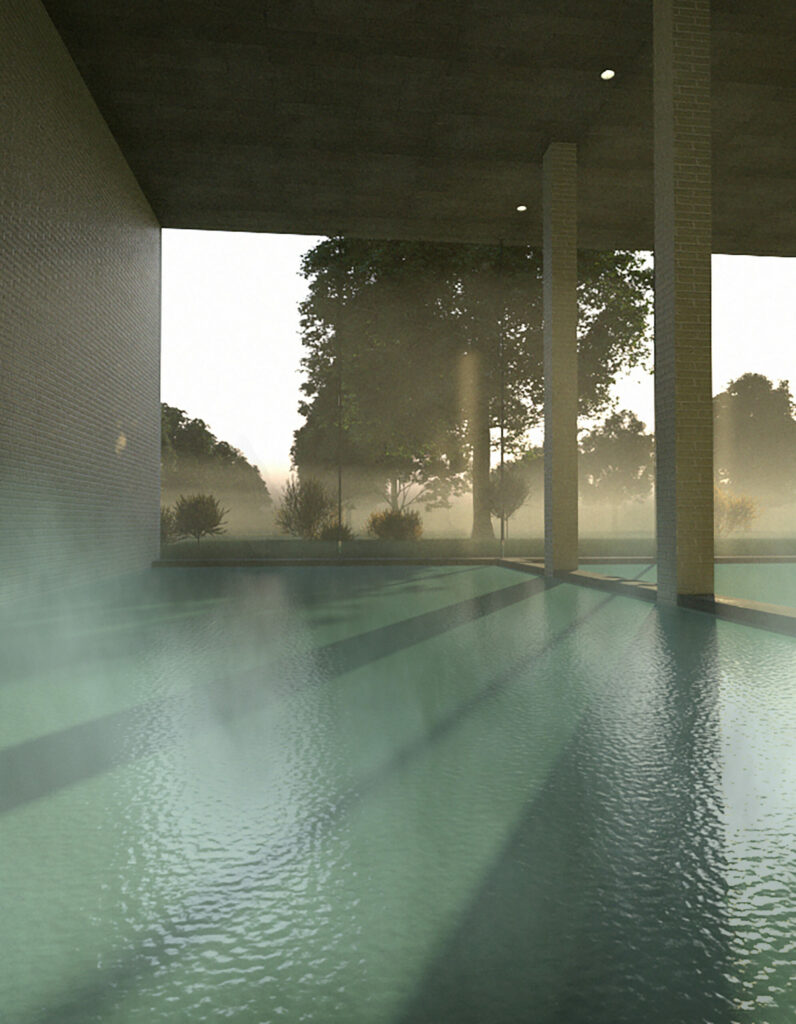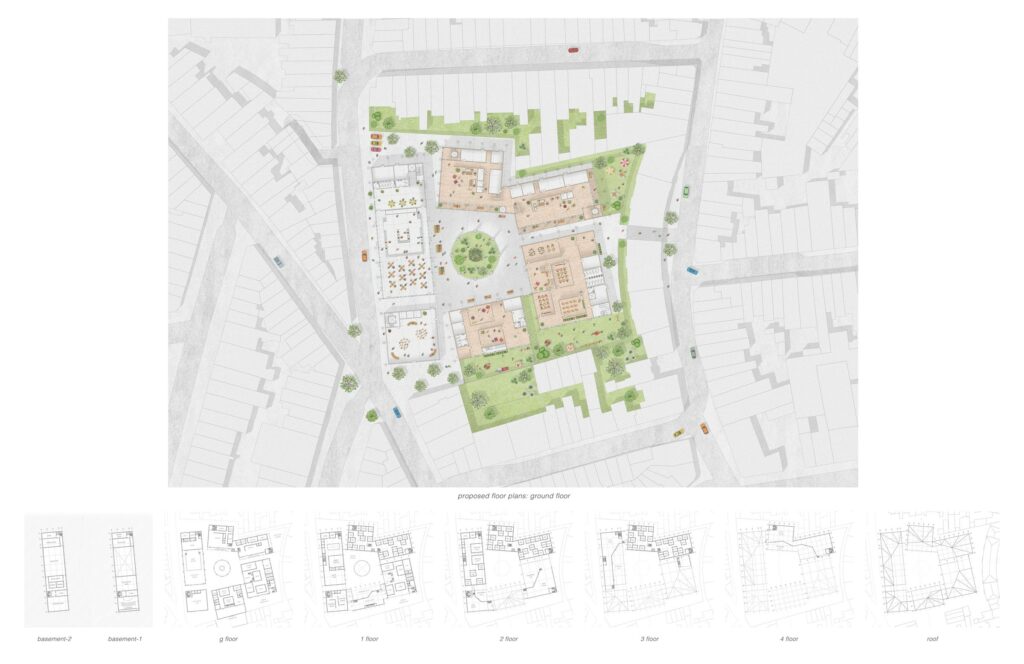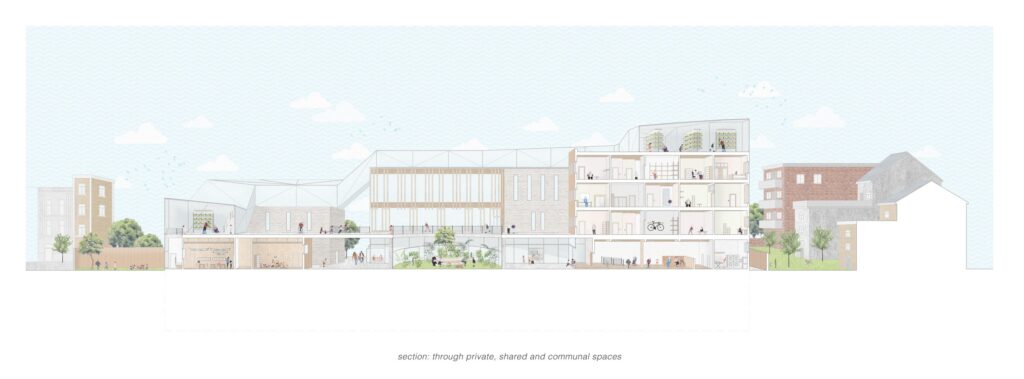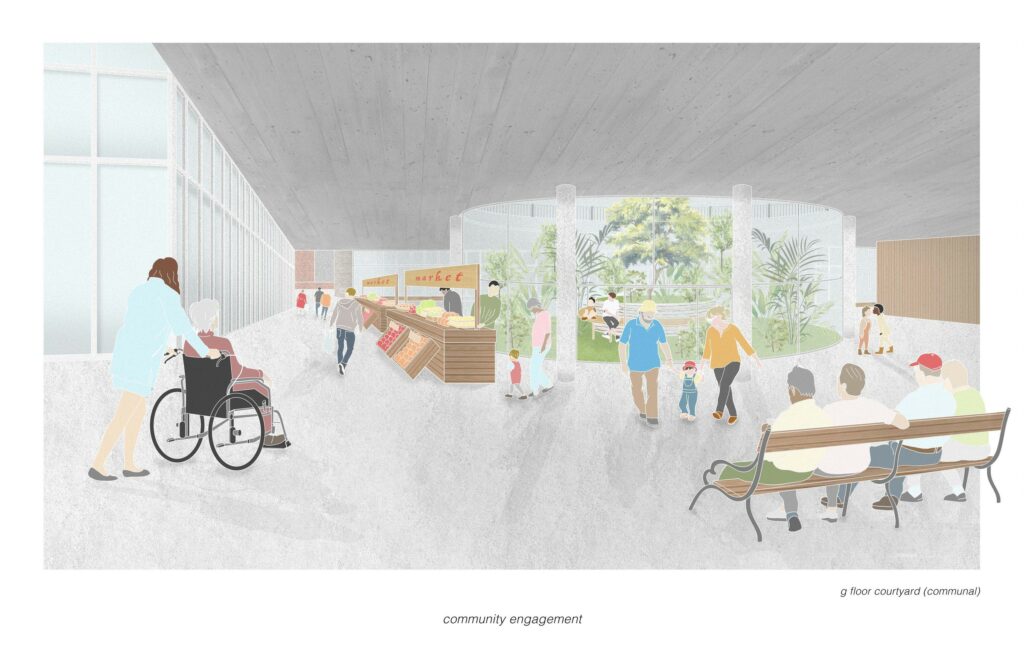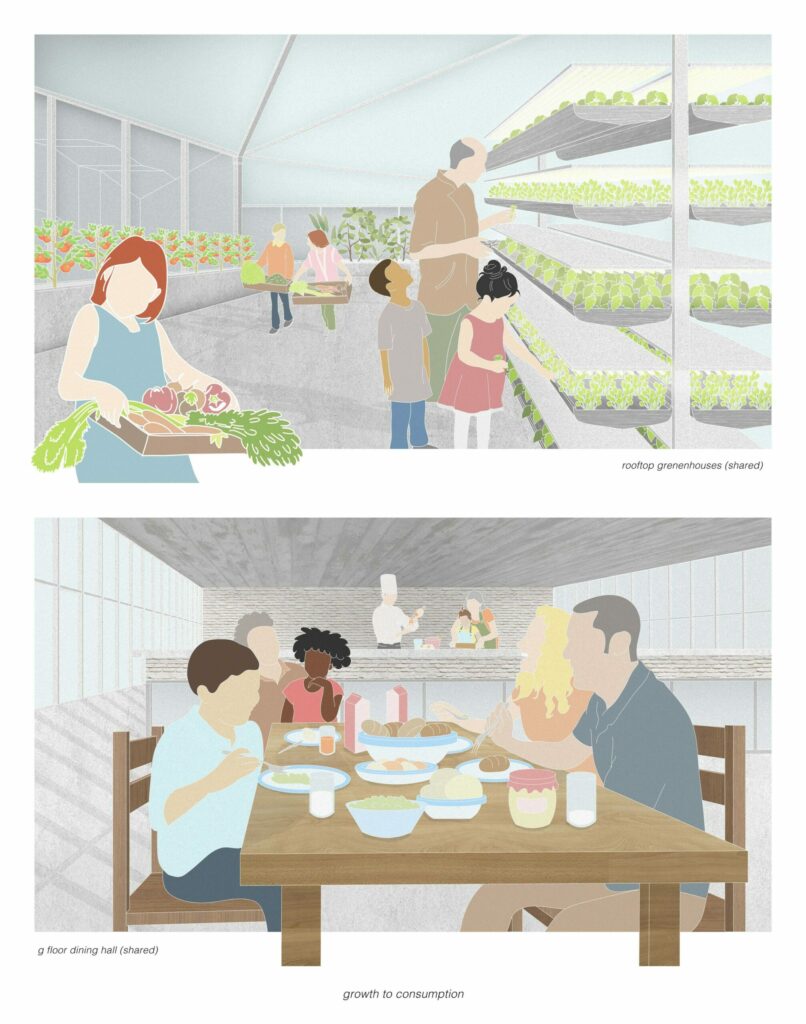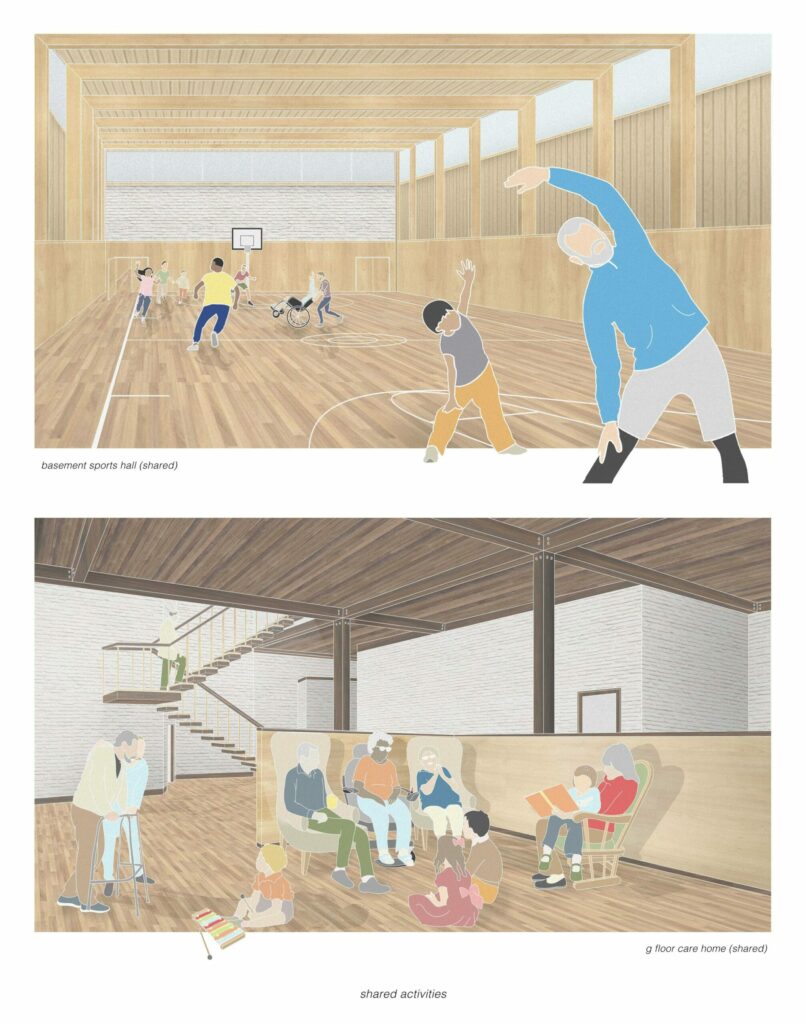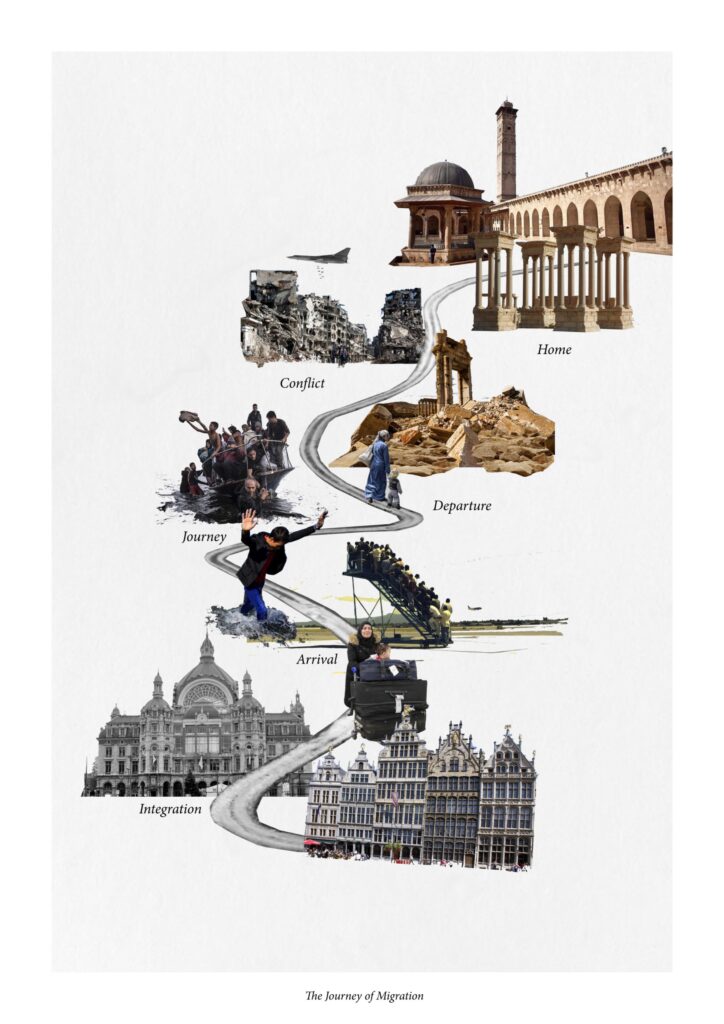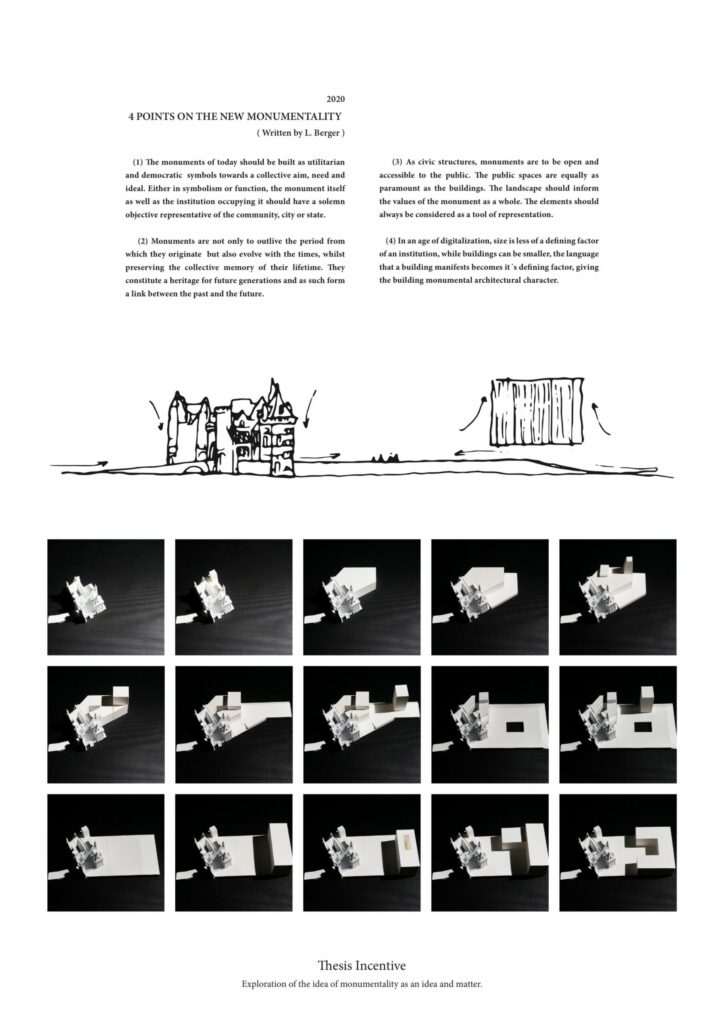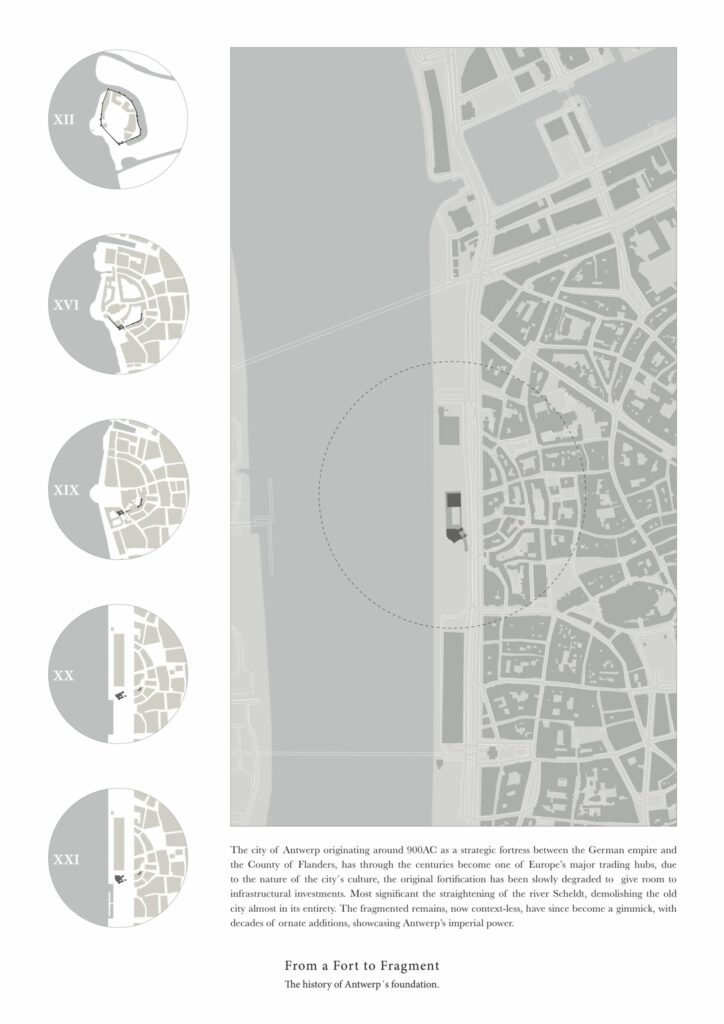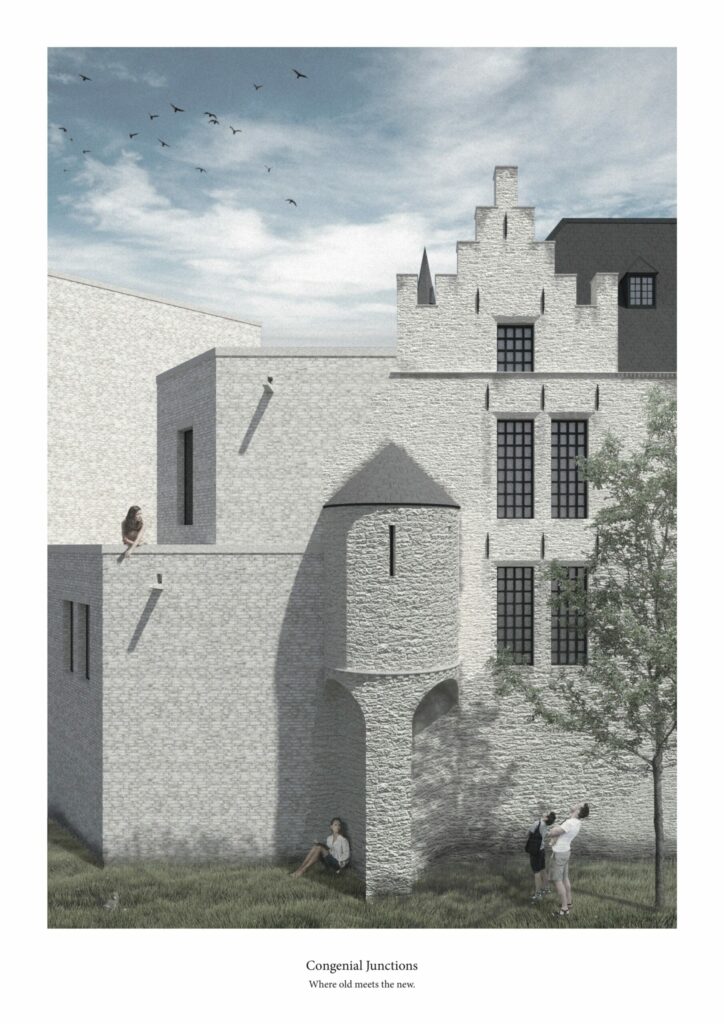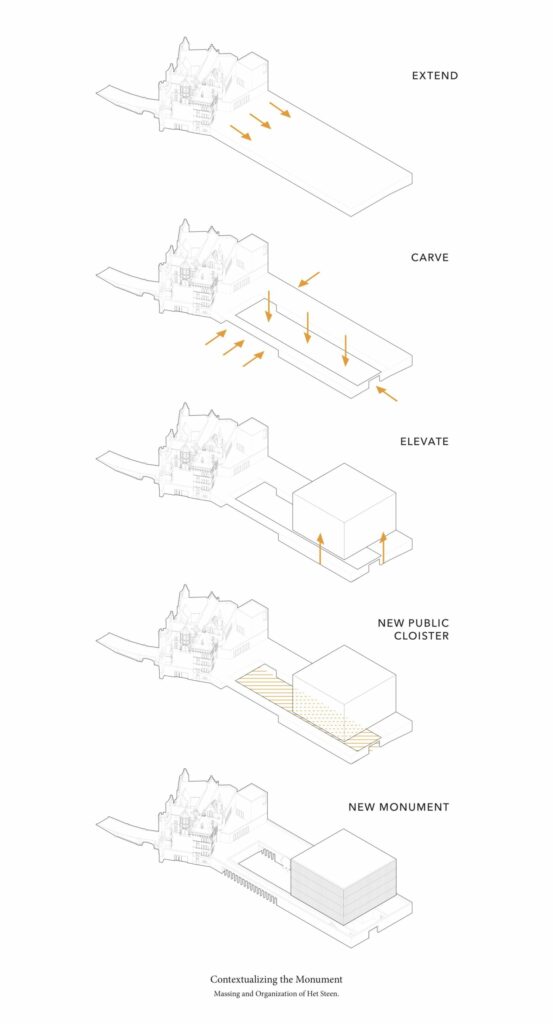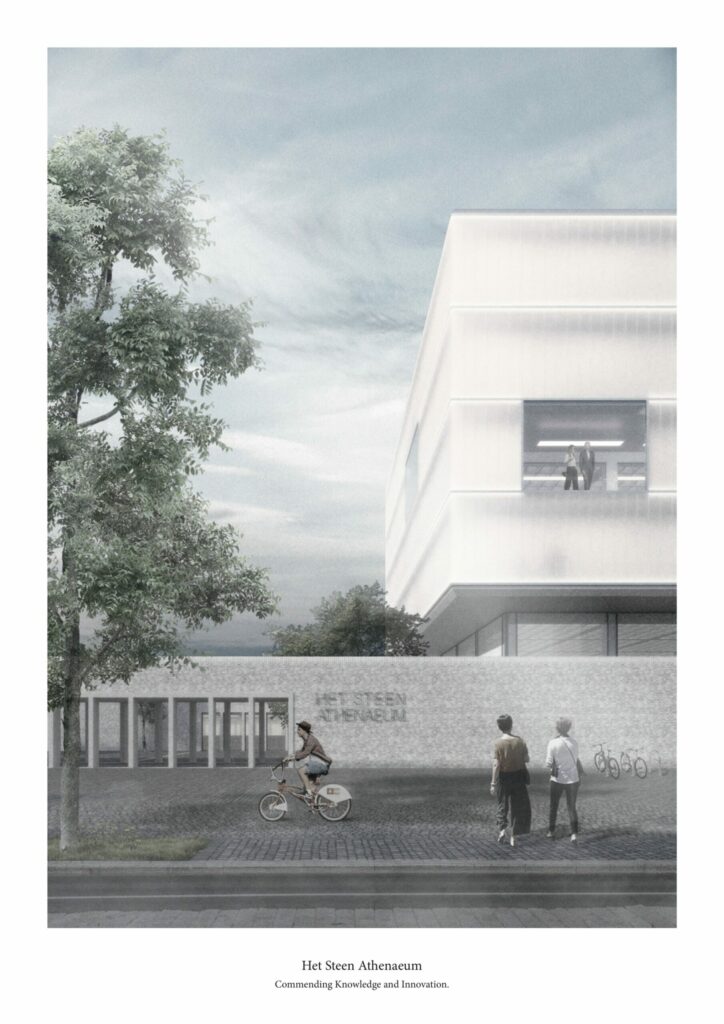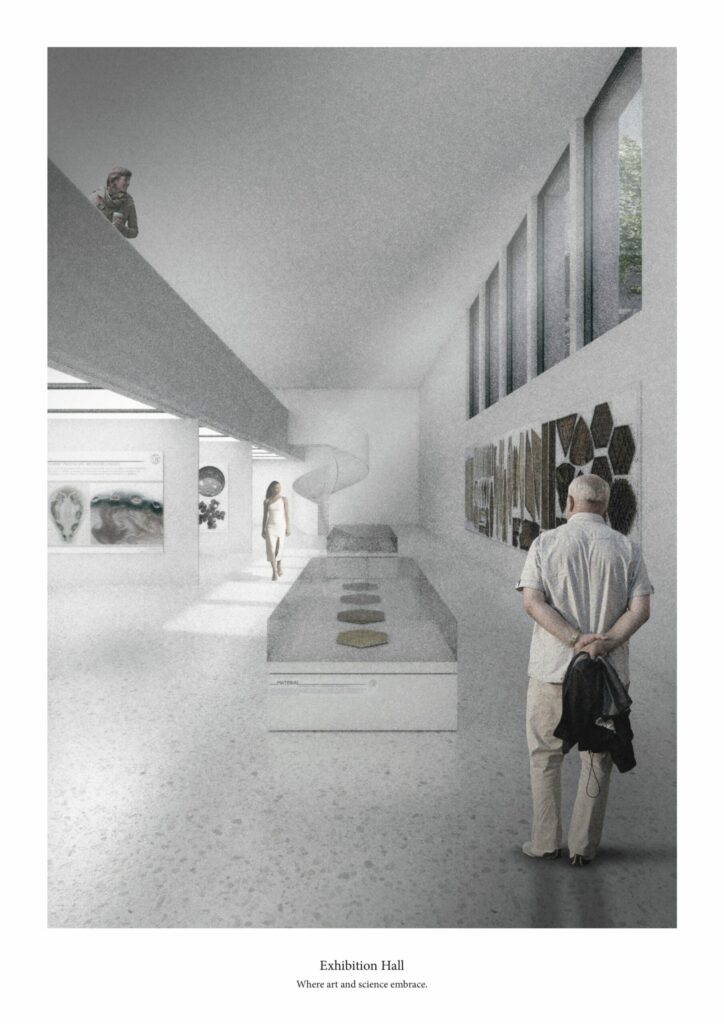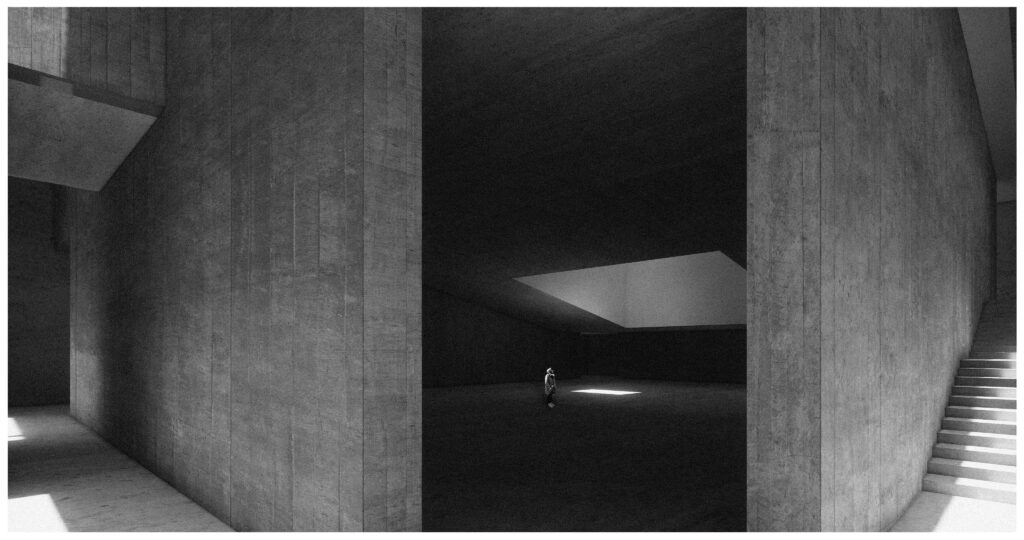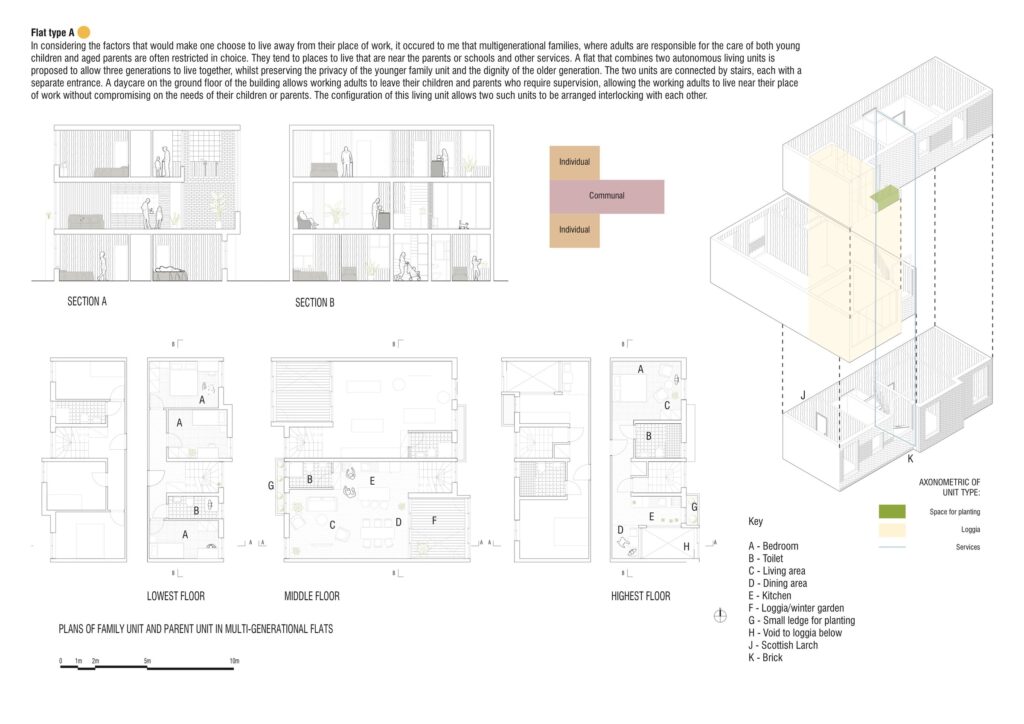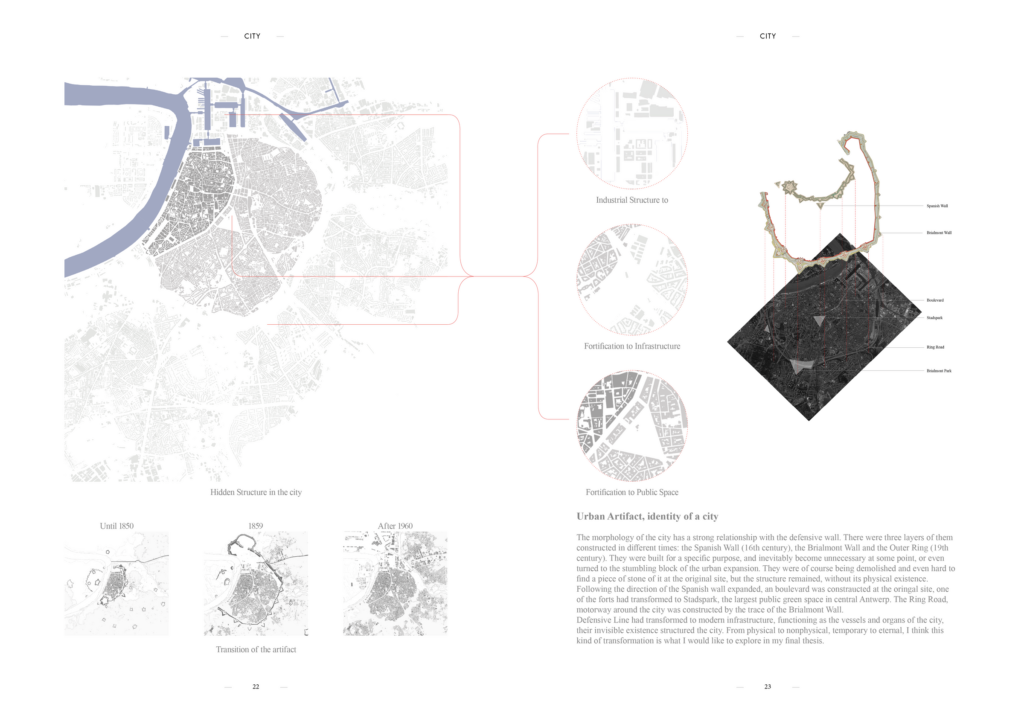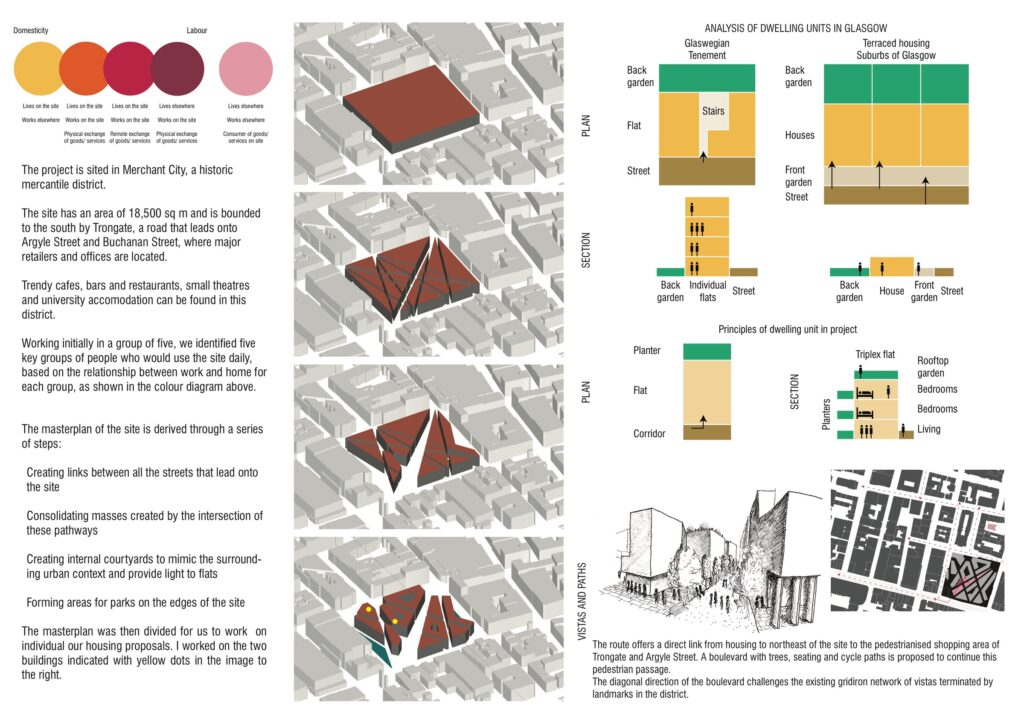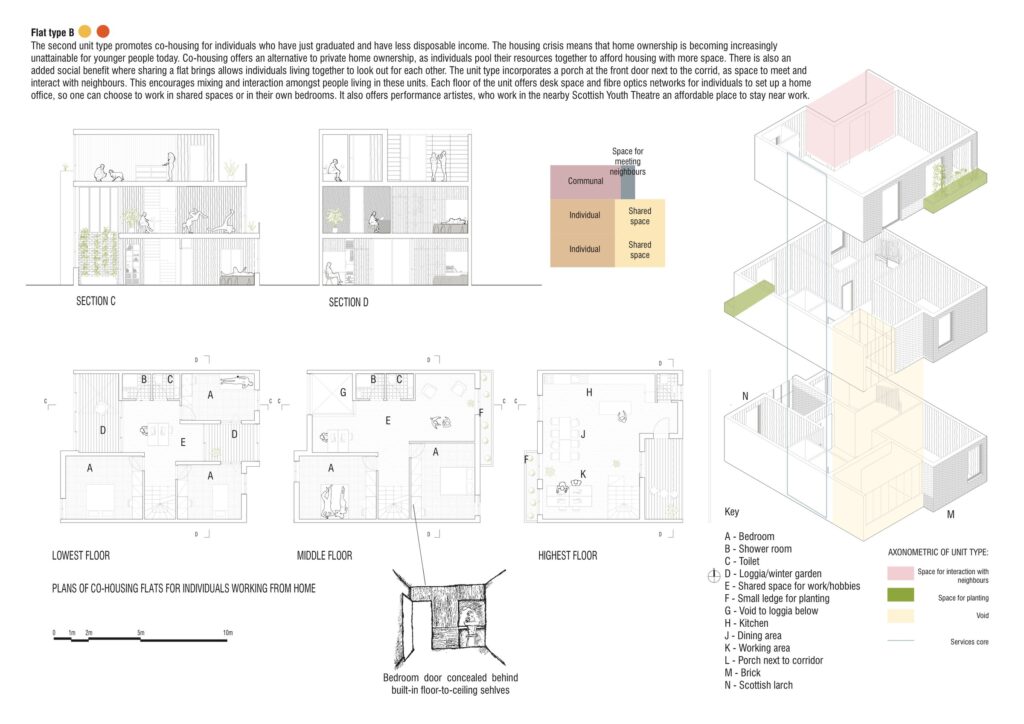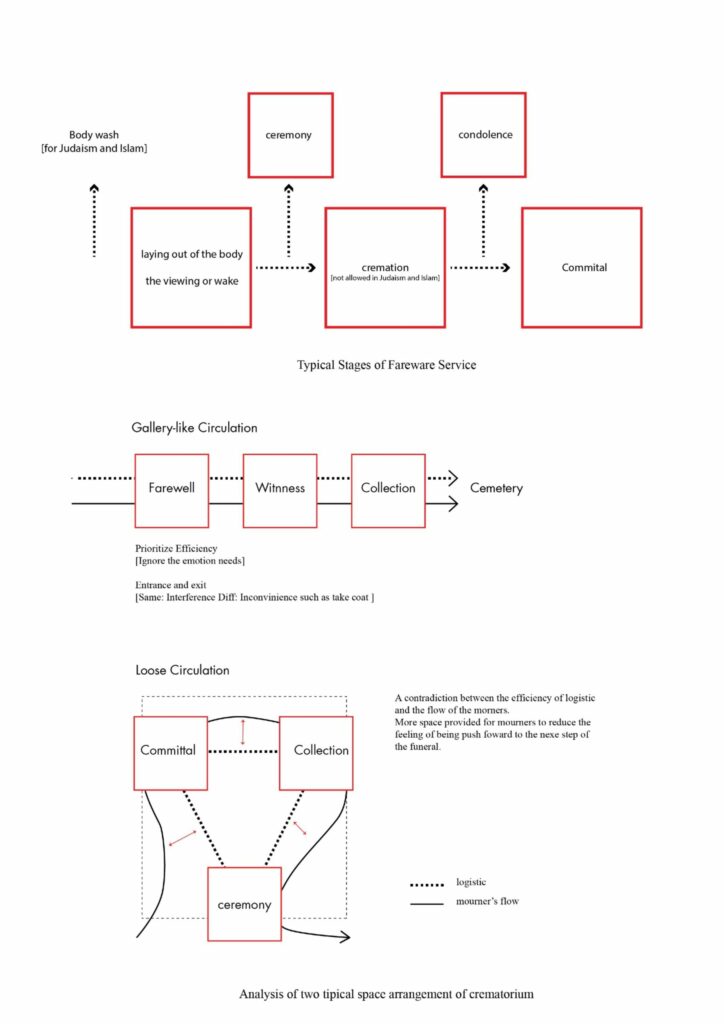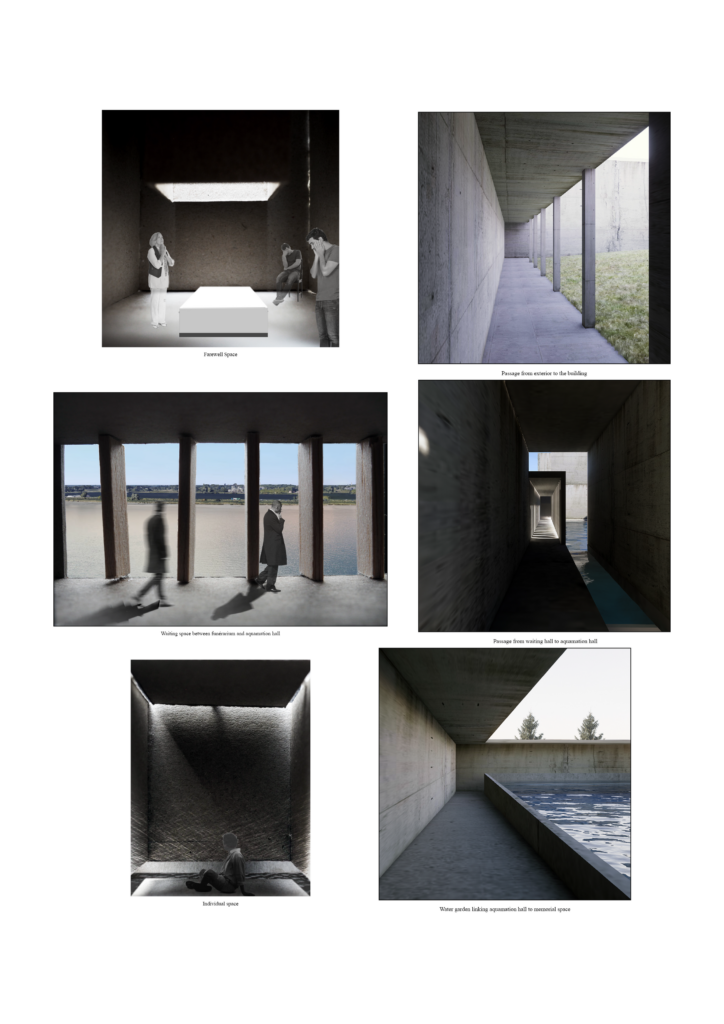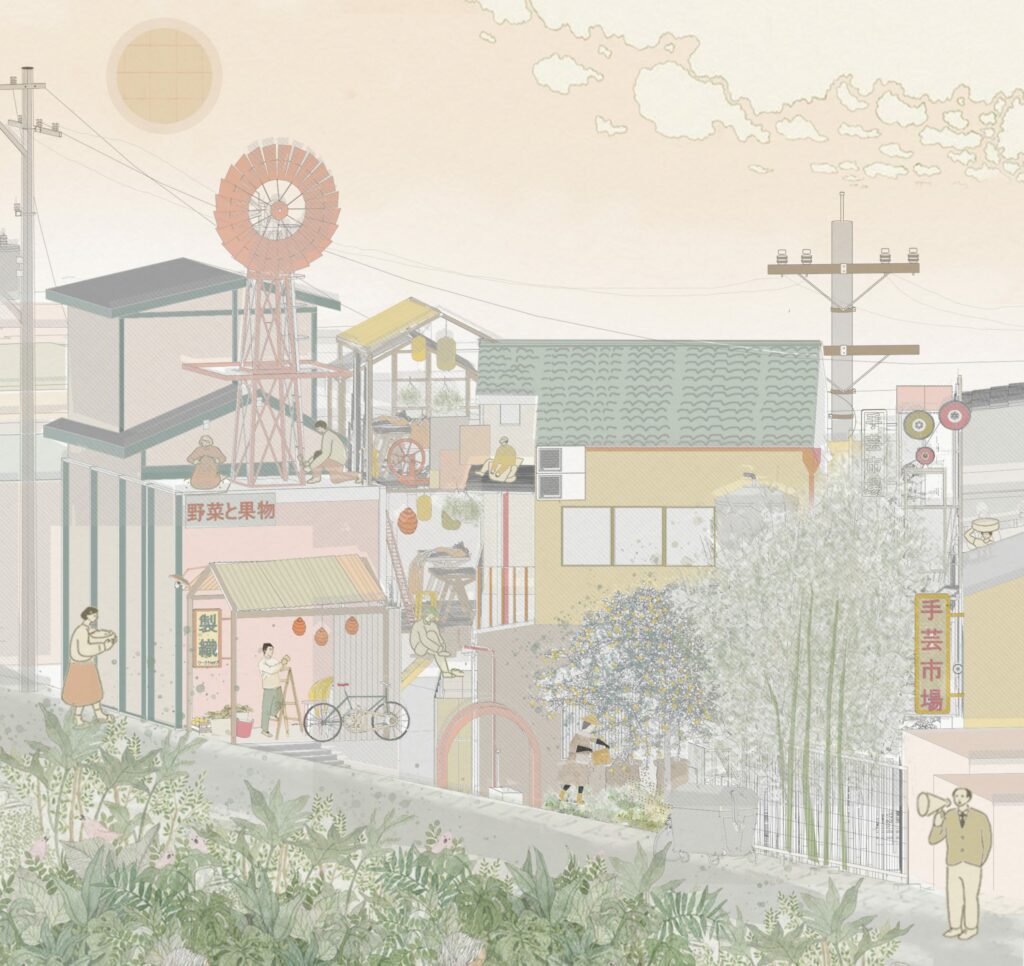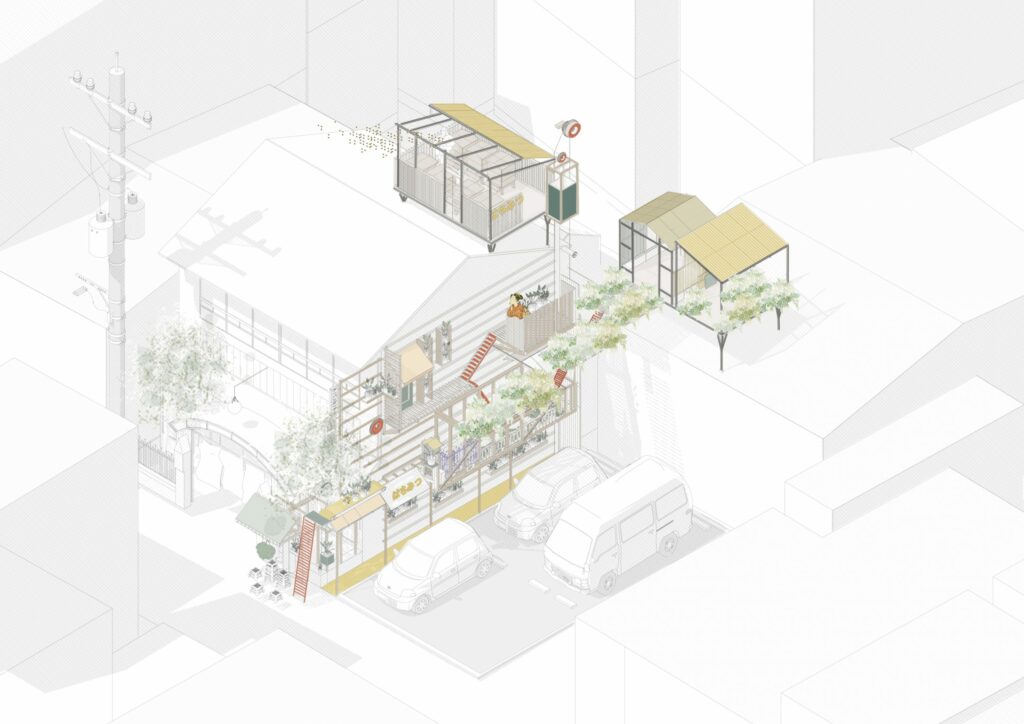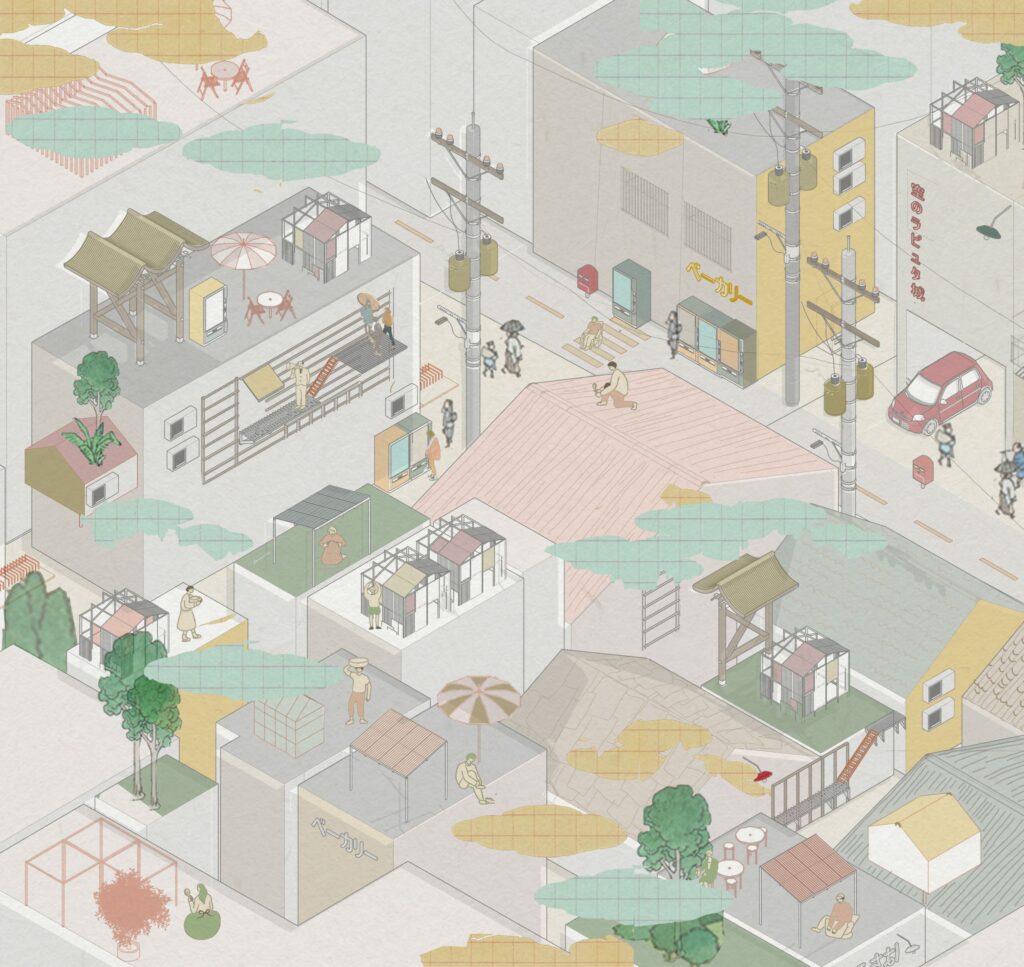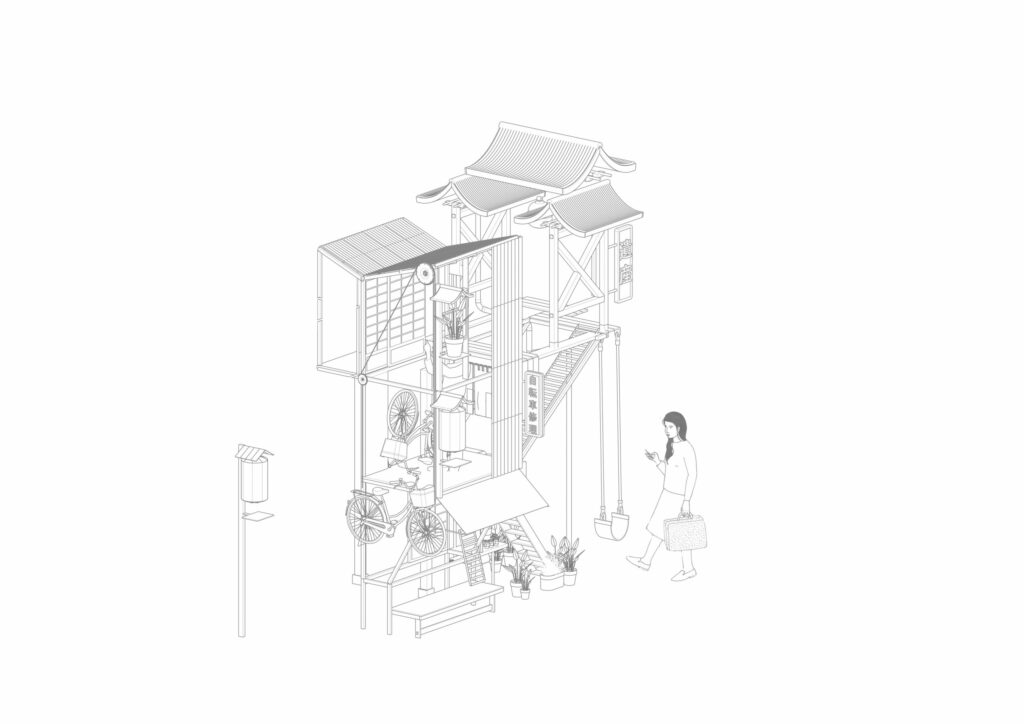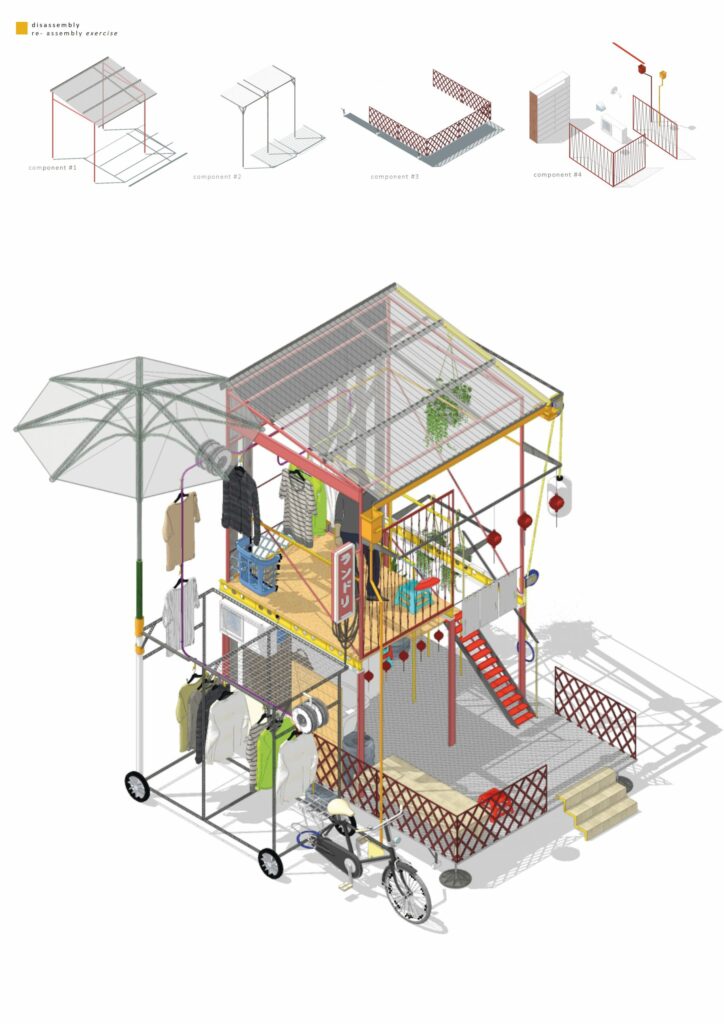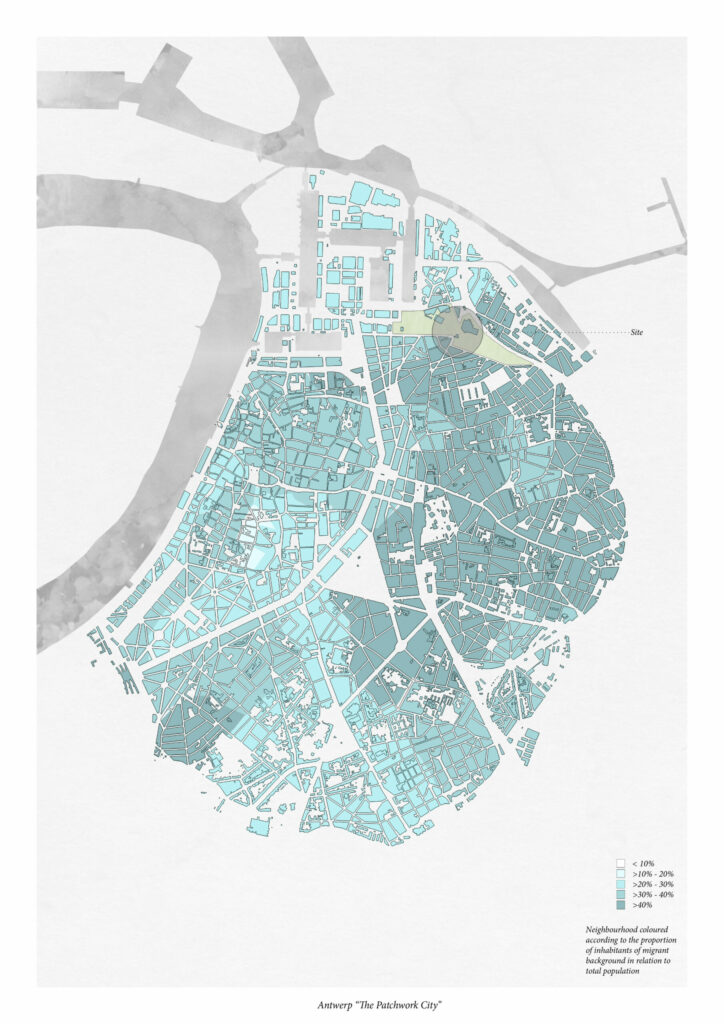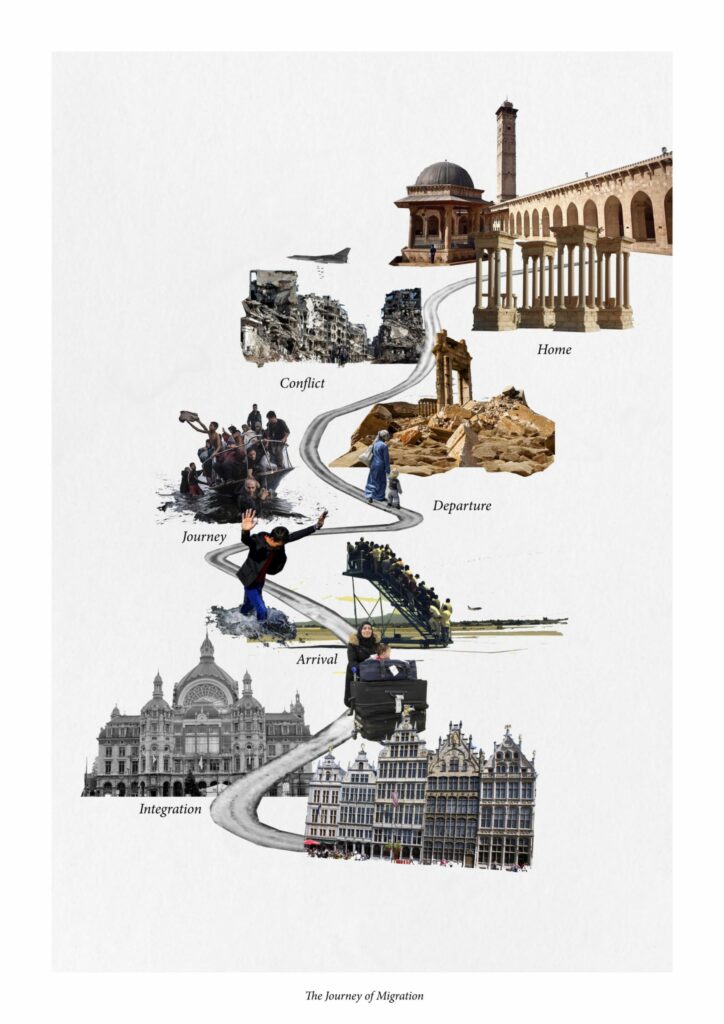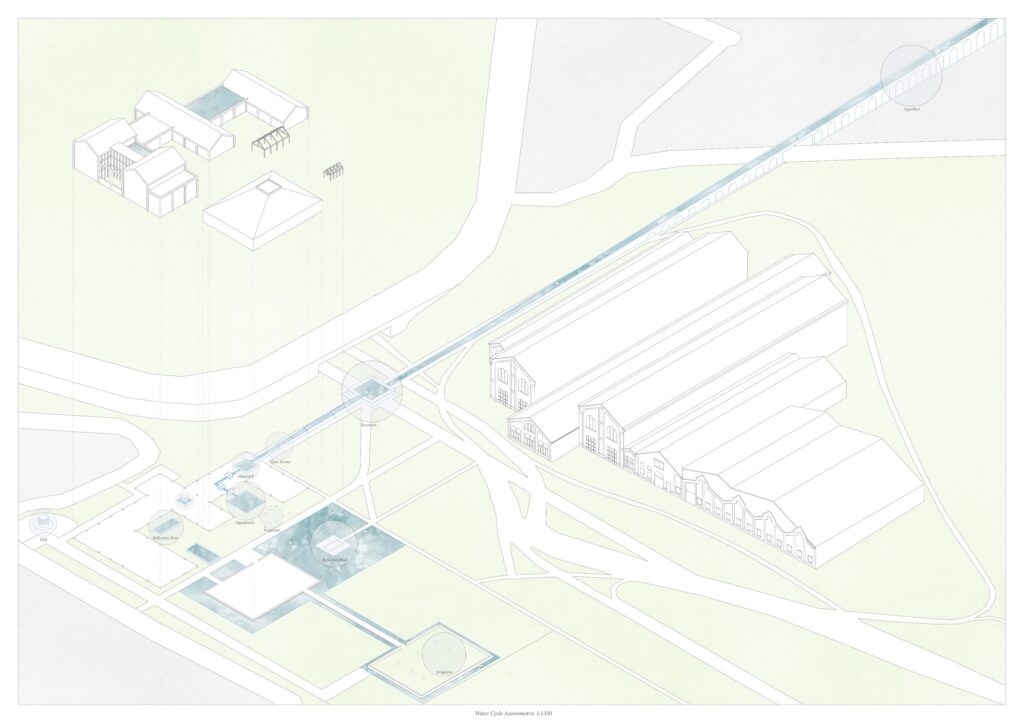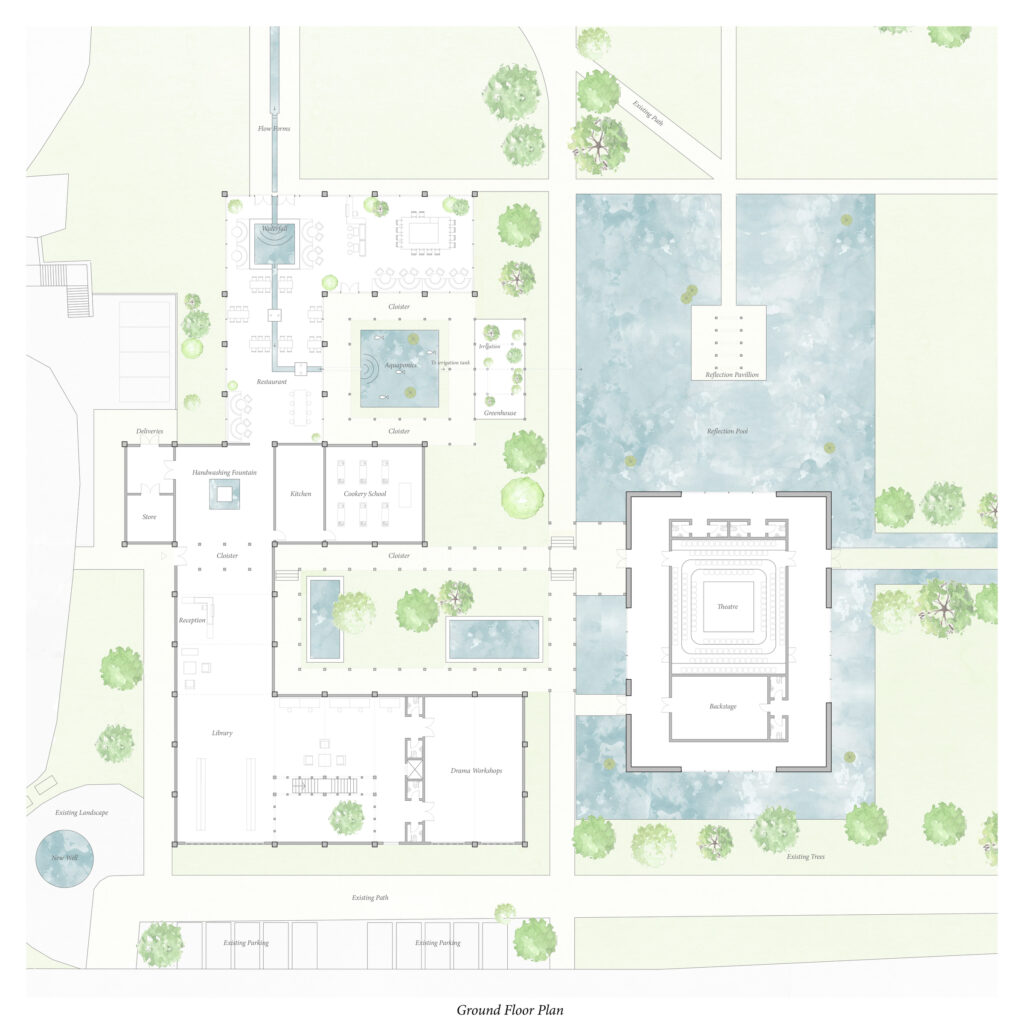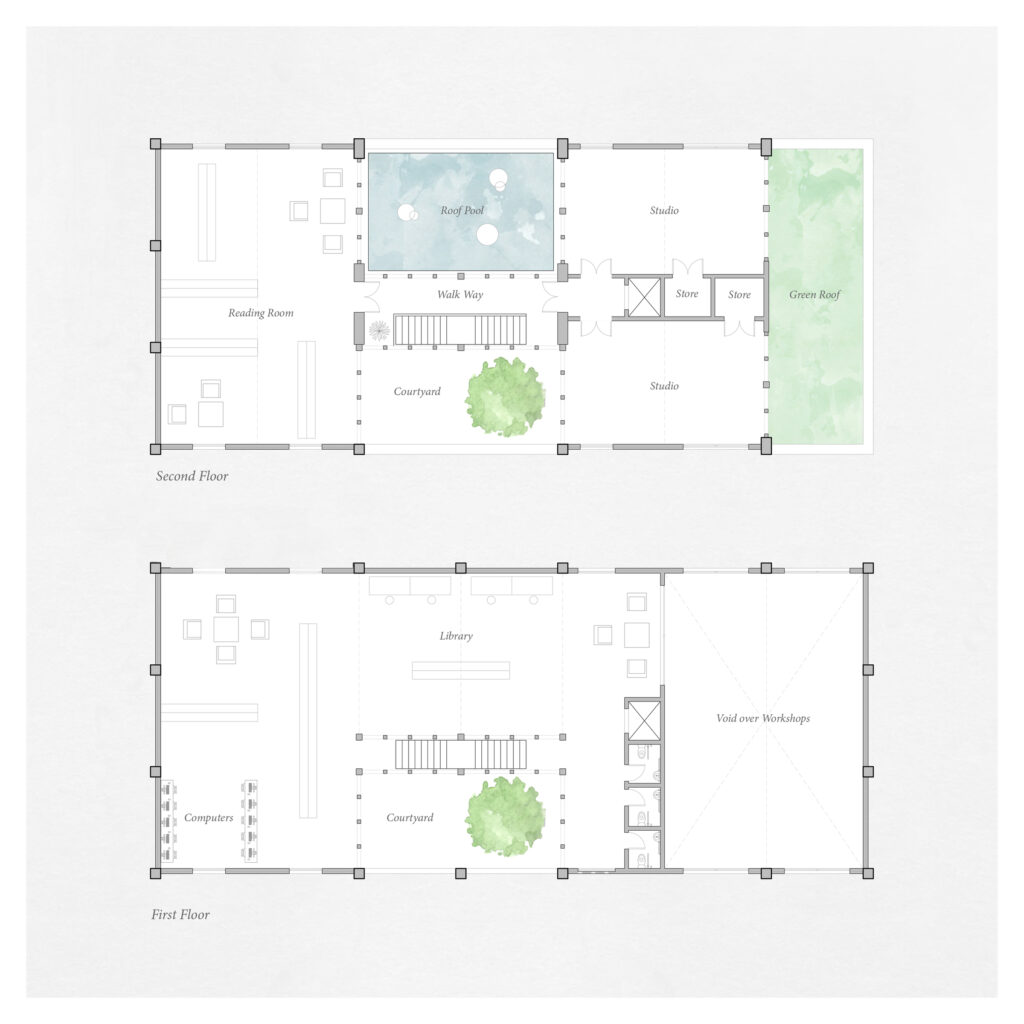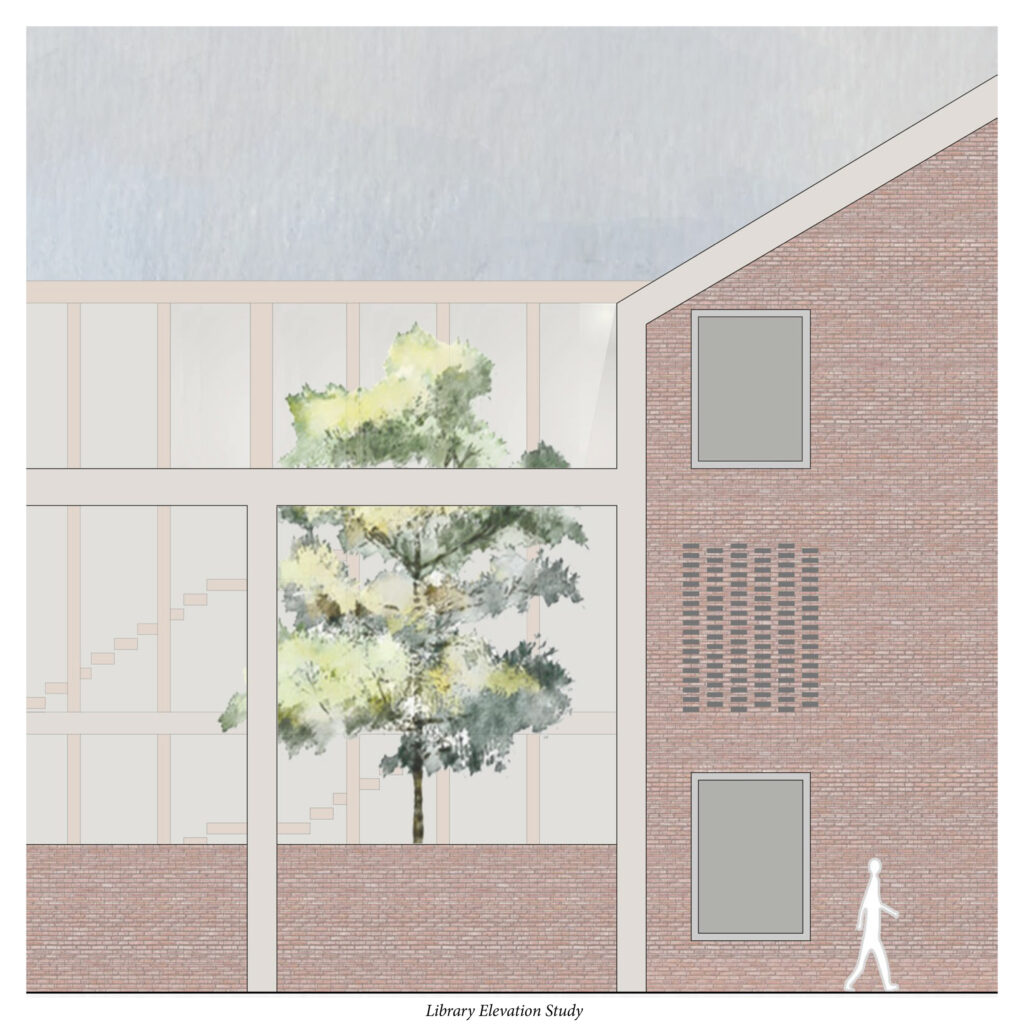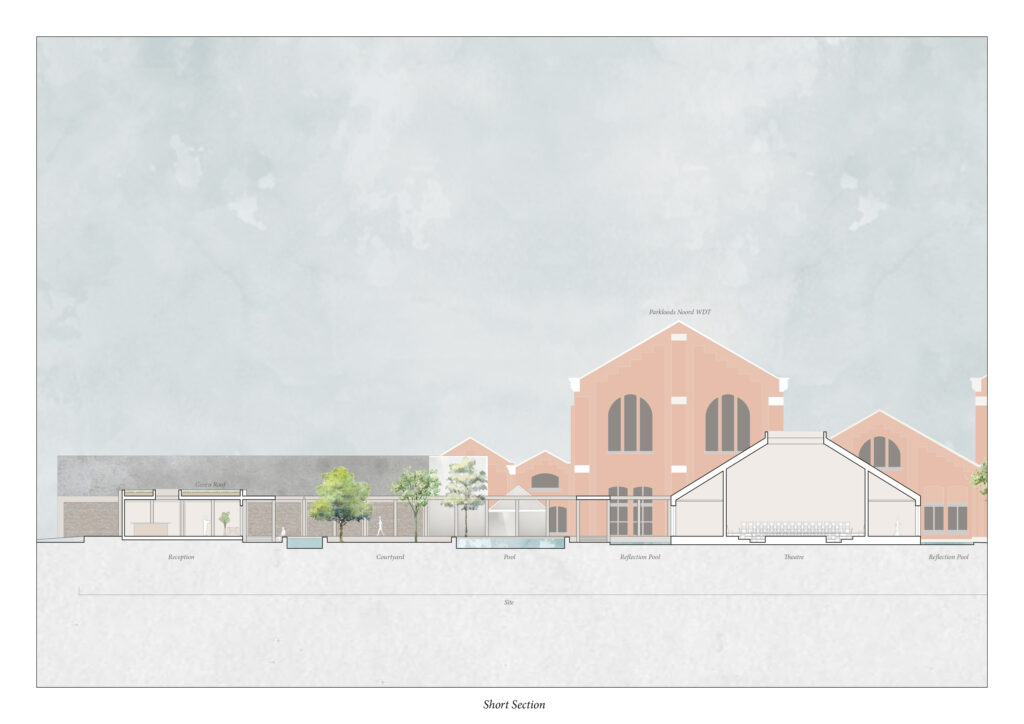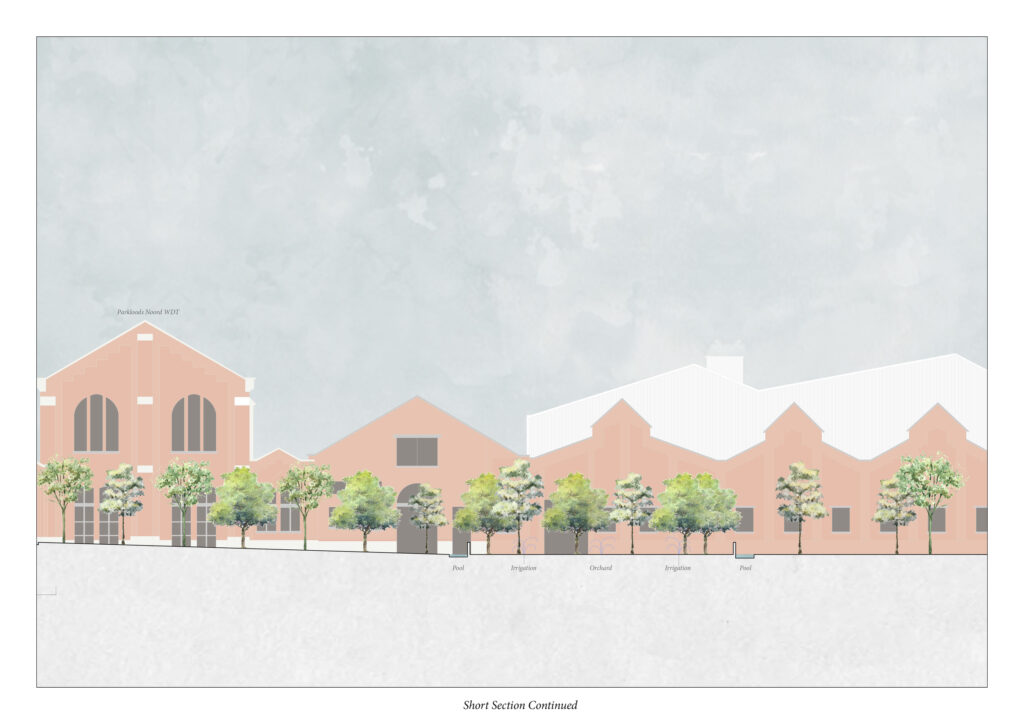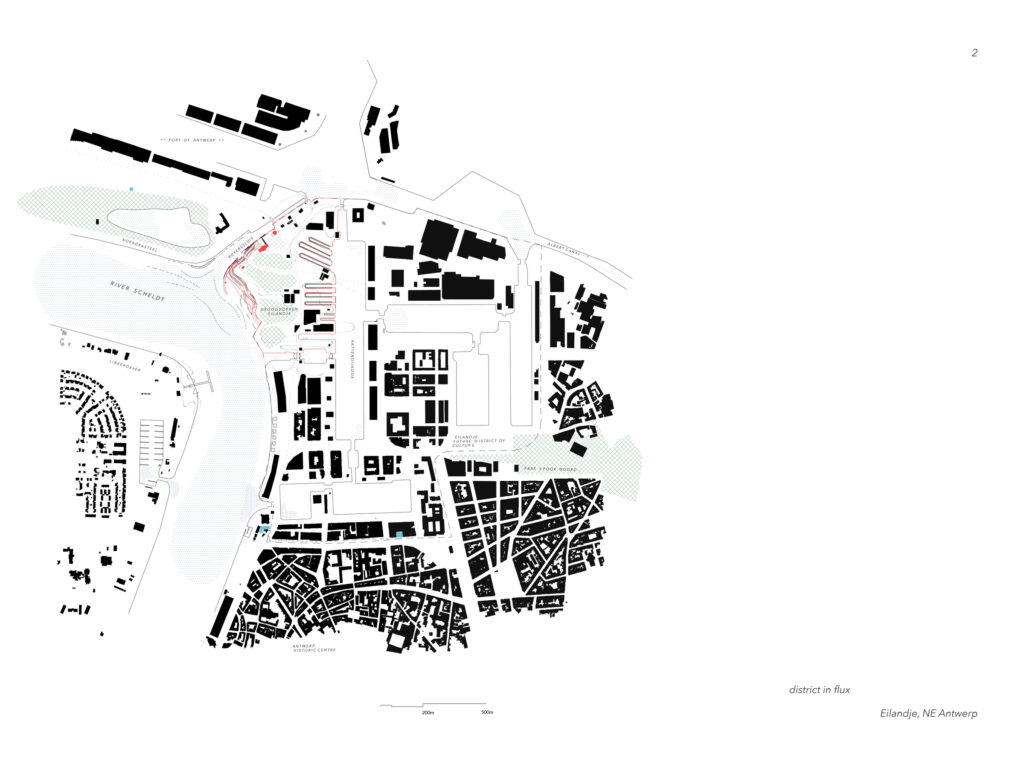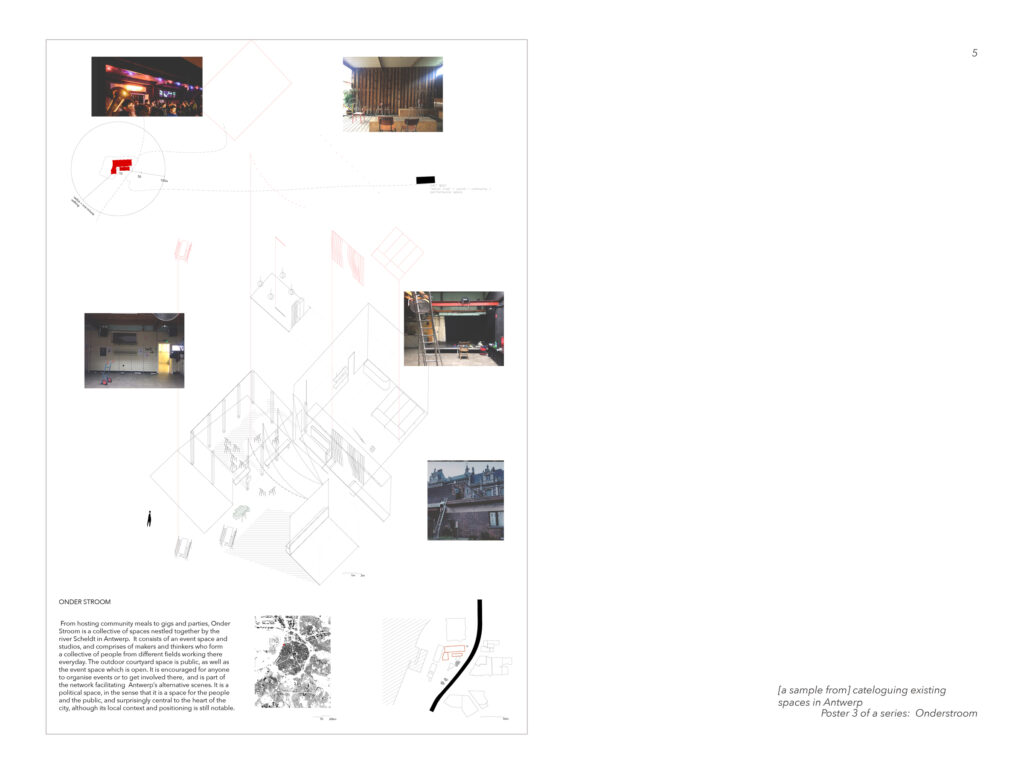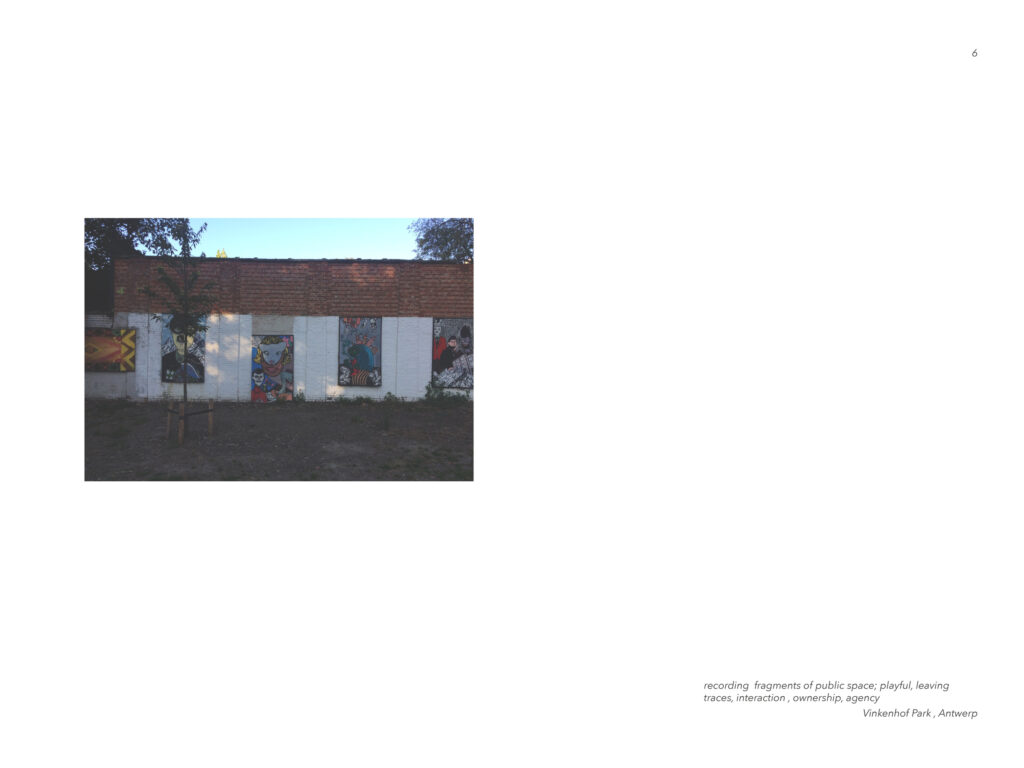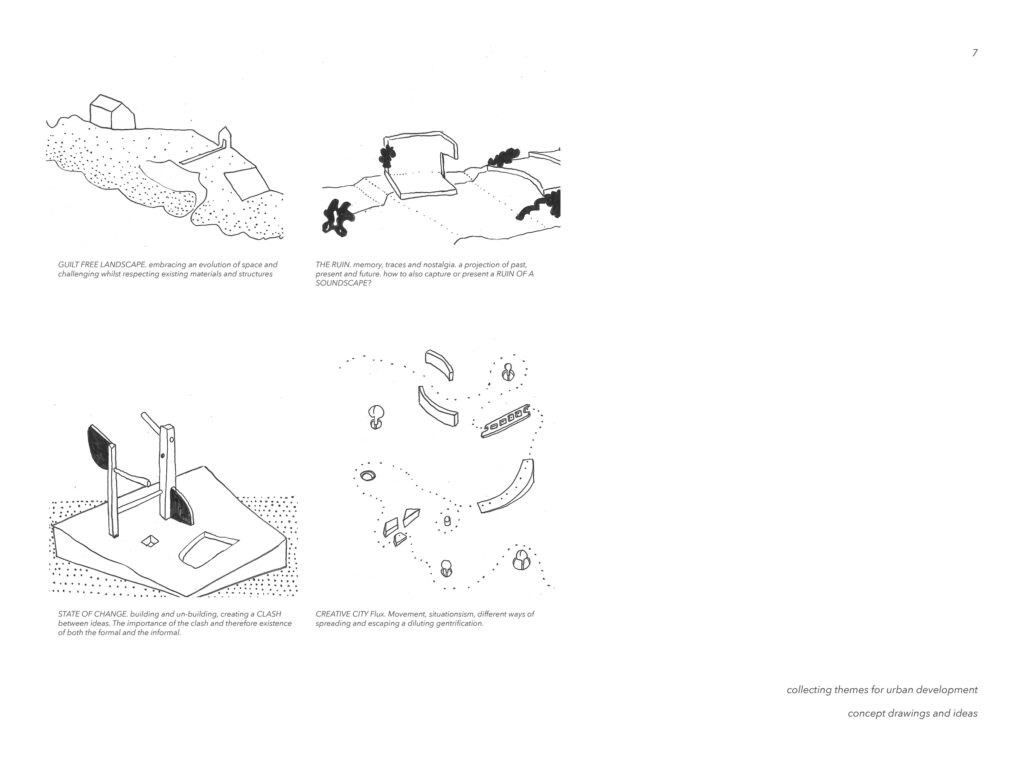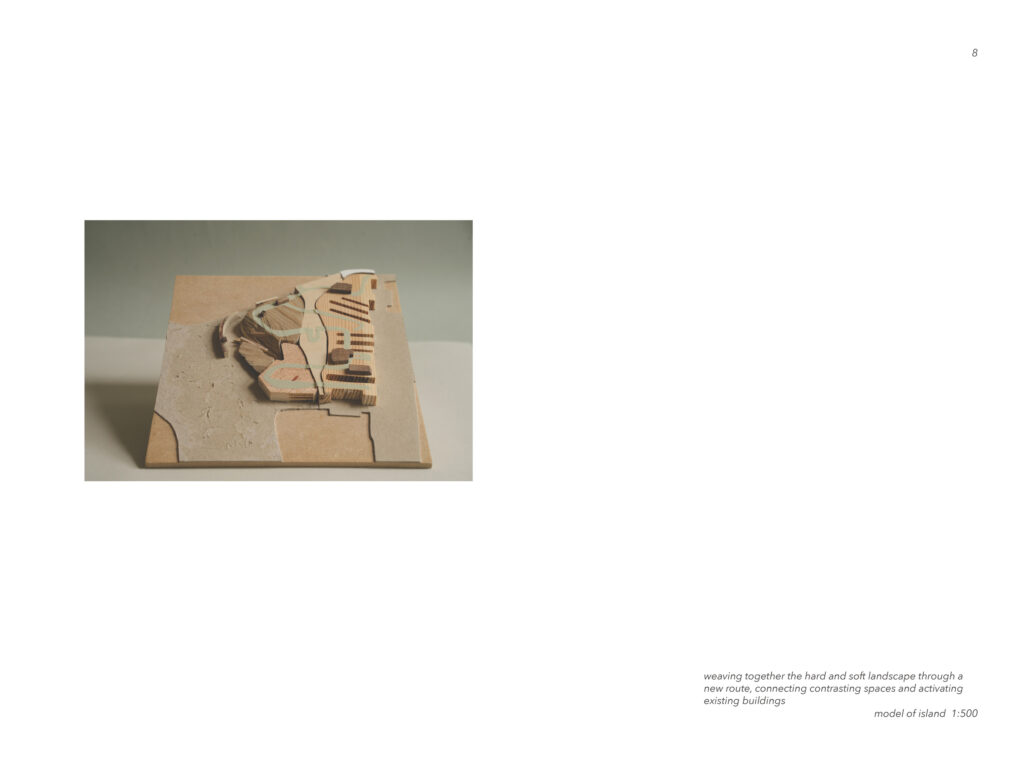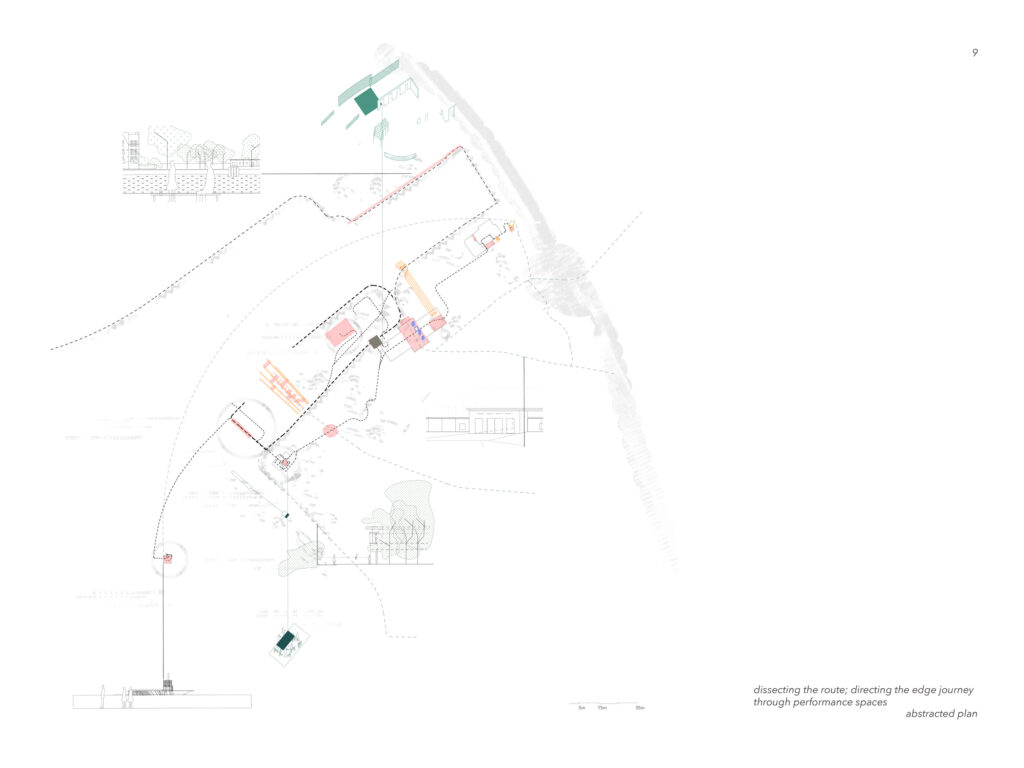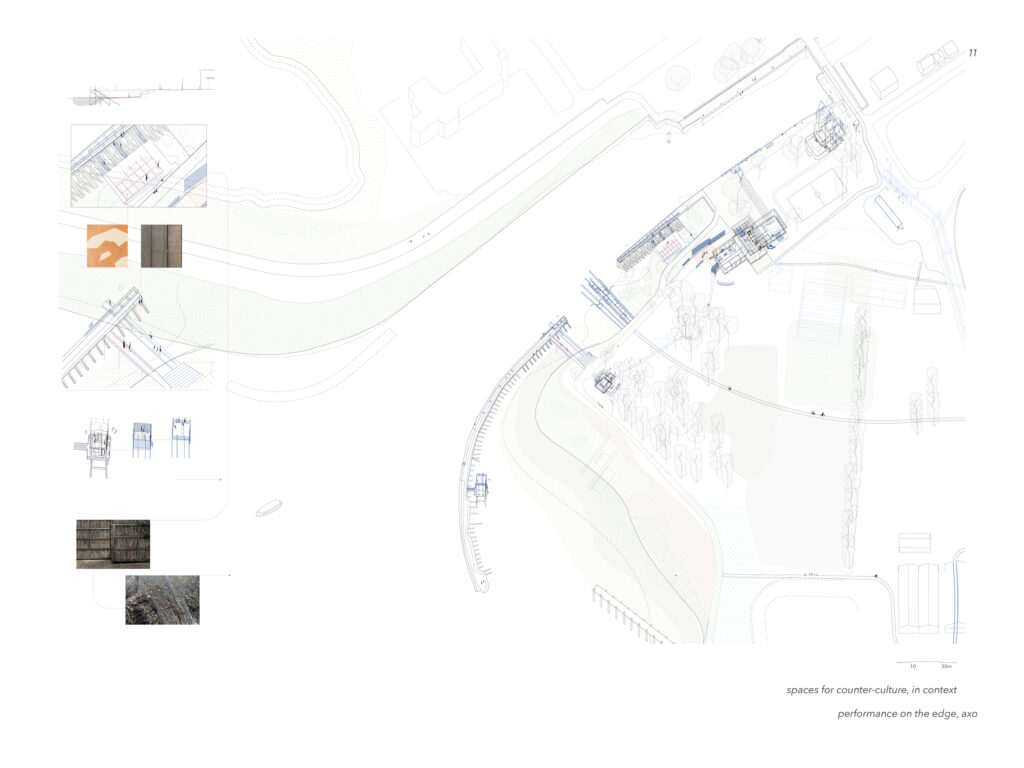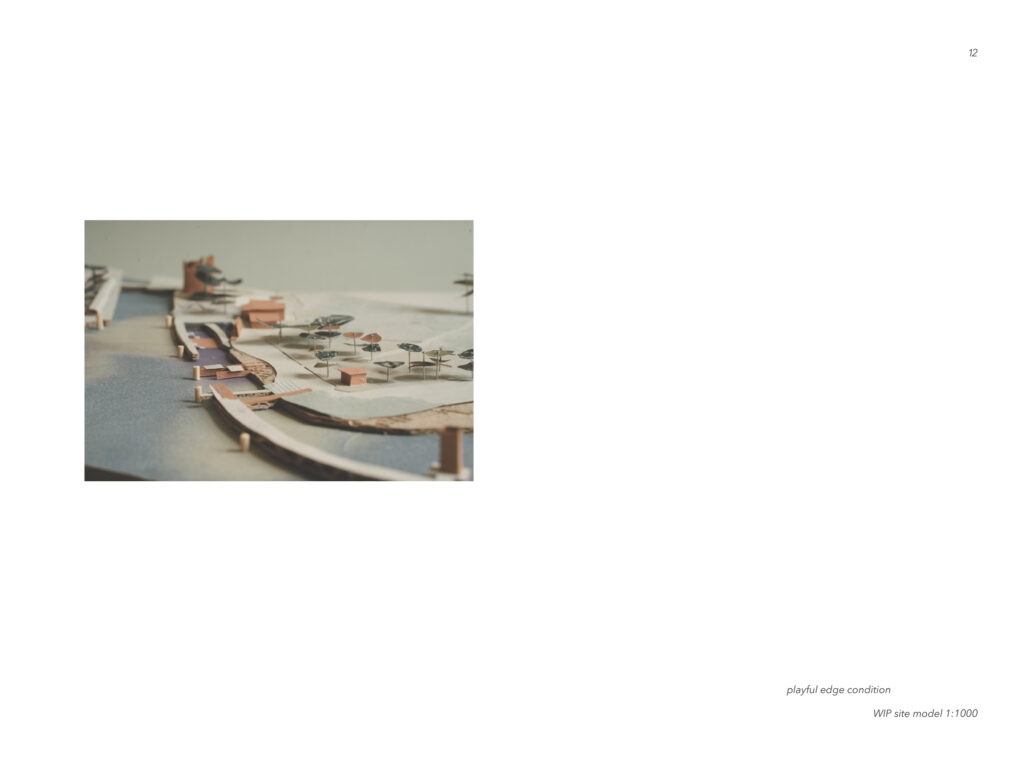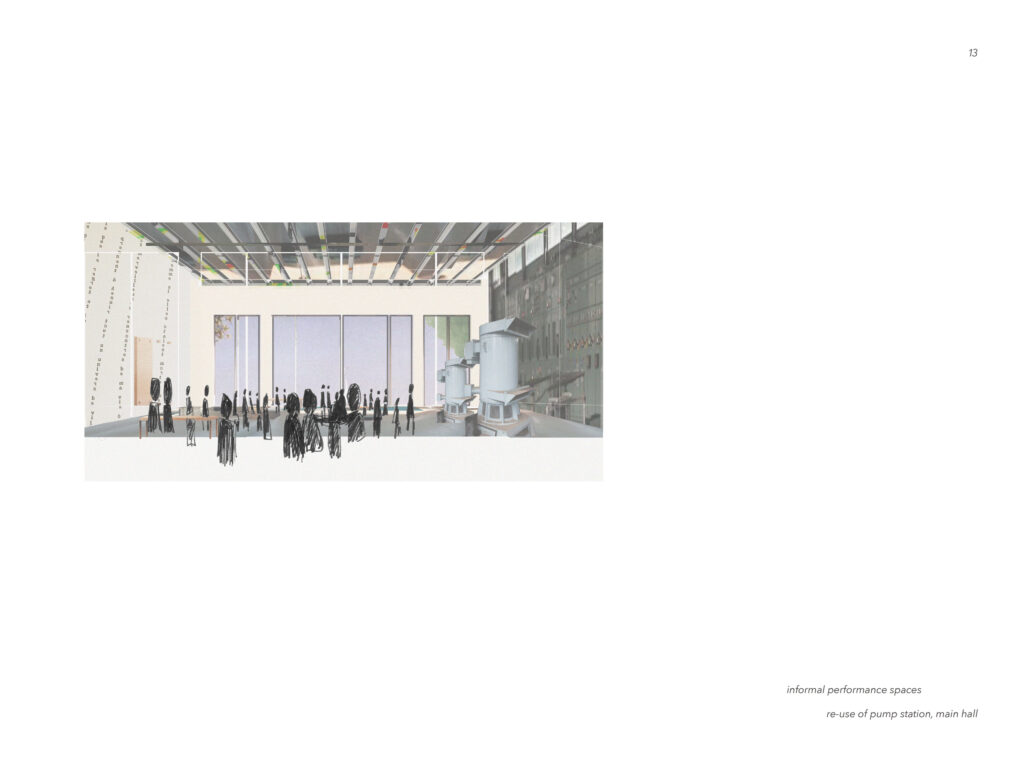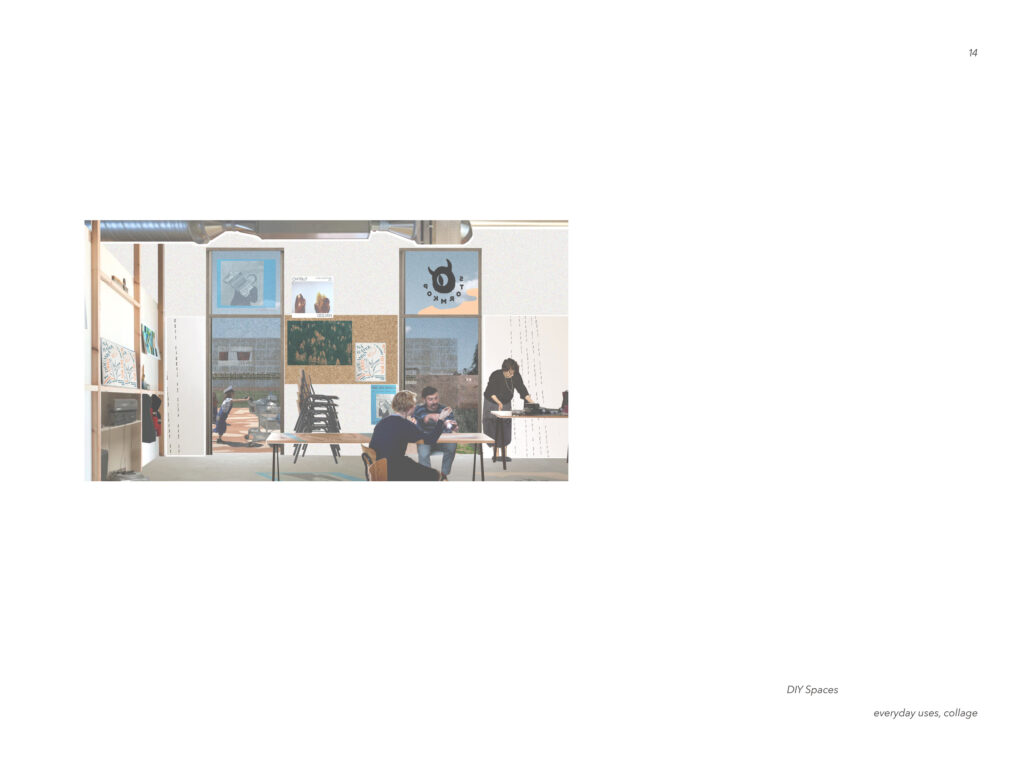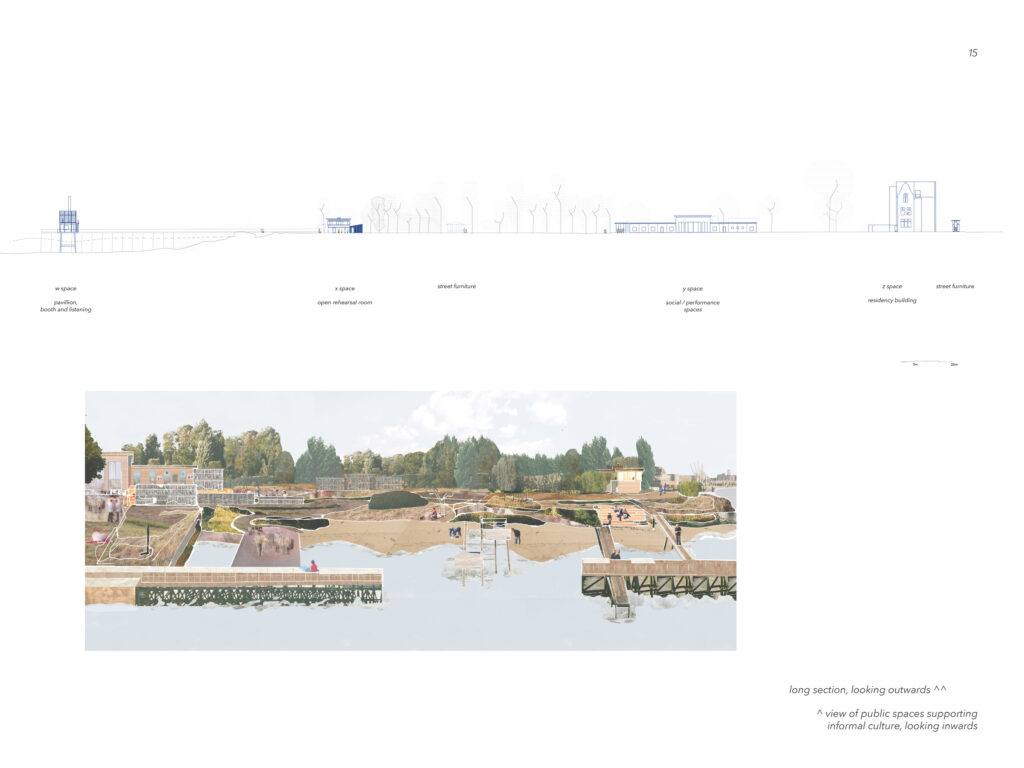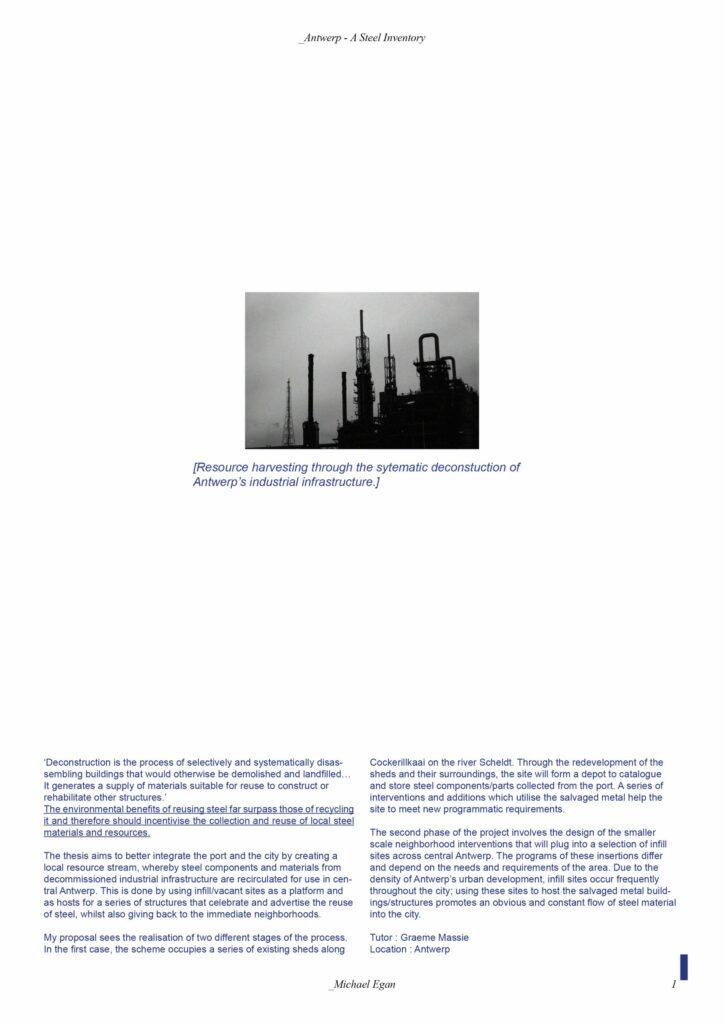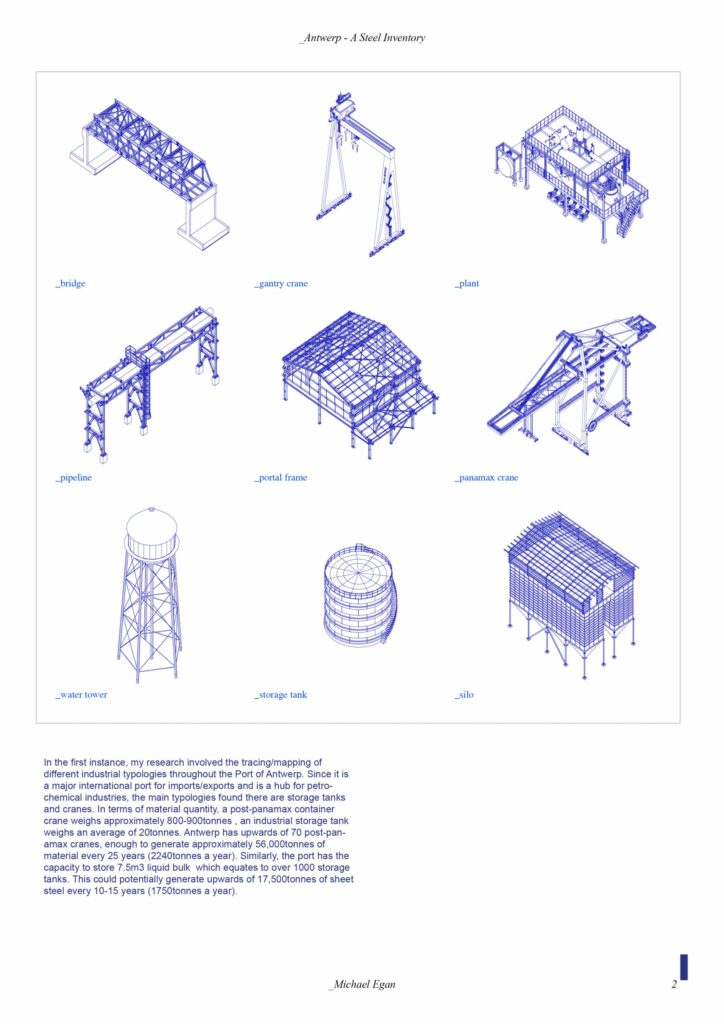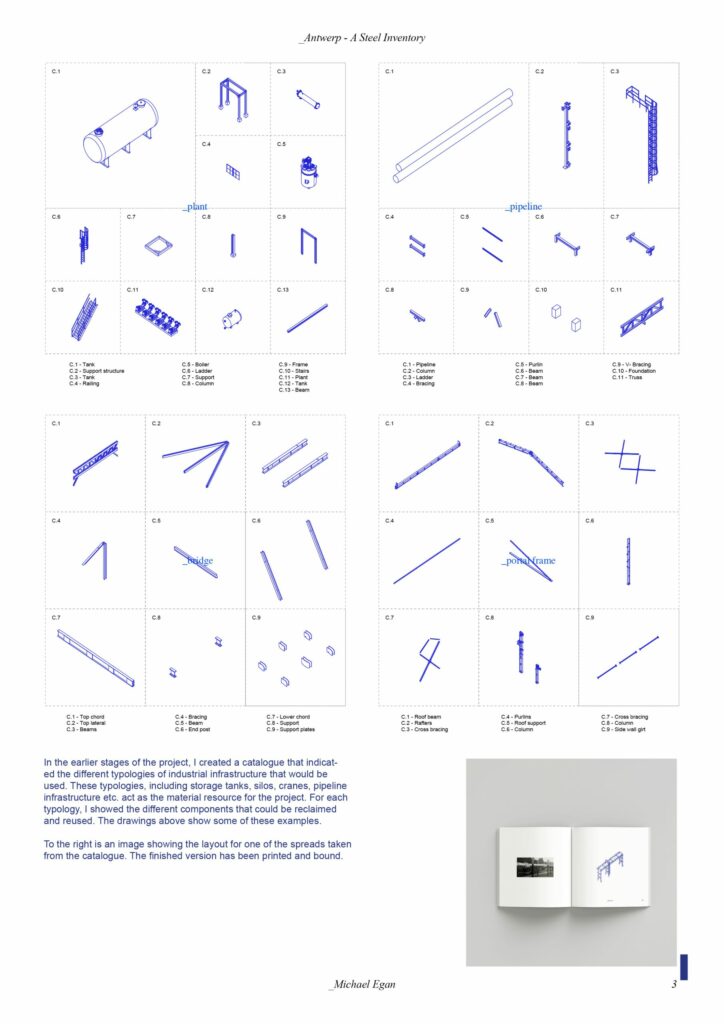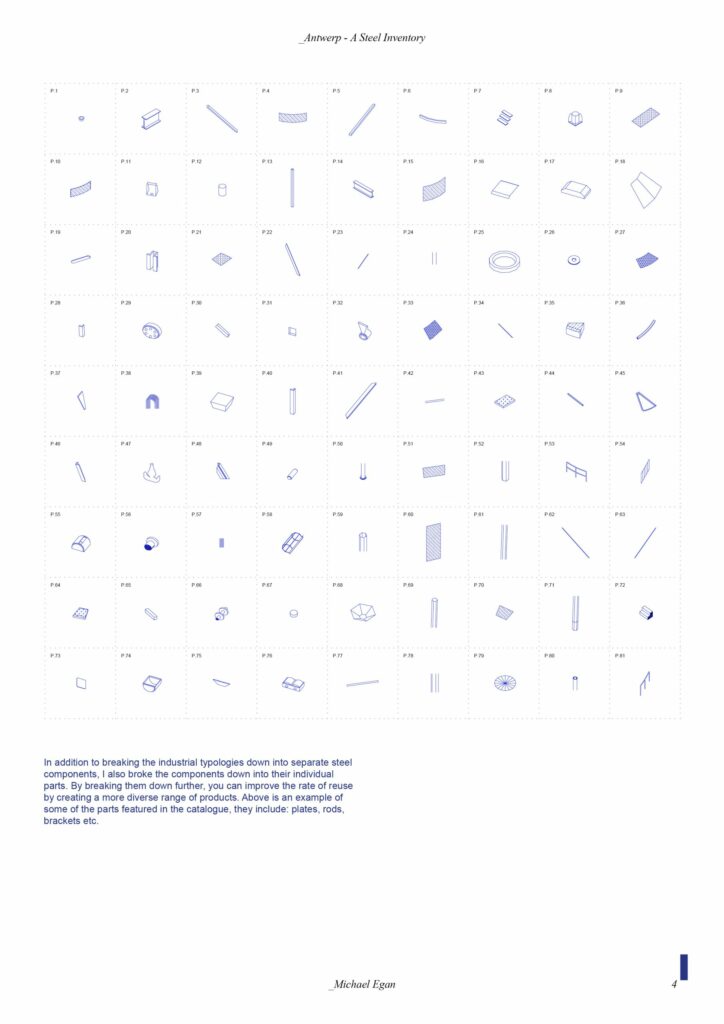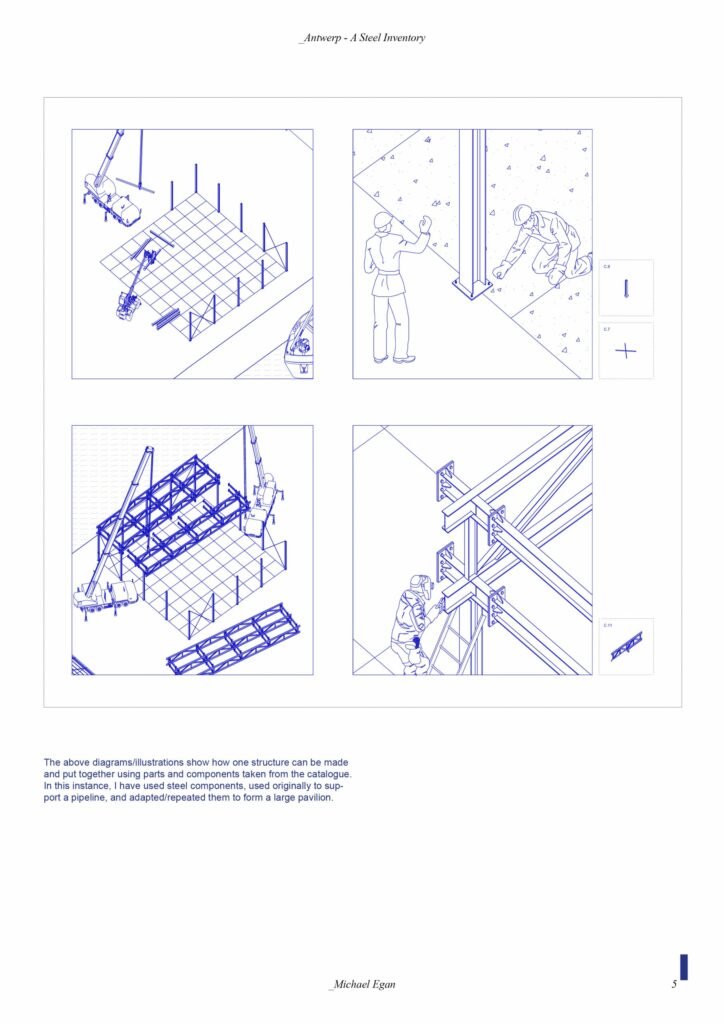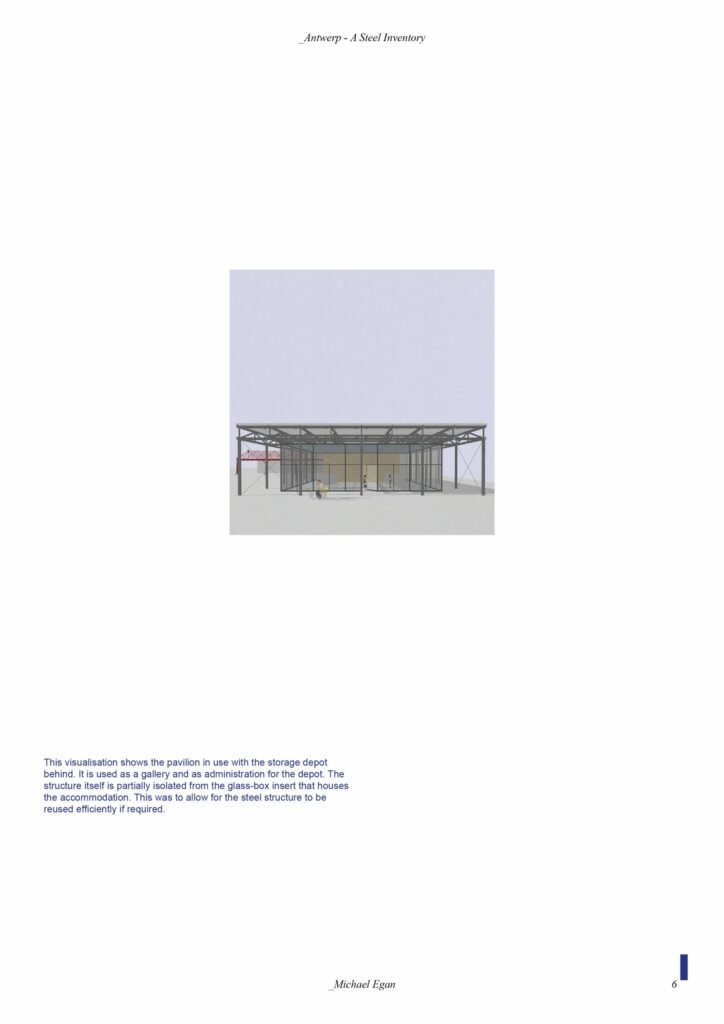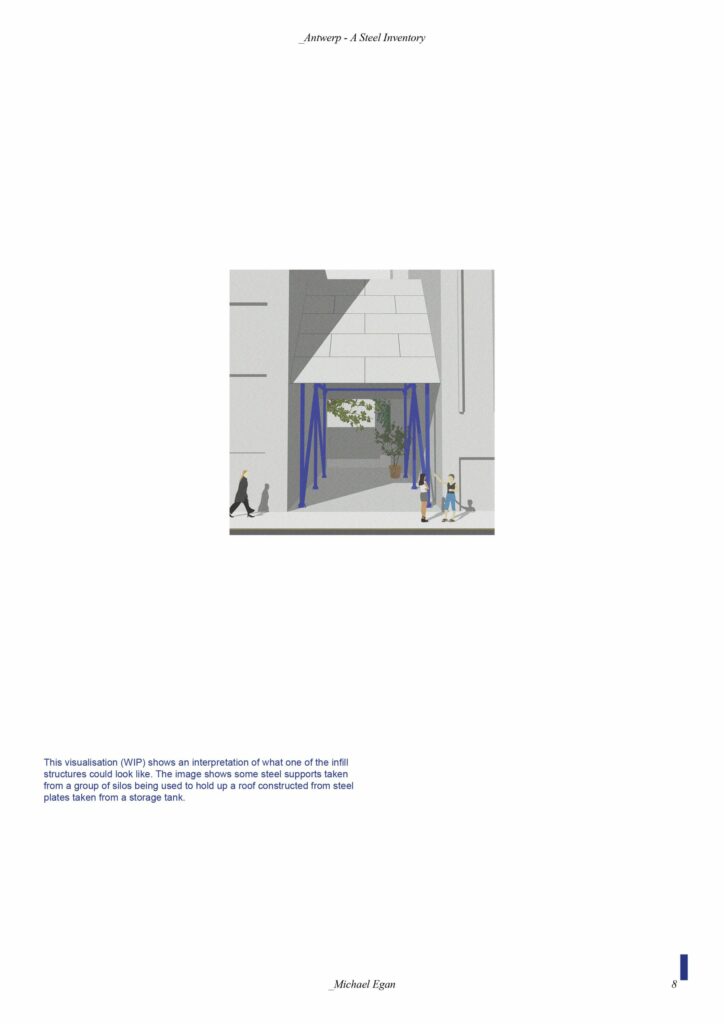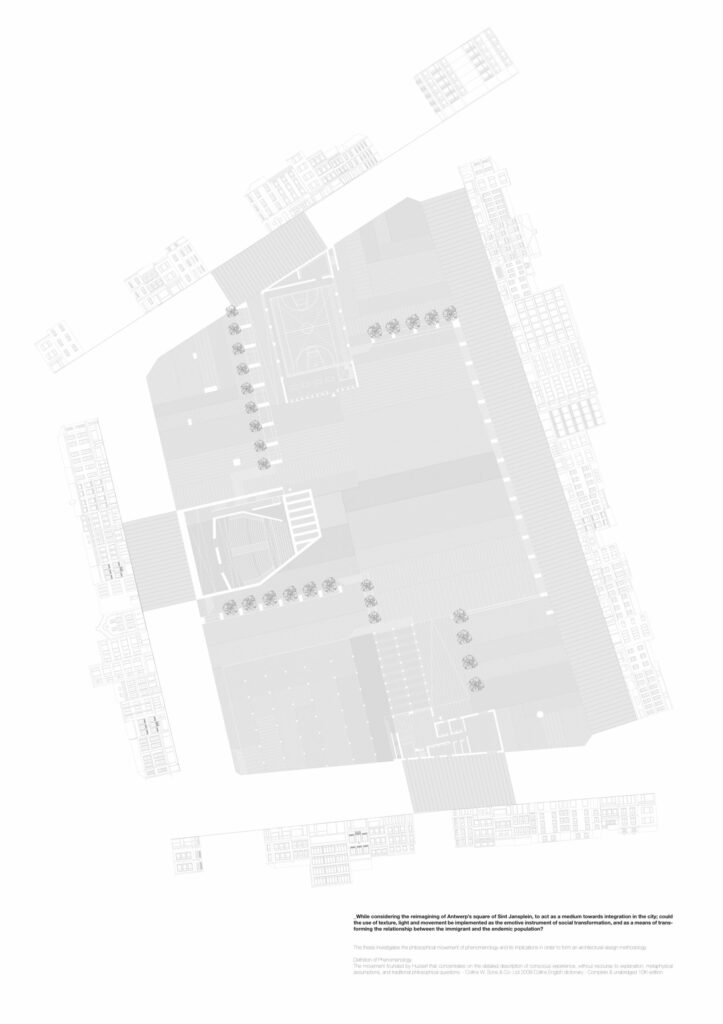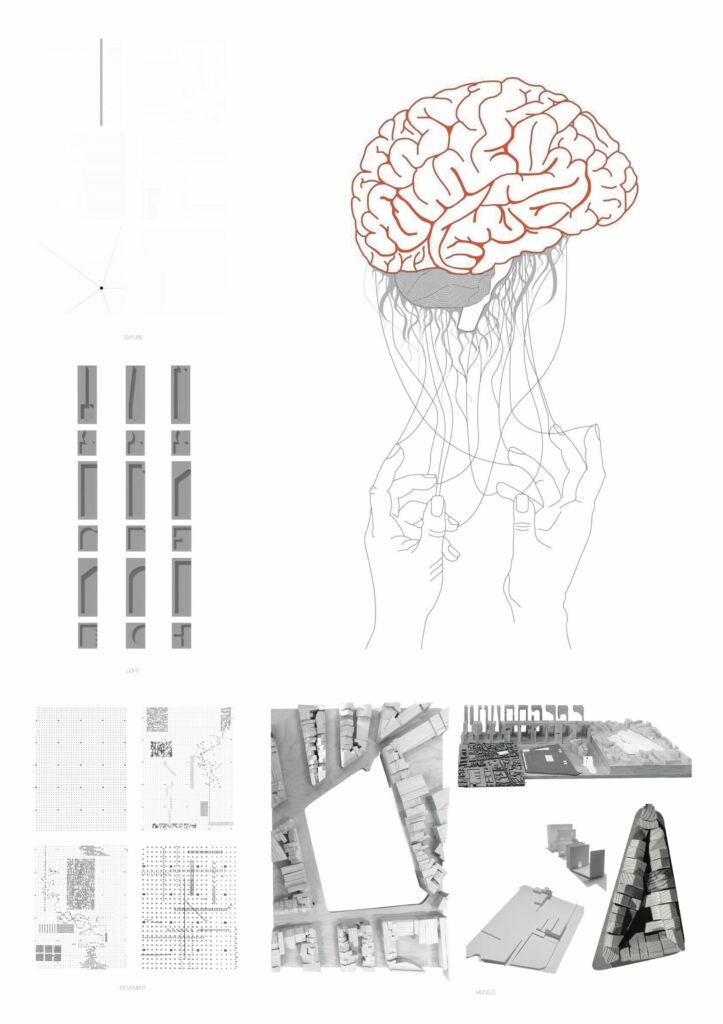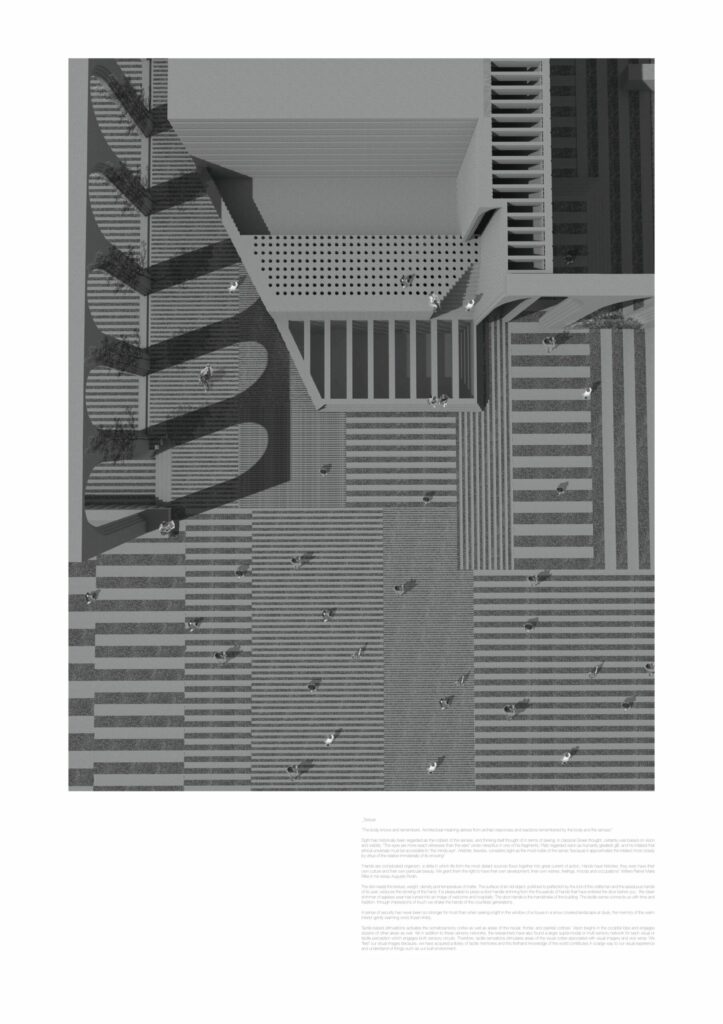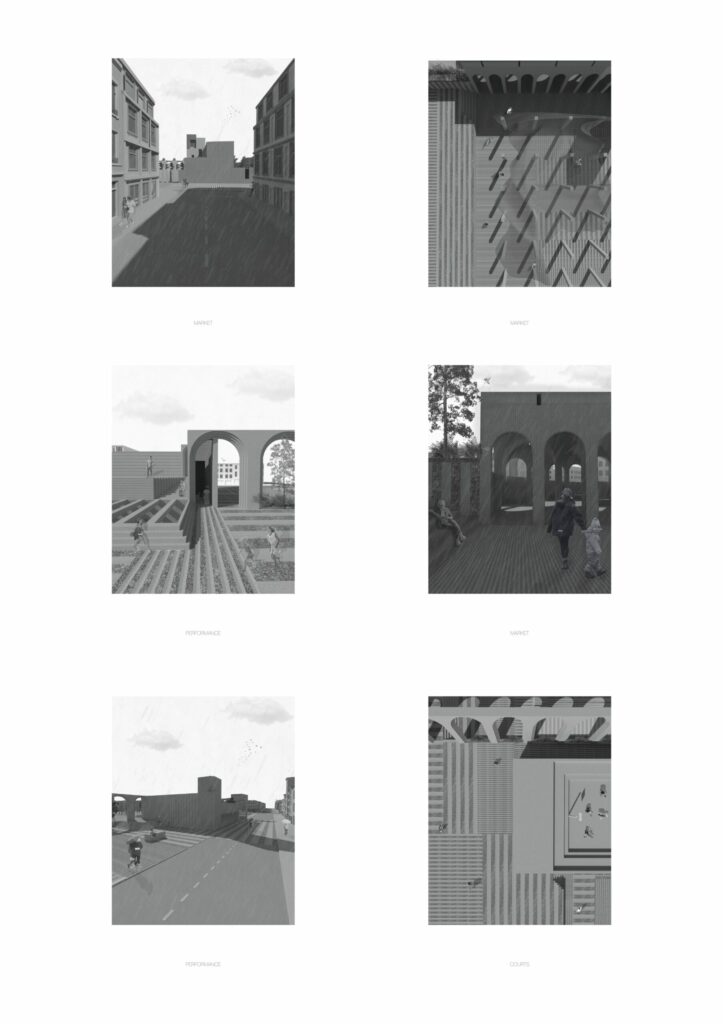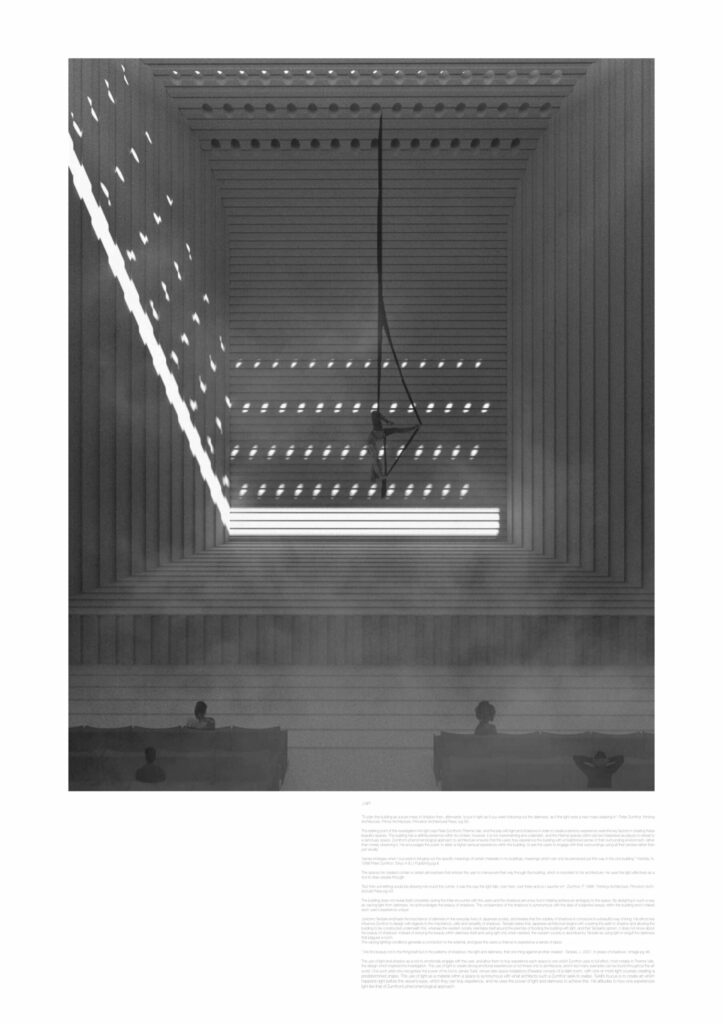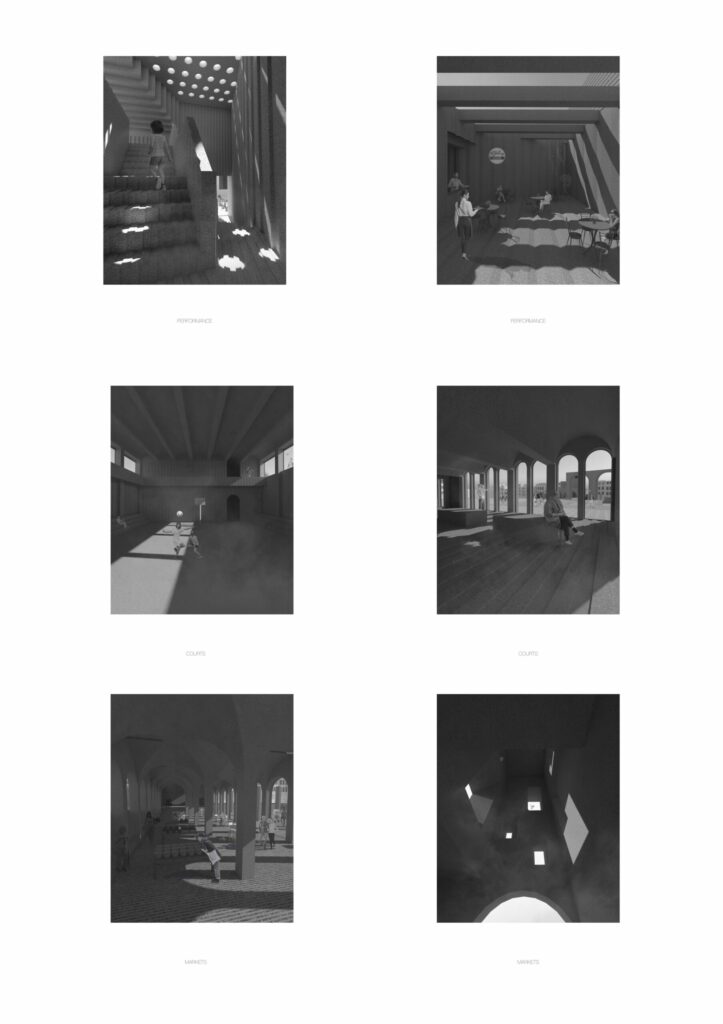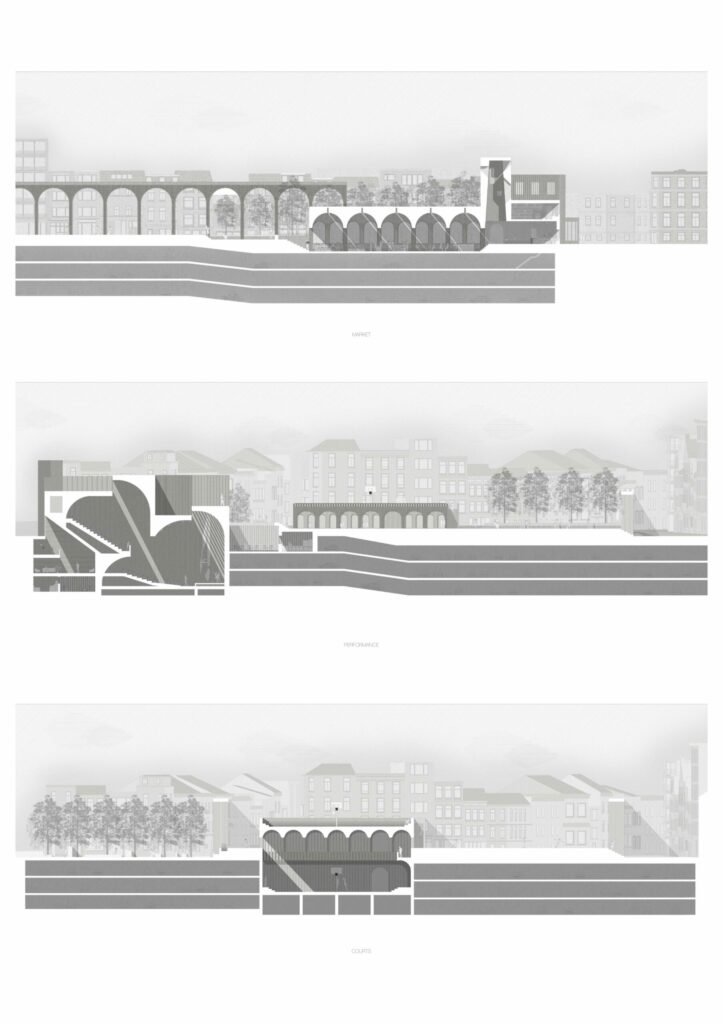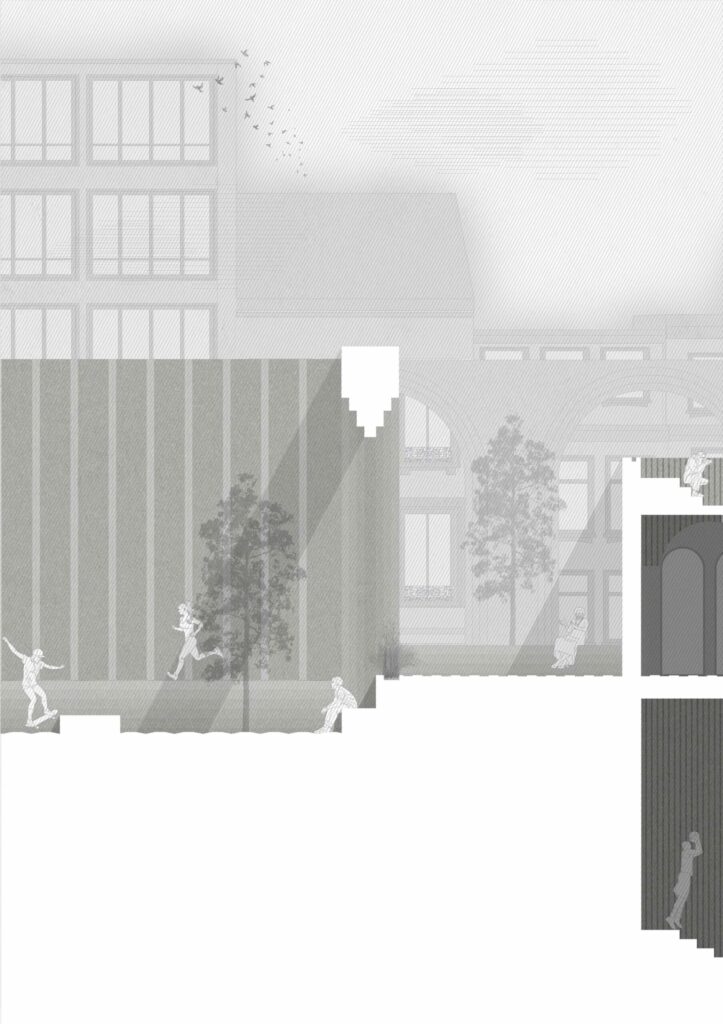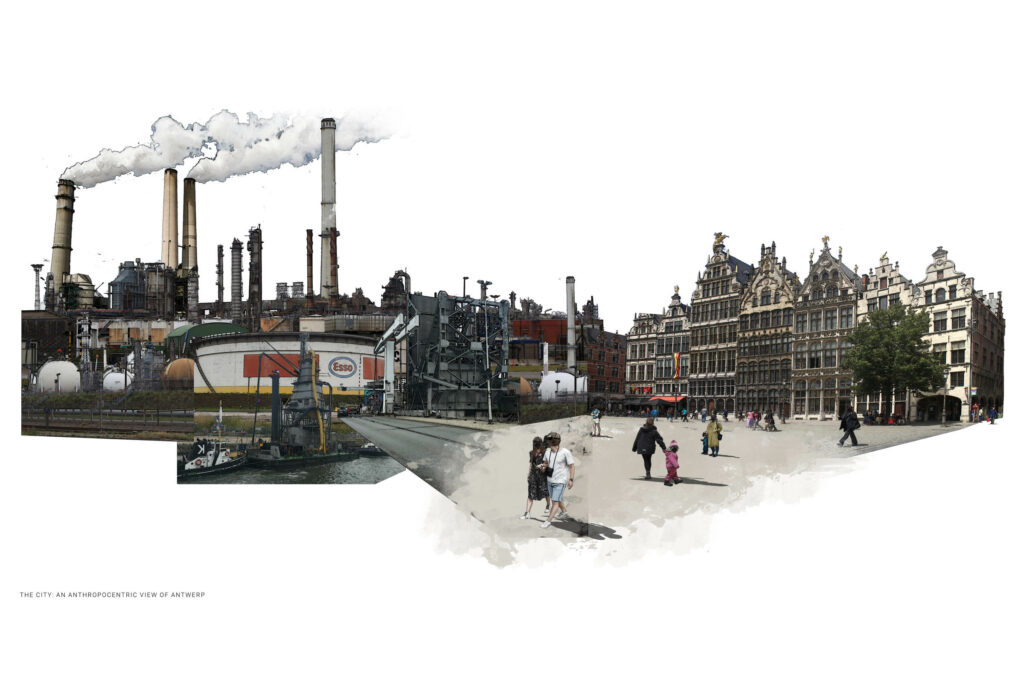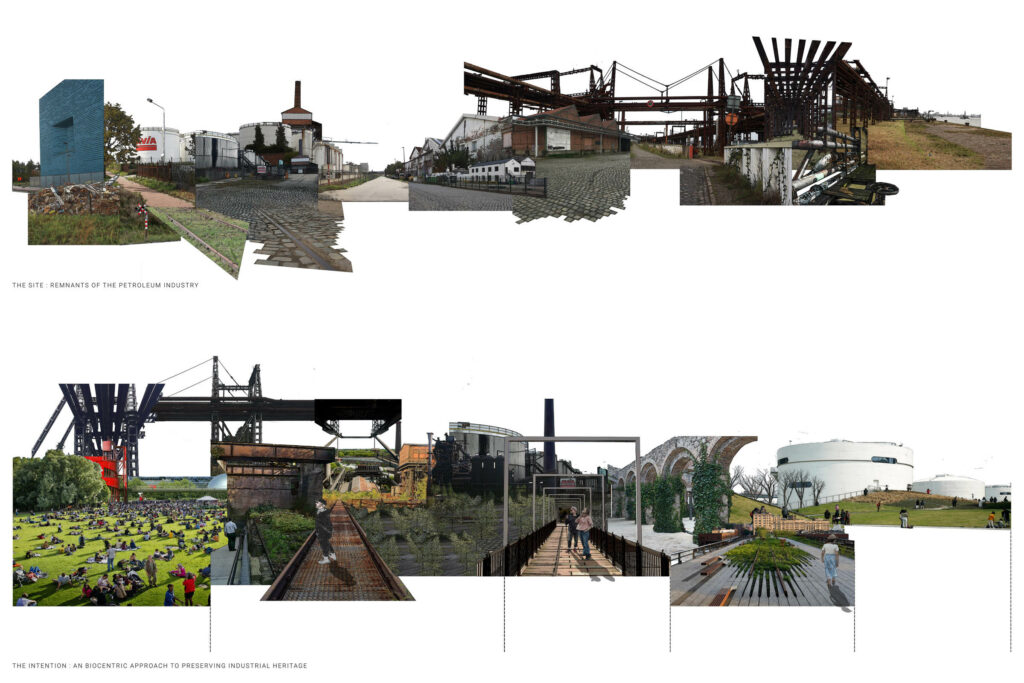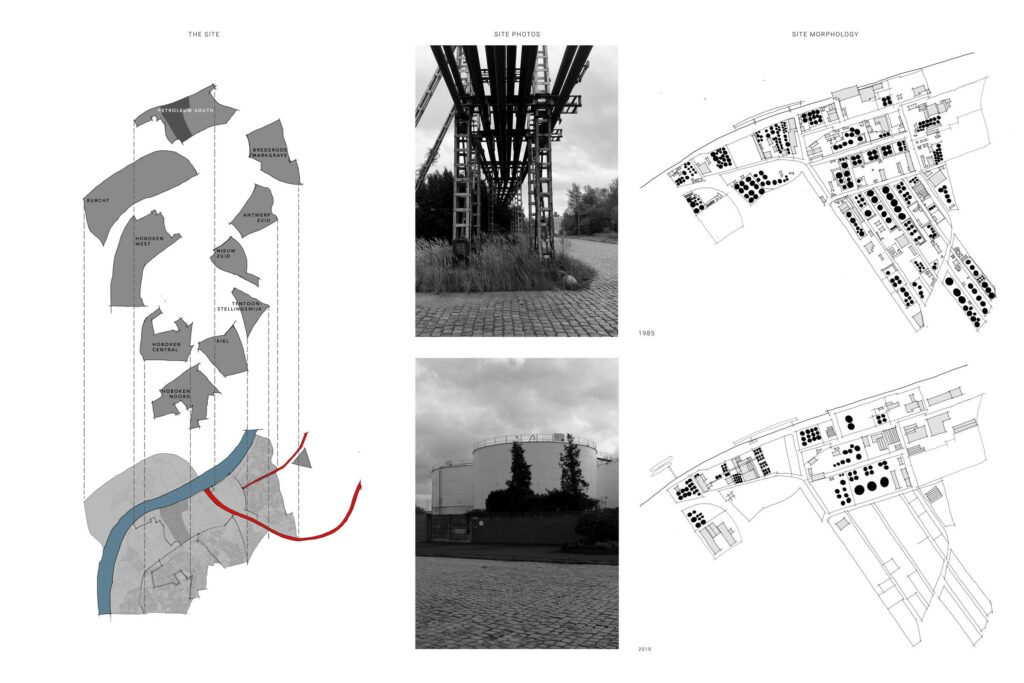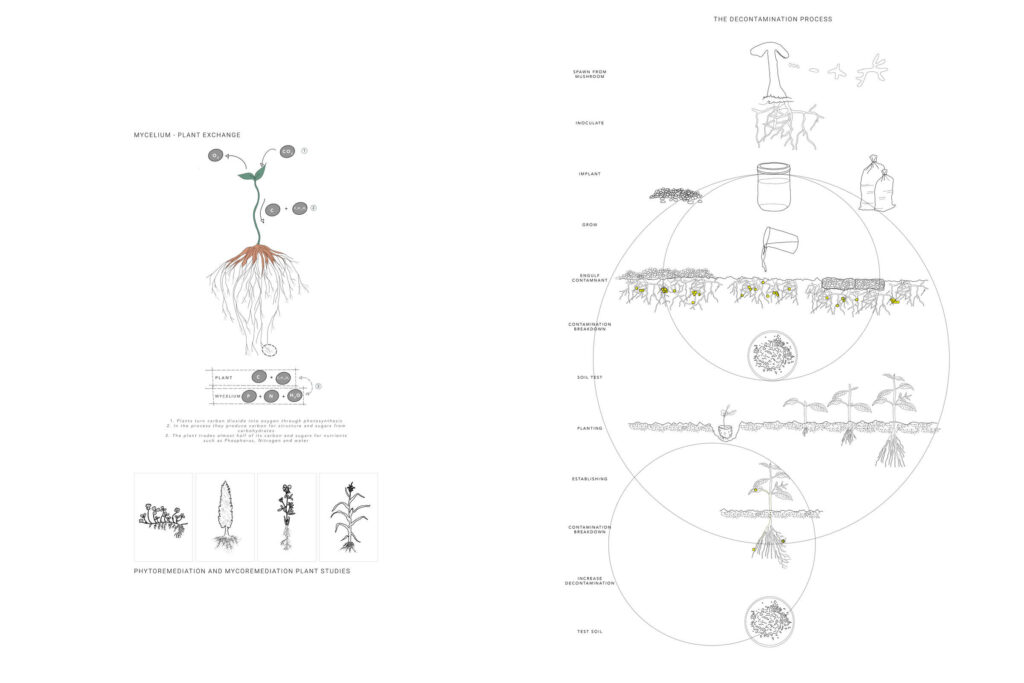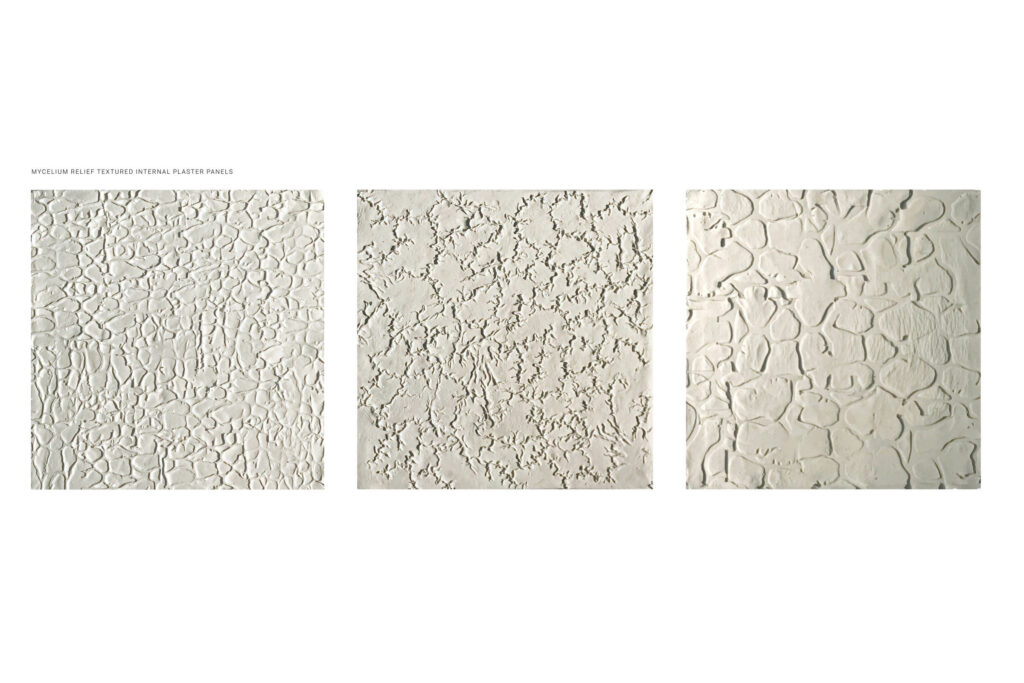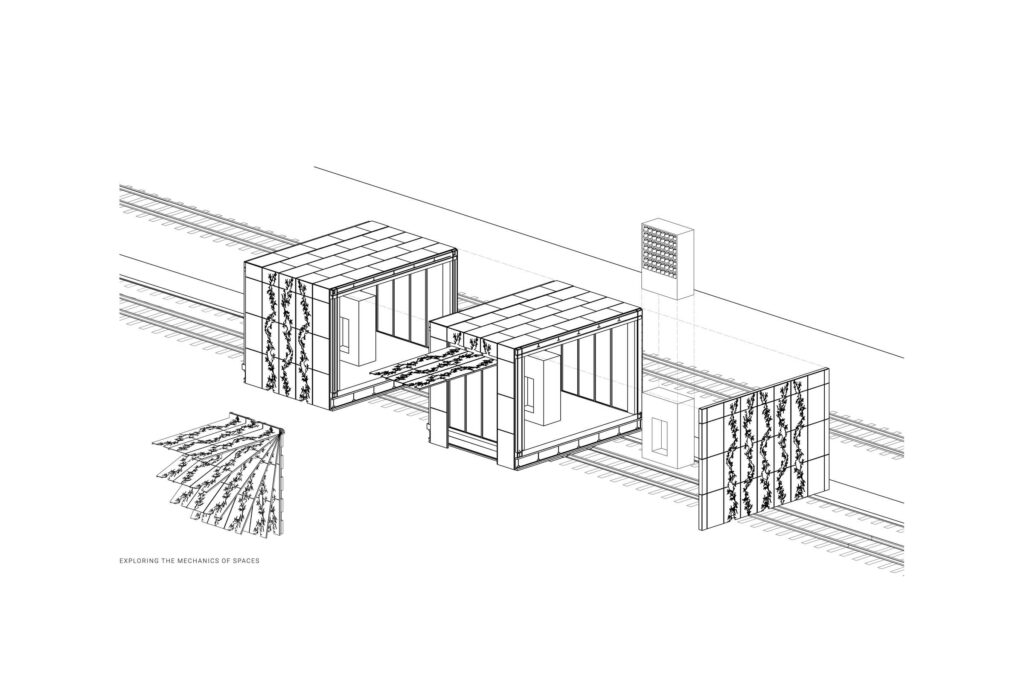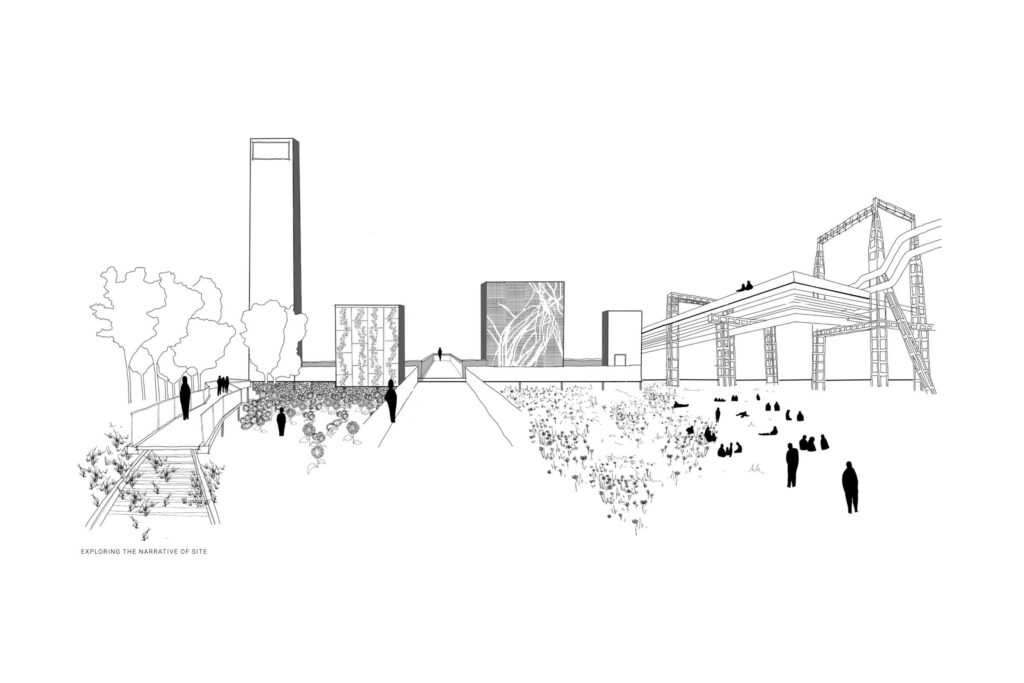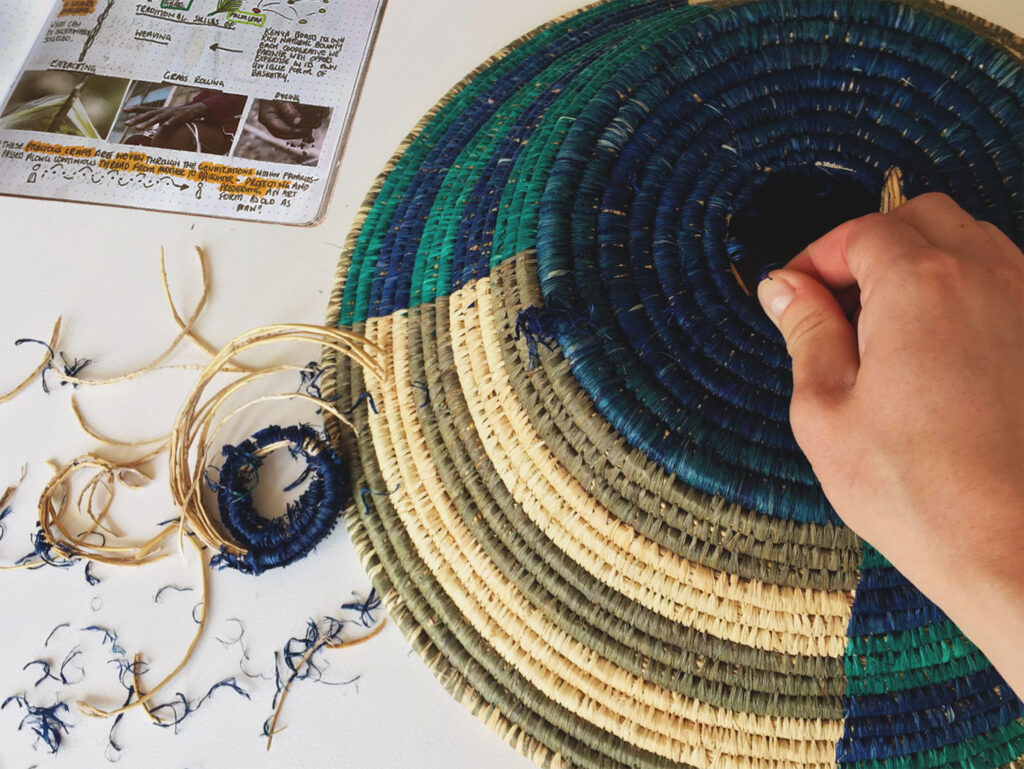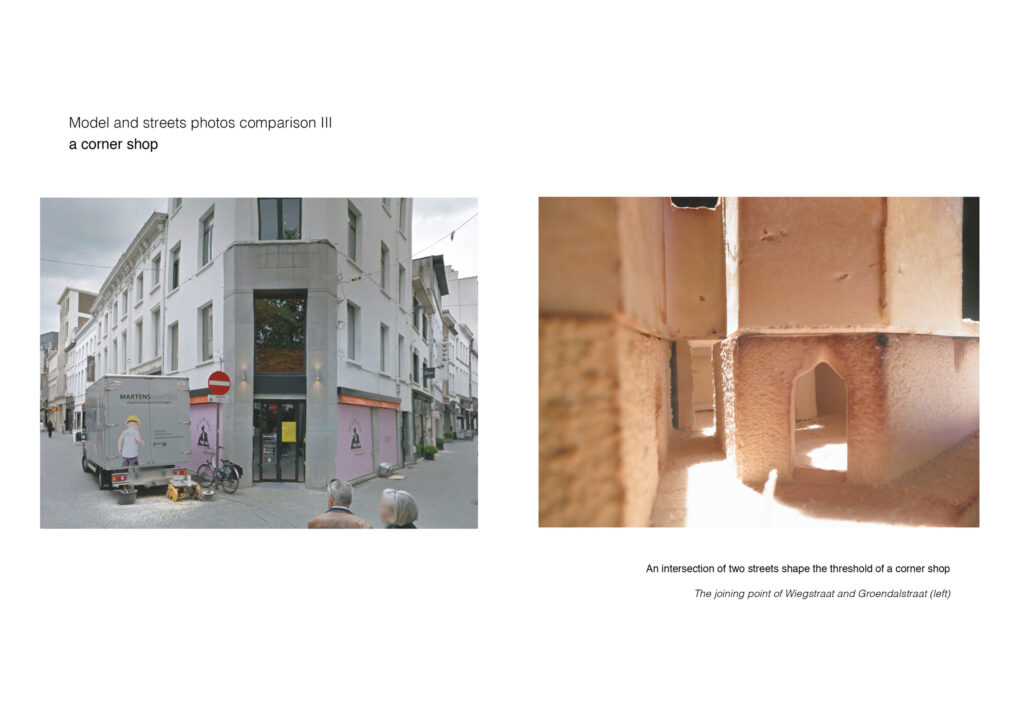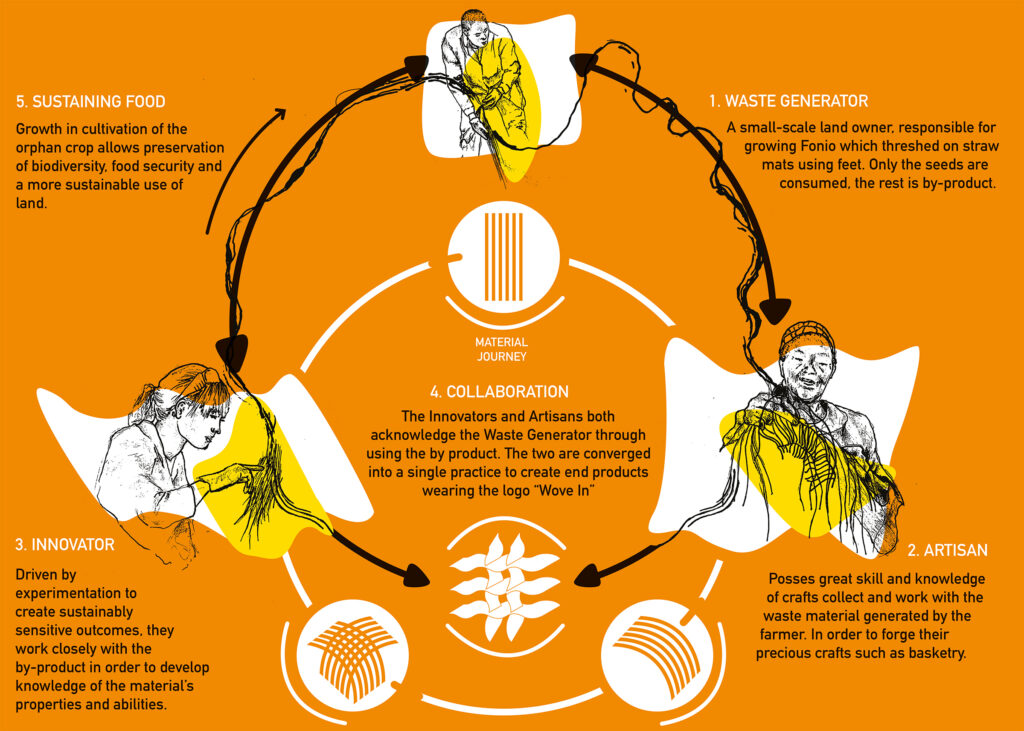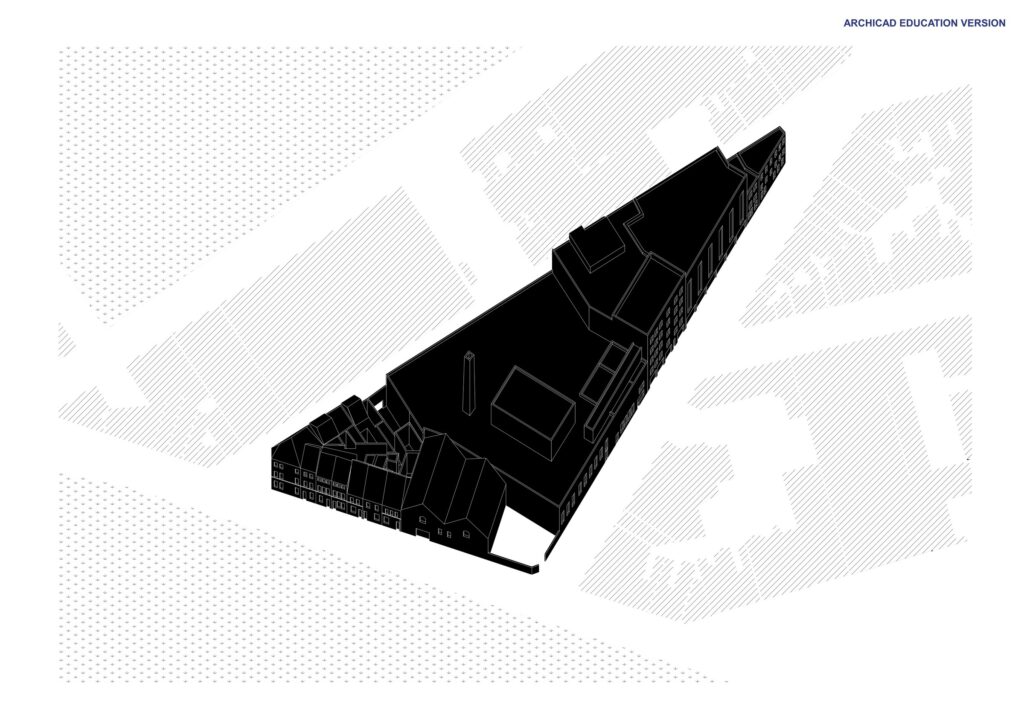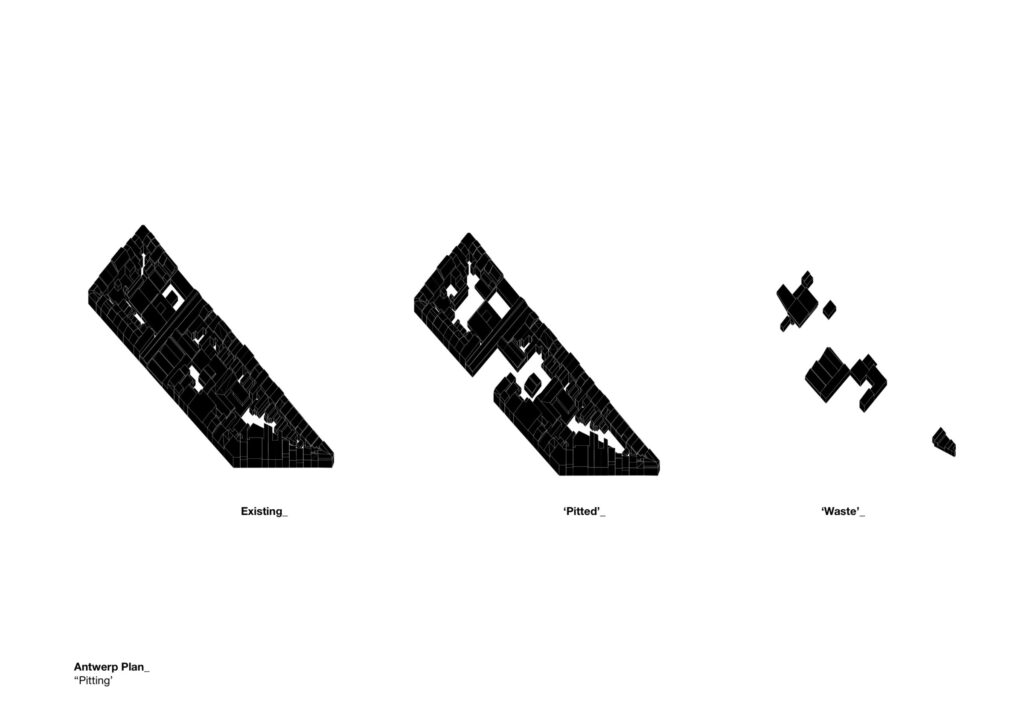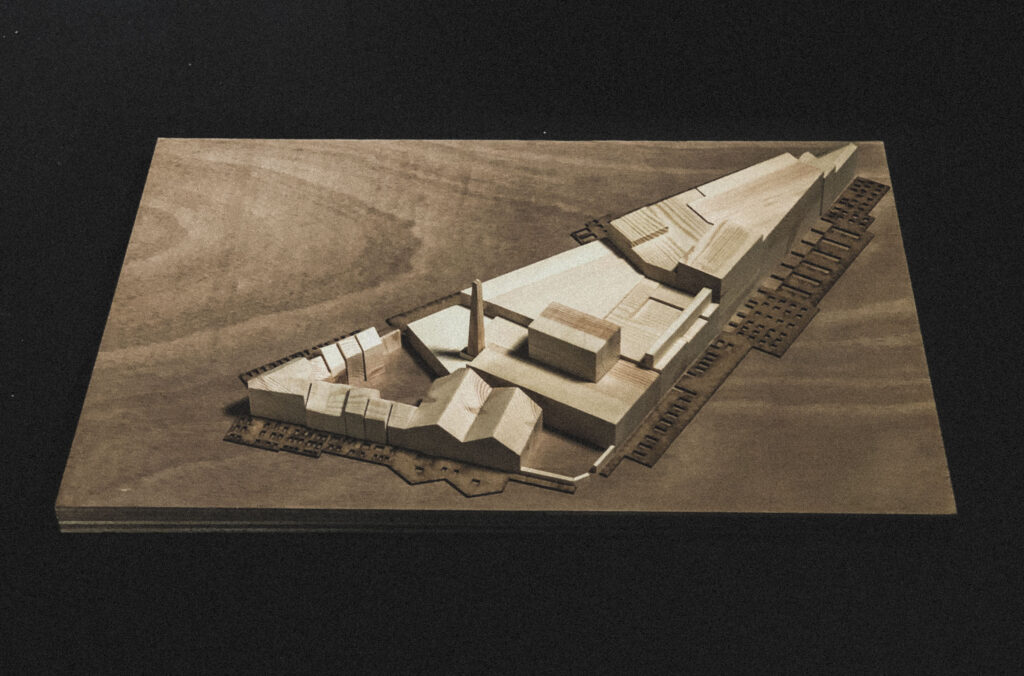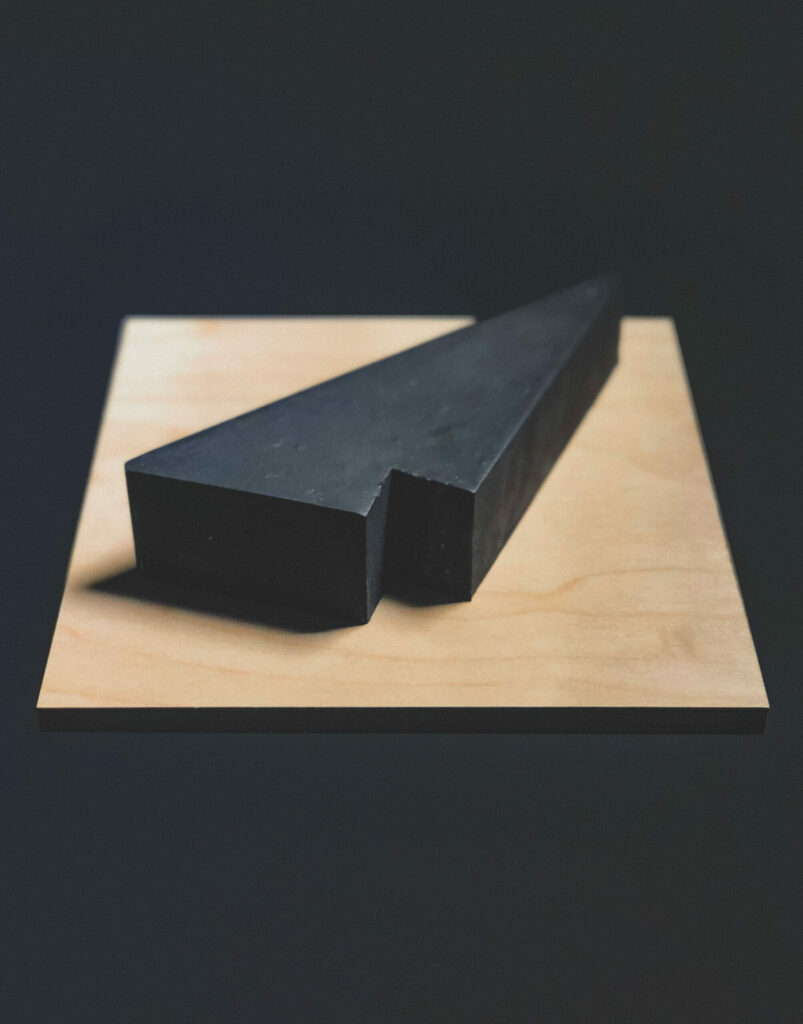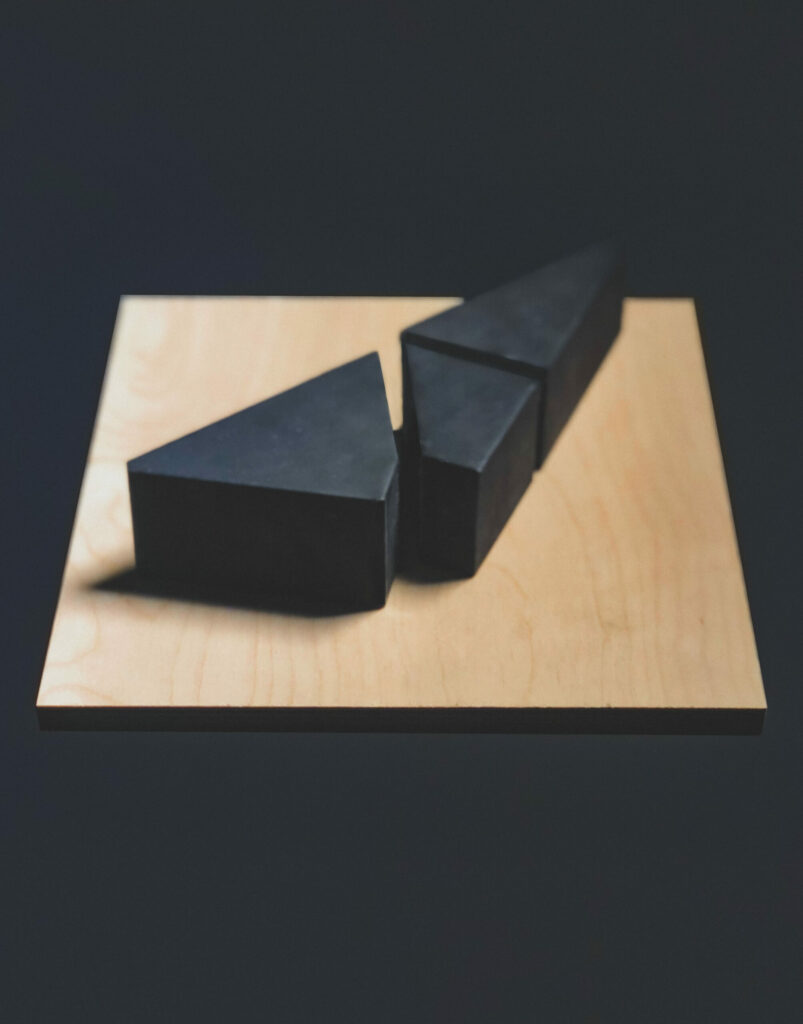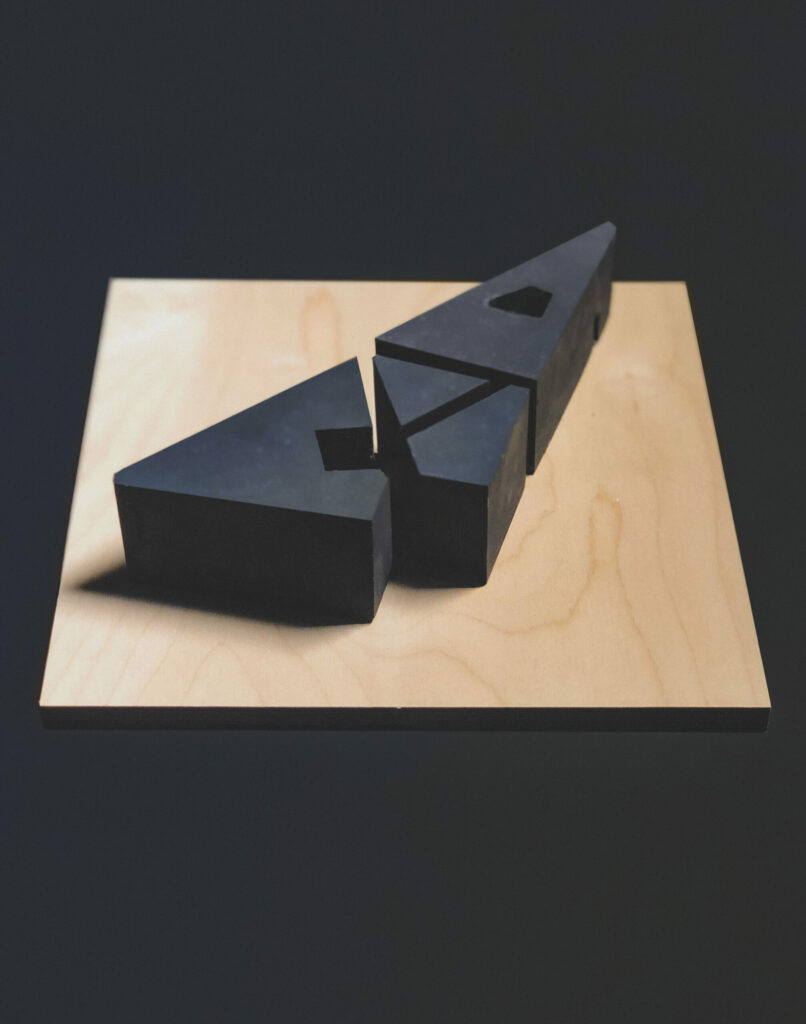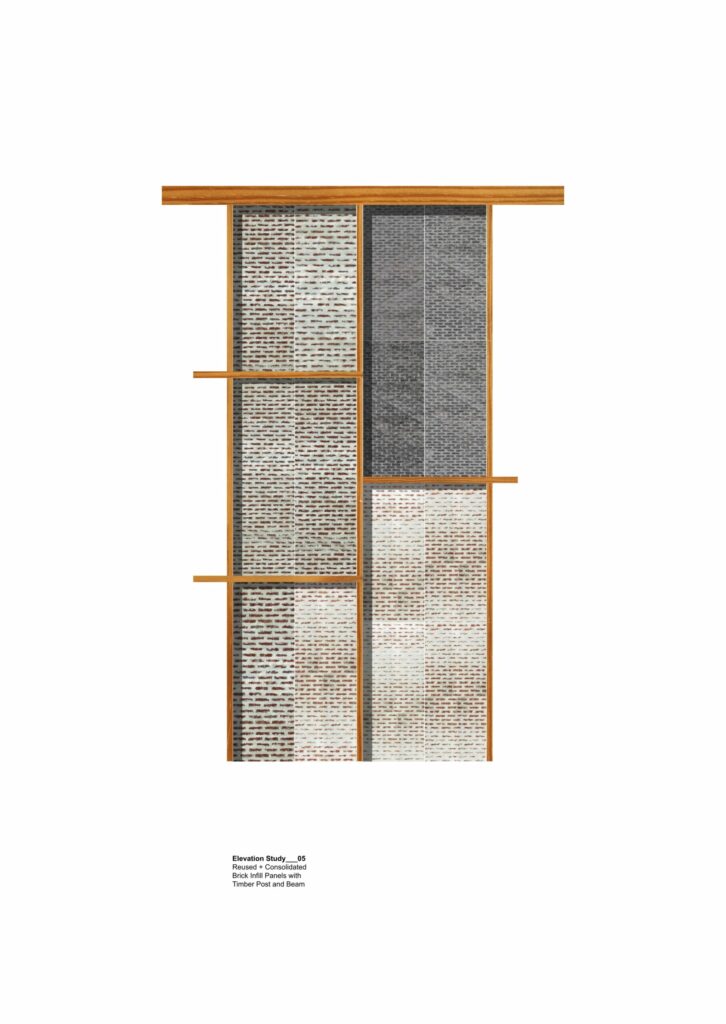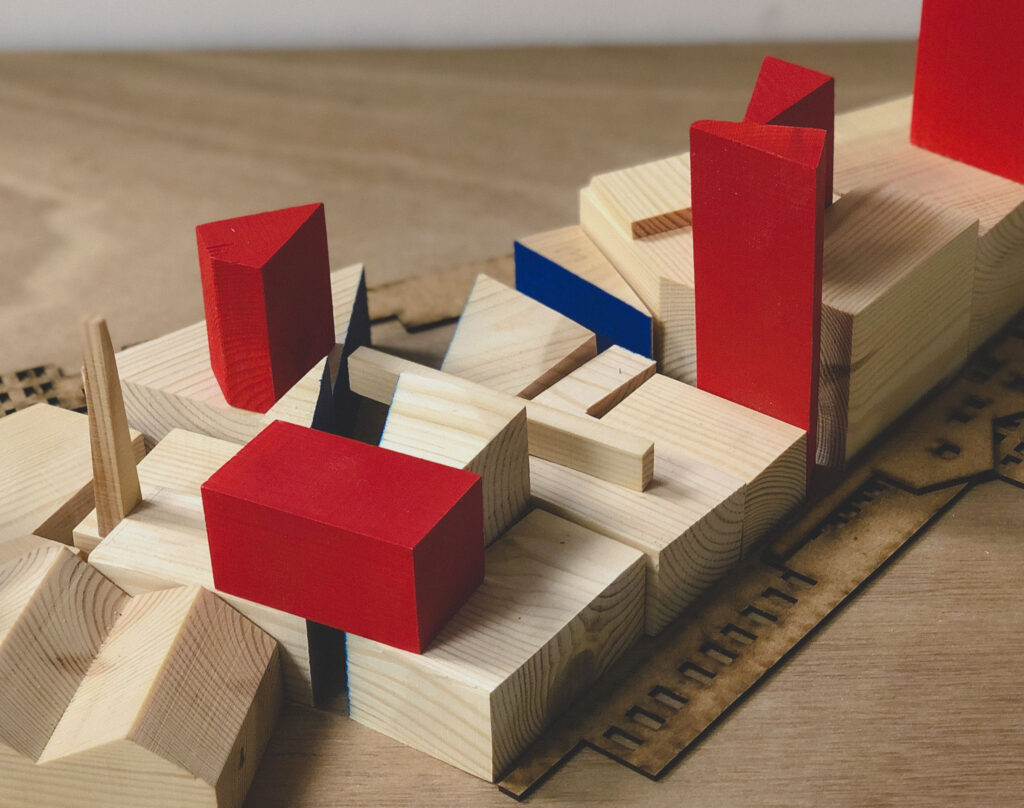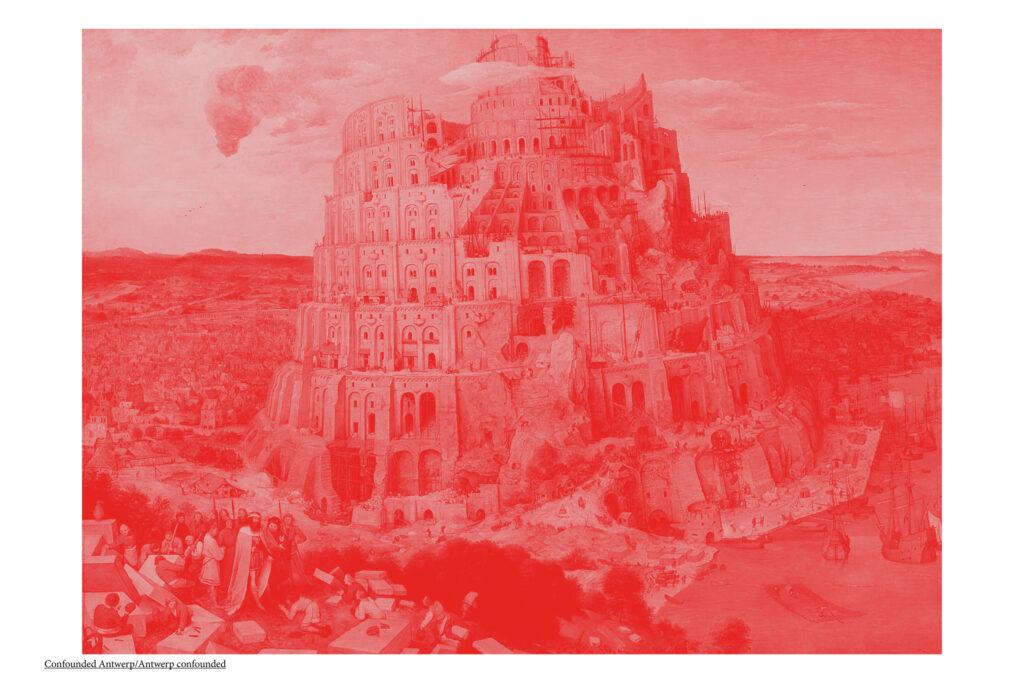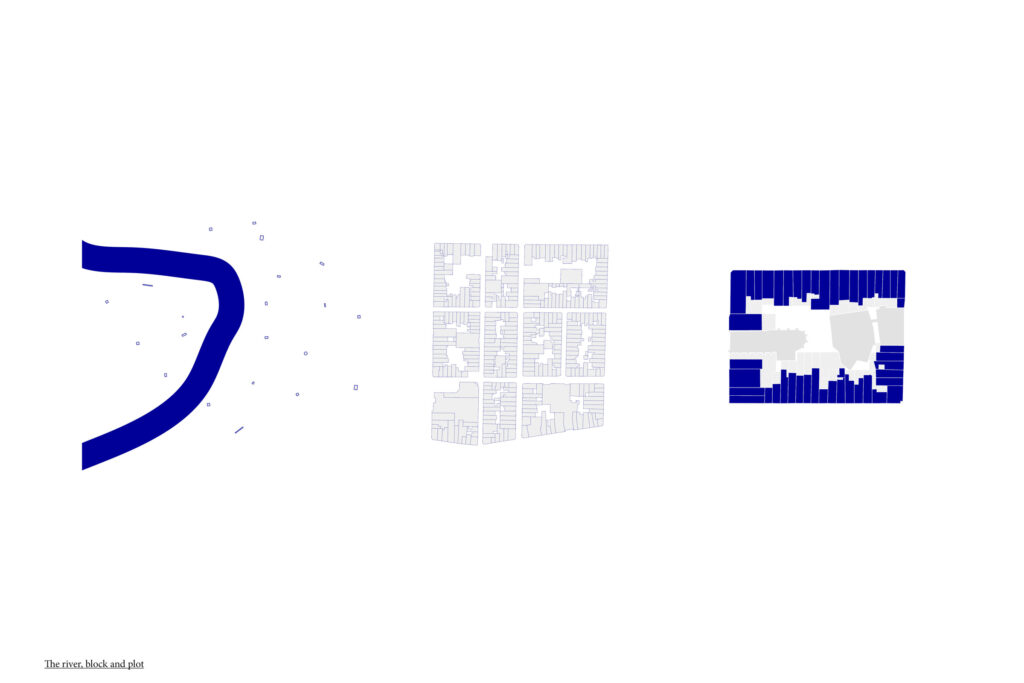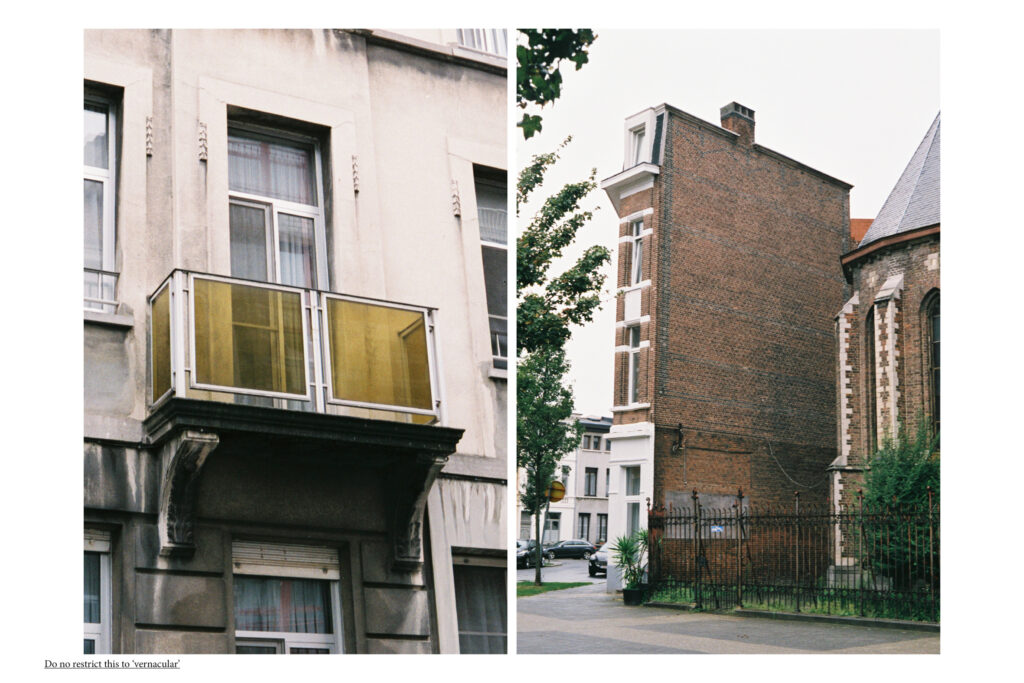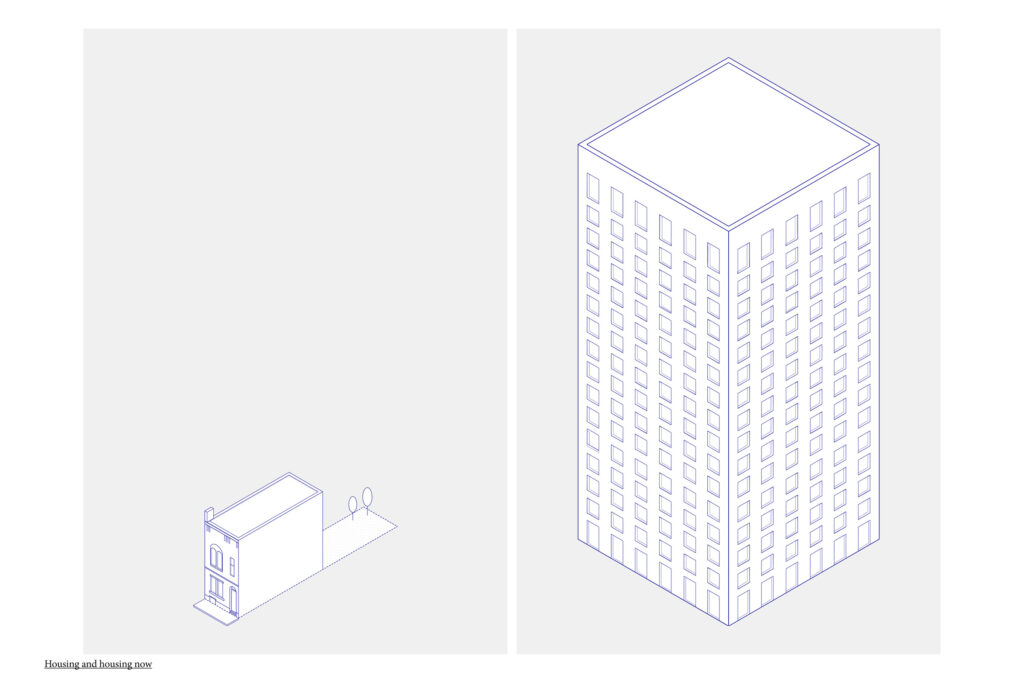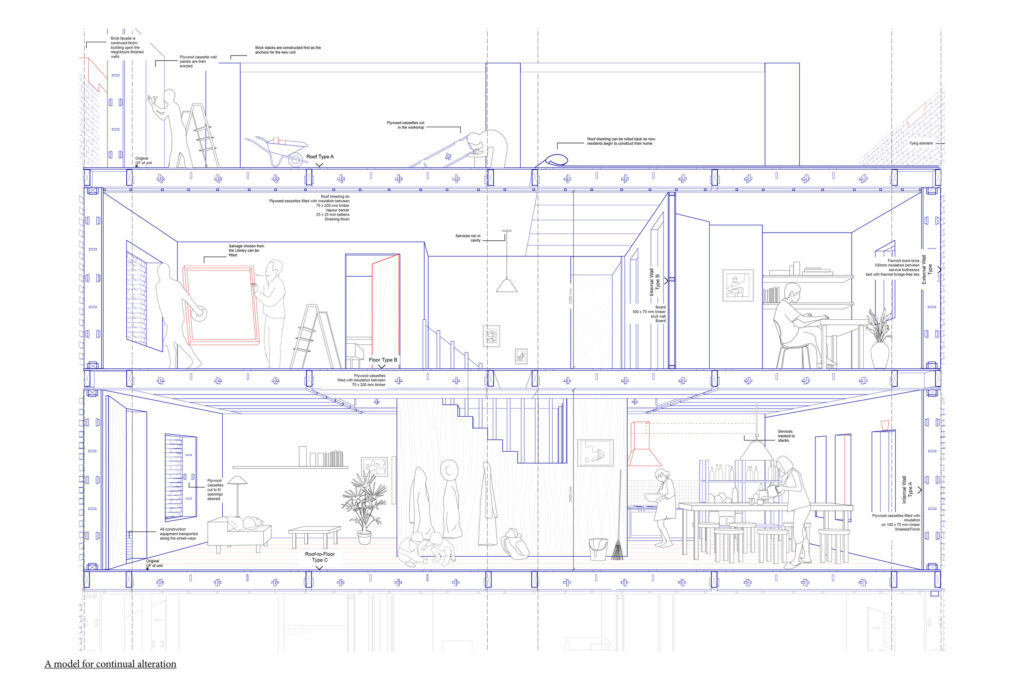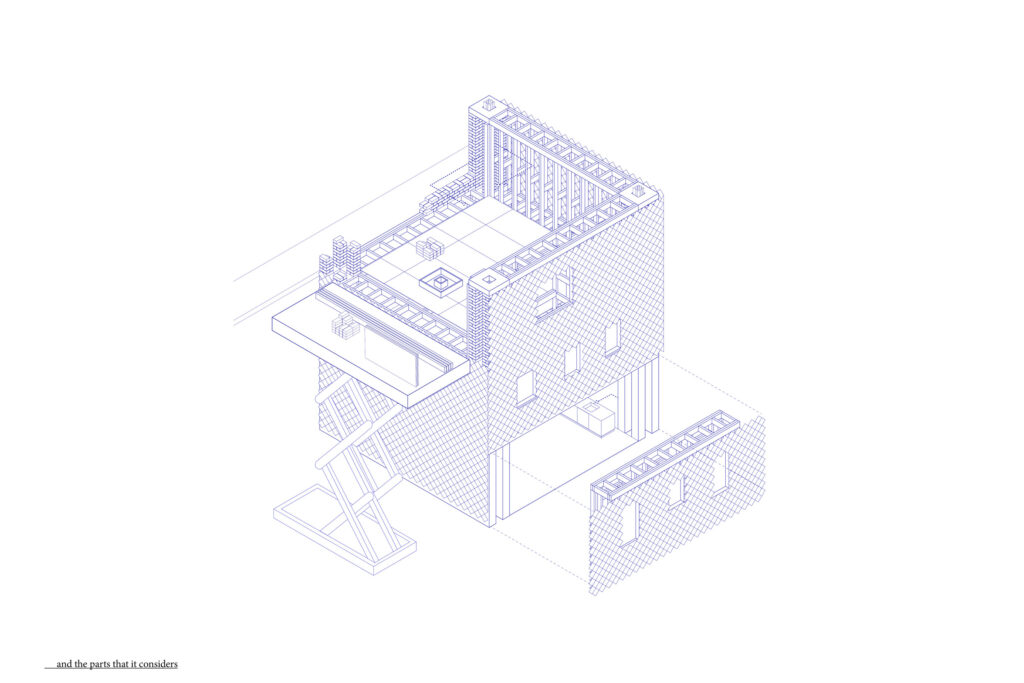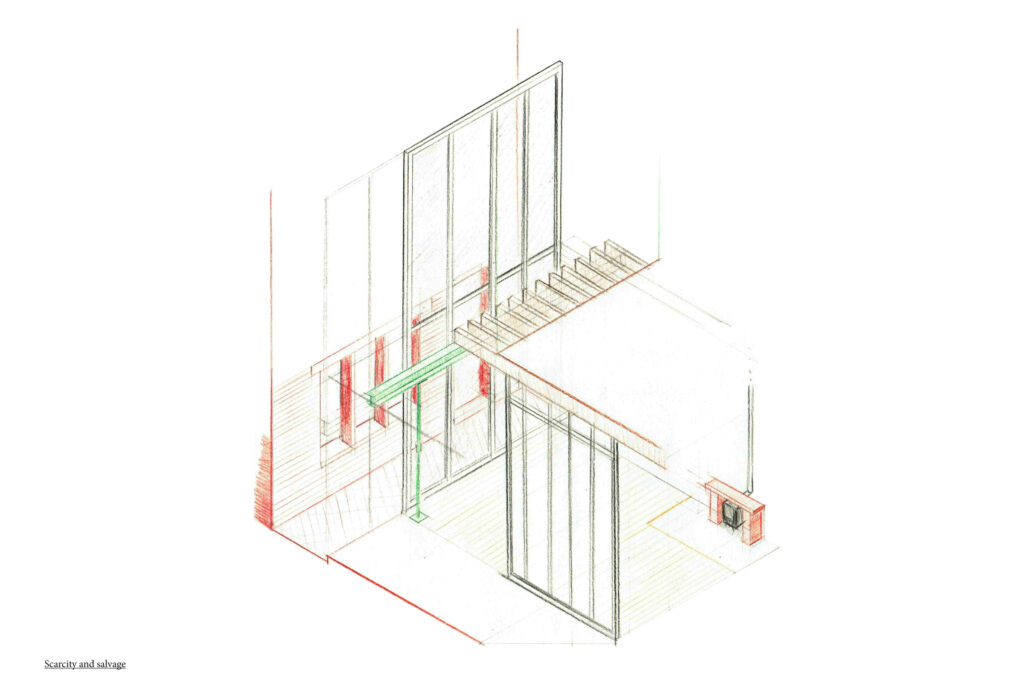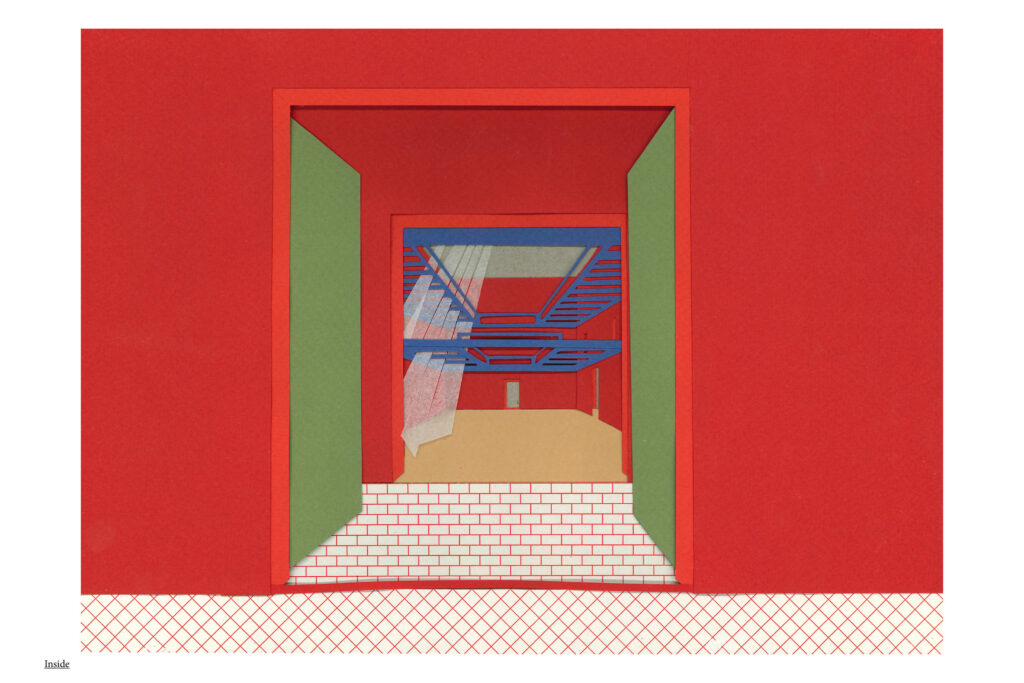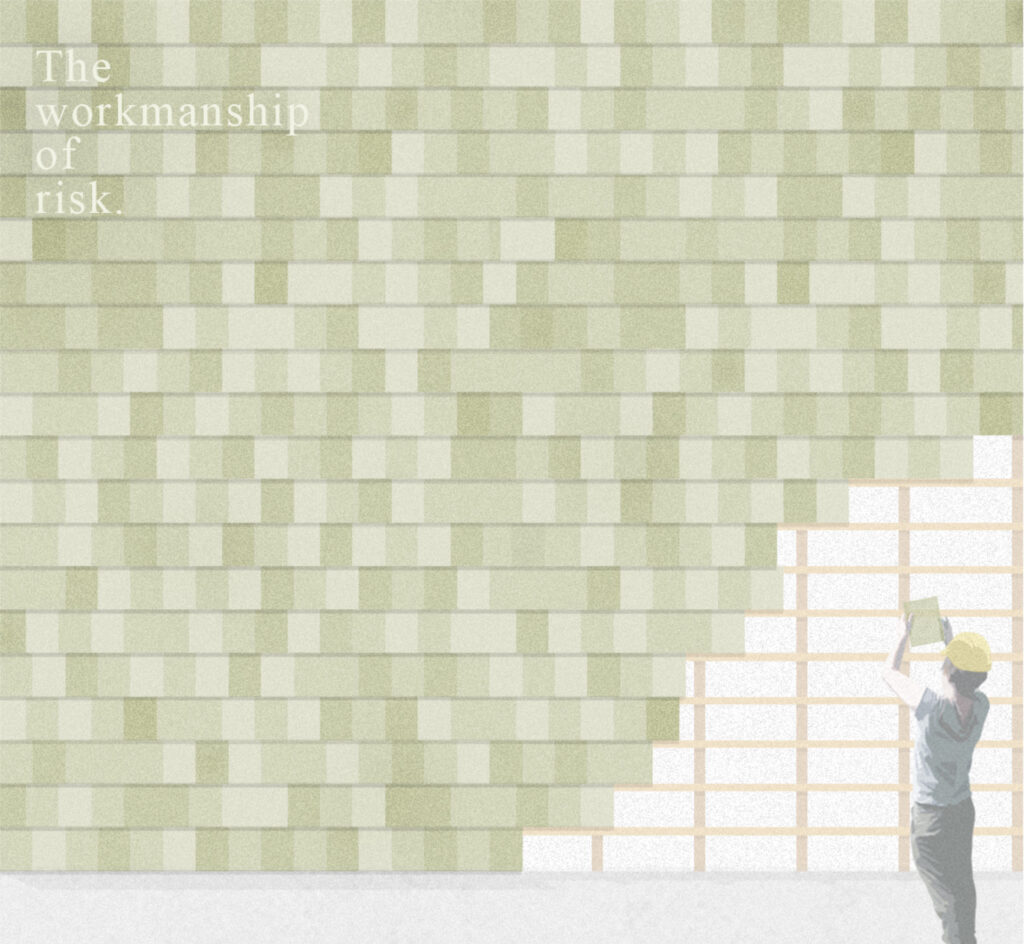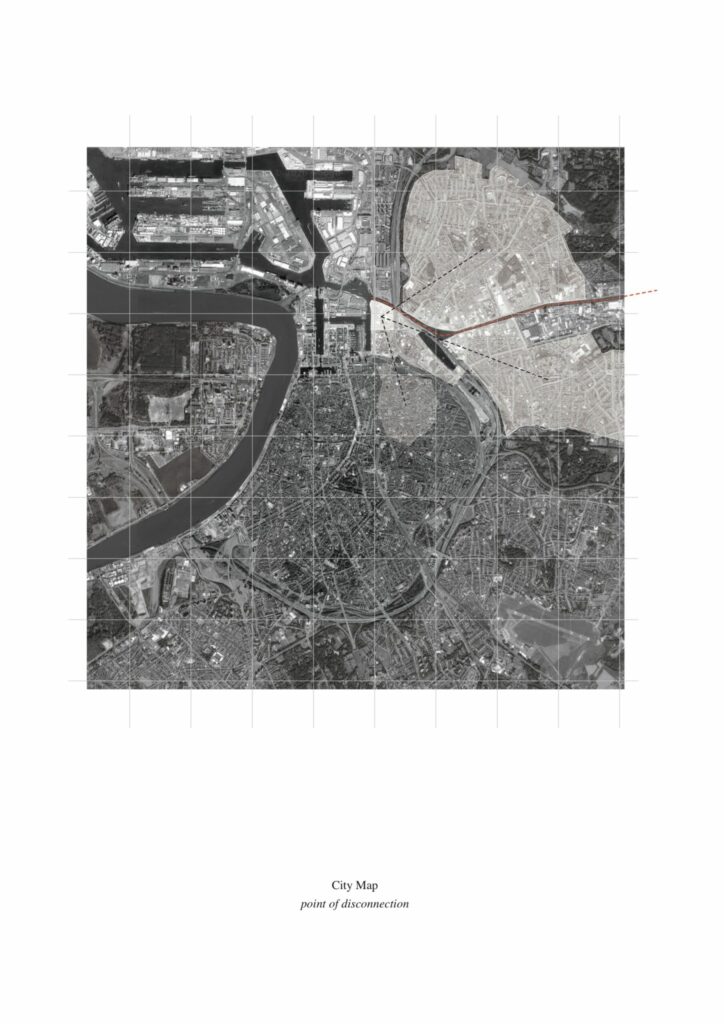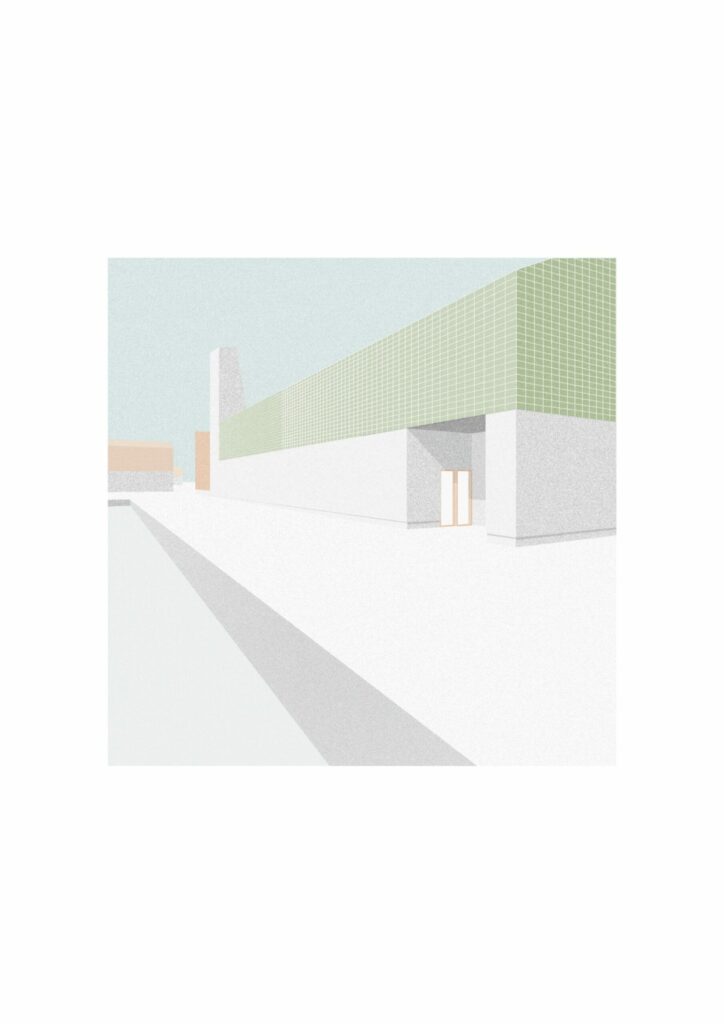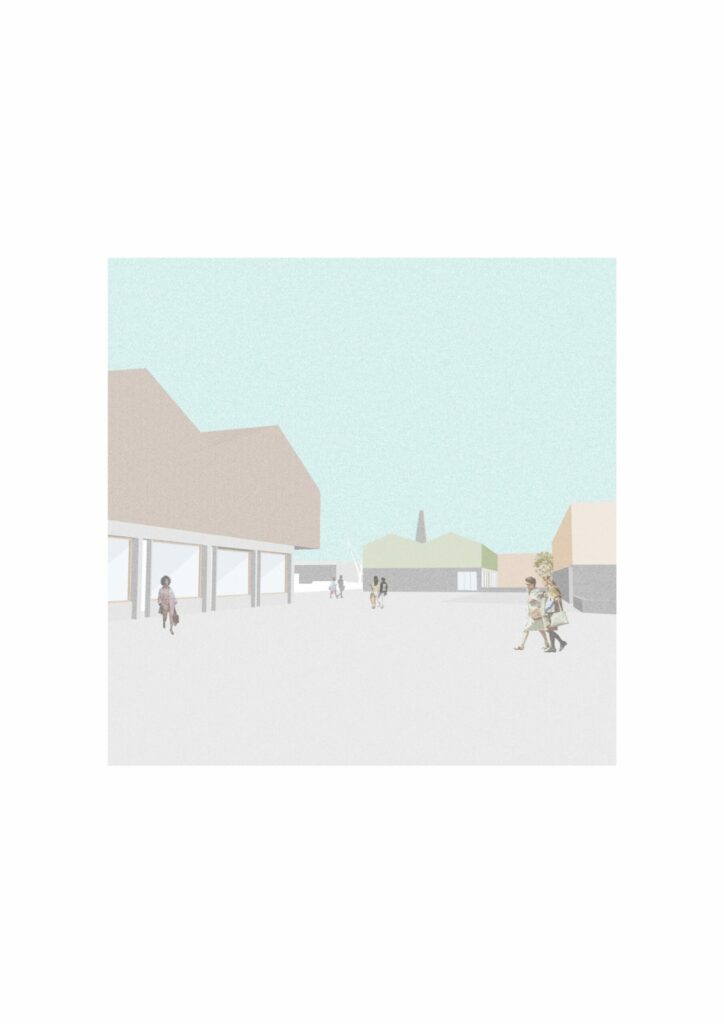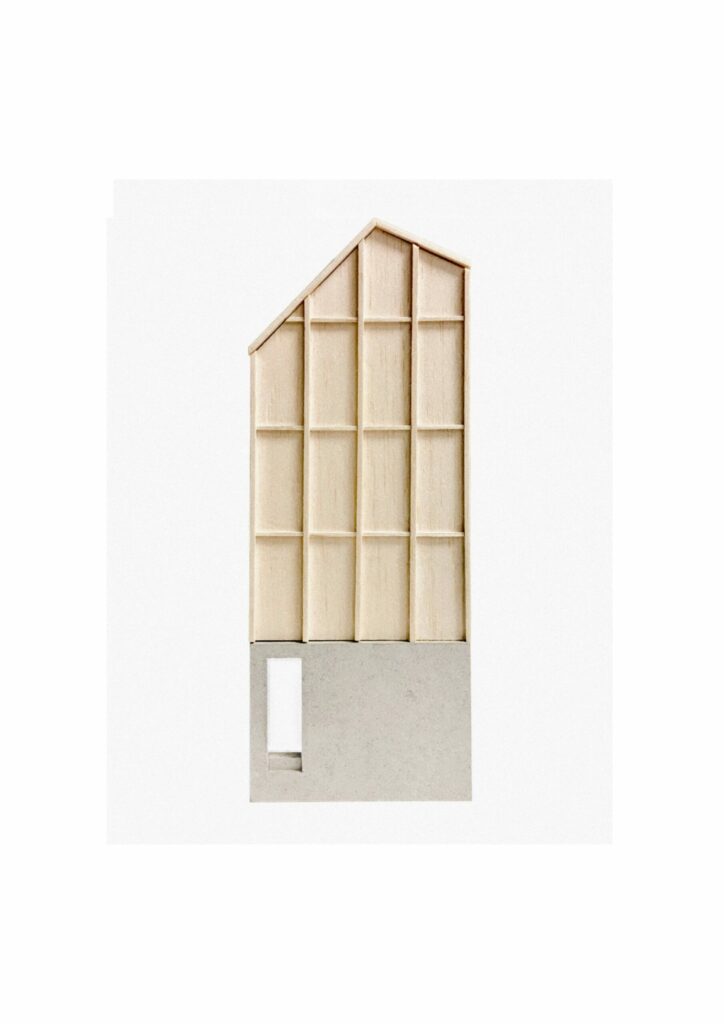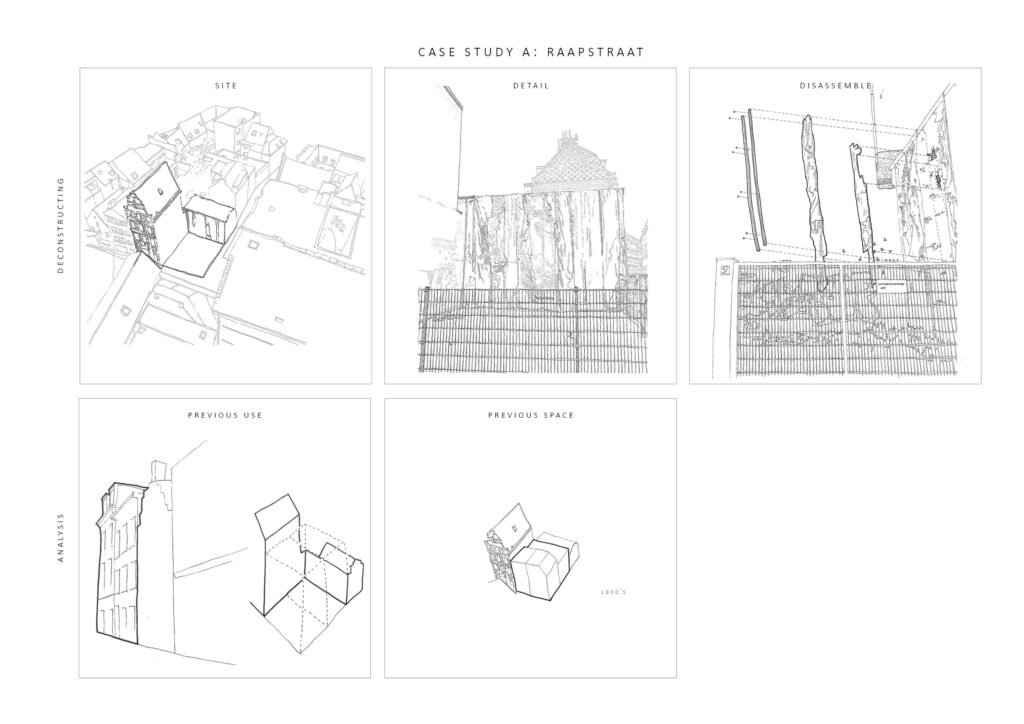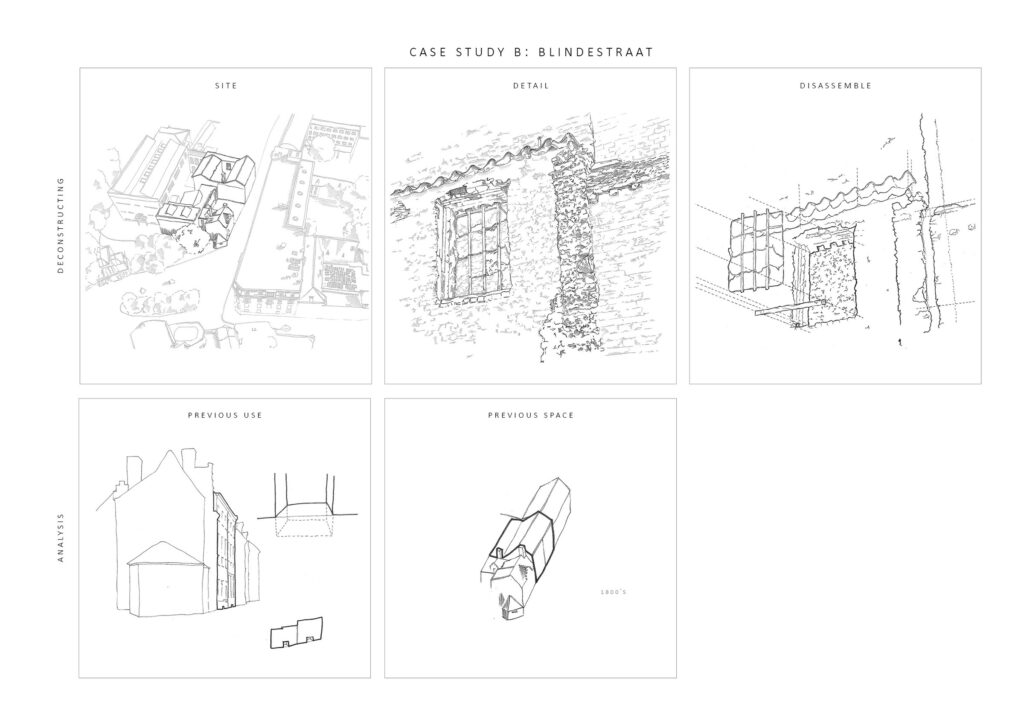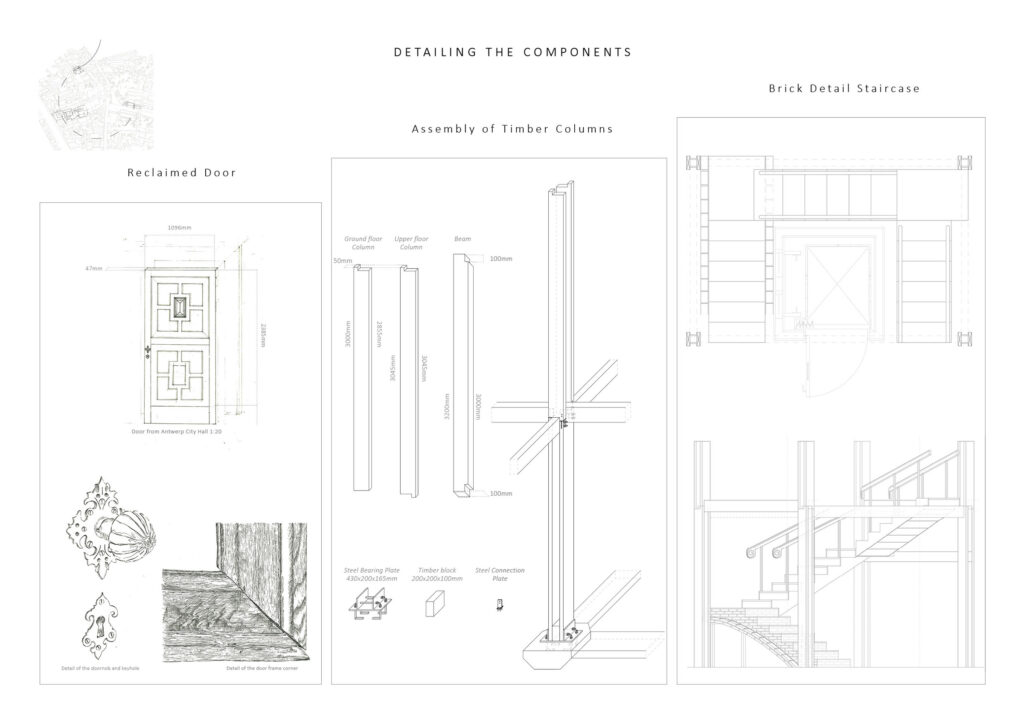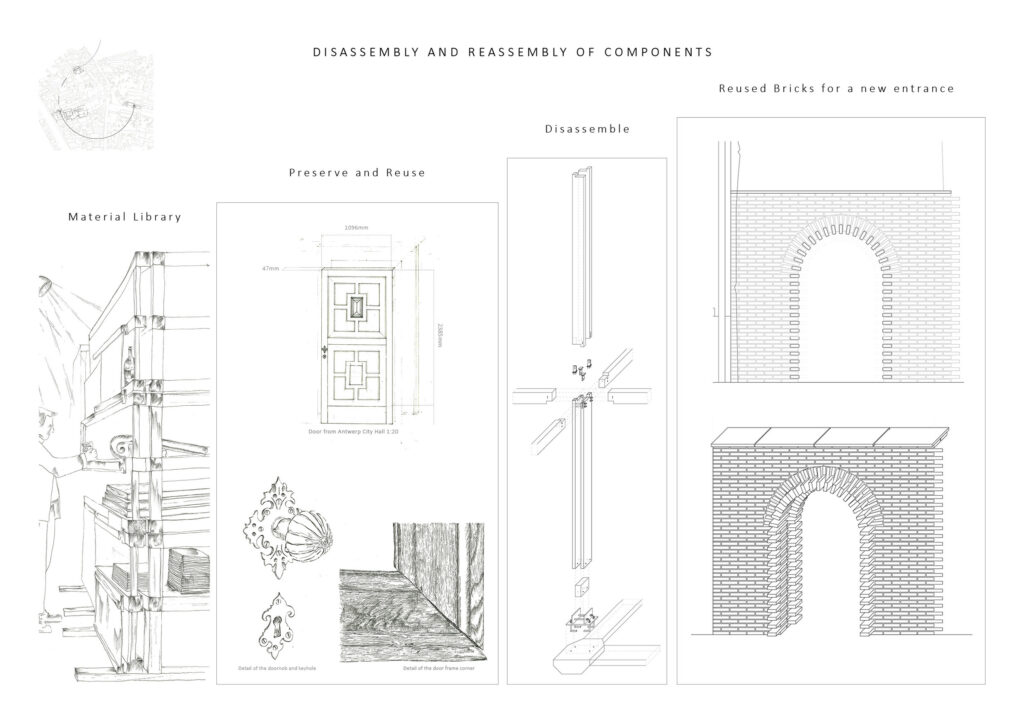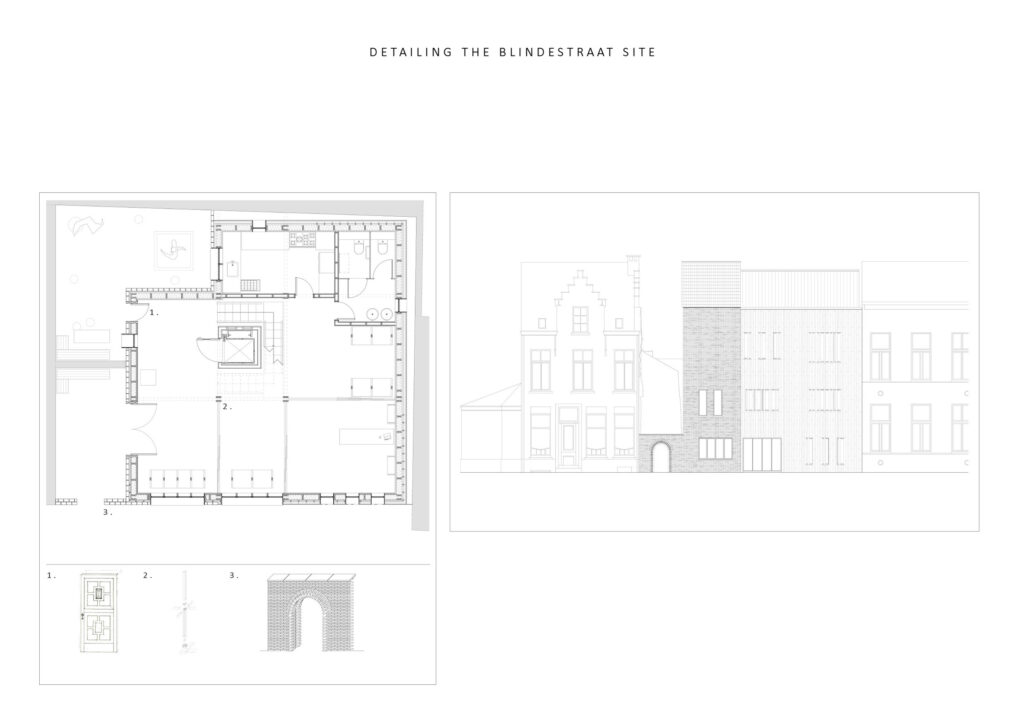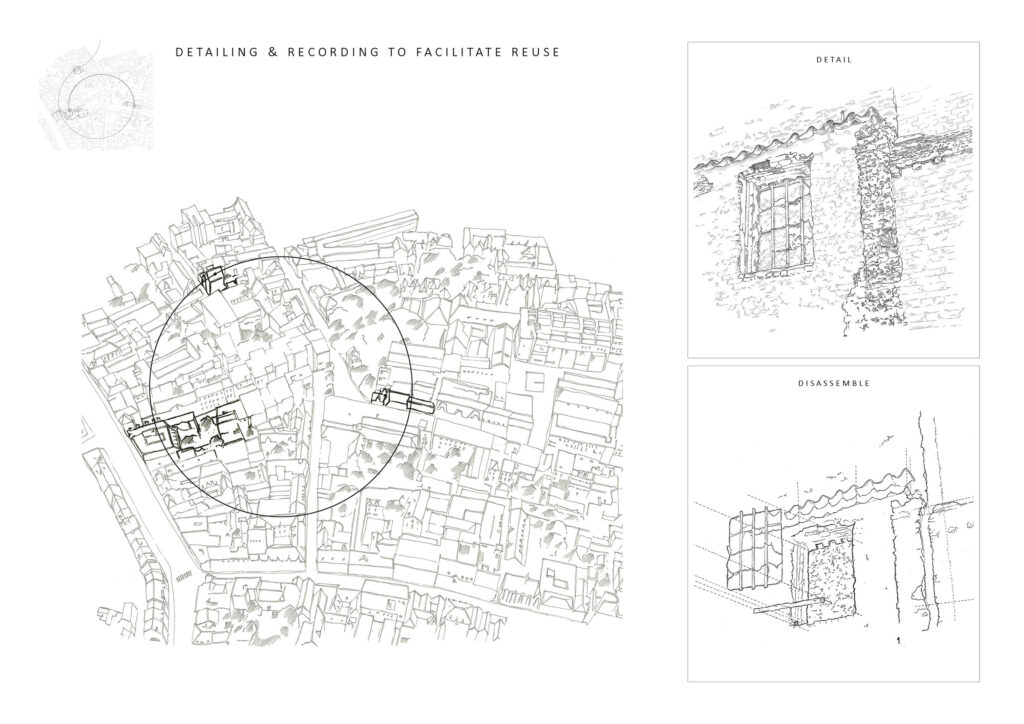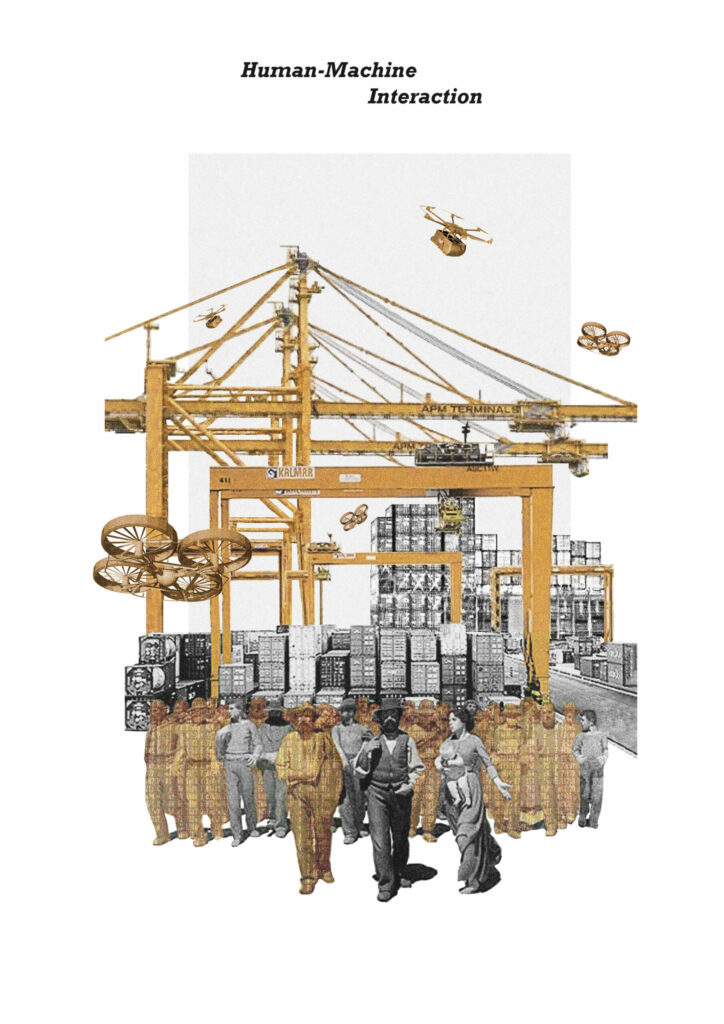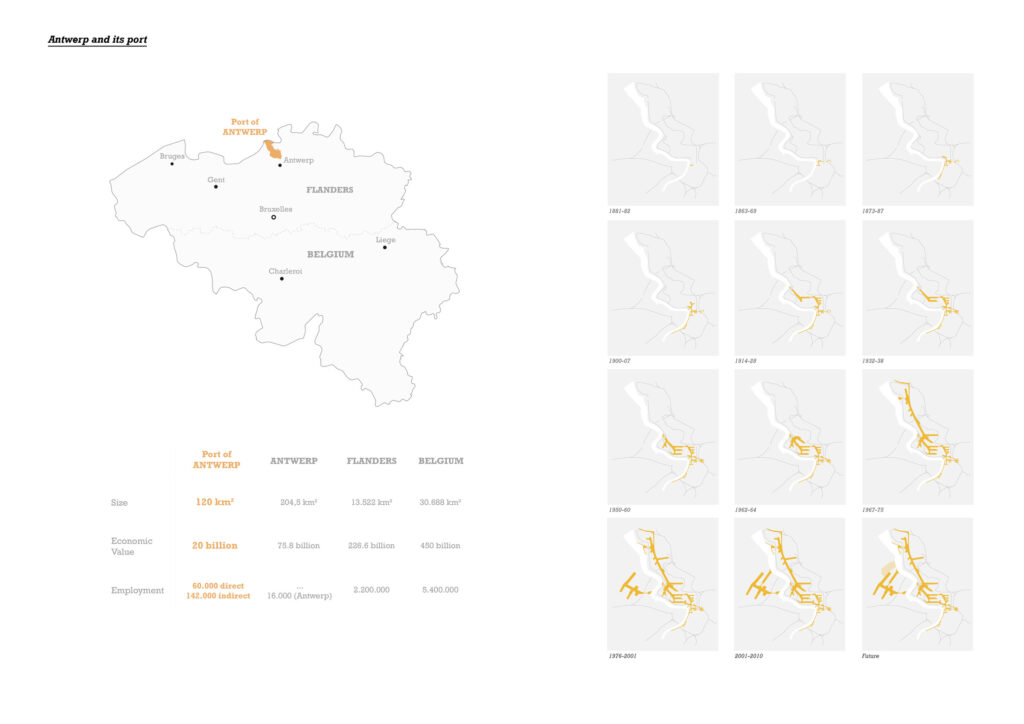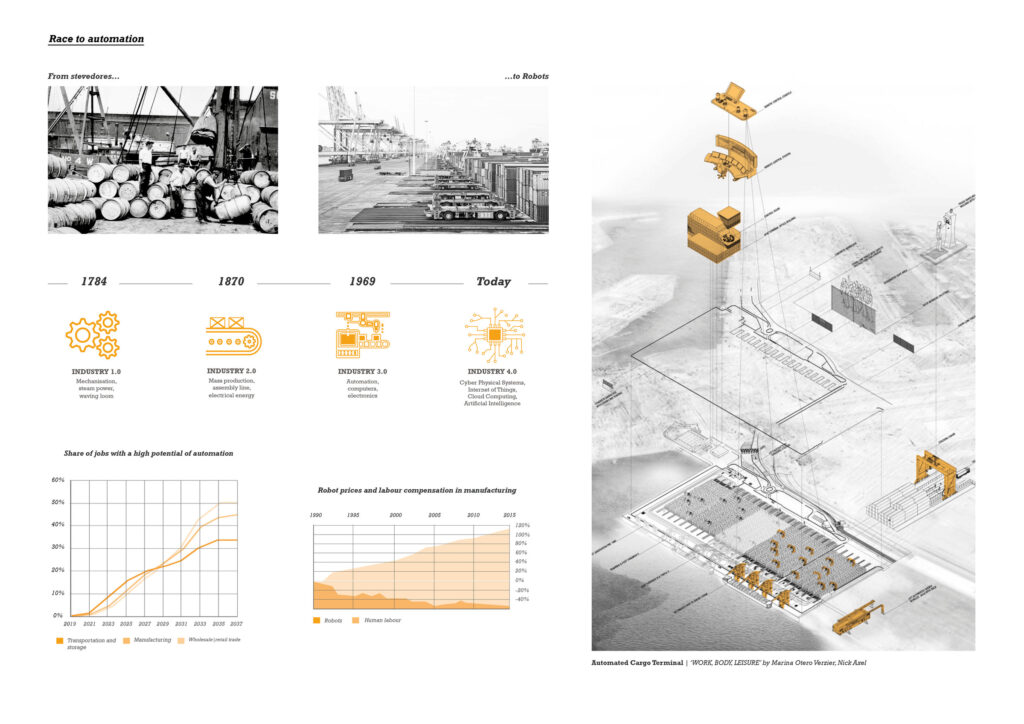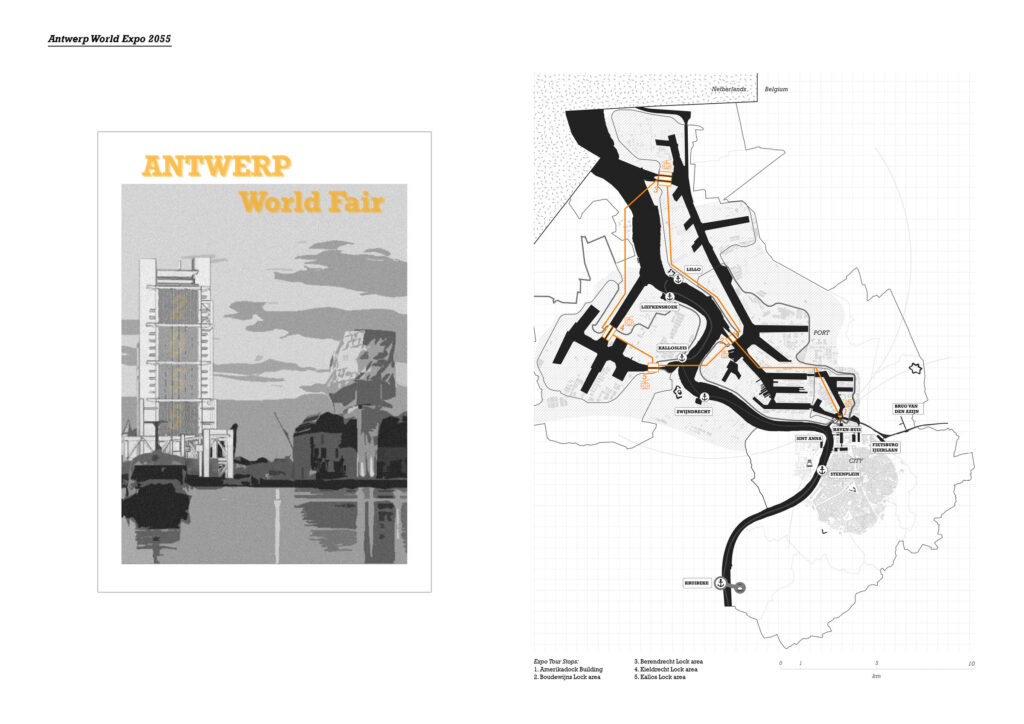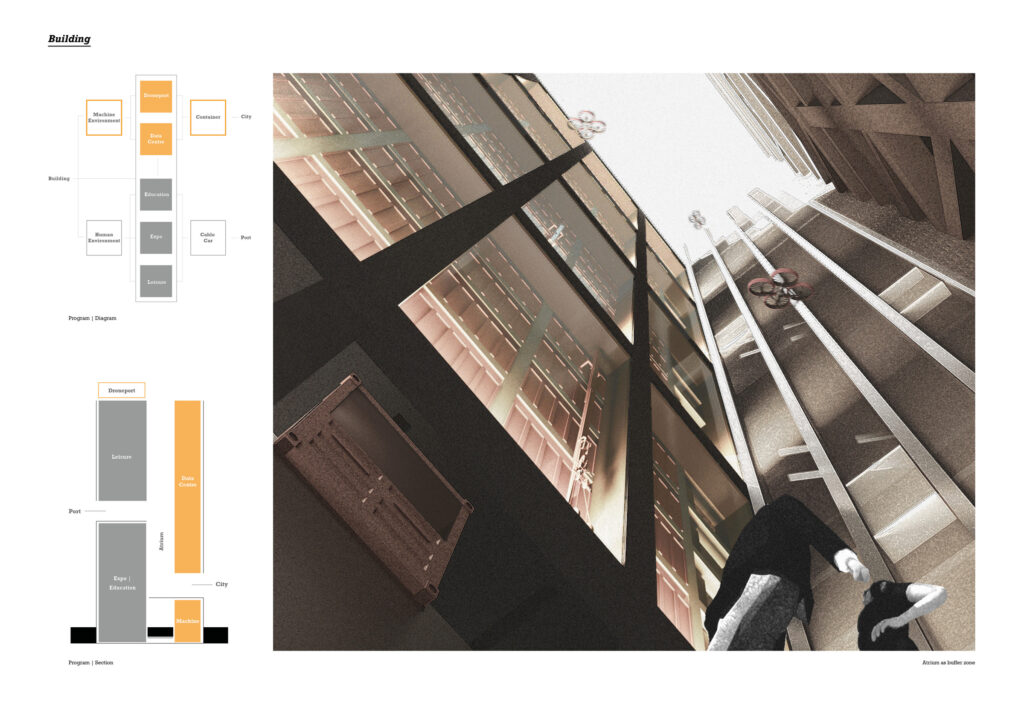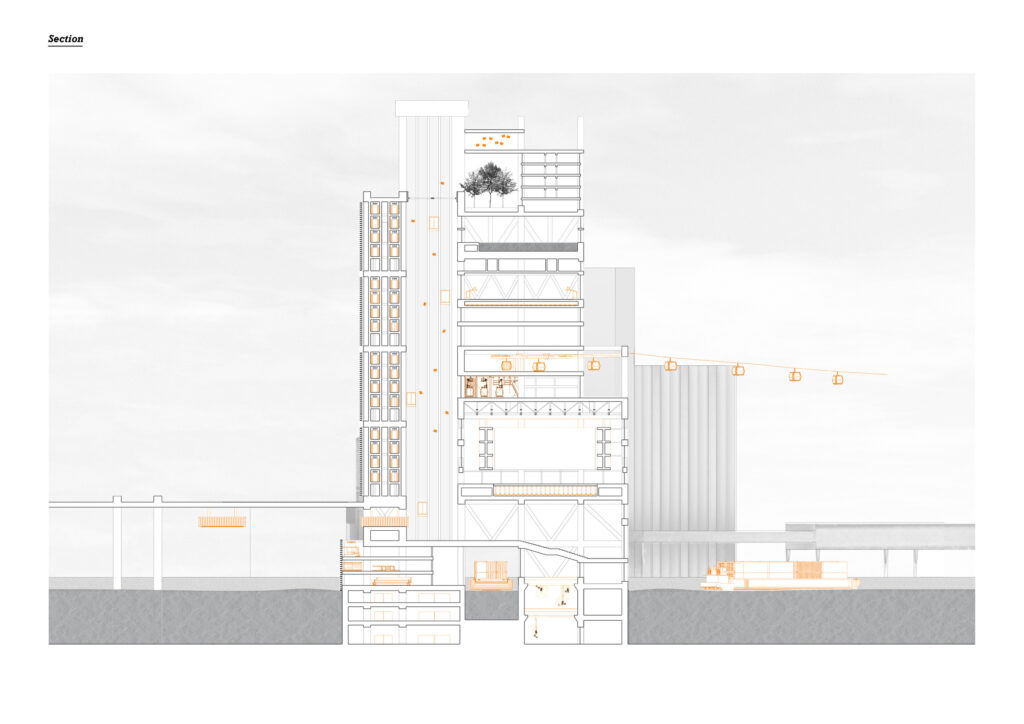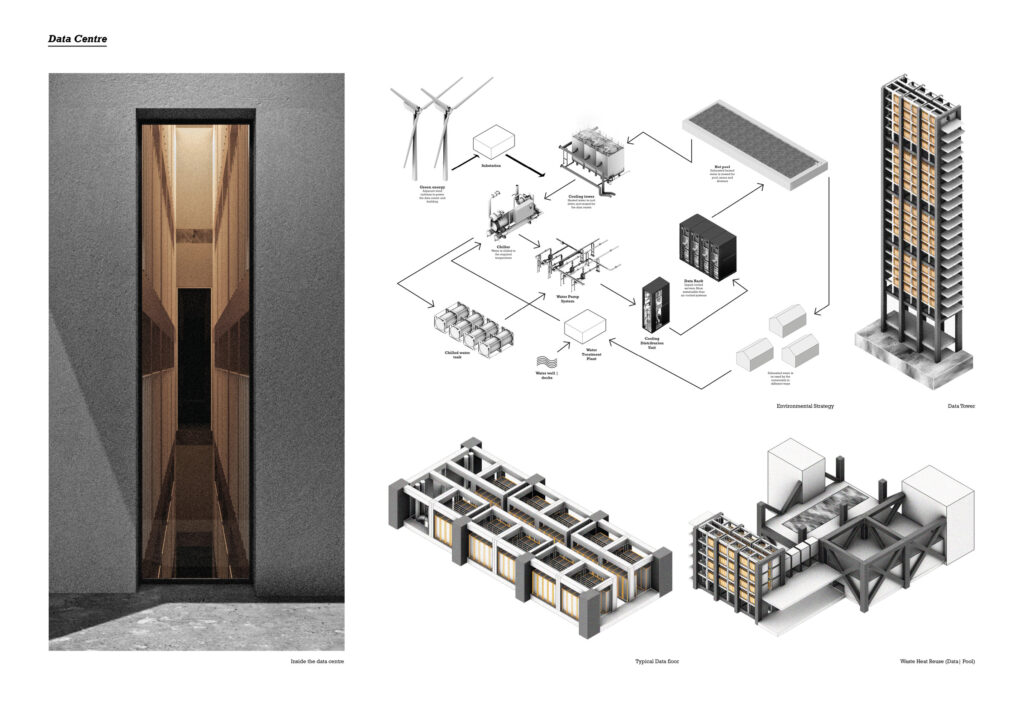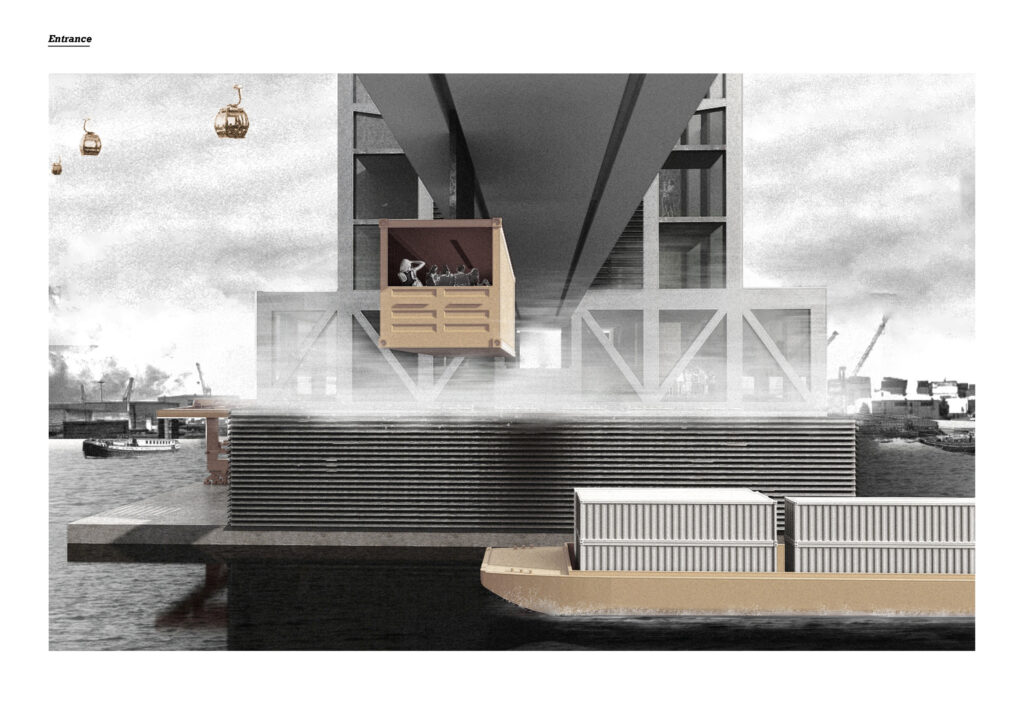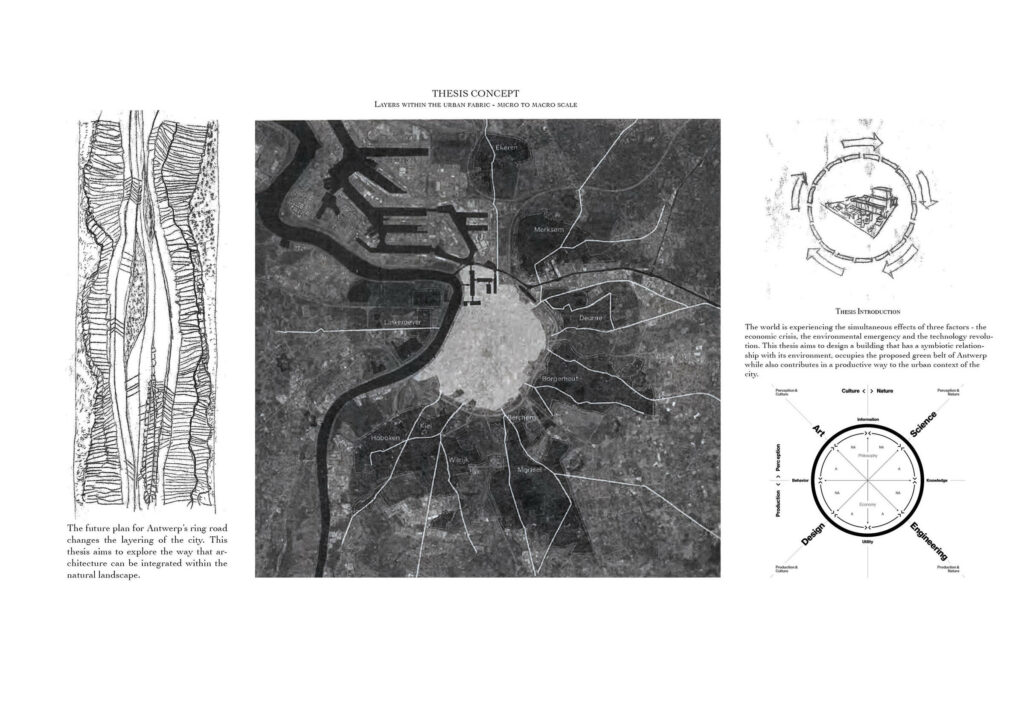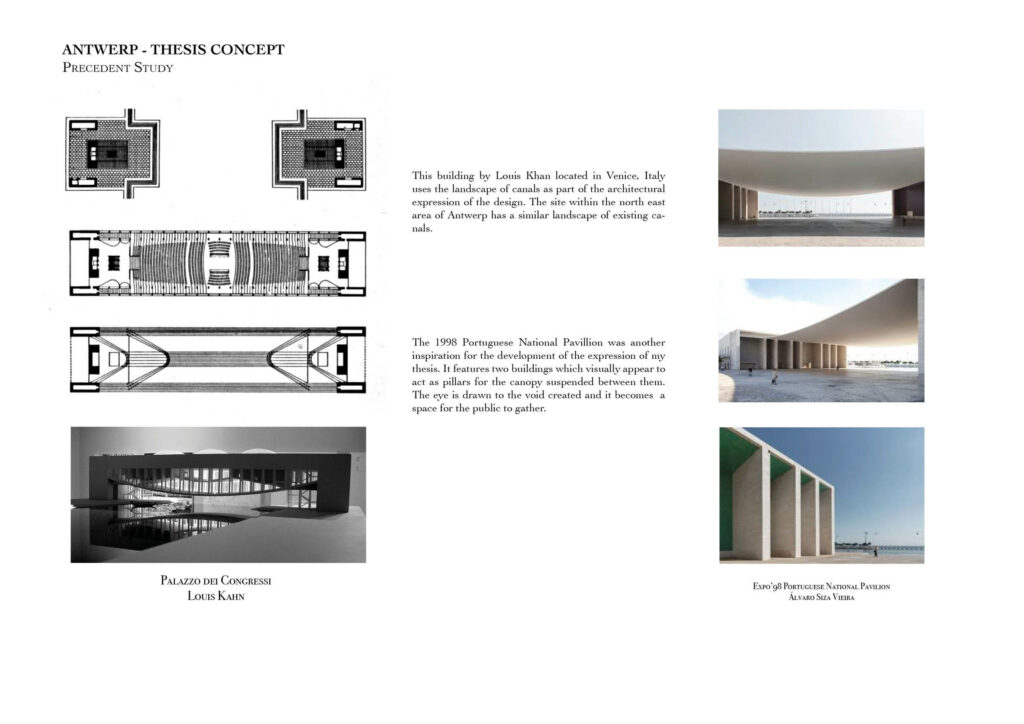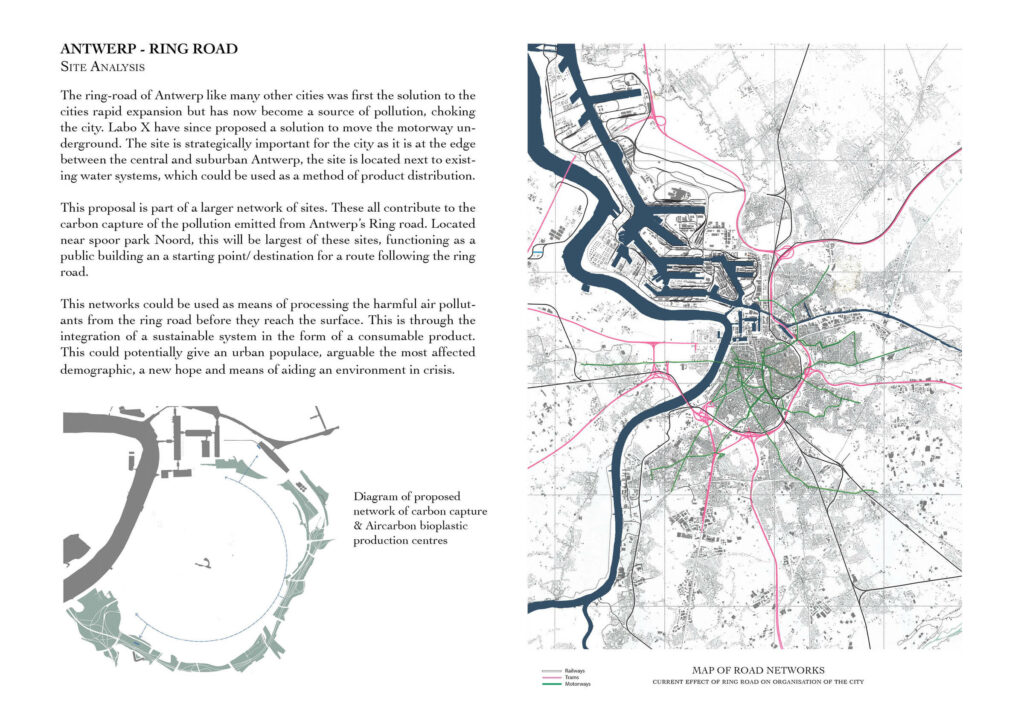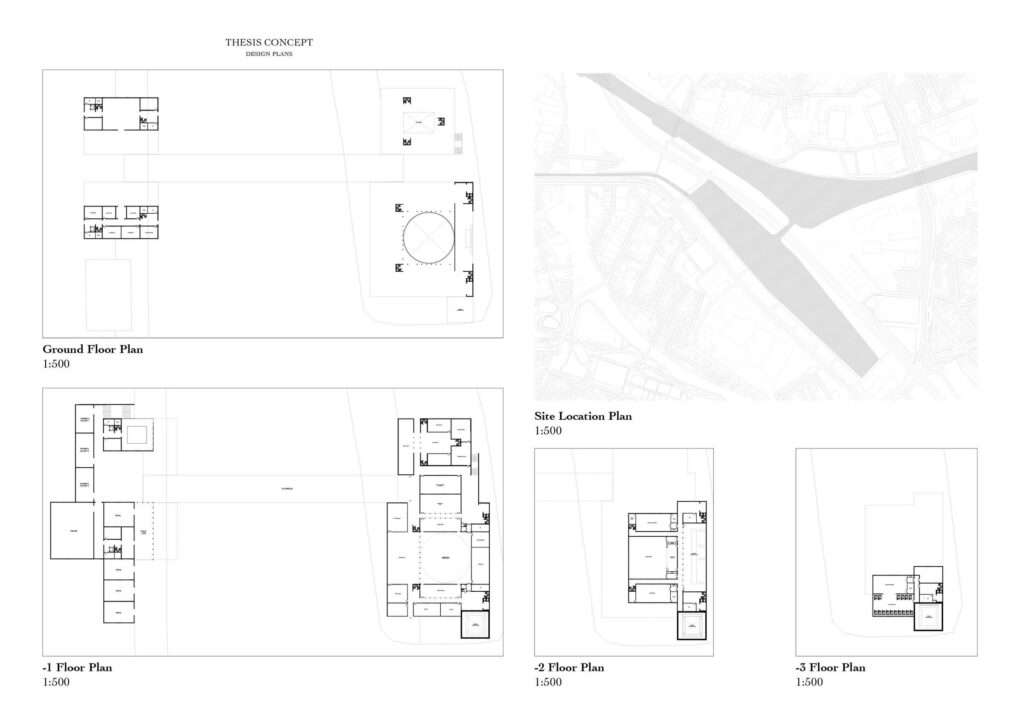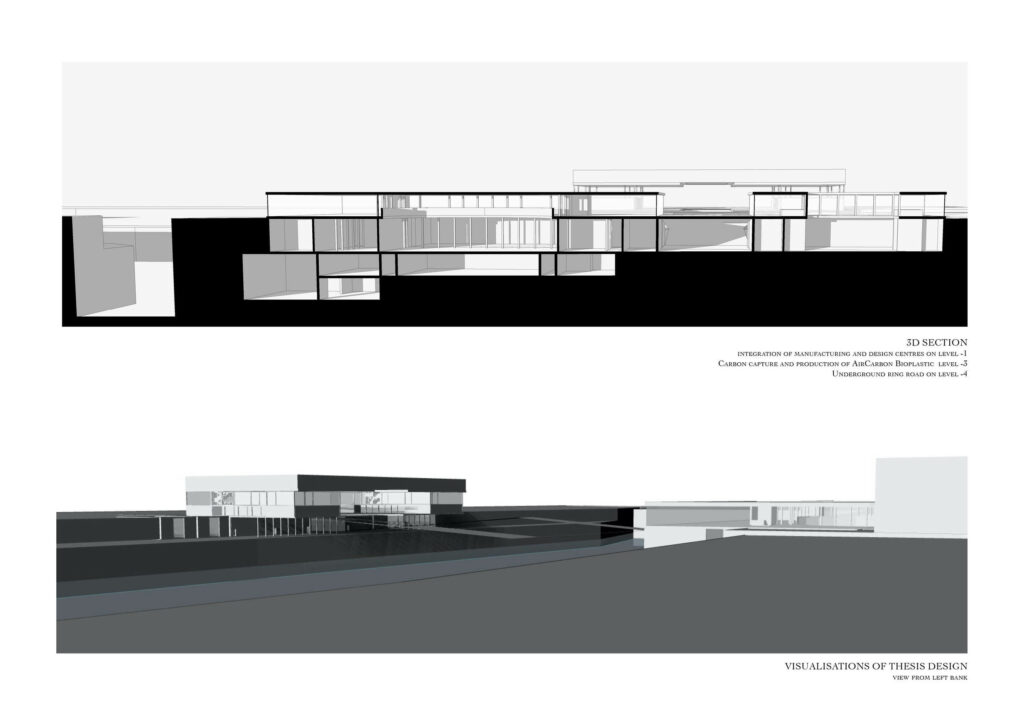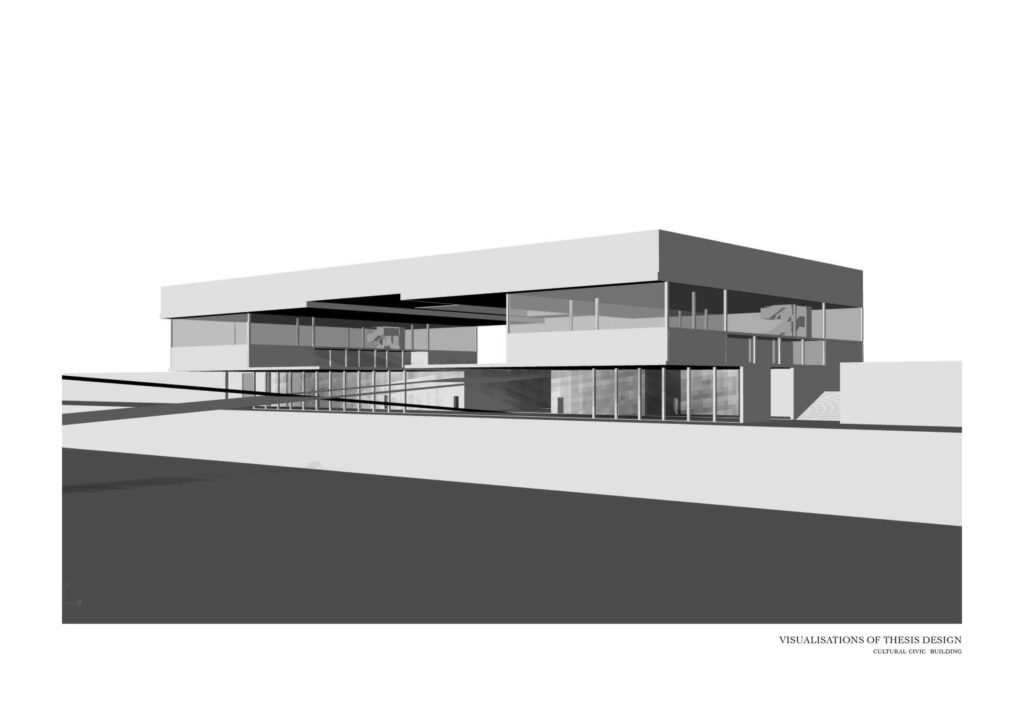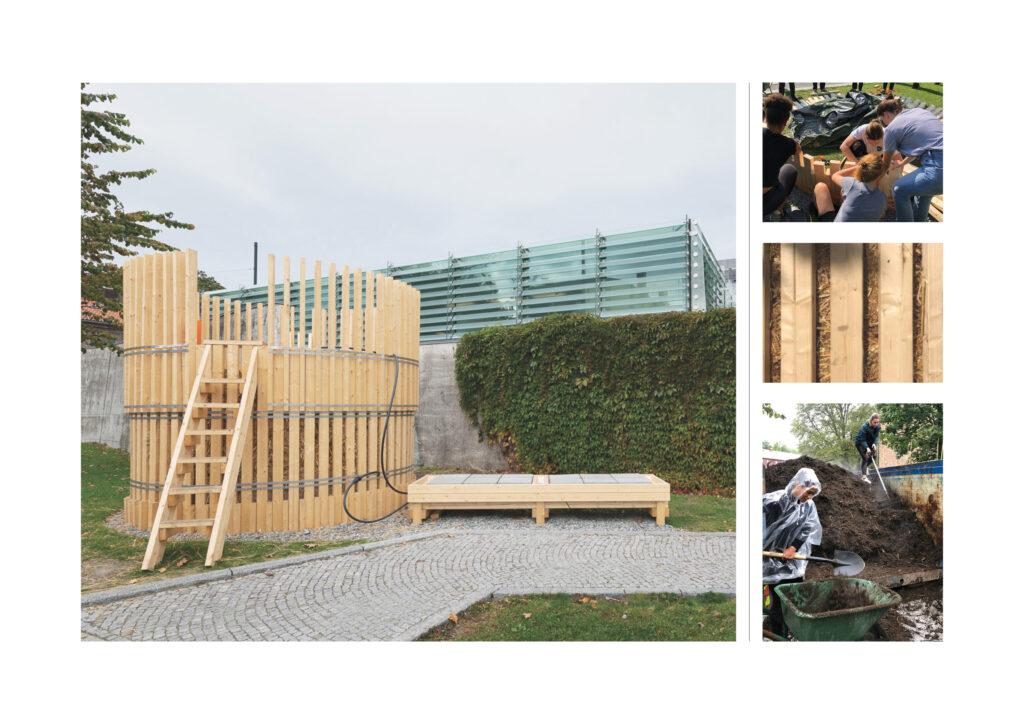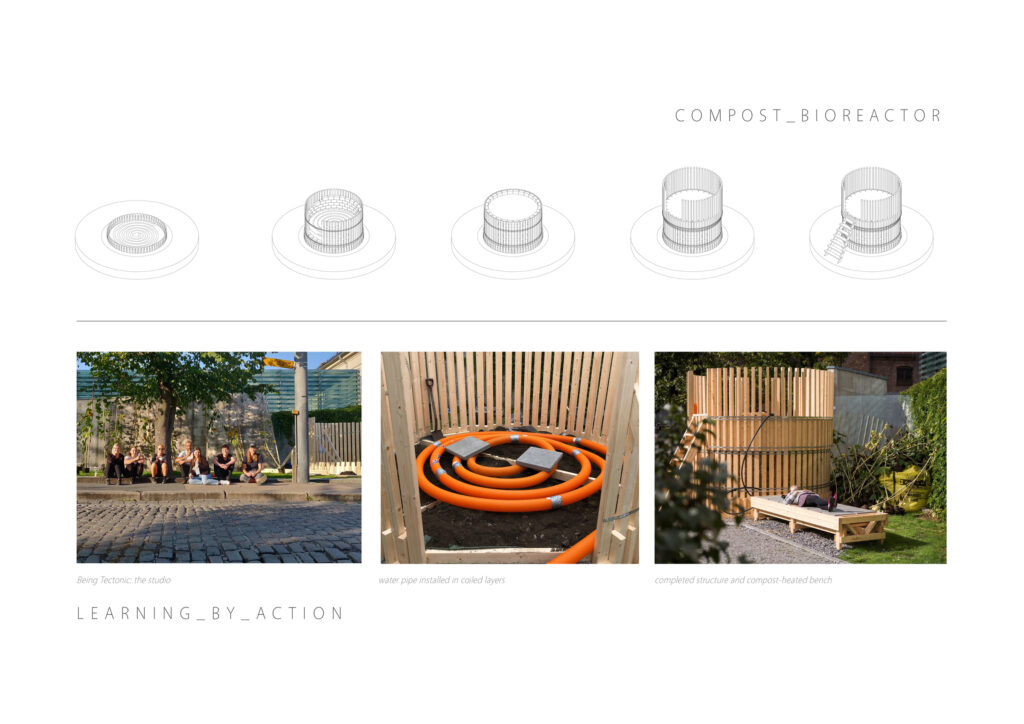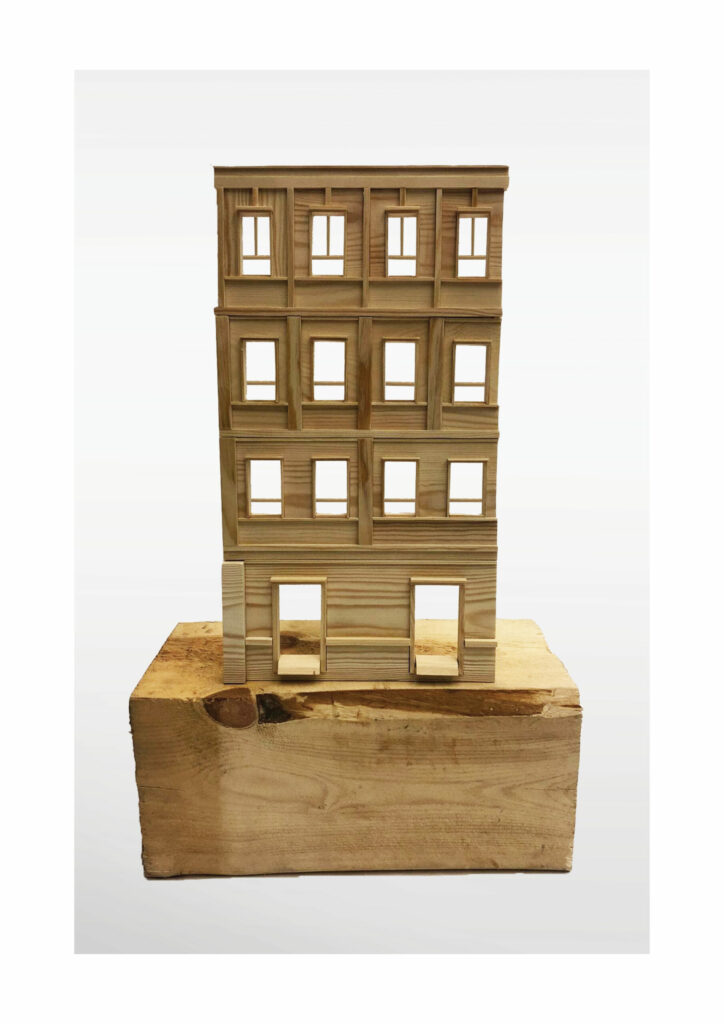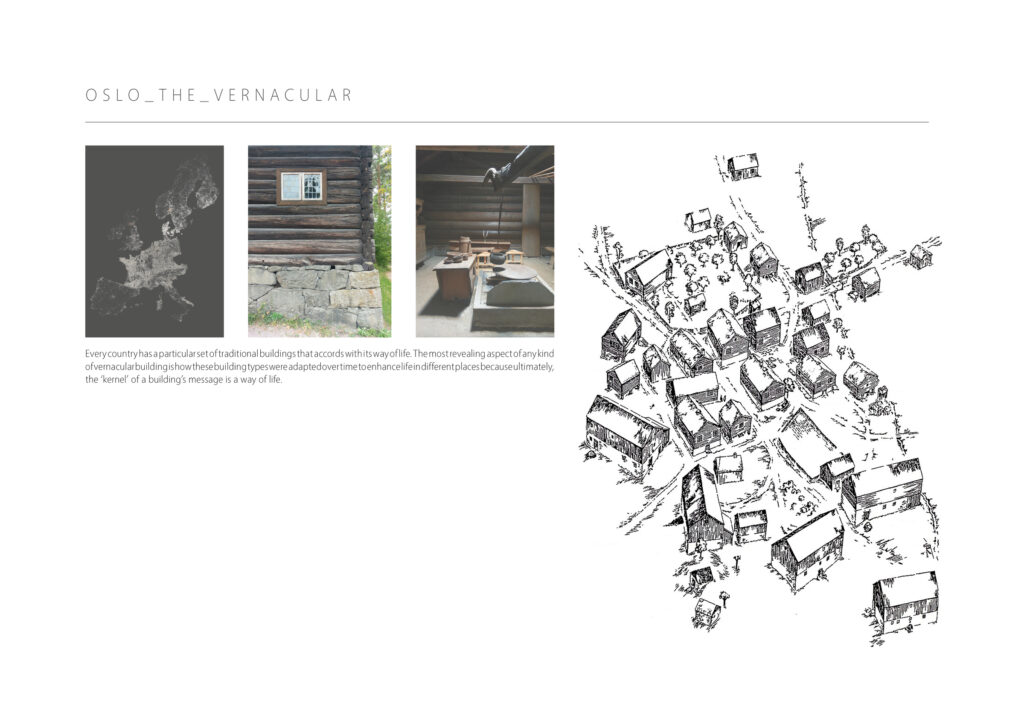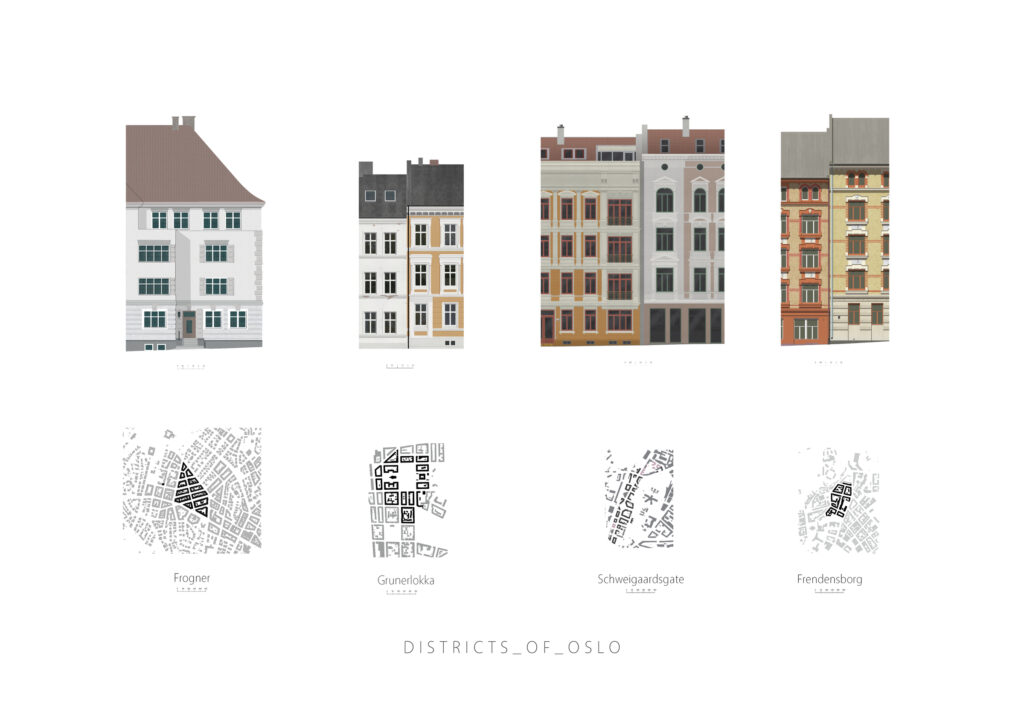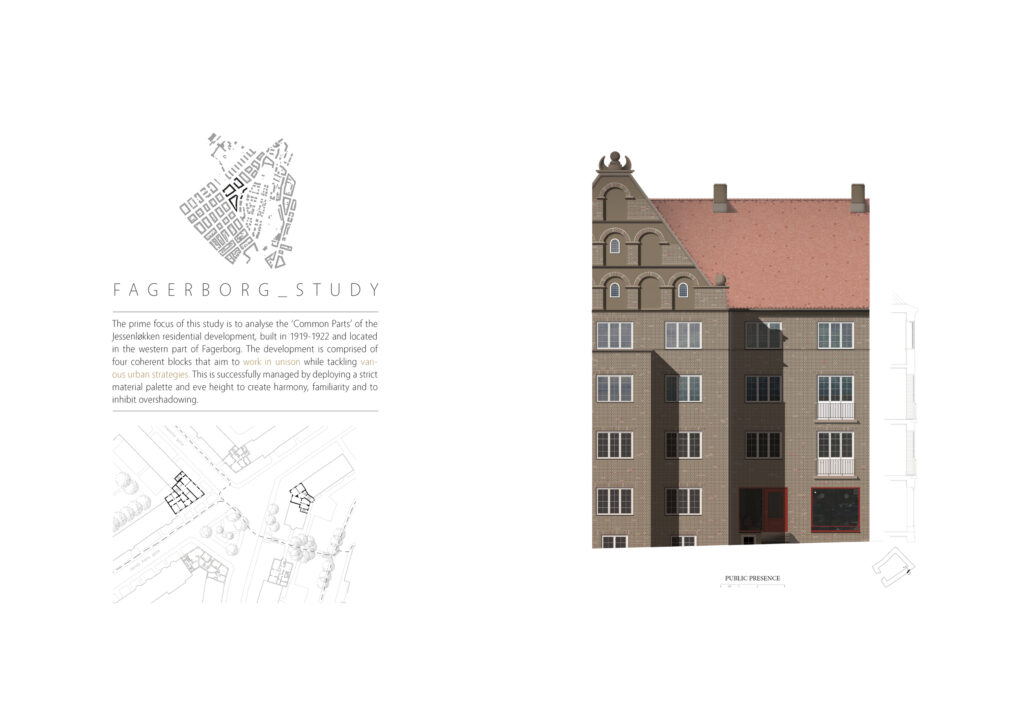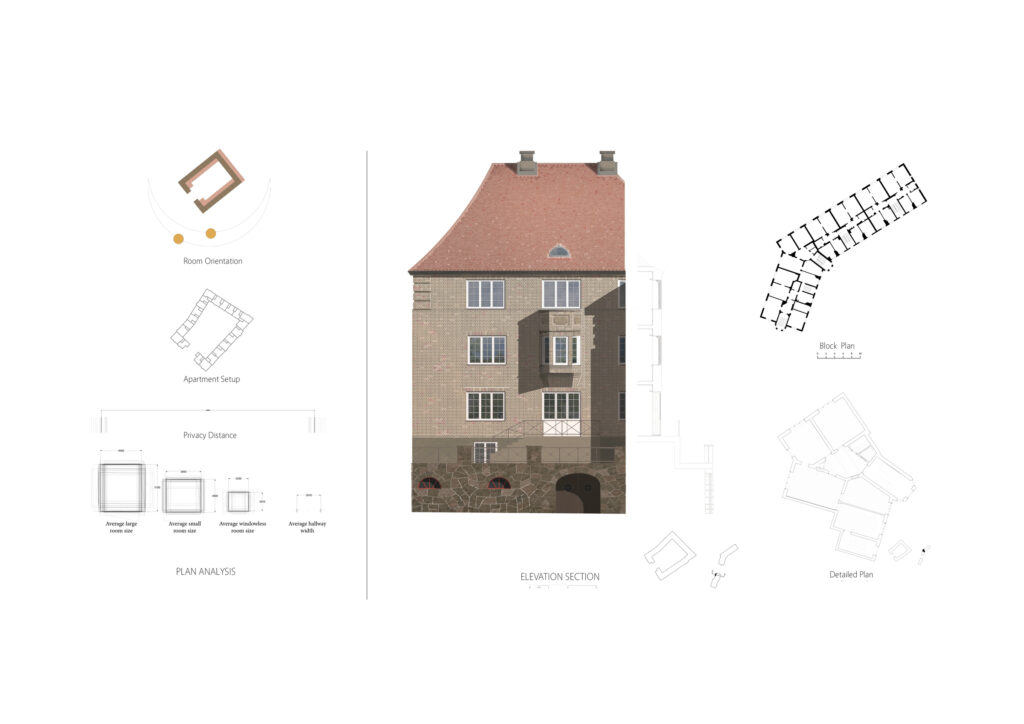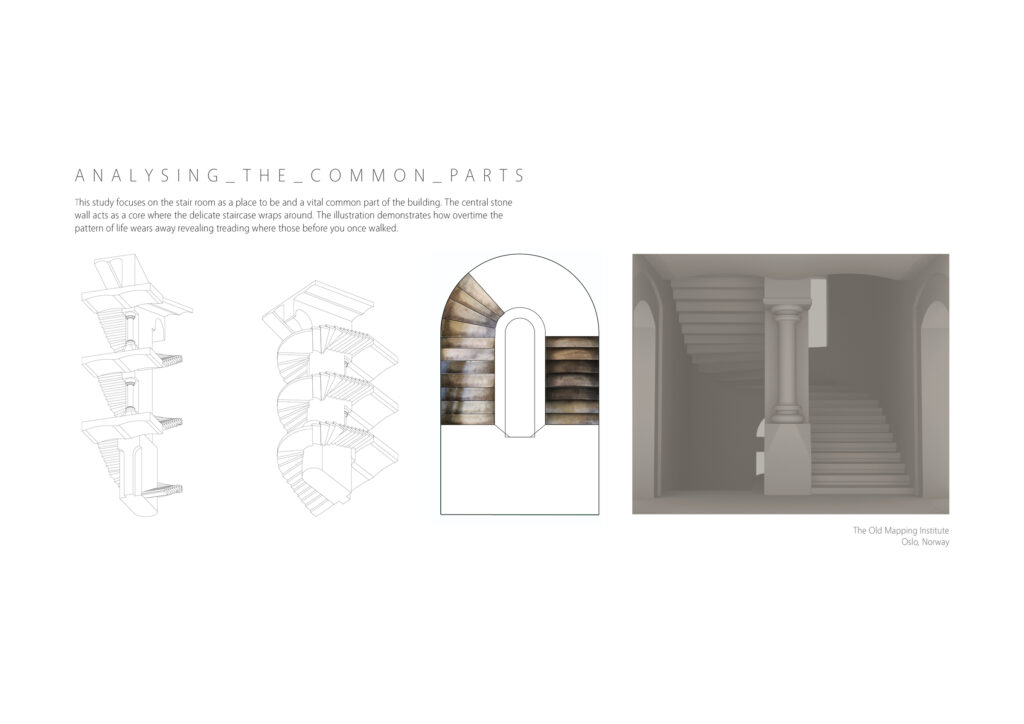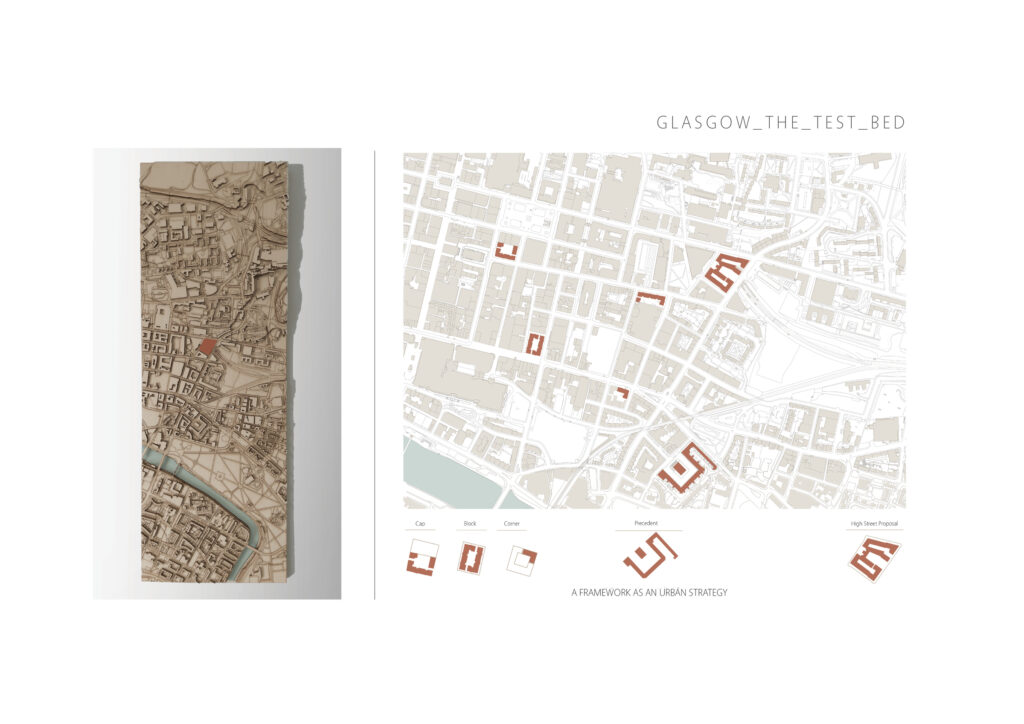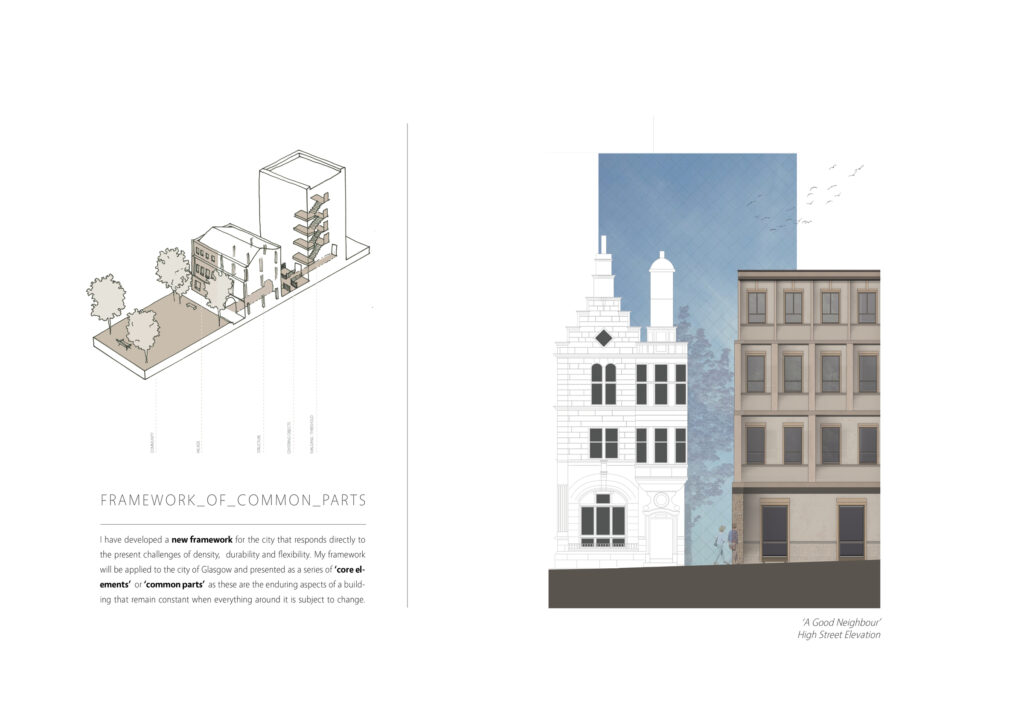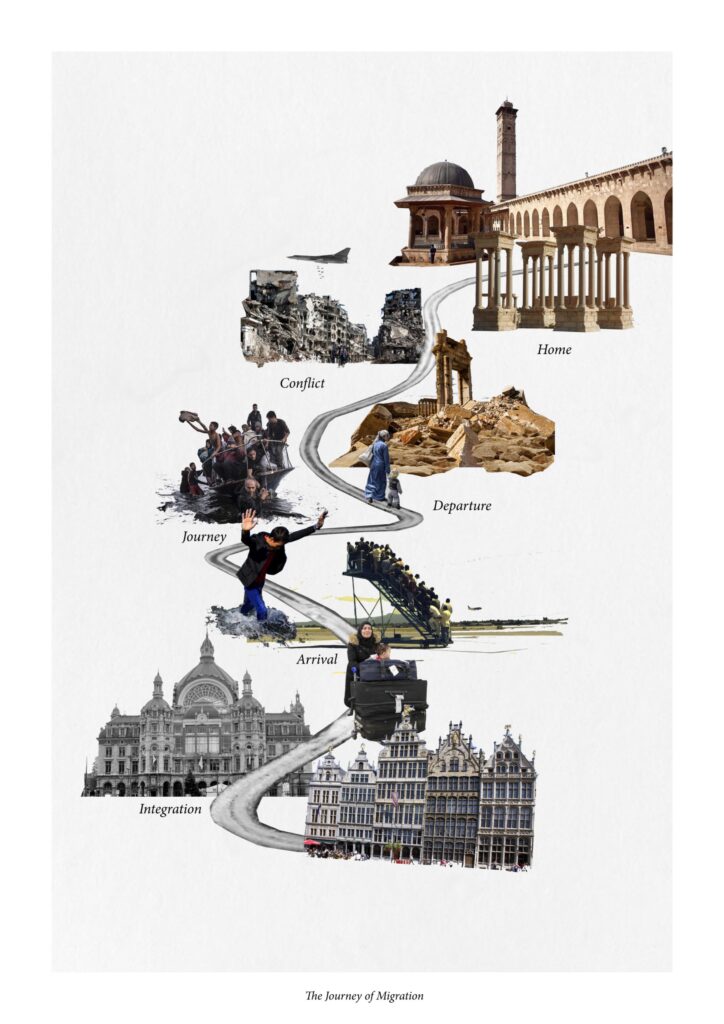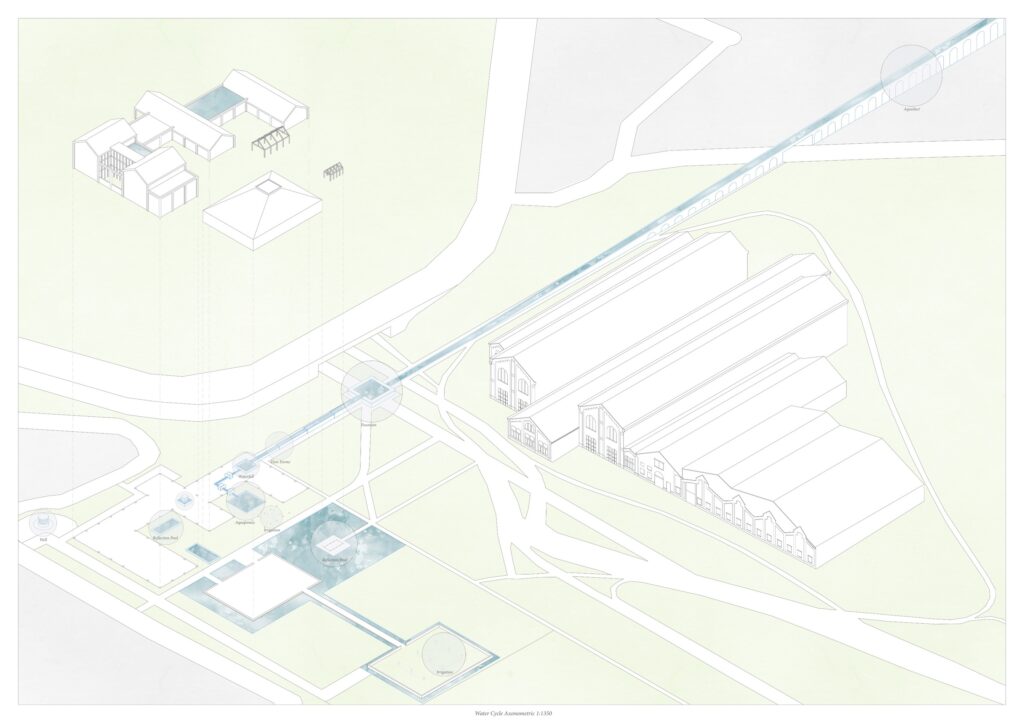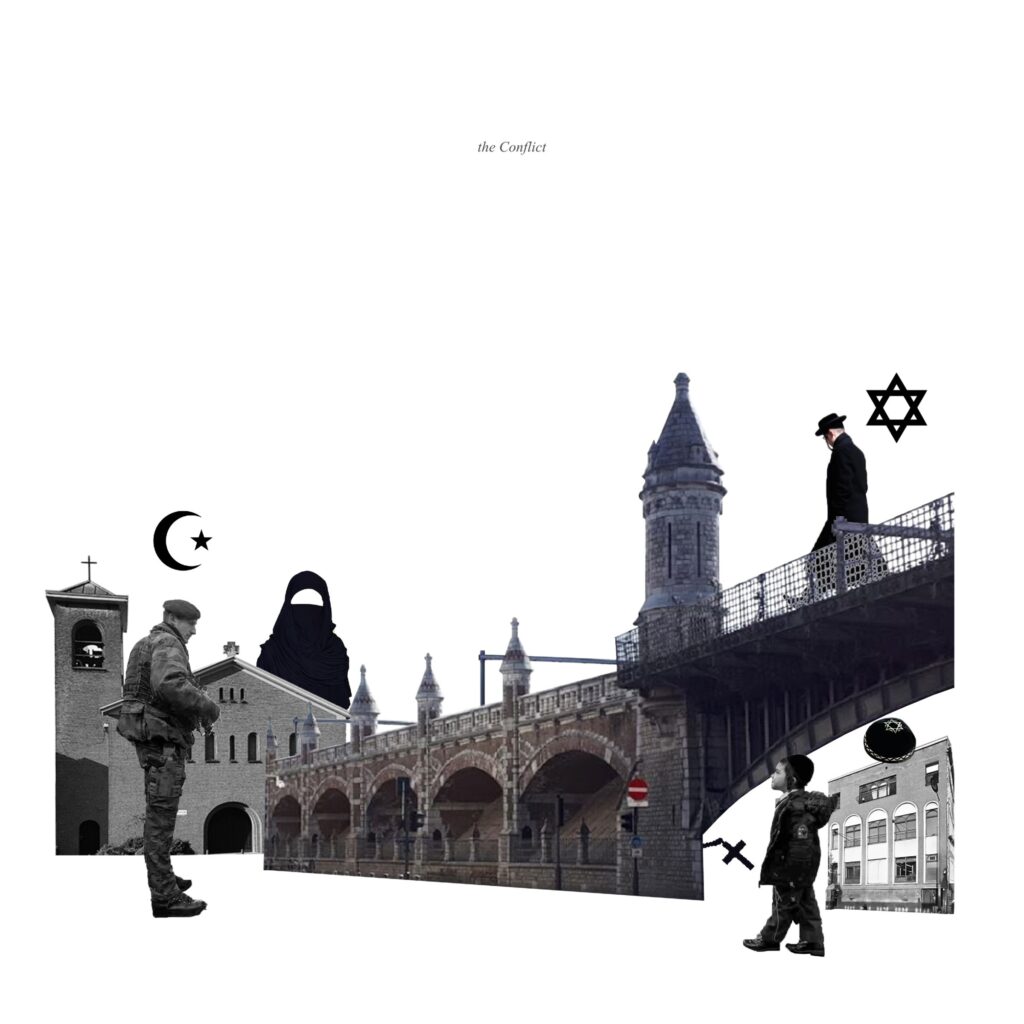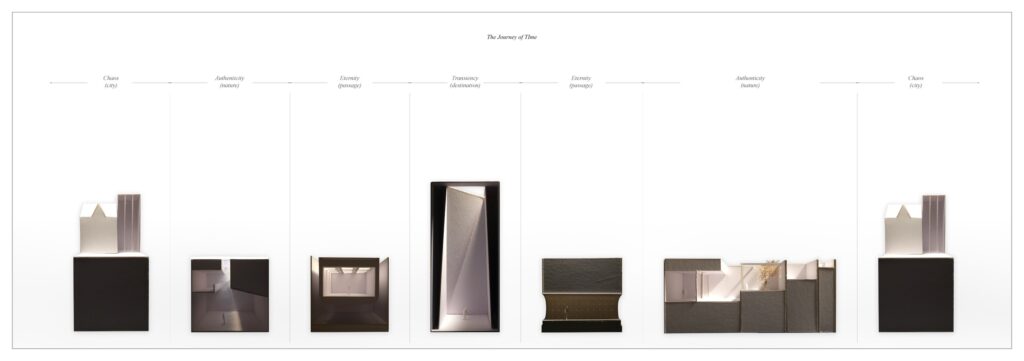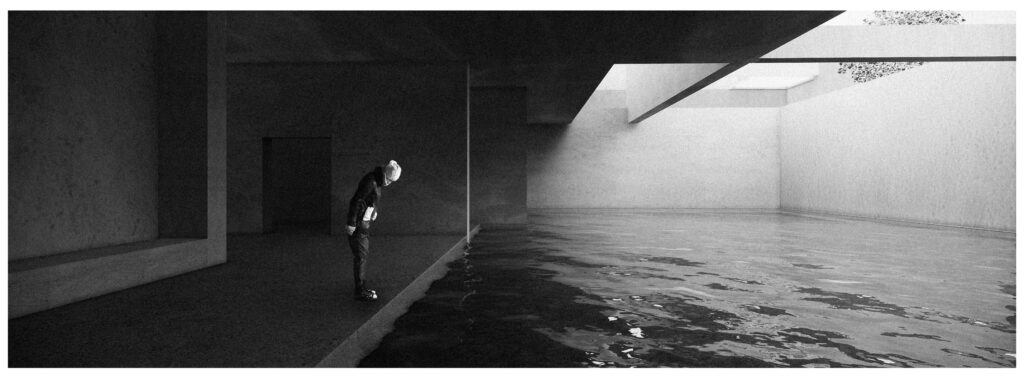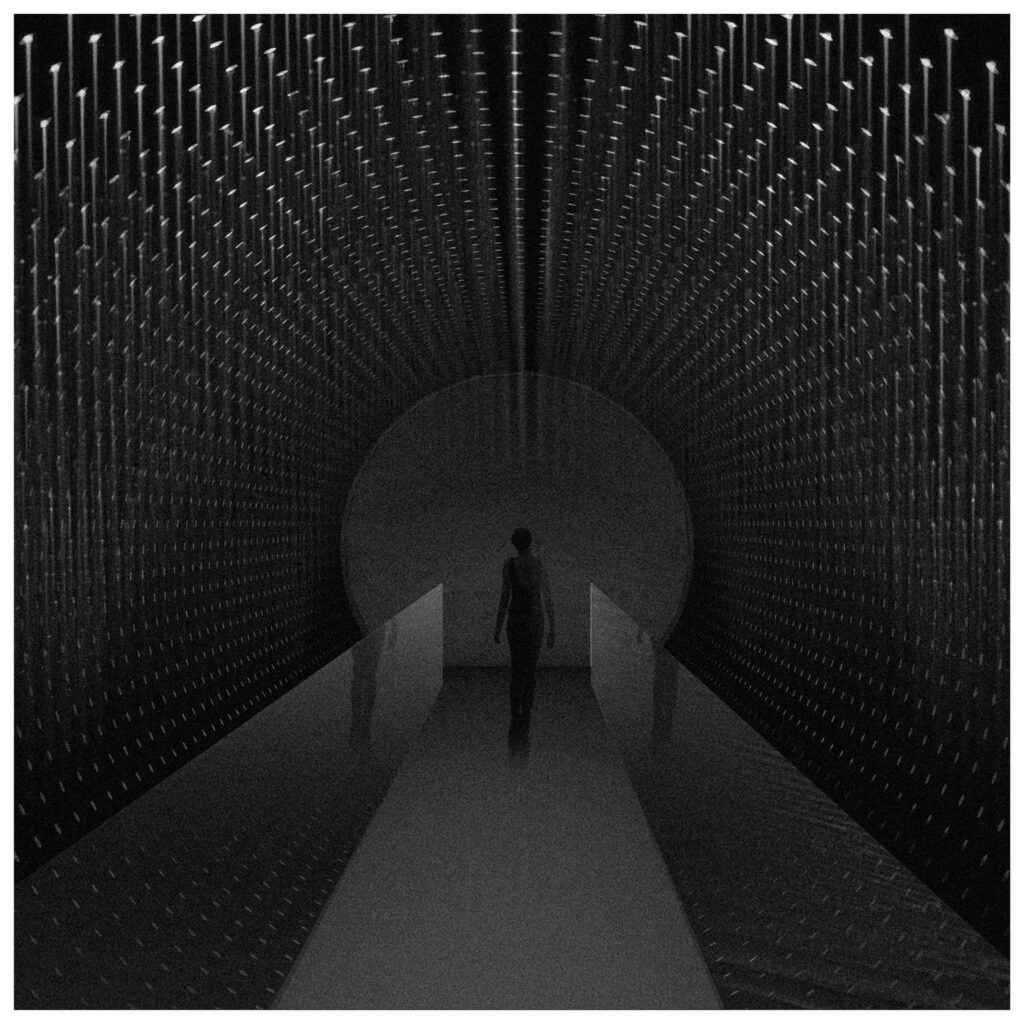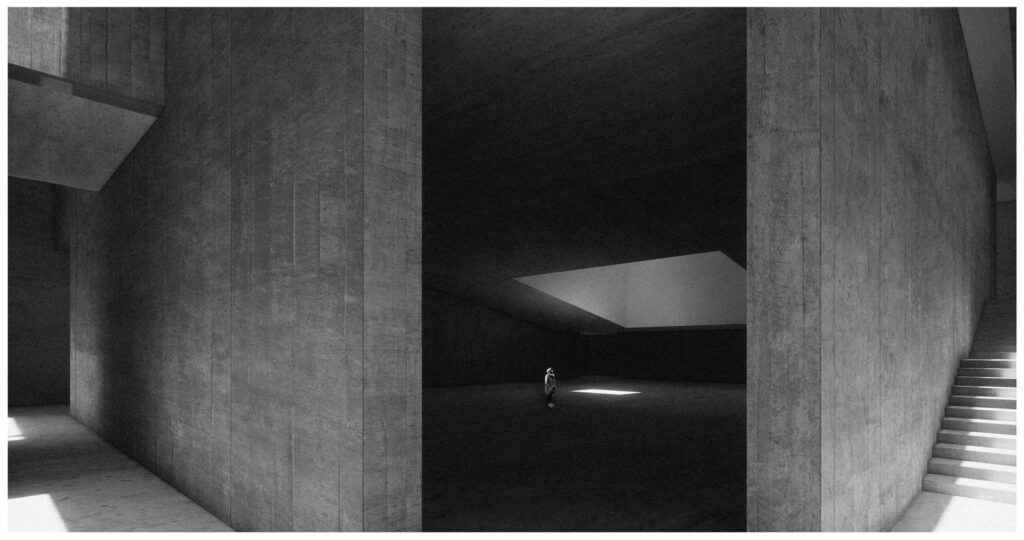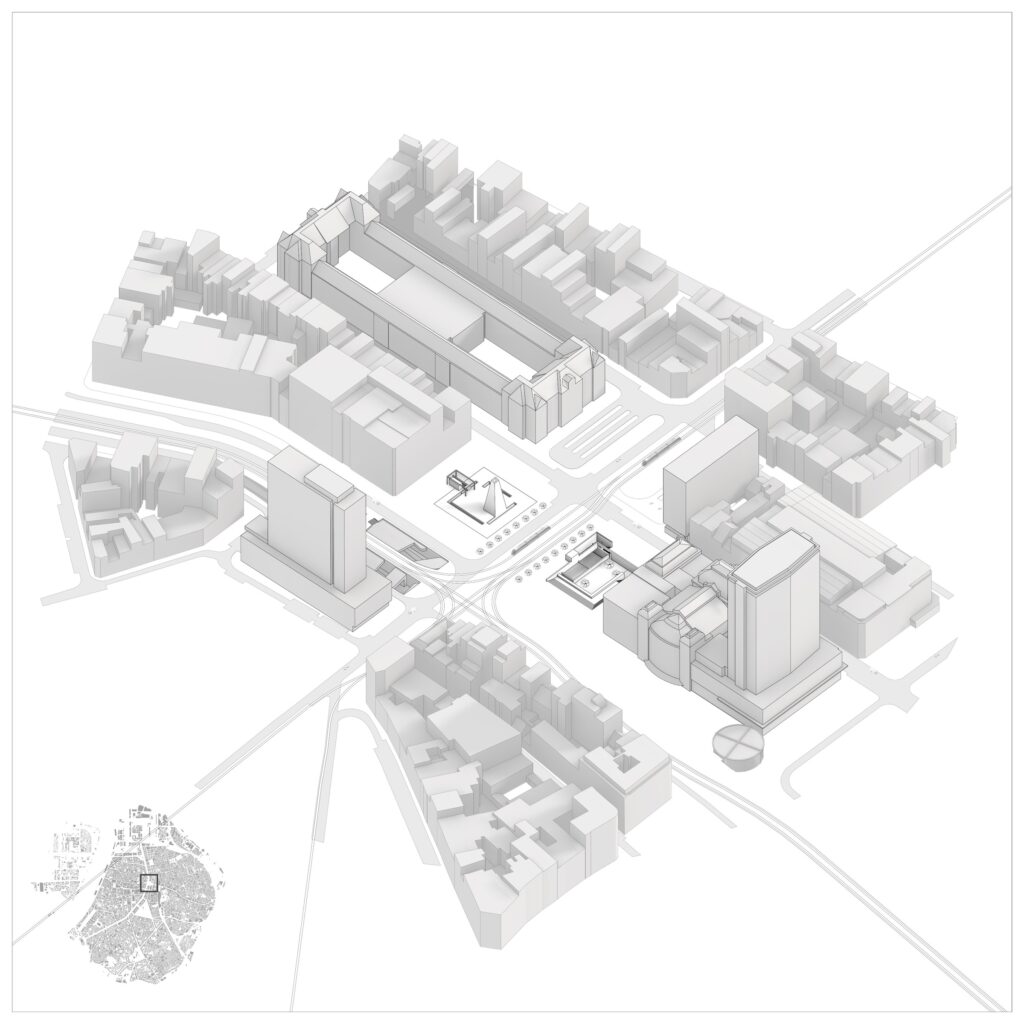MSA Stage 5
The Diploma in Architecture programme is designed to provide the necessary educational framework for students who intend to enter the architectural profession. It is accredited by the ARB/ RIBA and offers exemption from the Part II professional exam. Typically, students who undertake the DipArch will have already studied architecture at undergraduate level. The course is two years long with an option to extend your studies by 1 semester to undertake the Masters by Conversion course. The programme is mainly studio based with supporting lecture based courses in Architectural Technology and Professional Studies. The studio work centres on contemporary issues of architecture within a European climate firstly focusing on Glasgow then on a European city, this academic year Antwerp, with specialist inputs into social, economic, environmental and political aspects of architecture provided by staff and guests.
The first year of the Diploma (Year 4) is the opportunity for students to extend design skills within a rigorous creative studio and to explore architecture as a response to contemporary issues. Glasgow is one of the UK’s most architecturally stimulating cities and the projects are all based within the city as a result. Strategic and critical thinking and a personal approach to designing is encouraged through the studio-projects. This is a preparation for the extended independent study of the final year Thesis Design. Emphasis continues to be placed on drawing and model making as means of rigorously investigating, clarifying and developing a design. This year the projects were the design for a mixed use neighbourhood, high density housing, and the design of a cultural building both based within the Merchant city of Glasgow.
The second year of the Diploma (Year 5) centres on one major project, a Design Thesis. Building on the study and analysis of Glasgow, year 5 students move into the European city, this year focusing on Antwerp and the United Nations 17 Sustainable Goals. The Design Thesis encompasses all the ambition, dreams and accumulated skills expected of a student nearing the completion of their education. It is a vehicle for personal study, in which the topic is selected by the student in accordance with their particular interests and developed in association with the tutorial staff. Projects explore a variety of site conditions within the selected city. The project is developed from concept design through to design in detail with Architectural Technology fully integrated into the architectural response.
Featured
The Ethical City
A Stage 5 Study of Glasgow, Mackintosh School of Architecture. WHAT DOES ETHICS MEAN FOR GLASGOW? This is the question the students of Stage 5 have posed, conducting urban investigations →
Isometric View
King Leopold II of Belgium in the Congo
Misinformation in Modern Politics
Key Strategies
The Approach
Short Section
Urban Forum
Interstitial Spaces
Experts' Debate Space
The Archive
1. Ceramics in Context
2. Timeline of Ceramics in Antwerp
3. Site Morphology
4. Nolli Map of Space
5. Site Proposal
6. Materiality Proposal
7. External View
8. Internal Spaces
9. External View
10. Section through Display Box Window
01. The old and new of Kattendijk lock and Rijnkaai of Antwerp
As one of the wealthiest cities in Europe, the city was brimming with people coming for trades, textiles and a state-of-the-art tailoring services since the Middle Ages. Along with the increase in population and industrial development in the city, the urban area was developed into a commercial area and the outskirts of the city as an industrial area for various industries and logistics use. As the role of riverside changes due to urban development, a new architectural program is presented based on research on context in Antwerp.
02. Flood threats by the climate change and Sigma plan as a countermeasure
Sigma Plan presents different contextual measures for each region adjacent to River Sheldt as a flood prevention measure by the Flanders government, and by taking a first look at the project, it has become an important foundation for presenting strategies tailored to the Katendijk lock and Rijankaai region.
03. Sigma Plan : Strategies
I. In general, from the exisiting concrete water barrier, 90 centimetre extra height will be added to block the overflowing water to the city. II & III. The waterfronts in Zuid are treated by putting the dykes along the river and the foundations are reinforced using slurry wall against the water penetrating to the underground. In the urban context, the openness toward the water in some extent is preferred by the public due to the leisure activities for the citizen. IV. Drainage Installation & Anchor-injection
04. Site Analysis
Eilandje District consists of museums and their supporting facilities. Based on Sigma Plan, the site is planned to defended by the flood barrier. In this regard, I chose the architectural program for this site as a fashion archive which preserve the local designer’s masterpieces and also presents the exhibition opportunities with the elevated promenade as a combined flood barrier to the building.
05. Site & Program
06. Site / Floor Plan
Ground FLOOR PLAN 1 LIBRARY (L) 2 LIBRARY (S) 3 ARCHIVE RETAIL 4 ARCHIVE CAFE 5 RECEPTION 6 ARCHIVE (PERMANENT) 7 OFFICE 8 EVENT VENUE 9 PROMENADE CAFE 10 RETAIL 11 PROMENADE RESTAURANT 12 RESTAURANT 13 BICYCLE STORAGE 14 OFFICE / LOCKER 1ST FLOOR PLAN 1 LIBRARY 2 EXHIBITION 3 OFFICE 4 RETAIL 2ND/3RD FLOOR PLAN 1 ARCHIVE 2 EXHIBITION 3 OFFICE
07. Section
08. Promenade – Exterior View
With the tide park located in Droogdokken and cultural activities of surrounding buildings, the elevated promenade makes the riverside more accessible and extends citizen’s walking area.
09. Fashion Archive - Interior View
The importance of collecting past design records has been recognized by many of fashion brands. Since then major fashion houses such as Christian Dior and Balenciaga collects their numerous fashion pieces and designing process as their brand DNA. Now it is essential to archive the city’s potential assets in the future and allow the public to access them. The main building exposes an accessible library to people walking along the promenade and on-site streets, and the space beneath the promenade, which functions as a defensive wall, is the best place to store valuable items.
1. Natural Disasters
A major hurricane devastates at least one country in the Caribbean every year. While earthquakes and volcanic eruptions are not as prevalent, the Caribbean sits on a tectonic plate which could mean danger at a moment’s notice. This simply means that the architecture found in these places either need to be extremely resilient or adaptable. I have decided to take the latter approach.
2. Structural Model
The image shows the framework of a single ‘modular’ unit which has led to the design development of the thesis project. This form was generated through several iterations which were tested on site.
3. Community: Self-build Pavilion
The concept of self-build is complimentary with sustainability and disaster relief. This liberates the user from having to hire an expensive contractor and recognizes the social dimensions of the process, from consideration of the structure through to the lived experience of individuals.
4. Pavilion Functions
The pavilions themselves have specific functions to address specific needs. They can be used to address social needs such as gathering, community needs such as soup kitchens and market stalls and productive needs such as spaces for isolation and urban farming.
5. Filling the Urban Void
Welcome to Europark, a district located on the left bank of Antwerp city centre. There is an interesting collage of urban typologies and landscape fragments found within the district however, there is a lack of social infrastructure. Ninety-five percent of the land is residential and is otherwise completely isolated and not maximizing its full potential. The aim of the thesis is to solve the problems set forth by this type of modernist landscape such as, the lack of jobs, lack of social infrastructure and numerous urban voids while addressing the needs of the demographic.
6. District Strategy
The thesis proposes the regeneration of Europark by implementing a network of architectural interventions which address social and cultural needs culminating at an urban hub. The interventions seek to improve living conditions in Europark regardless of demographic by using a modern set of design principles which fill urban voids left behind since its completion.
7. Medieval Context
The units are capable of suiting multiple contexts for various needs. This unit solves the need for a social gathering space located in the centre of the medieval city in Antwerp, Belgium.
8. Residential Context
This image also depicts how the social unit can be used in a residential setting to fill cultural voids.
9. Pavilion Adaptability
Bringing people together to build these pavilions will undoubtedly improve the quality of life through a sense of community but also a sense of belonging and ownership. The pavilions are adaptable, multifunctional and self-built. This means that when the units reach the end of their lifecycle the materials can be repurposed to create something entirely new such as housing for residents, an office space or even an urban hub…
10. The Urban Hub
This self-build initiative will be used to train people in construction methodology which then prepares them to handle larger projects such as an urban hub. The following images depict how the interior spaces of an urban hub can be organised to host a variety of functions such as a market, community centre, training facility and more.
Statement
How
Area required to feed a city
Farmers markets & food storage
City strategies
Inner city strategy
Suburban city strategy
Ring park city strategy
Pattern city
The Resilient Agriculture Centre
Gatehouse East
Model (1/200), walnut, sapele
Gatehouse South
Model (1/200), walnut, sapele
Gatehouse West
Model (1/200), walnut, sapele
Brokenness Chapel
Model (1/200), walnut, sapele
Melancholia Chapel
Model (1/200), walnut
Joy Chapel
Model (1/200), acrylic, sapele
Dependence Chapel
Model (1/200), walnut
Axonometric
Located in the Amandus-Antheneum district in the North-East of the city, the thesis project occupies the centre of an urban block on the edge of Sint-Jansplein square. The inner-block location constitutes a foil to the main square, creating a more intimately scaled public space that is less imposing and more suitable for social interaction than the main square.
Tower Storytelling Room
Storytelling communities value a connection to nature, which makes the use of sustainable and natural construction materials appropriate for the thesis. Rammed earth has both a symbolic and literal connection to the natural world and the building expresses such a connection through its architecture and materiality.
Ground & First Floor Plans
Sections
Library Interior
Rammed Earth Models
The left model was created using subsoil I excavated from a local building site by the River Kelvin. Earth model making taught me much about the considerations that must be taken into account when constructing with the material, such as mix composition, formwork design and shrinkage moderation. The hands-on approach is the best way to learn about earth building.
The thesis is community focused and aims to serve primarily the local community of Antwerp Noord, which is a complex multicultural setting of around 35,000 inhabitants of more than 150 nationalities. It is a vibrant and dynamic neighbourhood and one of the most ethnically diverse areas of the city with notable Moroccan, Bulgarian, Chinese and Portuguese communities. At the same time however it is one of Antwerp’s most deprived neighbourhoods. With such a mix of cultures it can be possible for certain groups to become marginalised which can lead to a problem of social isolation within society. The building programme of storytelling related spaces and architectural language focusing on a multi-sensory experience, address these problems of isolation and encourages social cohesion.
Site Model in Context
Programmatic Research – Field Work
Influential Theory
Material Study
Architectural Technology Driver: Using highly sustainable rammed earth paired with conventional building materials for creating innovative forms, not previously associated with the traditional earth material. This is achieved in the design of the building’s detailing and in the methods of construction. My architectural technology in-depth study examined which qualities of concrete could be replicated using rammed earth. This provided the knowledge base for moving forward. The limitations of rammed earth due to its lack of tensile strength can be overcome by using limited instances of conventional materials in support of the main earth structure. The building is constructed partly using traditional rammed earth construction methods of tampering the walls in place and partly using contemporary high-tech prefabrication of rammed earth panel¬¬s to streamline the construction process. ¬¬¬
Exploded Detail of Rammed Earth Tower
Antwerp Fashion Revival
Fashion design urban design
Antwerp Fashion School
Fashion school design
Antwerp Fashion School
Physical model
Fashion School Structure
Fashion school grid shell canopy structure analysis
Bending Active Grid Shell
Physical model study of structural core
Grid Shell Structural Dome
Antwerp fashion school structural core
Grid Shell Canopy
Grid shell structural canopy
Antwerp Fashion Revival
Urban Plan of Antwerp Fashion District
Antwerp Fashion Revival
Section of Antwerp Fashion District
THE GALLERY OF WASTEWATER
INVISIBLE INFRASTRUCTURE
CONSUMPTION OF WATER
The diagram brakes down all forms of waste produced in Flanders. It separates what is reused and recycled with arrows facing down and what is incinerated and put into landfills with arrows facing up. From this diagram it is obvious how much waster we use compared to all other commodities.
PAST INDUSTRIAL PARADIGMS
The proposal is situated in Stadspark in the center of Antwerp. This site is the remanence of the old city wall and moat, which protected Antwerp and is where the cities excrement was dumped. This is just one of many post-industrial sites which are scattered around the city, each was elemental in the cities development but have now all been, or are planning to be, turned into city parks. By cosmetically beautifying over these sites, the city is denying these areas of their past. The thesis proposes this park be returned to its natural state of a waste landscape.
PLAN AND SECTION
WASTE TOURISM
PRODUCTS OF VALUE
UNDERSTANDING THE COLLECTIVE
A WASTE LANDSCAPE
Oscillations
The proposal is a town hall which brings together private ‘introverted’ functions with ‘extroverted’ community engagement spaces. Spanning 4 sites across a residential and industrial block, the buildings create a ‘corridor’ of space which bridges the two programmes and allows users to move between introverted and extroverted spaces. This ‘oscillation’ between part and whole is enabled through spatial flexibility, so that users from each programme can experience a balance of environments. Assembly studies have informed the development of specific architectural ‘formats’ for shifting occupation.
Filtering Boundaries
An organisational strategy of vertically and horizontally interlocking spaces has been used to structure the negotiation between programmes. While event spaces allow users of the introverted programme to depart from their familiar environment and connect with resonant extroverted activity, spaces for daily activities reverse this order, allowing members of the community to enter the introverted spaces. Both typologies permit different levels of exposure to support a balanced coexistence between users. These ‘grades’ of connection are enabled through movable screens which filter visual, thermal and acoustic levels.
Interstitial Spaces
Using the constraint of the two edges enclosing the site, the proposal operates on the local scale and that of the broader urban context. Site investigations in Antwerp highlighted the disparity between extroverted new developments and modest residential territories. Situated in a site of particular tension, the building mediates between these scales. This condition is framed to encourage movement between contrasting environments. Rather than removing boundaries and thresholds, the thesis takes the position that proximity and tension between opposites can be utilised to create co-dependency.
Shifting Configurations
A key criteria for the spaces which allow contrasting users to oscillate between introverted and extroverted environments is the practicality to accommodate changing application. The ‘fine tuning’ of divides between spaces is critical in enabling a connected experience, without impacting functionality. In the event and daily activity spaces, moving partitions allow the balance between experiential involvement and detachment to be calibrated. To enable shifts in ownership, these divides can also take on a variety of spatial and environmental configurations.
Spatial Impressions
While the upper level of each building in the proposal are separate from the extroverted ground floor plane, the lower strata can afford varied degrees of openness and connection to the surroundings. The system of movable partitions is configured specifically to each building, and can be raised or lowered to divide or expand spaces. As a device for controlling levels of exposure, the panels operate at a micro level, whereas fold-able doors along the urban corridor work on the macro level. Movements between part and whole are moderated from the scale of an individual space to the scale of each building in order to control the balance between introverted and extroverted environments.
ANTWERP CENTRAL LIBRARY - Thinking space
ANTWERP - historic context
CENTRAL LIBRARY - Typlogy and programme
CENTRAL LIBRARY - The aims of contemporary typology
ANTWERP - Urban context
ANTWERP CENTRAL LIBRARY - Spatial organization
ANTWERP CENTrAL LIBRARY - Tectonics
ANTWERP CENTRAL LIBRARY - Public spaces
Price: £10
This item is for sale, please contact for more information.
Price: £10
This item is for sale, please contact for more information.
Price: £10
This item is for sale, please contact for more information.
Price: £10
This item is for sale, please contact for more information.
Price: £10
This item is for sale, please contact for more information.
Price: £10
This item is for sale, please contact for more information.
Price: £10
This item is for sale, please contact for more information.
Air Filter Tower at Roosevelt Square
How the architecture contribute in managing air pollution on urban heritage and sustainably integrating into community?
Master plan of the old Spanish walls
The Leien are a series of streets that largely follow the route of the Spanish fortification walls as it was constructed in the 16th century. In the modern days, the entire road on Leien has become a chaotic distribution line of trams, car and buses, neglecting pedestrians and cyclists. This complicated 60 meters wide traffic boulevard along the Leien has formed a huge traffic barrier and becomes one of the main contributors to the air pollution.
Site Models
Diagrams
Diagrams
Roosevelt Square Site Plan
Roosevelt Square Lower Ground Plan
The Oasis of Old Walls
The architecture in this scheme functions as air purifier to clean the air. The historical Spanish wall now becomes part of the ecosystem which turns into urban attractions for the people. In addition, the traffics will be reduced and pushed to one side of the boulevard. The Leien and the old walls are both meaningful to the people and the city. How to promote the sustainable design into people everyday life to benefit community instead of replacing historical site by motorway? The integration of old walls to the new public space brings a greater sense of openness and accessibility to the old fortification, reflect the history of the site, whilst proposing new community spaces socially and environmentally.
The Oasis of Old Walls
Air Filter Towers at the Leien
Tower Axonometric
Tower Plans
Structural Models
Sustainable Design
Deconstruction - reconstruction - deconstruction
Abandoned warehouses viewed as a resource in building a new masterplan, resulting in a circular use of materials.
Industrial and post-industrial areas of Antwerp
As industry has moved areas and buildings have been left behind, in close proximity to the city centre.
District plan: existing and proposed masterplan
33 warehouses have been identified in the district of Den Dam, which lack potential for new uses and for creating public space. These can be deconstructed in order to create a new masterplan made up of the same materials.
Catalogue of elements and materials
Elements and materials from the deconstruction process have been mapped and organised as a database for creating new buildings.
Deconstruction and its potential
Model 1 shows a method of mental deconstruction as a way to study each element of the space and building in relation to its qualities of light, texture, tectonics and spatial qualities. Model 2 shows one way of testing the new uses of structural elements.
A new public building
Through the thesis I have tested the extremes of reuse, in relation to its potential. A new public workshop and market building has been created with a very different expression to the material's original use.
New uses of structural elements
The structure has been taken in use in different ways to allow for large and interesting spaces within.
Combination of brick wall sections
To allow for minimal deconstruction of the original materials, bricks have been deconstructed as larger segments of wall. These have then been combined to create a regular grid form of a variety of brick patterns, allowing for it to be further deconstructed and reused in the future.
New potential of elements
The main workshop space expresses the exposed steel, brick and corrugated metal sheets, keeping an industrial look but used in new ways. The spaces are lit by diffused daylight through large areas of polycarbonate sheets.
Facades
The facades of the storage buildings and the workshops take in use a similar expression, only differenced by the glazing and the roof form.
wolvenberg watergarden
Inspiration is from Junya Ishigamis Biotop watergarden. Trees and puddles create a mesmerising space, where visitors can jump between the stones and explore the flora.
green ring vision
The ring road was built in the 1960’s and replaced the Brialmont fortifications from the 19th century. The ring road is highly dominated by road infrastructure, disconnecting the inner and outer city. However, it has potential of becoming a strategic area in the future city structure, turning into the Green Ring. The City of Antwerp has presented a plan with specific strategies for the Green Ring, focusing on green spaces that connects the inner and outer city, creating habitats for flora and fauna as well as for the people of Antwerp.
brialmont fortifications
To realise the Brialmont fortifications, huge earthworks took place. Soil was removed to make room for the forts and ramparts. Water canals were introduced and had to be dug out. The soil could then be used to build the ramparts. The principles historically used, ground manipulation and water introduction, have become factors informing a new language for the green ring, to bring a sense of what used to be in a present context. source of images: photograph - Natuurpunt Antwerpen Stad, map - Old Maps Online
parks of berchem - existing conditions
A specific site along the Green Ring has been chosen to explore certain strategies, namely the parks of Berchem. The parks include a few traces from the fortification, water bodies, topographical variations and masonry ruins. However, today the parks are fragmented by the ring road infrastructure.
proposal - landscape palimpsests
The method used for developing this project has partly been through landscape palimpsests. Designing through palimpsests is not about preserving the past but to celebrate a collective memory of the site for the users, even if it just provokes a vague mental presence that there used to be something different at this place.
layers
These diagrams shows the layers used to structure the landscape. A superimposed grid, interrupted by the existing water bodies and topographical remains, forms the large scale organisation of the landscape. The ground manipulation and water introduction follows the grid. Desire lines take users across the site whereas meandering paths allows them to stroll in the landscape. The new trees are indicated in orange and strategically placed along the edges to create a buffer between the roads and the park.
manmade landscapes
Antwerp is flat in its topography and the differences in height this section shows are all manmade interventions. The red-dotted line indicates today’s ground condition, and how the thesis proposal further uses ground manipulation to form the landscape.
wolvenberg & brilschanspark
Examples of spaces created with ground manipulation and water introduction.
rainwater & filtration
One of the principles - water - has been introduced in relation to arising issues of urban runoff. Through sustainable urban drainage systems, the landscape forms elements to collect and filter rainwater and recharge the groundwater. The theme of water filtration has informed the program of the building; a bath house. Visitors can enjoy the experience of swinging in pools that are naturally cleaned through gravel beds and aquatic plants. As water evaporates, the pools will be refilled with rainwater collected from the roof. The filtration process becomes a visual part of the building experience and tectonics.
bath house
parkland framing the market hall
A final render/visual showcasing the tim-ber frame market hall in the backdrop of the park.
market hall visuals
Visuals/renders highlighting the market hall in context with the landscape and the feel & look within it.
location
Maps and plans showing the location of my thesis project.
new den dam masterplan
A drawing presenting my new master-plan for the Den Dam area of Antwerp
abstract mapping collage
a Piet Mondrian inspired collage high-lighting the connections and infrastruc-ture happening all around Den Dam ar-ea.
constraints
A visual diagram showing the obstales that the site has to address.
status quo – the issue
Diagram displaying the current circumstances in the area and highlighting the ambition of my thesis for the neighbourhood.
masterplan strategy
An outline strategy for Den Dam.
testing | models | experimentation
A series of various masterplans for the area tested in model form.
visuals
Further visuals highlighting the various buildings and parklands within my thesis design.
Prologue
Story of the Antwerp's Ark and Apocalypse.
Flood, North Sea, the city and the envisioned apocalypse
The Ark: Conceptual Mapping and the Realization
Antwerp's Artefacts
The Archival Relationship: City, Block, Scale & The Ark and its relevance
Deconstructing the Ark
Constituting components of the Ark
Ark Capsule
The Ark Capsule is a self sustaining piece of capsule, capable to withstand various environmental condition.
The Construction Process & Timeline of the Ark
A timeline of construction on the River Scheldt, across a timeline span of centuries. As a narrated, timeline, necessity based line of construction, according to the needs of time being.
The Ark Anthropology
An in-depth understanding on the societal, progressive & cultural norms of the Ark.
The Blueprint
Ground level: Archive Chamber First Level: Upper Archive Chamber Second Level: The Grand Walkway Third Level: Vault of the Artefacts Fourth Level: Garden of Eden & Vault of Paintings Fifth Level: The Vault of Archives (in the Ark of Capsule)
Future of Ark Capsule ; End of the Ark
The Agonistic Assembly
The thesis is set in 2029 Antwerp, whereby following the results of the general election, the New Flemish Alliance (N-VA) break the imposed cordon sanitaire and form an alliance with the far-right Vlaams Belang party. Together they initiate their common mandate for the establishment of a newly independent nation of Flanders. The thesis proposal is for the Flemish National Assembly, a public institution that integrates governmental ministers, NGOs, activists, and the wider public within one building. Several conflictual relationships will be enabled between diverse demographics through the intersection of high/low culture political and public programmes. The proposal seeks to establish an agonistic architectural language through the creation of a contemporary 'Polis', defined by professor Eric Swyngedouw as "the site for public encounter, democratic negotiation and radical dissent".
Insurgent Polis
Belgian Archipelago
I propose a reading of Belgium as an Archipelago of politically and geographically distinct islands. The federal government is formed from a complex arrangement of language based communities, cultural regions, and local provinces, that are fundamentally divided between the Capitalist and Socialist camps of Flanders and Wallonia. Geographically, Belgium is a low-lying country divided into 3 distinct regions: the coastal plains in the North-West, the low-lying polders in the centre and the Ardennes Plateau in the South. Similarly, Antwerp can be seen as a pluralistic composition of discrete islands, held in a dialogue through the urbanisation that connects them.
Site
The proposition is situated around Antwerp's Bonaparte dock in Eilandje, at the threshold of the old medieval city. The unique urban room created by the old docks contains the features of the wider Belgian morphology, as represented by the six historic artworks. The thesis accentuates each feature through a landscape proposal that recreates the three distinct geographical regions of Belgium. The assembly creates an agonistic relationship with each of these constituent parts through a rotated grid that unapologetically interrupts the city whilst simultaneously allowing it to flow through the heart of the scheme.
Flemish National Assembly
The built proposal seeks to express the conflict inherent in pluralism through the intersection of three formal political objects, a public field and the MPs offices. The objects house the debate chamber, the library and the committee rooms, and together they contain the lobby - the space of conflict and encounter between the MP's, activists, lobbyists and public. Each object has a formal masonry crust, containing the political programme, and a lightweight timber nest, which hosts the space of public conflict. The MPs offices are contained within a new city block, that reads as part of Antwerp’s grain. Suspended above is the field - a three-dimensional ruin that contains the public programme of the assembly (studios, broadcasting suite, workshops, press offices, and exhibition halls). This surrounds the government, creating a constant tension between political and public life, whilst remaining open to the city.
Tectonic Pluralism
The detailed design of the assembly is driven by the principle of Tectonic Pluralism, which is defined as the dialogue between discrete design languages. The assembly is composed of masonry crusts, timber nests, a 9x9m concrete frame, CLT boxes, and steel servicing and walkways. Each distinct space follows its own material logic, resulting in duplicated structures and enclosures. The threshold between each enclosure becomes a terrain vague, a liminal space in which the public and political can engage in agonistic encounters.
Parliamentary Lobby Section
The Lobby & The Field
Testing
Process
The work exhibited thus far was completed in March for the purposes of an interim review, and is therefore not final. The thesis has since developed in several key ways as illustrated in the bottom row of sketches. Programmatically the changes densify the scheme, by introducing four political objects (library, committee rooms, broadcasting suite, ministers officers), moving the debate chamber into the lobby and surrounding the heart with more playful and engaging public programmes. Architecturally the proposal has become considerably more open and loose, by breaking down each object into a collection of distinct elements. The work is ongoing, and the current intention is to complete the thesis in July. Any developments towards the final project will be recorded and published on my upcoming website.
Concept collage of design thesis: ‘Act Natural’
Principles of nature have been followed throughout the design process. Situated in the university campus, the thesis proposal uses the design of an Innovation Research Centre for Biomimicry to provide opportunity for the following: To create more opportunities for biomimetic design which accommodates a cross-culture of disciplines which all take inspiration from the natural world to solve contemporary problems. To bring nature back into the city and increase biodiversity. To create soft touch and sympathetic architecture. To explore natural and organic forms in the design.
Green Space Analysis
With 15m² of public greenery per inhabitant and only 14% of the ground surface being soft urban landscape, Antwerp’s medieval centre has the lowest percentage of green area.
Urban Strategy
The proposed Innovation Centre for biomimicry is connected with The Royal Zoological Society of Antwerp located at the zoo and botanic garden. Green corridors have been introduced for nature highways, linking up existing green areas in the city.
Site Analysis
Study of existing species found on site and target species to be reintroduced.
Key plans
n/a
Cross Section
From left to right, the section describes the two storey accommodation block, three storey research and design facility, shared atrium café, below ground lecture theatre, prototyping hall and workshop facility.
Elevations
n/a
View through the building
n/a
Workshop and prototyping space
n/a
Close up elevation and section
Notwithstanding the decision to design out artificial strategies through material specification, structural design, environmental design and services, the buildings naturalness becomes most apparent in the greening of the external envelope.
Axonometric of design proposal
n/a
The Plastic Cycle / The Program
Most plastics on this planet end up in the ocean. Whilst recycling schemes in Europe claim to recycle waste produce, vast quantities of plastcs are actually sold overseas and dumped into landfills or into the ocean. Therefore there is a large requirement to close this system off and ensure that the plastic waste is reclaimed and re-purposed. The program of the thesis aims to provide this service for the waterways of Antwerp, in a way that allows teh public to understand what exactly is happening within their own city.
The Site
The location for the thesis was chosen because of the relation of the existing buildings to the city and the port. The Loodswezen building once was the base of operation for the city's port pilots and stands as physical connection between these two. The site was also significant due to the fact that it is in a promising part of the city, but has never been connected. Throughout its development it as always been separated by canals, trainlines, tramways and roads. As such this was an oppertunity to provide the City with some active waterfront space which could be enjoyed, instead of being hidden away.
Site Location PLan
The location of this site is on the outskirts of the historical city, and the old port. As such this area of antwerp is largely developed and the oppertunity to provide local residents with open living space is small. As can be seen from the location plan, this site provides a large area with access to green infastrcture and is one of very few sites along the entire east side of the river to utilise the riverbank for indiviudal recreation.
Project Plan
East Elevation
Material Study | Detail Section
The project program revovled around the re-purposing of plastics and reducing the waste of the city. As such it seemed like an oppertune moment to explore how construction could also occur with reduced wastage. As such it was the intention of this thesis to explore how architecture could be built at large scales using natural materials and materials from the local area. As such much of the construction is proposed through reclaimed bricks, timber, and rammed earth.
Site Cross Section
Key Spaces & Visuals
01. It is said that represents the heart of Europe. The city is a complex ensemble of social, economic, and cultural simultaneities that can be understood in its architecture. A construction that speaks of the social and organizational structure of a place. 02. The city is understood as "An architecture, and this simultaneously, as a construction of the city over time." 03. The river was his origin, it brought wealth but determined its character. The city reminds us of its commercial and defensive nature. 04. Its Architecture is expressive, retains the patina and the character of the people, their traditions. It builds on itself, and it is temporary, but its idea endures.
05. A find triggers the project, a baroque monument, and a ruin next to it. A 15th-century Dominican monastery lies forgotten, around it a collection of fragments that contain and are part of the history of the city. 06. In 1262 the Dominican Order began the construction of the first monastery Church. 07. The locale has been built as a result of the destruction, re-construction, alteration, and changes of use. A sort of factors that enrich and shape the idea of a place that is still alive but forgotten. 08. It is an area of religious worship, it was a monastery, church, warehouse, wedding chapel, and kindergarten; monument, ruin, and point of tourist interest but above all, the civic centre of public life. The block responds to the city, adapts to its inhabitants, and lasts over time. An event In 1698 a heavy fire overwhelmed the complex, destroying the roofs and leaving 3/4 of the monastery in ruins. The reconstruction of the church begins, it is financed with the sale of the monastery to private owners. 09. Urban archaeology and the study of pre-existing elements of the project are part of the working methodology. The inventory appears as a study, catalogue, and analysis tool to understand the stories behind the architecture.
10. A choreography of complex geometric and spatial relationships reveals the different elements that make up the block. The vestige is made up of buildings from the 15th, 17th, and 19th centuries. 11. A four-winged monastery set around a courtyard adjacent to the church. A ruined two-winged monastery. The old library and herbarium. A garden, full of small vestiges and altars. A neo-classical garden wall and a monumental gate. 12. As a result of the discovery, an exhaustive study begins to understand history and culture through elements, objects, and materials, but also the ability to adapt and reuse the different elements without losing their original idea. On these remains the project will be built, the city had chosen its place.
13. Antwerp is perceived as a palimpsest, a cluster of clearly visible temporal layers that tell us a story. In the same way, the project wants to be erected on what is already built. 14. Three stories tell us about the project and allow us to reinforce this idea of time layers. The first is how to reveal existing layers through the controlled dismantling of insignificant and dilapidated buildings. The second, Insert a set of activating objects that give the place of function and cohesion. And the third, to create a contrast in the architectural language that speaks to us of the dialogue between the new and the old. 15. If civic and cultural public spaces are one of the most fascinating works of architecture that define the city, we want to build one more, representative of the time and place, of a collective and ecological nature.
16. A house of memories is proposed. A museum in the form of a flexible cabinet of curiosities that celebrates the complexity of the social fabric through its collective memory. Collective memory understood as the soul of the city, which is, in essence, the city itself and its people, their stories, and history. 17. The museum studies Antwerp through common and mundane objects that can evoke memories and feelings while telling us their stories. 18. The Forum offers a space to encourage citizen participation, debate, and reflection concerning the destruction, and construction of the city: past, present, and future. 19. An archive for people's memories offers a space dedicated to collect, store, and exhibit citizen's objects and their stories. Everyone has the choice to be remembered through their objects. 20. The memory is enlivened, stimulated with ghostly and blurred images, the opacity and translucency of the material are used as an evocative strategy.
21. The pre-existing state determines intervention at different levels. A building facade is shown before the city. A flexible gallery of light construction with precast elements is introduced into the patio and covers it. It is reversible and provocative. The ruins are consolidated becoming a new set. The garden harmonizes and unites all the elements. 22. The facade building arouses our curiosity, blurred figures in movement draw our attention. We access a hall of exaggerated proportions that transits between the ancient and the contemporary. Suddenly, we see it, in front, a wide staircase that guides our experience, to reach it first, we must cross part of the old building and enter the courtyard. Upon access we perceive the new inserted volume and the tension it generates. One facing the other, they stare at each other as if wanting to start a dialogue but they never touch, they observe. The volume appears raised from the ground, supported by a swarm of columns that are familiar to us. Iron supports recovered from industrial structures along the river, form these supports.
23. The long and narrow galleries of the old monastery evoke the most medieval city, collecting the individual memories of its citizens. In contrast, the inserted volume presents wide and open spaces that are reminiscent of the city's ambitions and aspirations, contain their collective memories, and represent their transformations. The main circulation is established in the inserted volume through which we access the different levels, building metaphorical and physical bridges between both structures that allow us to experiment and frame different moments, thus establishing the link between both interventions.
24. The shape is not important, the contrast is. The pre-existing architecture is of medieval geometry and character, ornate and stereotomic. The scale reminds us of the power of the church and its symbolism. The intervention seeks contrast and temporal evidence. Lightweight steel and timber structures lift the new volumes of simple form. The contrast is produced with the use of glass with different opacities that reinforce the lightness of the ensemble.
Development Model 1:1000
Decentralising the City
Antwerp's Civic Framework
Antwerp City Plan
Study Models
Urban Repair
Approach
Civic Courtyard
Circulation
Elevation, Section AA
Infrastructure as performance
Concept Collage
Entrance Elevation
Elevated View
Facade View
Site Plan
Layered Facade
Facade at Night
Integration of Services
Juxtaposition Field. (Photoshop Collage)
How can we expose, manipulate and utilise grain elevators and their industrial journey to integrate and welcome surrounding residential streets and activate community? Thesis identifies the area of T’Dokske, Merksem, as an area of vast juxtaposition of form, scale, function, purpose, class, materiality, infrastructure, density and permeability. The neighbourhood consists of industrial and residential terrain. Mixed neighbourhoods are generally a positive thing, but in the case of T’Dokske they behave as numerous mono-functional areas, with a lack of integration. The residential / industrial clash is further enhanced by the lack of boundaries – there is no definition between residential and industrial, thus creating contested terrain. Due to the industrial / residential permeability, residents, pedestrians, cyclists, HGV’s, vans, cars, children, boats, commuters, workers all share the same spaces. Historically, industrial T’Dokske had a strong relationship with the residential core of Merksem, but now this no longer exists. The thesis aims to re-establish this.
Anaerobic Digestion Park. (Physical Model, Photoshop Collage)
View from window of neighbouring street towards the new anaerobic digestion park.
Productive Landscape. (Physical Model, Photoshop Collage)
Grain elevators provide a large blank screen for outdoor movies in the summer months.
Storage tanks as Public Space. (Physical Model, Photoshop Collage)
Bio-waste from grain factories is turned into clean energy via the process of anaerobic digestion.
Landscape for the community. (Physical Model, Photoshop Collage)
Someone takes a sunrise dip in the dock.
Natural Elements. (Physical Model, Photoshop Collage)
Over time, anaerobic digestion tanks are left to allow nature to colonise and take over, blurring the line between industrial and natural landscape.
AD Park Site Plan. (CAD line drawing)
Landscape plan showing anaerobic digesters as human-scale undulating parkland.
Disconnection amongst Coexistence. (Site Photograph, Google Map Image)
The catalyst for the thesis project, when visiting Antwerp I was disturbed by the clash of residential and industrial terrain. T'Dokske (the docks) in Merksem, Antwerp, used to have a strong relationship with the industrial and residential context, but this no longer exists. However, the industrial / residential site is permeable, which means residents, pedestrians, cyclists, HGV’s, vans, cars, children, commuters, workers all share the same spaces. There is a severe lack of definition between industrial and residential thresholds, and thus feels uncomfortable.
Desired Landscapes. (Site Photograph Collage / Site Photograph Collage with Yuppie Ranch House ELASTICOSPA + 3)
The industrial landscape of grain elevators produces clean bio-waste, which can be used as organic matter for the process of anaerobic digestion. This clean energy park could be used to create a new landscape for the community, as well as generating electricity and heat.
Juxtaposition FieldJuxtaposition Field
(Site Video) grain factories - rice factory - hgvs – pedestrians – cyclists – can I walk here – road to nowhere – is that a pavement – is this a road – why is that man staring at me – whats that massive building behind that street - where is everyone – do people like living this close to industry – do people who live here work in industry - another lorry – should I be here – houses – industry – houses – industry – why are there no boundaries – what is residential and what is industrial – how did this happen – why did this happen – think Im walking on a road – smells like bread – can I buy bread – wheres bread – is this a pavement – a bridge - a park – a shop
Antwerp Demographics- Bringing the world to Antwerp
With Antwerp being an extremely diverse European city, it was necessary to convey the different nationalities residing within the city. The range of nationalities of people residing in the city prompted for a thesis response which sought to invite the “world” to a central location to learn about languages of the country.
Antwerp Historic Centre
Antwerp has had major public realm improvement with Antwerp Central station being expanded to include a high-speed rail service which removes the terminus status of the station. The site selected for the proposal is the subject of a recent major public realm improvement which is situated on a main `boulevard within the city which used to be a boundary wall of the historic city. This makes the site selection favourable as it’s on a key historic gateway to the city from the newer side of the city.
Site Connectivity
Being surround by major transport links such as the train station, bus station, bike station and newly revamped metro-station, allows residents from all over Antwerp to come and learn languages, furthering their communication skills whilst acting as a catalyst for cultures to mix.
Proposal Ground Floor Plan
This ground floor plan shows an open foyer with exhibition space and cafe located on the ground floor.
Proposal Cross Section
This sectional study shows the main internal atrium space which acts as a catalyst for social interaction.
Proposal Long Section
This long section shows internal spaces of the language institute as well as the surround context. This includes the Antwerp tower, opera and the recently improved public realm on the boulevard.
Learning Landscape Tools
Researching the famous Dutch architect Herman Hertzberger, the design of educational buildings becomes clearer with his intention to create spaces which promote social interaction within its users. Hertzberger talks of “Inhabitable Corridors” which refers to circulation space become useable space in comparison to the traditional classroom arrangement where the corridors are often too long and dimly lit. These diagrams seek to show the different tools envisaged within the proposal building.
Proposal First Floor Plan
Moving from the ground floor to the first floor via the main staircase, users are granted access to a public lecture theatre. Travelling up through the building via another widened staircase, more traditional classrooms are located on the upper floors.
Proposal Floor Plans
The following plans give a sense of the different room layouts intended. There's an aspiration within the design to create open social spaces as well as some enclosed learning spaces. The teased theme in these floor plans looks at designed circulation space given the same lighting quality as the teaching rooms themselves.
Proposal Elevation and Section
This image seeks to show the materials envisaged for the project at the mid way point during the design phase.
An Architecture of Active Nihilism
The thesis scheme seeks to architecturally explore contemporary societal nihilism, beginning with a deep research period drawing from a breadth of philosophers, artists, and architects. The prime endeavour of the work is to act as a proposition upon societal relationships with death and being, and present a richly programmed scheme to conveying the arguments. This visualisation presents a gallery scene in which Bruegel’s ‘Dulle Griet’ steals from the gates of hell upon a vista of the decaying refineries of petroleum conglomerates past and present.
Site: Petroleum Zuid
Sitting 2.5km south of Antwerp’s old town, on the East bank of the Scheldt, Petroleum Zuid exists as terrain-vague, an overgrown relic of industry past. A thriving petrochemical in the early 1900’s, it is the oldest petroleum port in Belgium, and both the largest in Europe and second-largest in the world at its zenith. Long declined, with just a handful of petroleum companies remaining, the area straddles a unique landscape which affords key aspects and axes to the opposite bank of the Scheldt, and connection to central Antwerp.
Contemporary Passive Nihilism
Just 100 companies produce 71% off all greenhouse gas emissions, and pertinently lobby to ensure the undermining of real climate progress. Similarly, within the realms of technology, we are within the grips of private interest, our virtual presence bought, sold, exploited and entrenched through a socio-psycho cultural dependence, even in death. Technology’s ability for good is kept an arm’s length away, behind an ever-receding horizon of exponential advancement and capital. What’s the point?
Toward Active Nihilism
Expanding Nietzsche’s notions of passive and active nihilism, the argument is that we are societally entrenched within a state of ontological dysphoria. We innately struggle with the abstract finality of death: inevitably and infinitely us, and all, will eventually cease to exist. Society’s artifices of self-soothing, of death denialism, lead us to deeper entrenched passive nihilism, thus unable to globally contemplate the urgency of impending climate extinction. Thus, the programme seeks to act as memento mori, while exploring the ambivalence of meaning in a meaningless landscape of active nihilism, and the cathartic liberation of awakened sensuousness within it.
Contamination and Remediation
Historical leaking of underground pipes on-site resulted in severe contamination of the site’s soil and groundwater. An in-depth technology study was undertaken to examine the nature of the pollution and ascertain the best in-situ remediation strategies. Both bio and electrokinetic remediation are employed, however holistic phytoremediation through trees acts as the primary strategy. Through this method, remediation is effective, but slow, presenting a poetic allegory of the time required to remedy versus the nihilistic notion of time running out. Urgent, though perhaps futile while still in the grip of passive nihilism.
First Floor Plan
The scheme attempts to work within the natural geometry of the site, by carving a series of distinct axes, which themselves intersect with both existing fields and a large data repository. The data repository programme acts as a monumental memento mori, storing the online presences, or ‘virtual corpses,’ of the deceased, and preventing their potential exhumation; its form unapologetically divides the site, enclosing the petrochemical plants in counterpoint to the vast remediation field.
Orthographic Projection
Pulling key elements apart within the scheme, this projection assists in reading the individual programmatic components, their formal presence, and relationship with the scheme whole. The museum and bathing programme exist nested within the data centre and axes of the wider site, weaving and subsuming before a final sensuous elation in the remediation field. The crematorium acts as subtle and sensitive benign memento mori, a more considered reminder of death, in counterpoint to the data repository’s employment of raw scale.
Plan and Section (Excerpt)
Scale is a key tool employed throughout to express the monumentality of death spatially. This section shows a key connection within the bathing programme, which draws one along the sheer height of the data repository toward the more human and tactile scale of the bathing wings.
Thermal Baths via Data Repository
The perpendicular route to the connection shown within the previous section, it acts a clear and striking expression of active nihilism and the truth of death. One strides on in its face, finding freedom in its nothingness, toward elation and liberation.
Thermal Bathing
Active nihilism is relished in the absurd embrace of sensuous experience. An introverted awakening within extroverted and carnal public programme. The waste heat from both the data-repository and crematorium warm the pools and saunas; one literally bathes in death. Now awoken in active nihilism and liberated by its acceptance of inevitable extinction, we are charged with the ability to fight our existential woes, a glass of champagne in-hand.
Intergen Antwerp is an intergenerational learning facility proposed within one of Antwerp’s many city blocks. Intergenerational facilities have shown to be successful for preventing ageism in children and for fighting loneliness in elderly people, as well as benefiting their respective families. The idea of immediate interaction across the age groups has formed the project’s components, such as a care home and educational facilities, which are linked by the act of collective sharing. The different buildings, which have different levels of privacy, are connected through both prescribed social spaces and by the formation of informal spaces in-between the facilities. By creating spaces that encourage interaction between children and elderly, the first and the last stage of life; a new place for living, learning, and playing is created within the city.
Through explorations in one of Antwerp’s residential areas – the 2060 quarter, a hidden courtyard was revealed within one of its many city blocks. Zusters der Armenplein is an enclosed courtyard containing both communal and private areas: a private area for care home residents, a park, and a communal garden used for growing flowers and vegetables. There are gates situated at each side of the block that lead you through the courtyard during the day, until the path closes for the public during night time. Zusters der Armenplein is an example of many successful city blocks in Antwerp, and the project intends to build upon the existing components and facilitate the interaction between people of different ages.
The organisation of the different buildings, as well as the shape and functions of the connective roof, was explored and developed through a series of models in different scales.
Intergen Antwerp proposes the coexistence of several buildings: a nursery and primary school, an elderly care home, and a learning facility containing both educational and leisurely spaces. The buildings’ separation is a response to the city’s fine urban grain, but each of the proposed buildings are connected through a shared terraced space and the greenhouses covering the buildings’ roofs.
The private; primary school, nursery and care home, and the communal; learning facility and the community hall have several shared spaces within and between them, which is seen clearly on the ground floor level. The leisurely common ground acts as a circulation space, keeping the existing pathway through the block, and is open to the neighbourhood community during special occasions – such as market days. Facilities that can be used by more than one age group, such as a sports hall, art classrooms and media suites have been placed in different buildings to encourage more circulation across the common ground which leads to more interaction across the stages.
While the ground floor level contains more of the communal spaces, the shared terrace above will be used mainly as a playground for children and elderly only. It is accessible from each of the buildings and will act as an extension of the private-shared spaces of each facility, while the void in the middle will guide circulation and bring light down to the common ground.
The facility’s common ground invites the neighbourhood community in during special occasions, such as market days and school festivals.
Uniting the different stages through the process of growing and harvesting, and cooking and eating food is not only a sustainable method of food consumption but also a way to educate children and adults how to source sustainable food in the city.
The buildings facilitate areas that are intended for social interaction as well as encourage the formation of new and more intimate spaces.
Hypothetical narratives of living structures.Weaving Factory.
Weaving factory and urban garden on the edge This intervention is standing on the edge of the city. It is larger in scale than the previous two. The area is famous for crafts and hand made products. This intervention filled the understudied, complex, odd site. Weaving factory and urban garden facilitates the space for communal use of this craft neighbourhood and regenerate the area in a humble way. A small step of suggestive improvement with collective and participatory manner may lead to larger changes.
This item is for sale, please contact for more information.
Bicycle repair station.
This structure is built from a collection of observed components around Kyoto. Its is almost the exaggerated performative interpritation of Kyoto rich urban patterns. It represents the clash of tradition and contemporary in ad hoc and bricolage manner. Function inhabits this structure in a process, also its size is never defined, it can grow, develop. There is an initial part provided by the architect/professional, but the rest is easily attached and developed by the community, users.
This item is for sale, please contact for more information.
Bicycle repair station.
This item is for sale, please contact for more information.
Community Garden and Bee-keeping roof station.
Garden between sento public house and parking This intervention inhabited a shallow and underused site of contradictive situation. Such situations are often seen in Kyoto. The function of this intervention is urban garden and beekeeping stations on the rooftops. Again the structure comes from observed components and primarily recycled materials.
This item is for sale, please contact for more information.
Kyoto context from memories
Ad hoc and bricolge context. Traditional and contemporary clashes.
This item is for sale, please contact for more information.
Bicycle repair station.
This item is for sale, please contact for more information.
Experimental Laundrymat been done from dissembled components
This test has been done solely from disassembled ad hoc structure
This item is for sale, please contact for more information.
The Patchwork City
The Journey of Migration
The Water Cycle
Ground Floor Plan
First and Second Floor Plan
Library Elevation Study
Short Section
Short Section Continued
Thesis Synopsis_
Industrial Typologies
Catalogue: Components
Catalogue: Parts
Construction Diagrams
Visualisation
Vacancy
Visualisation
The City
An anthropocentric view of Antwerp
The Intention
The remnants of industry and and ideas for re-use
The Site
Understanding the sites context, existing infrastructure and history
The Masterplan
Designing around four main contaminants: mineral oil, poly-aromatic hydrocarbons, heavy metals and benzene. This is also while setting out public and private clusters of buildings throughout the existing infrastructure.
The Mycological process
Outlining the principles of mycoremediation and carbon store through the use of mycelium and phytoremediative planting.
Mycelium
Utilising specific biological structures of mycelium in order to design facade panels.
1:20 Sectional Model
Exploring the impact of the facade on internal spaces.
Mycelium as a Texture
Exploring the use of mycelium patterns as a relief texture for internal plaster panels.
Mechanising
Exploring how the spaces can open up and close down to invite people to the site
Site Narrative
Exploring the proposed narrative of the public experience of space
Working model
Context and program
Development of the conceptual model
Ground floor
First floor
Sequential experience
Observation on vernacular window constructions
01_AXONOMETRIC STUDY_ Existing Site
02_ANTWERP PLAN_ Block ‘Pitting’
03_STUDY MODEL_ Existing Site
04_LOCATION PLAN_ Site//Gentrification Band//Park Spoor Nord
05_CONCEPT MODEL_ Existing Site
06_CONCEPT MODEL_ Cut
07_CONCEPT MODEL_ Carve
08_PLAN_ Ground Floor
09_ELEVATION STUDY_ Repurposed Brick Infill Panel on Timber Frame
10_STUDY MODEL_ Subtract//Add//Reuse
Confounded Antwerp/Antwerp Confounded
The Tower of Babel (by Breugel) acts as an anti-fabel, the antithesis of who Antwerp is - the city that has thrived due to the confounding of its languages, and now revels in its amalgamation of architectural forms.
The river, block and plot
You need some context, these are three features of the city. There are thousands more, but these are complex, what is more important comes next.
Do no restrict this to ‘vernacular’
The city of Antwerp, through its many iterations and developments, has predominantly accommodated its population in the terraced house. Though similar in typology, each plot-ed home varies in character, dimension, function, use and ownership. No single plot is the same.
Housing and Housing now
The developments of the 21st century (ironically termed ‘Slow Urbanism’) use a tabula rasa approach, establishing full urban block plans in coordination with the city’s authorities. But if a significant portion of Antwerp’s built context is formed by its residents, what future does a city have if instead generic architectures of dwelling begin to fill the void? The new developments being introduced into the city are dwellings of suffocating restriction. What resilience do these newer structures offer?
The resilience of the plot-ed terrace
The current culture of editing one’s dwelling pronounces the streets of Antwerp. These plots, individual in their figure ground, allow for adaptation internally and the altered expression of the facade.
Alterations over time
A model for continual alteration
To question the current, pan-European, ‘block’ development of Antwerp in the neighbourhoods of Eilandje and Neue Zuid, the thesis poses the question: in a city actively densifying its centre, can a housing model be proposed that allows the population of Antwerp the (same [existing]) ability to adopt and adapt their properties.
and the parts that it considers
BUT with fresh eyes, this looks to be (similarly) too standardised. Lets critique this, what resilience does this have. Then let's move on.
Ruins of Adolescence - Gilles Delalex
The current climate of scarcity has dramatically altered how we review the life of a structure, now we must consider an architecture of adolescent ruins (Delalex), spaces that are not ‘flexible’ but can be lived in and inhabited in various ways (Stewart Brand). With much of Antwerp’s urban fabric still in place more resilient models of alteration and adaptation are required that can manipulate existing structures into habitable spaces whilst retaining their core structure.
Ruined, ruins, and made of ruin - an intelligent ruin - bOb van reeth
If we are to truly consider new methods of construction within the city during this climate of scarcity we must surely begin to retain and reuse whatever resources we have. A portion of the thesis explores the collation of architectural debris and salvage as a public amenity to be incorporated into homes throughout Antwerp. This references the recent project undergone by the Amsterdam government in which they catalogued all architectural debris within the city for residents to use. These collage models, and the drawings to follow explore how the interiors of the plot-ed homes can be occupied differently through the personal and specific use of both permanent and temporary elements such as I-beams or greenhouse glass panelling. They use the same pieces/elements to create two considerably different dwellings.
Salvage and scarcity
Scarcity and salvage
Inside
‘Context as a principle of architecture. Architecture as a principle of context. From one context to the other context. In a different way in the case of architecture.’ - VARIETE/ARCHITECTURE/DESIRE by architecten de vylder vinck taillieu
Outside
‘Context as a principle of architecture. Architecture as a principle of context. From one context to the other context. In a different way in the case of architecture.’ - VARIETE/ARCHITECTURE/DESIRE by architecten de vylder vinck taillieu
Workmanship can be defined as ‘using any kind of technique or apparatus in which the quality of the result is not predetermined but depends on the judgement, dexterity and skill of the maker’. (-David Pye)
Antwerp, City Map.
The Albert Canal.
The site is strategically located at the mouth of the Albert Canal, which spans 130km across Belgium, as part of my thesis it is to be utilised to encourage connection between towns and cities located along the canal. Using the waterways as a means of creating a small-scale trade network for local makers is a more sustainable means of transporting goods and people and offers the opportunity to set up a rich dialogue between cities across the country. Natural resources found along the canal such as clay deposits, forestries and quarries have inspired the three main productive spaces included in my design- ceramics, joinery and stone masonry. From a sustainability point of view, I am eliminating the use of cars and investigating the feasibility and benefits of solely using the water system to transport raw materials to site and exporting finished products from the site to wider Belgium.
Site Strategy.
There are seven main spaces included in my design which are to act catalyst for the district alongside an overall masterplan. They include; workshops for makers, storage, an exhibition space, a marketplace, an educational/community building, a logistics/administrative building and finally housing. There is a distinct lack of housing within the immediate area surrounding the site and I believe the inclusion of housing for makers within proximity of the site is crucial in creating a sense of urbanity and 24hour life in what currently could be considered a largely desolate area.
Structural Strategy.
Each new building comprises of a solid concrete plinth which provides a sense of permanence and mirrors the carved, heavy nature of the surrounding docks and industry. Above the plinth, is a lightweight framed structure which is veiled by a crafted facade which would be produced and installed on site by the makers. The proposed buildings respond to the existing shed structures which characterise the site.
Ceramic workshop.
Market square.
The market square is framed by a Market Hall, Ceramics workshop and a community/educational building. The design aims to encourage public interaction with the programme and provide a space for creativity and workmanship to thrive.
Part section/elevation through ceramic workshop.
I have explored how the construction of each facade may be representative of the thesis idea itself. The construction of crafted facades made on site to celebrate ‘the workmanship of risk’ would create a unique space within the city and encourage public interaction. Each facade would be representative of what’s being produced within the district, for example, glazed ceramic tiles as a rain screen. The nature of materials which are produced by the 'workmanship of risk’ are often less precise and therefore the construction method has to have a tolerance for imperfection.
Facade study - joinery workshop.
This study model explores the relationship between the plinth and facade, examining proportion and materiality.
Circular Economy
Using Imprints Left Behind from Gap Sites
Memory through reuse
Case Study A: Raapstraat Site
Case Study B: Blindestraat Site
Detailing the Components
Detailing the Raapstraat Site
Disassembly and Reassembly of Components
Detailing the Blindestraat Site
Detailing and Recording to Facilitate Reuse
Human-Machine Interaction
The Thesis Project speculates on the impacts of AI, the robotization of labour market and the growing inclination towards automation and replacement of human jobs by machines, as well as seeking to define new parameters for a post-capitalist society through the design of a new typology building which combines a ‘human’ and ‘machine’ programme.
Antwerp and its port
Over the years, Antwerp’s identity and territorial expansion has been strongly connected with its port (ranked second in Europe after Rotterdam) representing the main economic driver for the city and the whole Flemish region (approximately 10% of the GDP and a total of 140.000 in between direct and indirect employees).
Race to automation
The race to productivity, efficiency and international competitiveness of today societies, is leading the Port of Antwerp to invest more and more into new technologies such as Artificial Intelligence (AI), drones, self-driving vehicles, automated cranes and many others; a tendency poised to change not only the logistics and shipping industry but also other sectors.
Future Port of AntwerpFuture Port of Antwerp
Antwerp World Expo 2055 | Poster and Tour Map
The proposal is set in a future scenario (2055) where Antwerp will be hosting the World Expo, an international exhibition designed to celebrate the achievements of the future automated Port of Antwerp. The event will lead to the construction of a new Institutional building located in the fraction of water separating the city and port area, establishing a new dialogue between the machine and human environment.
Building program
The building design takes the shape of a tower acting both as a gate to the port as well as the culminating entity of Het Eljiande district cultural axis, dominating Antwerp’ skyline and the former Port Authority. The building programme includes: . Data centre, digital infrastructure governing the automated port (machine); . Leisure, education and expo activities to entertain Antwerp’ citizens and visitors (human); . Cable car station as the new transport link between the tower and remaining Expo buildings in the locks; . Drone port occupied by drones whose purpose is to monitor the port landscape; These two main blocks are detached by a central atrium bringing light in and allowing drones to move freely.
Section
The section suggest Structurally, the building is defined by a modular layout in the south-side block due to the scalability and change in size of the data centre, while the north-side block is characterized by a hybrid truss system, allowing big open spaces for flexible and adaptable uses in order to respond to people needs and requests. To conclude, the two concrete cores stabilize the entire structure crowned by a system of 3d printers, cranes and robotic arms which automate its own construction.
Data Centre
The building environmental strategy foresees the reuse of exhausted heating produced by the data centre into leisure activities such as the swimming pool, sauna and showers or energy supply for the rest of the building. Therefore, this new sustainable data centre concept strives to transform this high energy-consuming typology into an energy-producing resource for communities to generate their own power.
Entrance view
image-1
image-2
image-3
image-4
image-5
image-6
image-7
image-8
image-9
image-10
Oslo Trienale Live Build - Degrowth
The Plant Power! project looks at applications for nature based solutions to generating heat within an urban setting. As part of the Oslo Triennale. Being Tectonic with Public Works hosted a School for Civic Action masterclass to build a compost heater. This will act as a test bed to generate knowlegde which will then be implemented within the projects of the partners involved. The compostor will be in the garden of the museum creating a heated public space for visitors to embrace plant power! as a natural alternative to fossil based space heating.
Plant Power - A Compost Bioreactor
Our team designed a cylinder shaped container to maximise the efficiency of the compost process. The concept was to encourage engagement with members of the public and tease out curiosity with steps leading you ontop of the compost pile to a public space and viewing platform. The design was adjusted during construction, this was a team decision influenced by time, resources and skillsets.
An Enduring Architecture
the Neutral Sacred Space
territory of several denominations were indicated by colours and the dome and white are shared as a sacred place
Mosque & Synagogue in Antwerp, within twentieth-century belt
the Conflict
conflicts among culture, religions, architecture and territory
the Journey of Time
Authenticity
perception - a certain length of time pass repeatedly
Eternity
perception - insensitive to time
Transiency
perception - sensitive and concentrate on specific moment
the Conflict of Context
site on boundaries, among the new and old context, a cross the infrastructure



